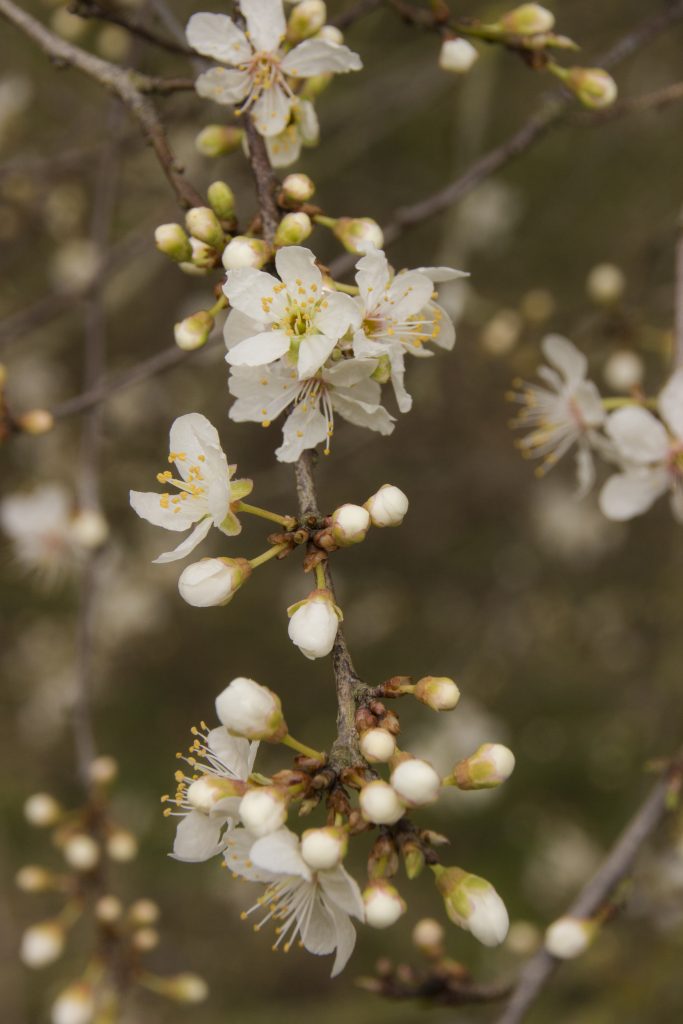Watching the changing seasons during country dog walks

Come rain or shine we walk our two Golden Retrievers twice daily, often with friends and their dogs, and we see how the seasons change in the countryside around us, both in nature and /. We hope that, whether or not you are able to get out and about in the countryside, you will enjoy seeing the changing seasons in the countryside and local farmland during our country walks.

18th July – Shades of brown
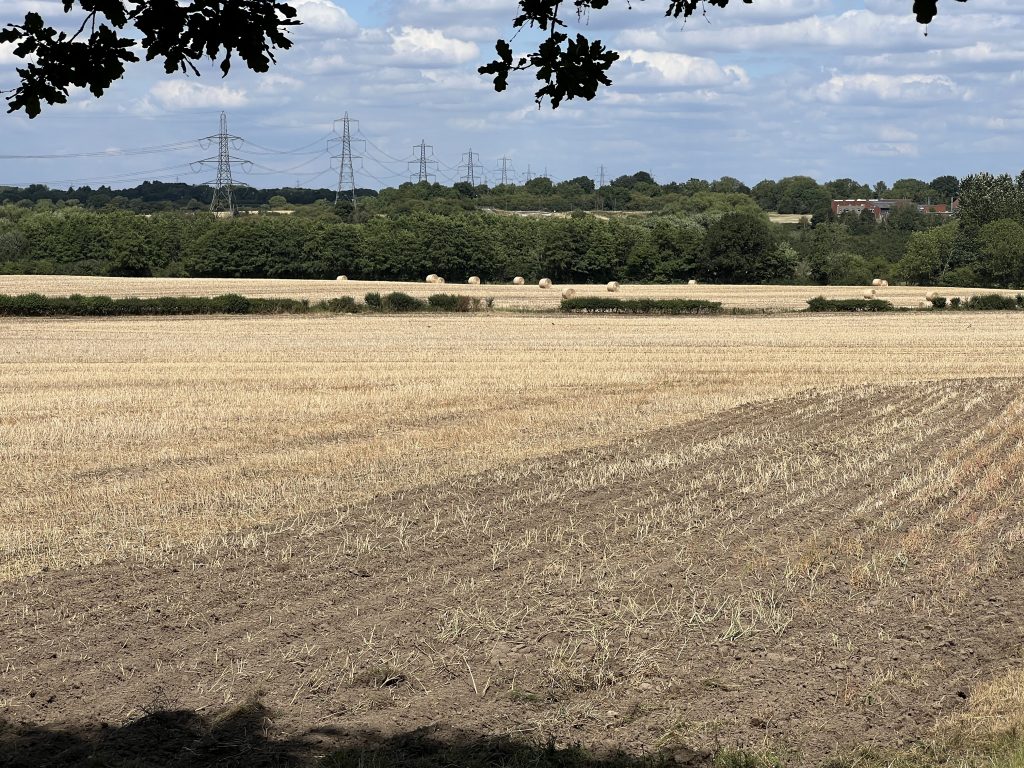
Other than a few round bales still to be collected, the fields behind our home have now been reduced to thick stems from the oil seed rape plants, harvested a week or so ago, and the soil has been disked, breaking up the soil surface that was compacted by the combine harvester, tractors and trailers during the harvest. The disked soil is most obvious along the field edges, but the disks penetrate the earth by only a few inches, leaving most of the rape stalks standing and hiding the turned soil further into the field.
The field track running alongside the field of rape stubble has been mown, an annual event usually welcomed by dog-walkers. In most years by mid-summer the grasses along the track have grown tall and lush, a hindrance to a country walk, especially if wet. Even when mown, the thick layer of cuttings hides the well-trodden route until it is squashed down by feet and weather. This dry year the grasses have been sparse and brown, the track easily traversed. Nevertheless, strolling along freshly mown track is pleasurably, with minimal “hay” laid down by the mowing. Behind our house the mower was reversed almost up to our fence, chopping down brambles and nettles that provided a deterrent to anyone wanting to climb over the fence. We are temporarily more vulnerable, but the thorny brambles will soon re-grow, maybe thicker and more impenetrable.
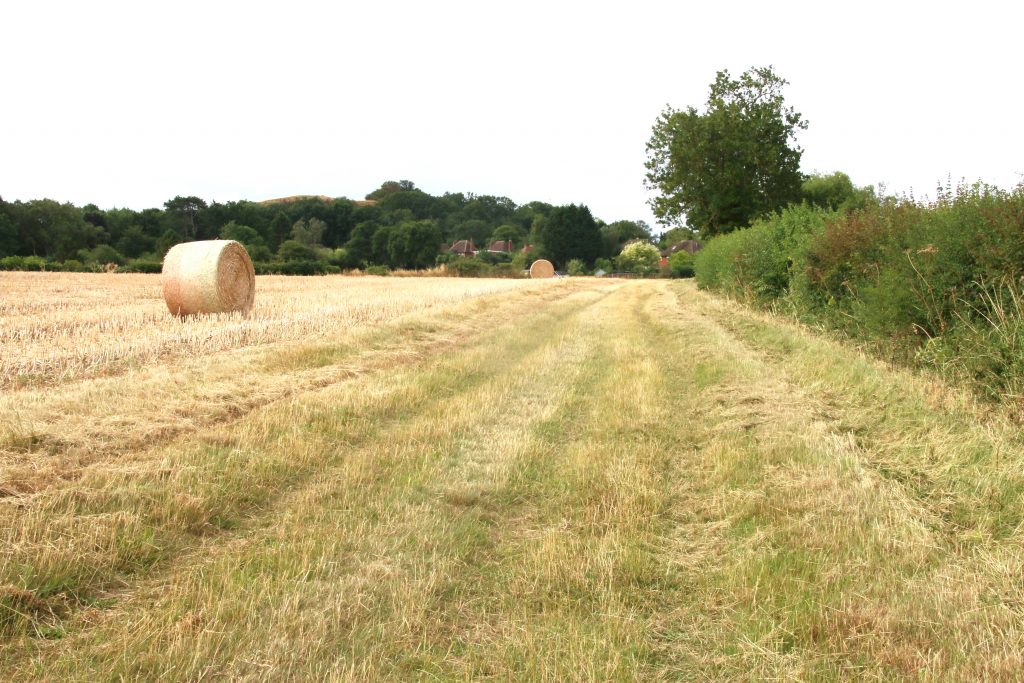
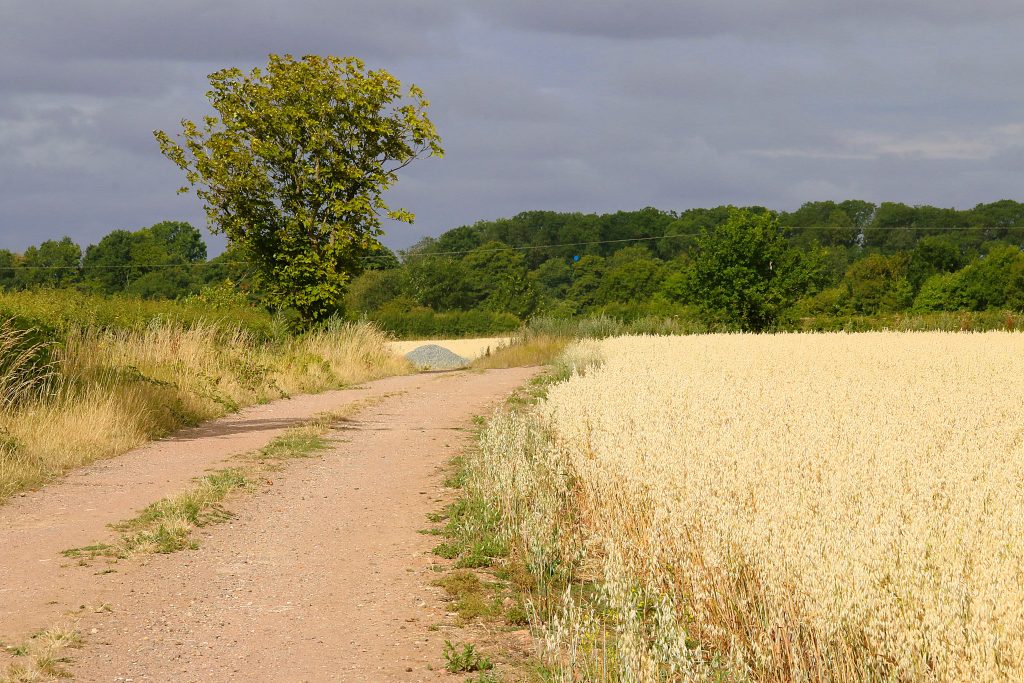
Cereal crops are still standing in fields – it is usually August when this is harvested, but there is talk that the hot dry weather has ripened the grain early, and the harvest may begin before the end of this month, with a consequently reduced yield. Beyond the Sheep Field oats are ripening, with wheat in the field beyond. Thundery rain is forecast, which hopefully will not flatten the crops that are still standing.
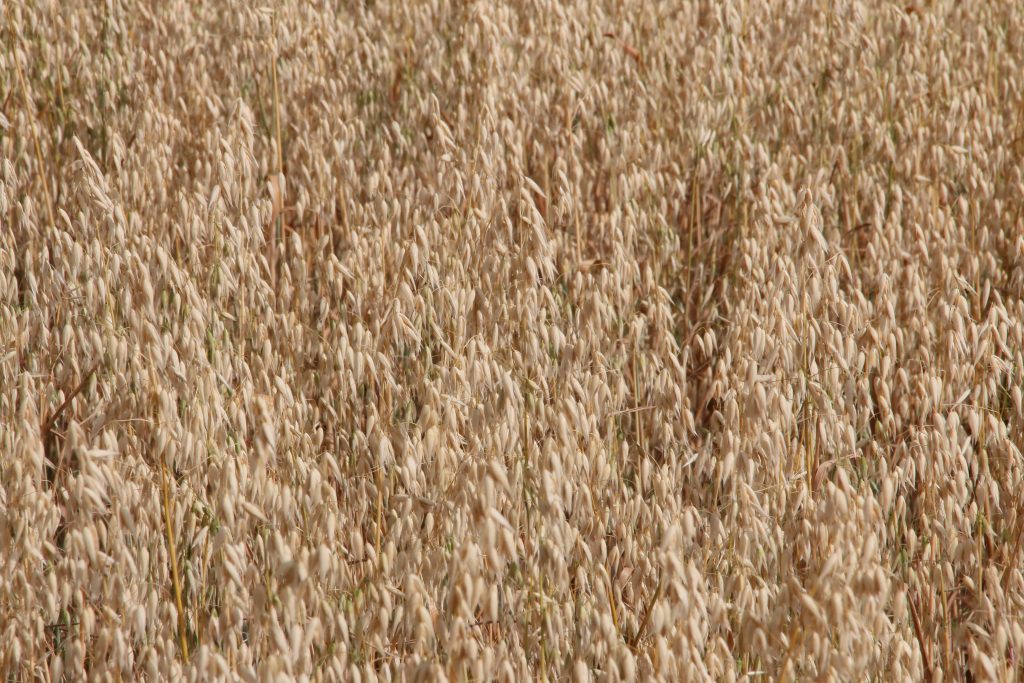
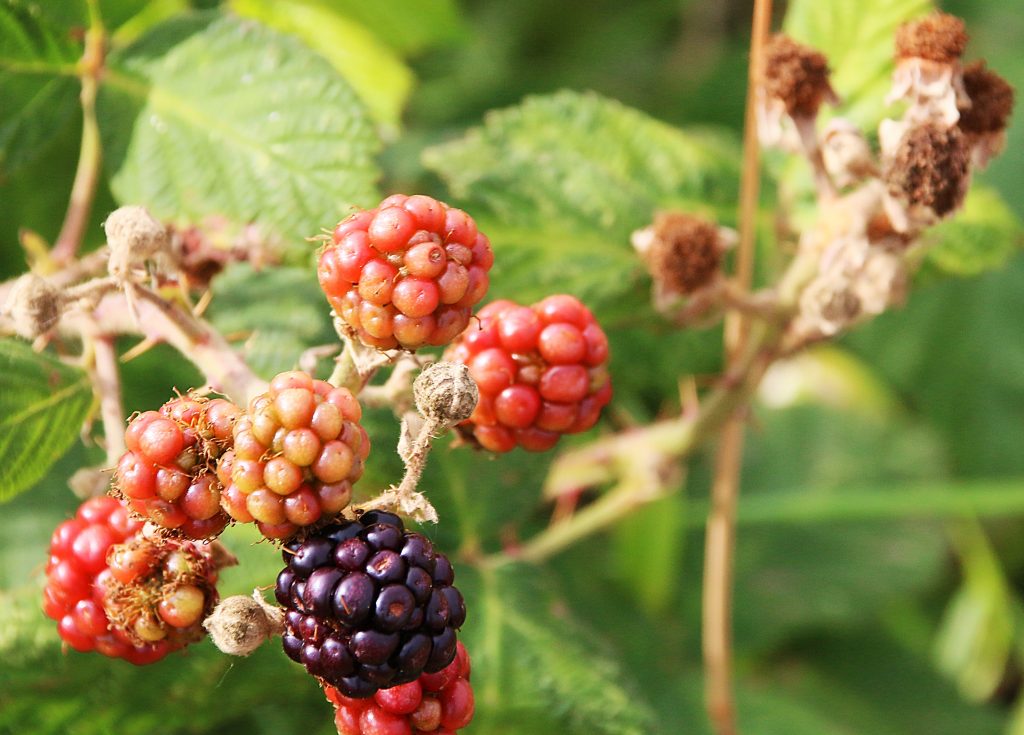
Blackberries continue to ripen on the brambles in the hedgerows. Like the cereal crops the fruit is ready for “harvest” by passing walkers earlier than usual. The fully ripe blackberries are sweet, but small, containing many small seeds that get stuck between the teeth. I spot a “Robins Pincushion” growing on a wild rose in the hedge alongside the field of oats. This is a “gall”, caused by the larvae of a tiny gall wasp that feeds on the gall, the tiny wasps emerging in Spring. The larvae do not damage the host wild rose, which will once again produce an abundance of dog-roses next Summer.
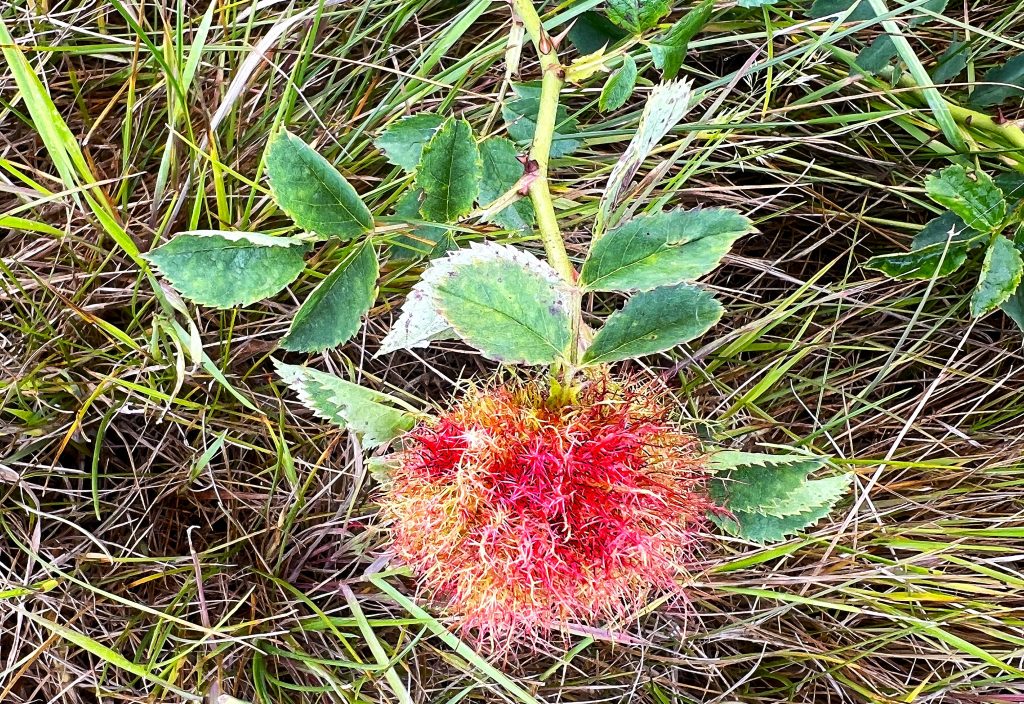
The view across the South Leicestershire countryside from the “New Hill” is predominantly brown, brown crops, brown pasture, even brown leaves on trees. More late August than mid-July.
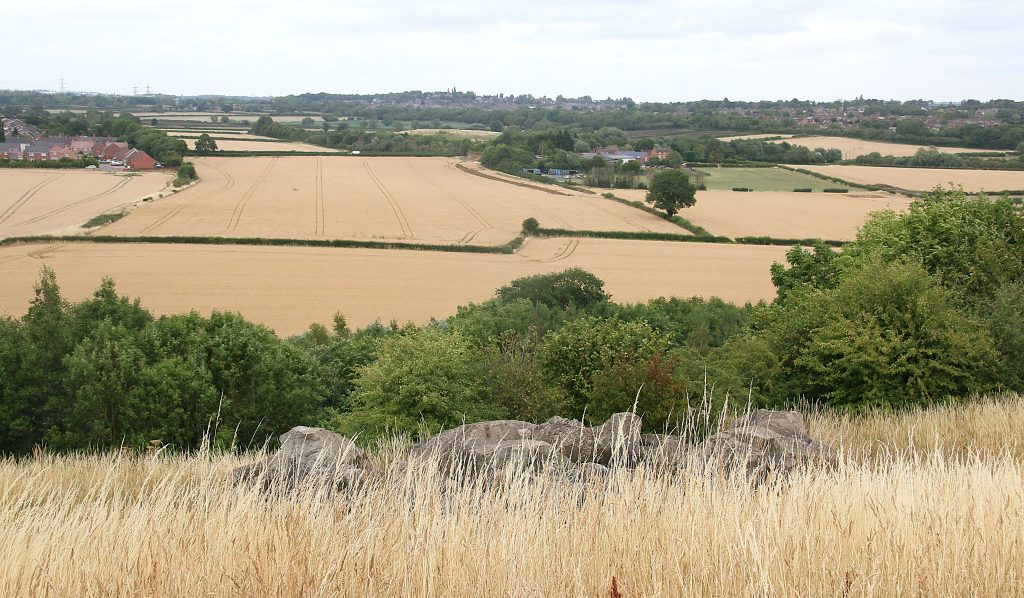
10th July – Fire and fruitfulness
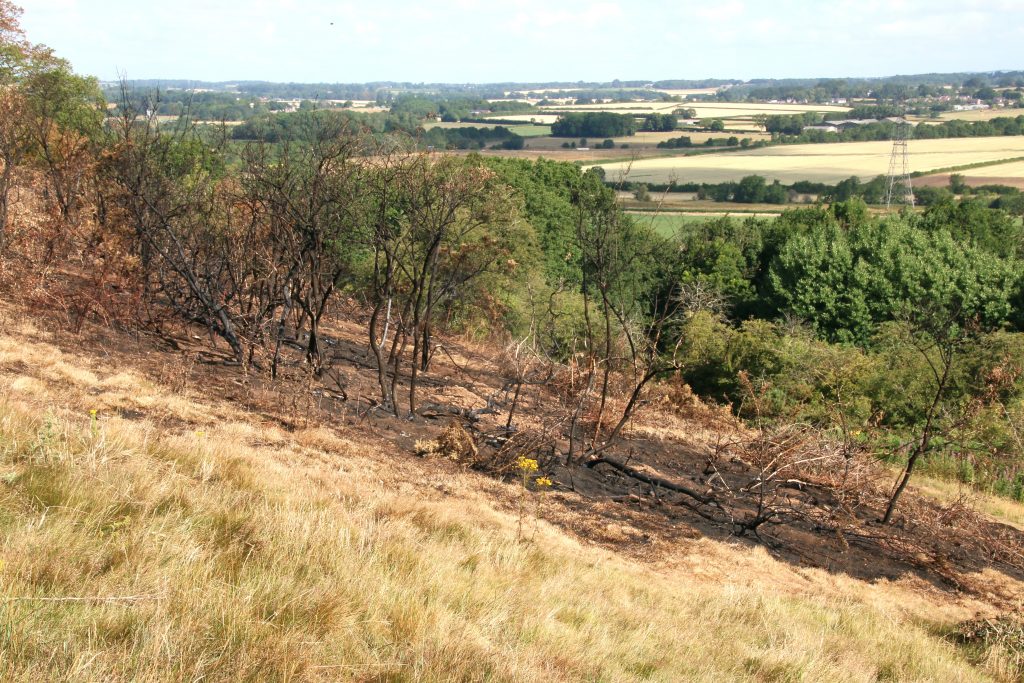
Thanks to the prolonged dry spell grasses on the Hill have been tinder dry. The Hill, with its views across the countryside is popular with young people and families, who often picnic on the slope. A few days ago the inevitable happened, and there was a grass fire, which the Fire Service blamed on a portable barbeque. The fire service were on site for 24 hours, damping down the charred gorse bushes and small trees, leaving a black scar on the Hill. A few hours of heavy rain a day or so later should help with nature’s re-greening of the area. In the meantime, I keep the dogs away – black ash and a white retriever are not a good combination.
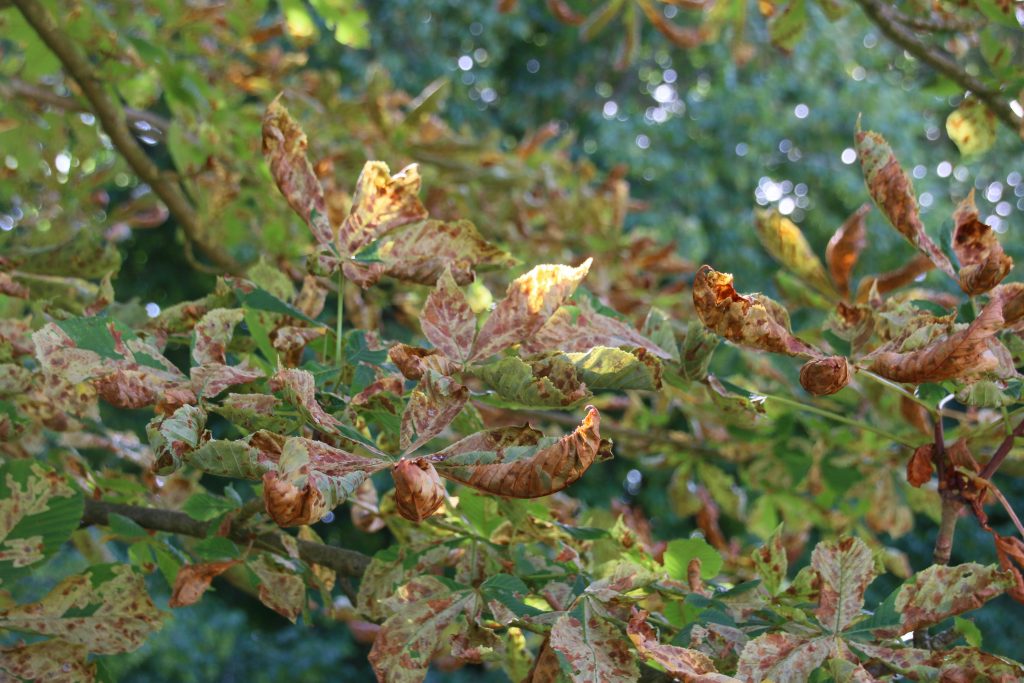
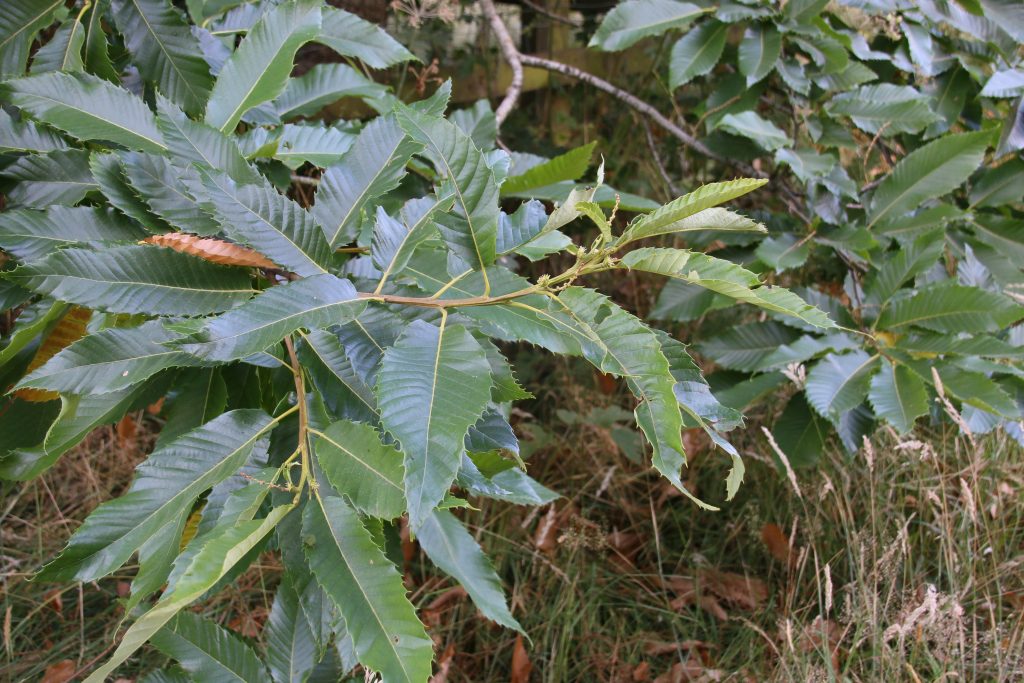
Mature trees have suffered in the drought. Trees on our lane have had an early leaf drop, and I have had to clear the drive of drifts of brown foliage, a task not usually needed until October or later. On Croft Glebe 20m high Horse Chestnut trees appear to by dying, with dry brown leaves, although the trees will recover next season. In contrast Sweet Chestnut and Walnut trees are thriving, only a short distance from the dying Conker trees. Lime Trees are also healthy on the Glebe, surprising since the seeds of lime trees on our Lane, a mile away and only a bit higher up, are dropping early in great quantity, contributing to the piles of leaves on the verges from other trees.
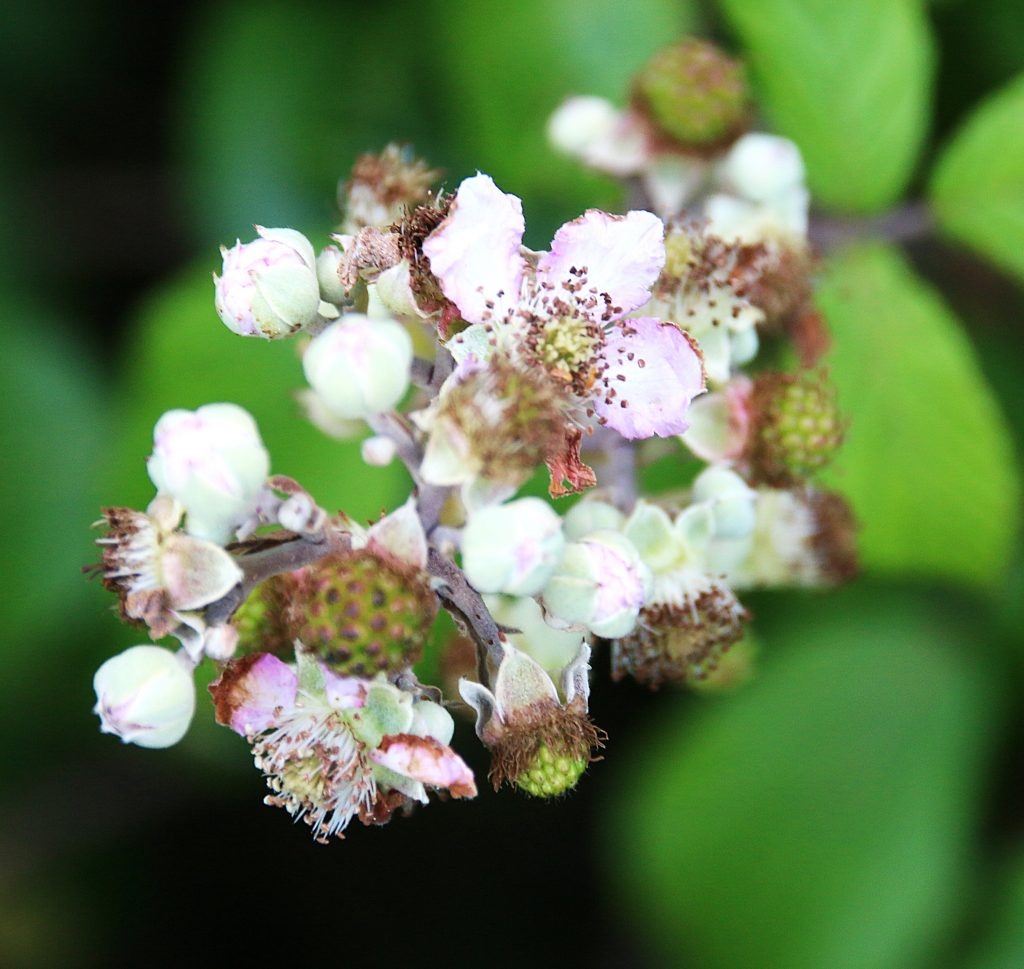
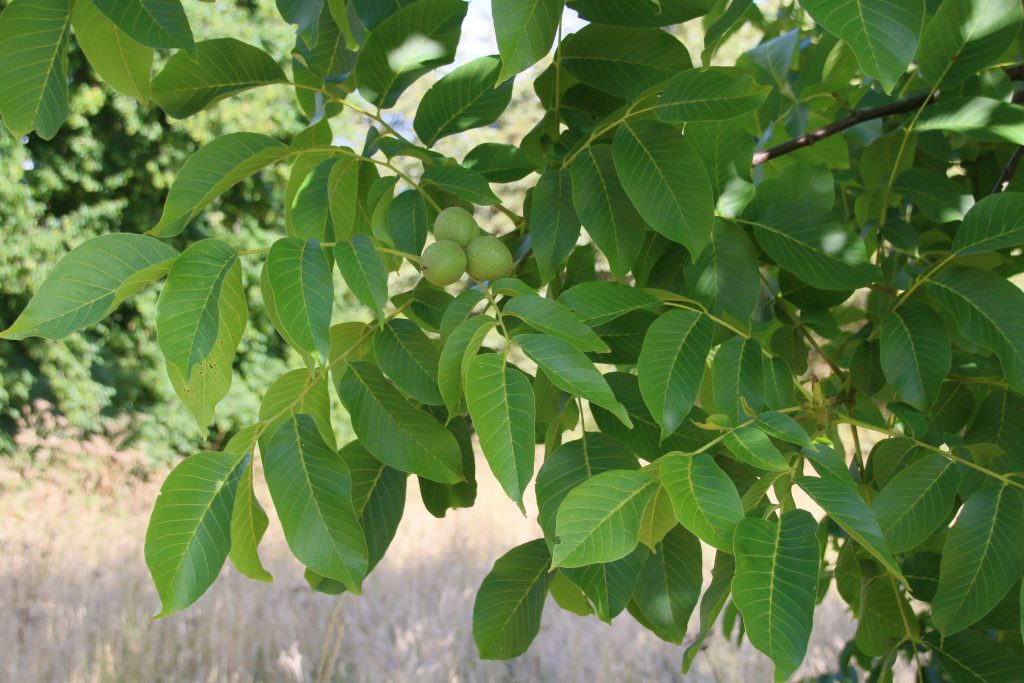
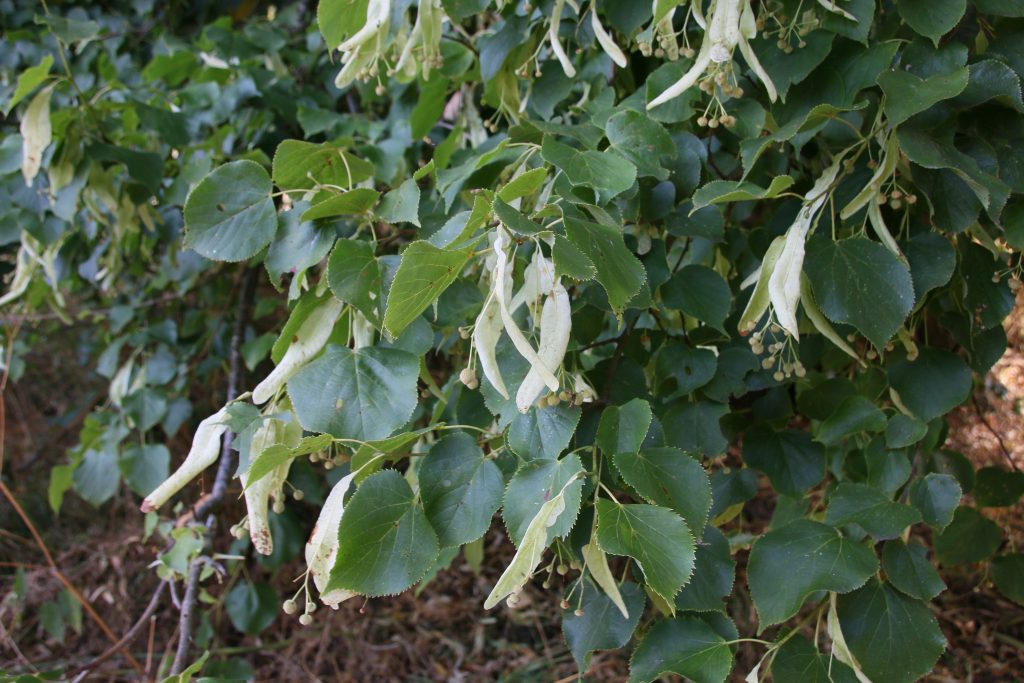
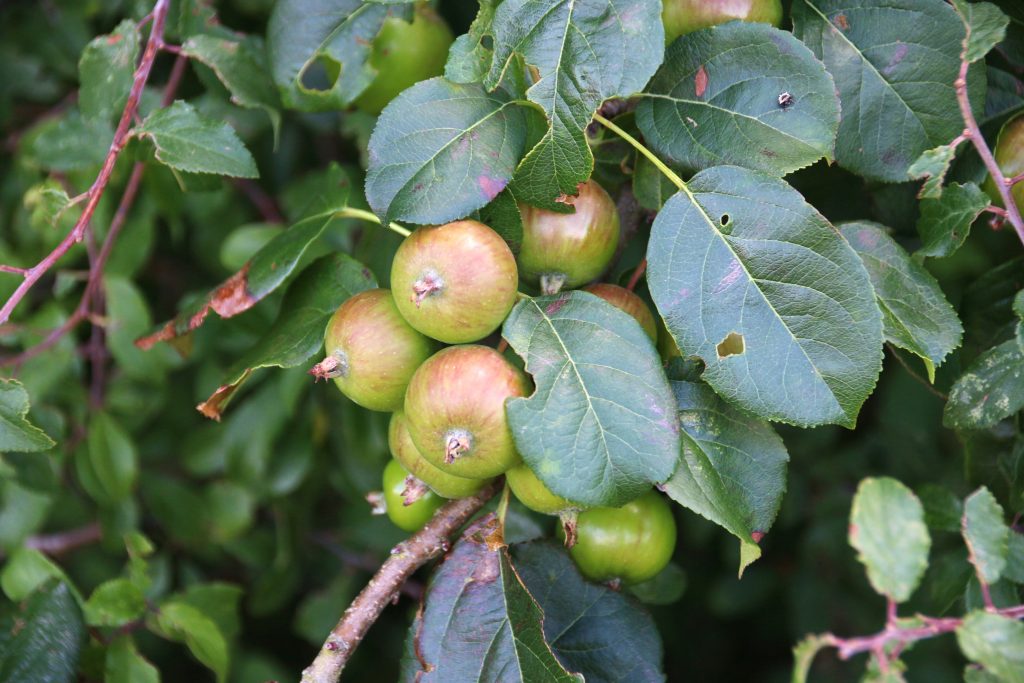
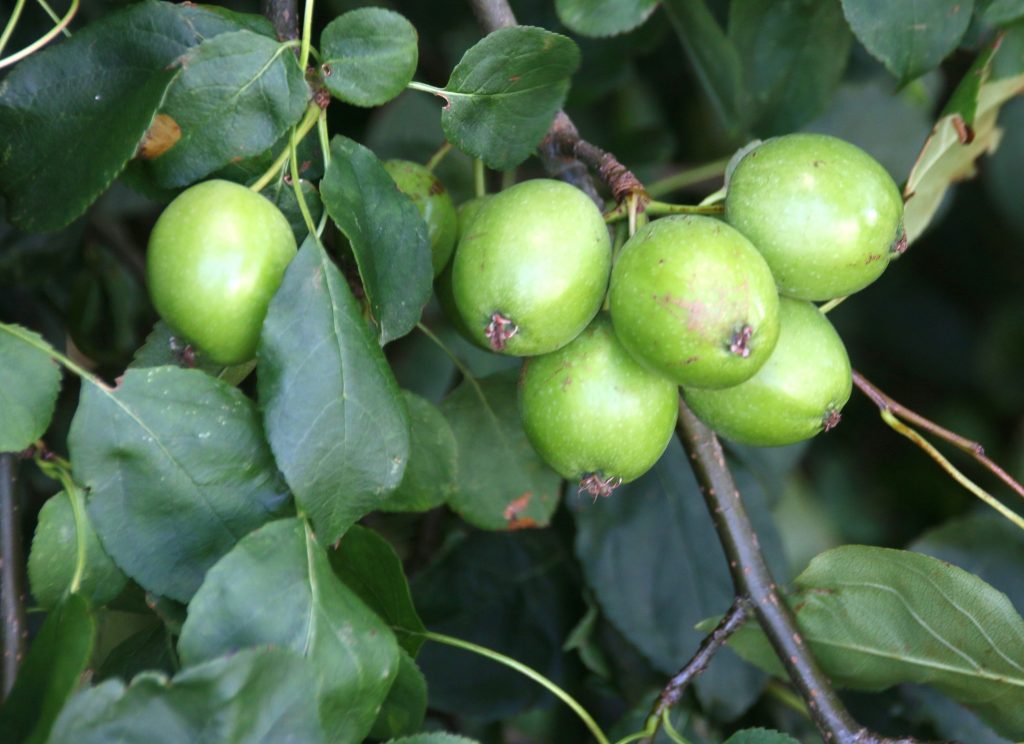
Hedgerows are beginning to fruit, with shrubs bearing crab apples and wild pears. Sloes are already turning purple, although, like the apples and pears, will not be ripe for weeks, at least in a normal year. It doesn’t seem long since Hawthorn was flowering, but the blossoms have already produced berries, although again it will be a while before these green “haws” turn red. Around the Glebe blackberries are already visible on brambles, but no ripe berries yet. On the higher New Hill, around the quarry, with more exposure to sunlight, brambles are already producing ripe blackberries, sweet, but very small.
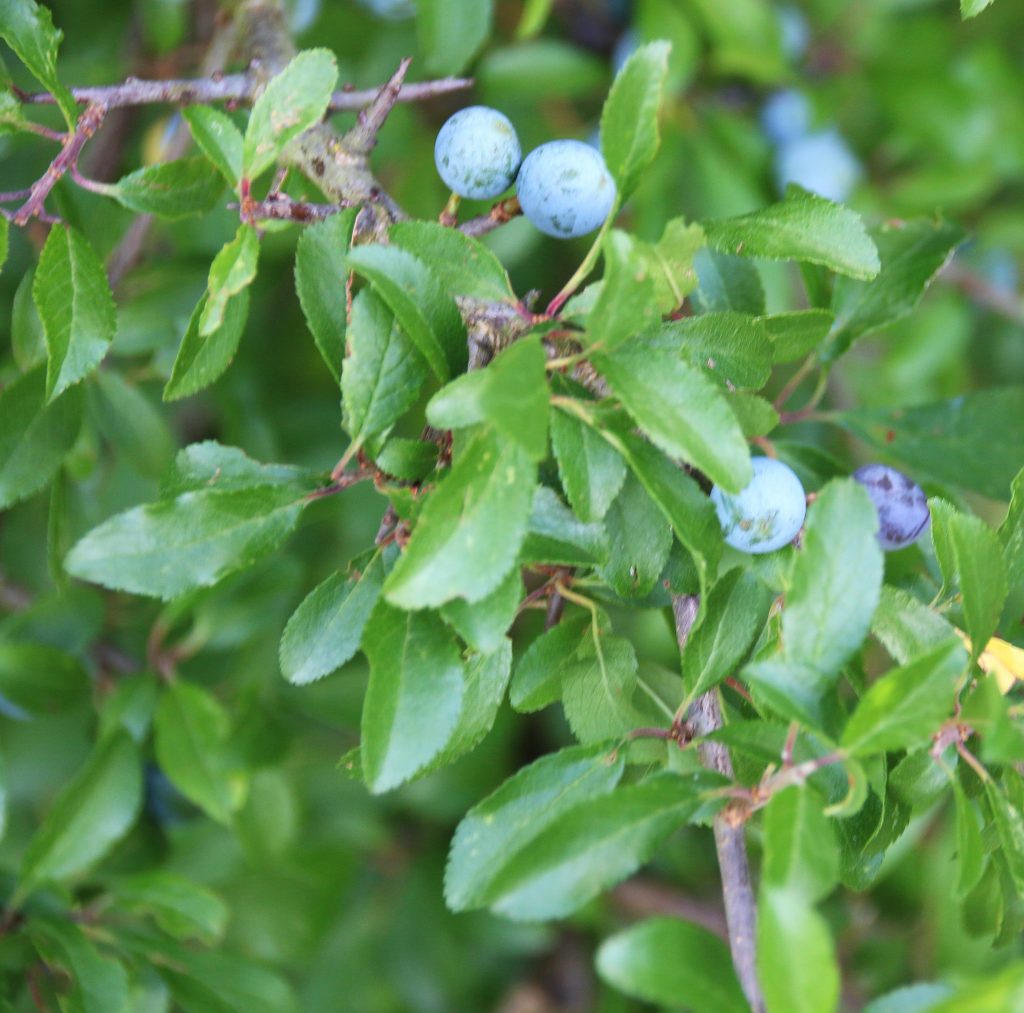
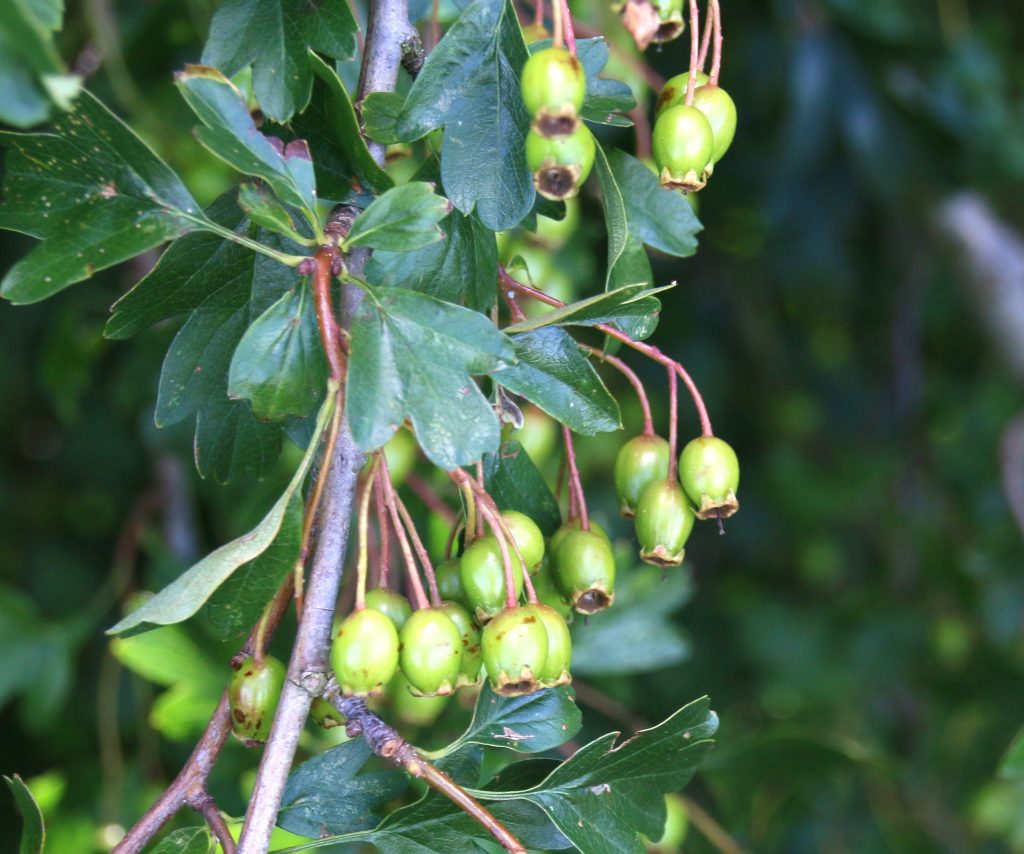
The harvest has started, although just the rapeseed, the first crop to be combined. Today the fields of rape behind our home were combined, a much less frantic affair than a cereal harvest. The less bulky, but much heavier, small black rape seeds need fewer trailers to remove it from the field, and there is no straw to bale, stack and remove. Consequently, instead of the combine being served by a constant stream of tractors and trailers, just a couple of trailers left in the field for the combine to empty it’s load. The rough stalks were baled into round bales at the end of the day.
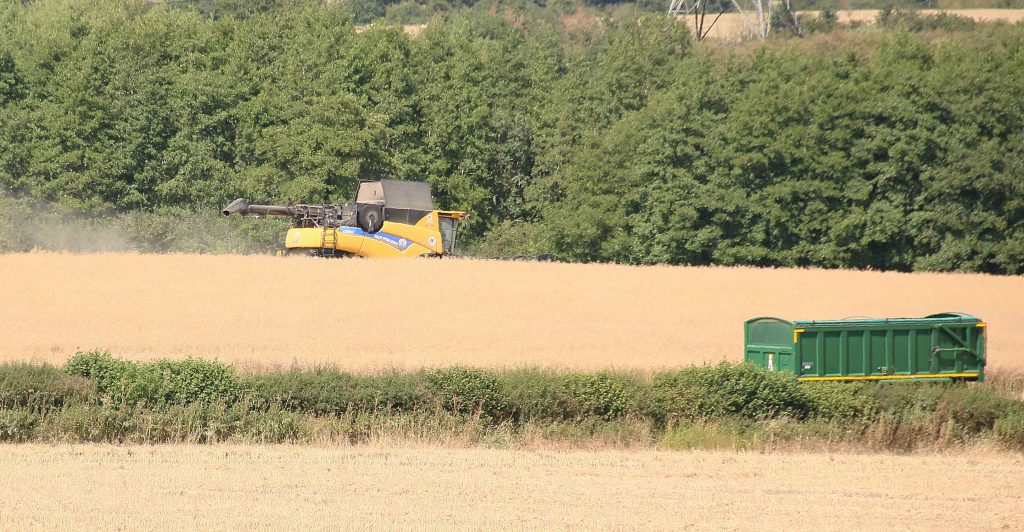
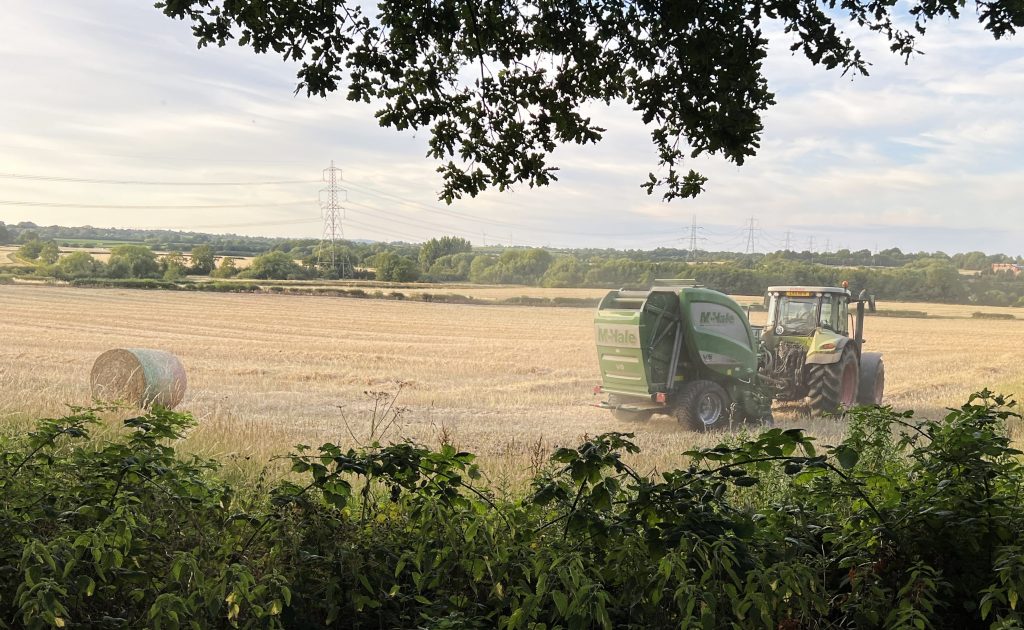
26th June – Baled
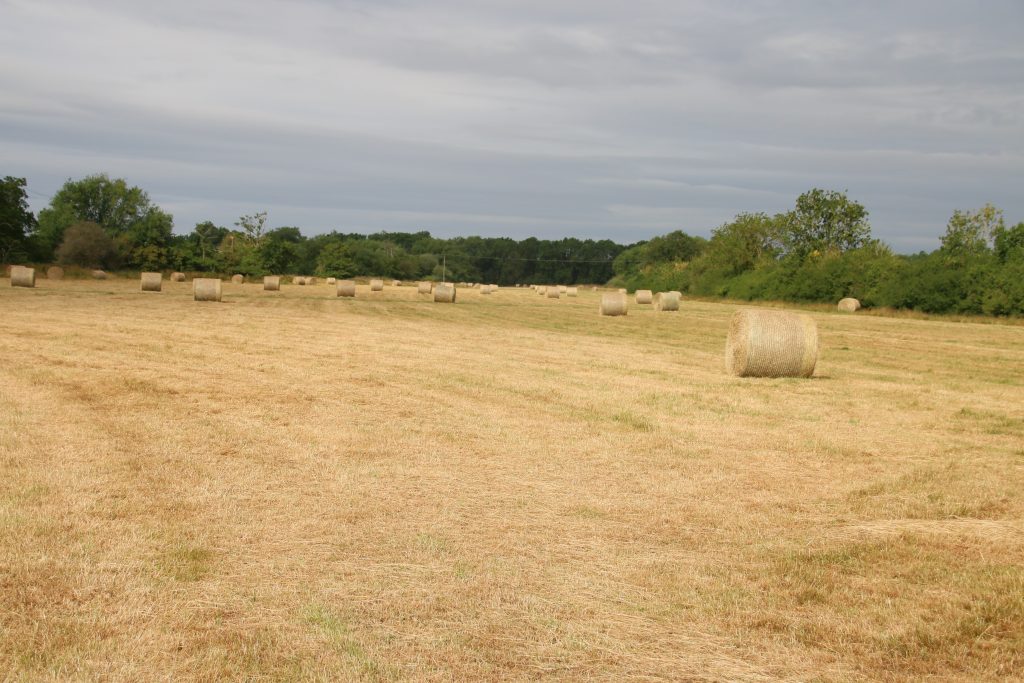
A fresh morning with a cool breeze after a short-lived heatwave – more hot weather forecast over the next few days. Last night a friend joined us for a walk with her spaniels, and we decided to walk around the recently mown sheep field. The strong breeze had blown the neat lines of hay into each other, and we were forced to wade through ankle deep drying grass. This didn’t bother the dogs, who leapt and ran through the hay. As we left the field a tractor and baler appeared, and this morning the hay had been gathered into large round bales, with acres of short mown grass in between. I decided to walk around the field again, to the delight of the dogs, who ran in circles chasing each other before following the scents of wildlife that had been in the field last night.
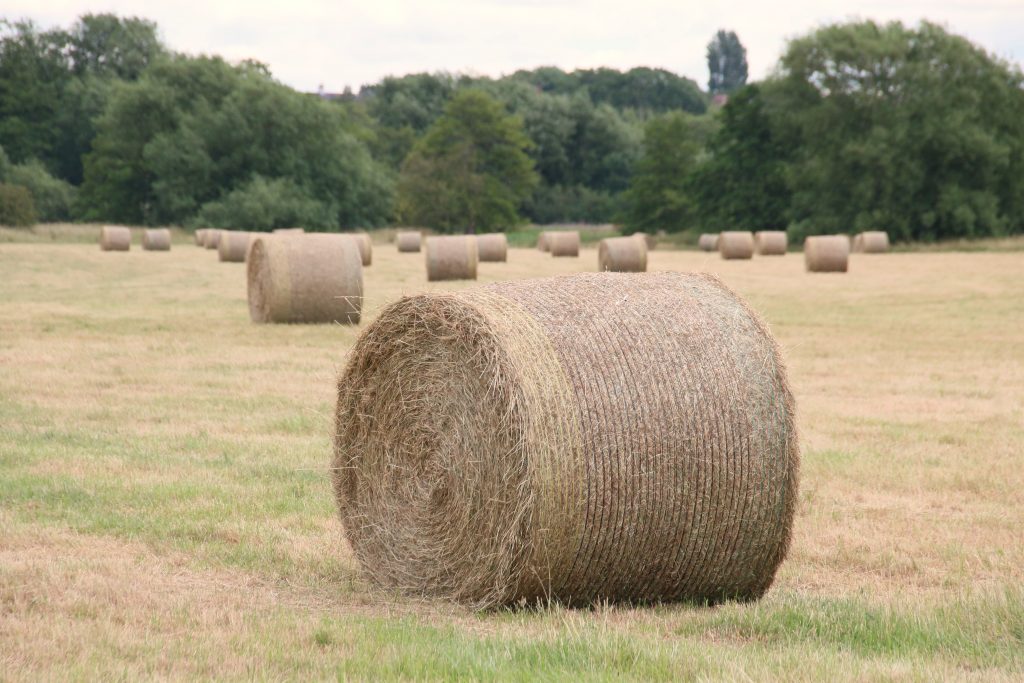
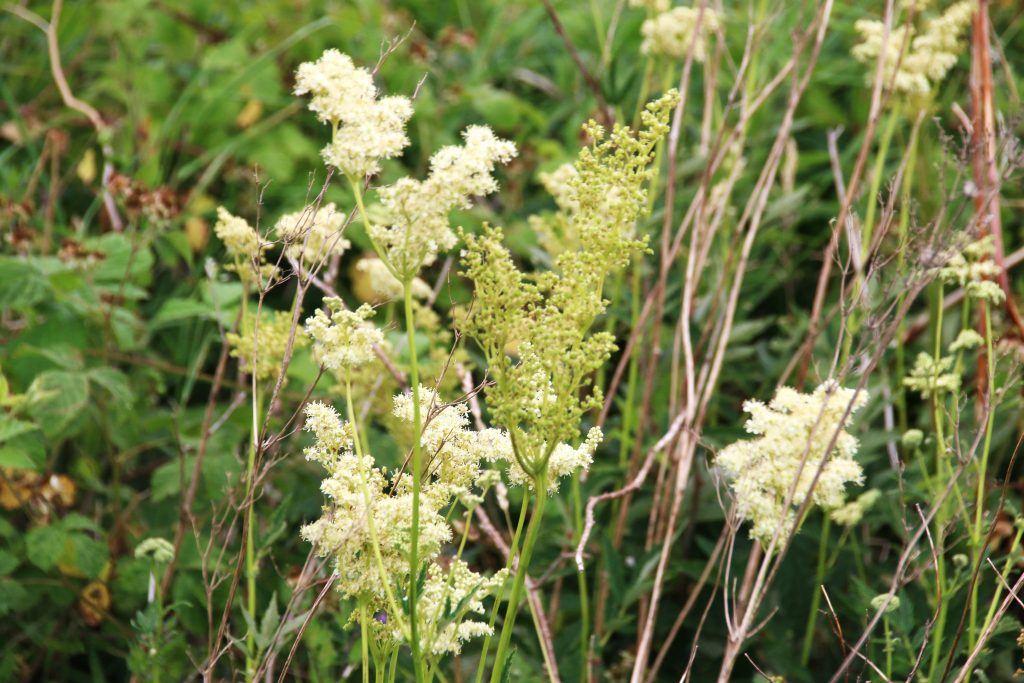
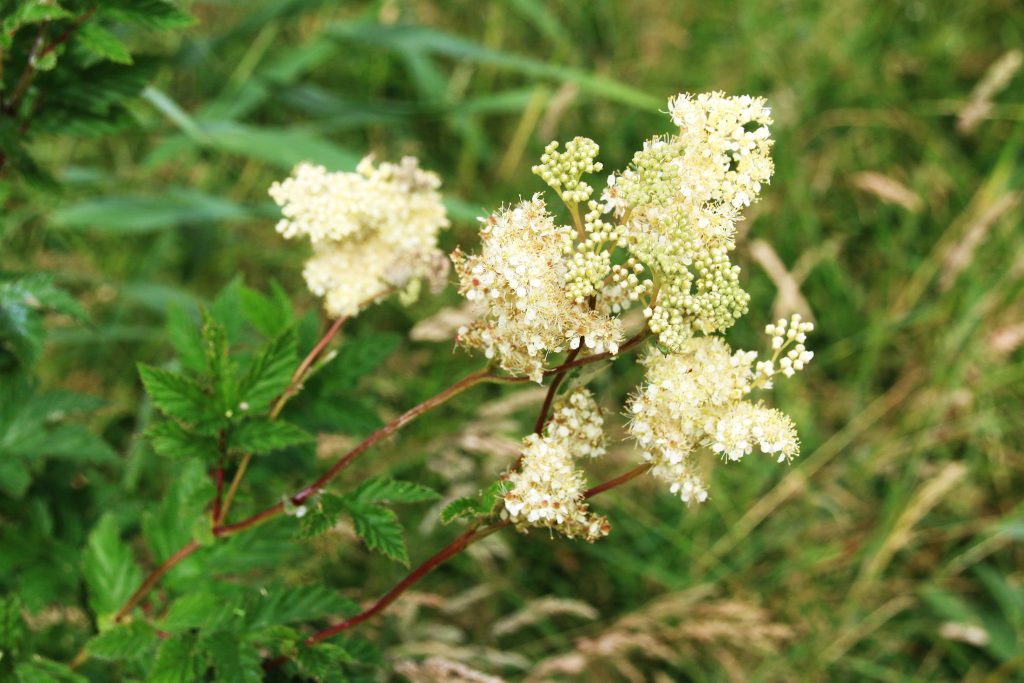
The farmer does not mow to the field edges, leaving large areas of wild grasses, with a few wildflowers. Tall Meadowsweet huddles at the very edges of the field, preferring the less dry conditions at the bottom of the hedge at the side of the field that borders the river. In contrast Common Chicory prefers the open grassland. Some will have been mown and baled with the hay, but blue Chicory flowers have been left among the unmown areas. Walking back up the field track to our Lane I notice that Chicory is also growing at the edge of the brown rape crop, taller specimens than in the sheep field.
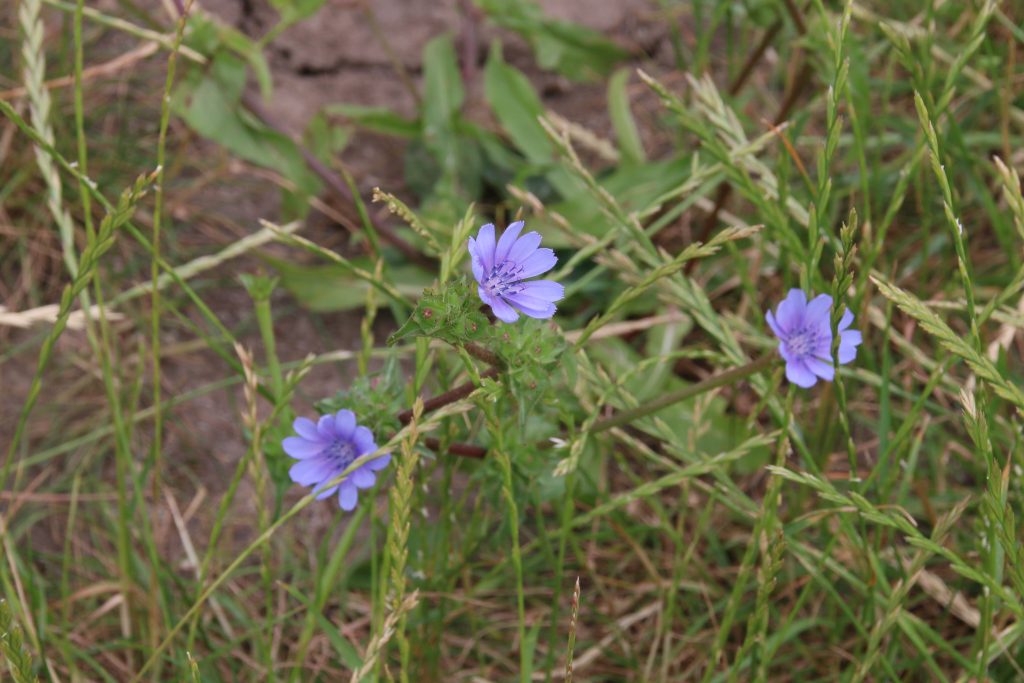
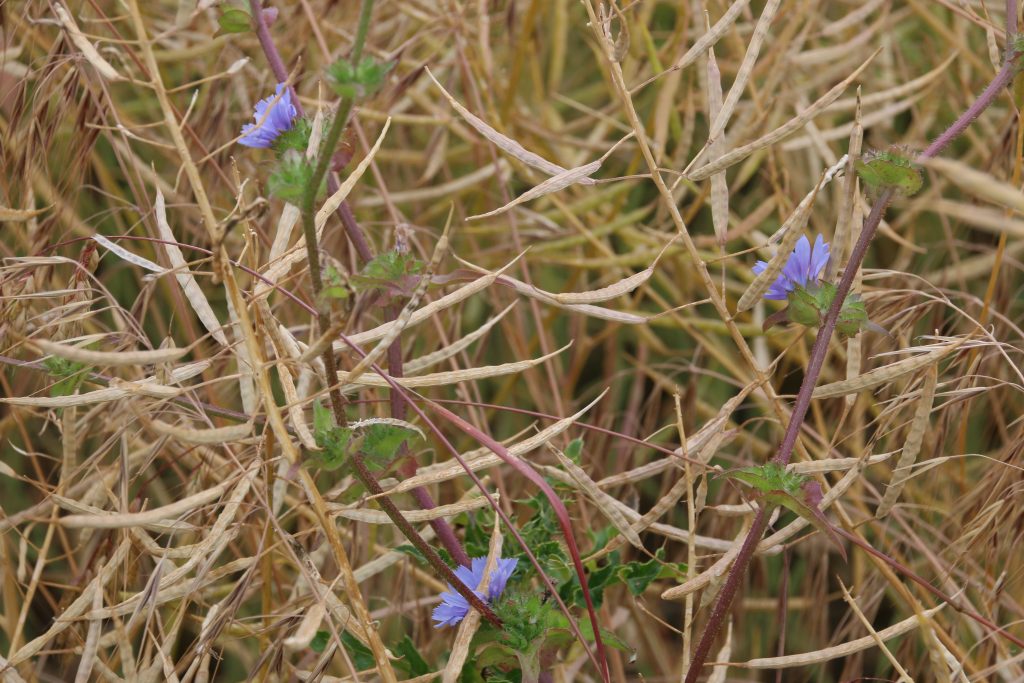
In the garden flowering plants are carefully managed to have blooms around from Spring until Autumn, to the advantage of many insects. Bees prefer pink and purple blooms, and a buff tailed bumblebee takes advantage of the petunias on our patio, moving from flower to flower, burrowing deep into each bloom to collect nectar.
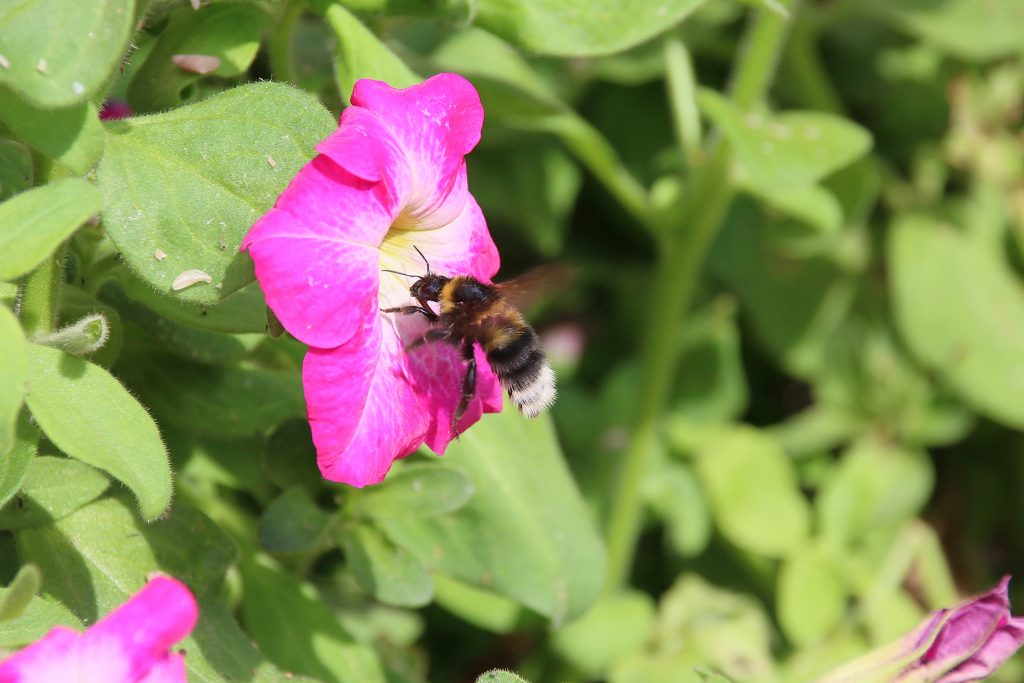
21st June – Glad to be out and about
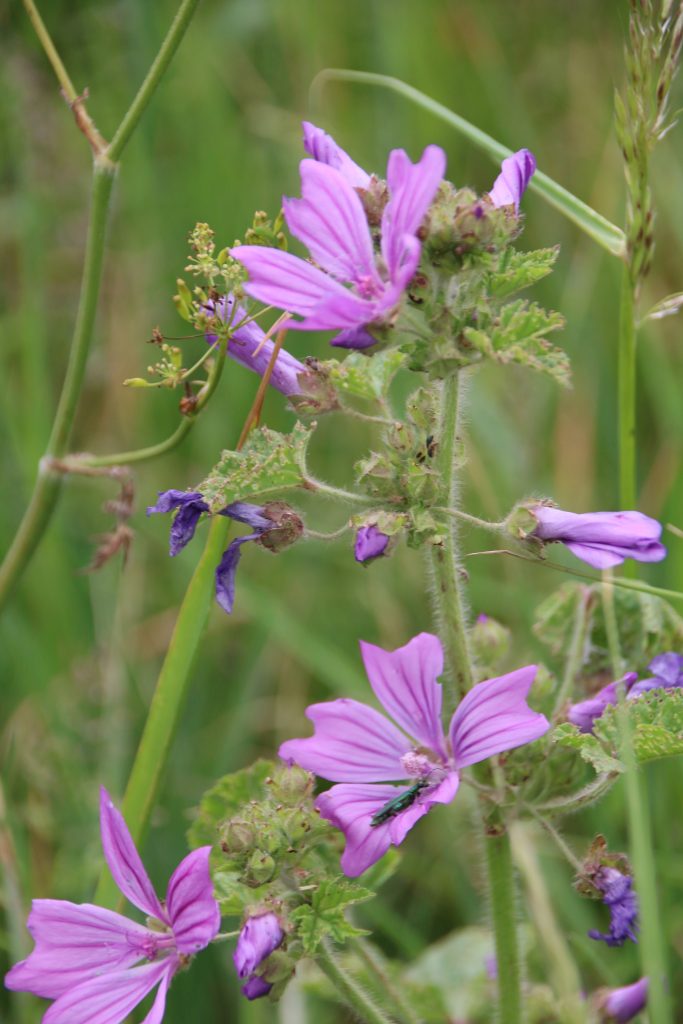
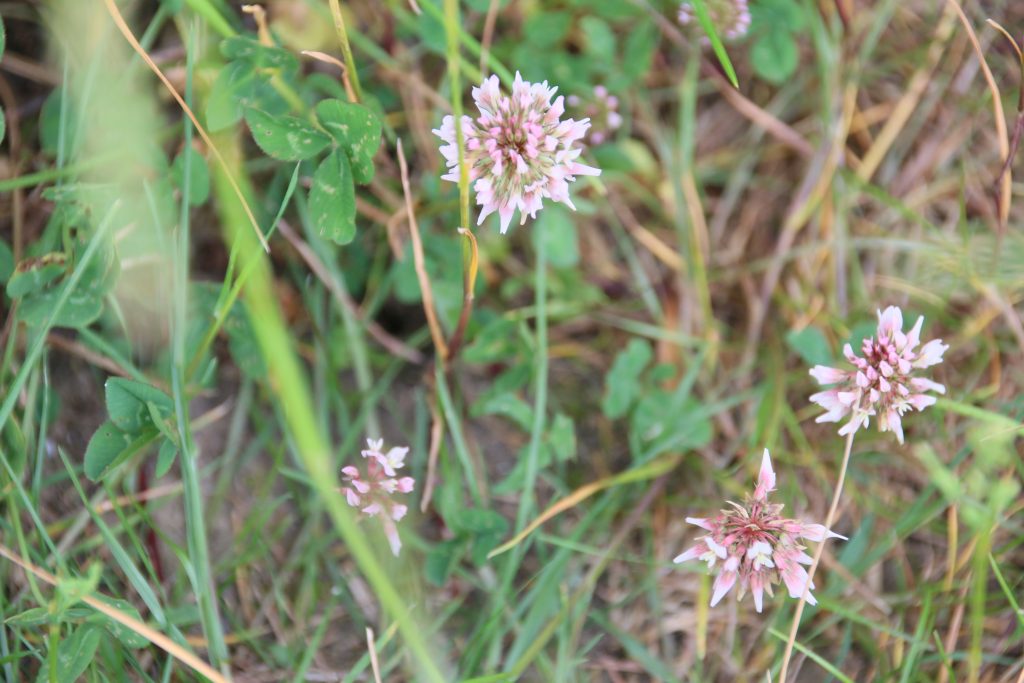
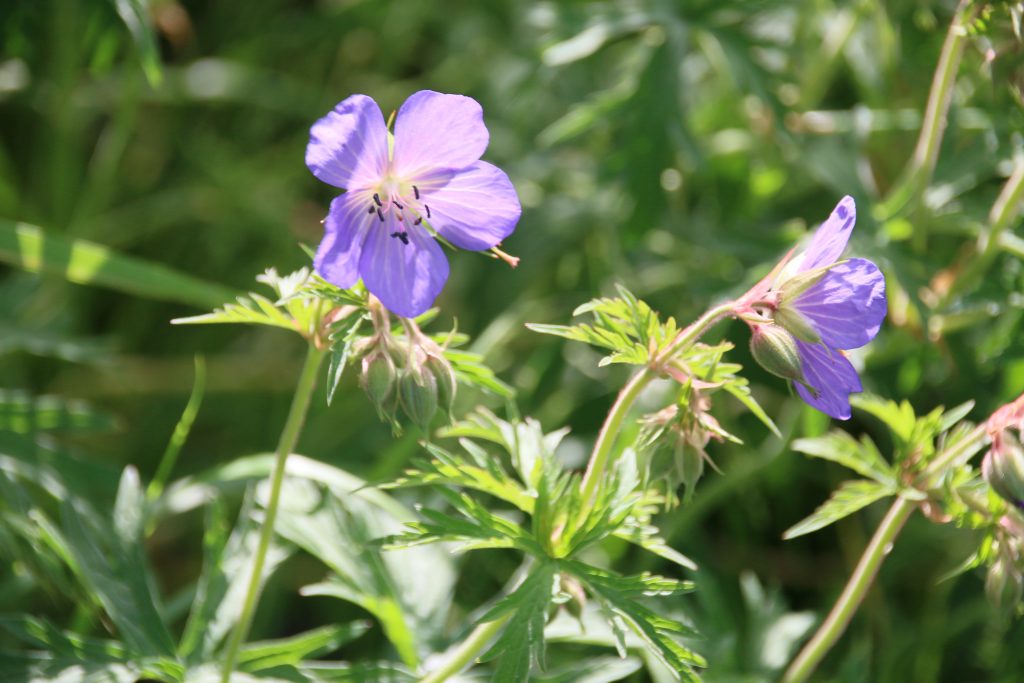
An unexpected break in dog walks thanks to an ophthalmologist detecting a detached retina during a routine eye test, resulting in a prompt eye operation and two weeks of being housebound during recovery.
I was certainly glad to be out and about again once the consultant had given his approval. While I was transitioning from late spring into early summer and beginning to show the symptoms of weeks of dry weather. The dry spell has continued, but although they may not be lush and verdant, or as abundant as those that flower in spring, but summer flowering wild flowers continue to bloom. They cannot afford to miss valuable seed production and need to be flowering when insects are around for pollination. Meadows Cranesbill and Common Mallow flower beneath hedges, and clover decorates the grassed around the field edge.
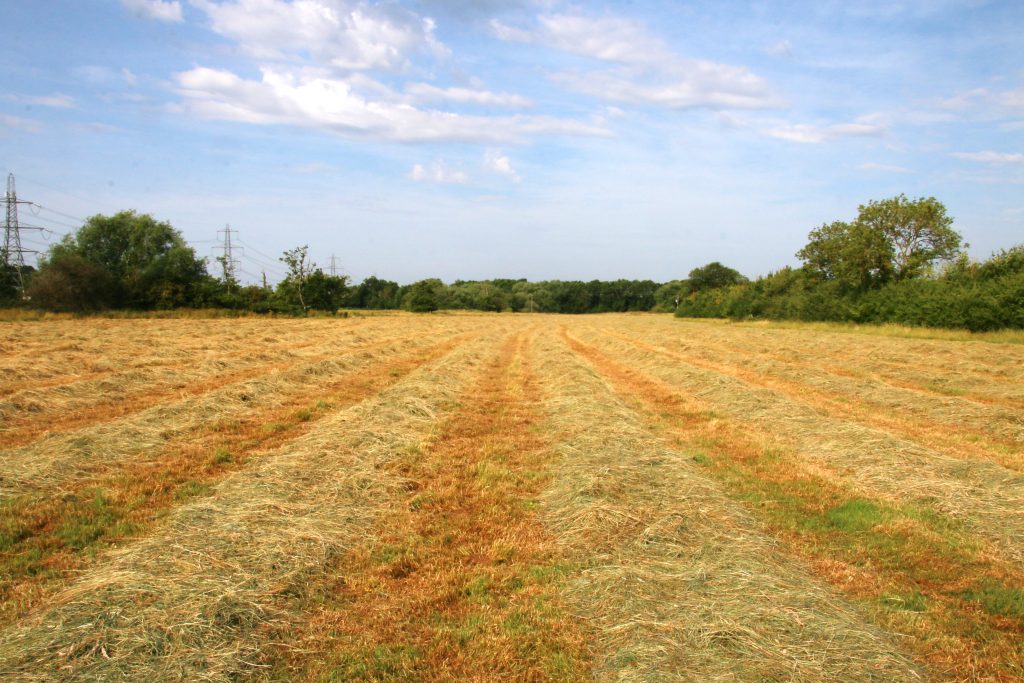
Behind our home, the rape is still dying back. It will need to be dry before harvested during the next few weeks, either by spraying to kill the crop or cutting it and leaving in swathes on the ground to dry. Beyond the rape fields, over the river footbridge, is the sheep field, which has been left with tall grasses to be mown for hay or sileage. Yesterday I noticed a field on the other side of our Lane had been mown and the grass wrapped in black polythene for sileage, and sure enough we found the sheep field mown, an event that local dog walkers have been waiting for. Two footpaths pass through the field, and the grass has been too long for even big dogs to run around, which in any case would flatten the crop. Yesterday the grass was lying in curving swathes to dry, with short grass between, and the dogs made the most of the open space to run around and play.
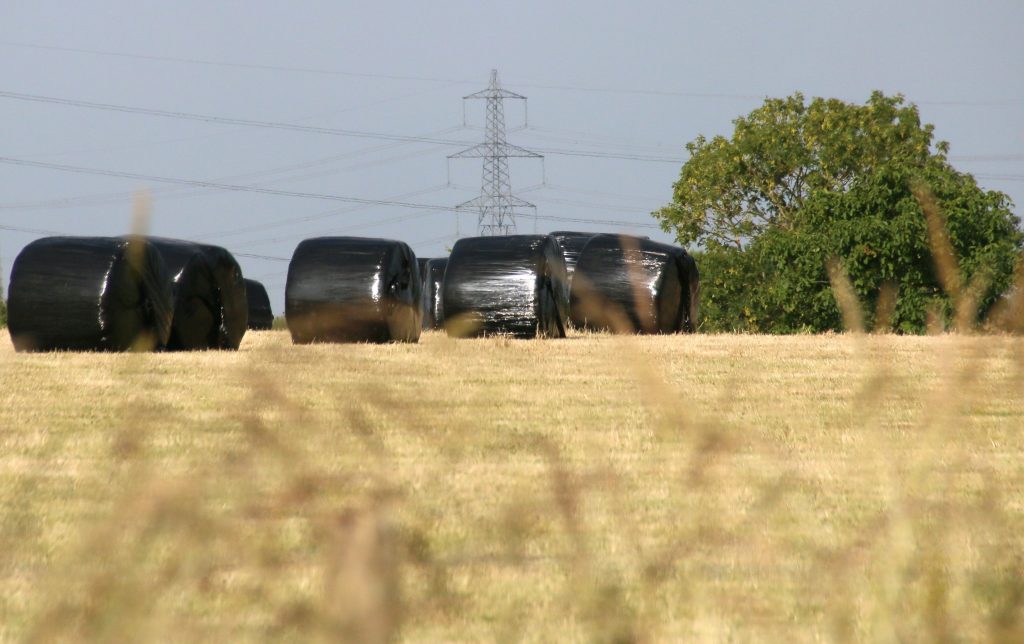
Beyond the sheep field the crop is ripening – oats, for some reason not as common and wheat or rape around here. At least a month before this is harvested.
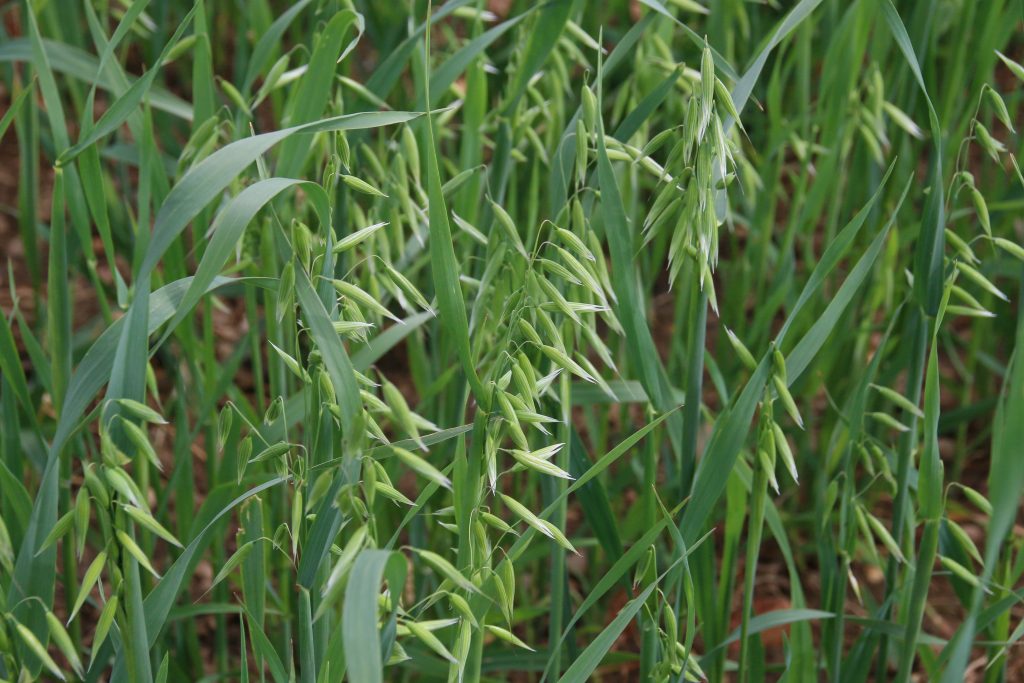
26th May – Blooming and fading
The cast of the countryside springtime performance continues to change. The bean plants in the field behind the old barn, sown earlier this spring, is now flowering. In contrast the flowers of the rape crop on the other side of the barn have shed their petals, and young pods, that will eventually produce the small black rape seeds, are born on each step. The rape leaves have also withered across most of the field, to our relief. The young rape leaves were popular with most local dogs, who liked to graze them. Most owners tried to prevent this – the field has been periodically sprayed with agrochemicals.
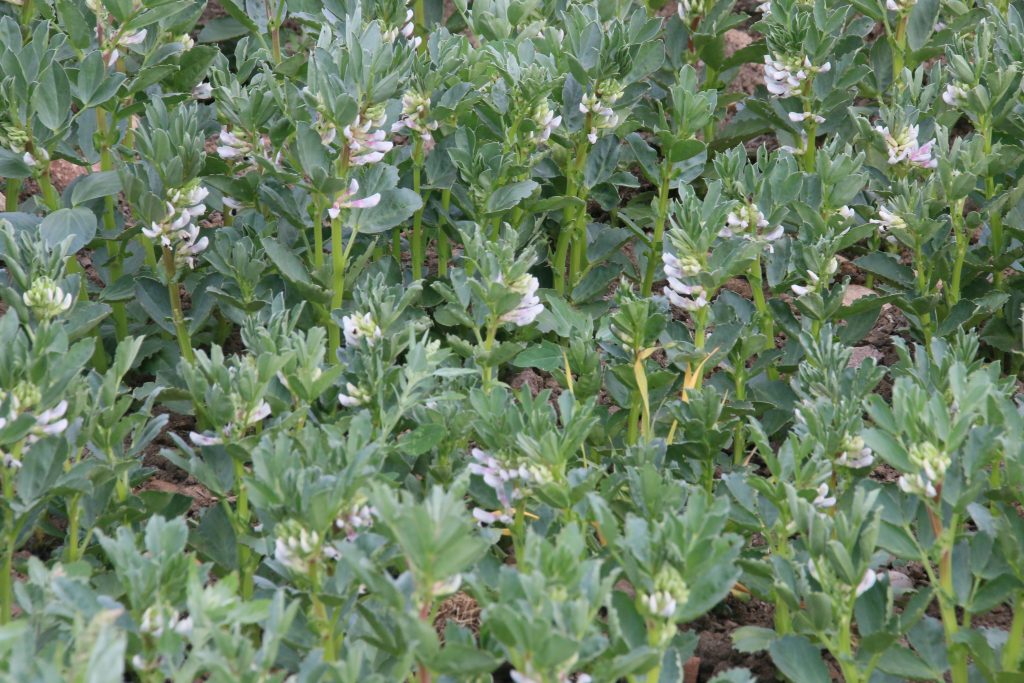
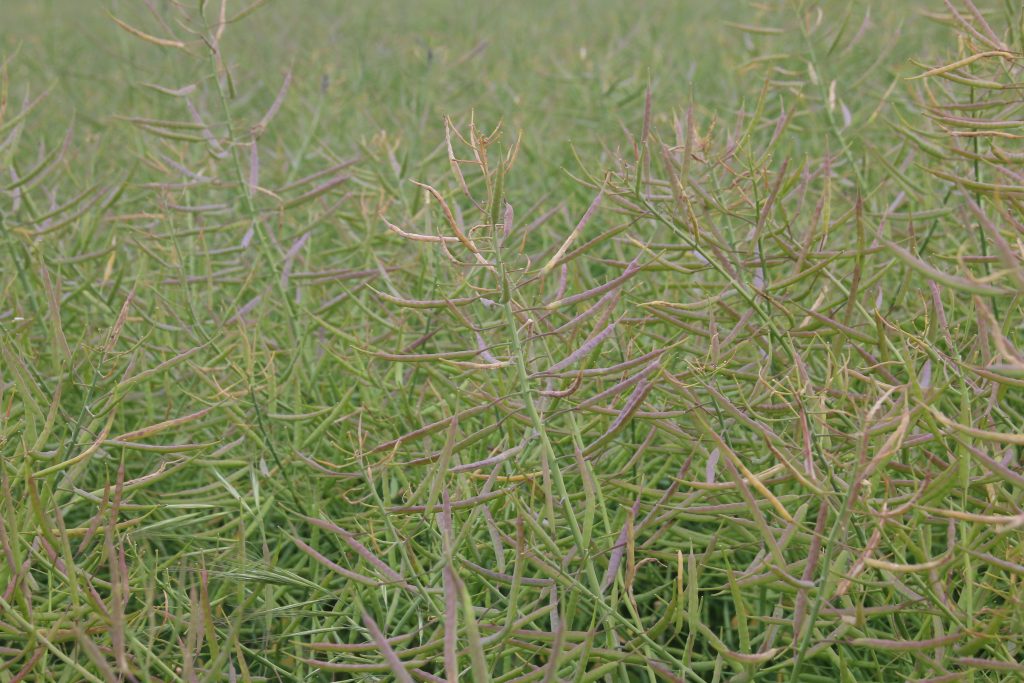
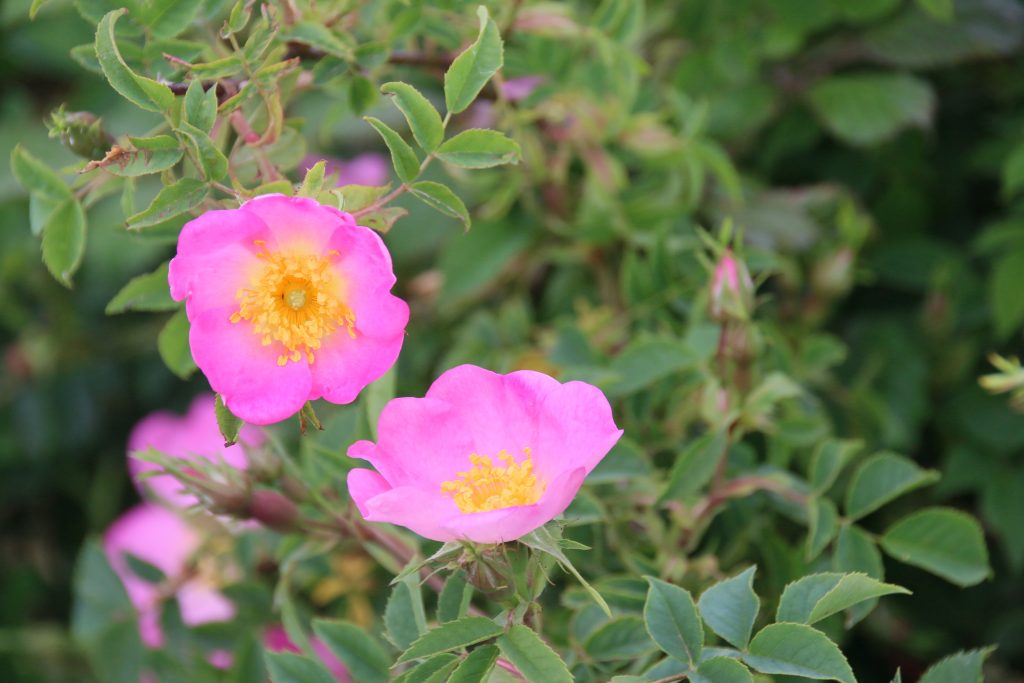
In sunny hedgerows dog roses have appeared, both in bud and full flower. These are a welcome harbinger of summer. Elder is flowering in more shady spots, the white umbelliferous flowers contrasting against the dark green foliage. The flowers are sometimes collected to make elderflower cordial (https://www.bbc.co.uk/food/recipes/elderflower_cordial_21346), bottled and mixed with sparkling water for a refreshing drink on a warm summer’s day.
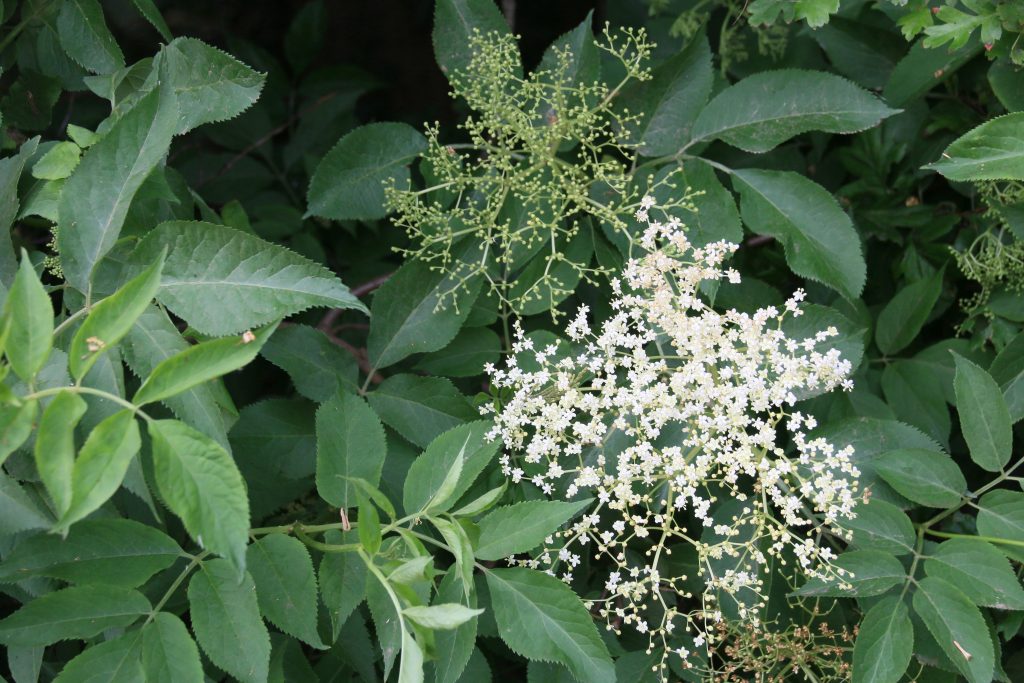
14th May – First Summer flowers
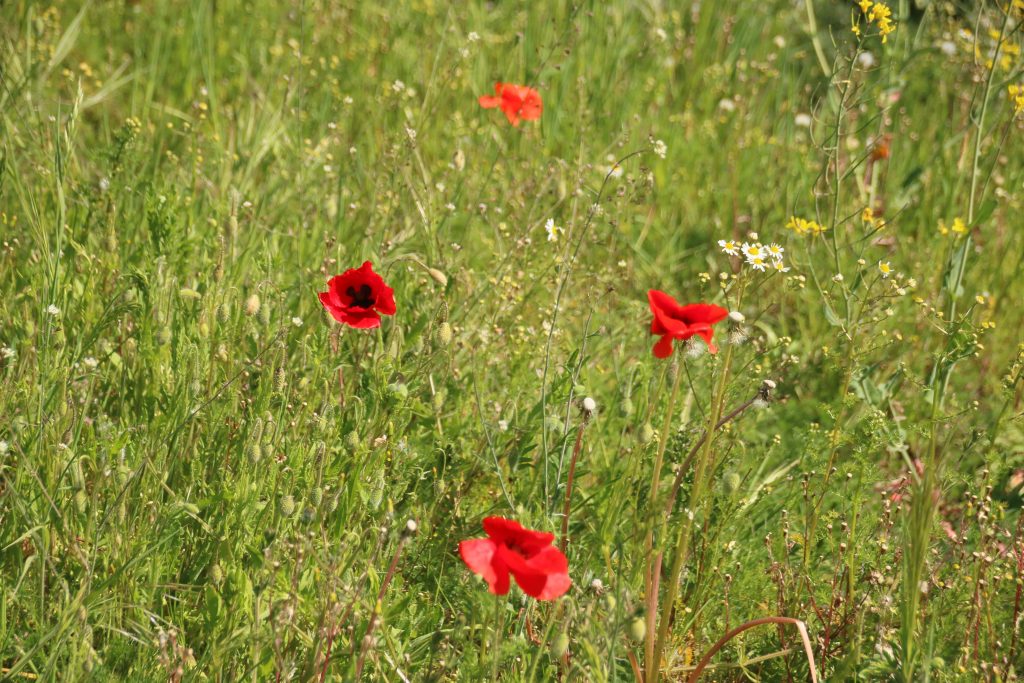
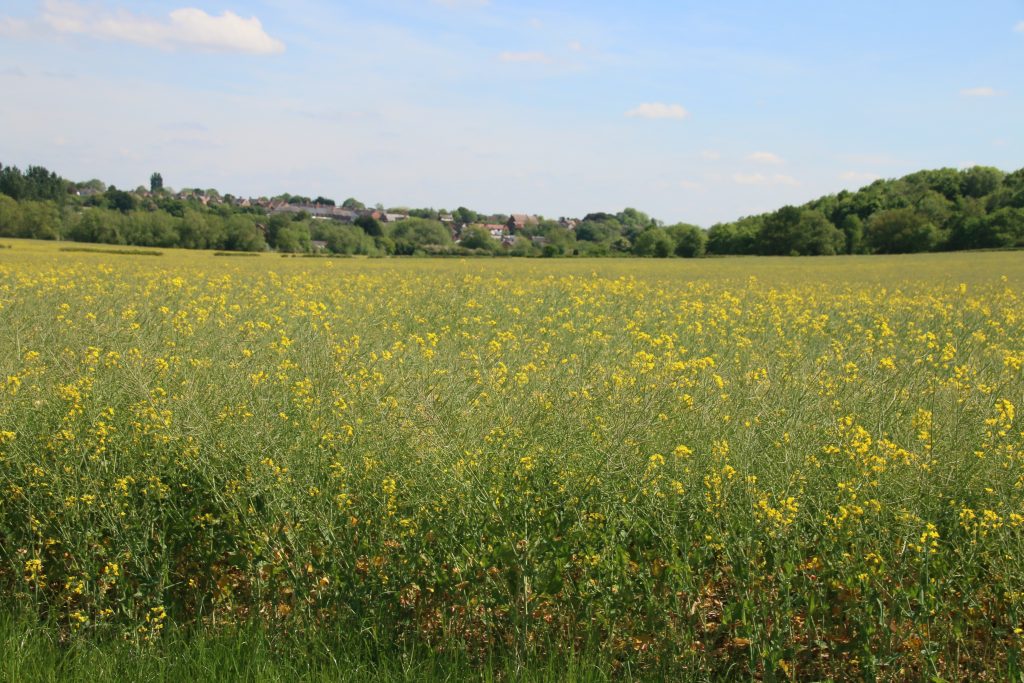
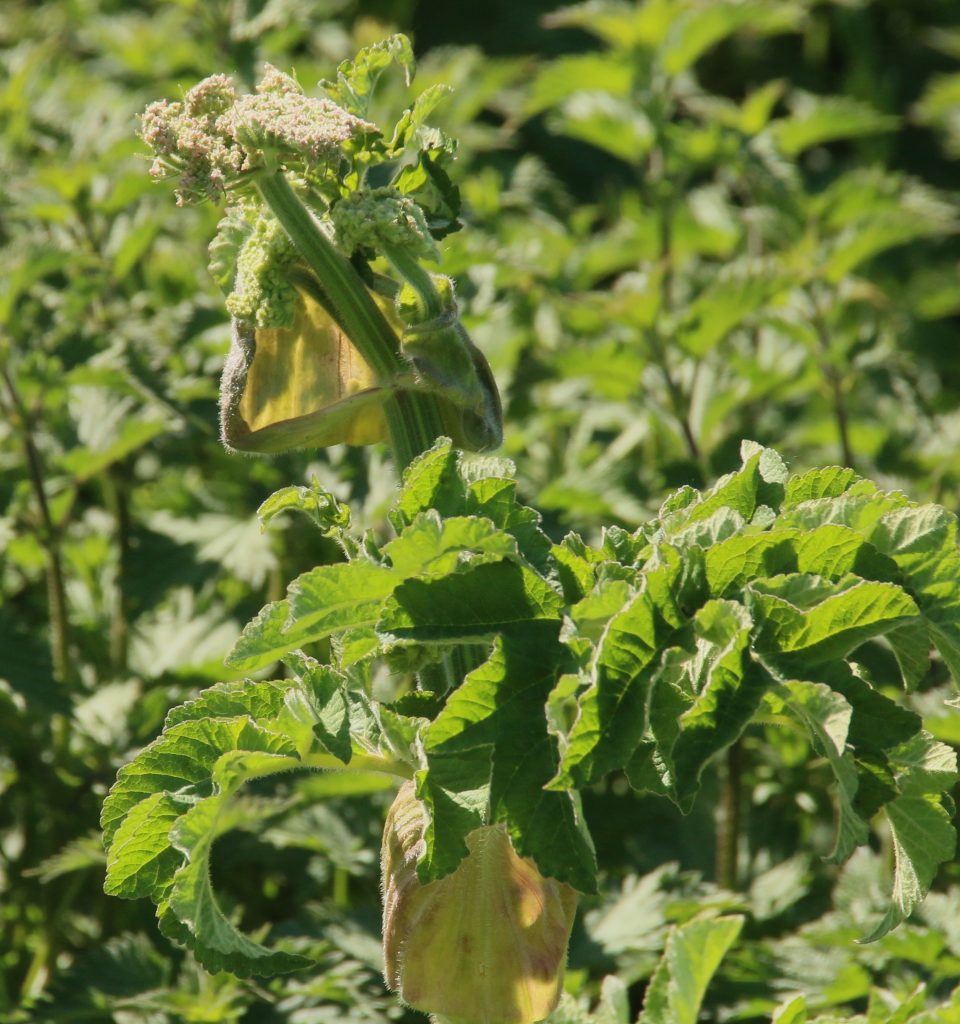
In the countryside around us early and mid-spring is giving way to late Spring, and even the first signs of Summer. With no rain for weeks, and temperatures in mid 20s, it has certainly felt like Summer over the last few days. Walking down the field track, the rape blossom is fading, petals falling to the ground, the intense yellow of only a few days ago being now just a sprinkling of yellow in the green foliage. The crop has been sprayed this week, with herbicide or pesticide. Despite this chemical dose, the first poppies have appeared among the first ox-eye daisies at the edge of the crop. On the other side of the track, by the hawthorn hedge, frothy white cow parsley, or “Keck” in these parts, is blooming, matching both the white hawthorn blossoms on tall shrubs further down the track, and the white fur of Sam, happily trotting along the track. Among the nettles by the crumbling red bricks of the old barn a solitary Hogweed flower is beginning to unfurl.
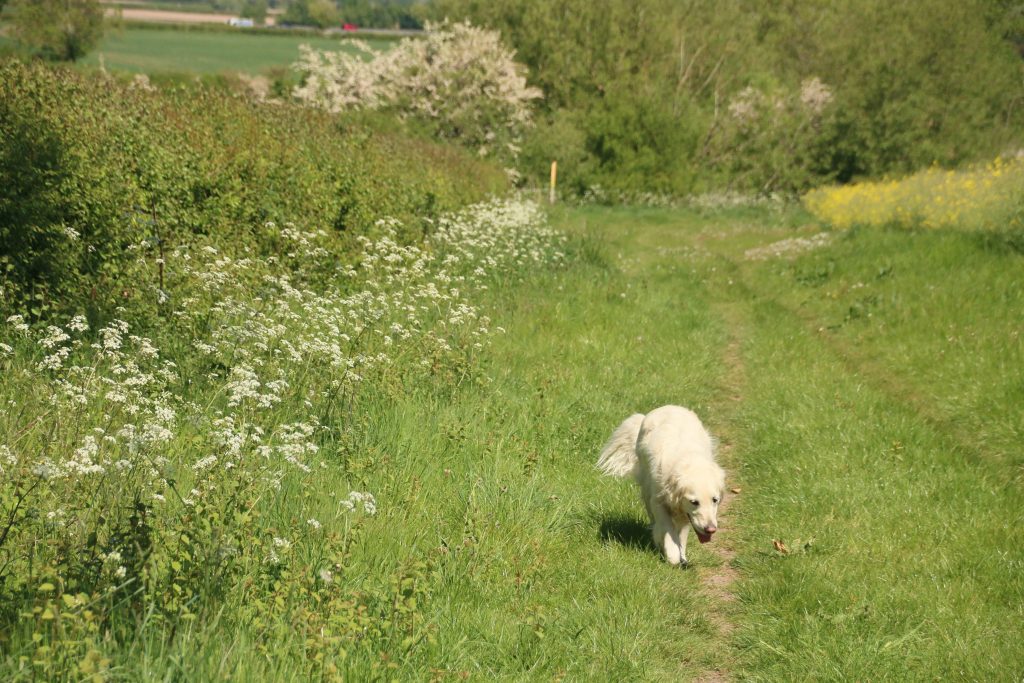
We walk across the bridge over Thurlaston Brook, unsurprisingly low, and into the “Sheep Field”, where the yellow hairy buttercups dominate the greenery of the tall grasses. Still no sheep in the field, which means that the grass will almost certainly be mown for sileage or hay next month. Across the field, on the far side of the stile and “plank bridge” over the drainage ditch, I surprised to see a sea of blue, looking distinctly aquatic. The blue was Flax, “Perennial Flax” I think. Flax has been an occasional crop in local fields over the years, but this was in an area left to grass and wildflowers. The flax may have been in a wildflower mix.
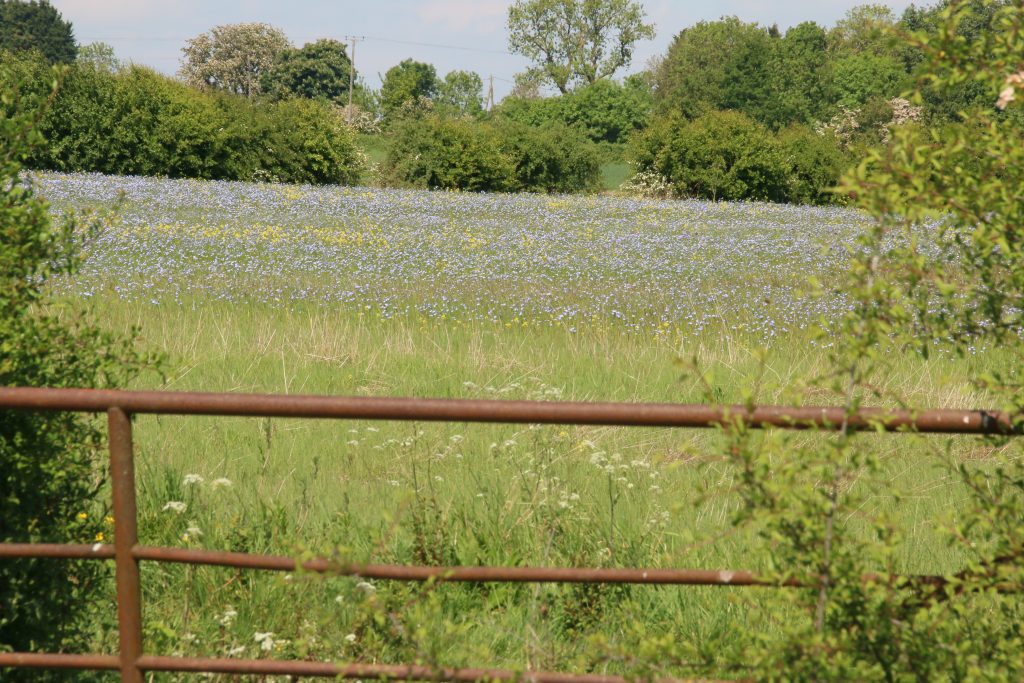
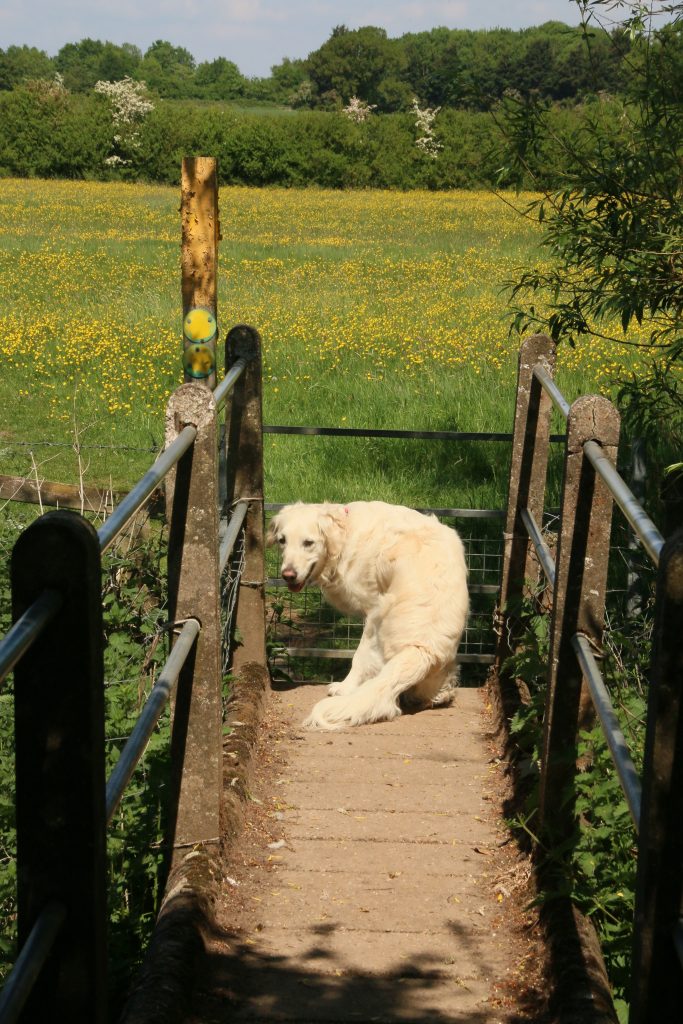
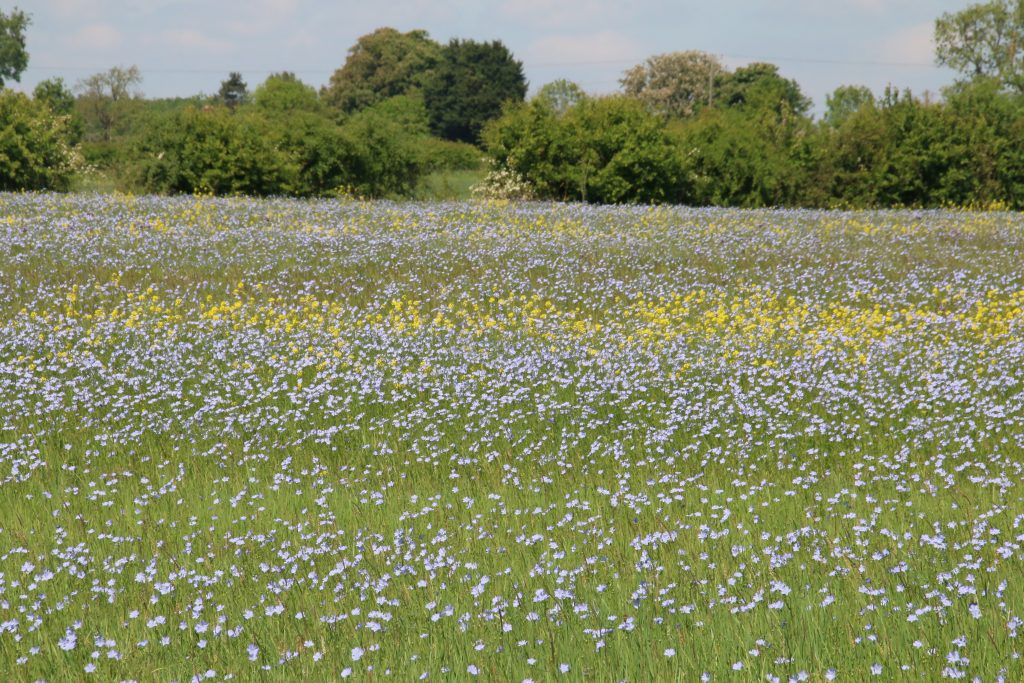
Like the cultivated rape, the earliest of the hawthorn flowers are fading, but still sufficient flowers for a peacock butterfly to feed, pausing briefly with open wings absorbing the warmth of the sunshine, before folding them neatly over its back to look a little less conspicuous.
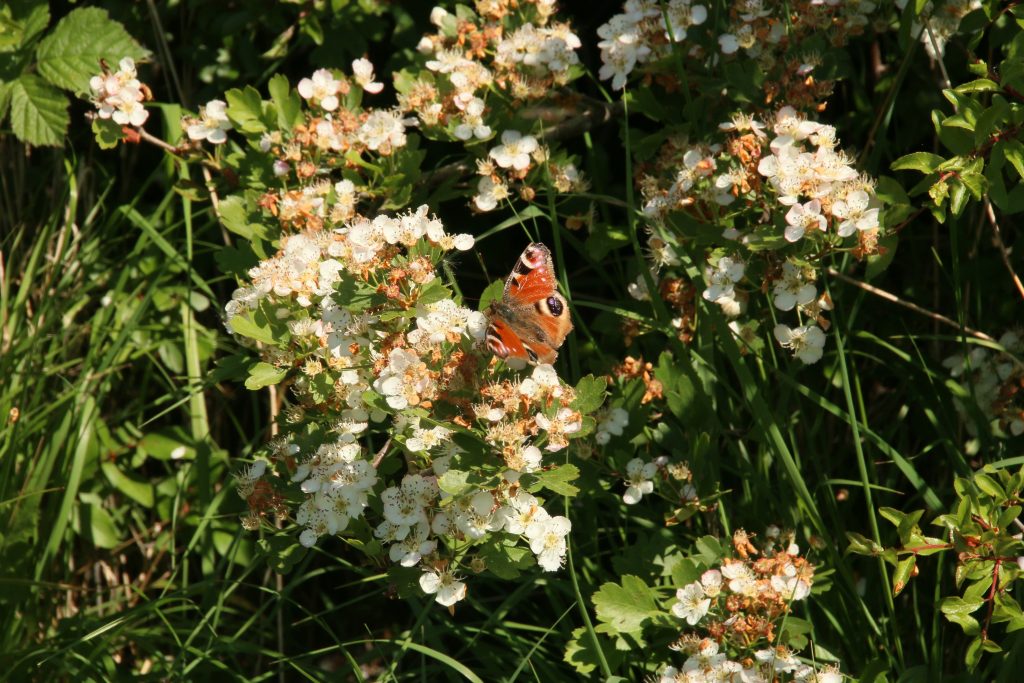
Returning back to the rape field we turn left along the bottom of the field, rather than back up the track to our Lane. Crossing the road that runs between the two villages and through the gate onto the quarry nature reserve, we ascend the grassy track towards Croft Hill. Tiny yellow Birds Foot Trefoil and blue Speedwell grow together in the rabbit-cropped grass beside the track. It is the season of summer flowers
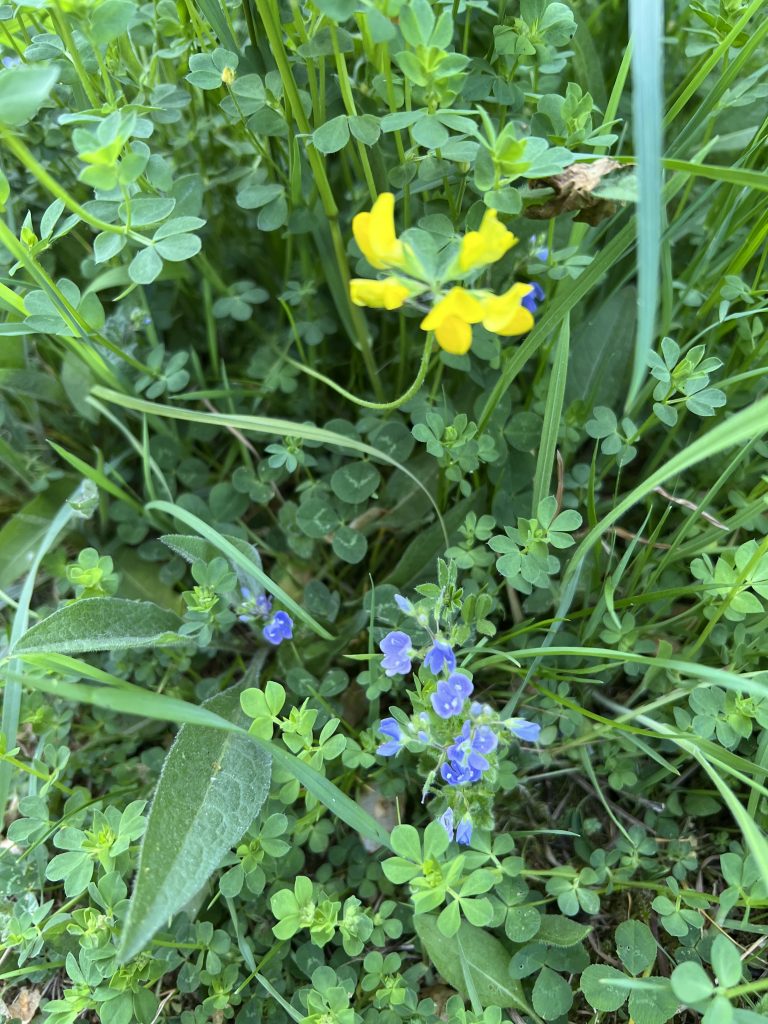
5th May – Blooming
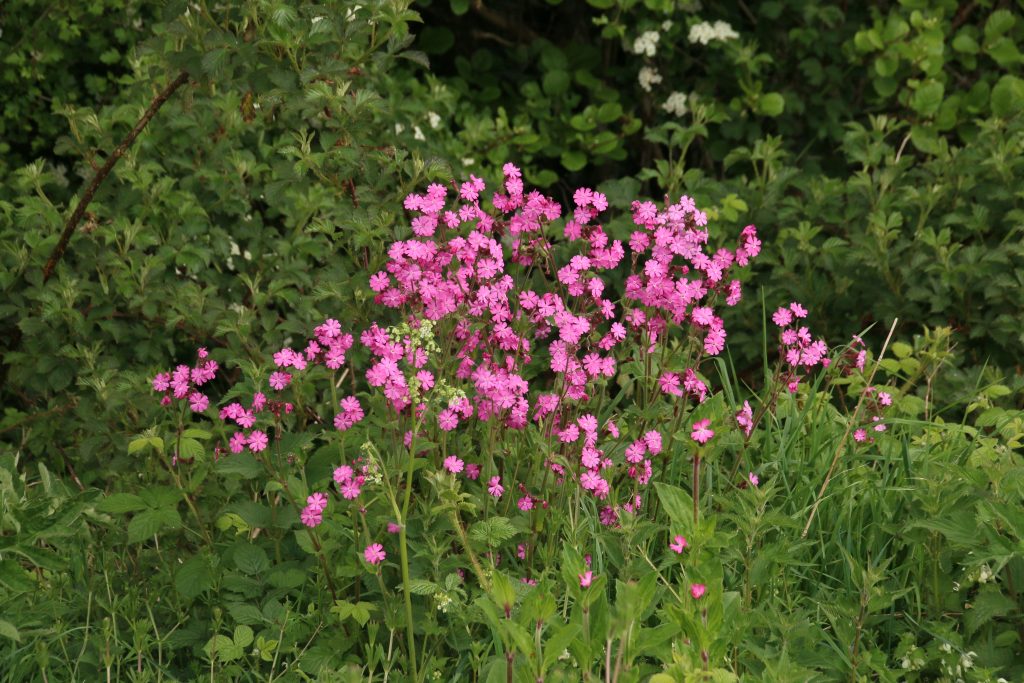
Bank Holiday Monday, and a few non-regulars out and about, as well as the one or two of the usual dog walkers. A lady who had recently moved into Huncote was exploring local walking routes, and a chap who has lived in a village about 4 miles away for 30 years had never climbed to the top of Croft Hill and had just done so before following paths around the quarry.
More spring flowers are making an appearance. In a damp area of lush grasses, mainly Cocksfoot, Red Campion flourishes. Even this area is dry on the surface after weeks without rain together with drying winds but will still hold moisture not far beneath the surface. Only a few metres away, away from the damp provided by the shade from the mature hedgerow of Blackthorn and Hawthorn, grass is shorter, and decorated with yellow Hairy Buttercup, taller than meadow buttercups. Purple Common Vetch nestles in the grass, between the buttercups.
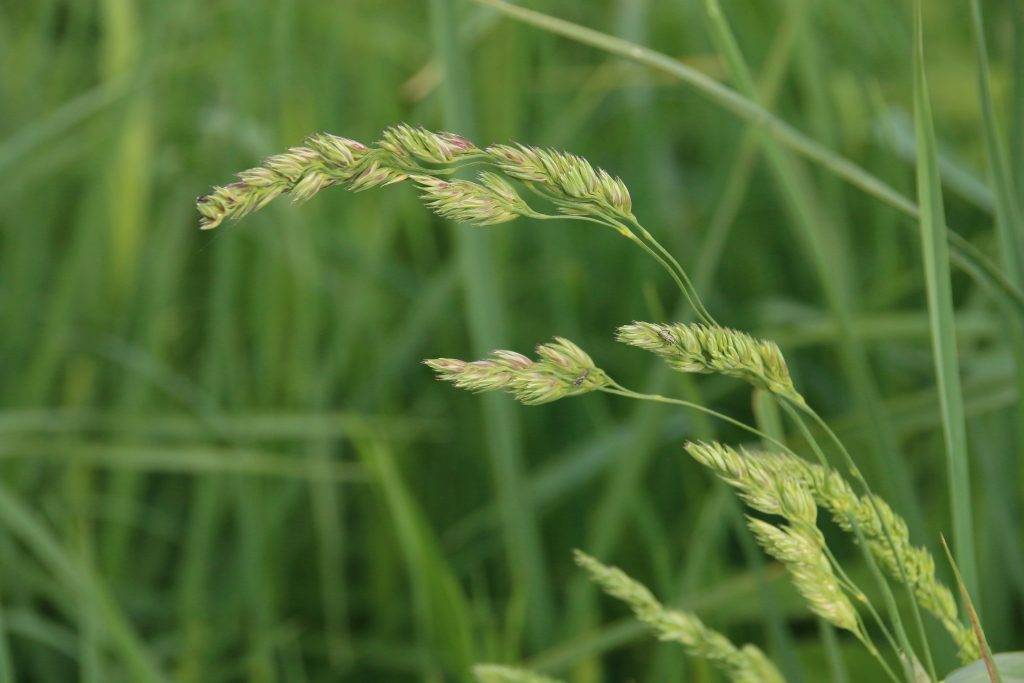
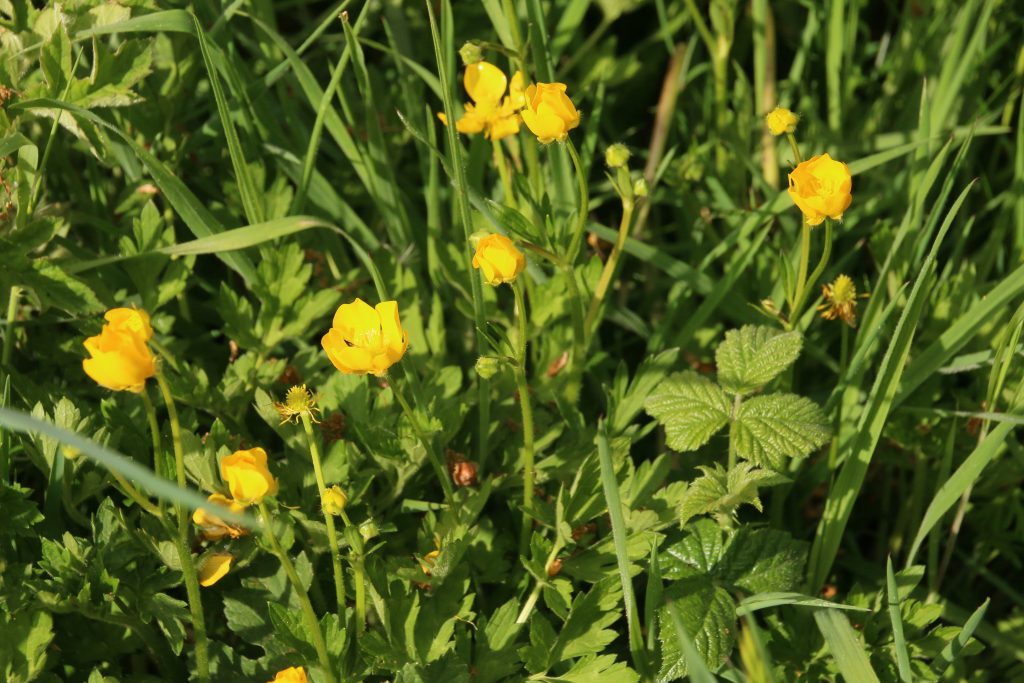
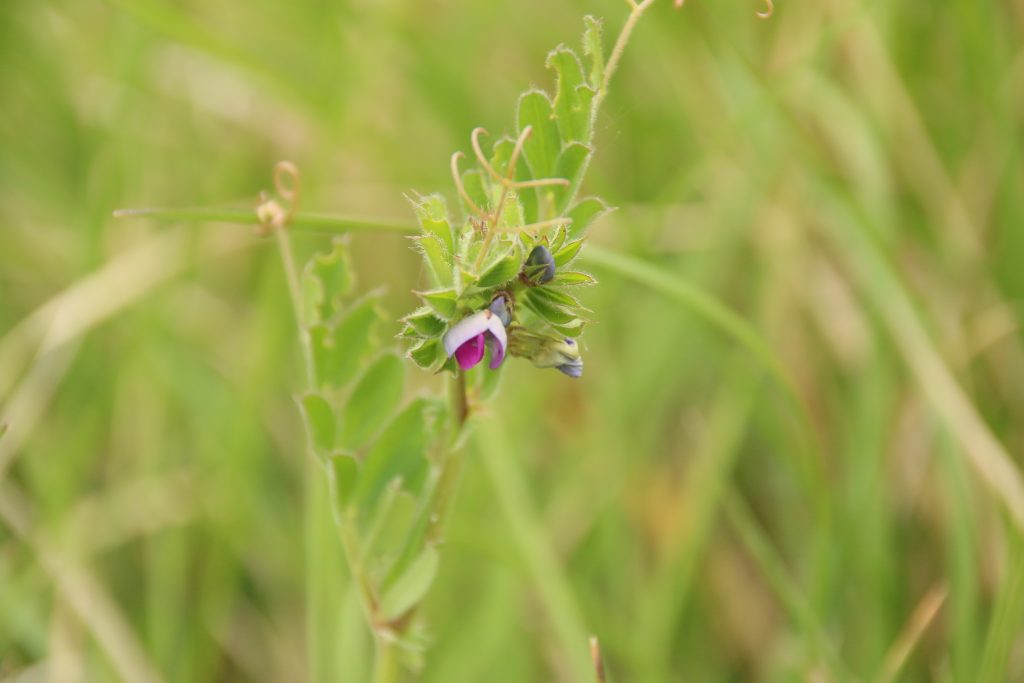
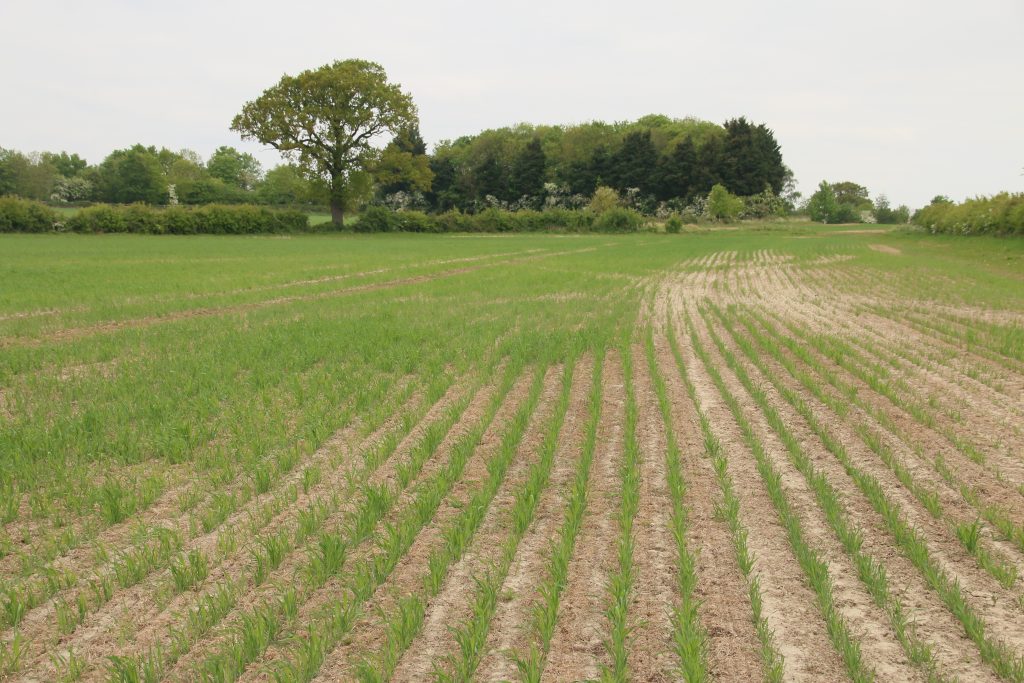
We walk back down the field towards home. The cereal crop sown a couple of months ago has grown, but soil is dry in the gaps between rows. It is only early May, with plenty of time for rain to encourage more productive growth. In contrast the rape in the field close to our Lane is thriving, still in full flower, the large leaves still tempting for the dogs to chew if we don’t stop them in time – the field is periodically sprayed with pesticide and herbicide, which, although technically harmless to dogs, are chemicals that they should avoid.
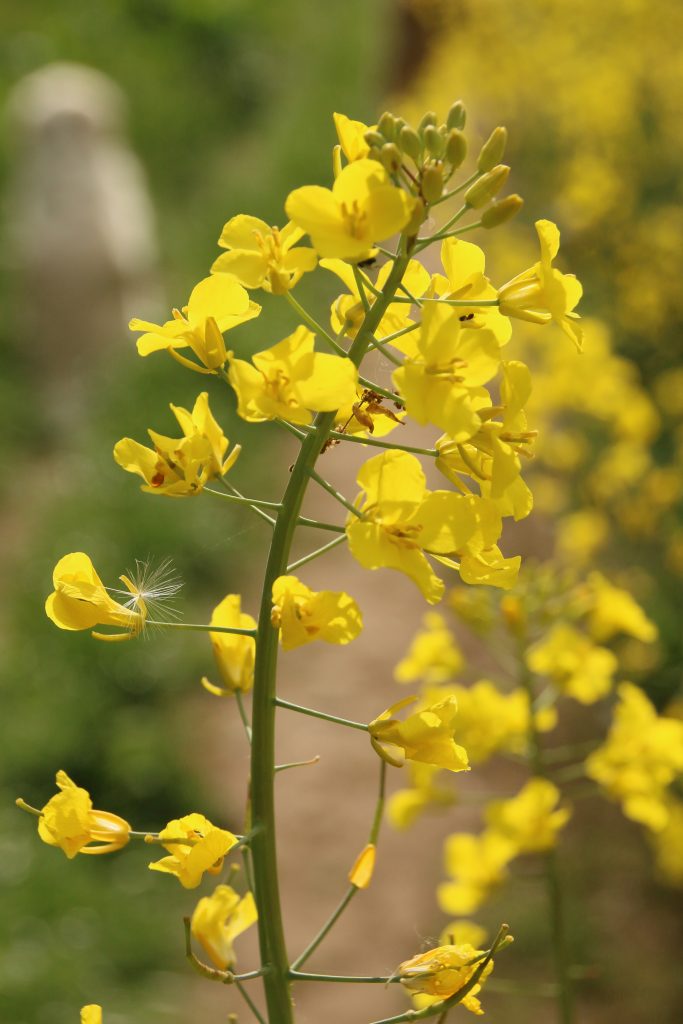
It is Hawthorn that is dominating the natural countryside, the blooms full and dense on tall shrubs and lower hedges, dividing fields, and competing for attention with the yellow Gorse on and around Croft Hill. May is usually the most productive time of year in nature, with the right balance of sunshine, rain and warmth. Sunshine is aplenty this year, but rain and warmth, apart from a few hot days giving brief relief from the north wind, have been limited. But nature is still productive, if not as vigorous as in past years.
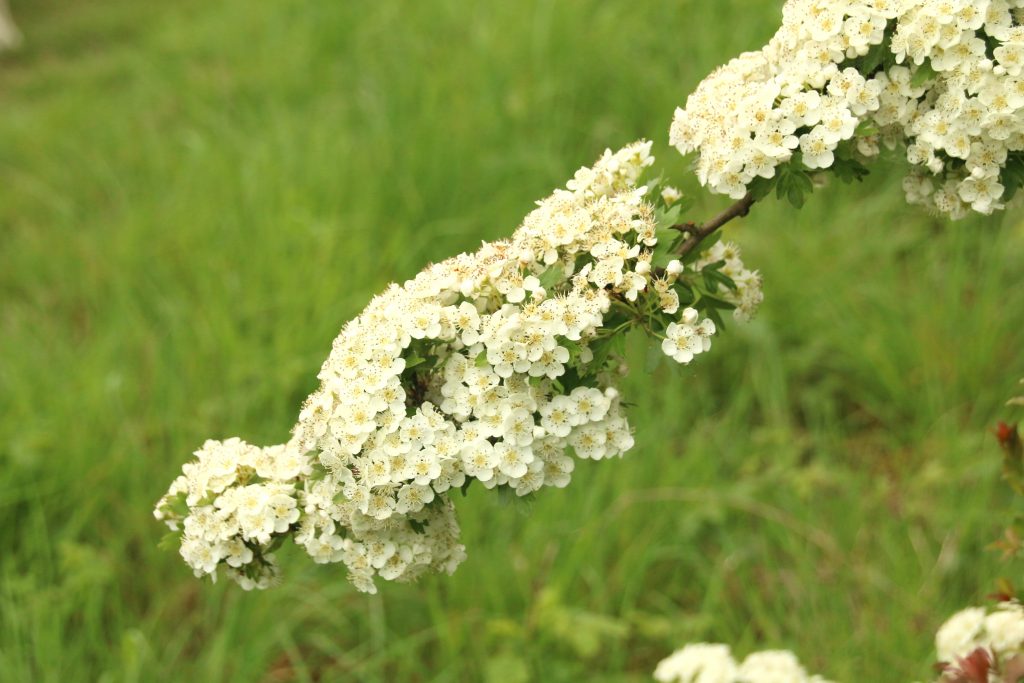
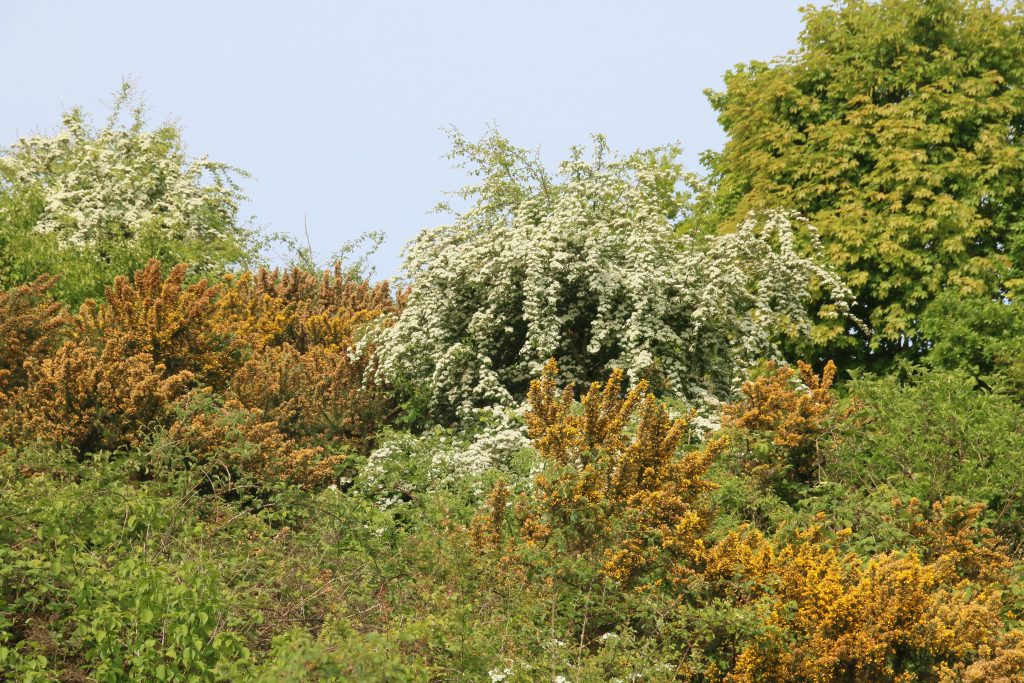
3rd May – Dry and dusty paths
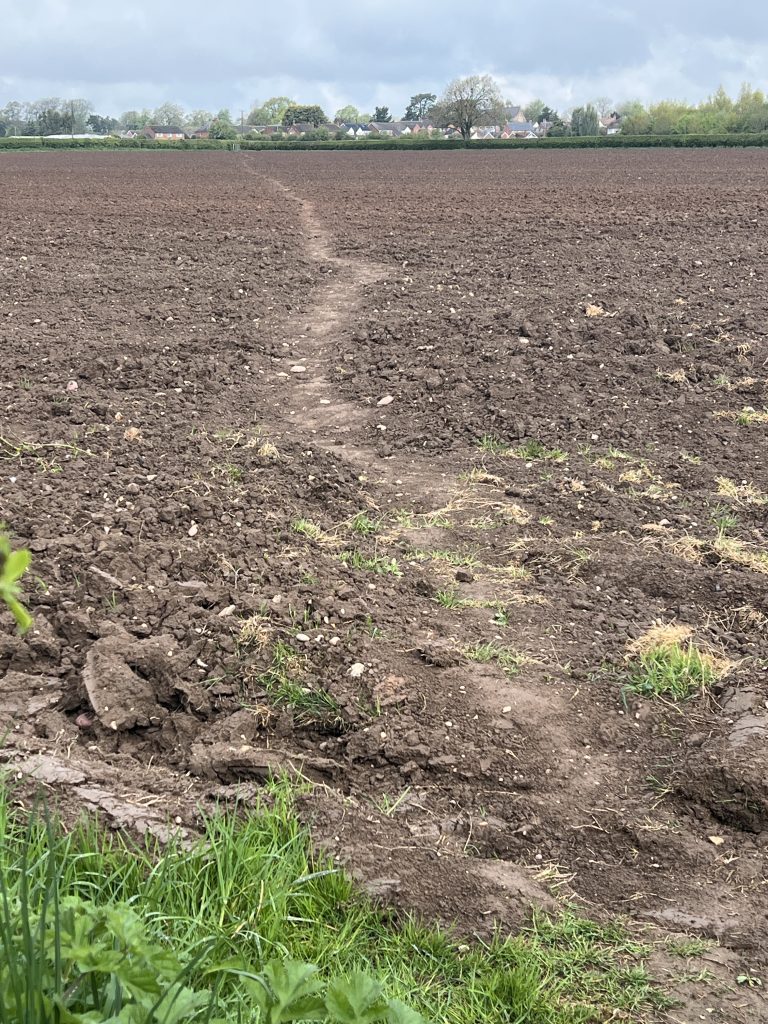
Walking the fields immediately behind our home are owned by a local building company, as a “landbank”, an investment, rather than for building. Footpaths across this land are well maintained, kept clear, with stiles and bridges kept in good repair by the County Council. Beyond this, about a mile from home, the path crosses a narrow plank bridge, passes through a gap in the hedge and enters the land of a neighbouring farmer. This farmer is less amenable to keeping footpaths maintained. He has recently ploughed the field crossed by the path and relied on the walkers to reinstate the path simply by following the route – not good if the field is wet mud.
No mud around at the moment – weeks of dry, and sometimes hot, weather has left paths dry and dusty. Walking towards the track to the farm, a large truck appears, creating a cloud of dust. I was thankful that I wasn’t already on the track as it passed, and I re-routed to avoid the dust. The truck tipped gravel at a field entrance, where trenches were being excavated – presumably new field drains are being installed. Turning right, away from the dust cloud, I followed the track in the other direction. Sheep and lambs in a large field clearly thought that I was bringing feed and trotted down the field towards me. Breakfast may have been due – it as at around this time that farmworkers arrive in a small truck and spread pelleted food to supplement the grazing.
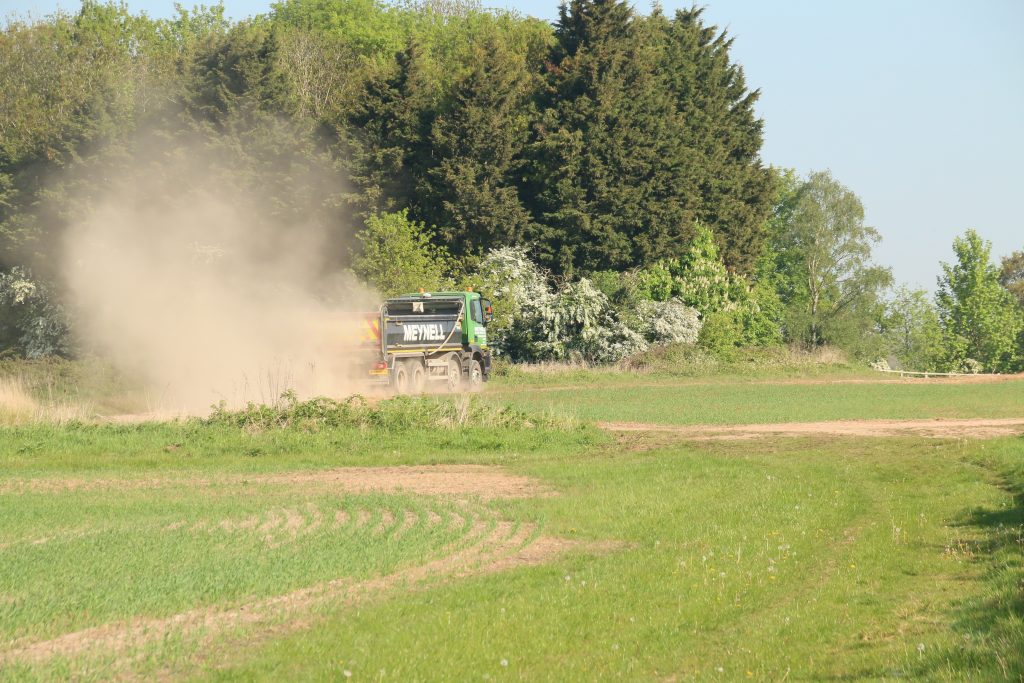
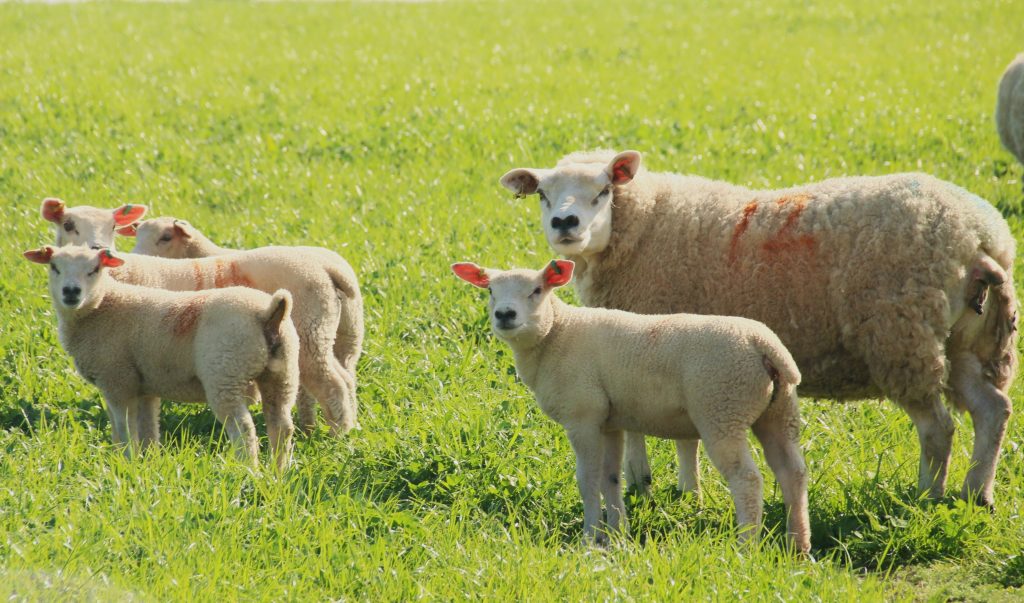
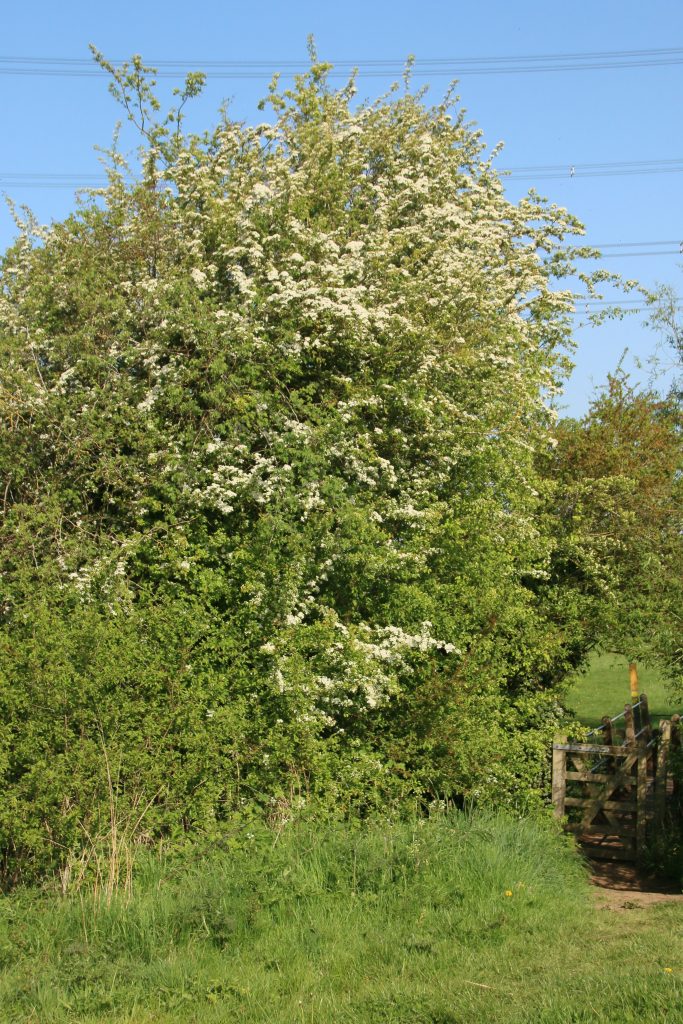
In the hedgerows hawthorn is coming into full blossom, at least on the shrubs that have not been trimmed. In hedges that were cut earlier in the year, encourage dense growth as necessary maintain a hedgerow, blossom is patchy – full blossom in places, but elsewhere the hedges are still green, with no budding flowers. Beneath the hedgerows the dew-ladened webs of the money spider glisten in the long grass.
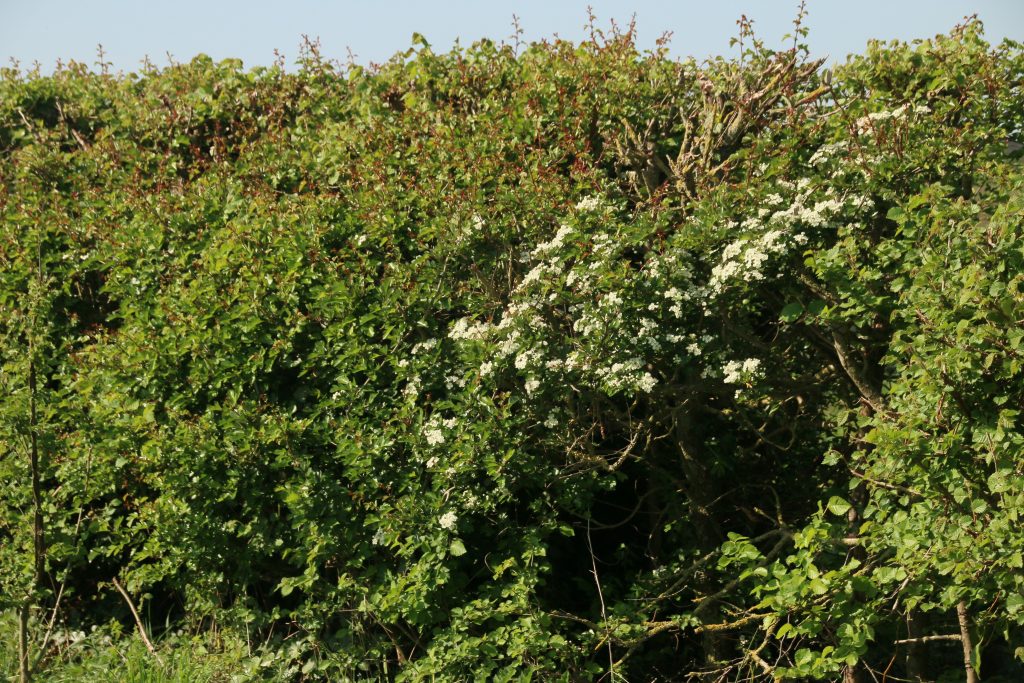
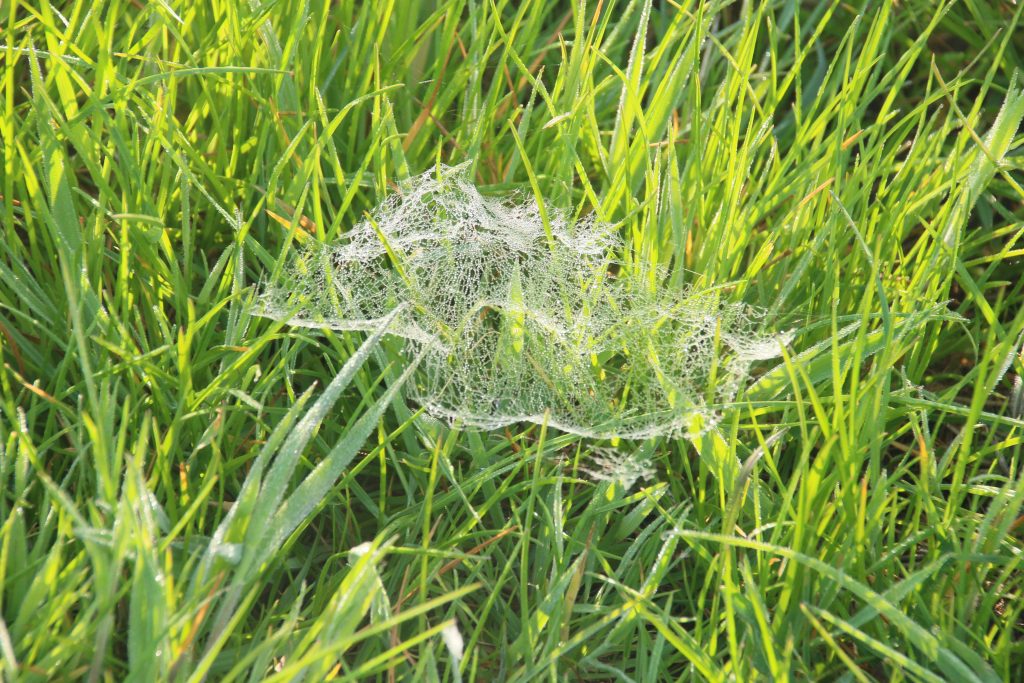
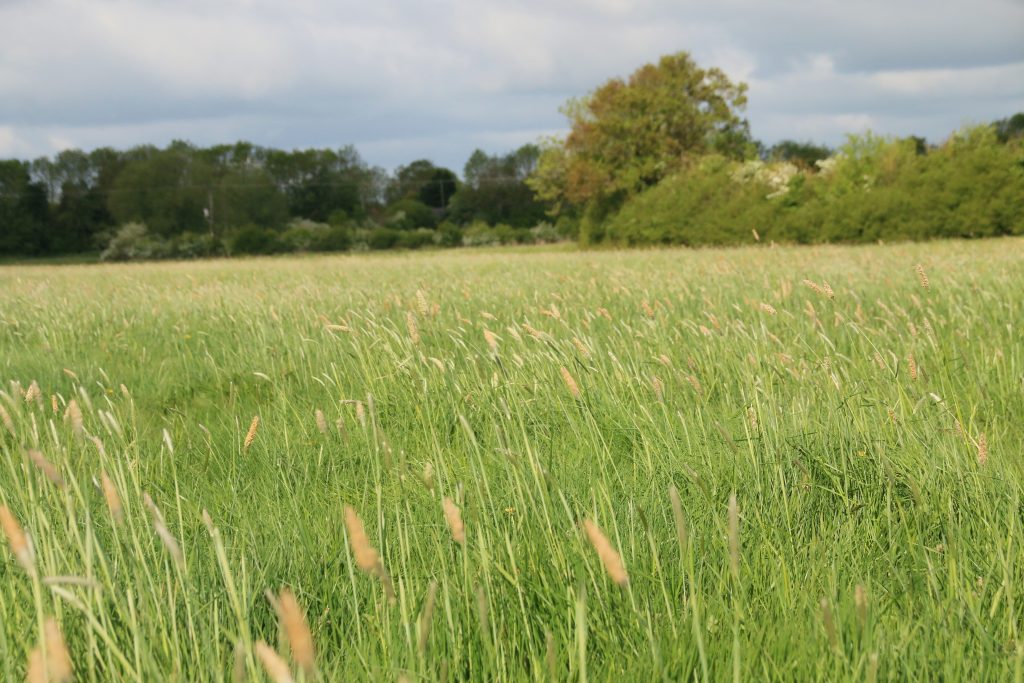
The grasses in the riverside meadow of the “sheep-field” is getting taller, the Yorkshire Fog and Timothy Grass in flower, and spreading pollen, as those with allergies will be aware. I would have expected this grass to be higher at this time of the year – no sheep yet, and so it may be cropped as hay or sileage. The dry weather has limited growth. Fortunately, it has had the same effect on my lawn.
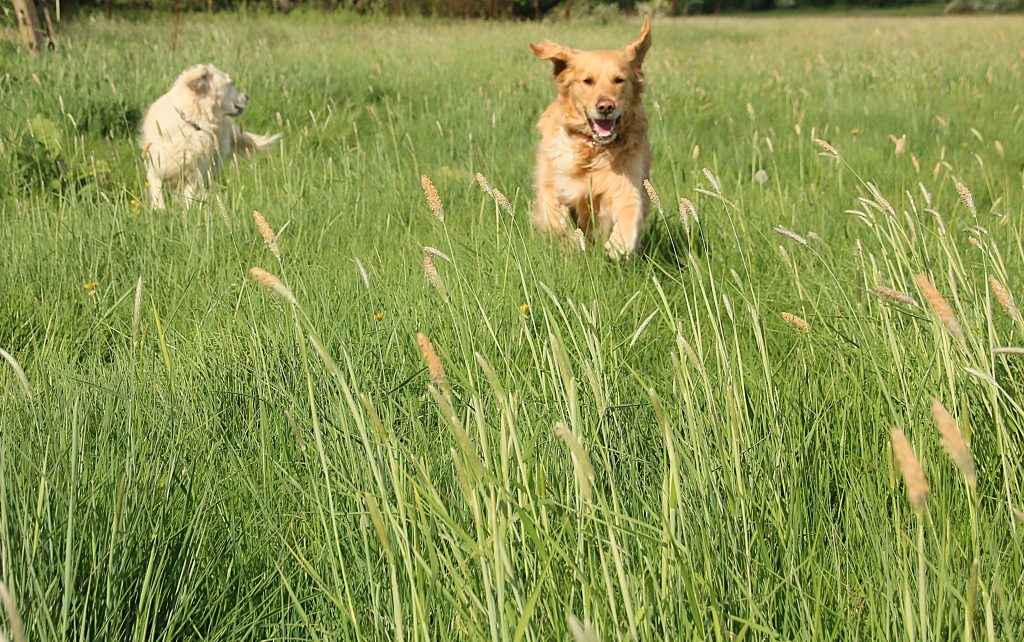
26th April – April Showers
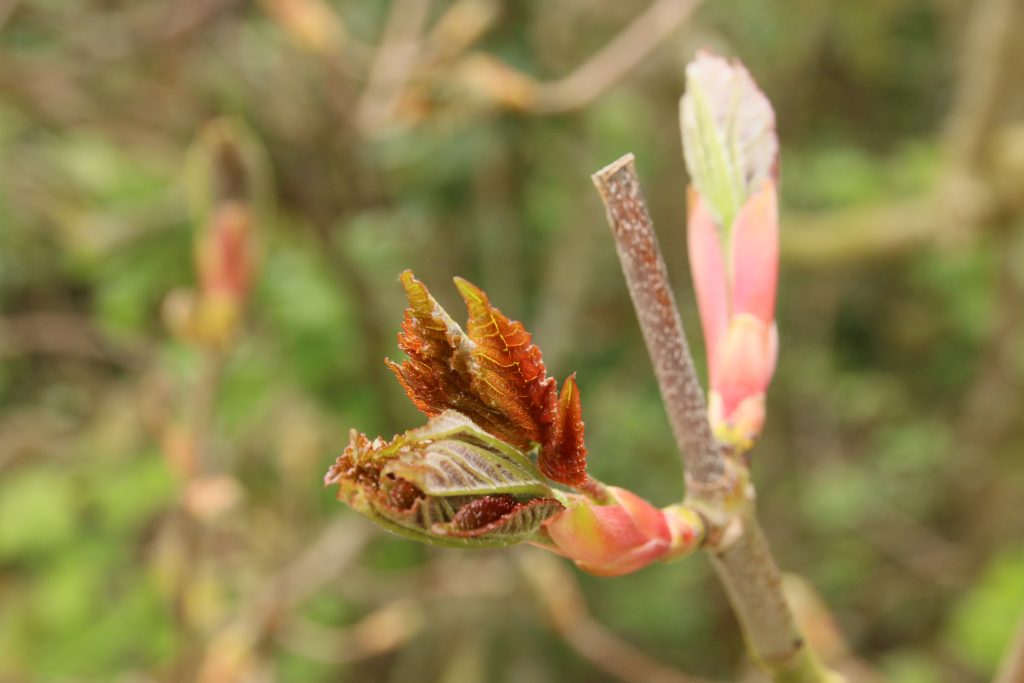
Walking down towards the Glebe, more shrubs have burst into leaf and flower. Field Maple leaves are emerging from their pink buds. Sycamores have been in leaf for a while and are now displaying producing green catkins. Young Cow Parsley, known in these parts as “Keck”, have just started flowering. Currently barely knee high, within a month they will be a metre tall, capped with frothy white flowers, a sign that late spring will soon turn into early summer.
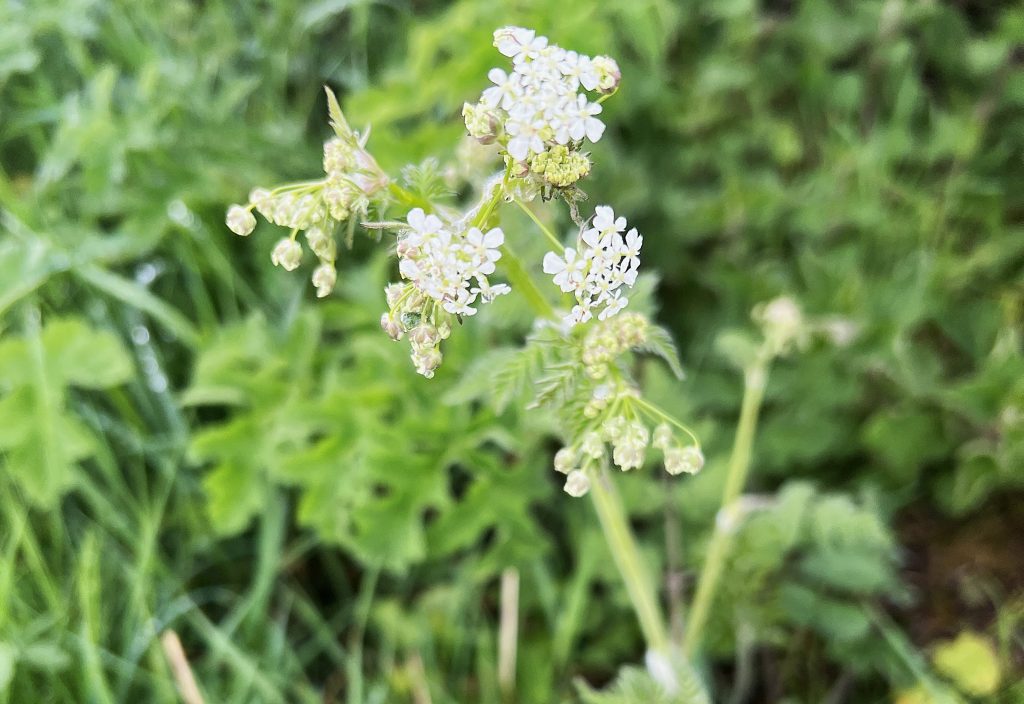
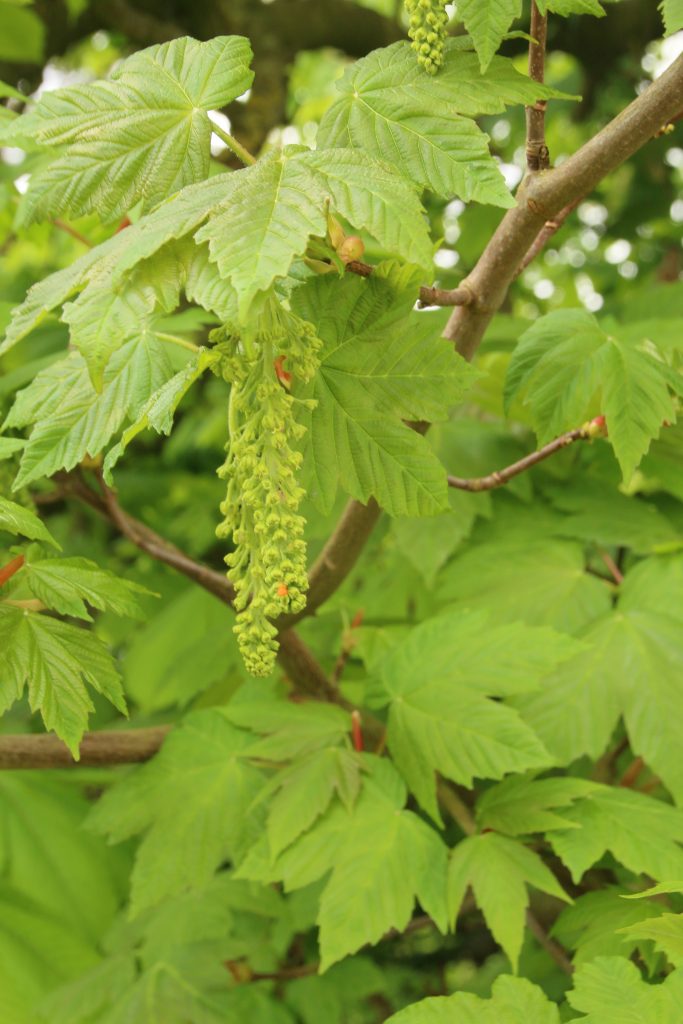
After a dry couple of weeks, the season is delivering April Showers. As we ascend Croft Hill, as Sam waits for me in front of profuse yellow-flowering gorse, the view is of the Leicestershire countryside basking under high cloud and blue skies.
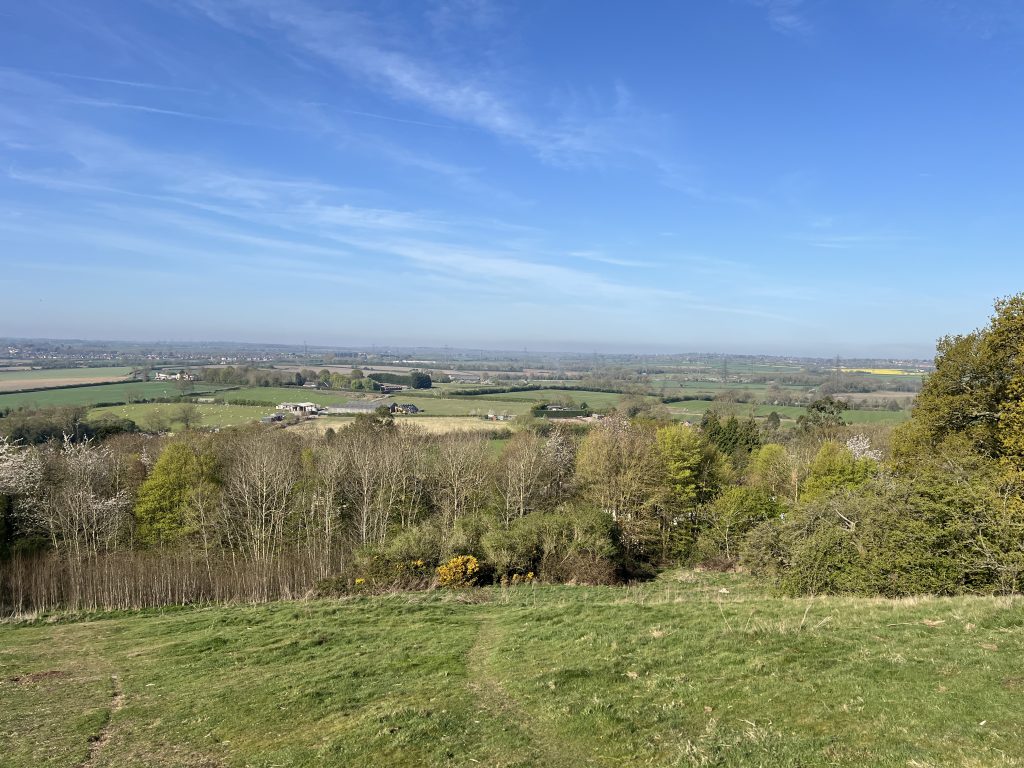
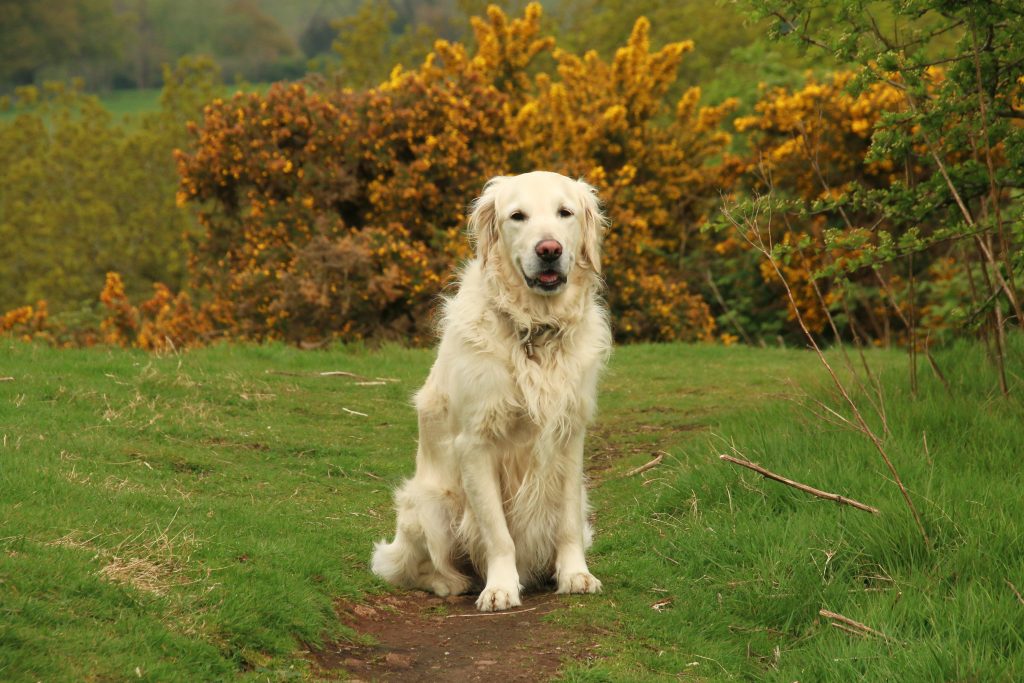
In the time taken to walk back down to the Lane and circuit the field of yellow rape flowers, dark clouds threaten, and a sharp shower of unpredictable duration. It stays dry until we are walking back up the field gate close to home, when drops of rains spot my jacket. We meet a fellow dog-walker and neighbour just setting out on her dog-walk. She wishes that she hadn’t decided to wash up before setting out.
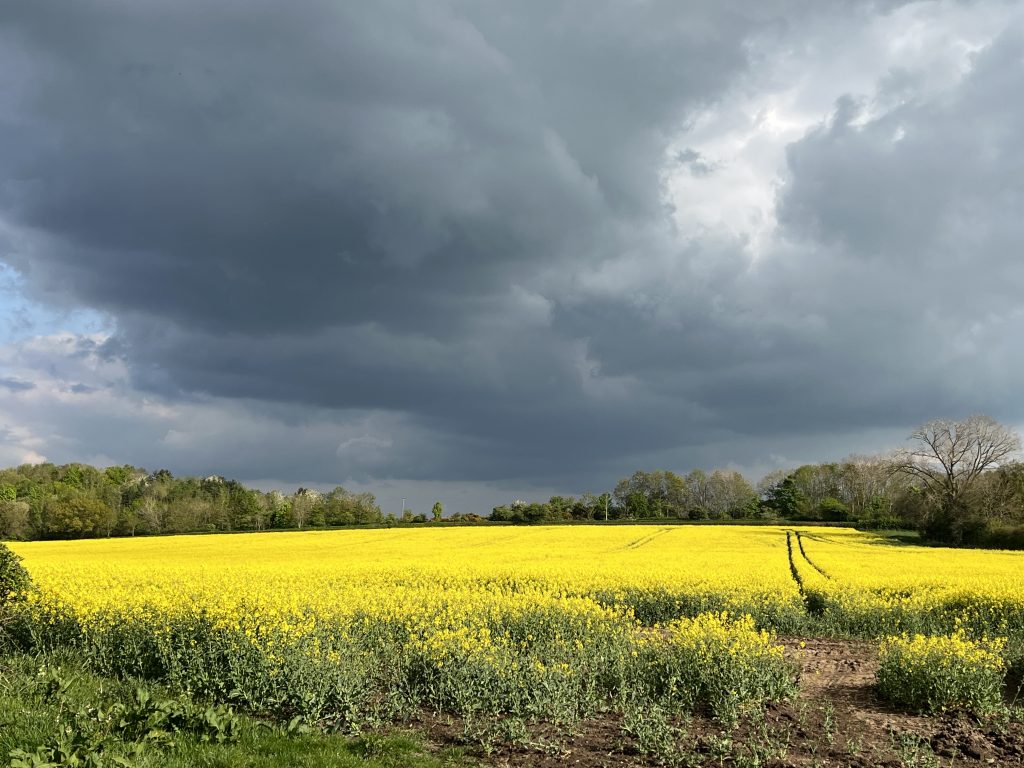
22nd April – Meadow flowers
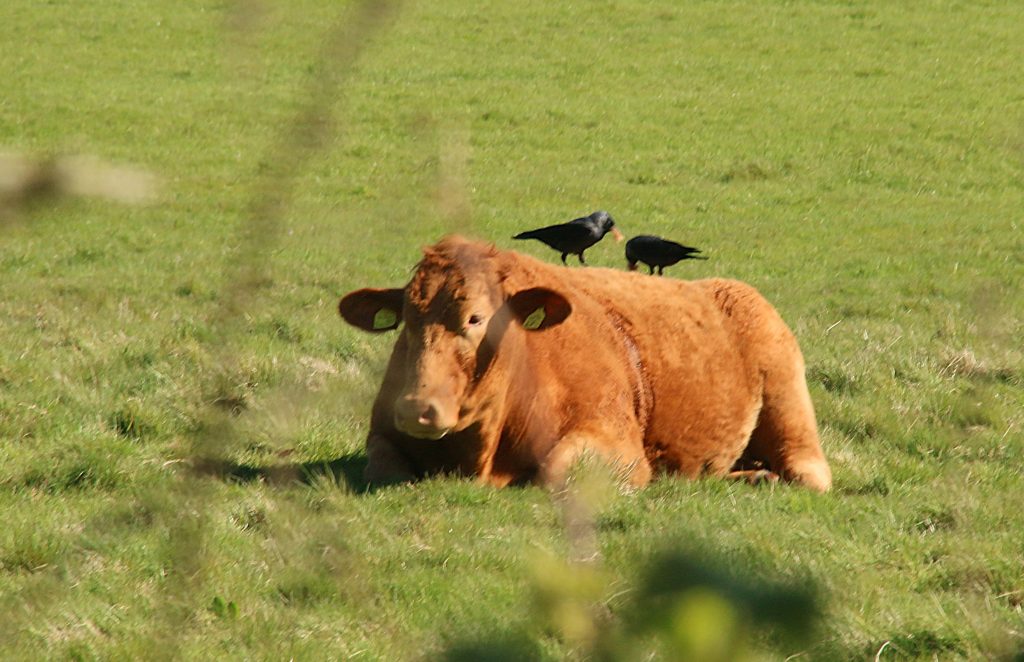
Yesterday, Easter Sunday, I was out and about on the footpaths around the quarry bright and early – well, by 8.30am, early for us. It was a fine morning, and already the paths were busy, not just dog walkers, but also families and couples out for a stroll, and mountain bikers, courteously slowing down and greeting the dogs. The field adjacent to the wide track leading back to the Lane has, at various times, both cows and sheep in occupation, sometimes simultaneously. I note a cow lying down, which according to folklore suggests impending rain, and on this occasion the Met Office agrees. Crows perch on its back, feeding on grubs and insects, and possible removing loose hair for nesting, do doubt all to the relief of the passive bovine.
This morning, Bank Holiday Monday, we were again out early, this time to avoid rain due to arrive mid-morning. We used the less popular field paths from the gate further down the Lane. It was peaceful, no-one else on the paths, no traffic on the Lane. Despite a few showers, the ground remains dry, and I opted for a longer route that includes bridleways, used by local horse riders and almost impassable after wet weather. The paths were dry, and in the most part level, but in places that have been particularly wet the now-dry ruts and potholes are ankle-breakingly deep and must be trodden with care. One path, between hedges, is not a bridleway, but has been churned up by walkers and mountain bikers, and regulars have attempted to keep it passable using wood and branches, now cemented into the dry mud.
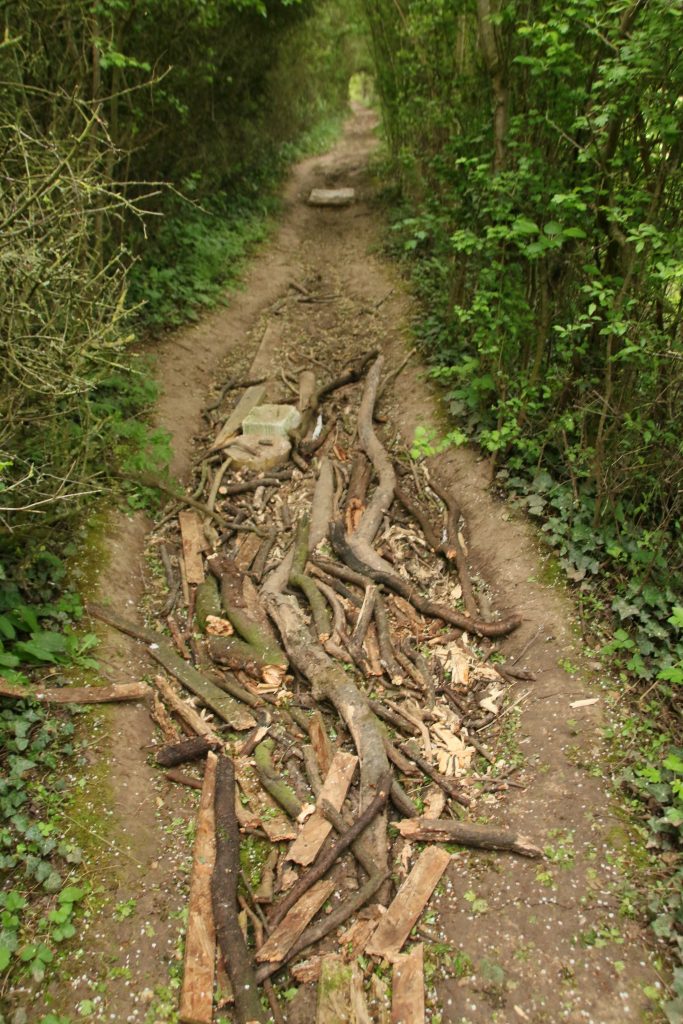
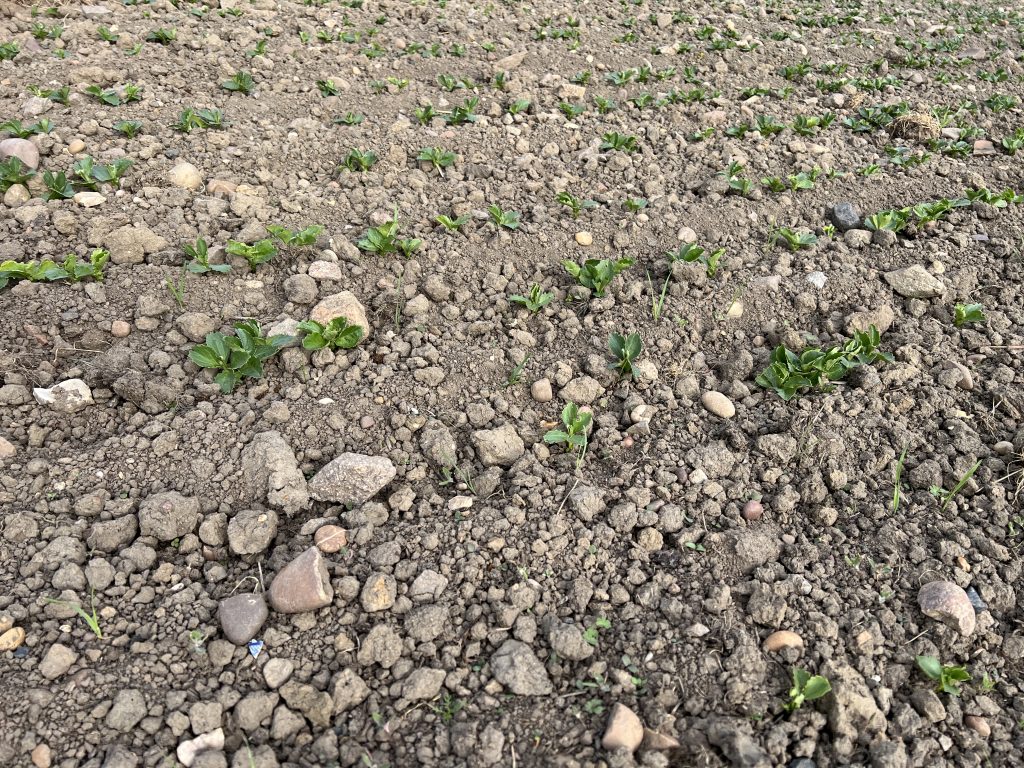
Young plants are growing in neat straight drills in the field behind the old barn. I think that these are young bean plants, cattle beans for feed rather than the culinary varieties grown in gardens. We shall see in due course. Pale pink Cuckoo Flowers, or Ladies Smock, have appeared in the sheep field. This damp meadow side pasture is the perfect environment for them, and over the next couple of months they will multiply as seeds propagate and each plants spreads, as primroses do. They may be cut down in their prime if sheep are introduced into the field.
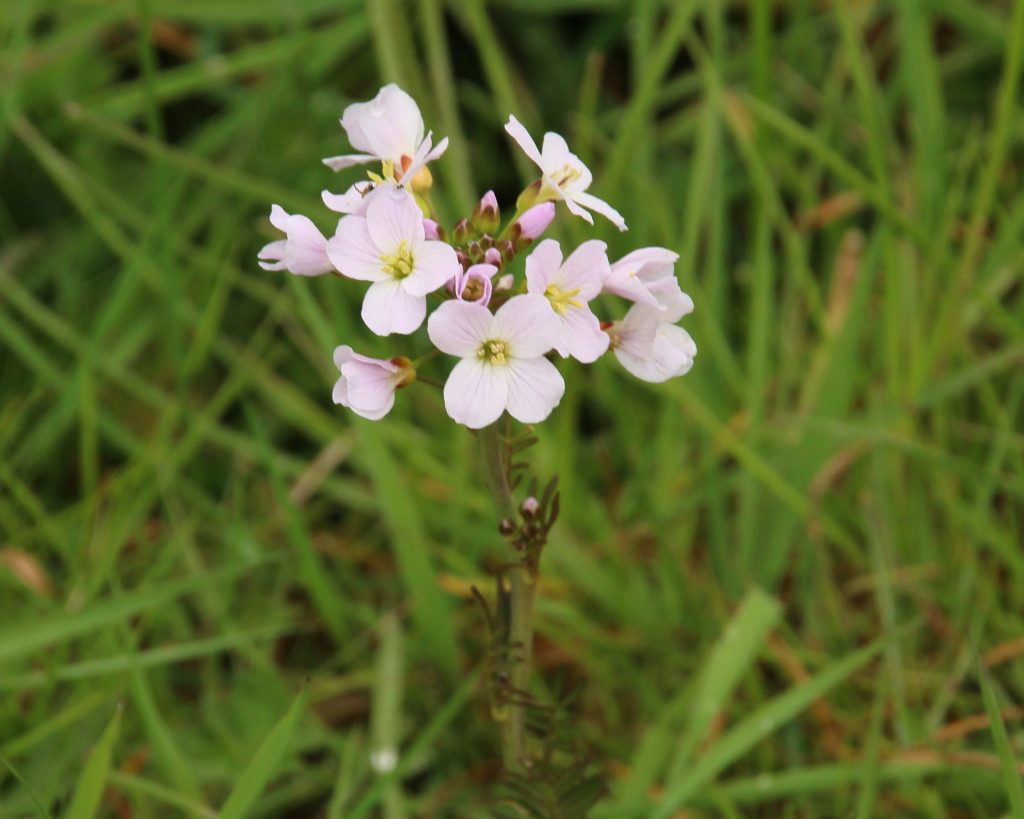
The grass is lush and growing fast, and the first grass flowers have appeared, glistening in the morning dew, Yorkshire Fog, generally the first grass to flower, with large delicate purple flowers. Most flowers are tightly packed, still to open, but in sheltered spots some are beginning to open out, looking rather scraggy at this stage. Eventually there will be areas of meadow that appear to have a purple mist flowing over the grass.
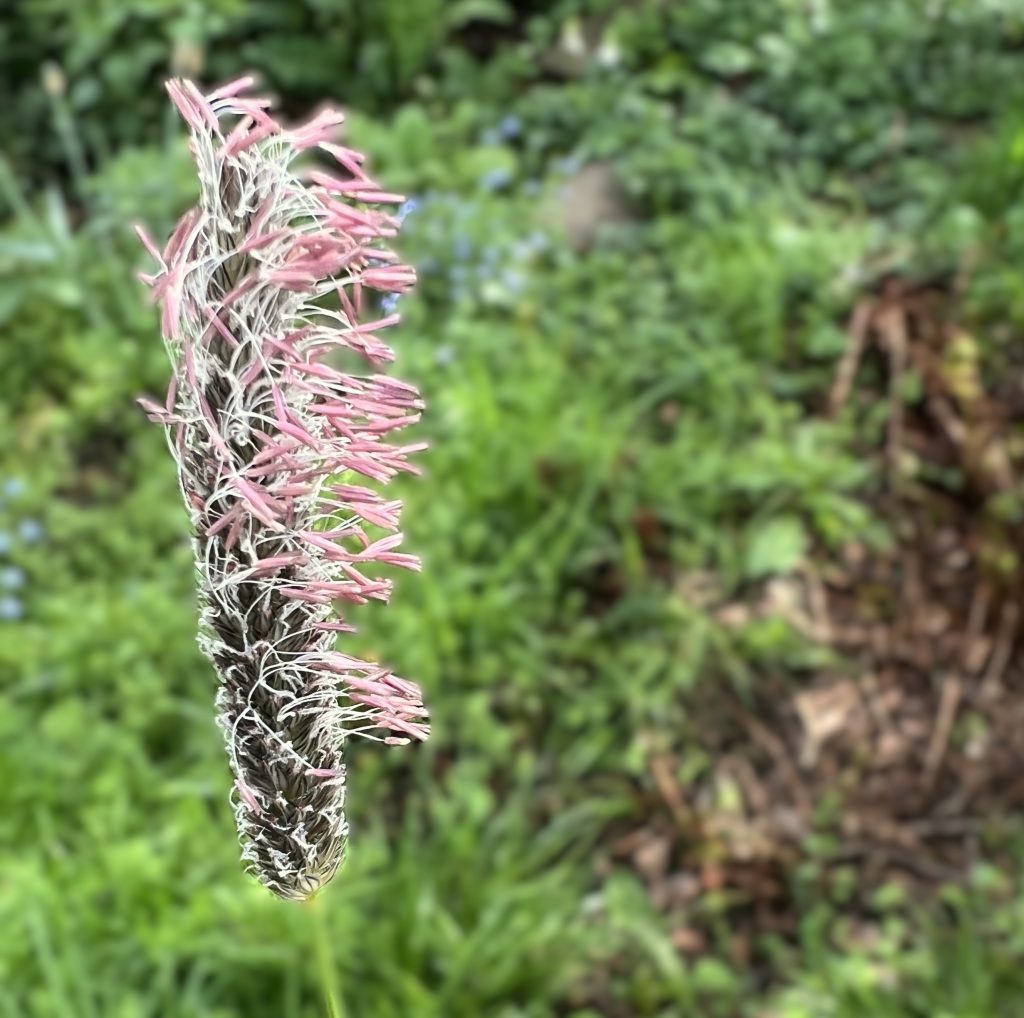
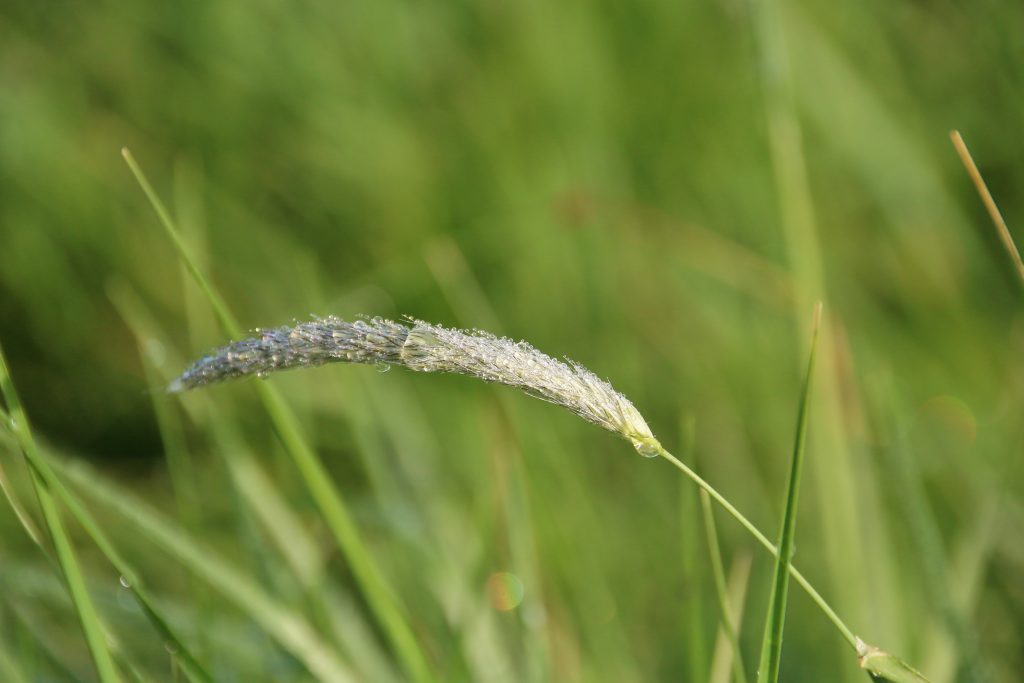
Beside the bridge between the sheep field and the intense yellow flowers of the rape field Hawthorn is still in bud, but not yet blossom, tight green nodules on branches. Away from the arable land, along the path down to the village, hybrid bluebells continue to spread between the trees. Beneath the trees by the Glebe, a shady area that is always one of the last to dry out, individual wild garlic plants are flowering – to be honest a mass of wild garlic plants is really needed for the wonderful garlic smell (if you like the smell!)
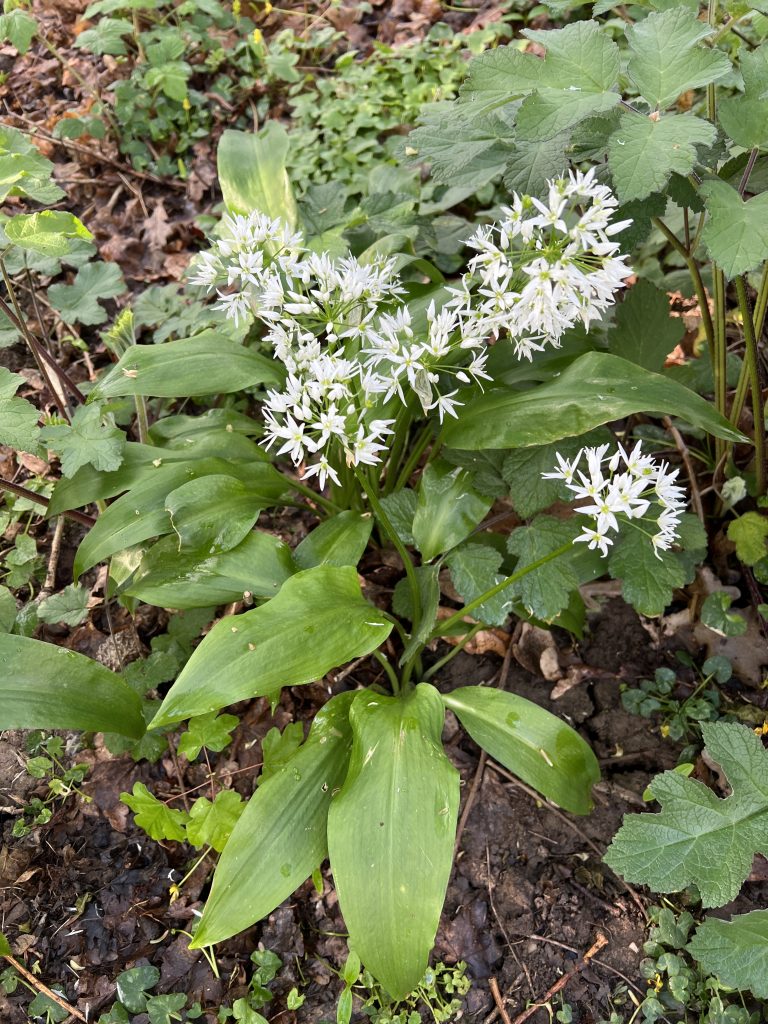
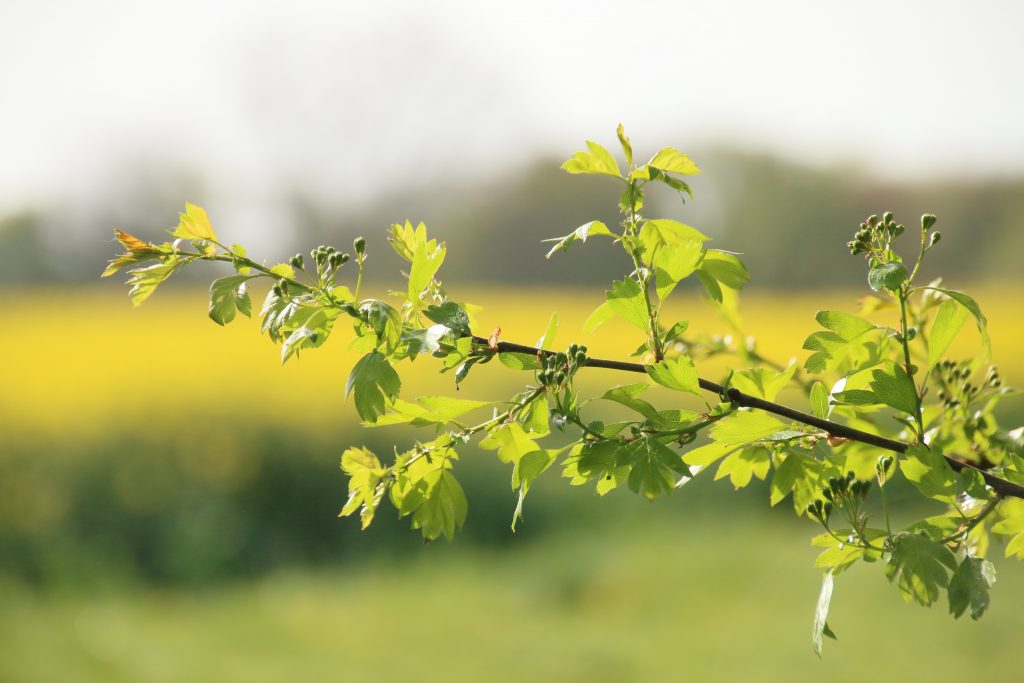
16th April – Flowers and foliage in fields and hedgerows
No rain of significance for over a month, and the ground is dry, hard, and worn tracks and footpaths are dusty. At least post-walk dog cleaning is restricted to dusting of paws. Nature is showing no signs of drought, with most trees in now in leaf, even oak trees, generally the last tree to display leaf buds (and the last lose leaves in Autumn). The oak leaves are still tiny, the ends of twigs dominated by the catkins of the male flowers. The tiny red female flowers, on the same tree, emerge from the centre of the small young leaves. The drooping leaves of the Horse Chestnut, the Conker tree, may look as if the tree is suffering from lack of moisture, but they are merely relaxing before expanding and filling out to make the most of the eventual summer sun.
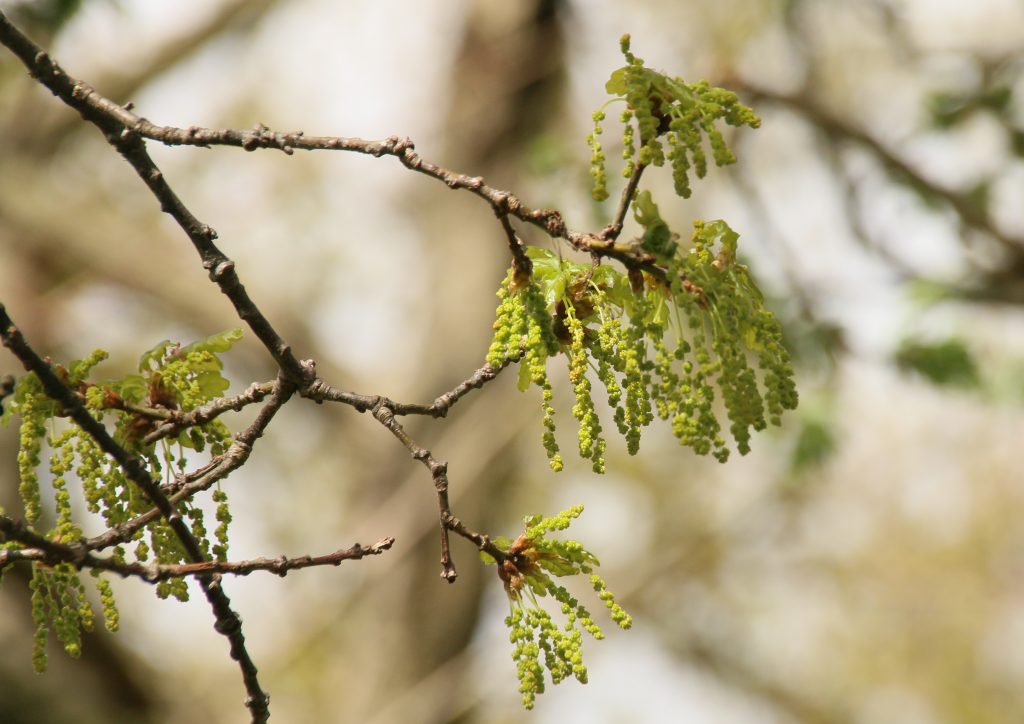
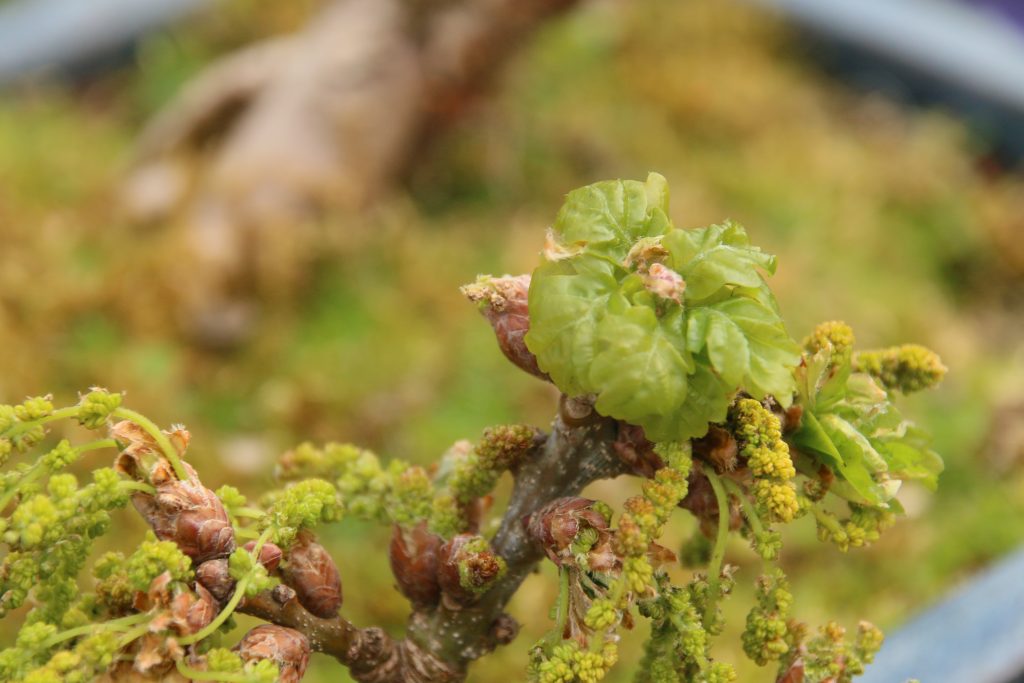
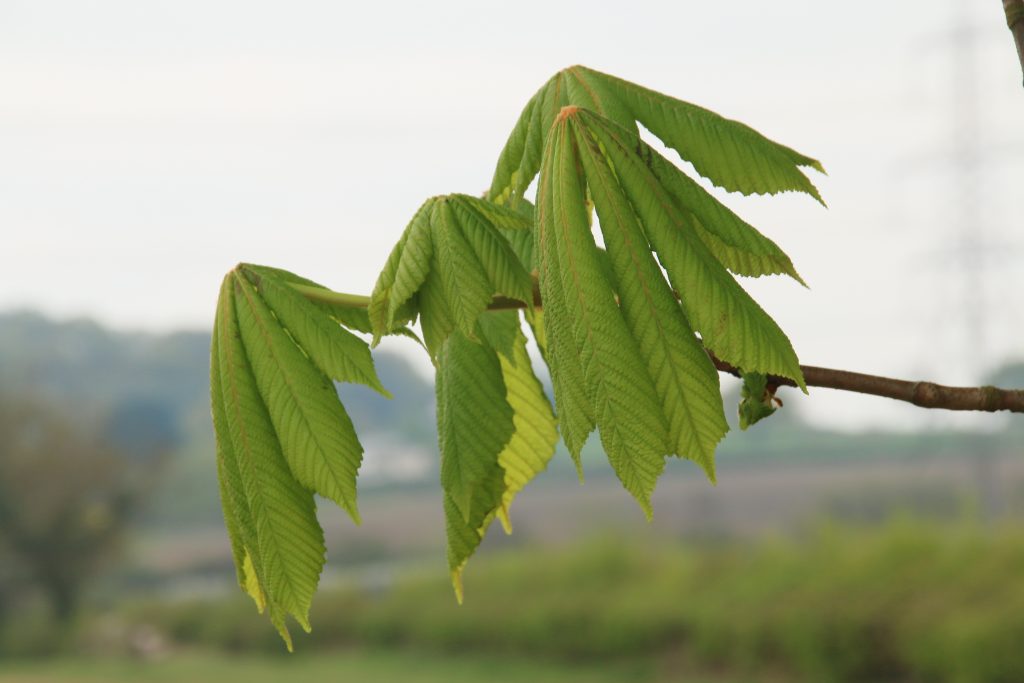
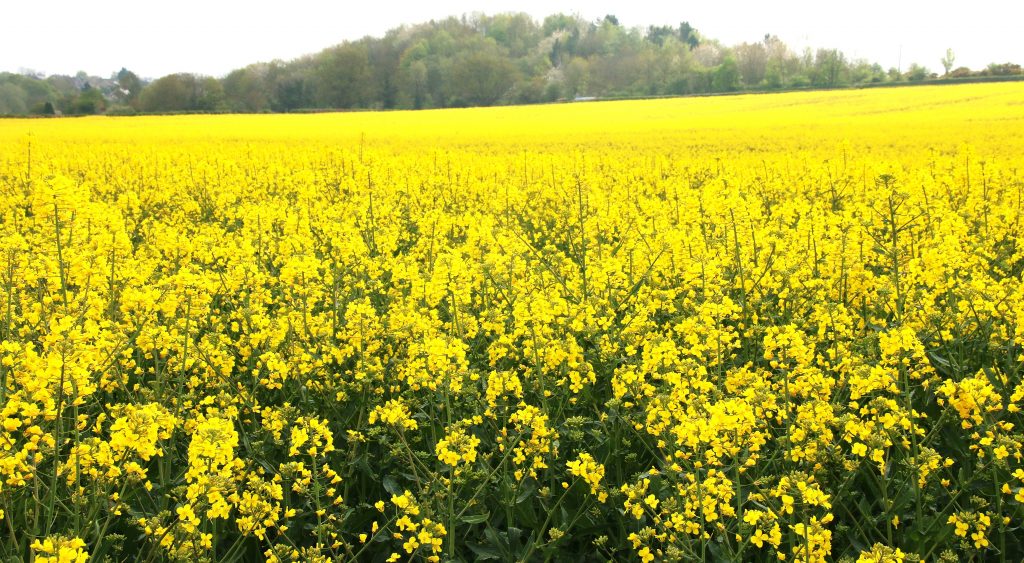
The rape field behind is now in full blossom, the plants now waist high, tangled together and almost impenetrable, which at least keeps the dogs on the field track running alongside the crop. We walk past the rape and cross the footbridge into the “Sheep Field”. A circuit of this large field is a convenient dog walk if we are clock-watching, or maybe in particularly unpleasant weather, as long as there are no ovine occupants. There have been no sheep in the field since Autumn, when the grass stops growing, and perhaps of more significance, before the regular winter flooding of this riverside meadow. Tyre tracks in the long grass suggest that the farmer has been checking the fences, and no-doubt sheep will once again be in residence soon.
We continue across the field, over the stile, into the arable field beyond. Grass has been allowed to grow in the field over winter and into early spring, but the field was sprayed with herbicide, killing the grass and “weeds”, and then disced, breaking up the soil surface. Grass seeds brought to the surface by the discs have sprouted into lines of green. We will see what is eventually sown in this fields, and adjacent fields similarly treated.
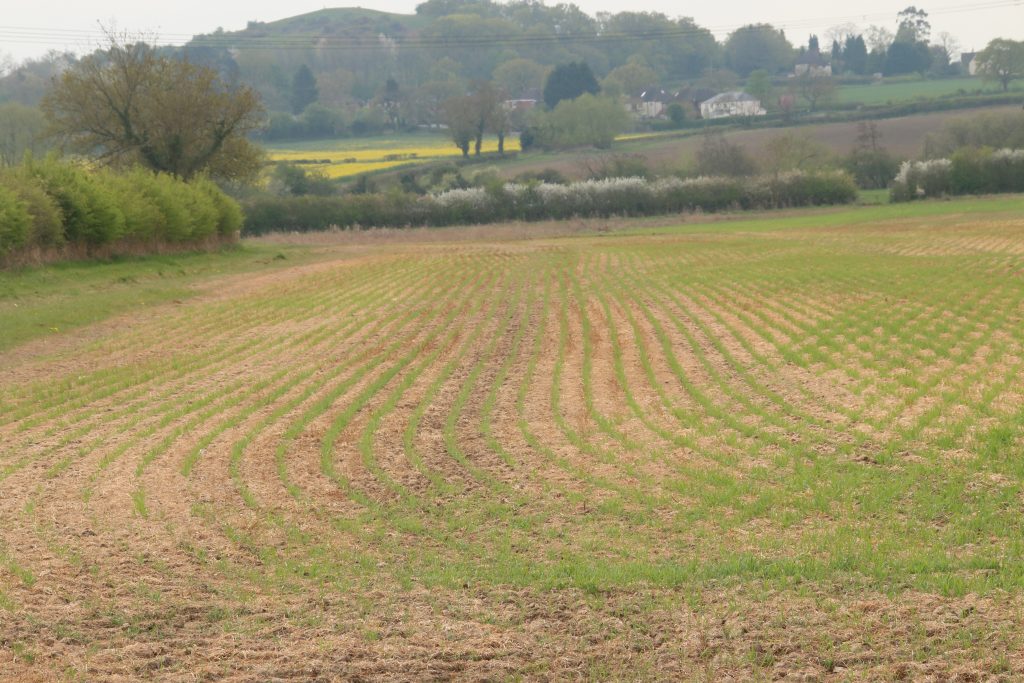
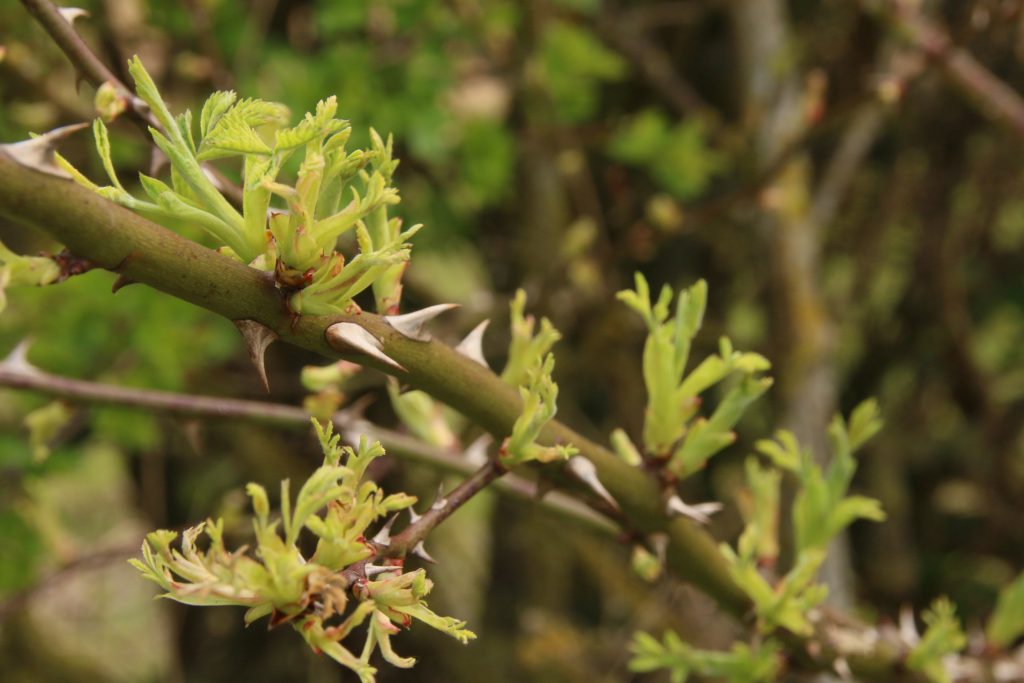
After a circuit of footpaths, I walk back down the path that returns us to the sheep field. An arch of thorns reaches out to trap the unwary, a leggy branch of wild Dog Rose just coming into leaf. At our feet White Dead Nettle is flowering, white flowers on a low plant, looking similar to stinging nettles, but these leaves don’t sting. This common plant flowers for most of the year.
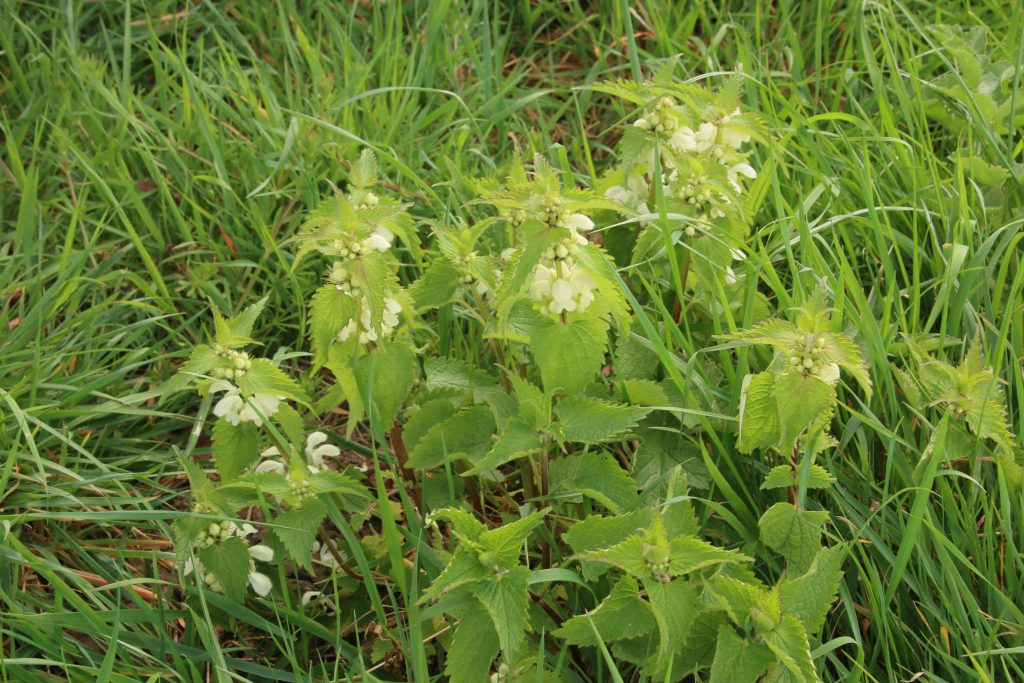
Away from the fields, along the tree-lined path leading down to the village, Hawthorn blossom buds have appeared in the hedgerows. Hawthorn hedges have long been fully clothed in foliage. Clumps of bluebells have appeared. I am sure that these are hybrids, a cross between Spanish Blue bells, which have flowers all around the stem, and the native bluebells, that carpet the ground with sweet smelling flowers on one side of drooping stems.
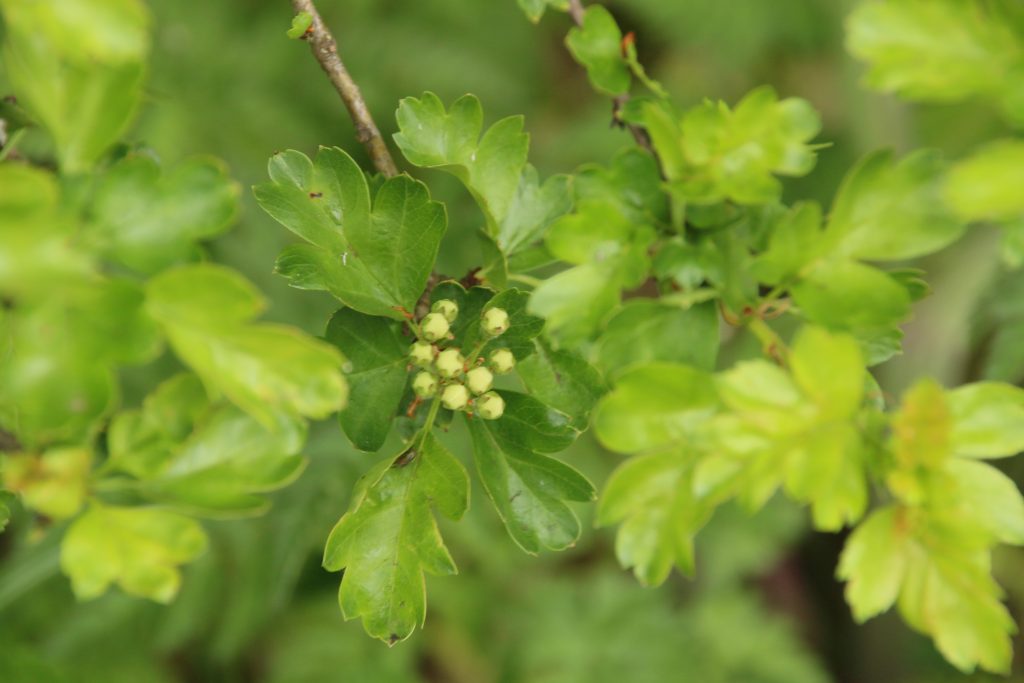
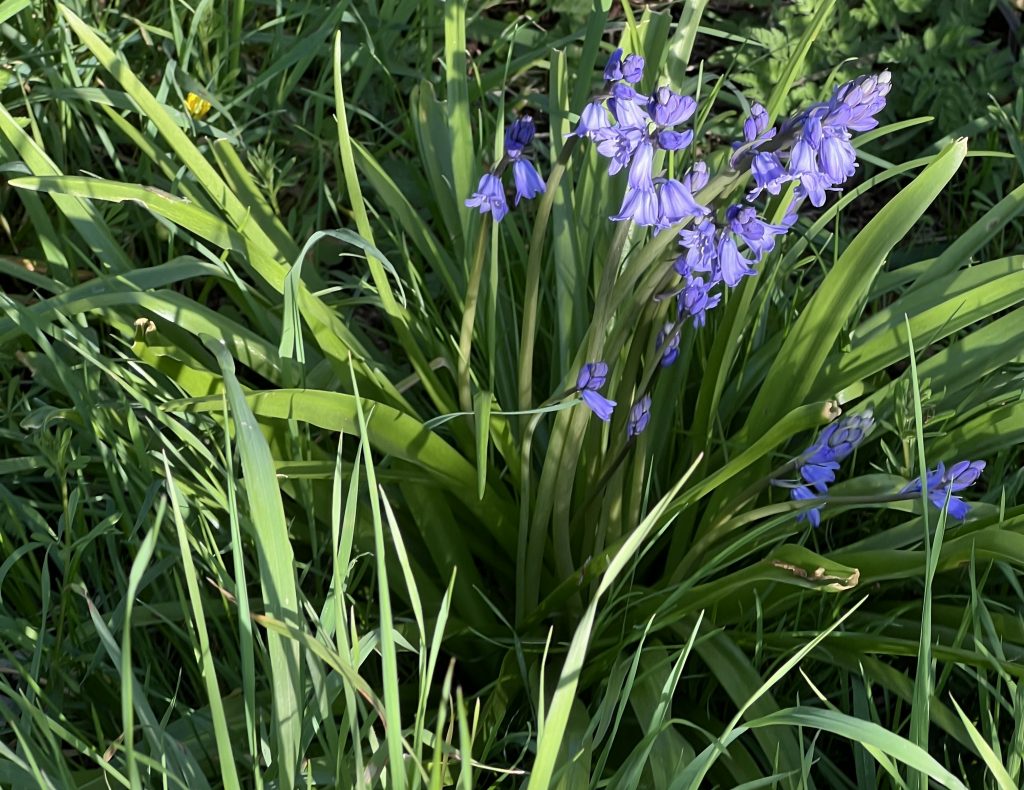
5th April – Kestrel, crow and cockapoos
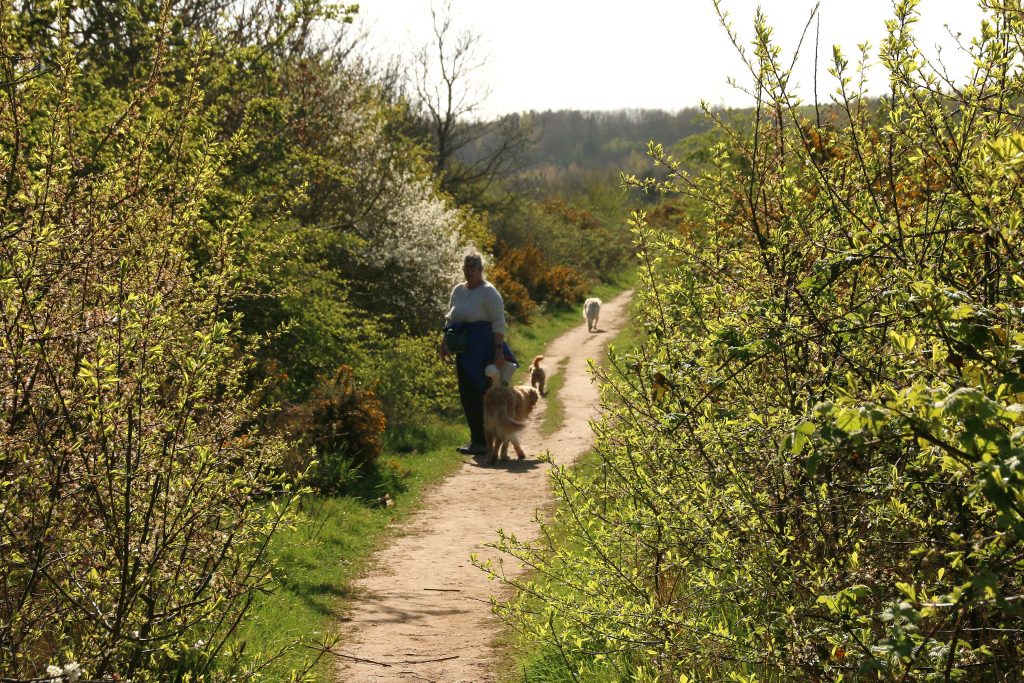
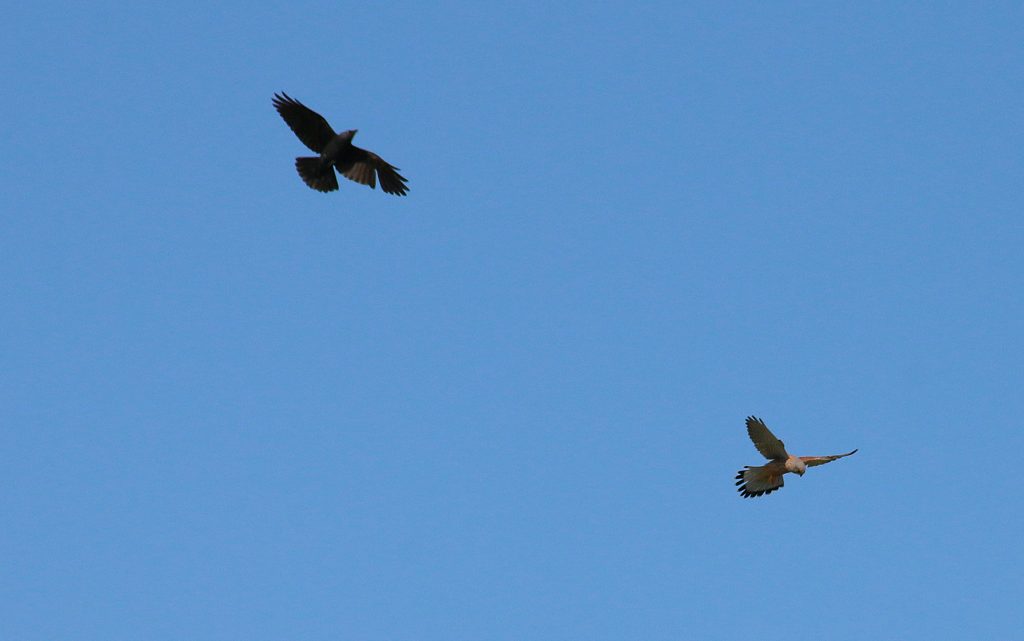
A stroll up onto the “New Hill”, following the quarry edge. Despite the path being used regularly, spring vigour is causing the wild shrubs, mostly wild cherry, to encroach onto the footpath. The quarry company often sends maintenance contractors to keep paths clear, but if foliage begins to take over regular walkers on the routes bring secateurs for DIY pruning. Overhead a kestrel hovers, taking advantage of the updraught rising from the quarry. As we watch, a crow flies over the quarry and begins to mob the kestrel. At this time of the year the crows is probably defending a nest with chicks – there are many crow’s nests on the various ledges of the granite around the quarry walls. After a few minutes the kestrel opts for an easier hunt for small mammals, and heads for the fields below us.
It is a lovely sunny spring morning, mild in spots sheltered from the brisk breeze, and in consequence the paths around the quarry are quite busy. We meet a friend with her “pack” of hounds, all well behaved, which she breeds, accompanied by cockapoo Freddie. We have two additions to the family – a couple of cockapoos which we are “dog sitting” for a week, quite a lot of dogs crowded on a narrow track. Both and dogs and owners all exchange greetings before we go our separate ways. We meet more walkers, dog walkers, bird watchers with binoculars, and some people just out for a stroll, and after turning around and walking back down the hill we meet a couple and their cockapoo. We have to admit that, although cockapoos can be cute, on the whole we prefer Golden Retrievers.
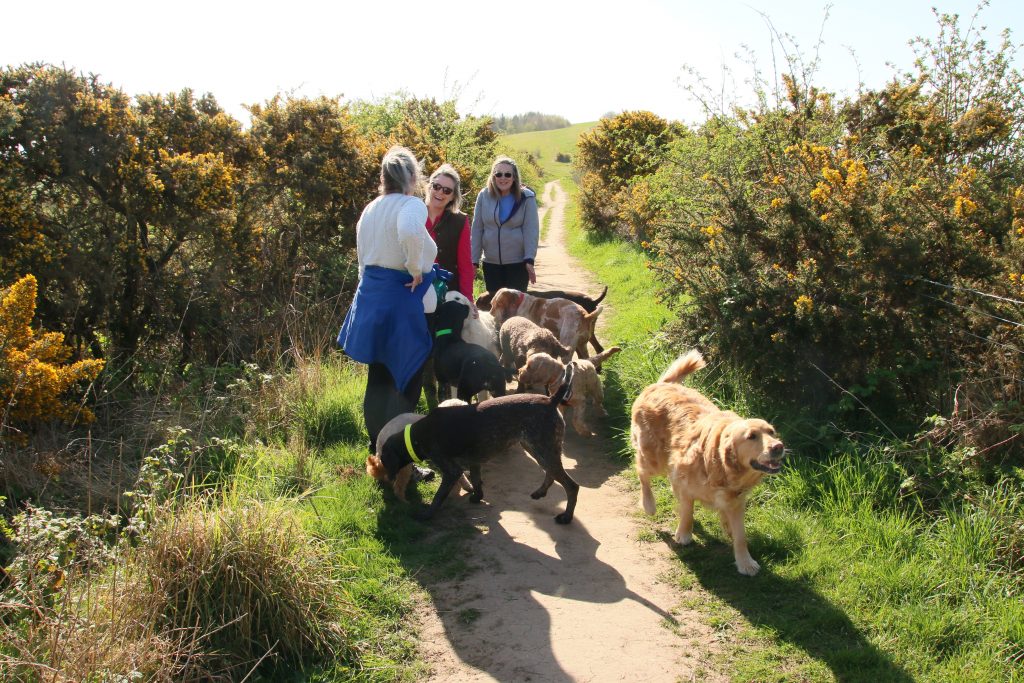
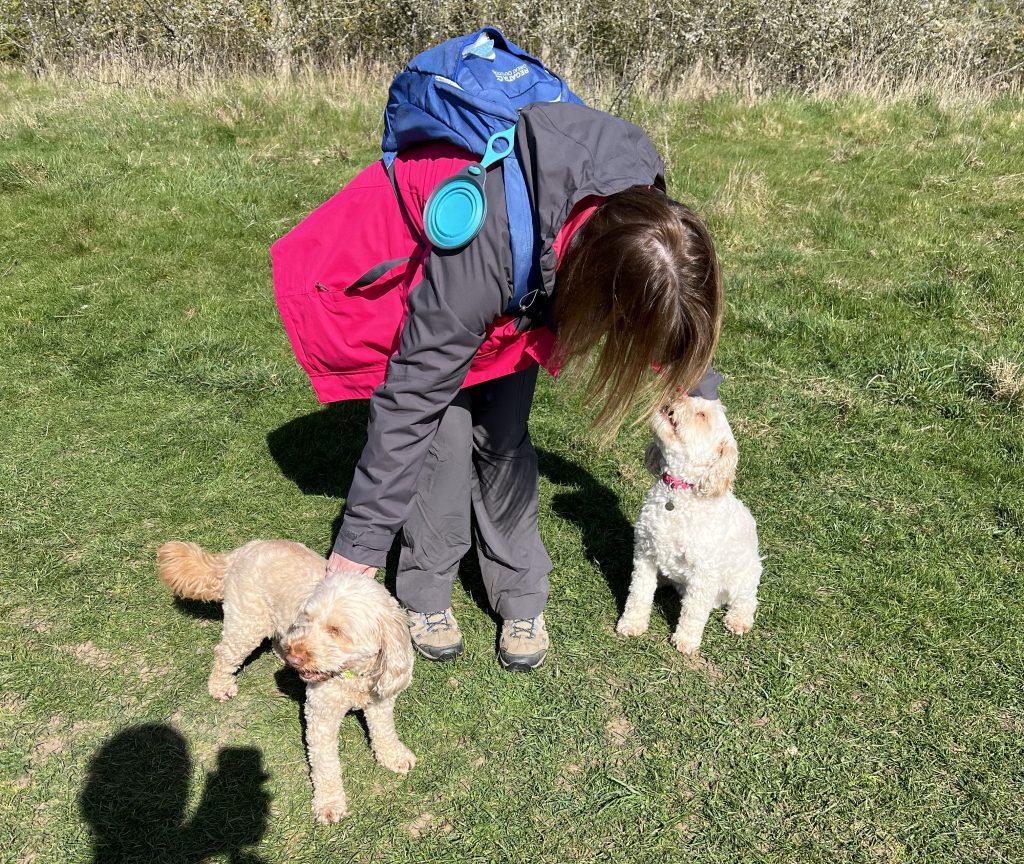
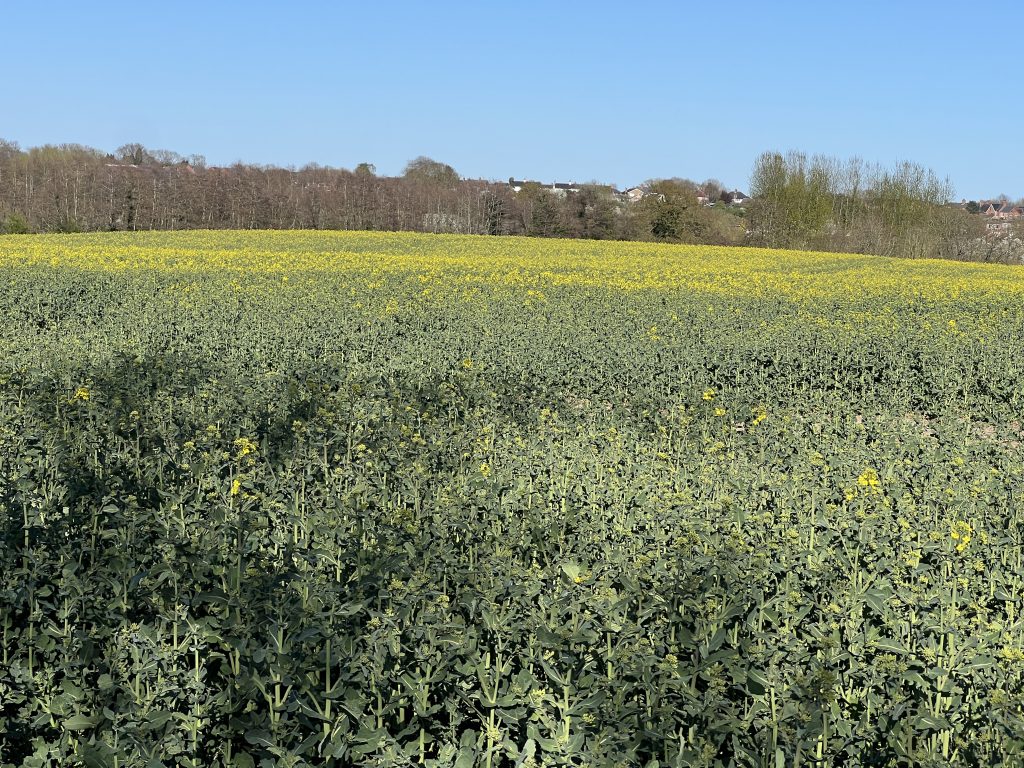
More rape flowers have opened in the field behind us, the greenery now clothed with more than just a hint of yellow. Before long the whole field will be a sea of bright yellow. In the hedgerows the last shrub to produce blossoms is now in full flower – Blackthorn. I have been waiting for this final dramatic display, partly because by the time that the Blackthorn flowers winter is unlikely to return this season, and partly because it is a promise of a bountiful Autumn harvest of sloes for Sloe Gin.
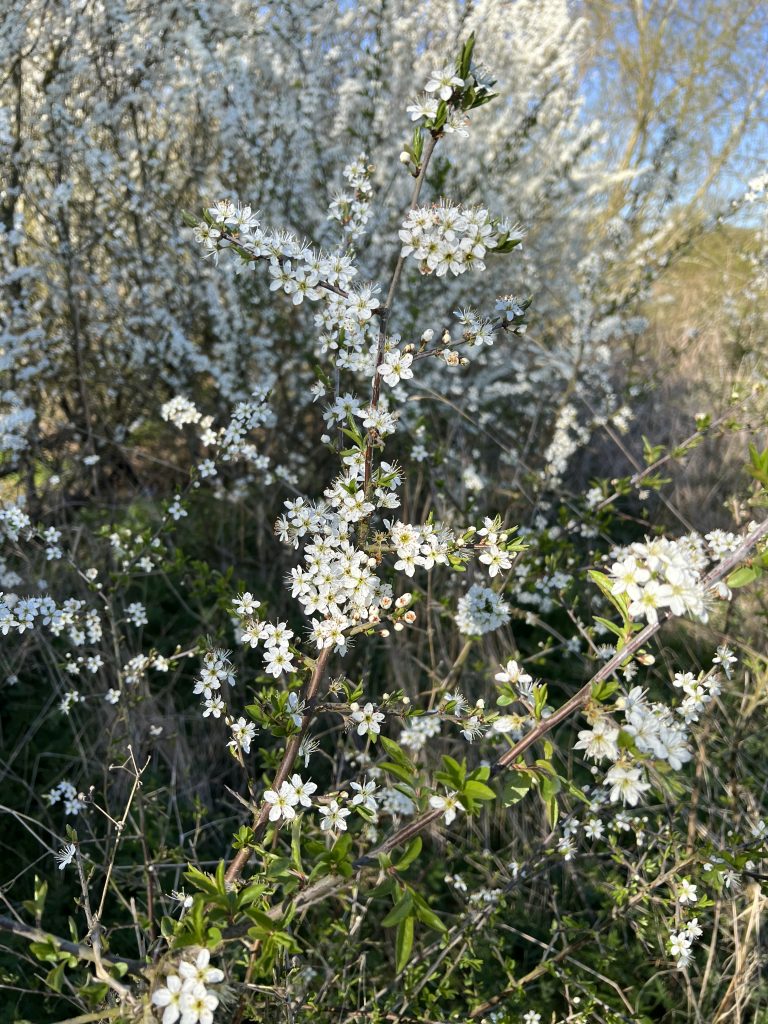
2nd April – Dogs and drones
Walking along the track around the quarry edge I notice someone walking ahead of me, as someone else, with a dog, appears over the brow of the hill walking towards us, and I recognise Cockapoo Freddie and his owner. A spaniel runs out of nearby bushes, starts to play with Freddie, before retreating back to the undergrowth with loud squealing barks. Freddie’s owner stops for a brief chat in the warm sunshine. Like me he is regretting wearing as many layers – it was cold when we each left our respective homes. The spaniel’s owner has turned and is approaching, so Freddie and owner move on. I have met the spaniel’s owner before, and he apologises in advance for any squealing barks, but all three dogs greet each other calmly
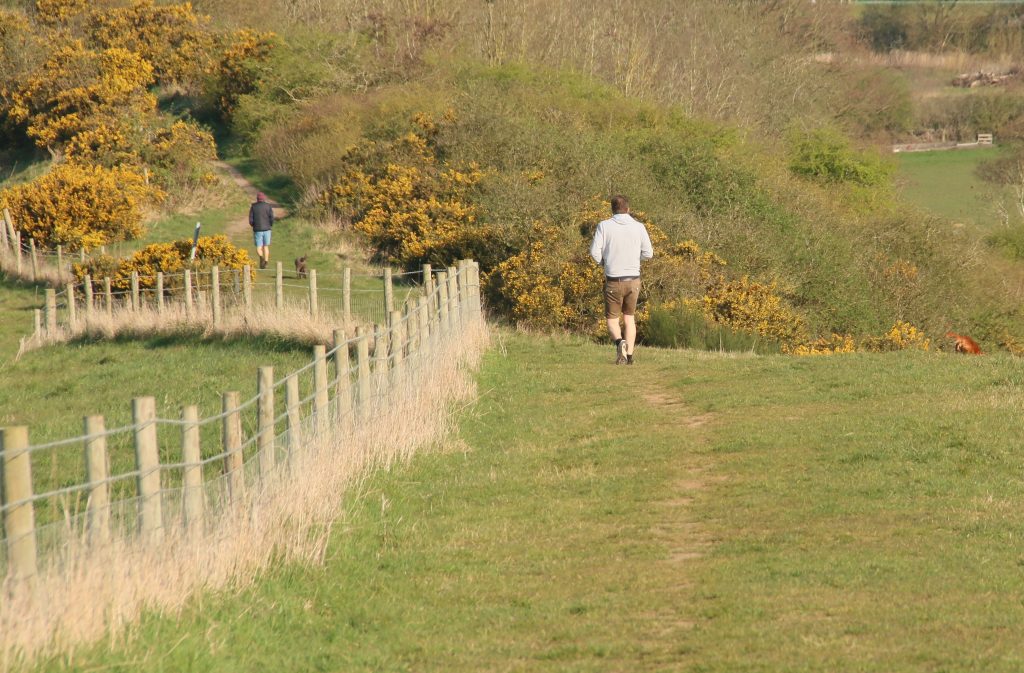
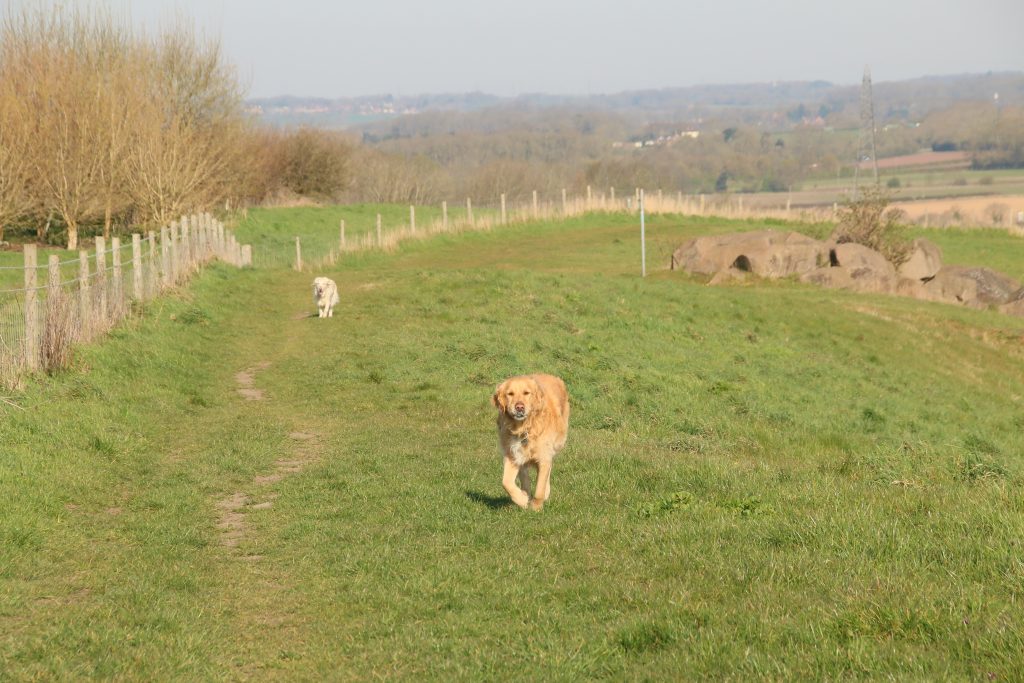
The top of the hill is exposed to the northerly wind, and I decide that wearing an extra layer was a good plan after all! We turn around and descend the steps to the wildlife ponds. I do not like these steps, and most regular walkers agree – they are deep, with one-and-a-half paces between steps, all very awkward, and I take my time as Sam trots ahead to the bottom, where I command him to wait. From his stance I realise that he has spotted someone, and I command him to sit. Just out of sight at the bottom a couple are waiting with an obviously nervous spaniel on a lead. I put leads on both Sam and Ellie as we pass – I am impressed that Sam waited obediently just a few feet away.
At the end of the track back onto the Lane we meet a couple carrying a drone – the quarry and Croft Hill is quite popular with those who like to fly drones. Again, I make the dogs sit and wait, but they stop to rummage in their rucksack. Both dogs decide that there just might be treats in the bag, and bound over – luckily both drone-fliers are quite happy to make a fuss of Sam and Ellie.
1st April – Yellows and purples
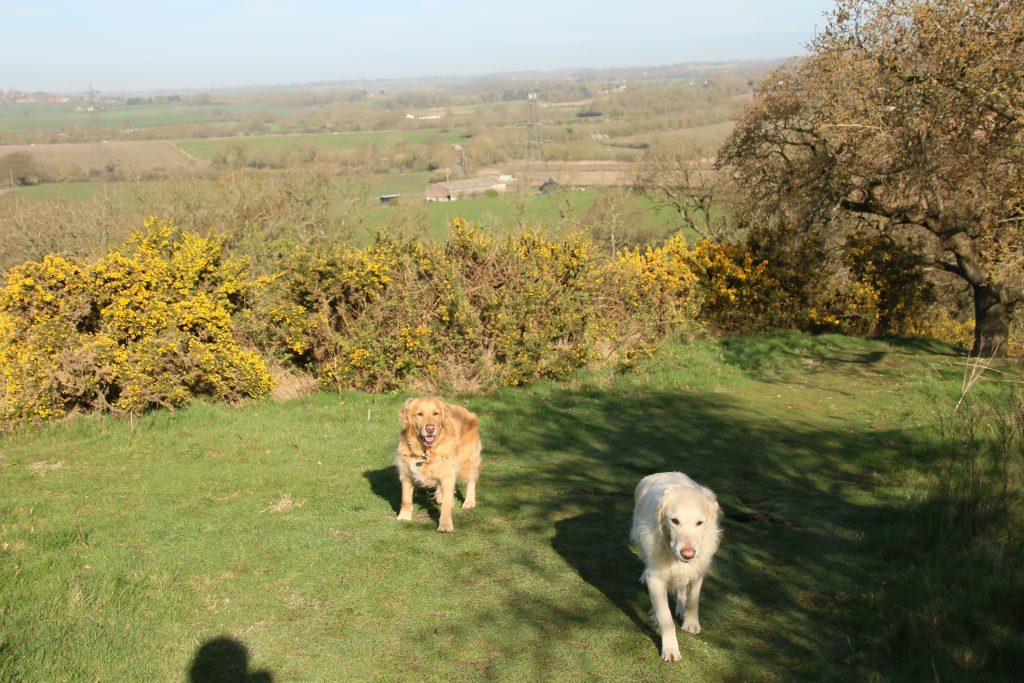
Gorse flowers all year but becomes more vigorous as days lengthen and the weather warms, an early source of nectar for insects. Similarly, the blossom on the Wild Cherry shrubs, that has been on display for two to three weeks, seems to have become invigorated, as more flowers have opened, now a dense white display against bare branches.
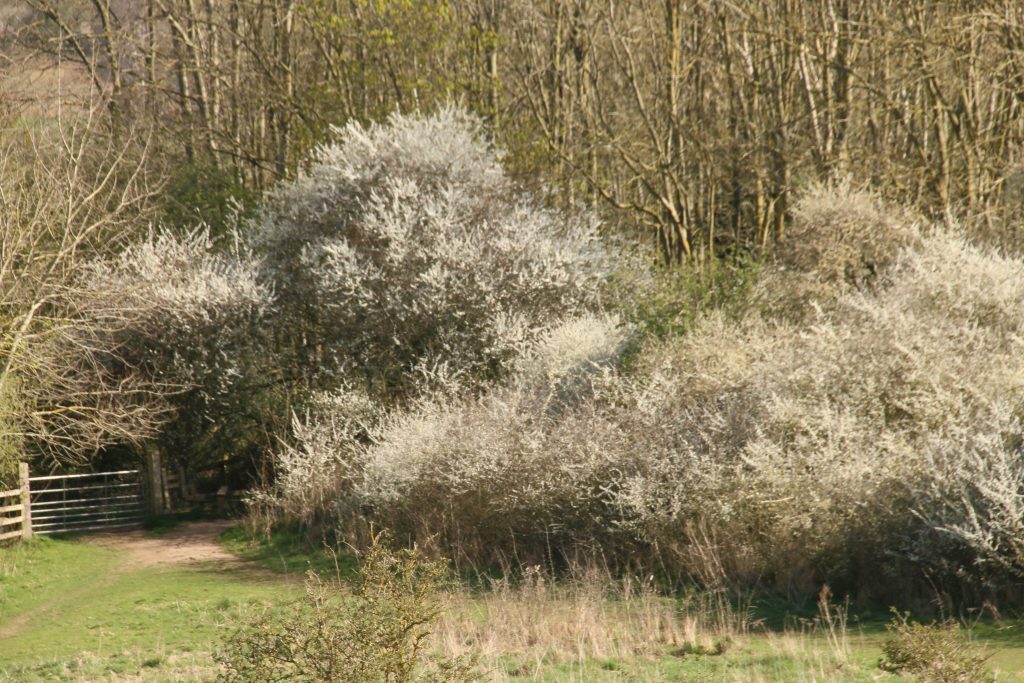
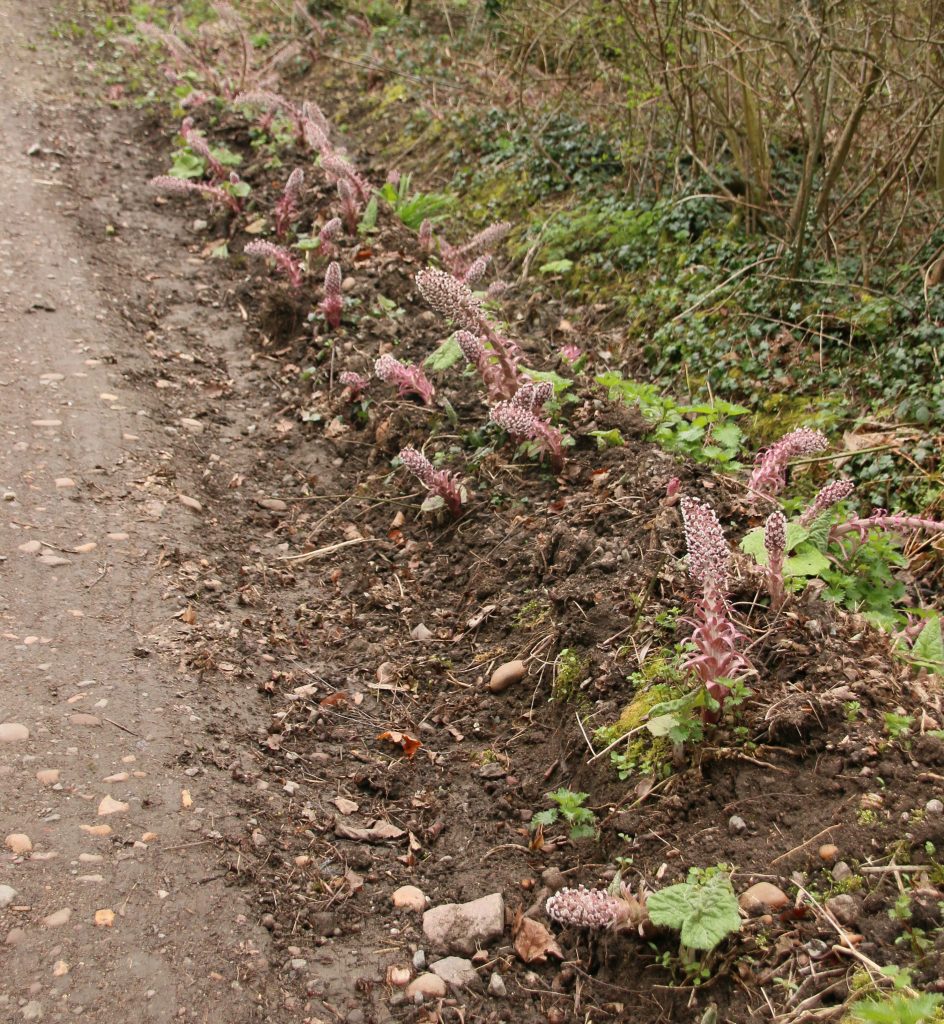
The footpath from The Glebe to the hamlet of Potters Marston follows, for the first few hundred metres, a narrow private road, gravelled and potholed, drained by an adjacent ditch. The ditch was dredged last year, leaving a damp mound of silt following the line of the ditch, burying the established wild rhubarb growing at the edge of the ditch. Reinvigorated by the nutrient-rich silt, the rhubarb has emerged through the mound to display its large purple flowers.
Most trees are still bare, to the advantage of plants beneath, taking advantage of the light. Primroses have mostly been and gone, but daffodils, probably cultivated, are providing a welcome display along footpaths and around the gates into The Glebe.
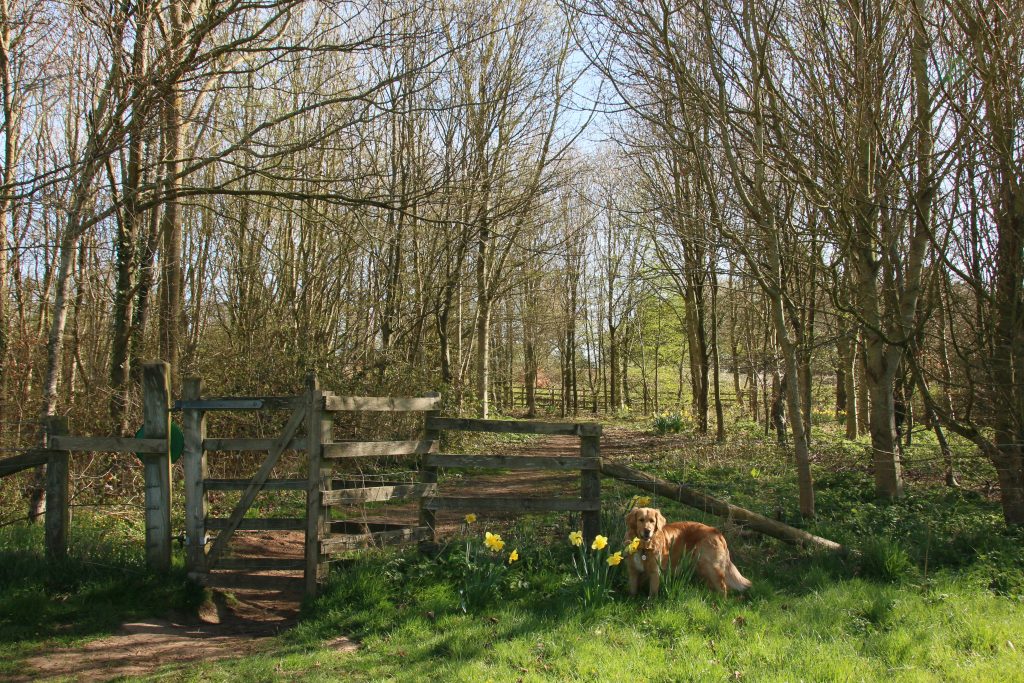
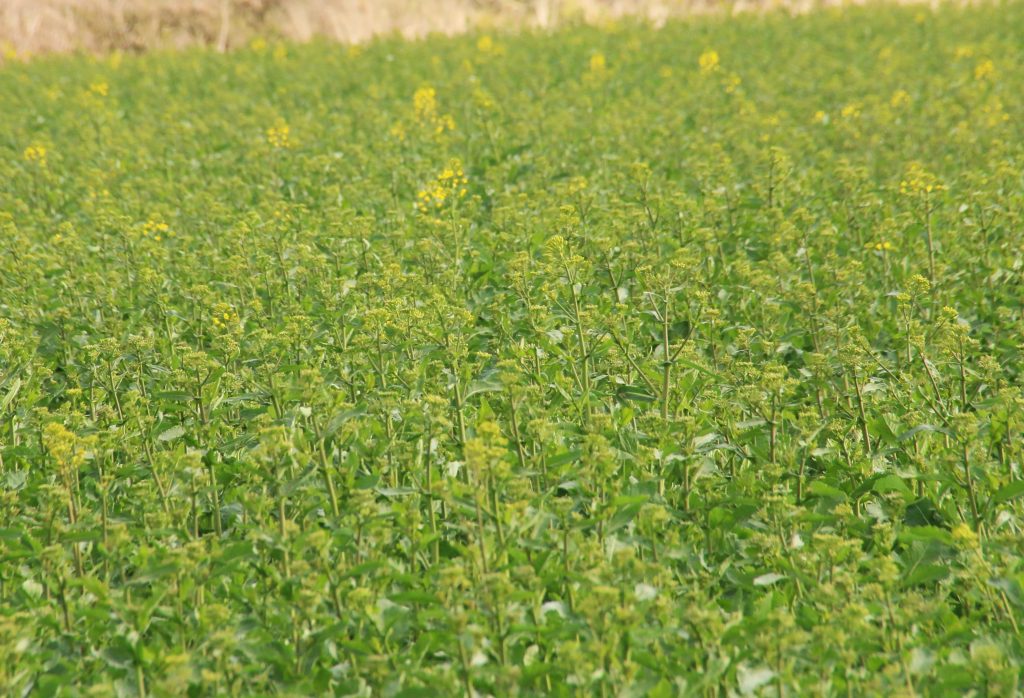
The rape crop behind us is just starting to flower, isolated yellow blooms among the green leaves. This morning the crop was fertilised, small white pellets “broadcast” across the crop. We keep dogs off the crop but must take care to wash paws in case any pellets, which could irritate skin, have ended up on the field path beside the path.
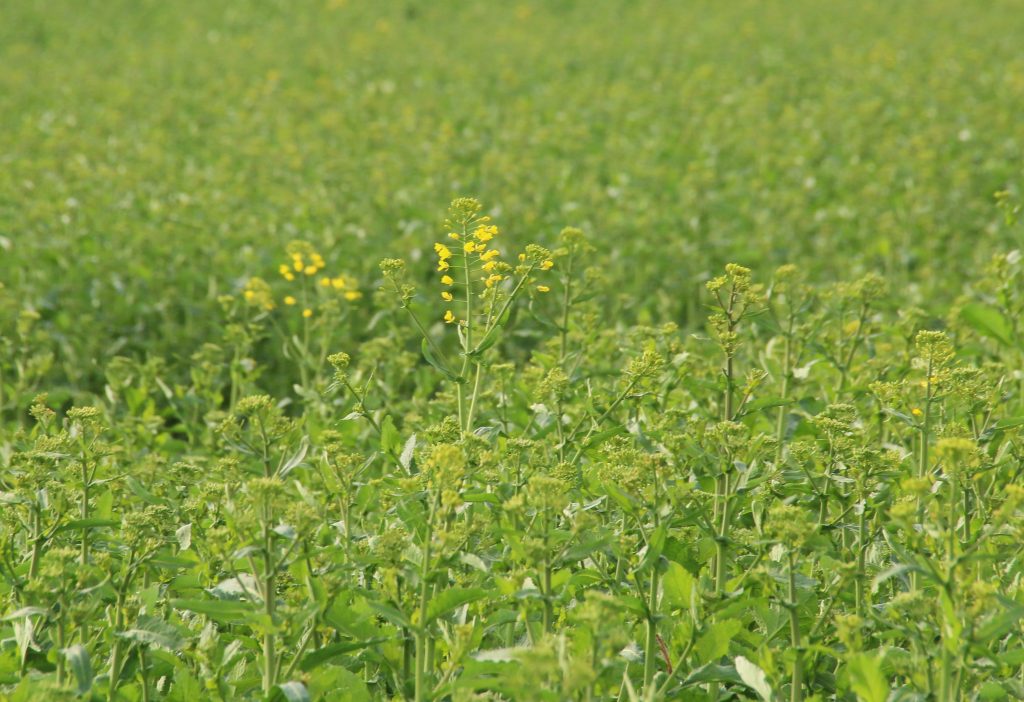
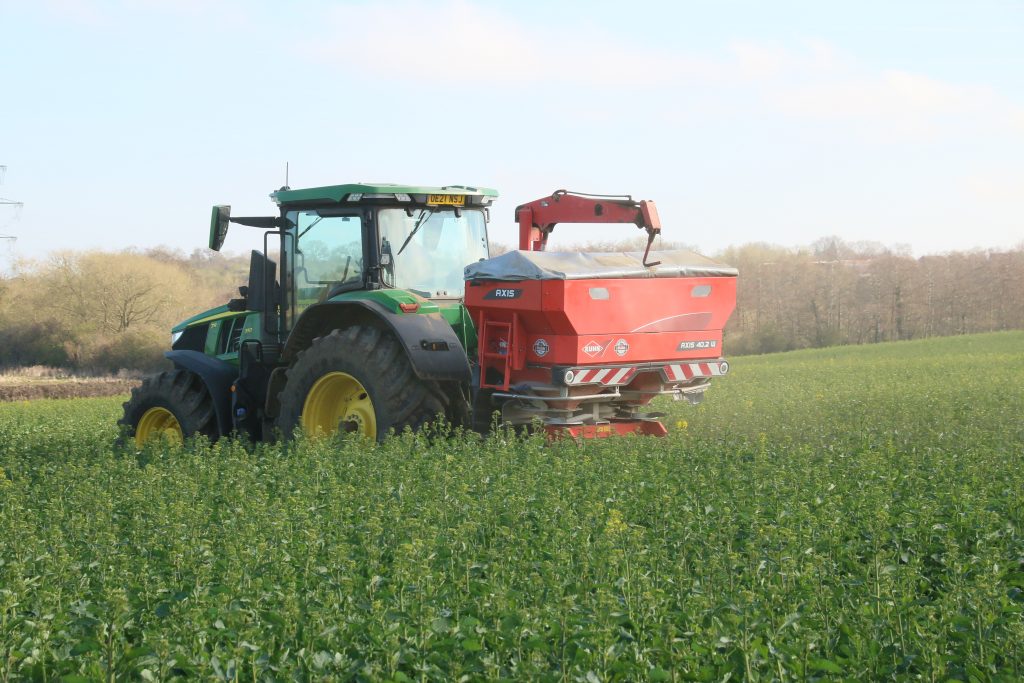
30th March – 50 Shades of green
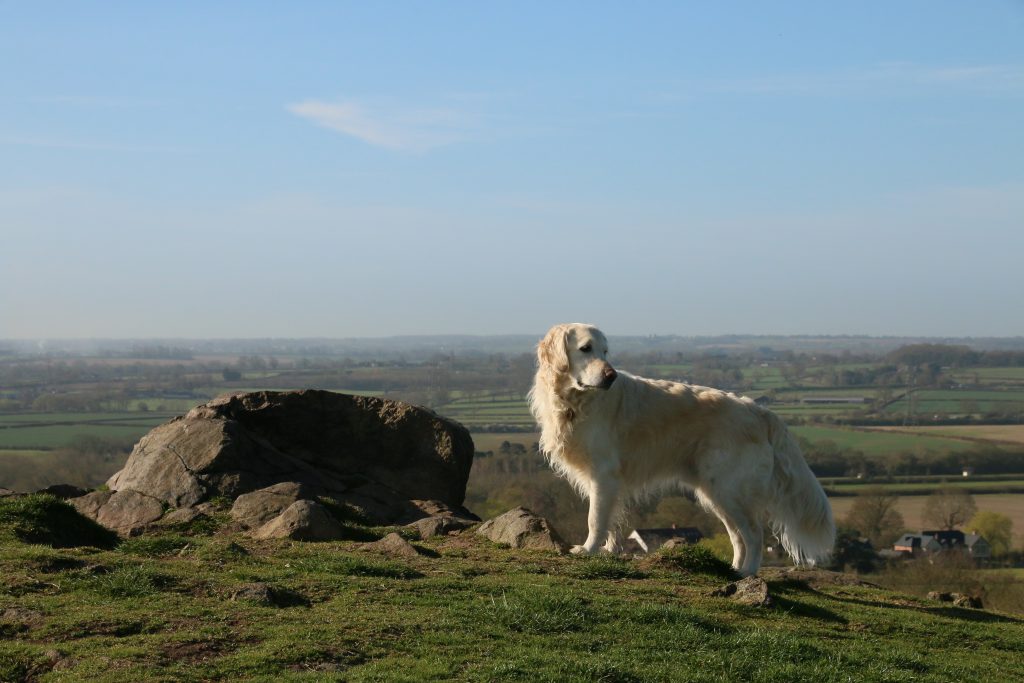
A glorious morning – the northerly breeze that has taken the edge off warm sunshine for several days has now abated, and with a clear blue sky, the morning walk was pleasantly warm, and the views clear. Nature has been in Spring Moder for a few weeks, but with the change in the weather, today there was a spring in my step too. Sheep are now lambing outdoors, although so far, no lambs in fields alongside routes where we walk. One of our dog-walking friends has sheep in the field beside her garden and noticed the farmer picking up a dead lamb. Lambs, along with the young of every other species of animal, are vulnerable. Our friend reported that Mum spent some time sniffing the place where her lamb had been.
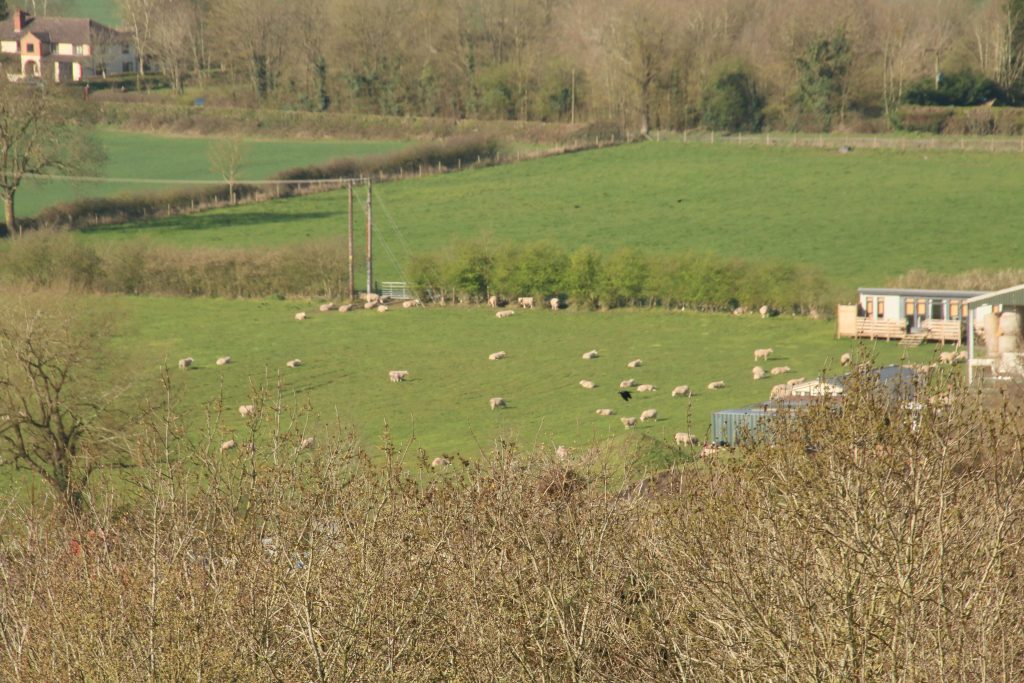
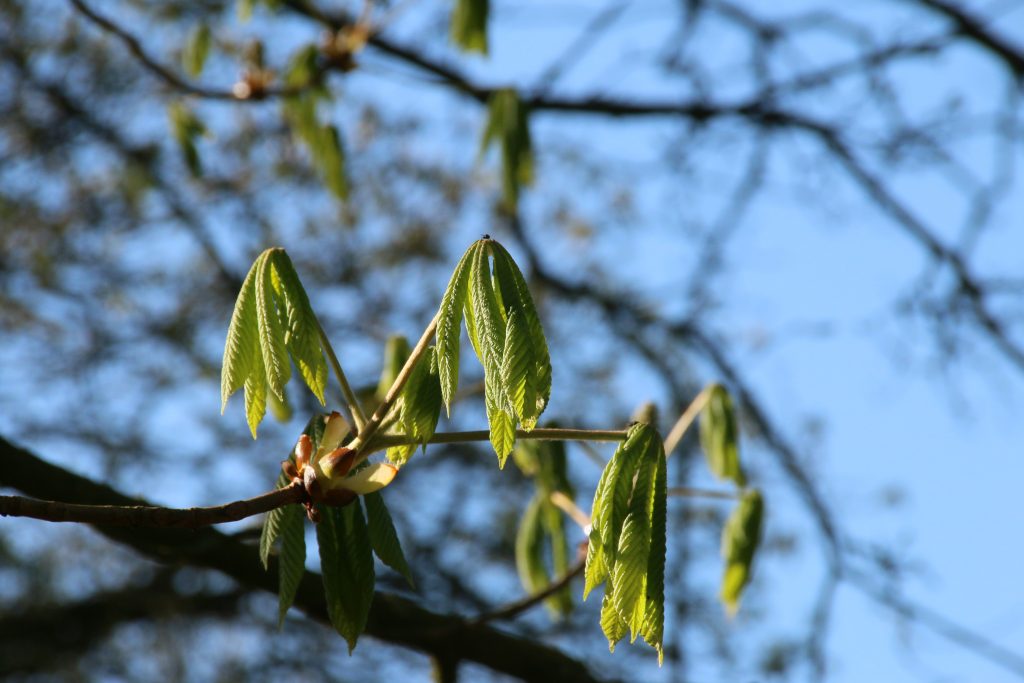
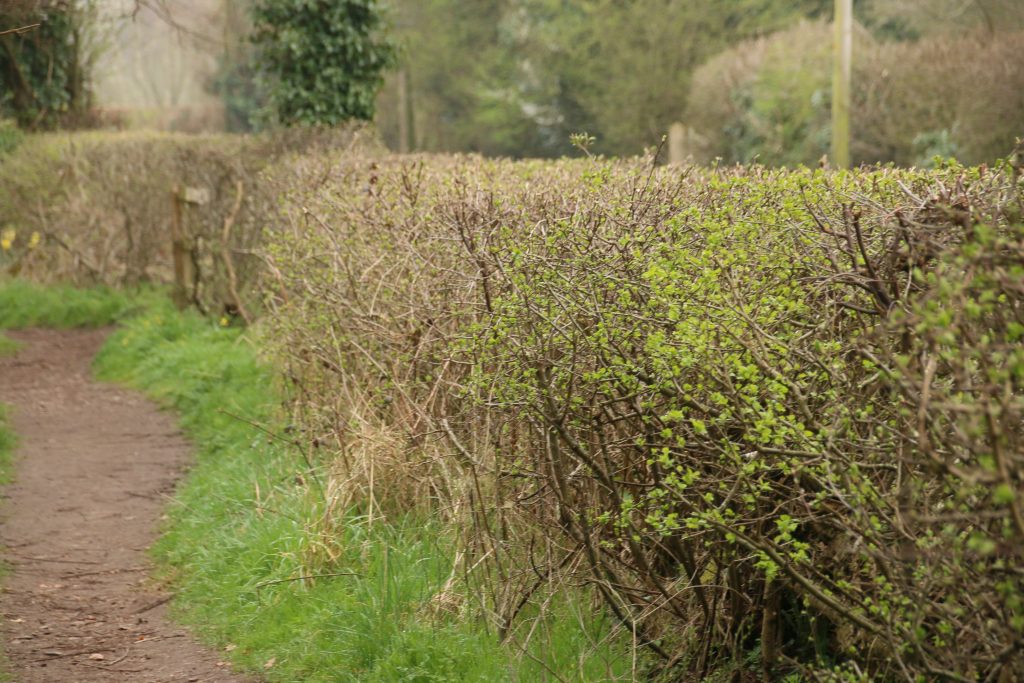
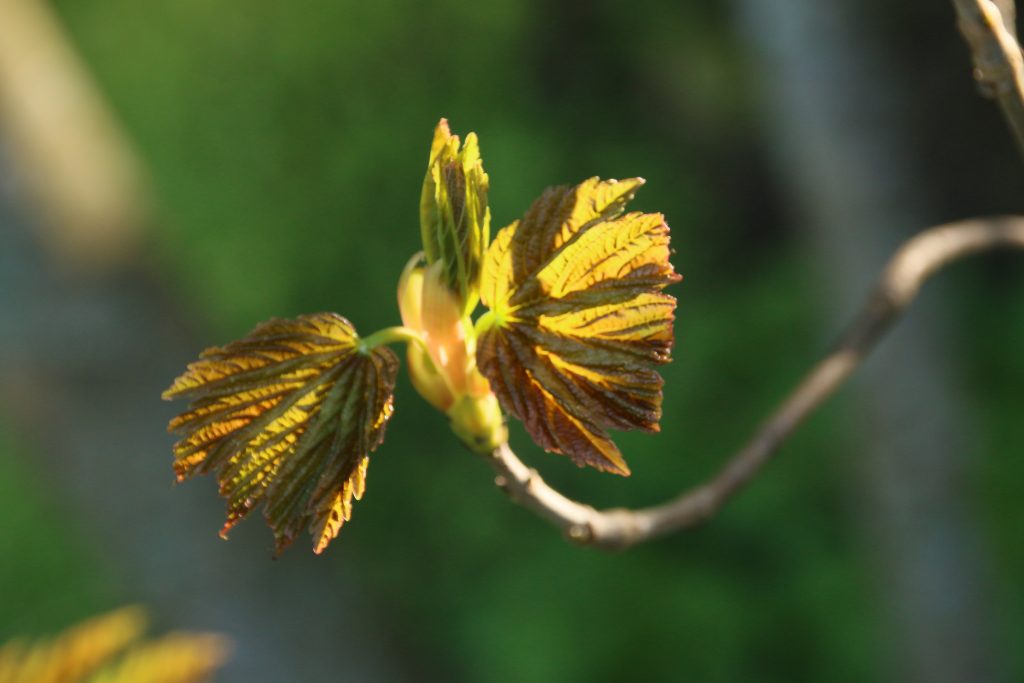
Young leaves are sprouting on hedgerows and trees. Hawthorne hedges display a green sheen as buds burst. Horse Chestnuts leaves have emerged from their Sticky Buds and hang down like small dishcloths left out to dry. Young maple leaves, tinged with pink, glisten in sunshine, pale lime leaves sprout from twig-ends, and delicate hazel leaves line the path beneath the trees that leads into Croft Glebe.
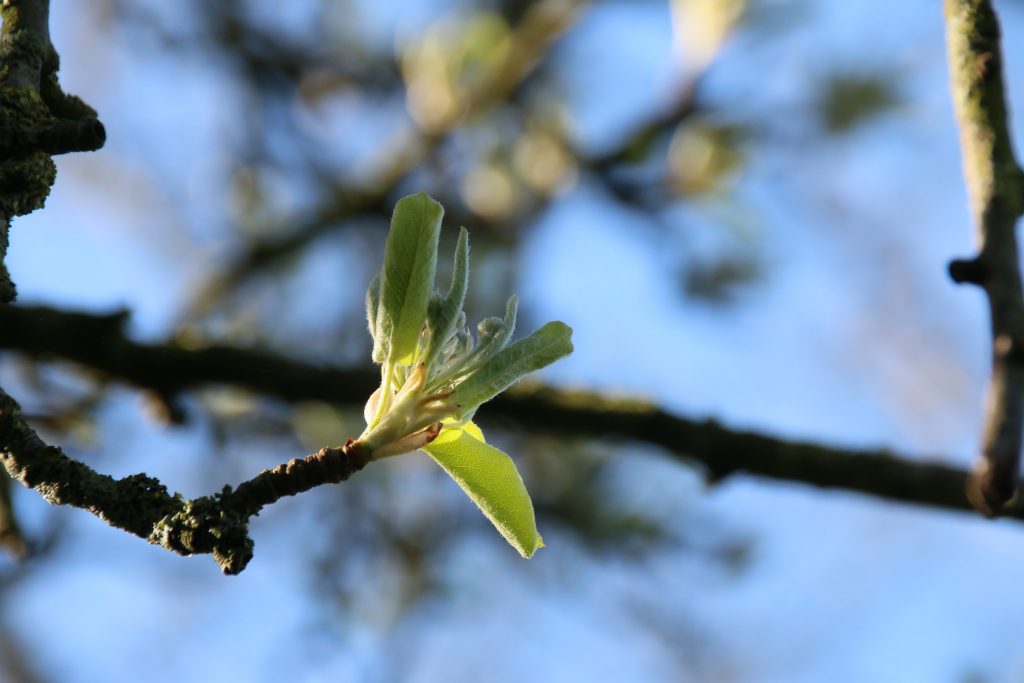
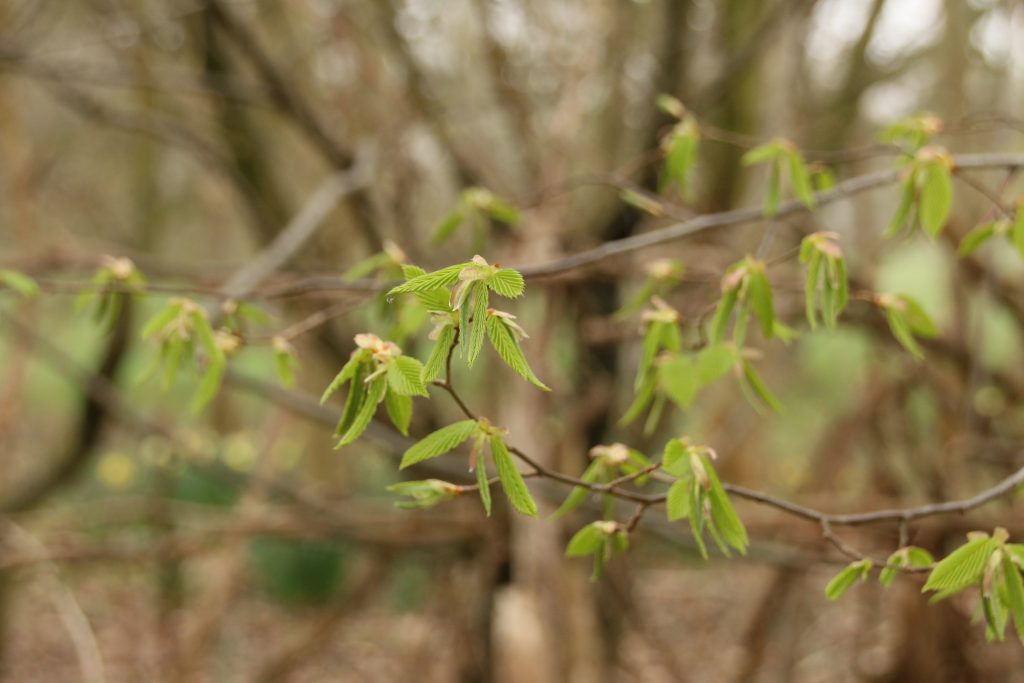
Blackthorn, the source of sloes in Autumn, blossoms late, and small tight flower buds are just appearing. On Croft Glebe, more a field with individual trees rather than a small woodland, Hornbeam catkins have appeared. The pace of life in nature is accelerating.
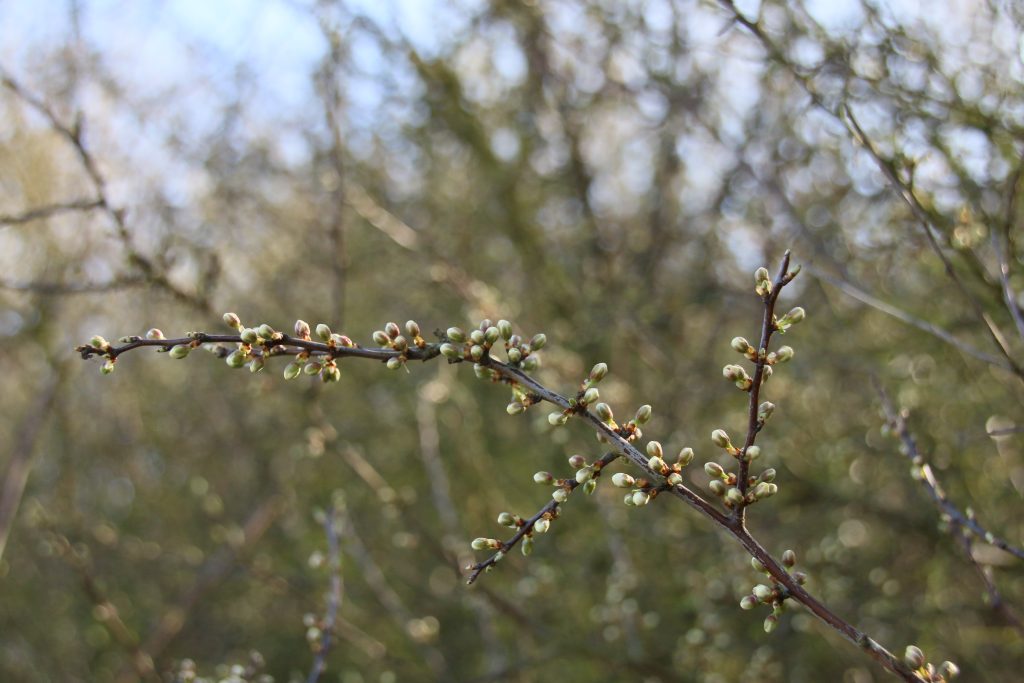
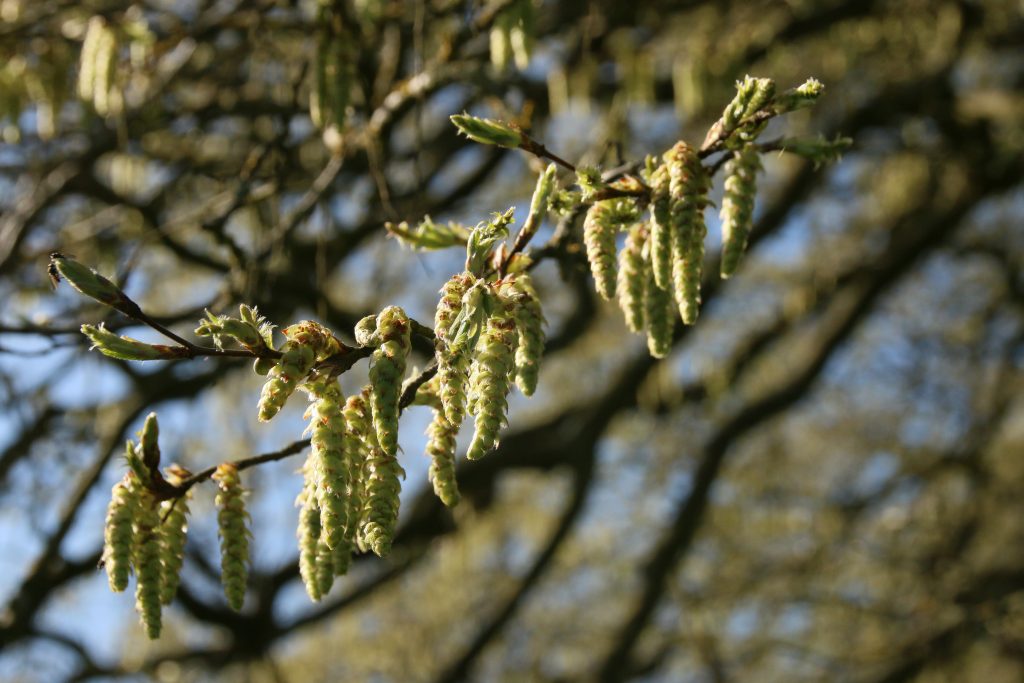
18th March – Spring growth
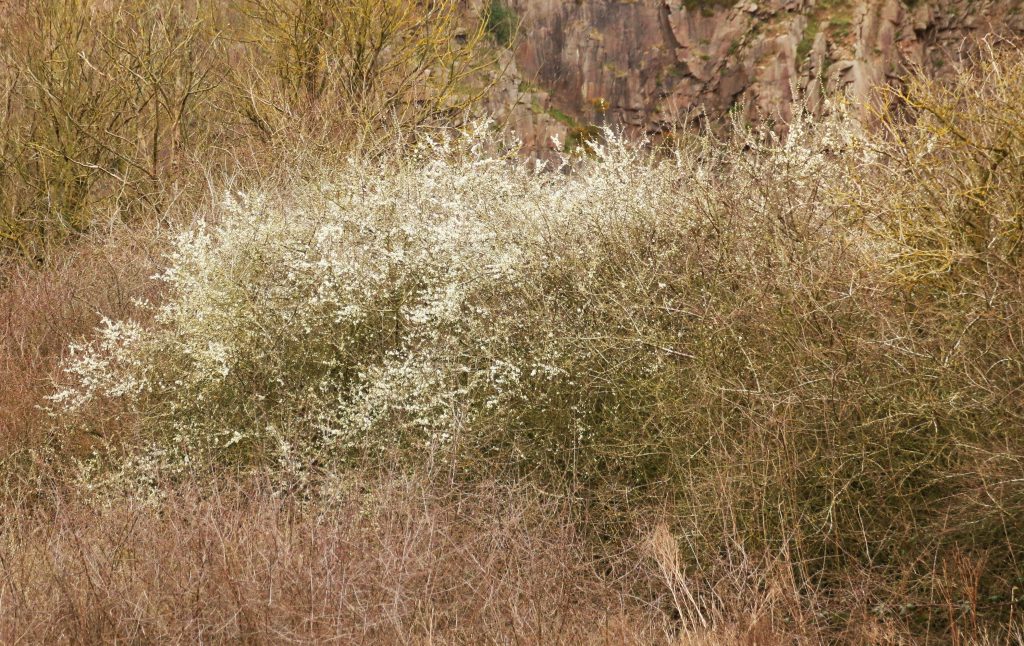
Wild cherry blossom now dominates the hedgerows on and around Croft Hill. Leaves on shrubs and trees are still, on the whole, just buds, and so the white cherry contrasts against the greys and browns of the bark of these large wild shrubs. Wild cherry trees, more wild shrubs, prefer light conditions to the shade of woodland, and commonly grow around the edges of woods. On Croft Hill the Cherry shrubs hug the edge of quarry, following the fence line that separates the quarry edge from the public accessed slopes of the Hill. This hedgerow faces west, onto open rabbit-grazed turf, and so enjoys the afternoon and evening sunshine, increasingly warm at this time of the year.
The path that leads down through trees and scrub to the gate onto the Lane that leads into Huncote is shaded by trees on one side and by the hillside rising up to the quarry edge on the other. This path receives limited sunshine, even in summer, and is one of the last paths to dry out after winters. Muddy areas traverse the path, with narrow tracks to either side where walkers have tiptoed around the edge in an attempt to keep boots clean. No blossom here, just Alder catkins cascading from bare branches.
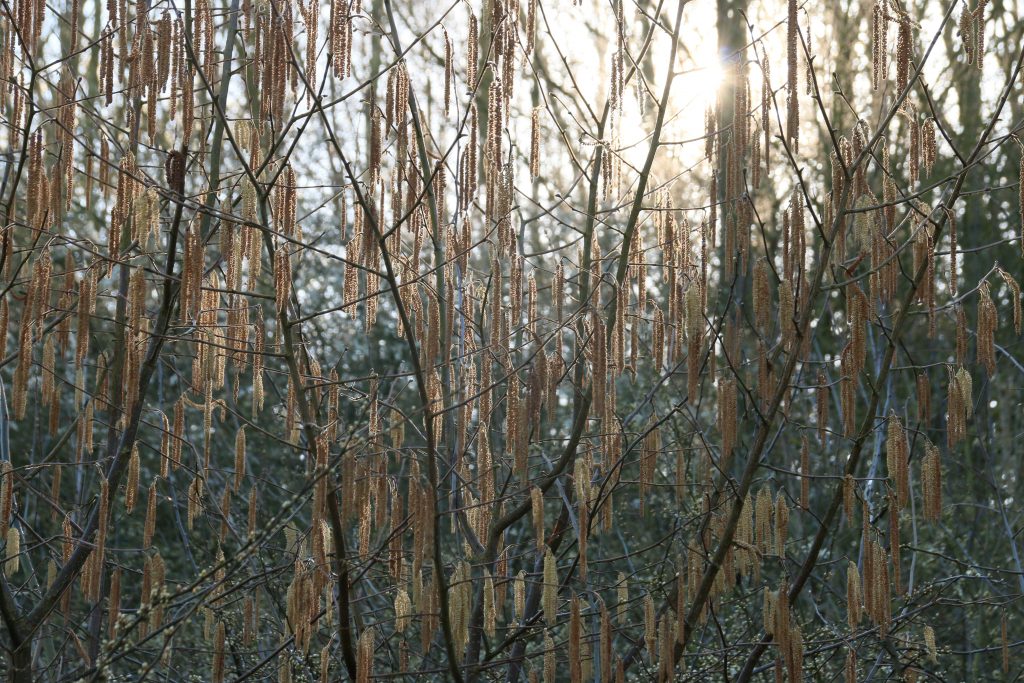
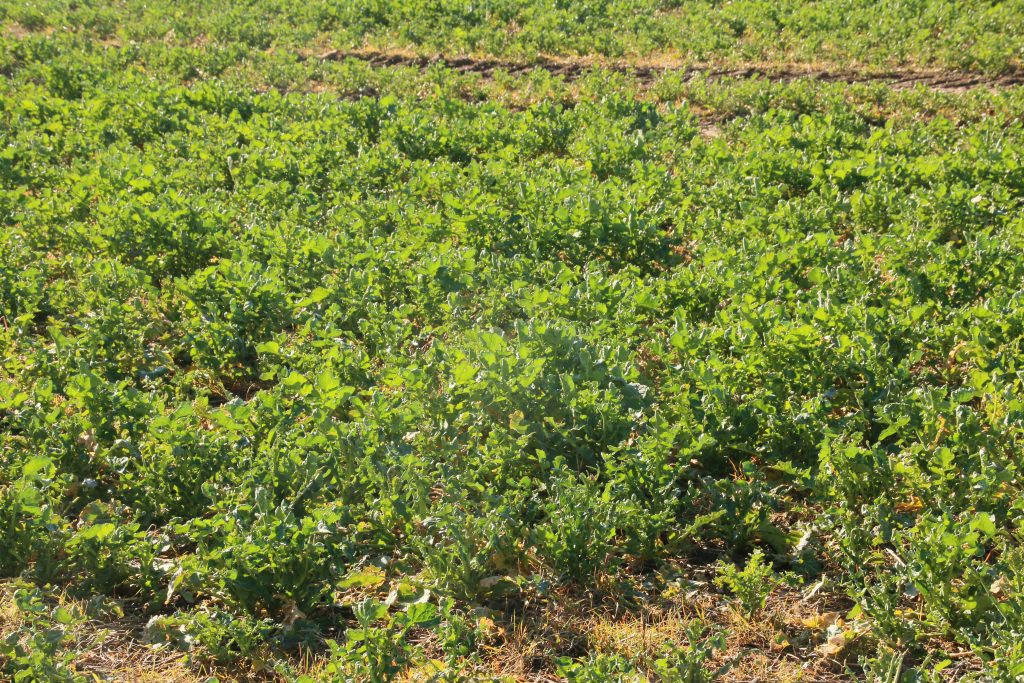
The rape in the fields behind us is growing rapidly, doubling in size over just a few days. The exceptions are the areas which have been ravaged by pigeons, corners where flocks seem to graze undisturbed by the bird scarer periodically exploding on the other side of the hedge some distance from these patches. Here the remaining rape leaves are almost shredded, and the plants stunted.
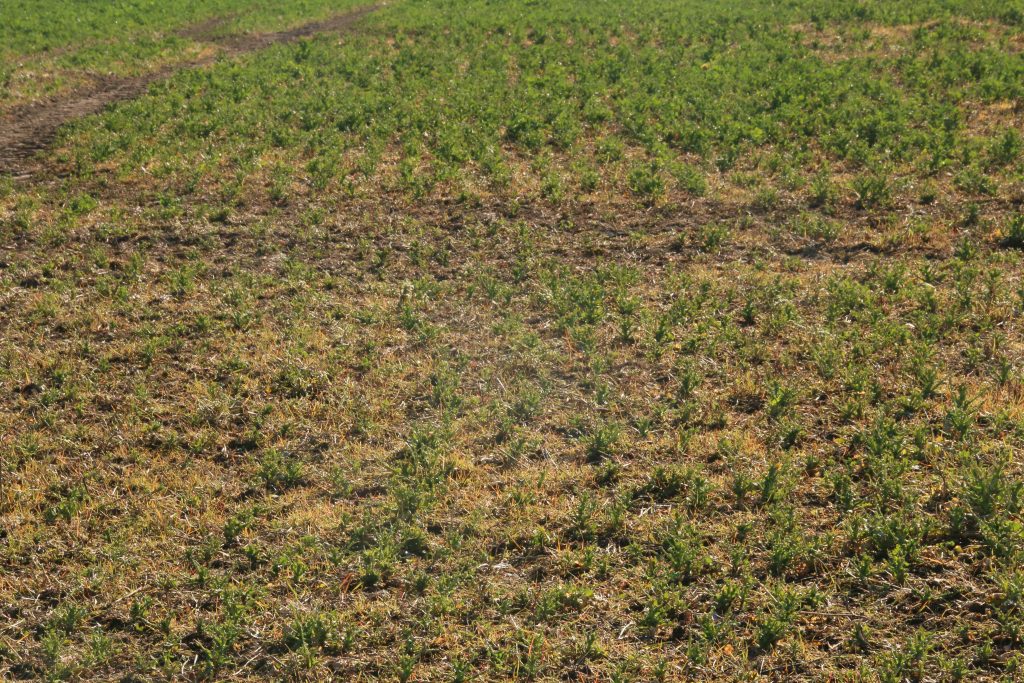
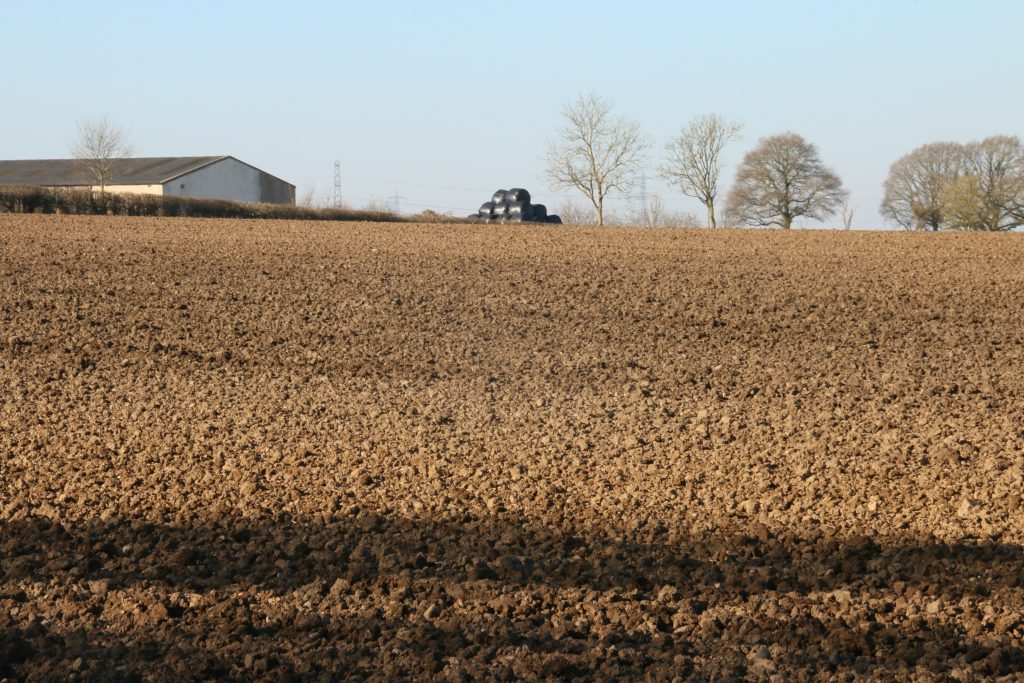
When the rape was drilled (sown) in the two fields behind us, a third field, was left uncultivated, the stubble left in the ground, excellent for insects and grubs, and so for the food chain above them. A few weeks ago, it was ploughed, the stubble turned over, leaving large clods of compact soil. These have now been broken up, with great clouds of dust following the tractor. The soil will shortly be tilled, broken to a fine tilth ready for seeds to be drilled.
10th March – blossoms
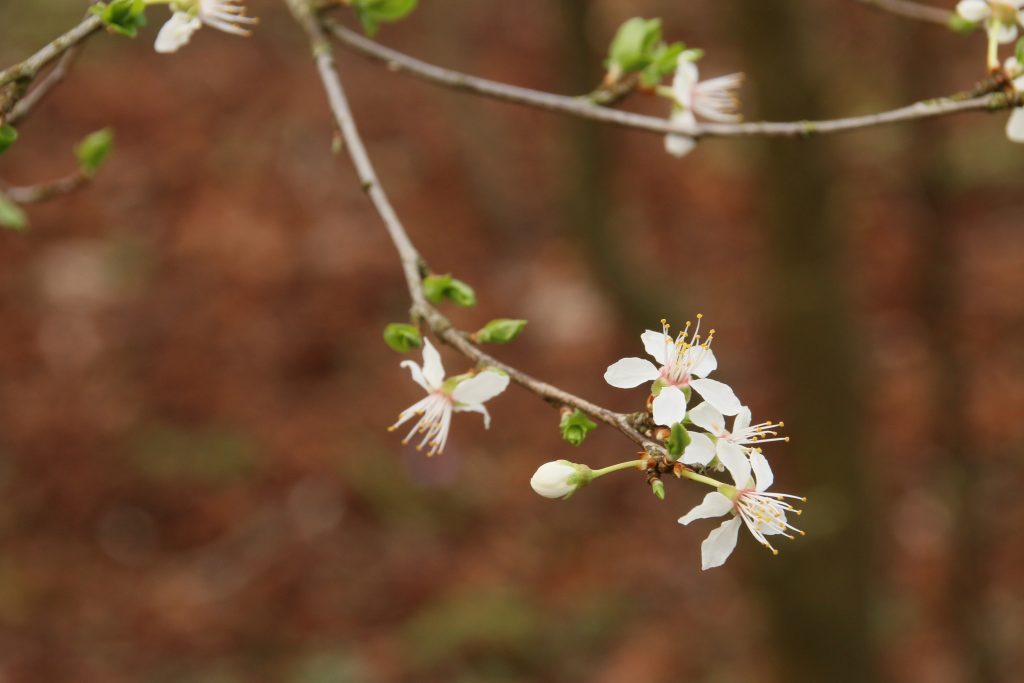
Just a few days since the last post, but, at last, Spring is now springing. Hazel leaves are just emerging from stems that, until now, only displayed male catkins. Young Hawthorne leaves are opening – it will be a few weeks before the Hawthorne blossoms. Wild Cherry shrubs are in full blossom, both in hedgerows and, not quite as vigorous, in shady woodland.
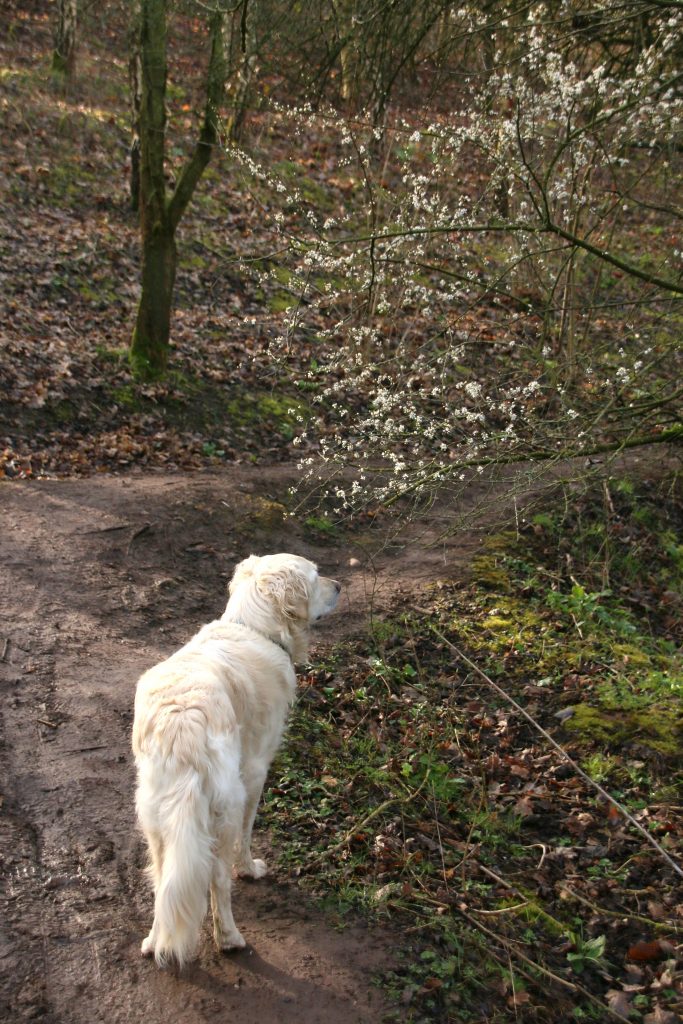
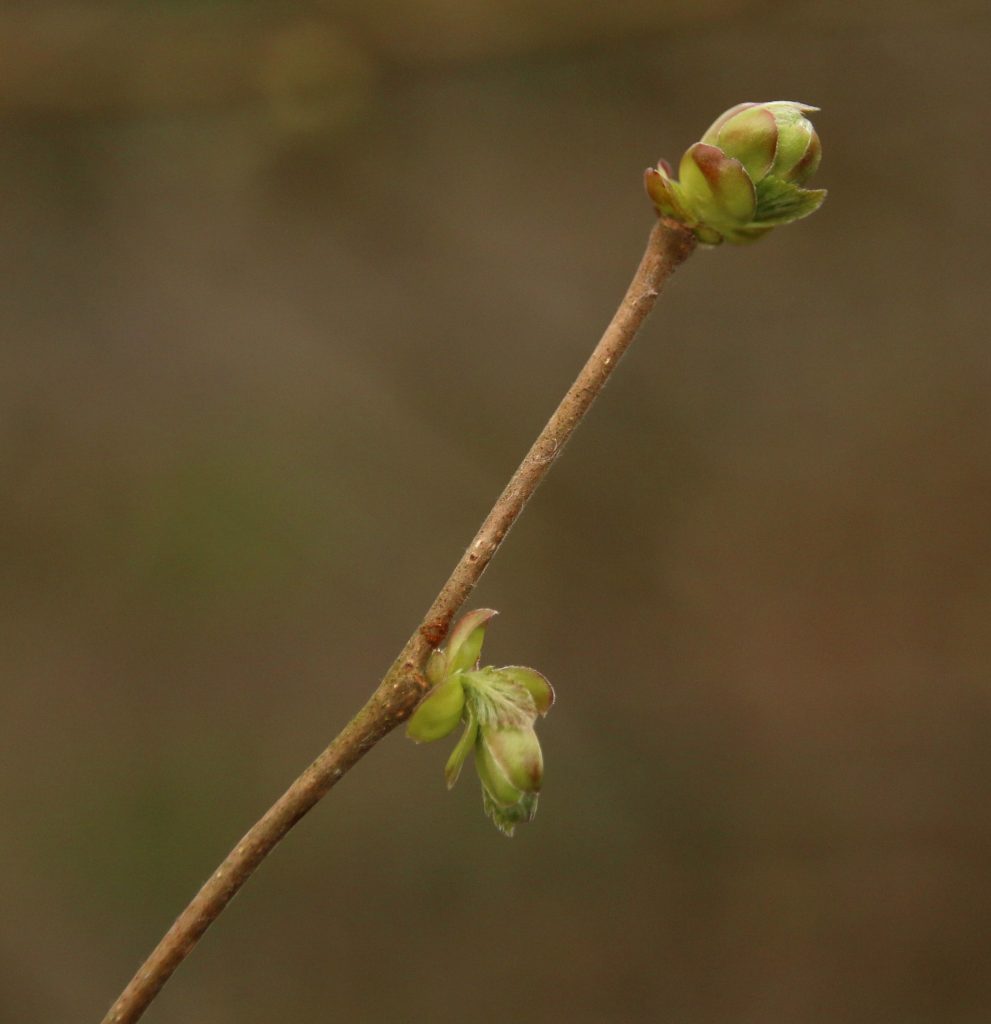
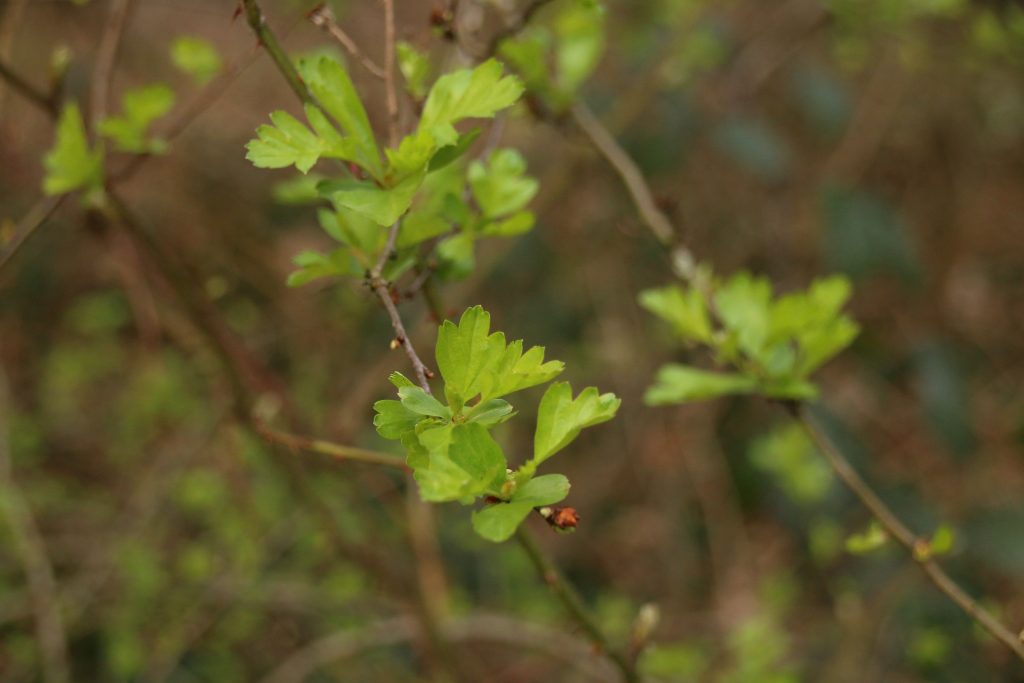
The river level is noticeably lower, leaving muddy banks. The dogs hear ducks on the river long before I see them, and run through the undergrowth to the river edge, but the duck fly before they teach the water. The dogs run in vain along the riverbank as the ducks disappear over the hedge at the edge of the field. We continue into the next field, and I notice a horse rider at the far end of the track behind us – she clearly wants to canter along the track, and so I hustle the dogs along to leave the track free. Sure enough, as soon as we have turned off the track, horse and rider canter up the hill, giving us a wave as they turn in the other direction.
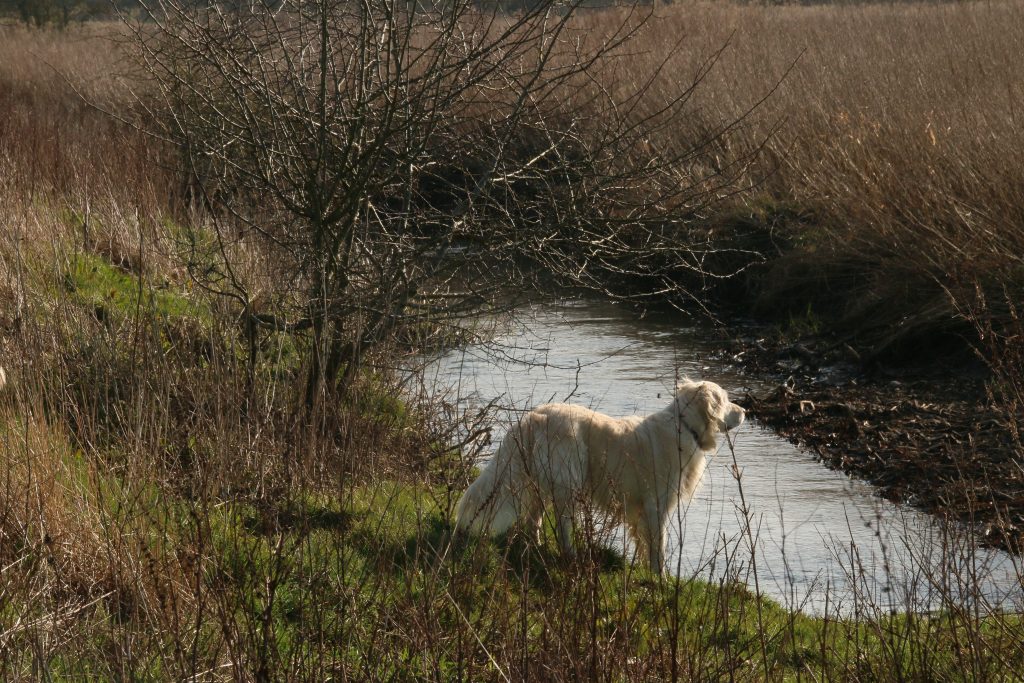
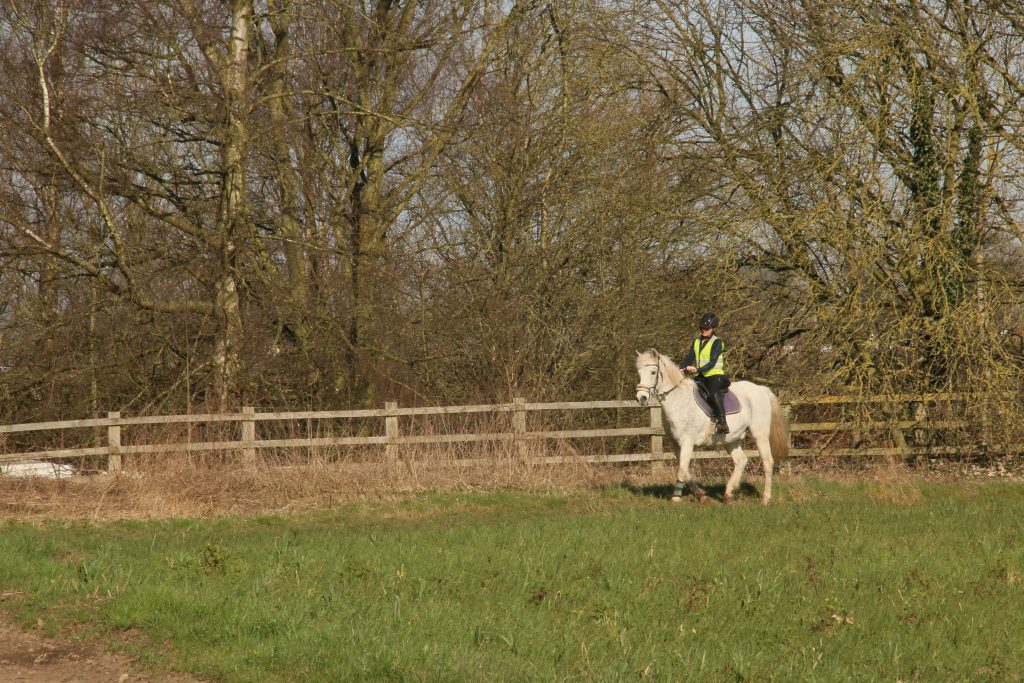
5th March – sweet smelling flowers and less sweet slurry
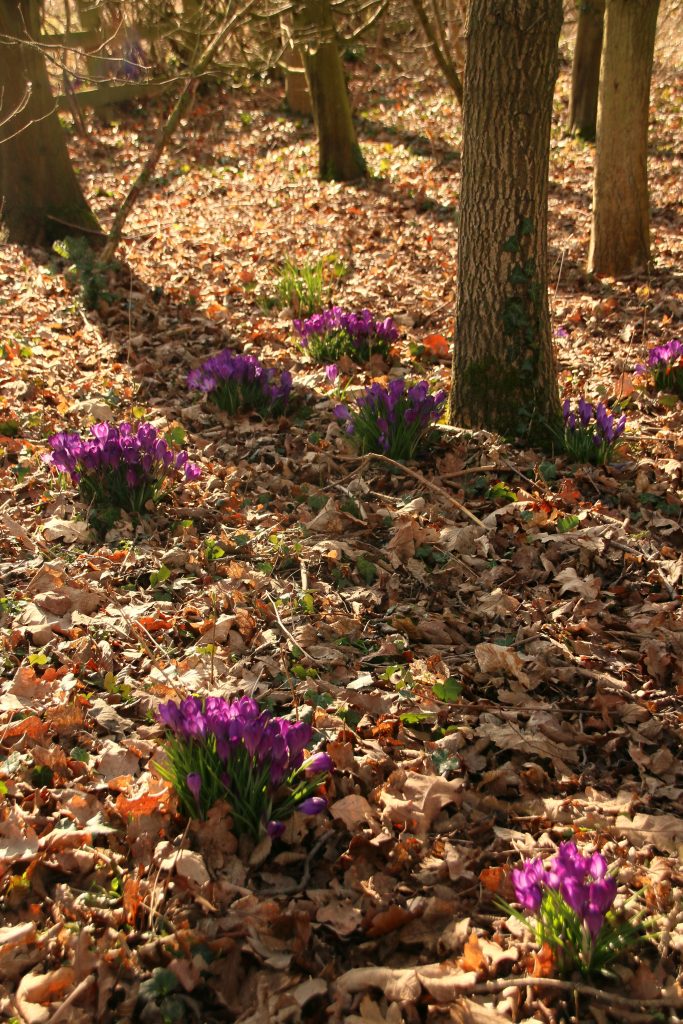
Despite warm sunshine during the day, nature seems to be on hold – nights are still cold, and the ground frosty during our morning walks. Leaf buds appeared on branches two to three weeks ago, but the only leaves that have emerged are on elder shrubs. Shoots of wildflowers and other plants are emerging from the ground but are still only a few cm high. The exceptions are flowers that are more traditional cultivated than native – crocuses have been in bloom for a few weeks, and daffodils are coming into flower on roadside verges and amongst the trees on the edge of the Glebe.
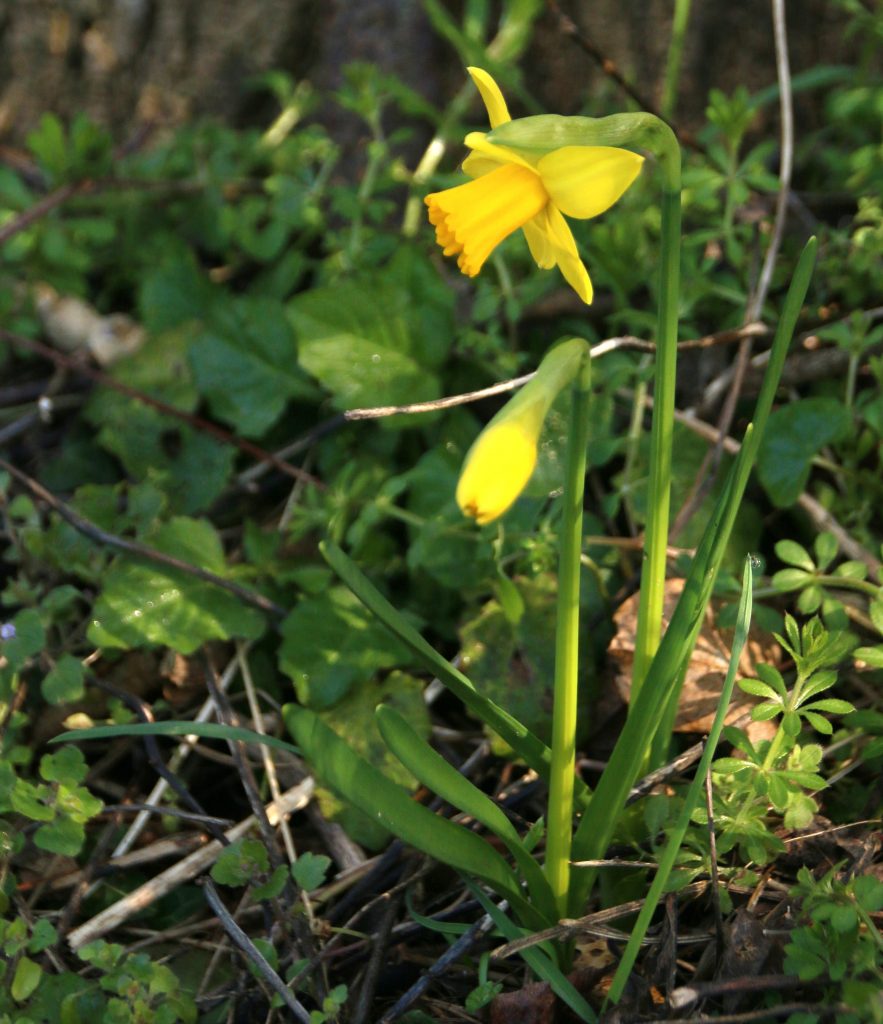
Birdsong is getting louder and more varied, my Merlin phone app identifying more birds as we walk along the field track, and even more in our garden, which borders the fields, but, along with neighbouring gardens, has a greater variety of trees and shrubs, and, of course, bird feeders. One bird particularly noticeable at this tine of the year is the woodpecker, particularly the greater spotted woodpecker. This woodpecker is a quiet and shy visitor to our birdfeeders over winter, but at time of the year advertises its presence by drumming on tree trunks at the bottom of Croft Hill, both drilling for grubs, and marking out its territory. In most years we hear an answering drumming from trees in gardens neighbouring ours, which, if it is another male, suggests that territories are 300-500m across.
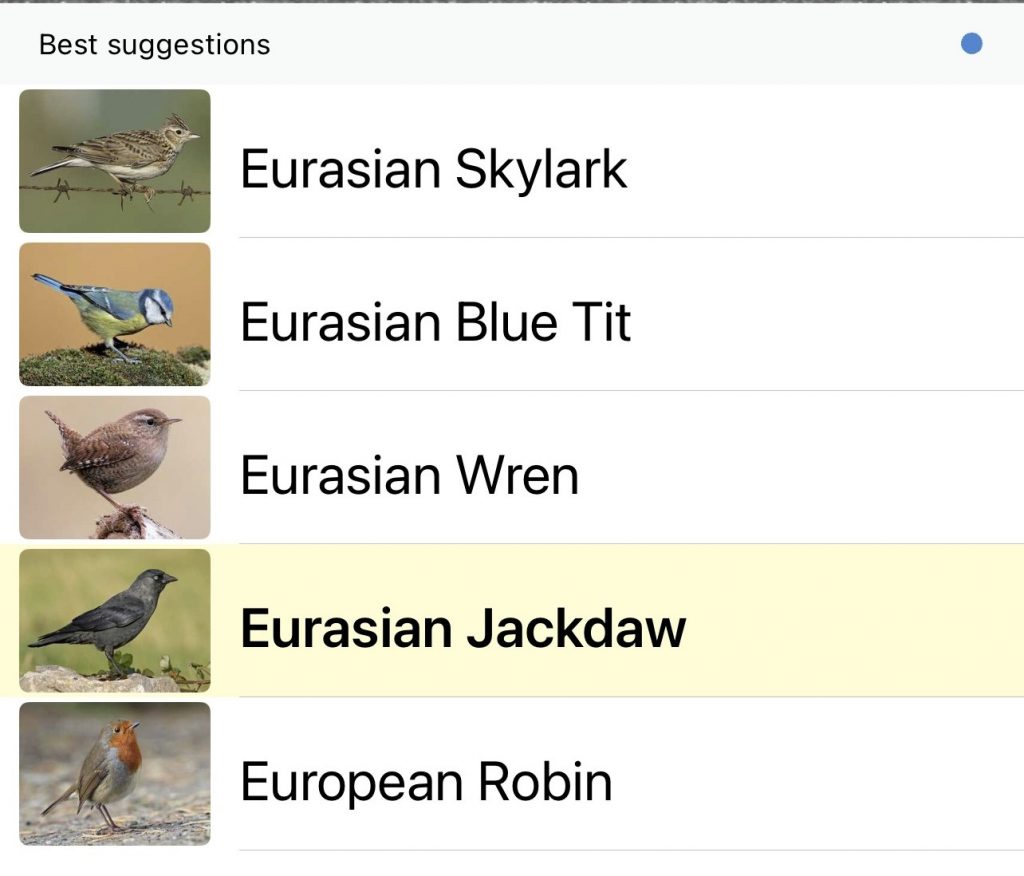
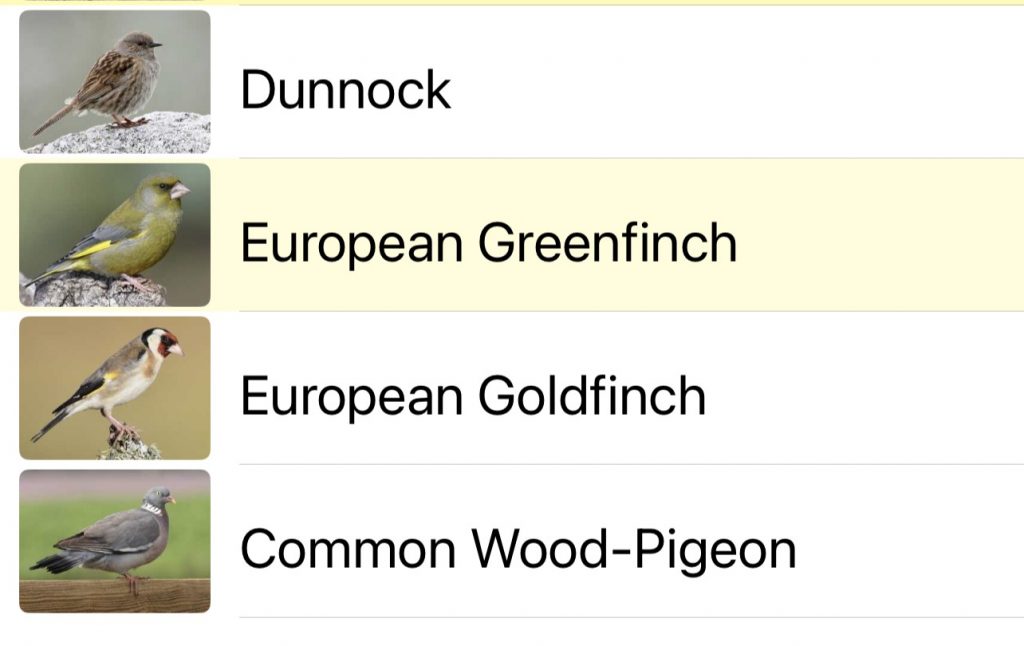
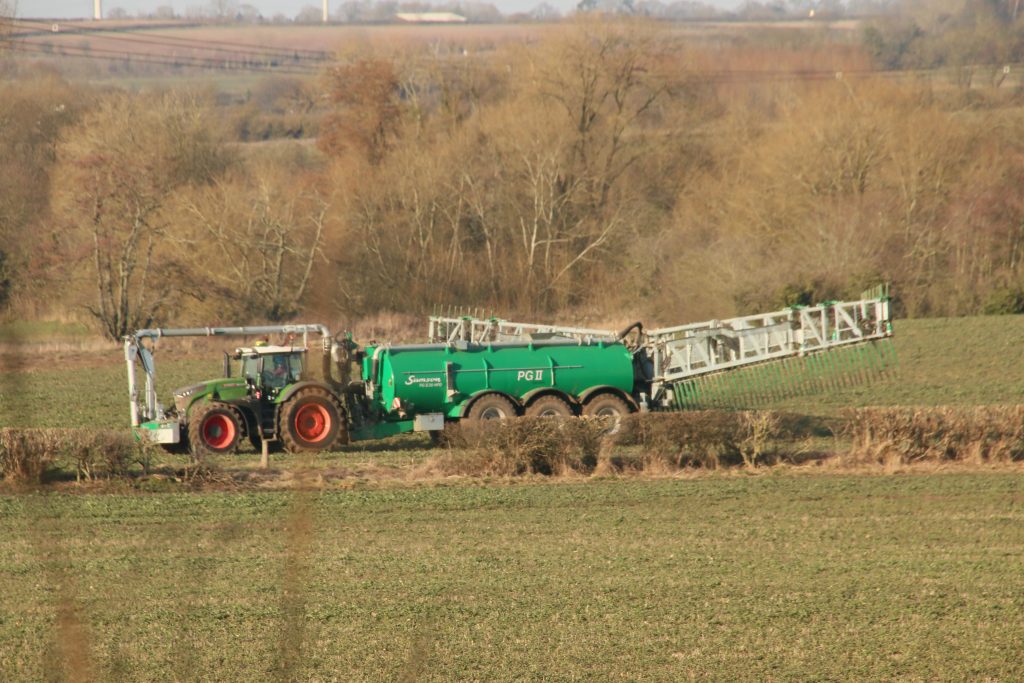
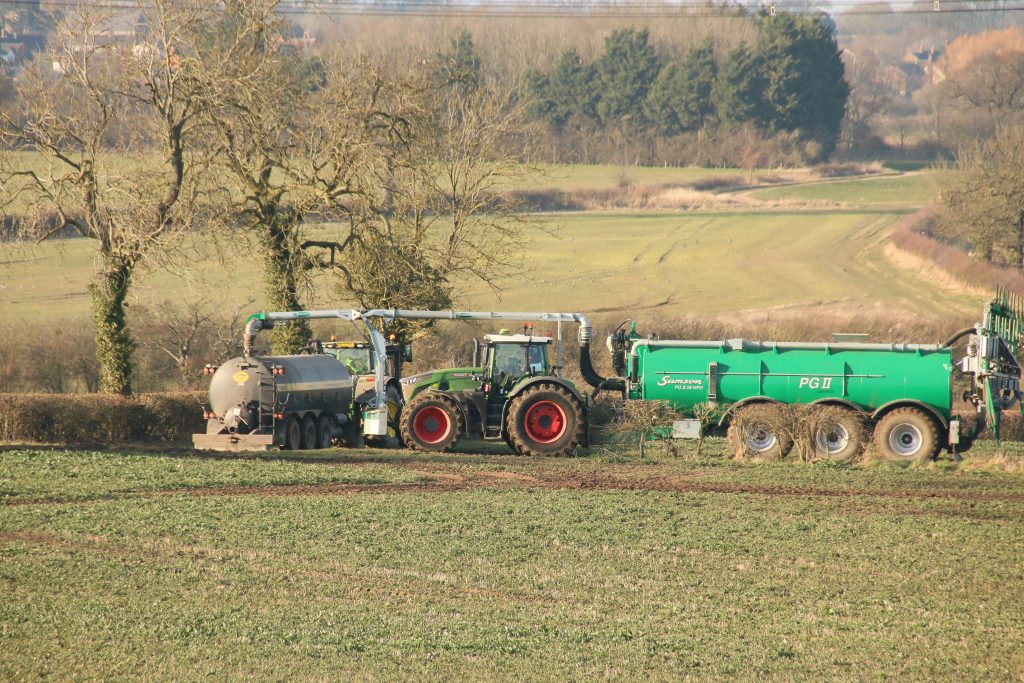
The rape field behind us has been liberally sprayed with slurry, either pigs or cows. The “slurry spreading season” starts at the beginning of February, to prevent winter rains from washing slurry into watercourses. Slurry should not be spread onto frozen ground, and this week has been the first when the sunshine has been strong enough to melt frost within an hour of sunrise. Thankfully a southerly wind has carried the odour away from our garden, or hanging out washing would not be an option. The slurry is spread from a tanker which refills from a second tanker that is constantly travelling to the farm supplying the slurry. One benefit of this is that the rutted field track has been smoothed. Grass will soon grow back through the worn tracks. While I am not looking Ellie falls behind and has an enthusiastic roll in a patch of slurry. She does not appreciate the bath that she gets when we get home.
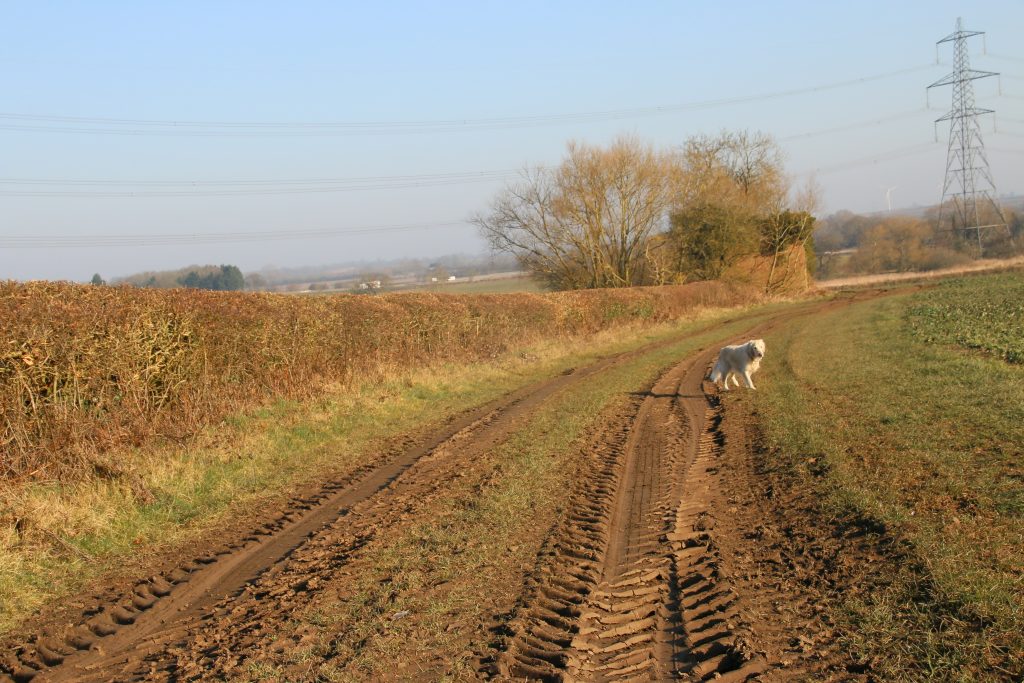
I notice a tractor towing a trailer of hay passing the gate onto our lane, which will be for animal feed. The ground is still too wet and grass growth not sufficiently vigorous for cattle to be turned out into fields, and the hay may be for cattle kept indoors over winter. However with this relatively small quantity of hay, and knowing our area, ot is maybe more likely that the hays has been purchased by local stables for horses.
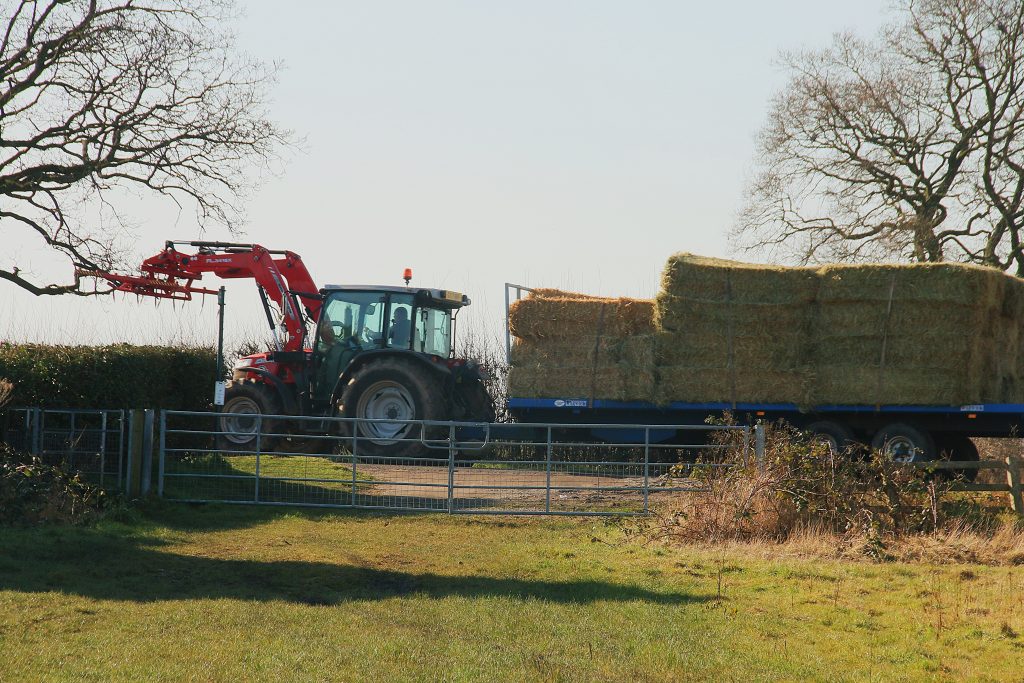
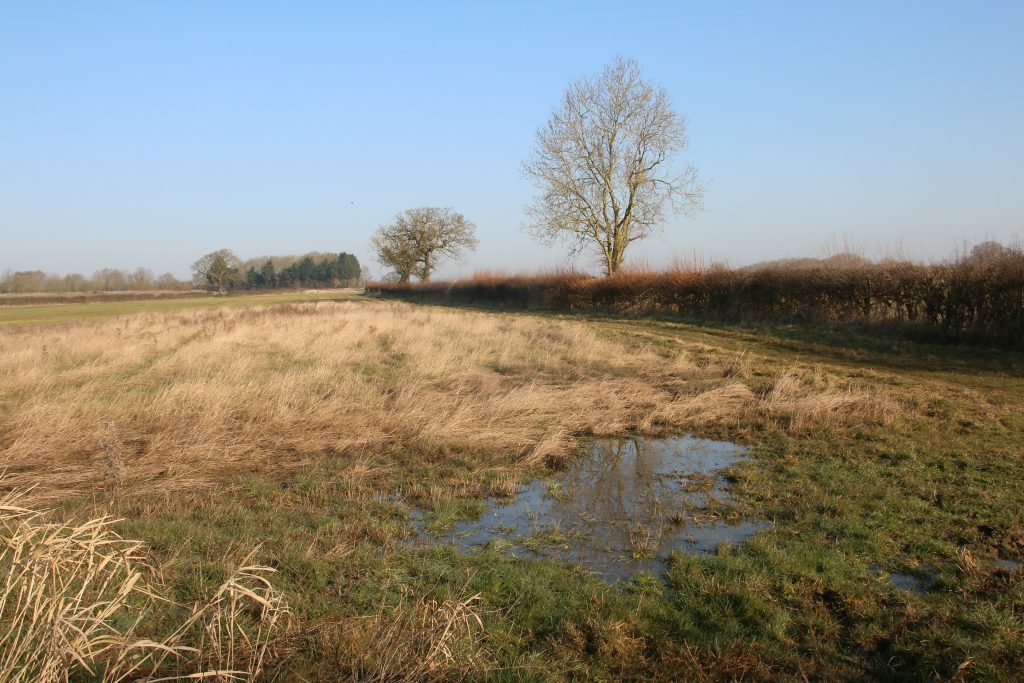
The ground is drying out nicely, although wet areas remain soggy. We cross the Sheep Field, over the stile/dog-gate and into the next field. One corner, which we cannot avoid, remains stubbornly wet. The farmer has dredged the adjacent ditch and installed a land drain from this area of the field, but water still pools. Attempts to grow crops in this part of the field have repeatedly failed, and now this area is left “wild”, just grasses, less productive, but better for wildlife.
21st February – Celandines
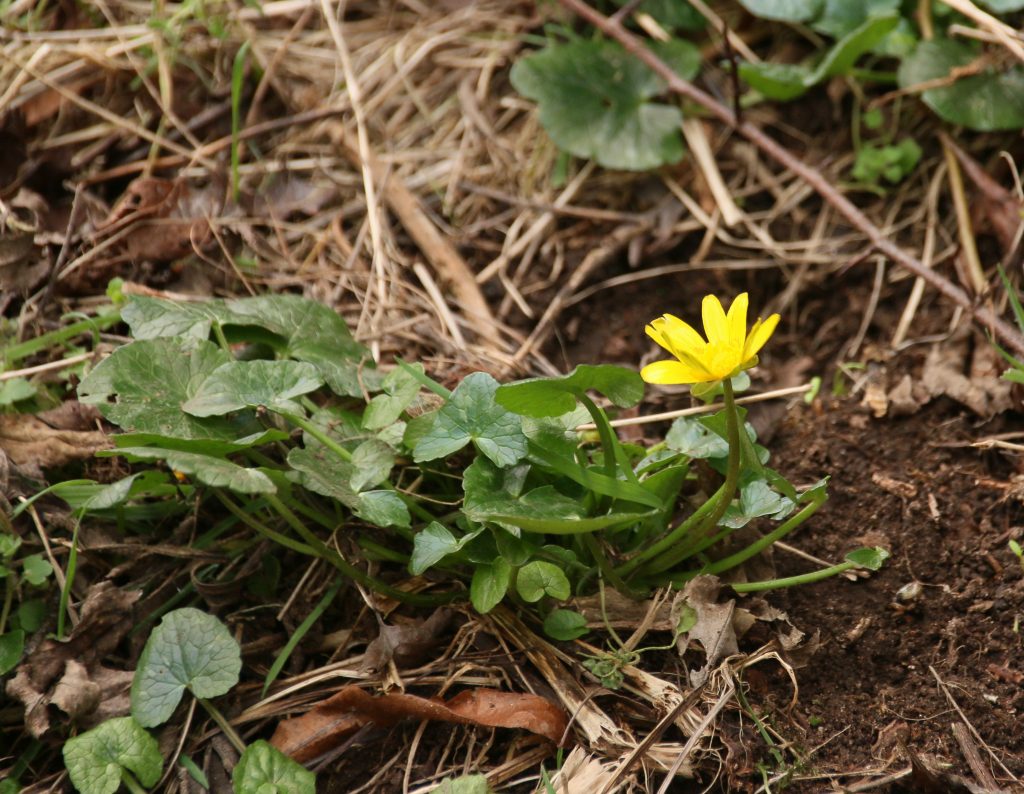
At last, the first “proper” sign of Spring in nature – today, for the first time, Celandines are in flower – these are Lesser Celandines, the unrelated Greater Celandines flowering a bit later in the year. The Celandine flowers are not isolated blossoms but scattered along the footpath down to the village, but all seem to have flowered overnight, or more accurately this morning, since Lesser Celandines only open during daylight. They are a common plant, almost invasive in places, and more flowers will carpet the grassy bank under the trees beside the footpath over the next few weeks. Rich in vitamin C, the plants have traditionally been used for a variety of ailments, including piles, but contain toxin, and so are best left undisturbed.
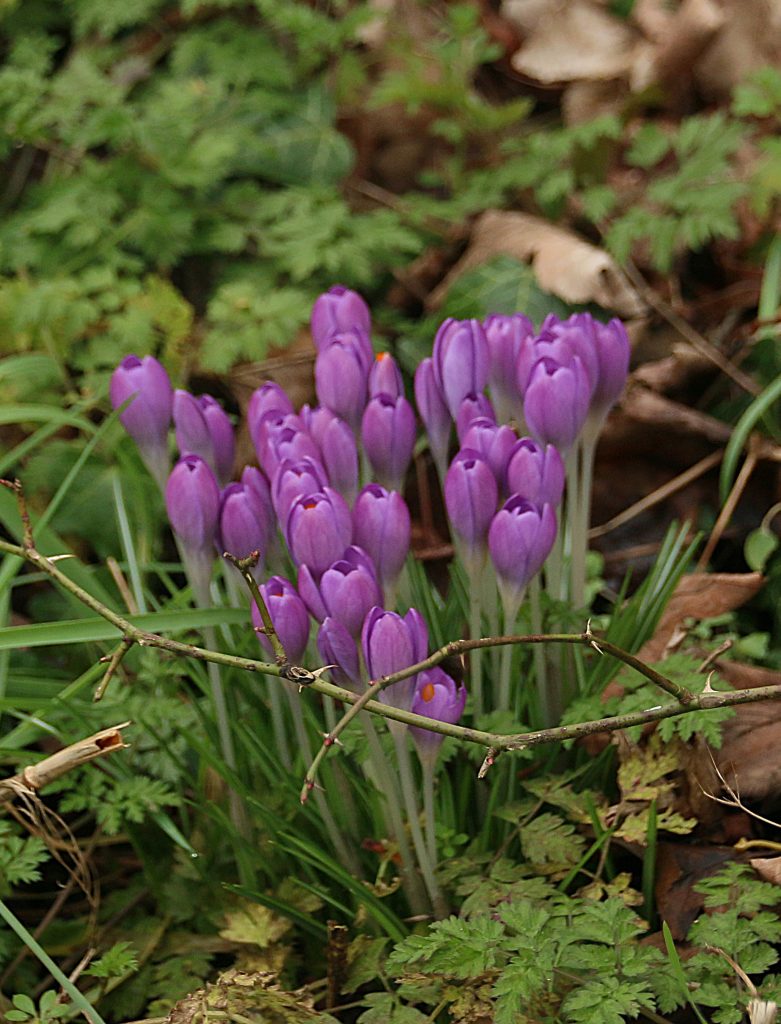
Crocuses have been in flower along the same grassy banks for a couple of weeks, certainly a sign of spring, but more “naturalised” that nature, since they were introduced in the 19th Century, and have spread from gardens. Daffodils have sprouted between the Celandines and crocuses, but it will be a week or more before they are in flower. I’m not sure whether these are wild or naturalised – I suspect the latter, because they look too tall to be the smaller wild variety
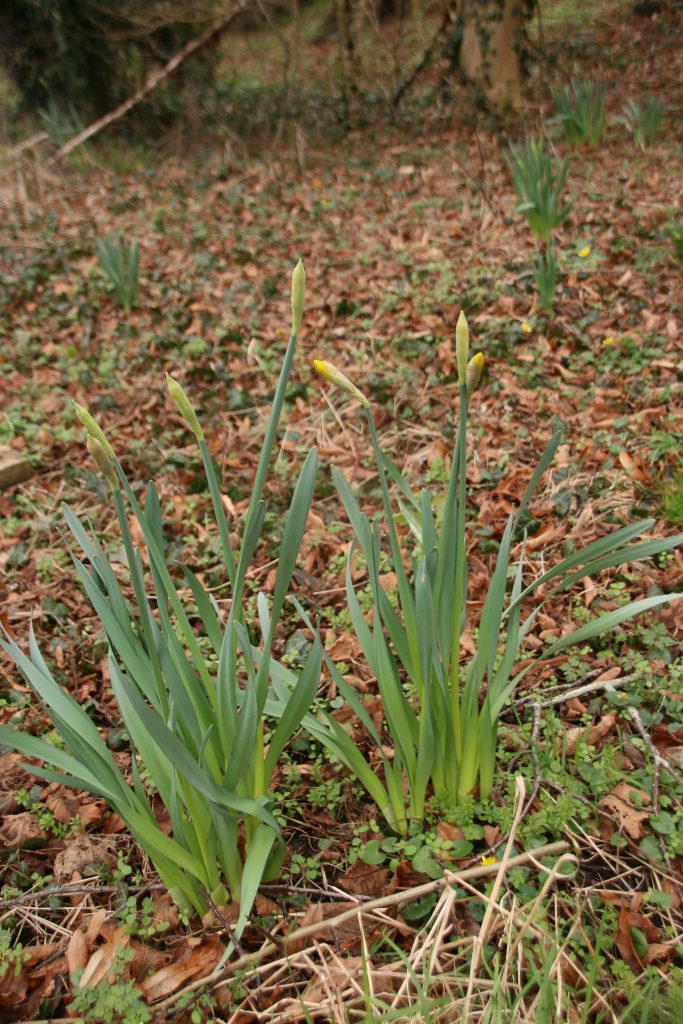
The young rape plants in the field behind us has become the favoured food of pigeons, with flocks descending to gorge on the tender leave, sufficient to reduce the eventual crop of rape seed. To deter them the farmer installed rotating “scarecrows”, wooden structures that turn in the wind, but with little effect. We now have a more effective gas-powered bird scarer installed in the hedgerow on the other side of the field behind our home. Gas from an adjacent cylinder trickles into a chamber and is ignited by a spark, the noise of the bang resulting from the mini-explosions, usually two a few seconds apart, being directed across field, causing feeding pigeons to take to the air en-masse. This photo was taken on another field edge a few years ago – approaching the scarer, with unpredictable loud bangs, is best not done too often! The frequency of the double-explosions is determined by a mechanical timer and is currently around every half hour. Thankfully the same time prevents overnight bangs, when pigeons are roosting, not feeding, and we are sleeping.
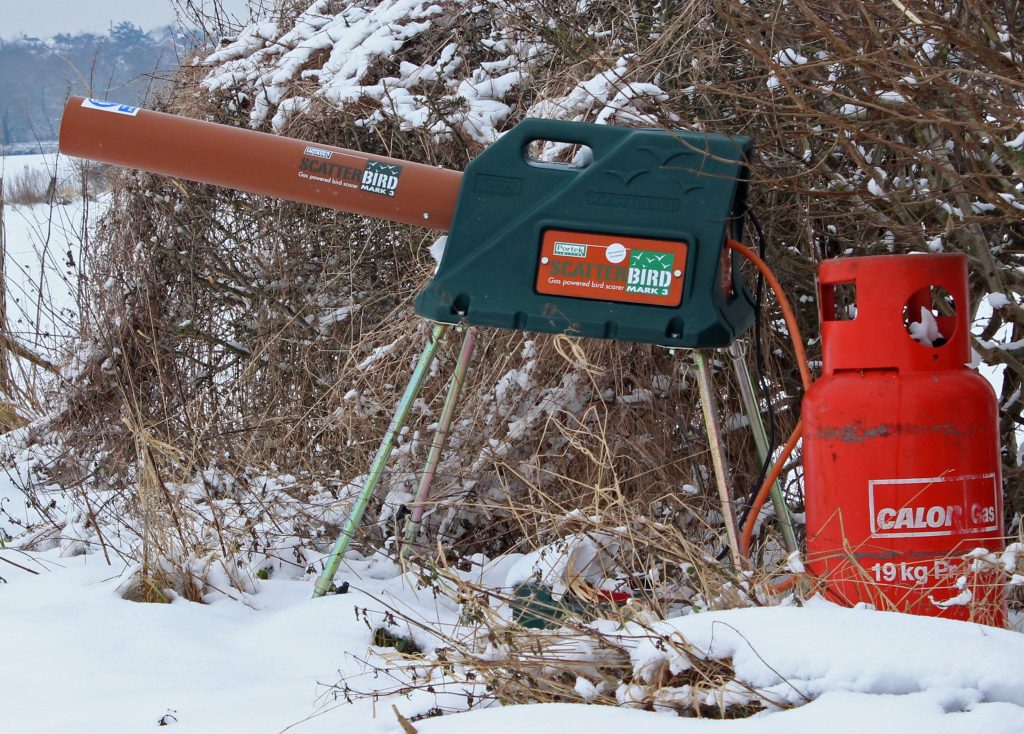
17th February 2025 – Oh deer
The path that hugs the edge of the quarry is bordered by a fence and then sheer drop into the quarry on one side, and on the other side by dense undergrowth descending the steep slope to the track below the ridge. Yesterday evening Sam and a friend’s dog showed great interest in the shrubs and small trees, and Sam suddenly shot off through a gap in the tangle of branches and brambles, disappearing despite me repeatedly calling. A minute later a muntjac leaped out of the shrubs just a few metres from us, its white tail flashing the late afternoon gloom, before retreating back into the trees a short distance away.
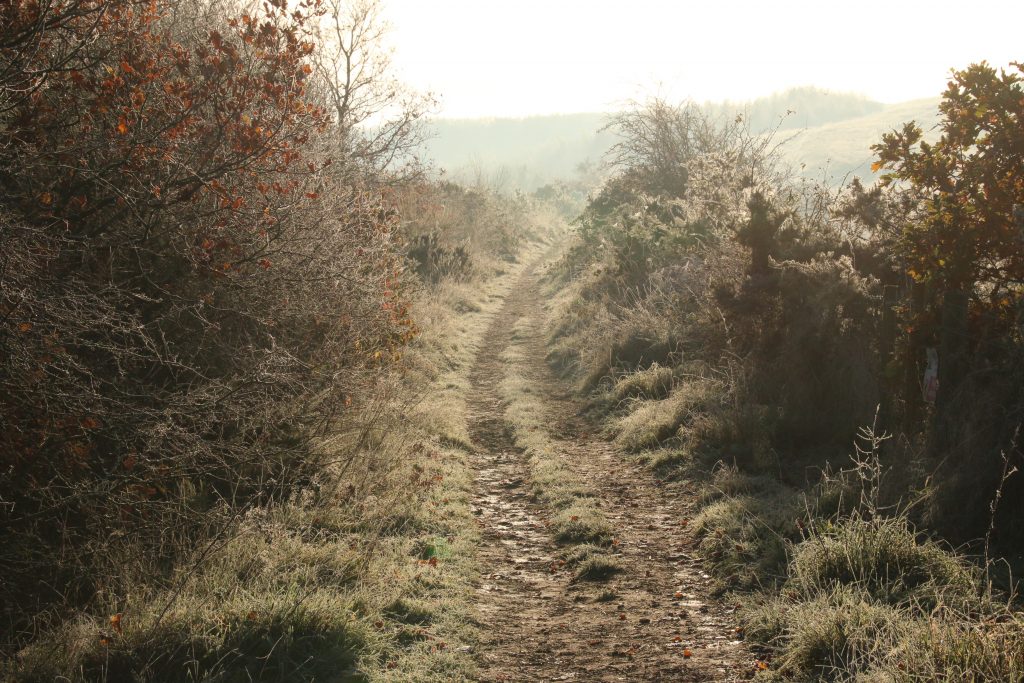
Sam was not in hot pursuit – he was still furtling around out of sight, wondering where the deer had gone. He eventually reappeared, only to pick up the scent of the fleeing muntjac and running into the trees. For a while we all called him, concerned that he might follow the scent in a direction unknown to us, worrying in the gathering dusk. He eventually reappeared from the other end of the ridge and was promptly put back on the lead.
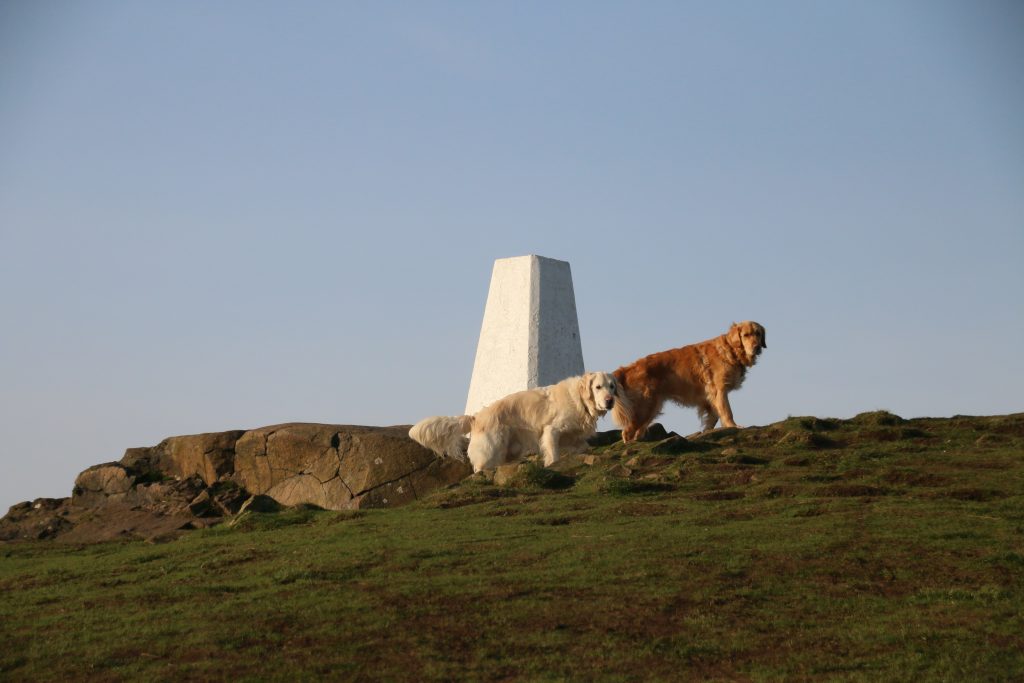
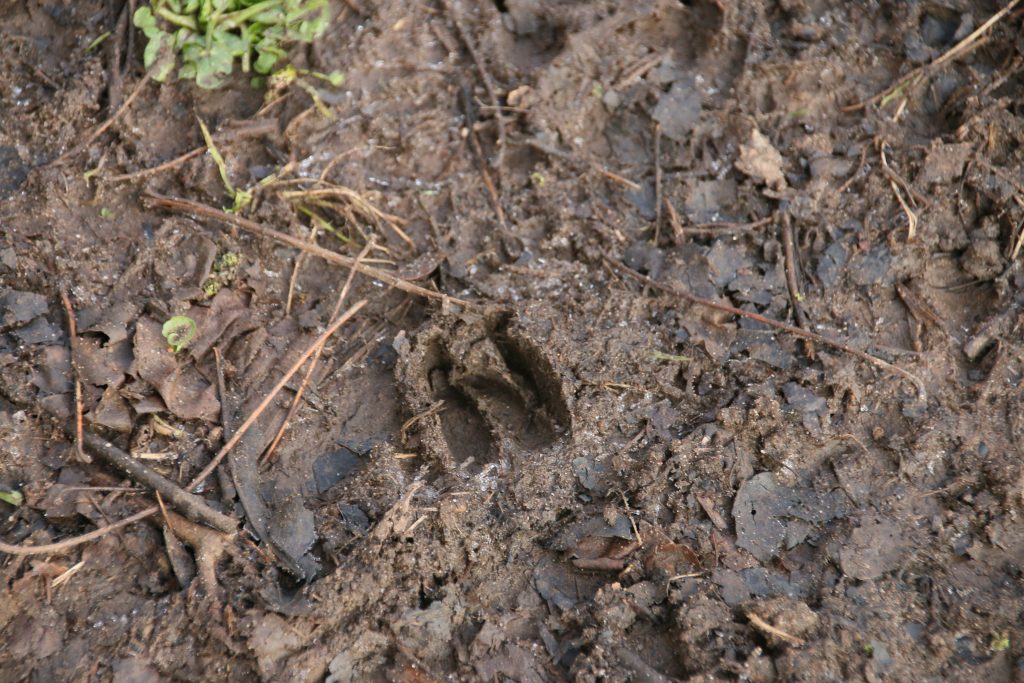
After cold damp days of thick grey cloud, this morning we wallk on frosty ground under a clear blue sunny sky. After the usual ascent of Croft Hill we follow the path to The Glebe. The path in the well-used gateway has already been churned up, no doubt by earlier dog walkers, and so after a circuit of the field, the dogs running between the Horse Chestnut trees, we leave via a less well-used gate, returning along the still-frozen path outside of the field fence, noticing the myriad of pawprints in the solid mud. Among the pawprints are several small prints of a cloven hoof – Muntjac deer are common here too.
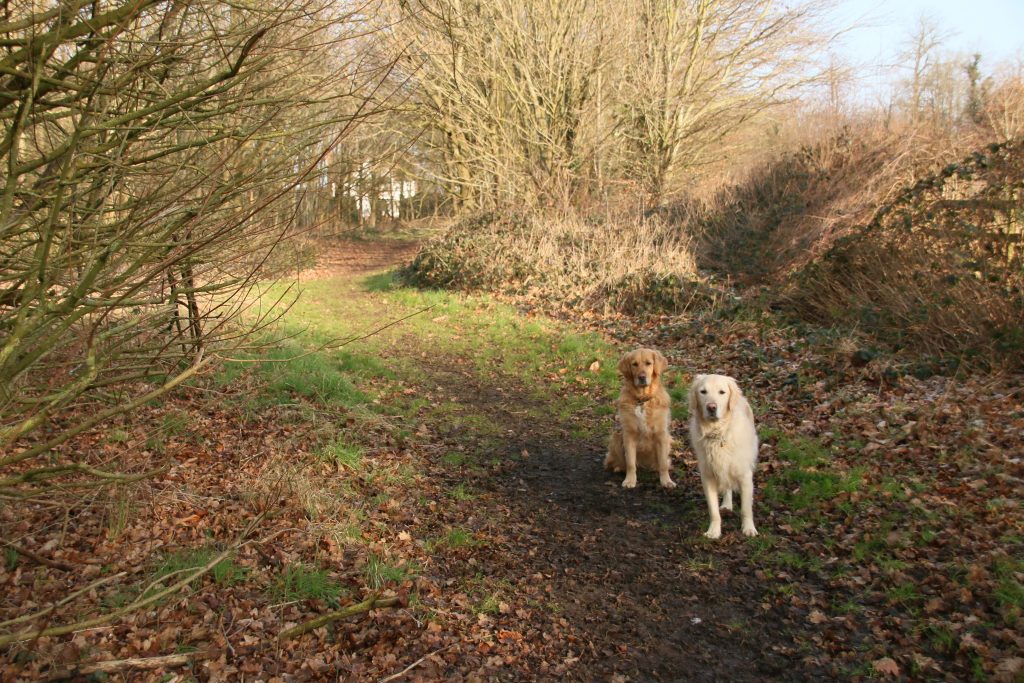
The path back up towards Croft Hill is still frozen, easier walking and cleaner paws – I could have worn my walking boots rather than the heavier wellies that have become the normal choice of footwear over the last weeks. The snowdrops in the trees beside the track have now opened fully, large flowering clumps, not just occasional individuals. Spring is getting ever closer.
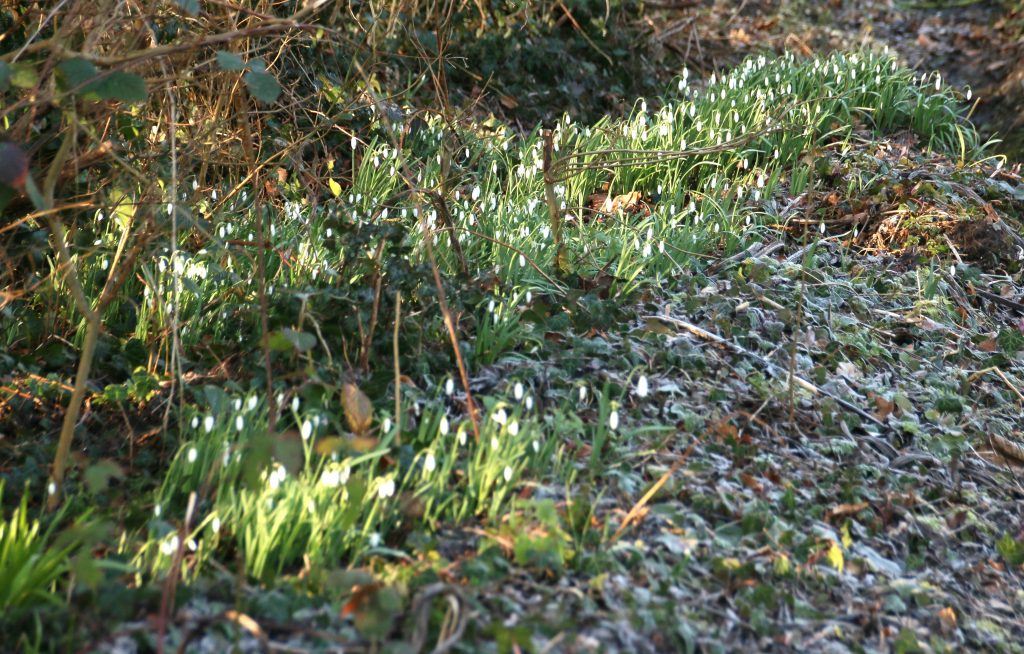
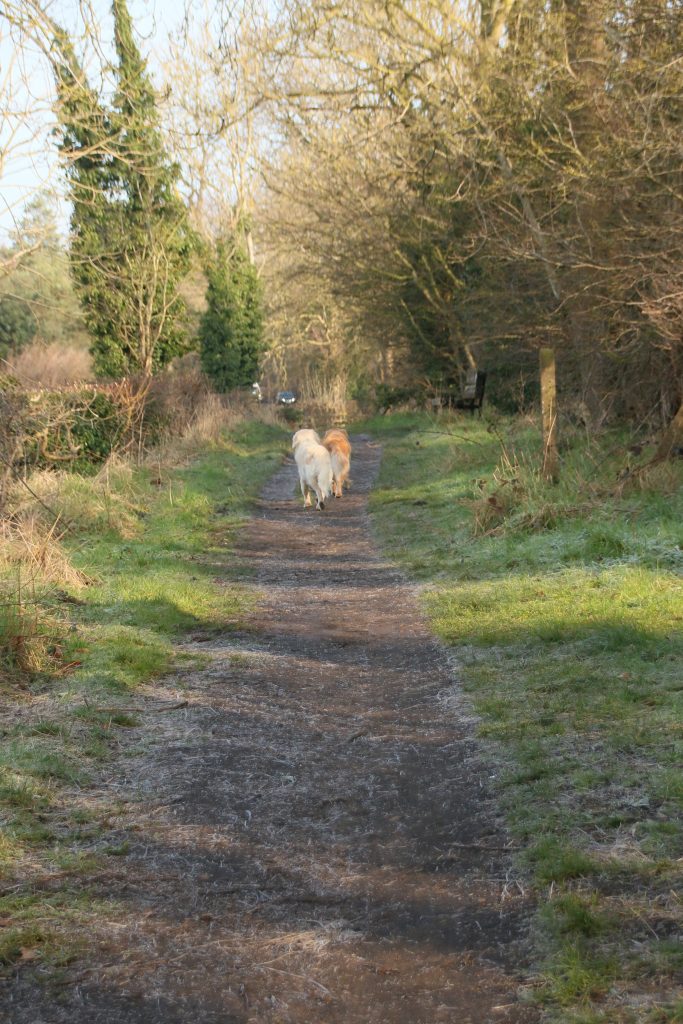
14th February 2025 – A bad day for pigeons
Every week, friends and I walk down the country footpath to the pub, with, between us, four dogs – obviously a dog walk that just happens to end at the pub. With no streetlights, it is a dark walk each way, and this week we followed the higher of two parallel paths, following the quarry fence, to avoid the worst of the mud. One friend has lurcher, always on a lead, who suddenly and unexpectedly launched herself vertically, barking excitedly, as my mate hung on to her lead. In the light of his headtorch he spotted a fox running along the other side of the chain-link fence – the rest of us just spotted a pair of eyes reflected in the light from our torches. Walking the same path in daylight I spot tracks through the undergrowth, leading to gaps beneath the fence, clearly a fox highway. Further along the footpath a patch of feathers reveals where a pigeon had come to an untimely end when the fox had pounced and caught its supper.
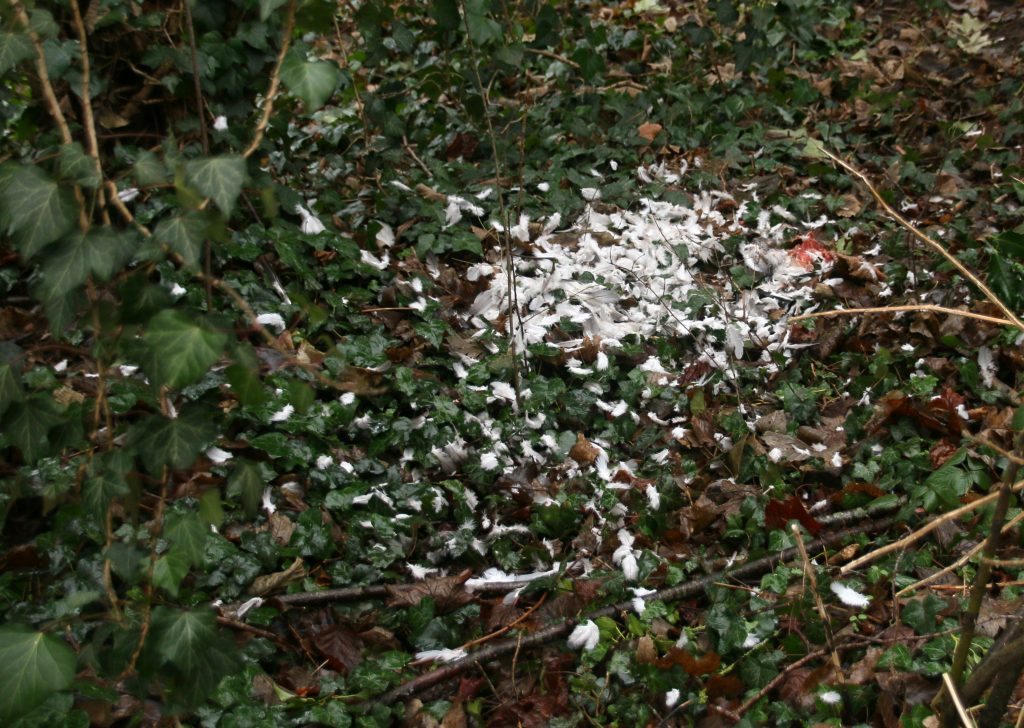
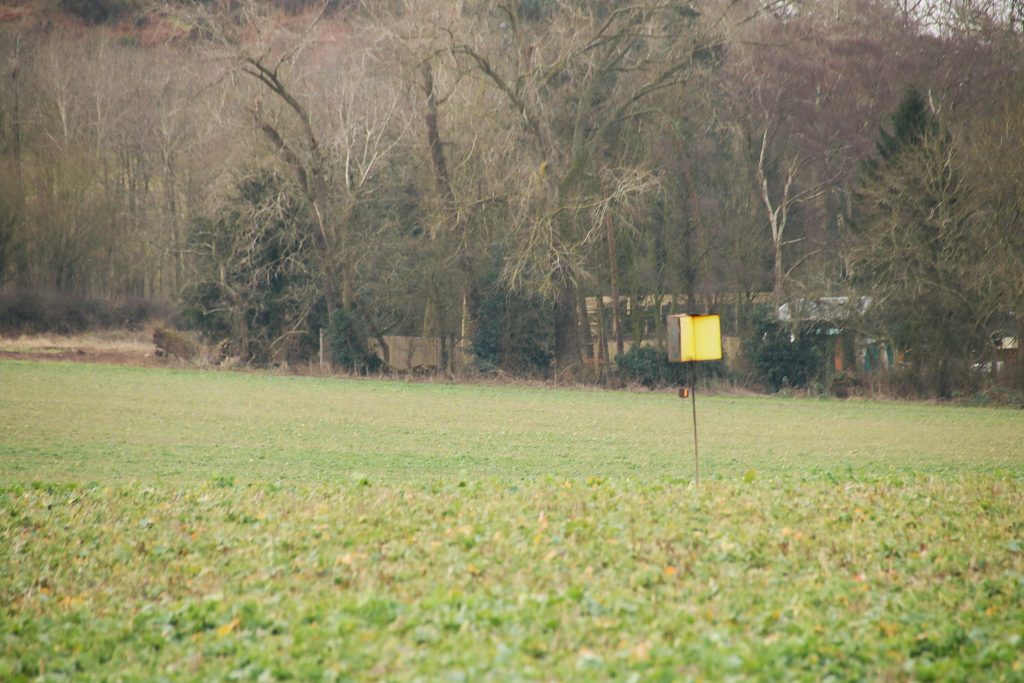
Pigeons are feeling unwanted around here. Not only do sluggish birds end up inside a fox, but the birds are being discouraged from feeding on crops. Flocks of pigeons have been feeding on the young rape leaves in the field behind our home, and the farmer has installed “crow scarers” – not the traditional scarecrow, but simple structures of three wooden boards, one yellow, mounted on a pole. The structure rotates in the wind, the yellow board giving the appearance of a bright flash that disturbs the pigeons. It is not only the pigeons thar are disturbed – Sam saw this moving object that certainly wasn’t there when he last passed this way and stood at the field edge barking at it. Like the pigeons, he decided that it was safest to stay off of the crop.
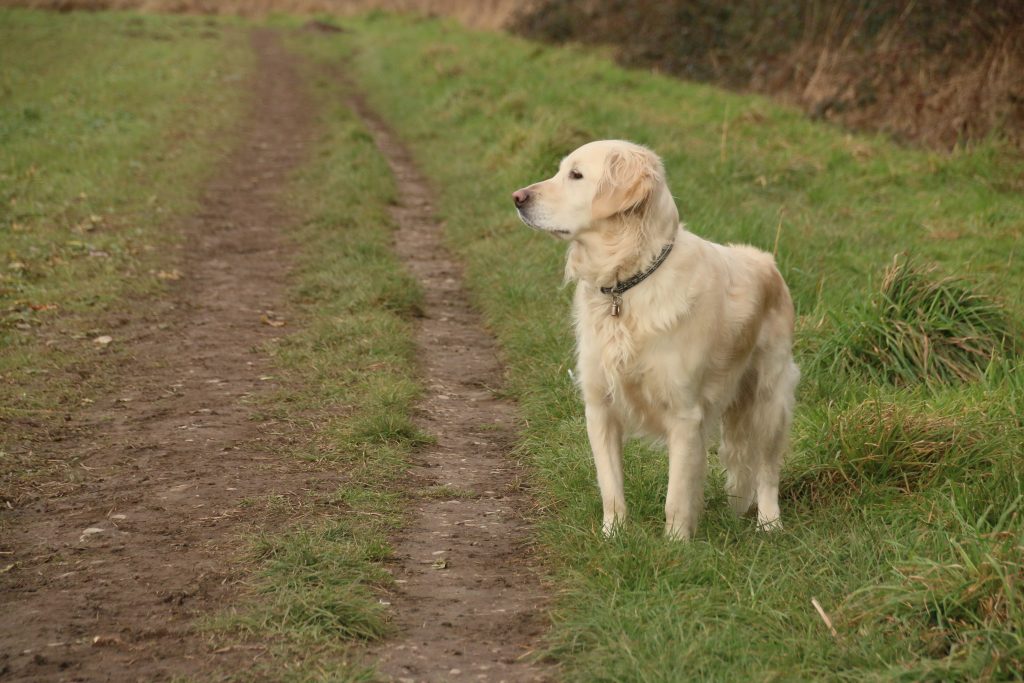
11th February 2025 – Shades of grey
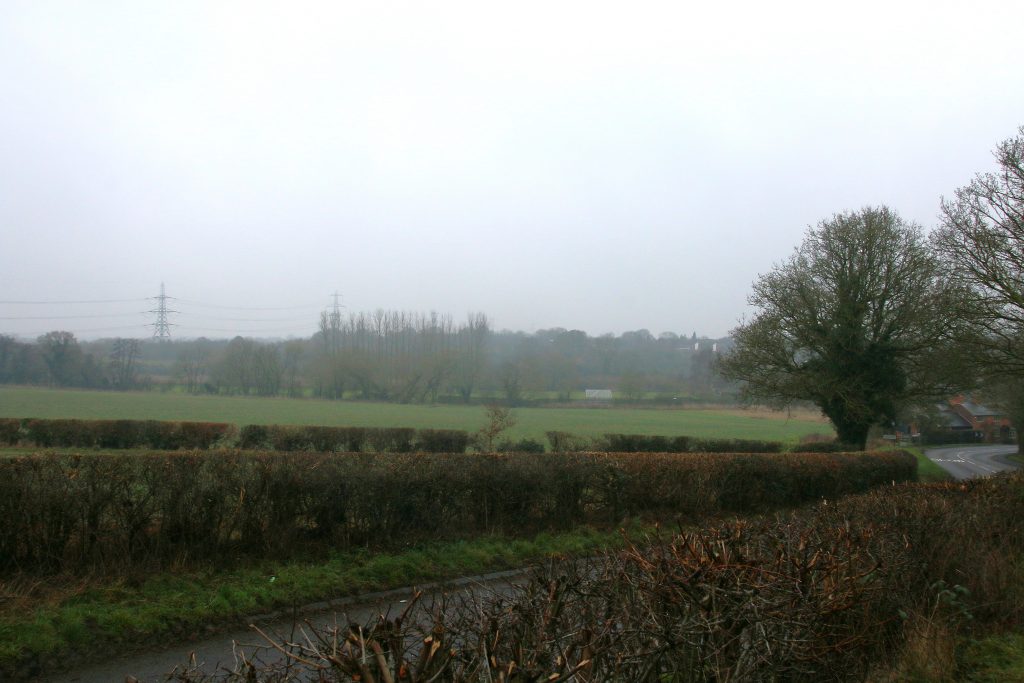
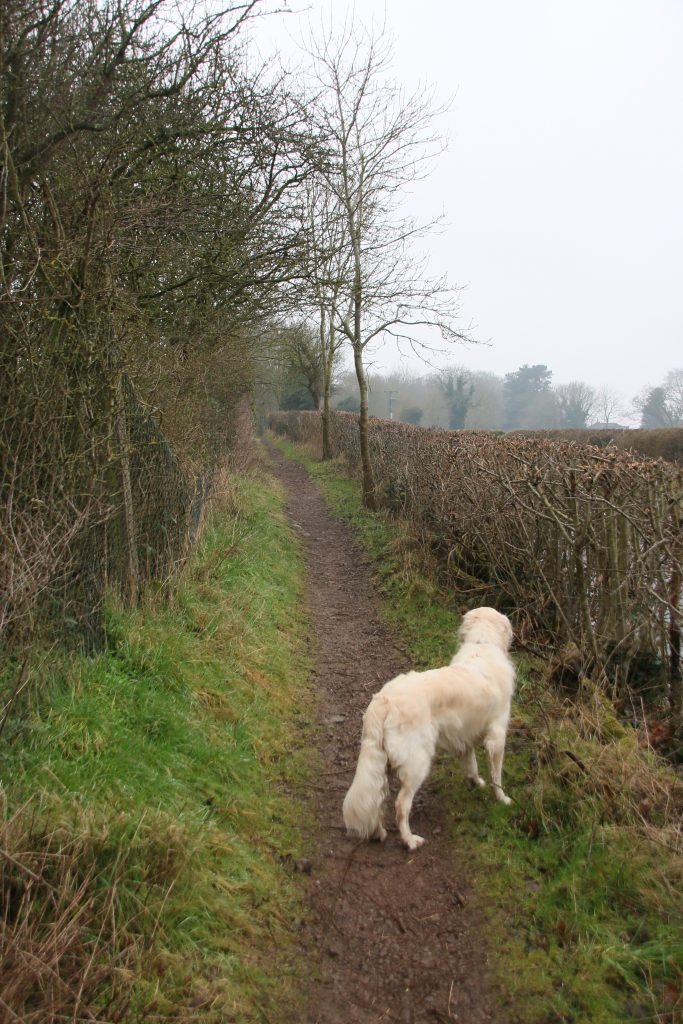
For days we have been under a grey blanket of cloud, sometimes raining, but mostly just cold and damp, and with a bitterly cold northerly wind. The air temperature is not actually particularly cold, generally 3 or 4C, but the windchill from the wind and the grey-gloomy light means that dog walks are not particularly enjoyable.
We meet a neighbour with her dog, walking back up the field track as we walked down it, and we stop for a brief chat, but don’t hang around for long – she is heading for the warmth of home, and I have the rest of the walk to finish. They say it is an advantage having dogs on this weather – without them, I would not be tempted outdoors for daily exercise.
Walking back up towards Croft Hill we come across cockapoo Freddie and his owner, and we walk together and talk amiably about doggy things; muddy paws, dog health and fishy dog treats. A toddler and her dad unexpectedly appear around a bend walking hand-in-hand towards us, and all three dogs run up to say hello. To his credit Dad realises that the dogs are friendly and bends down to greet them, while making sure that his daughter is not bowled over – this will be a youngster who grows up to be confident when she meets dogs. I call my two back and make them sit and “watch me” while the couple pass. Freddie, knowing that I have fishy dog treats, joins them, but is not quite as obedient as Sam and Ellie, which unsettles them, and I must repeatedly command “WATCH ME!” The young girl watches and then says “They are not listening, are they Daddy? They are not listening!” She is quite right, but at least all three dogs stay close as Dad and daughter pass by.
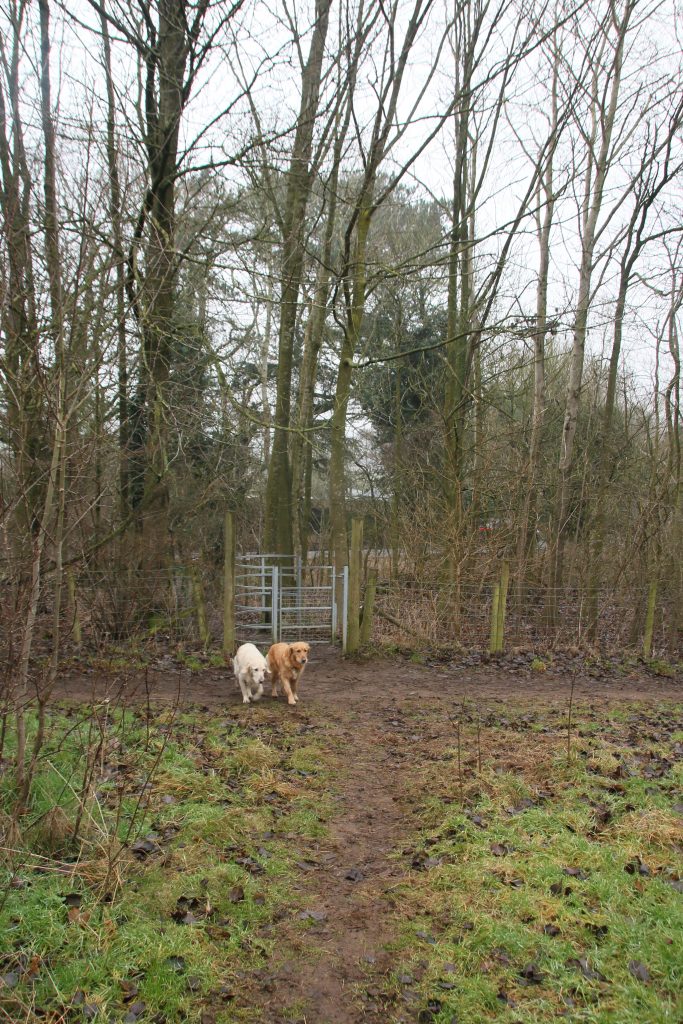
6th February 2025 – Freezing fog
An unexpected frost this morning, accompanied by freezing fog, which thickened as dawn turned into day. A neighbour walking her dog, up and out while I am still enjoying tea and toast, sent me a photograph of the sun trying unsuccessfully to break through the fog over the fields behind our home.
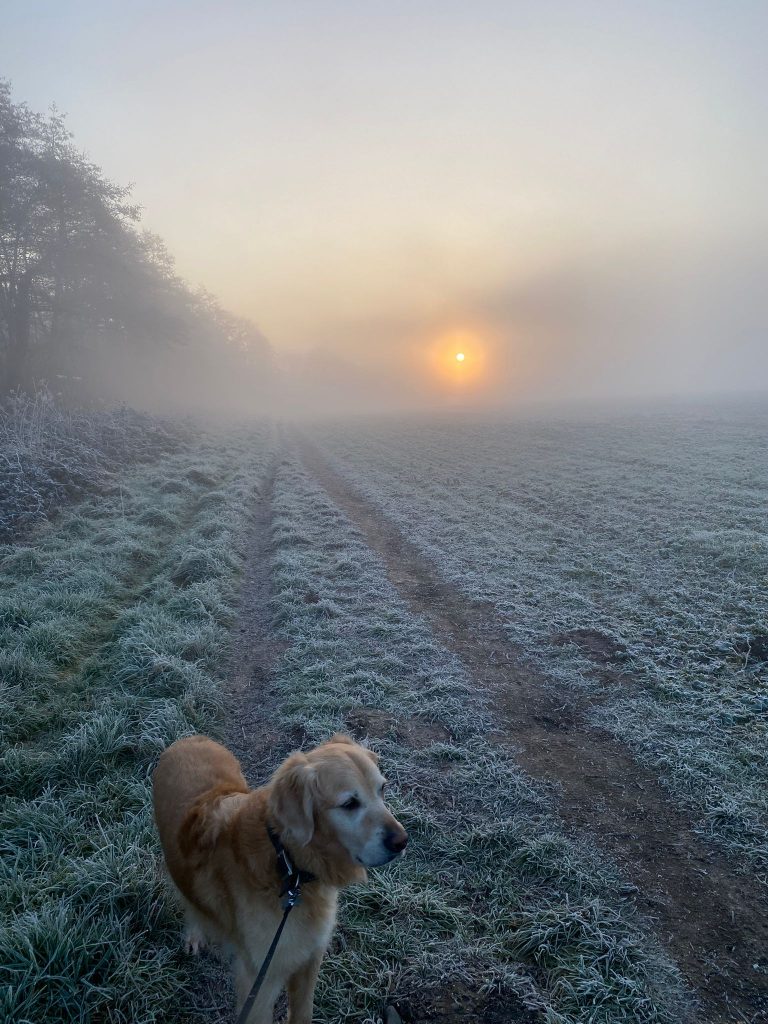
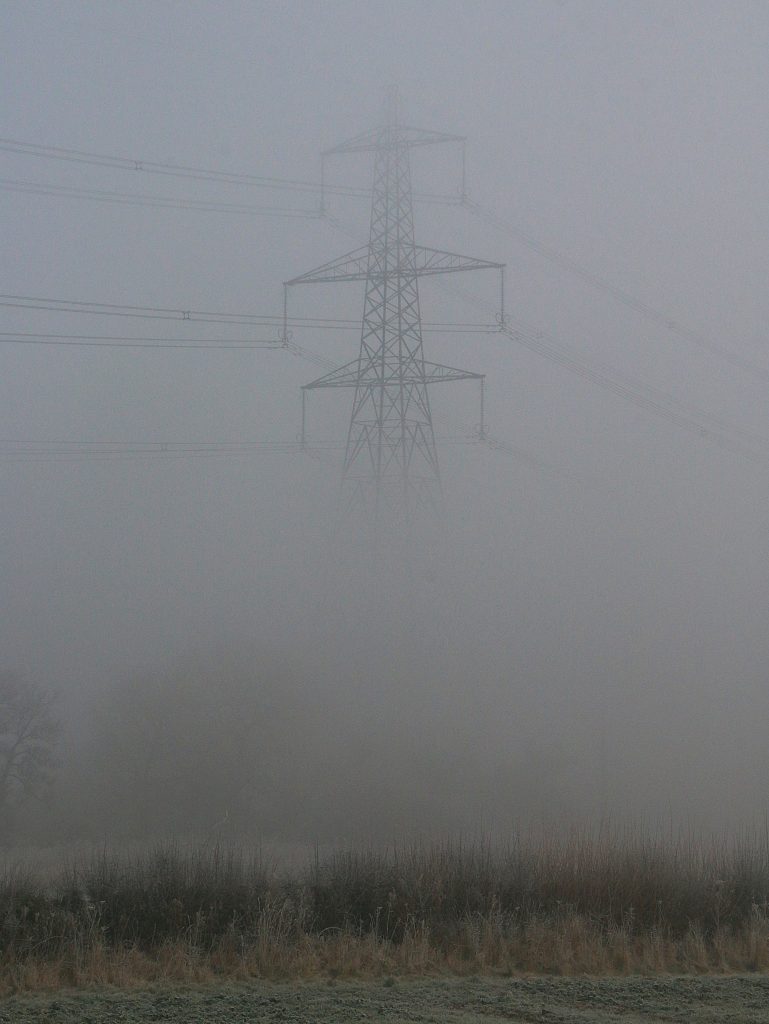
The fog was as dense when I set off with our dogs a little later. The field gate was wide open – usually we must use the adjacent kissing-gate, but clearly a tractor was due to access the field, unusual in such foggy conditions. At this time of the year the main agricultural field activity is spraying, and this is not normally undertaken when damp, and in any case the field was sprayed, probably weed control, a week or so ago.
Just as I was about to let the dogs off lead, a white van followed by an SUV pulled into the gateway, the SUV towing a trailer with a “mini digger”. I enquired whether they would be following me down the foggy track, in which case I may need to keep dogs close, but they assured me that they were heading along the top of the field. “OK!” I said, which both dogs interpreted as the “release” command, and both ran off into the fog towards the old barn.
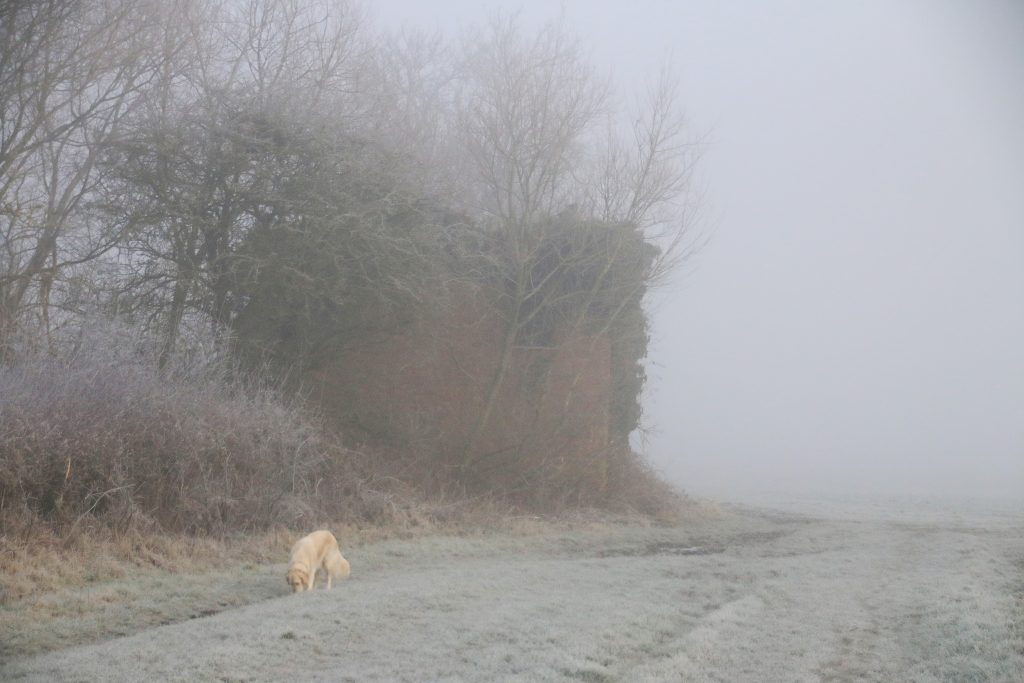
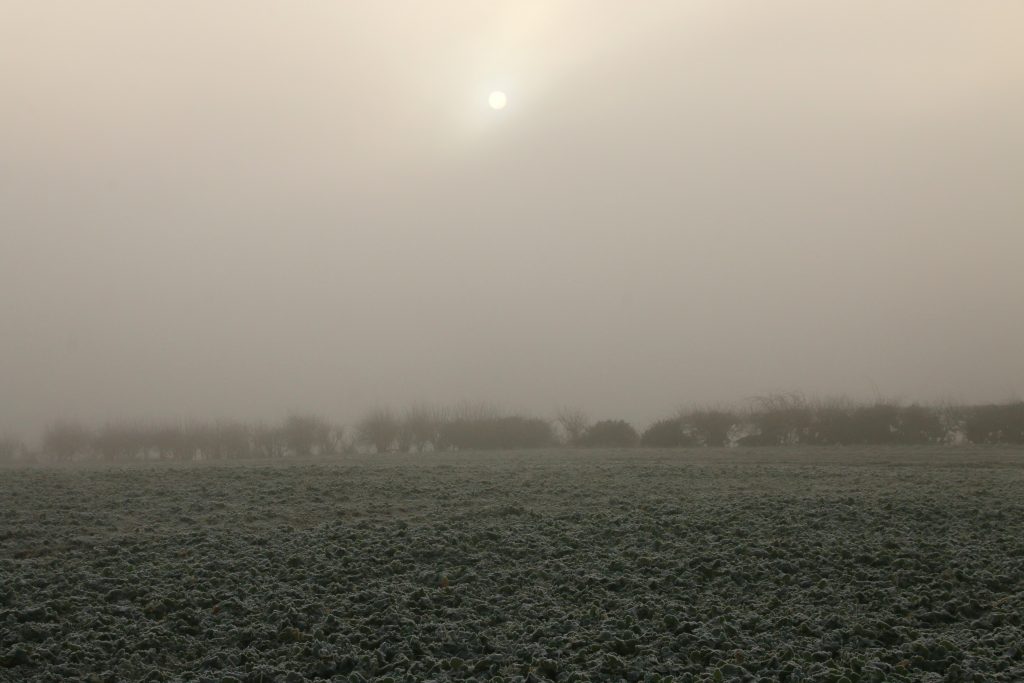
The mini-digger was off to grub up what was left of bushes and small trees in a area that has been cleared – we think that an unused odd corner of the field has been purchased by the owner of the adjacent property to expand the land behind his house, although planning consent will be needed if he wishes to use the land for anything other than agricultural use.
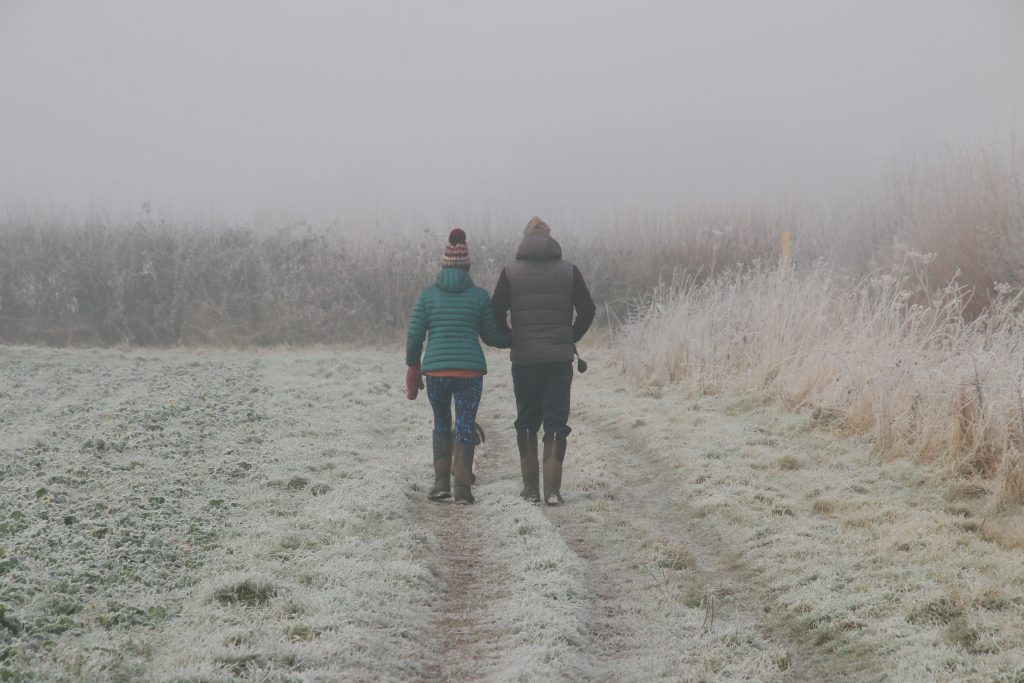
A couple and their spaniel appeared out of the mist, and as we chatted all three dogs began to eat the young tender rape leaves, popular with nearly every dog that we know. I promptly stopped my two from consuming the leaves – even though it has rained heavily since the crop was sprayed, I do not want them consuming residual chemicals. The couple also called their spaniel away from the crop. My two have had to learn a new command “OFF THE CROP!” – they have soon learned to return to the grassy tracks along the field edge.
Thanks to the frozen ground we were able to follow a route, a muddy path that has become increasingly “squidgy”, one that I have avoided for a few days. We walked on top of the bumpy mud, and the dogs returned home clean.
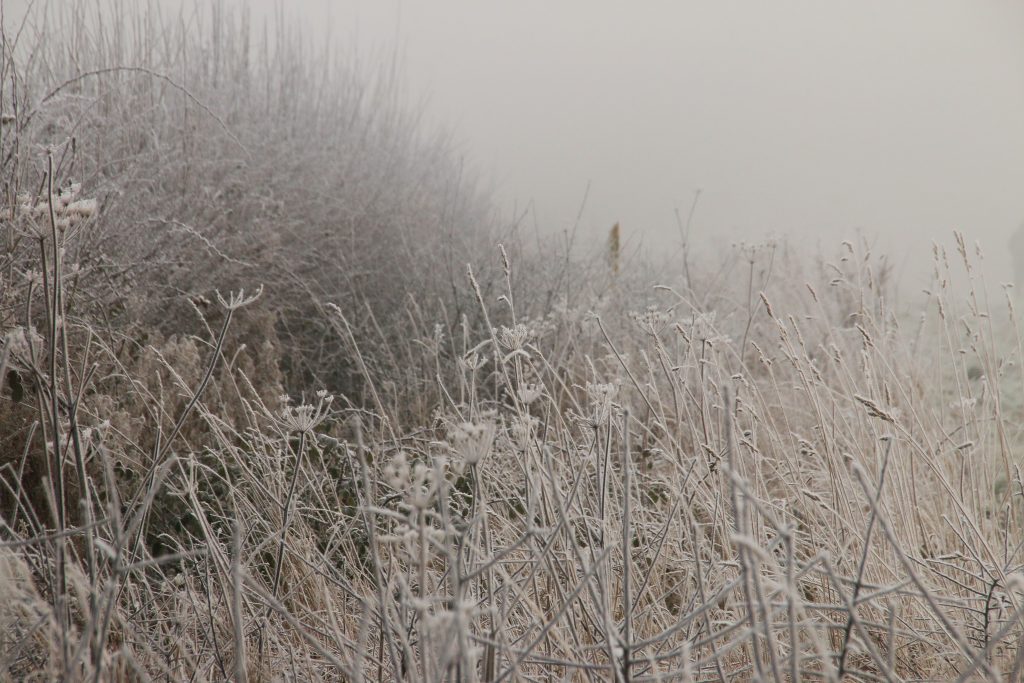
2nd February 2025 – A brighter and longer day
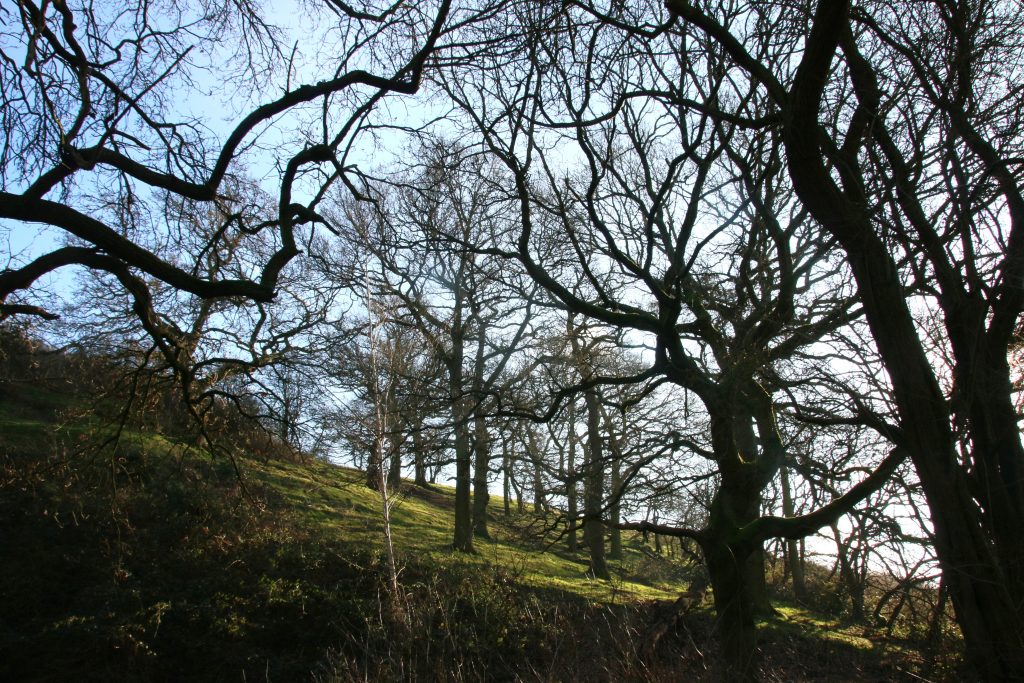
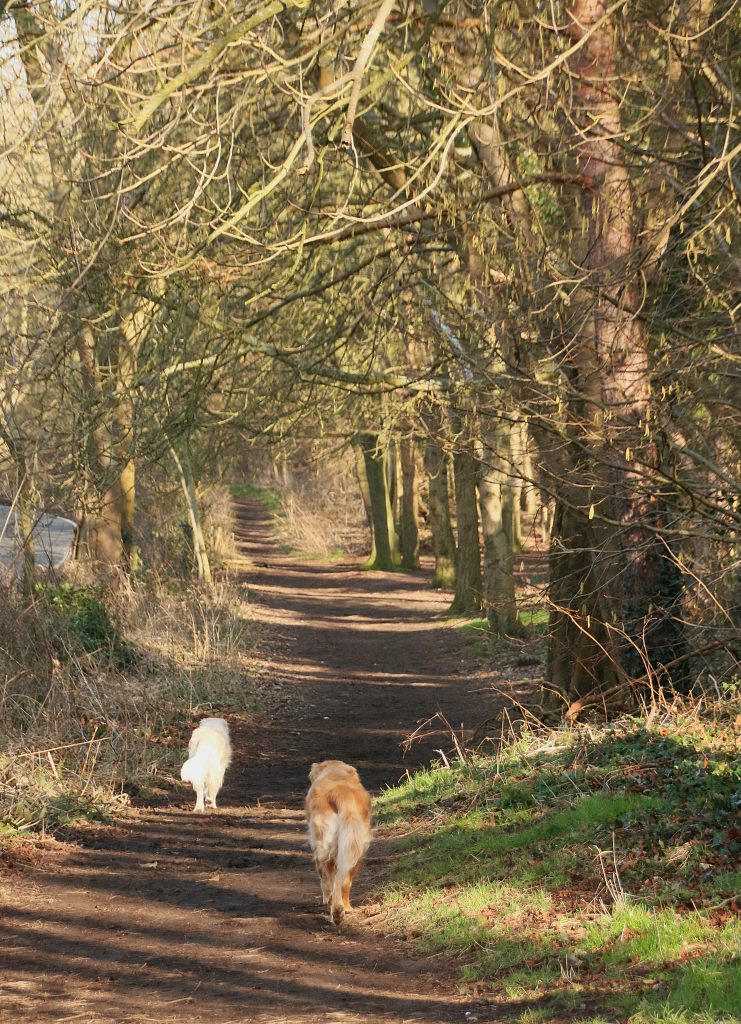
After grey days, at last bright winter sunshine shining through the trees on the side of the Hill, and on the track alongside the Lane, lifting spirits and, hopefully, drying the muddy paths. It will be a while before the Sheep Field is dry – even where water is not standing in pools, the grass squelches underfoot.
After crossing the stile on far side of the sheep field and stile, we meet a regular dog walker and her small pack of dogs – today for various reasons, reduced from seven to just four, all well controlled. The dogs happily played as we chatted, but only briefly. I may be retired, but she has work to go to. Further on another dogwalker strolls towards us, weaving past the muddy patches, but without his dog. His wife has joined friends for a walk elsewhere and taken their dog with her.
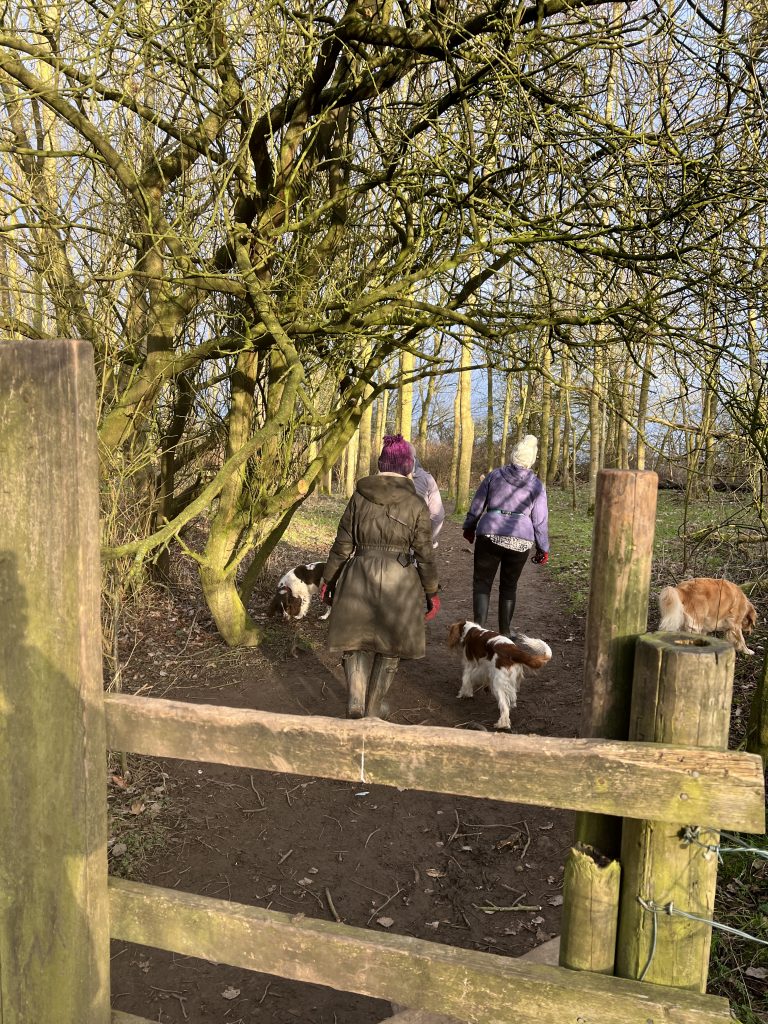
Throughout the walk we have been accompanied by birdsong, the constant notes and trills of a skylark, invisible high above and from hedgerows the song of Robins and Great Tits predominate. Climbing back up to the Lane a Kestrel hovers low in front of us, moving with us as we walk, never quite overhead
Snowdrops emerged a week or so ago but stayed have tight-budded and discrete. The sunshine has encouraged them to open, now more visible in hedgerows, under trees, and in the grass verge on the far side of the Lane, new life as the days lengthen.
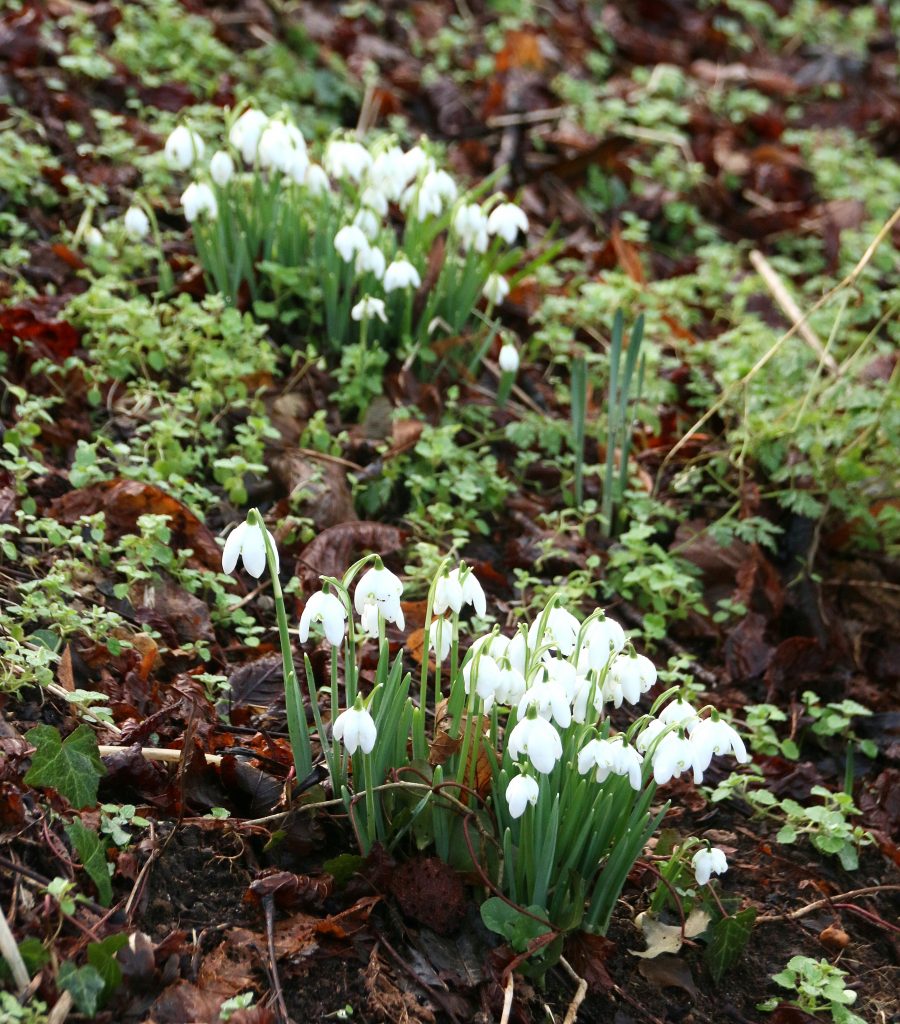
29th January 2025 – Mud below and architecture above.
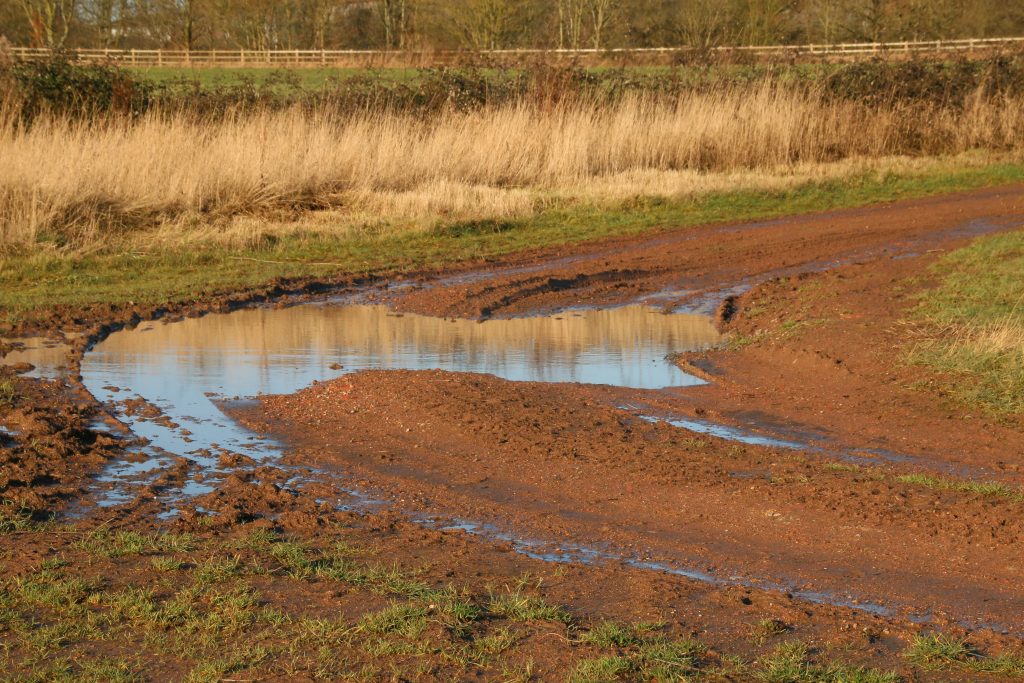
A very wet day yesterday, and I opted for a woodland walk in the hope that the dogs would run over fallen leaves and stay clean. Instead, they ran along muddy paths, and we all got a soaking. I was therefore relieved to wake to another morning of blue skies and sunshine. Despite the sunshine, paths and tracks were wet and muddy, and the ditches full of water that has drained from the fields.
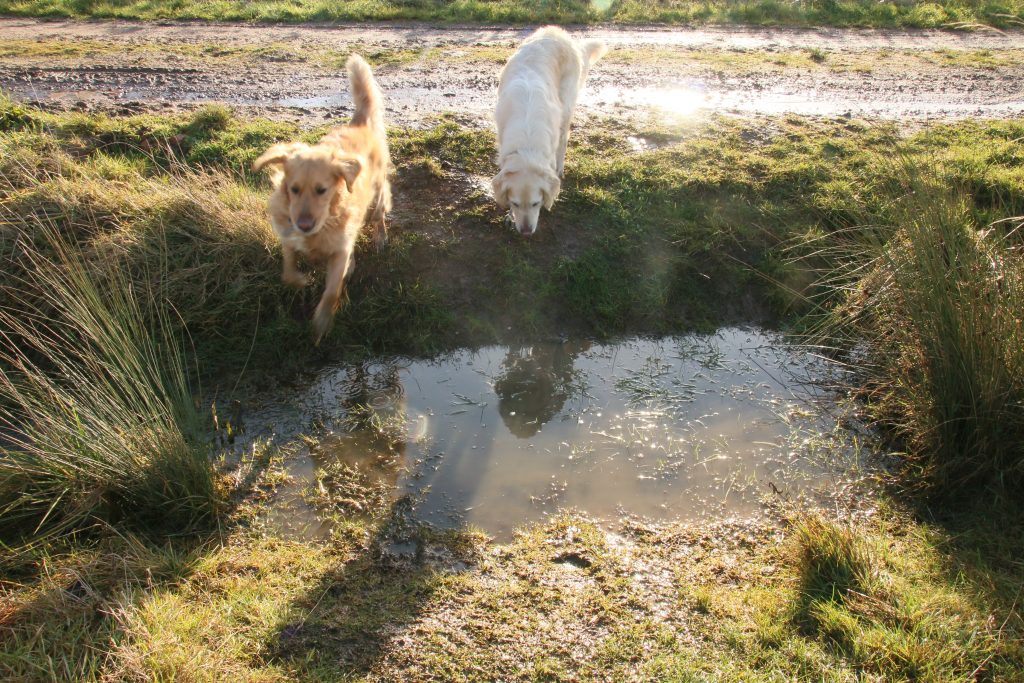
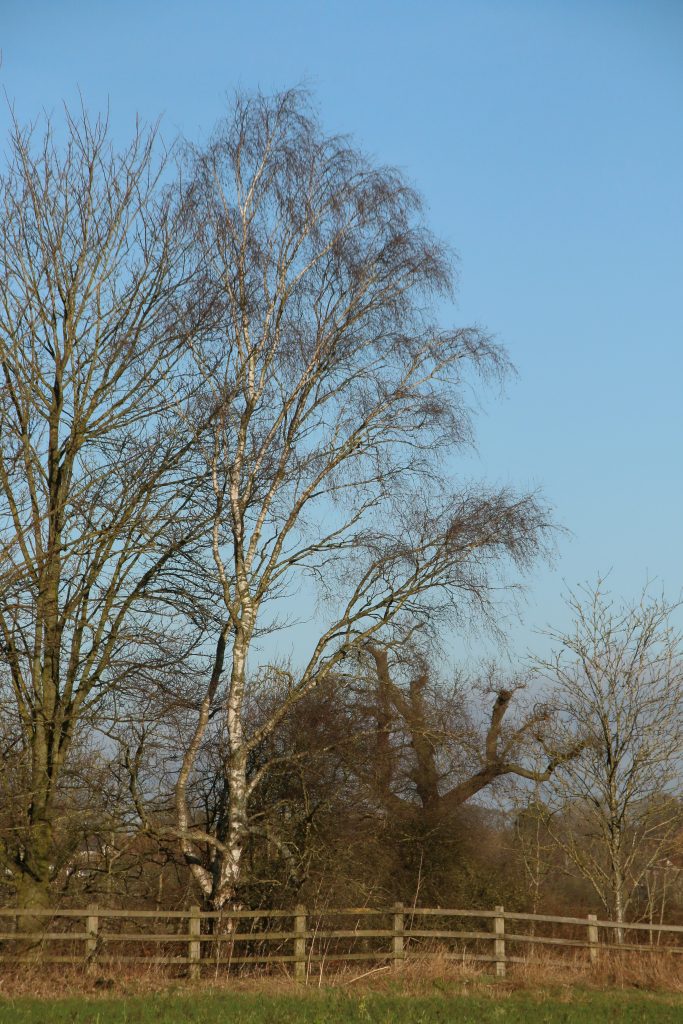
The clear bright winter sunlight was an opportunity to look up from the mud to the trees and hedgerows bordering the footpaths. It is only in winter that the architecture of trees is visible, the trunk dividing into branches and then dividing again and again fractal-like into increasingly slender twigs, the overall crown perfectly symmetrical. The only tree that I recognise at this time of the year without searching the ground for dead leaves or nuts is the silver birch, with its silvery-white peeling bark, and dense tangle of fine twigs.
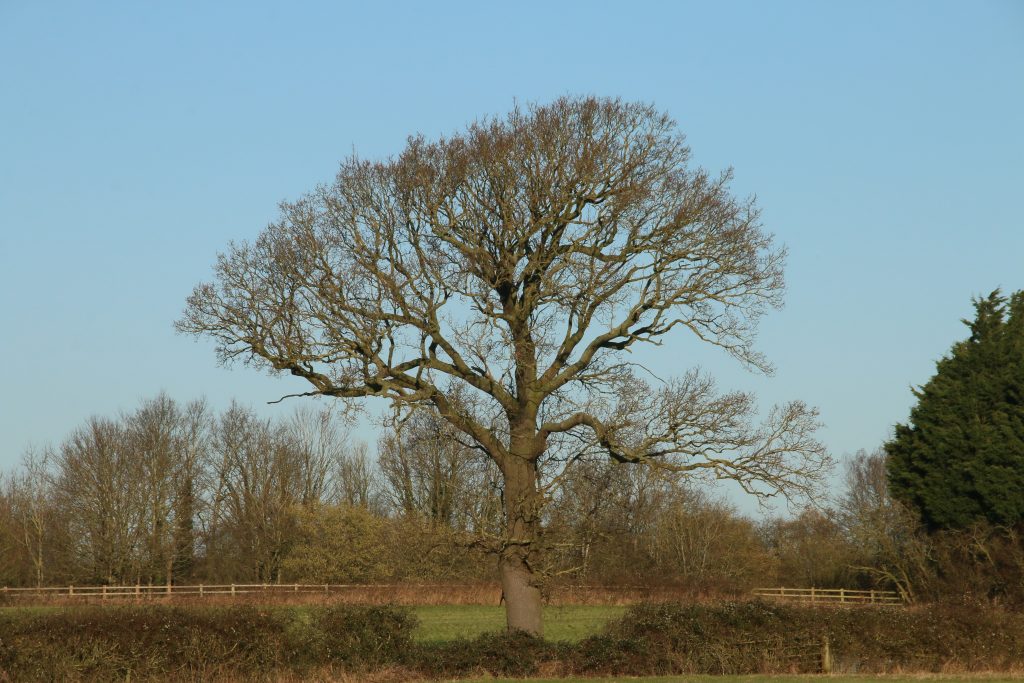
The bare branches of hedgerows reveal the crusty common orange lichen growing on rough bark, almost fluorescing in the sunshine. Lichen is a partnership between fungi and algae, the former providing structure, the latter able to photosynthesise and produce sugars, energy for the organism.
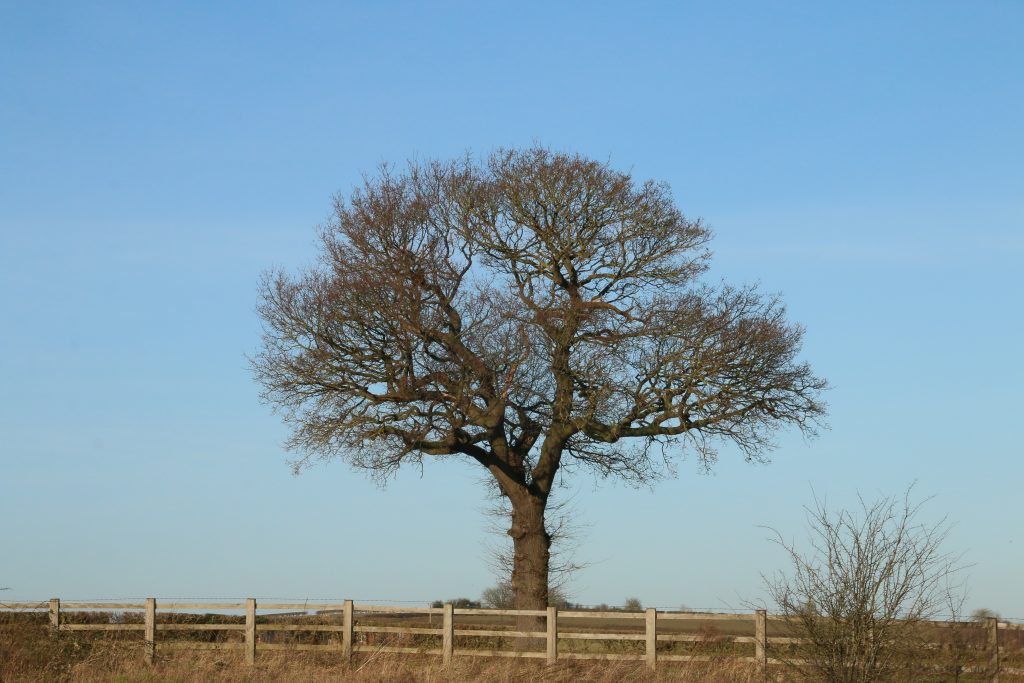
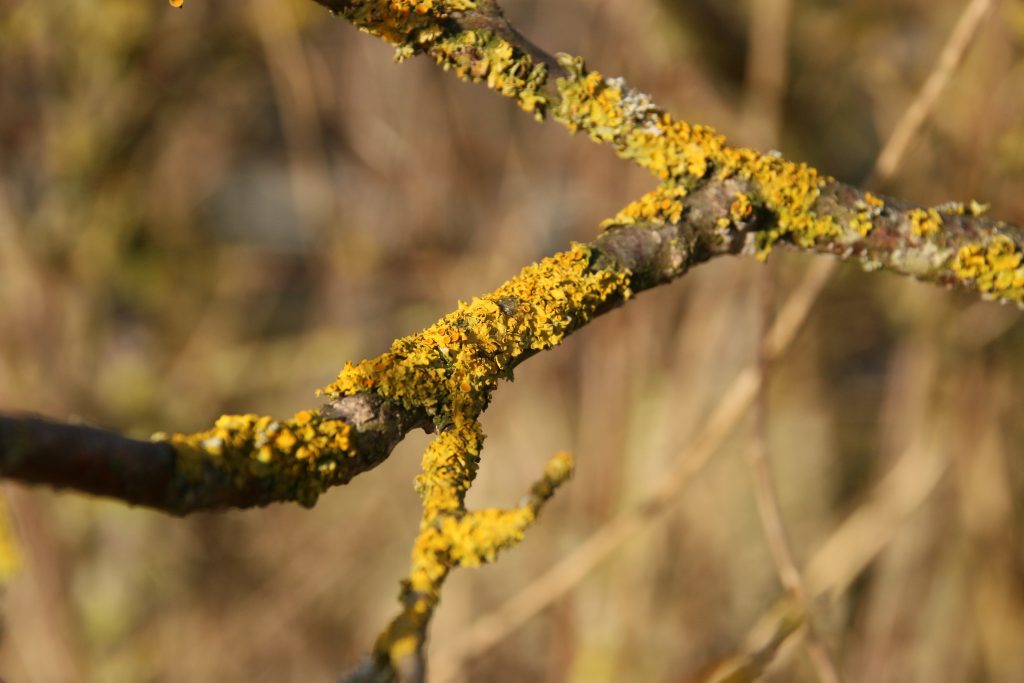
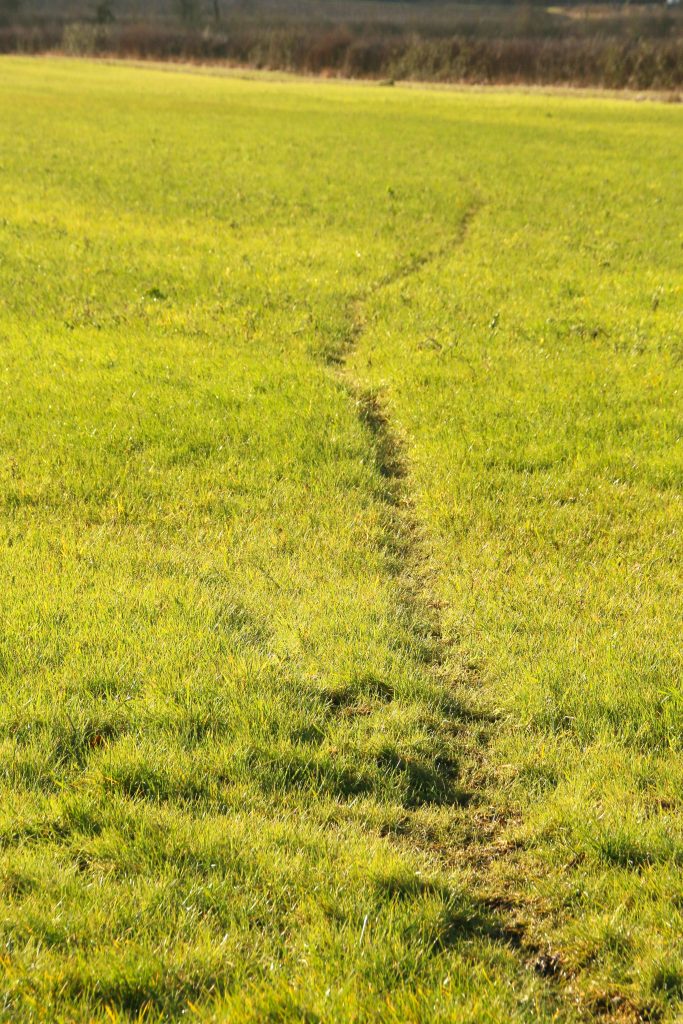
In the fields, young cereal crops appear to be a grassy pasture, more like a meadow than individual plants sown in rows. A track through the crop shows the regular route taken by a wild animal, probably a fox trotting across its hunting ground. In the field behind our home the cabbage-like rape plants are growing, taking advantage of longer days, more sunlight. Many dogs seem to love the tender rape leaves, grazing it as if consuming a plate of salad. It maybe the rape oil in the leaves, that will eventually be the product of this crop when the tiny black rape sees are harvested.
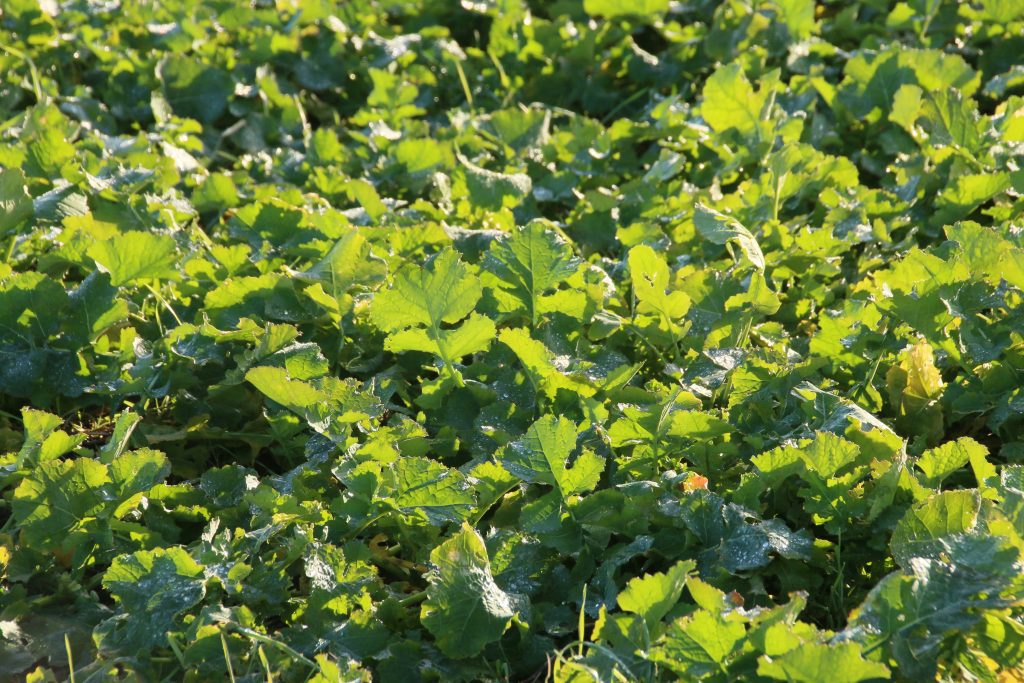
25th January 2025 – Blue Skies
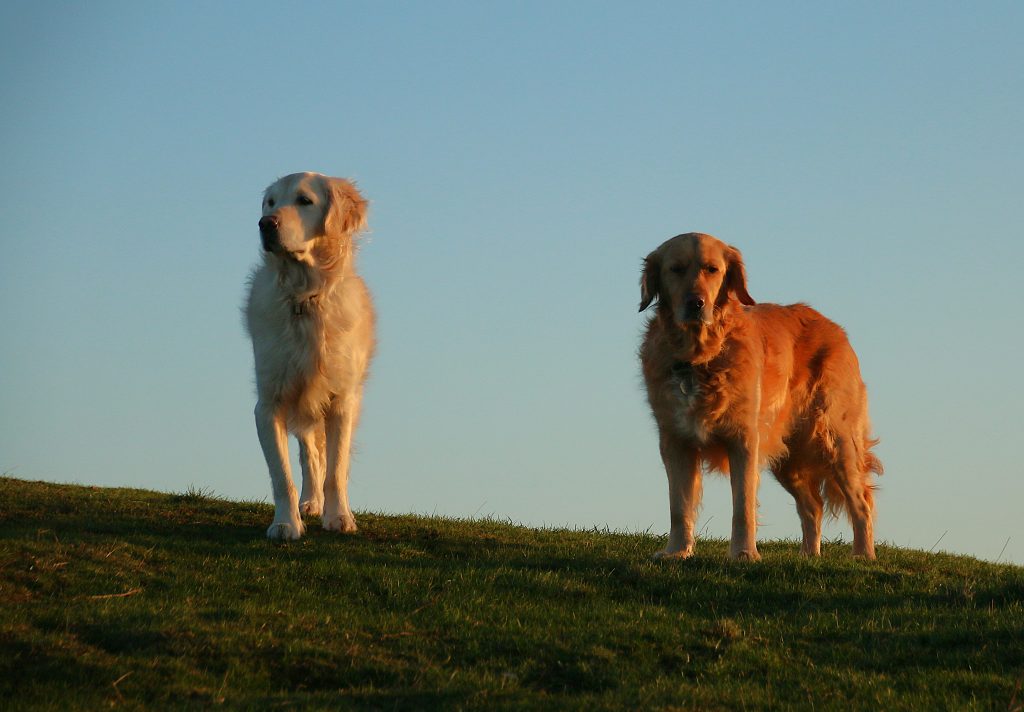
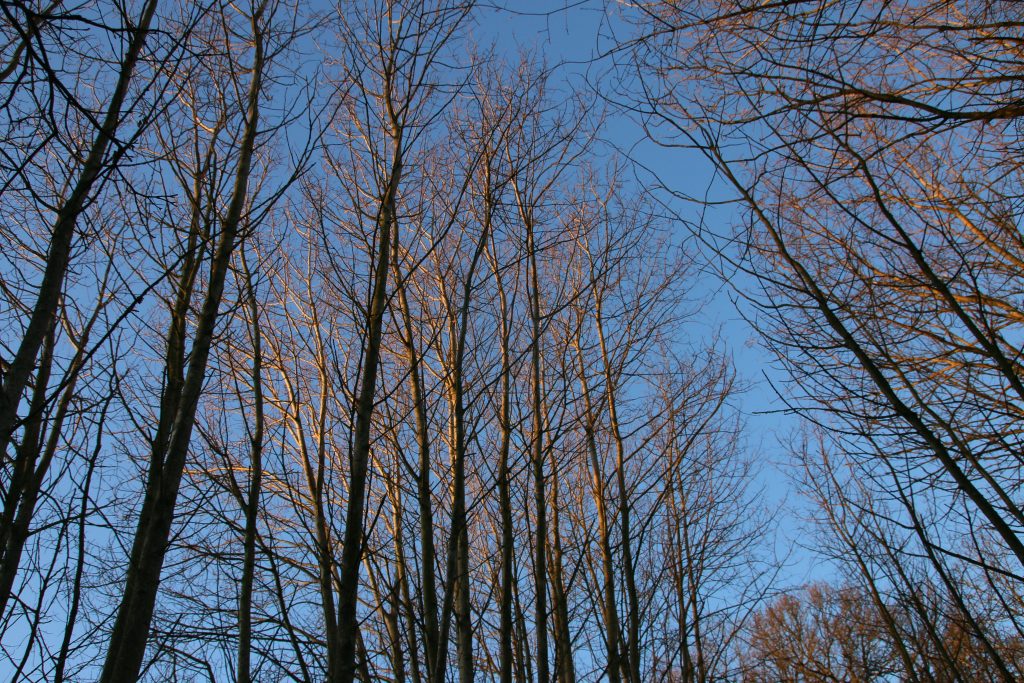
A gloriously sunny morning with a clear blue sky. I was out with the dogs a little earlier than usual, just as the sun was rising above Croft Hill, and the ground still frosty. The trees along the path along the bottom of the Hill were in shade, apart from the highest of the bare branches, which reached up into the sunlight shining over the edge of the Hill. We walked to the top for clear views over south Leicestershire, the quarry walls glowing in the morning light.
We walked through the small patch of woodland, more a copse, between the “Old” and “New” Hills, the latter following the quarry edge, and up to the quarry edge, where a level area of grass provides a “viewing platform” over the quarry. Once there were picnic benches here, but sadly these were vandalised, and only an information board detailing the history of the quarry remains. Moles have been particularly active this year, around Croft Hill and in gardens on our Lane, and this grassy area overlooking the quarry is no exception, with a group of large molehills, a opportunity for the dogs to signpost their presence by scent marking the heaps of soil.
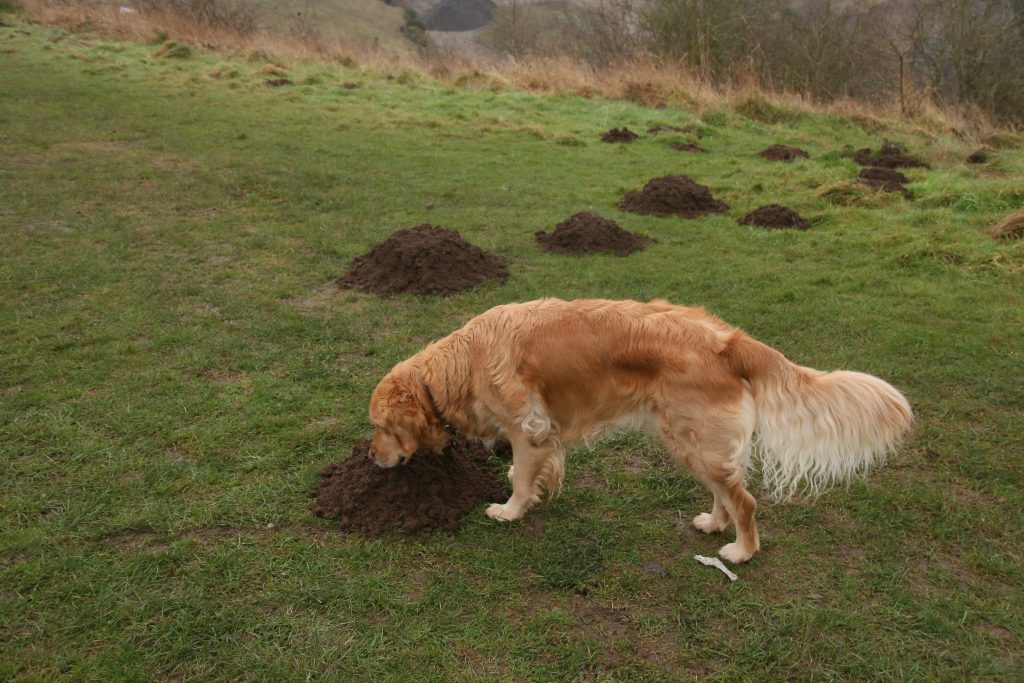
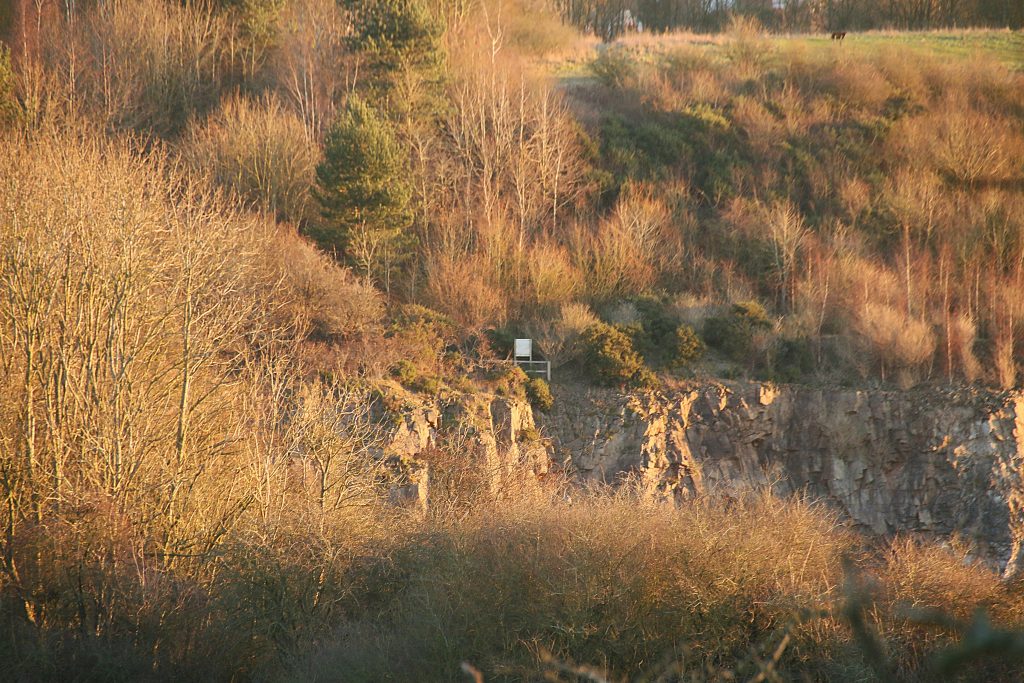
We followed a labrador and owner, some distance in front of us, who soon disappeared over the brow of the Hill, but as I turned to return home the labrador bounded into the sight to play with Sam and Ellie, and was soon followed by the owner, who wasn’t sure whether I was happy for his younger energetic dog to play with mine. I assured him that I was delighted, although probably not as delighted as all three dogs appeared to be, all running around together, occasionally wrestling in the long grass, until we all went our separate ways, the owner and his lab down steps to his car, and us back onto Croft Hill.
Sam had still had energy to spare and disappeared through young trees onto the grassy slopes – he had seen Kayla the Collie, a canine friend, climbing the Hill. They briefly greeted each other, the owner gave me a wave, and Sam returned to my side, to go back through the kissing gate and onto our Lane.
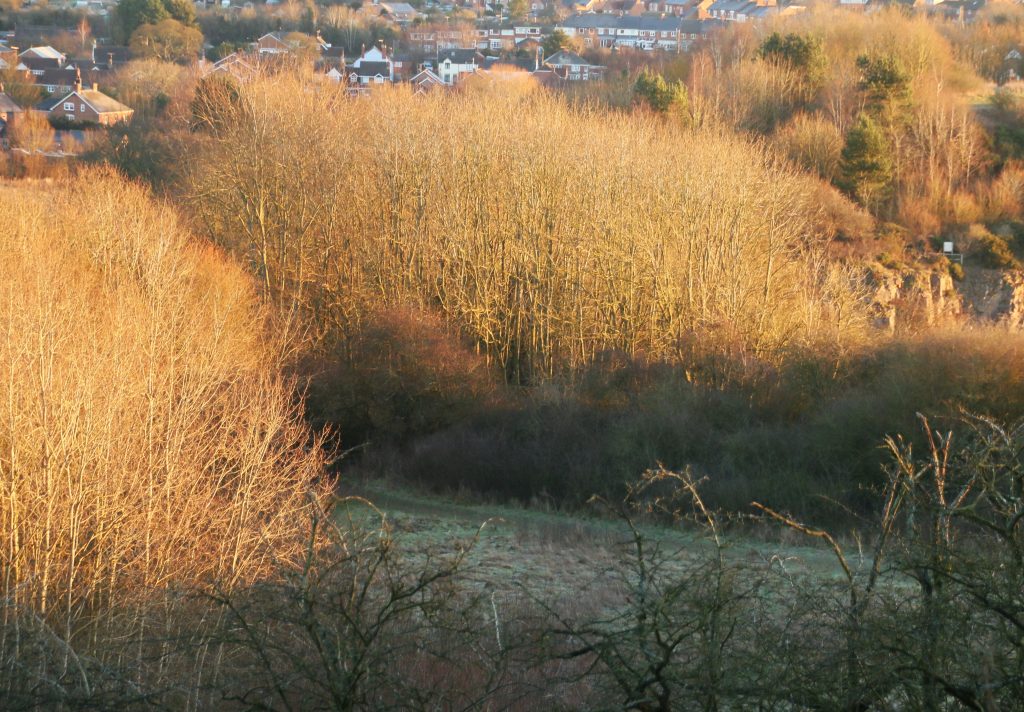
The sun continued to shine from a clear sky all day, and Croft Hill was silhouetted against a crimson sky when we walked back from our evening dog walk.
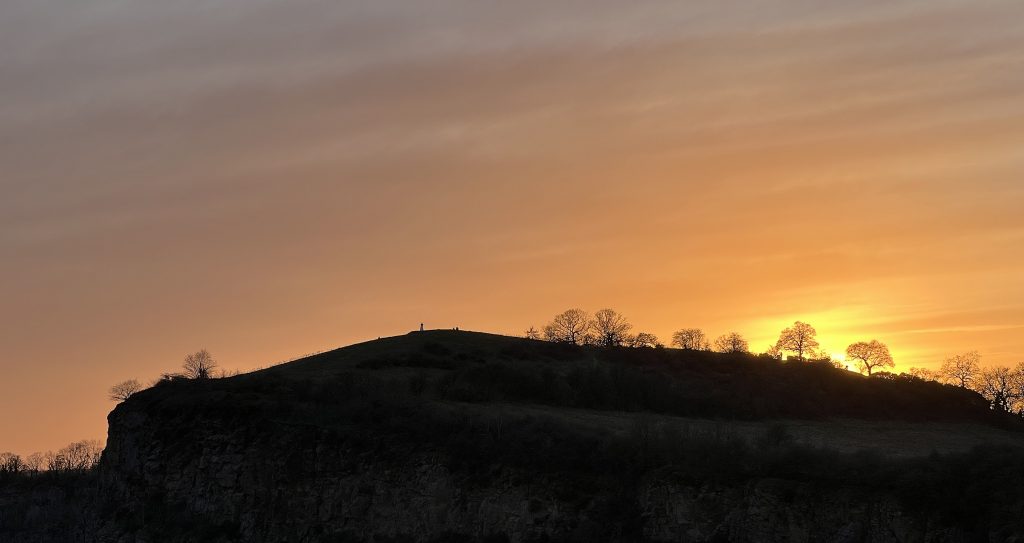
14th January 2025 – Waiting for the sunshine
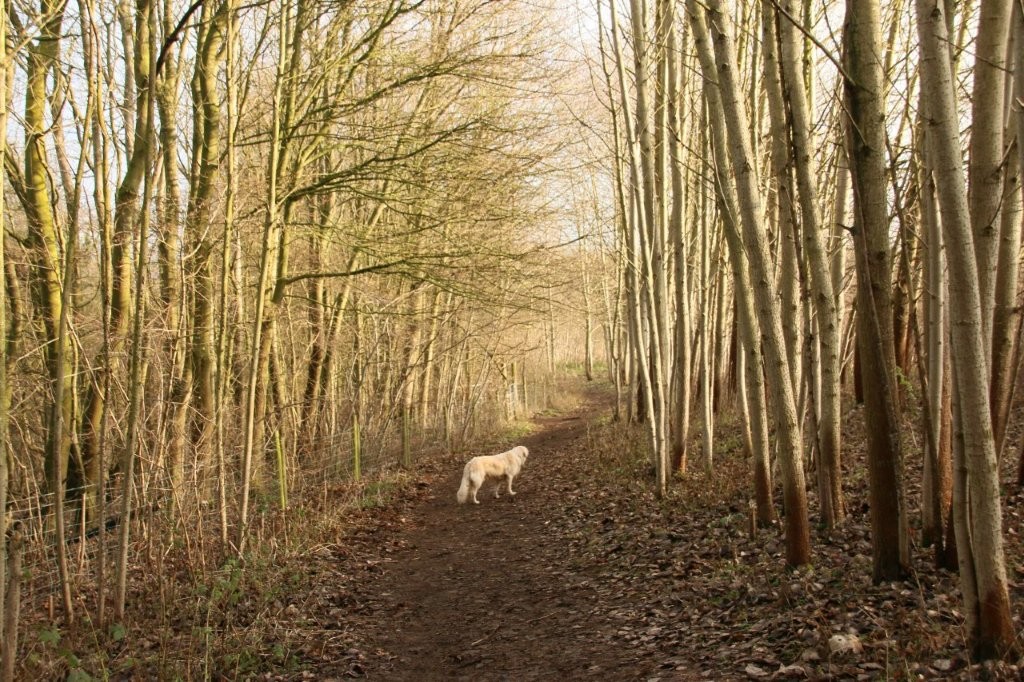
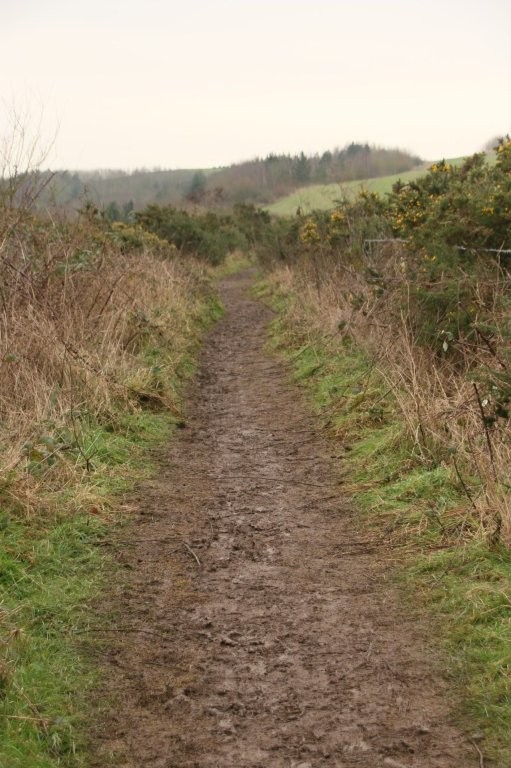
Frost and fog has given way to mild muddy paths once again. It was good to have clean dogs while it lasted. A lovely bright morning, and from the top of the Hill I can see sunshine advancing across the landscape. It never quite gets to us though, Croft Hill exerting its usual microclimate influence, which normally keeps rain and cloud away, but today seeming to hang on to cloudy skies. I meet a fellow dog walker at the top of the Hill, and we are soon joined by another, and we chat for a while. By the time that I walk back down towards home the sun has broken through the cloud, illuminating the avenue of trees leading to the gate close to our Lane.
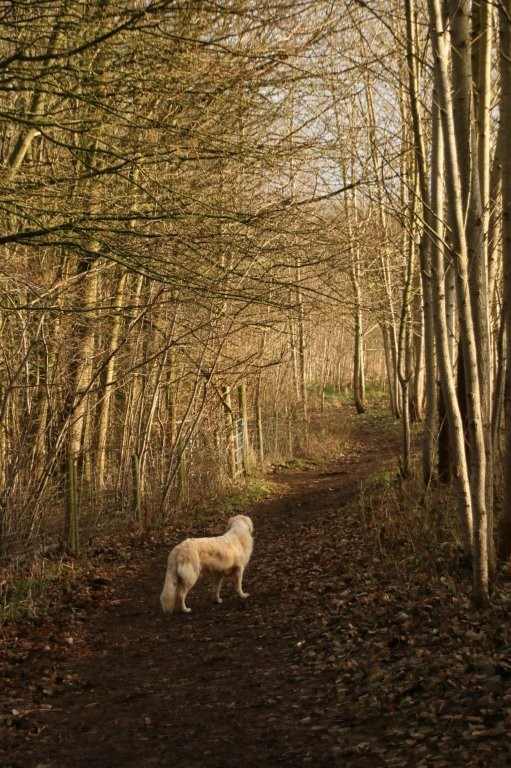
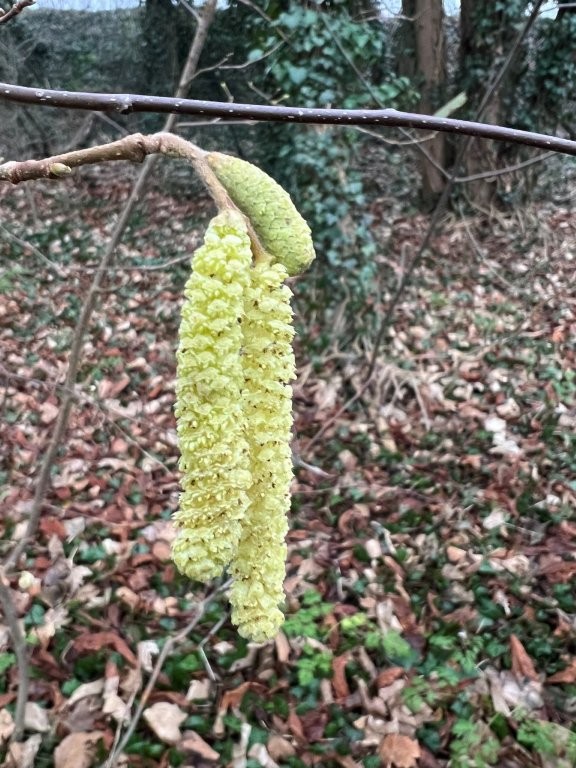
First tentative signs that Spring is on the horizon have appeared – catkins. Hazel catkins are the first to appear, in early January, or occasionally earlier – too early for insects to carry pollen, and so the male catkins rely on the breeze to pollinate the female flowers. The catkins are more a sign of hope than imminent springtime – there is plenty of time for more winter weather.
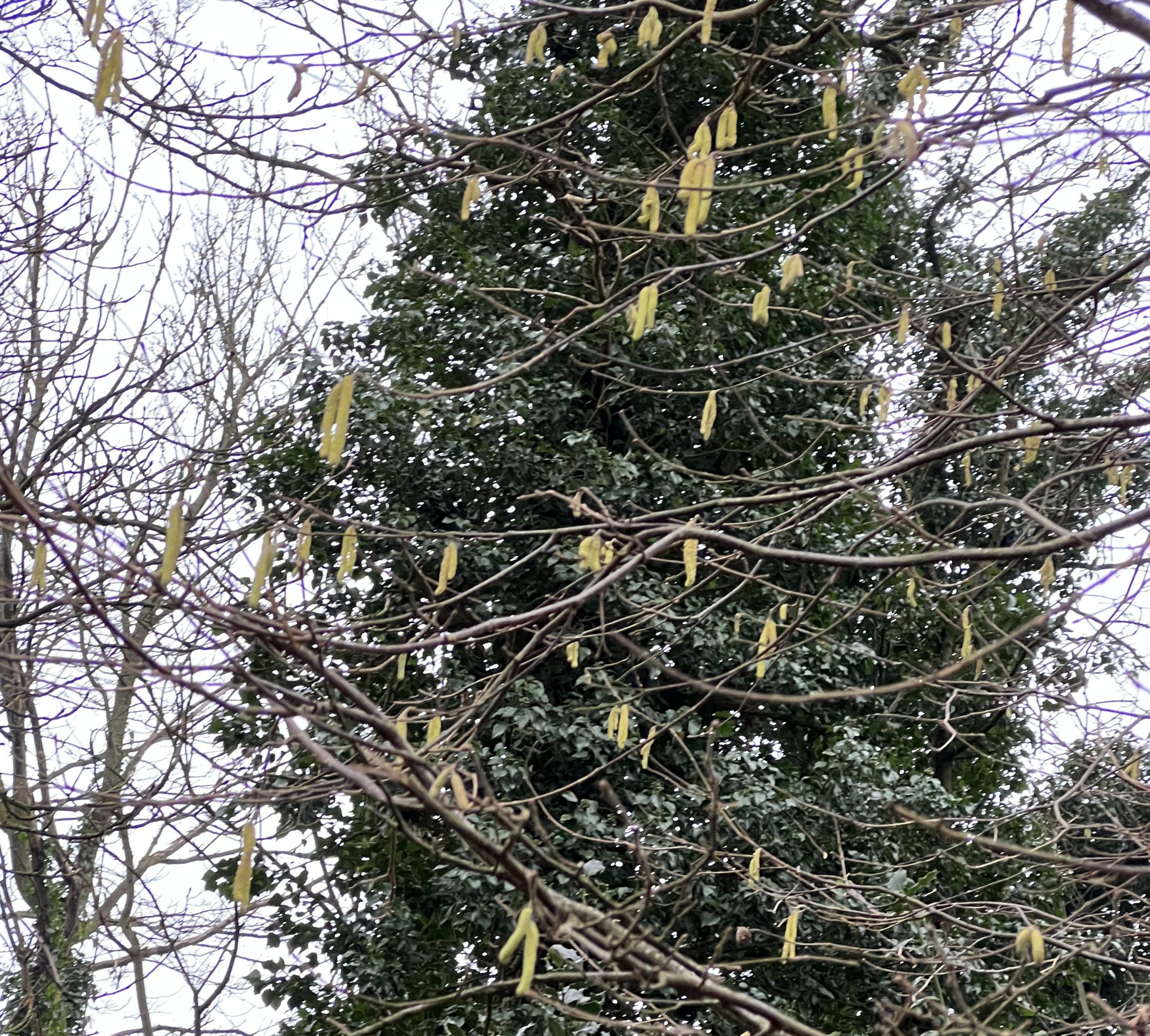
11th January 2025 – A black and white world
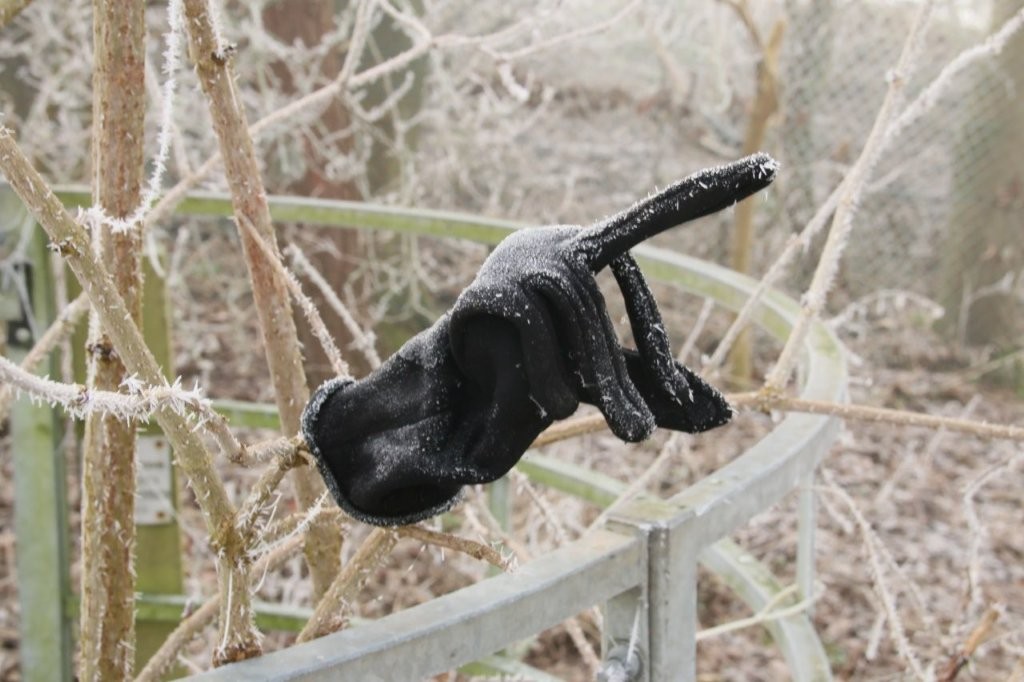
Today the frost is accompanied by freezing fog, and the temperature is a degree or so colder than yesterday. At the top of The Hill the fog brightens, and the disc of a pale sun is visible above. Sam suddenly stops and stares into the trees on the side of the Hill. I hear a child’s voice drifting through the fog, and call Sam to me before he runs off to investigate. We walk down the grassy path back into the fog, and a man and youngster appear out of the trees to our right – they have no doubt been playing on the rope swing suspended from bough of a tree the midst of the wood. As we leave the Hill a frozen glove, lost and left on a branch to be rediscovered, points spookily in the direction that we need to go.
We walk the footpath at the back of Croft Glebe, by a field of stubble, not ploughed and drilled after the harvest, and so a haven for wildlife. Birds feeding on insects and grain in the stubble rise into the fog. We sometimes see hares here, and sometimes the dogs’ scent unseen hares, but luckily not today. I do not want Ellie and Sam disappearing into the mist.
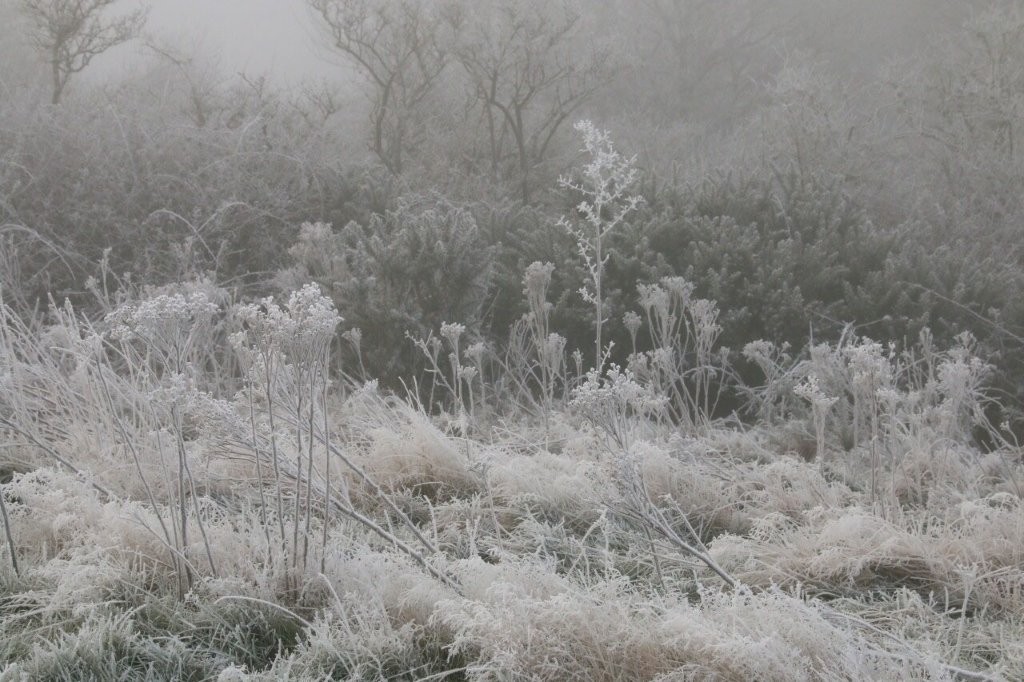
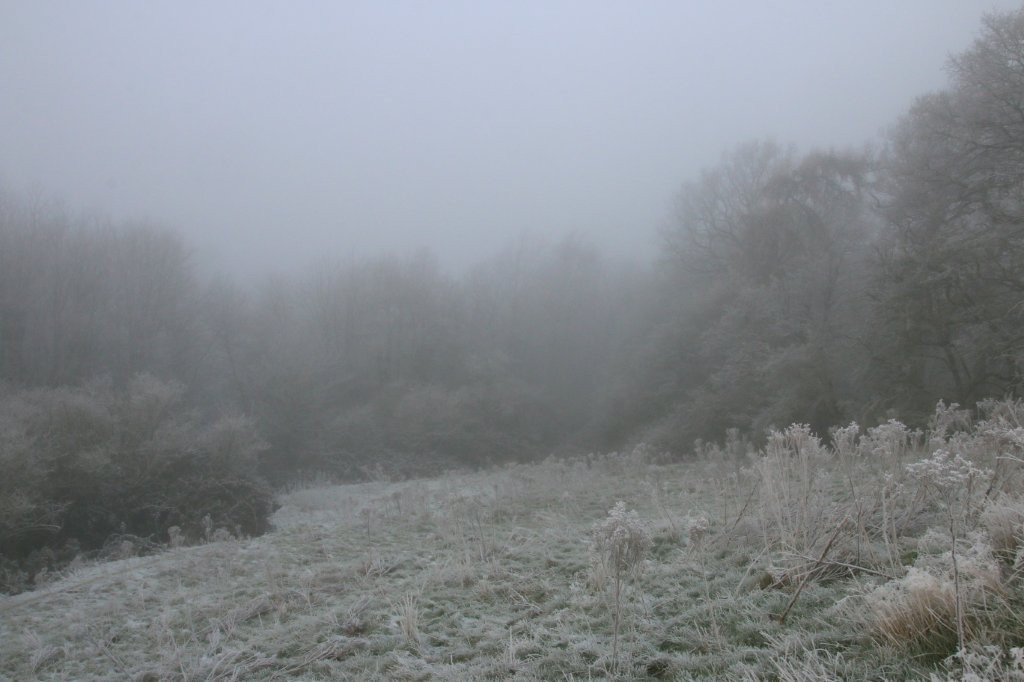
Crossing the Lane and walking back along the footpath towards the Hill a family walk towards us, Dad and two young daughters. I make both dogs sit and watch me, to allow the family to pass unmolested, but the youngest girl smiles at Sam, which as far as he is concerned is an invitation, and instantly both dogs run to greet the girls, who, fortunately, are delighted. Dad tells me that they have dogs at home. Sam gives the youngest girl a hug and buries his nose under her hood – she is wearing a furry scarf, he is convinced that it is a soft toy, and in our household soft toys are for dogs.
We leave the family, and the dogs decide to play, running in circles on the narrow path, not the best place since there are gaps in the adjacent hedge, and cars sometimes travel at speed along the lane on the other side. It is safer to turn onto the track onto the Hill, where the dogs can run to their hearts content. Obviously they don’t, trotting sedately along the frozen path at the bottom of the Hill.
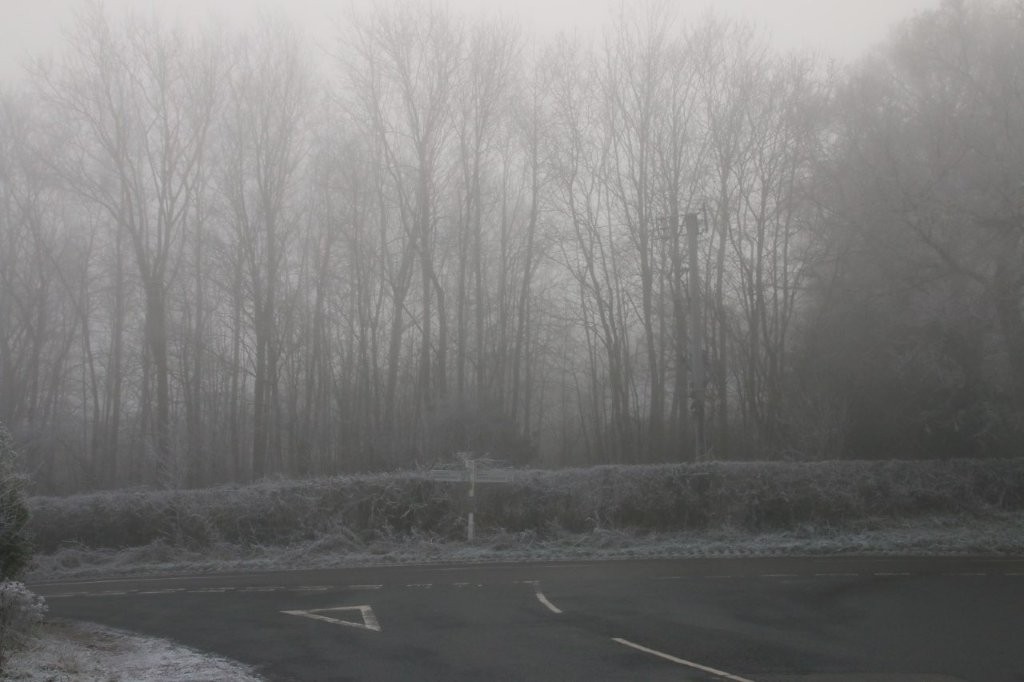
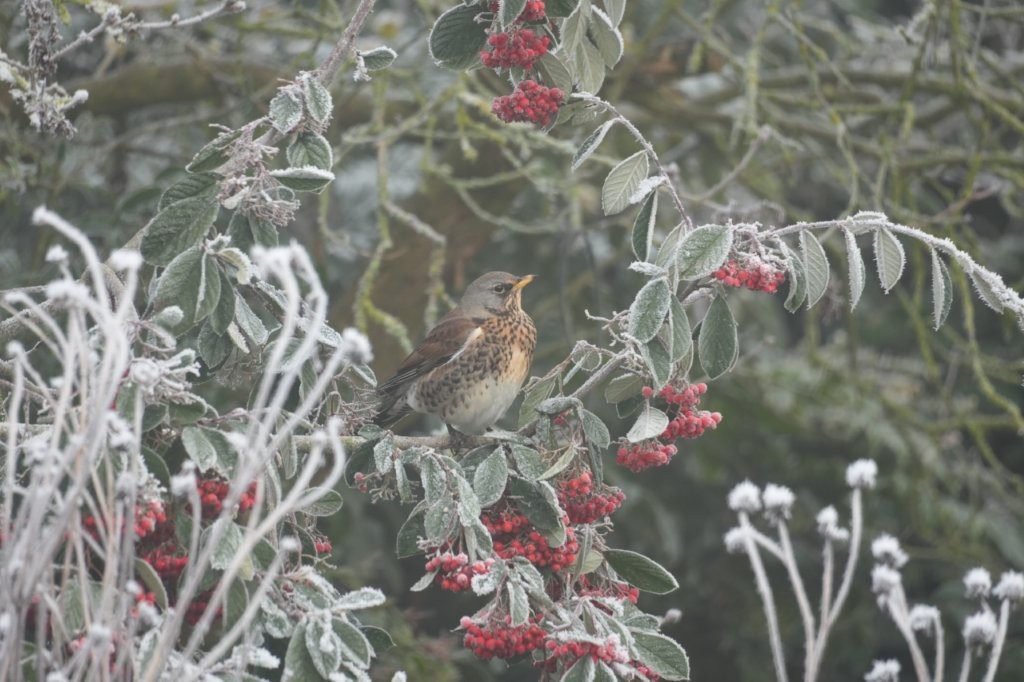
In the garden both Redwings and Fieldfares have descended onto the Cotoneaster shrub to feast on the red berries, dozens of birds swooping together across the lawn to land in the bush to feed. Within a few days the shrub will have been stripped of its berries, but, after all, that is precisely why the berries are there.
10th January 2025 – Even colder
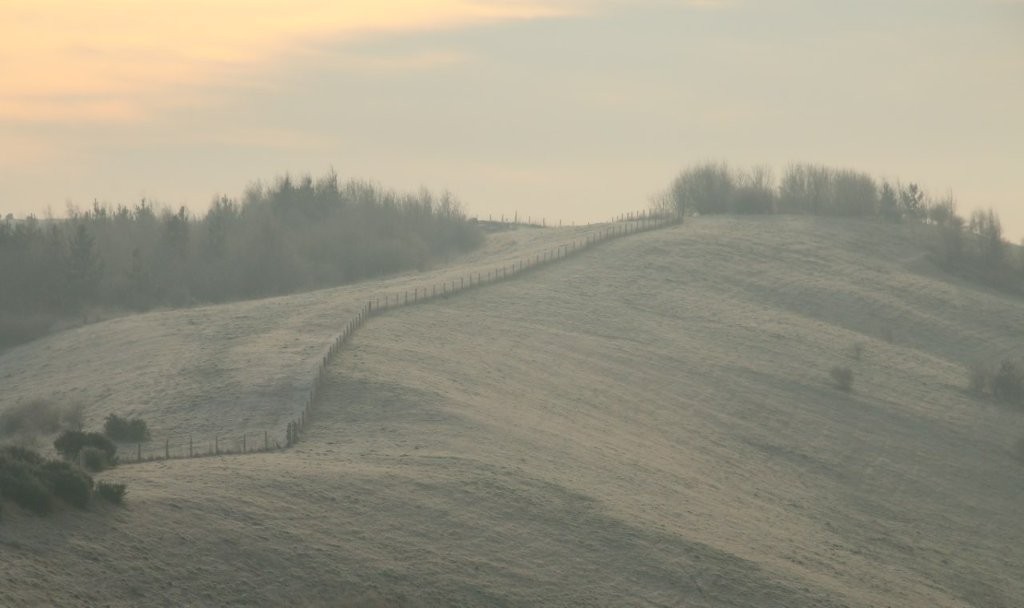
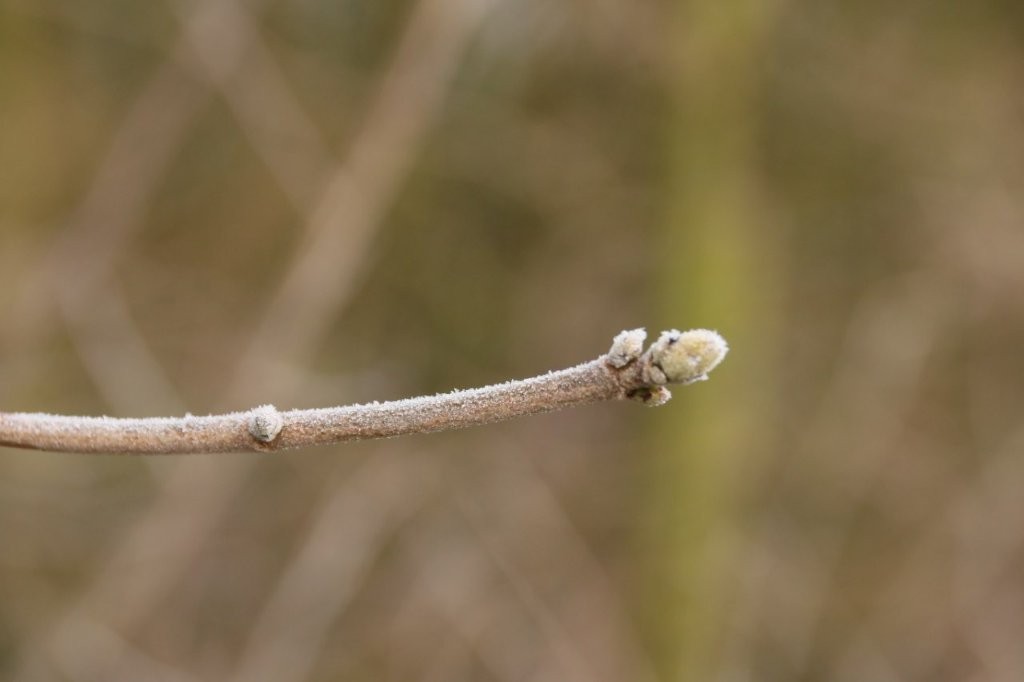
This morning is even colder than yesterday, below -4C when I left home, with grasses and vegetation covered in frost, although not really enough to be “hoar frost”. I notice buds on tree branches, Elder I think, and of course gorse is flowering despite the frost – gorse never stops flowering. Despite the cold, and mud as solid as concrete I keep to the high ground to avoid mud on lower paths which may have only a thin covering of ice. We meet two foxhounds, as we often do, kept on a lead since otherwise if they pick up a scent they will follow it at speed, ignoring any calls to return to their owner.
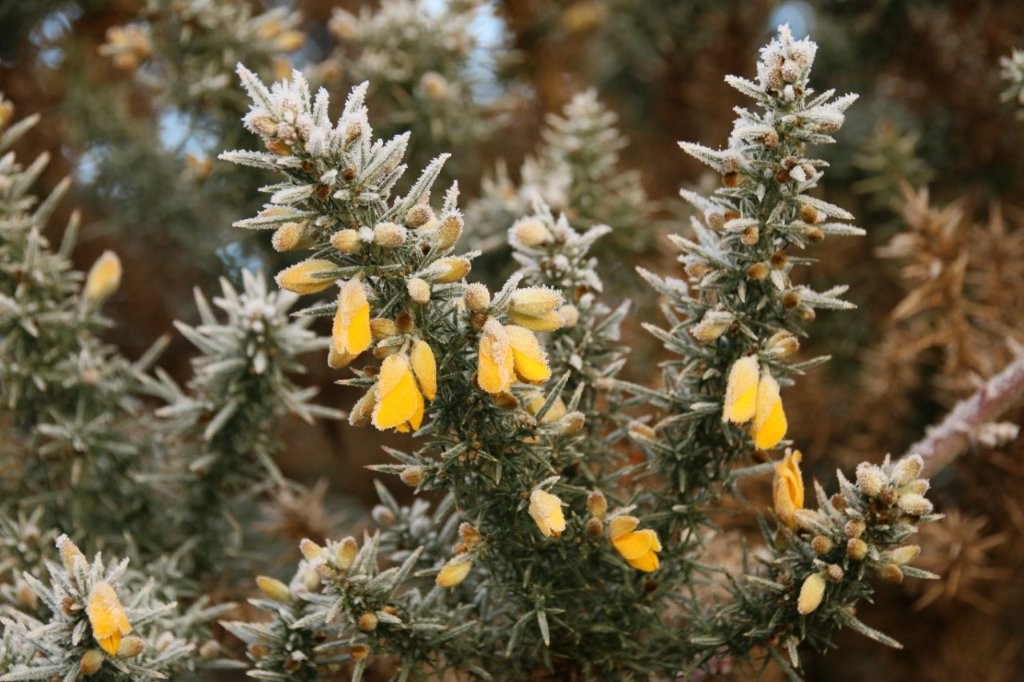
As usual we finish the walk by climbing up Croft Hill, and at the top see a familiar figure seated on the rocks, the bearded face and cap of a regular dog walker, and local bell ringer, who loves to greet the dogs. The dogs also recognise him and run over to say hello. Only it isn’t the bell ringer. It is a chap who looks very similar, and who very politely asks me to call the dogs back. I do so, both dogs return to be put on a lead, and I apologise. He tells me that he has walked from Broughton Astley and intends to walk along the ridge bordering the quarry, a circuit of 6 miles back to his home village. We discuss the likelihood of soft mud on the route, which we agree is unlikely.
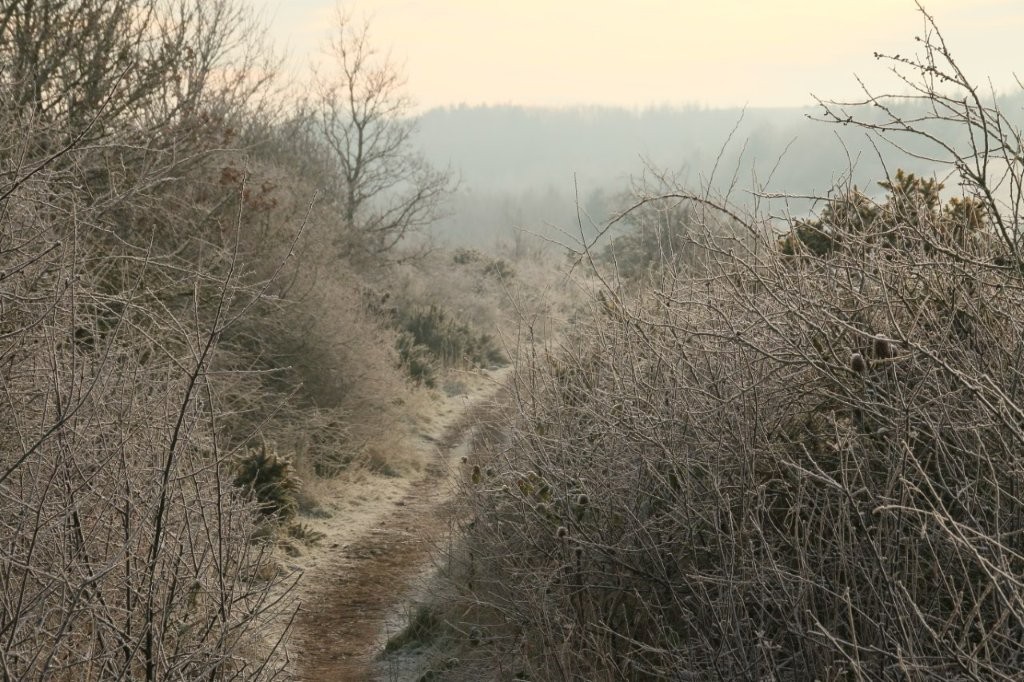
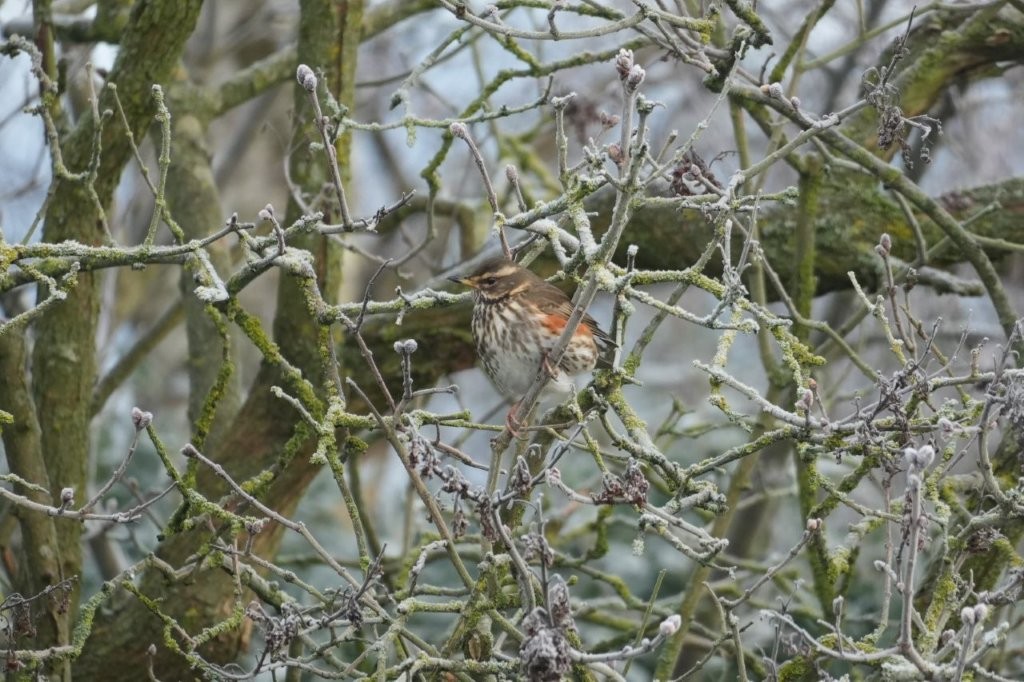
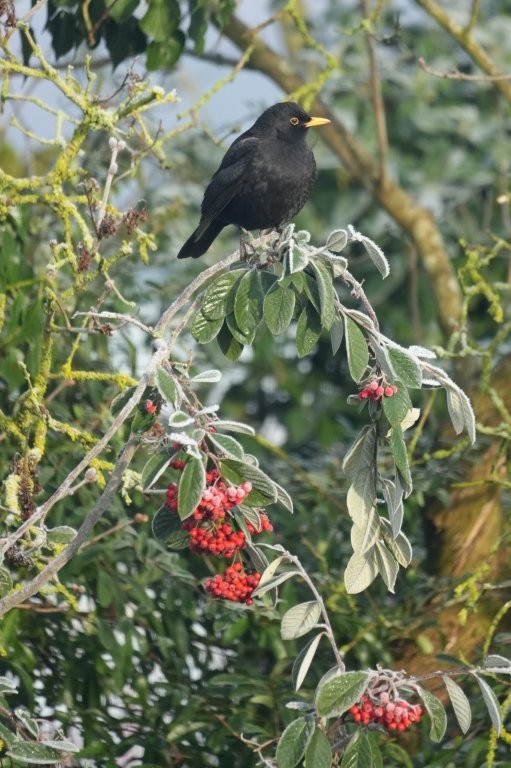
At home birds continue to feed voraciously, both on sunflower seeds served by us, and berries on the cotoneaster shrub. Redwings are becoming braver, with occasional individuals popping into the cotoneaster for a snack before being vigorously chased away by a resident male blackbird who considered all of the berries to be his. The Redwings retire back to the apple tree to watch for a further opportunity to feed. The Blackbird seems less disturbed by a bluetit taking advantage of “his” berries, while a Great Tit keeps his distance in a neighbouring shrub.
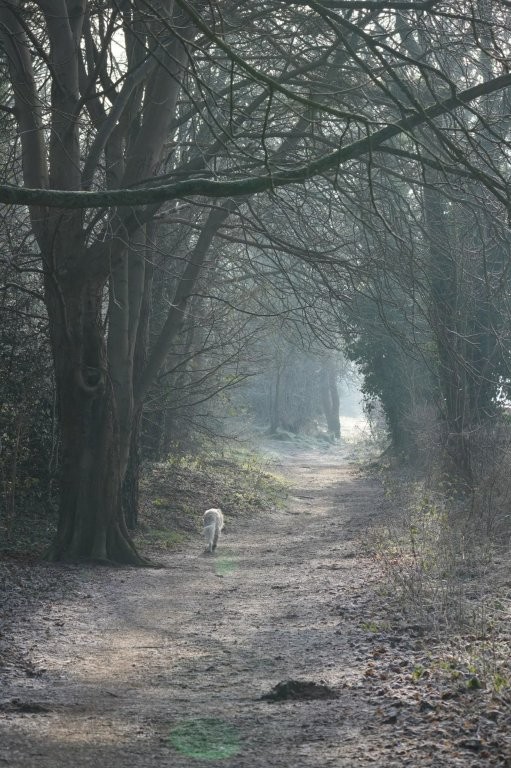
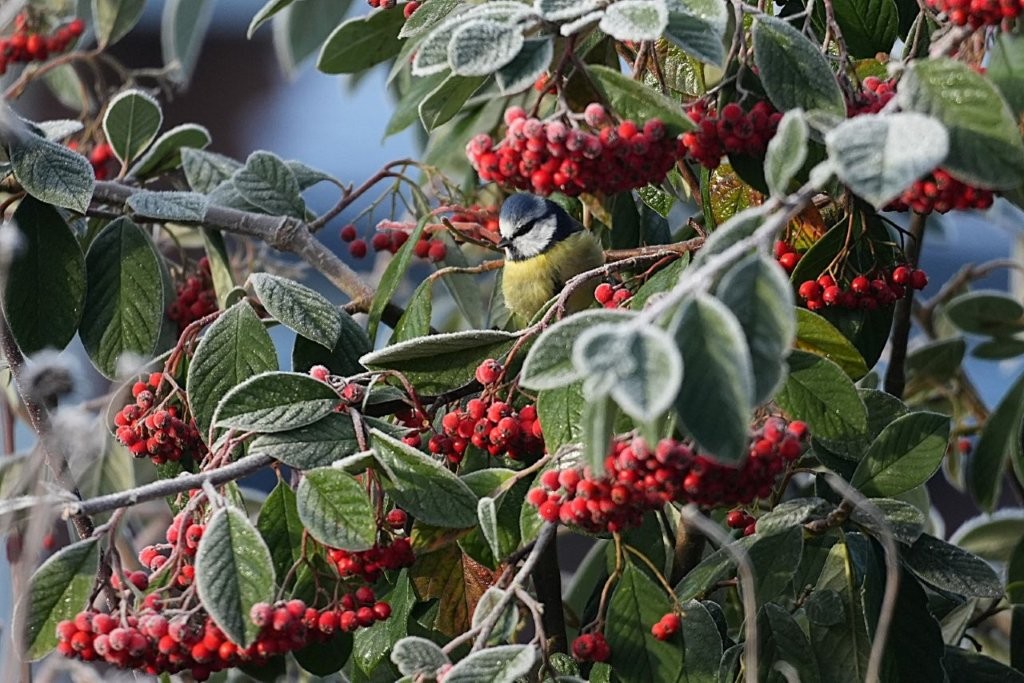
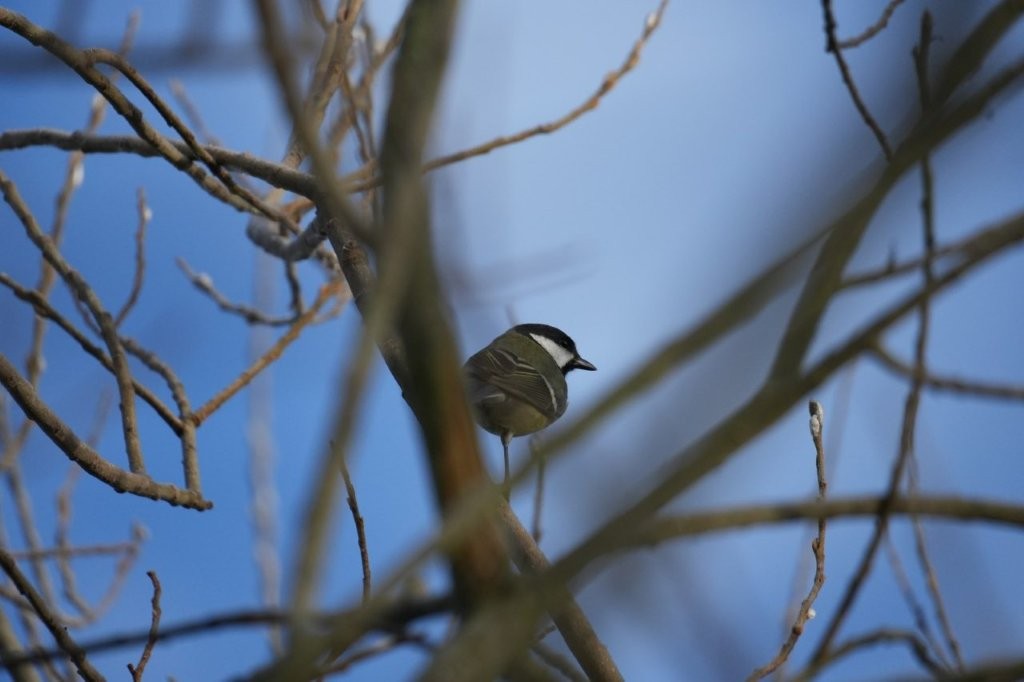
We have another dog walk with friends this afternoon, following the tree-lined path to the village pub. It is Friday, and Friday is pub-lunch day, an opportunity to enjoy friendship and look forward to the weekend.
9th January 2025 – Breaking the ice and feeding the birds
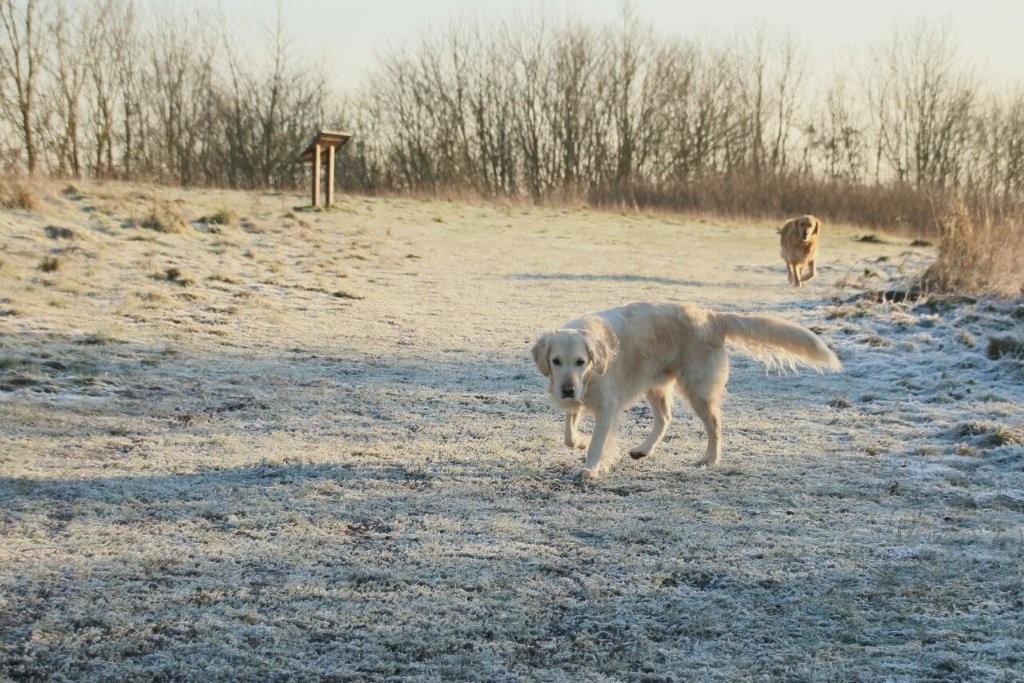
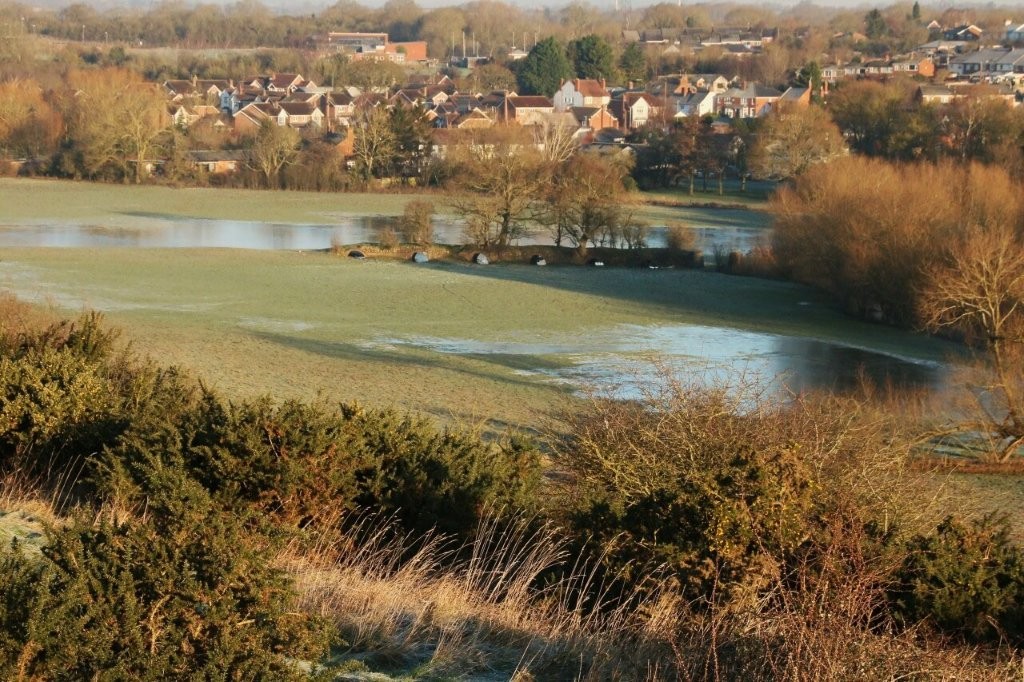
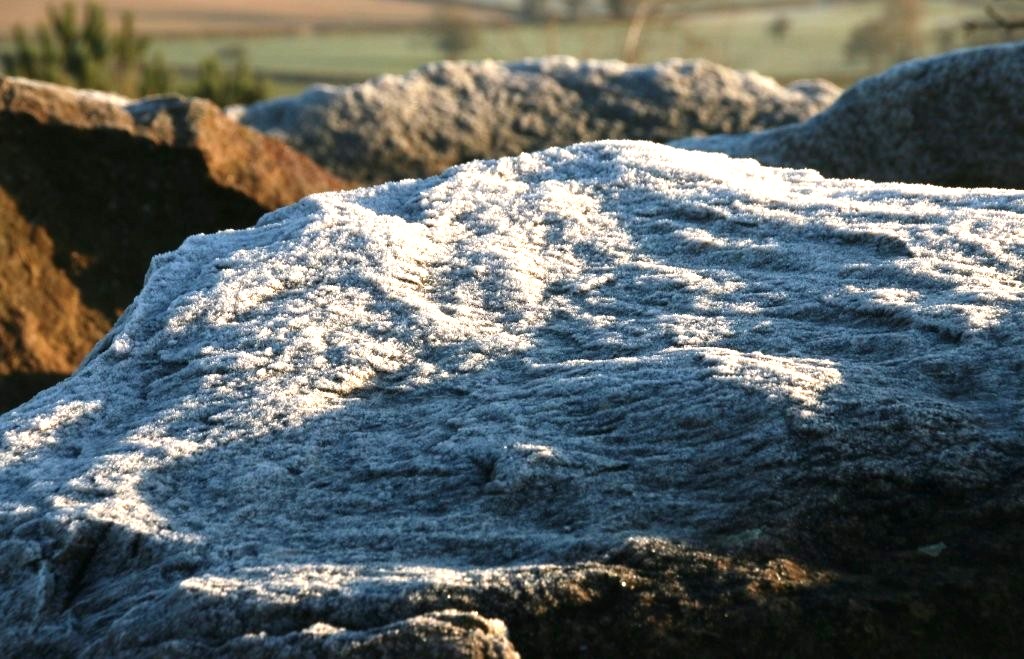
The temperature was -3C this morning, having warmed from a chilly -5C at sunrise. I put on walking boots, confident that we would be walking on top of frozen mud. I was not disappointed, as we walked over the lumps and bumps of the muddy paths up onto the “New Hill”. We met Taffy the Cockapoo, and the dogs ran around together while we owners chatted briefly – too cold to stop for long. Below the path along the hill recent floods have mostly drained away, leaving large areas of ice in the riverside pastures. Above us granite boulders at the highest point of the hill were coated with a thick layer of frost.
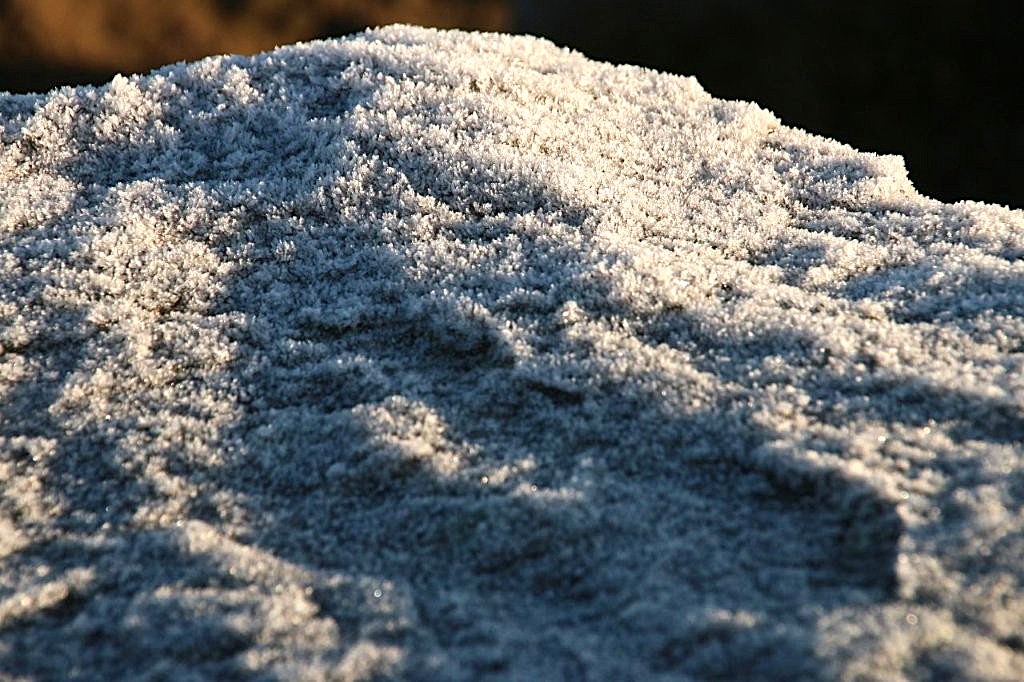
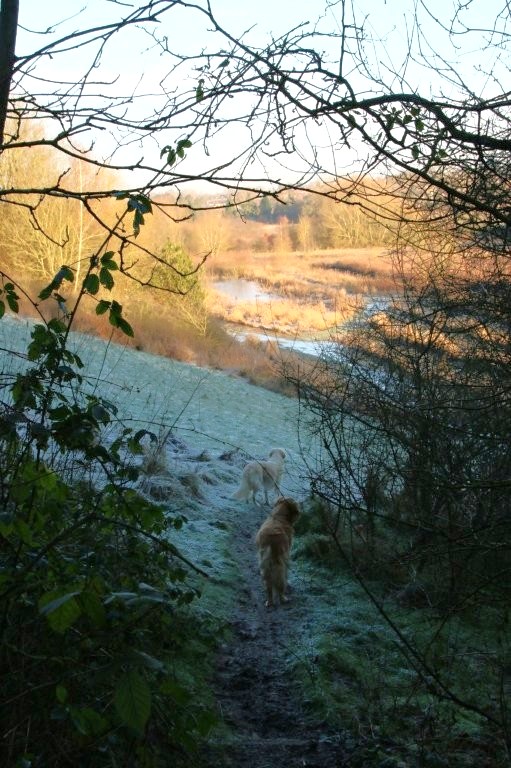
I walked down through woods, the winding path more crunchy than solid, and the vista of the wildlife pond appeared through the trees, the surrounding paths clearly frozen – at least the dogs would arrive home with clean paws. I was too optimistic – as we stepped off the grassy slope and onto the icy gravel path, feet and paws promptly broke the ice and descended into mud, almost, but not quite, deep enough to reach the top of my walking boots. I was glad to reach the frosty boardwalk above the soggiest ground. When we got home the dogs would need a watering can of warm water applied to legs and tummies after all.
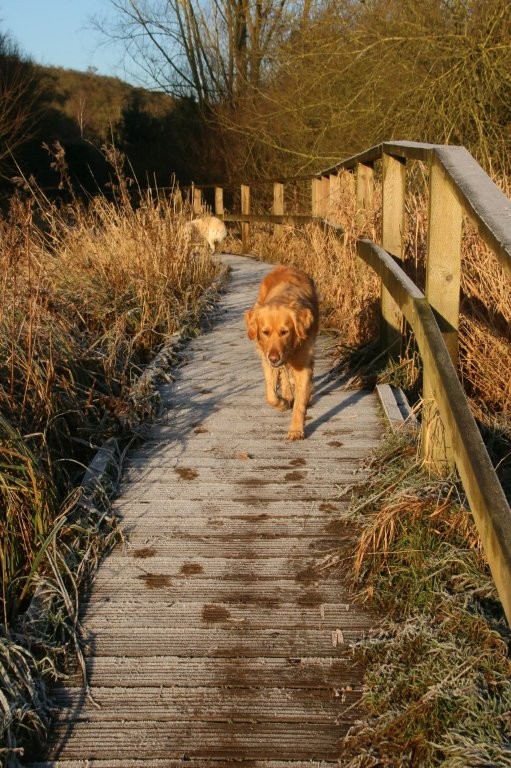
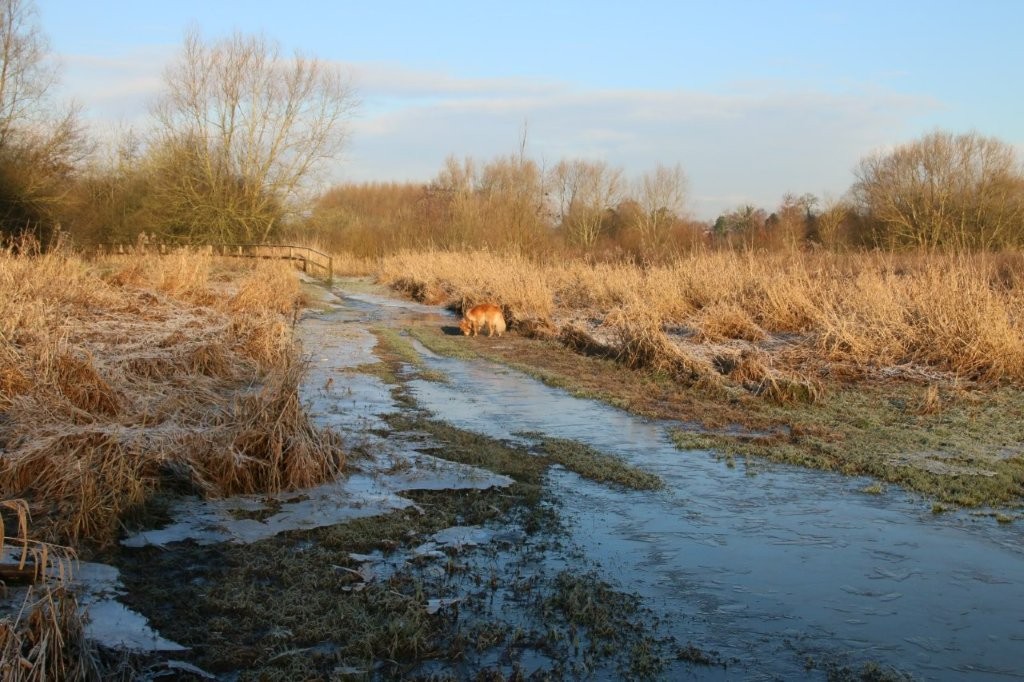
We finished the walk with a climb of Croft Hill, to my get heart beating and blood racing. We met a small party of school children at the top, with teachers, and I was able to answer some of their questions about the quarry below.
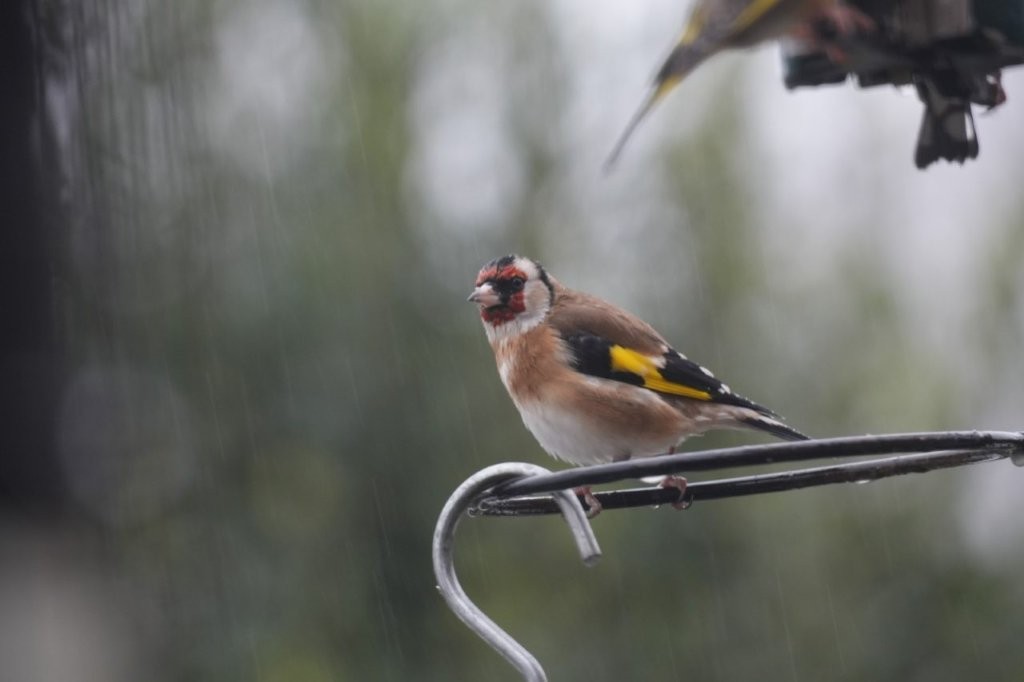
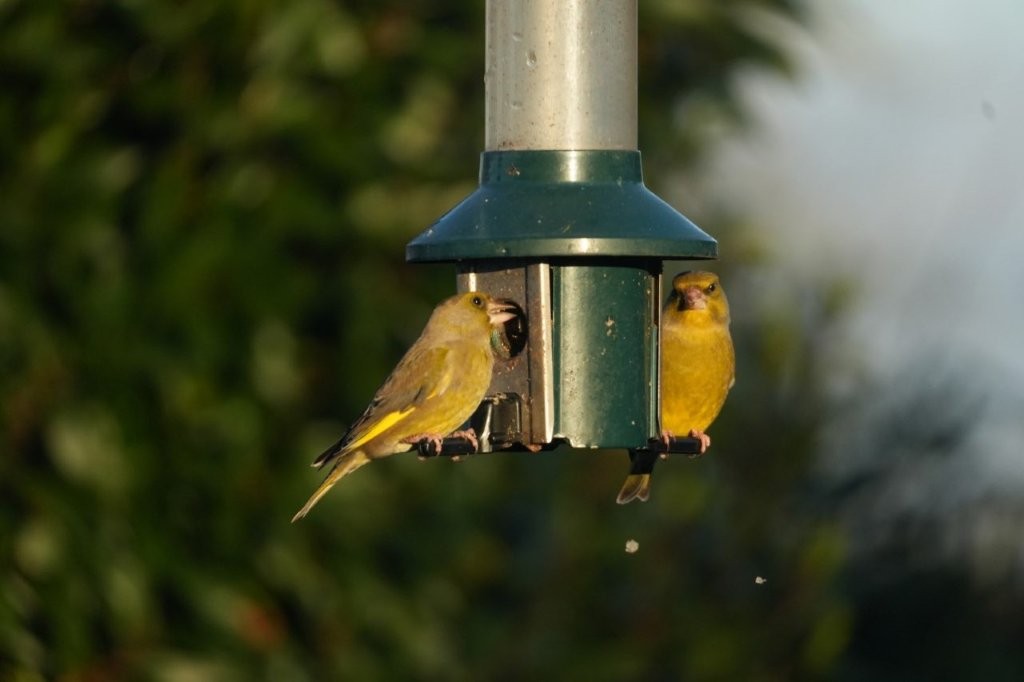
At home the bird feeders are busy during the cold spell, not unusual, our most common visitors being goldfinches, greenfinches and various tits, particularly long tailed tits. This morning we had an additional visitor – a pheasant strolling around the lawn, scavenging seeds dropped by birds and and squirrels. This was probably “Percy”, a pheasant that has been visiting various gardens on our lane for many years, although clearly not the original Percy. Pheasants are very common in the fields and hedgerows around us, but not often seen in gardens. This afternoon a flock of Redwings settled into our neighbour’s tree. Often seen in fields and hedgerows in winter, in colder weather they invade gardens, stripping shrubs of any berries that remain over winter. We have a large Cotoneaster shrub, 3m tall, covered in red berries. Once a flock of Redwings, and sometimes Fieldfares, start feeding on it, the bush can be stripped bare of berries within a few days.
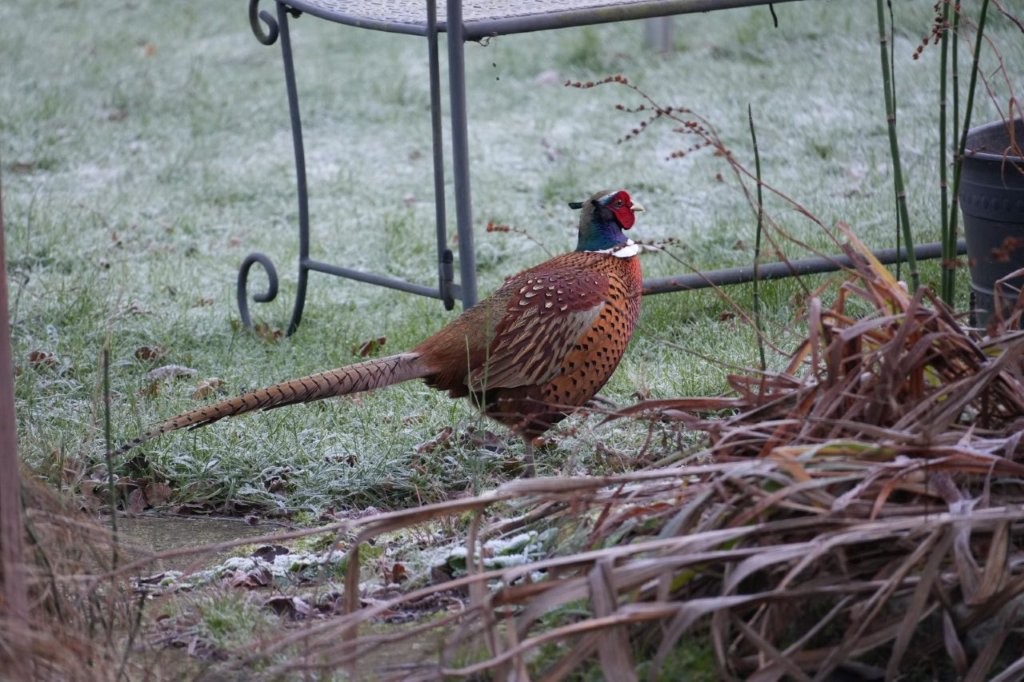
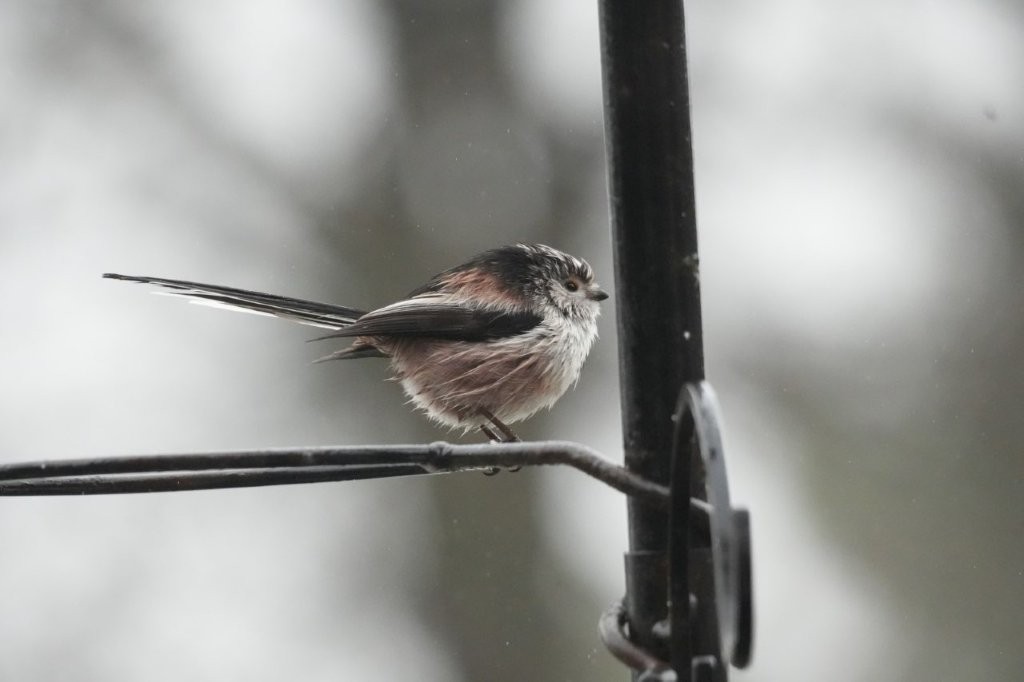
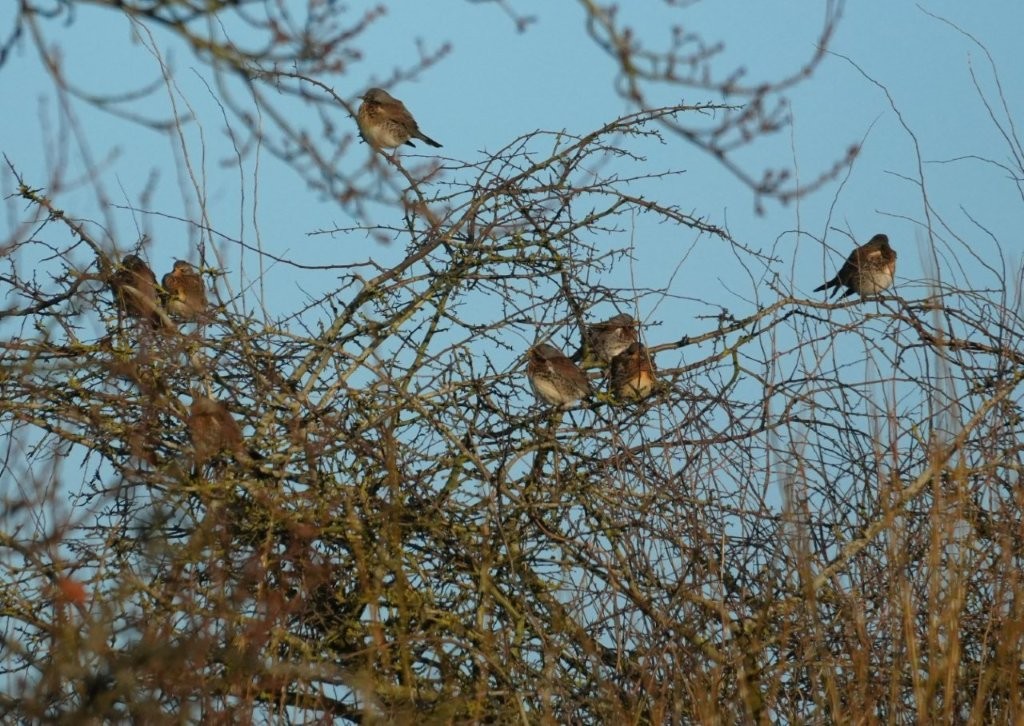
7th January 2025 – Rainbow’s end
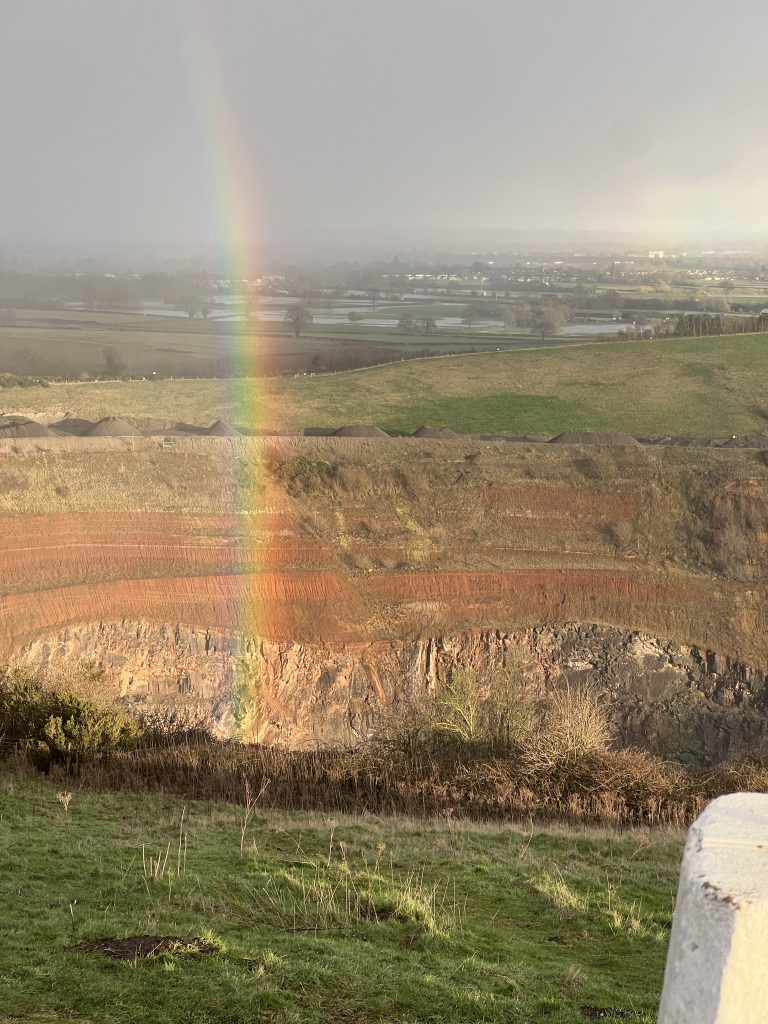
A dog-walk with a friend, finding local paths that were not flooded, which meant flexibility when deciding our route, ended with a climb up Croft Hill. We were under a clear sky, but dark clouds surrounded us, and we could see rain sweeping across the landscape. Rain often goes around the Hill, which seems to have its own microclimate. We had a brief shower of soft hail, before a rainbow arched across the sky. From out elevated position we could clearly see either end, until one end moved towards us and disappeared into the quarry, the rainbow rising between us and the opposite quarry face
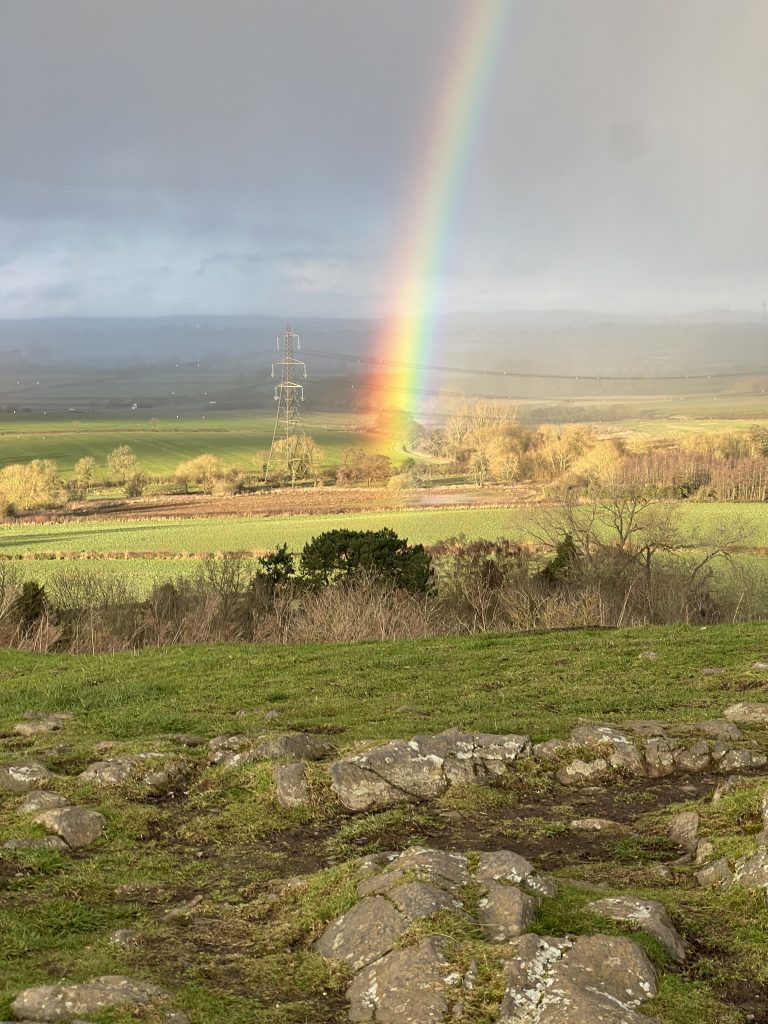
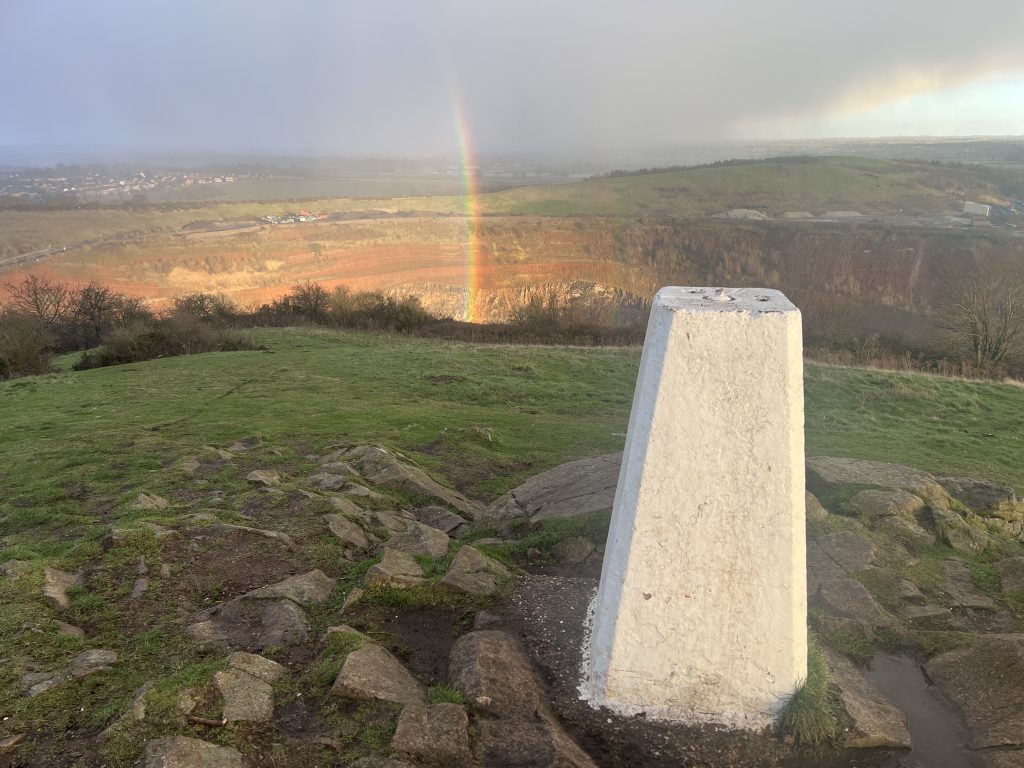
5th January 2025 – Slush
The forecast was for heavy overnight snow for much of the country, which in our case would turn to rain in increasing temperatures during the early hours. I was therefore surprised to still see lying snow in the garden when I let the dogs out this morning.
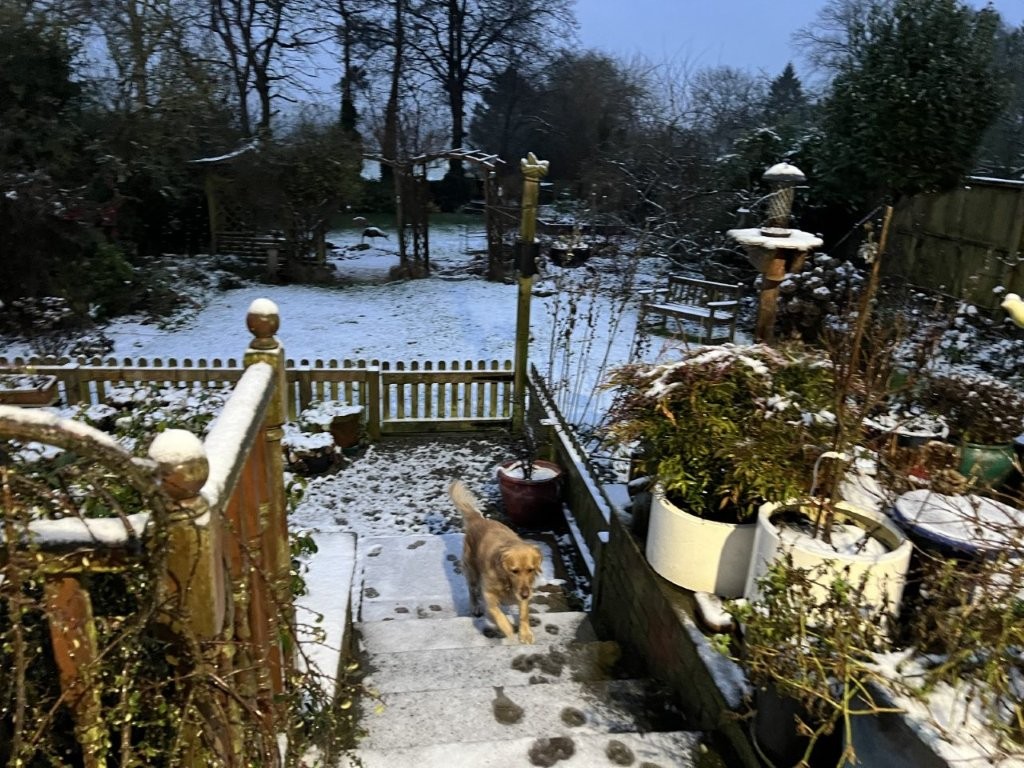
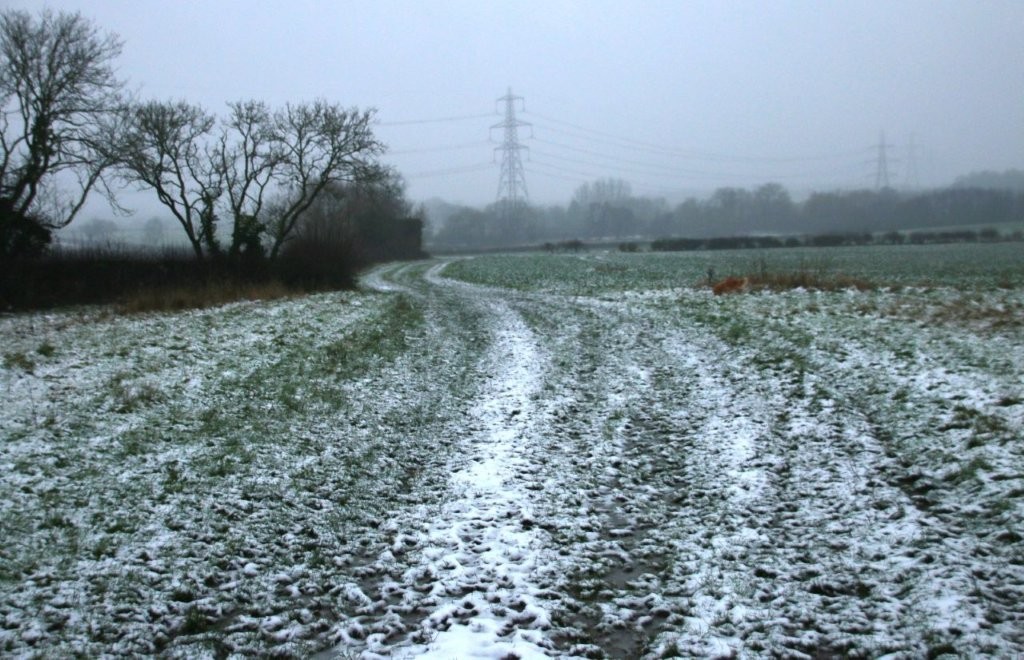
It was an unpleasant morning walk, a steady drizzle, the temperature just above freezing, the snow slushy, interspersed with patches of soft mud. We followed the field track down to the “Sheep Field”, where at least the dogs could run together in wet snow rather than in mud. We followed the perimeter of the field, restricting our walk to this circuit before heading home to hose the mud of dogs and wellies.
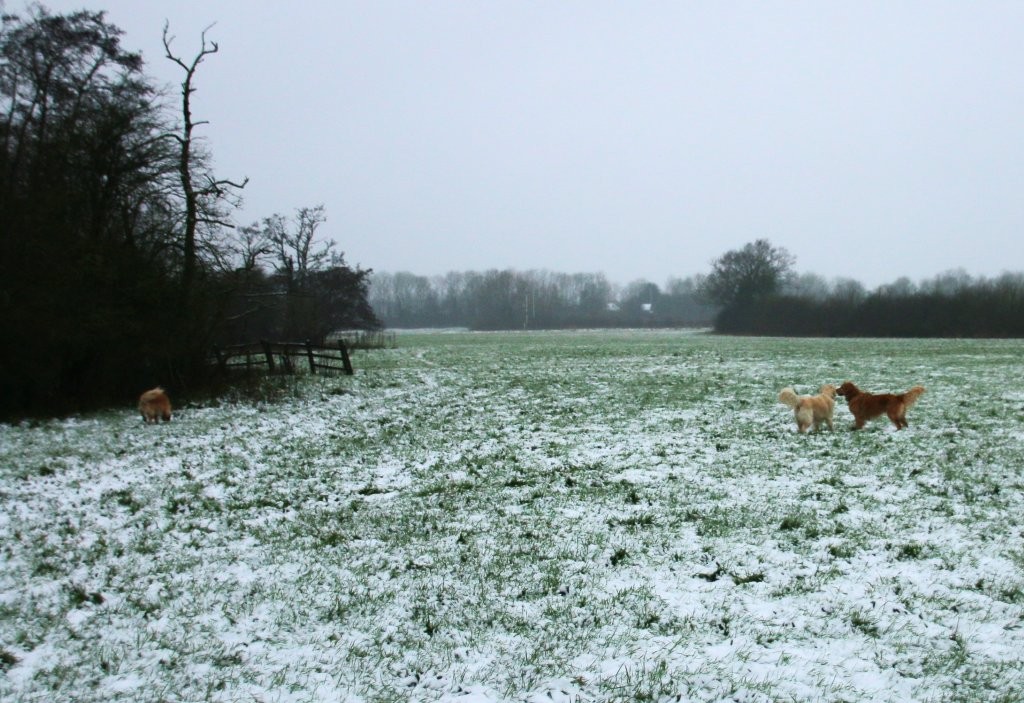
At the first sign of snow Croft Hill usually attracts hordes of sledgers of all ages, shouting and screaming as sledges shoot down the steep gradient. Today there was just one brief shout – no doubt the snow was too slushy, and the descent would have been slow and wet.
4th January 2025 – Breaking the ice
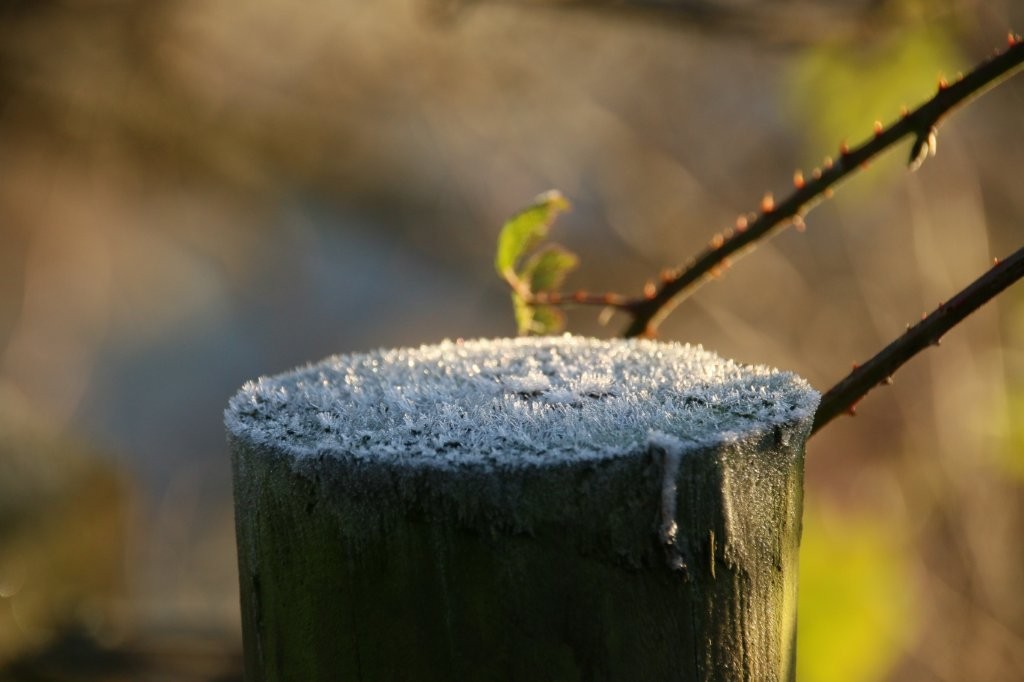
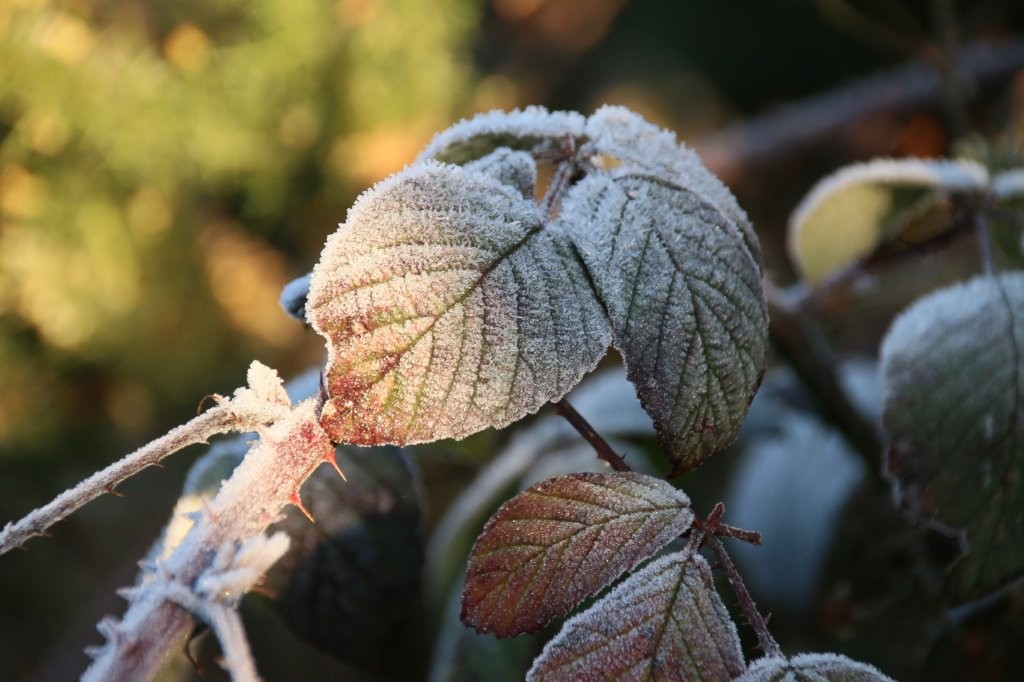
A frosty morning, but only just below freezing. Nevertheless, the mud on the quarry edge path was solid. We met a chap who assured us that the dogs should stay clean – his walking boots were certainly clean – but I was glad that I was wearing precautionary wellies, even though I was walking on top of mud that was usually the consistency of porridge
There was a clear blue sky and bright sunshine. As we began to ascend the hill a dog and owner appeared out of the sun, the dog on a lead. Thanks to the dazzle from the low sun in front of us I hadn’t recognized Taffy, a Cockapoo who usually runs free. He had just squeezed under the fence surrounding the quarry – at this point there is no sudden drop by the fence, but the quarry wall dropped steeply just a few meters away, and in any case, Taffy could have followed the quarry road circling the sides and eventually descending to the quarry floor a long way below. His owner enticed him back with a biscuit, but the experience had been quite stressful, and she had put him on a lead to prevent him from going AWOL again.
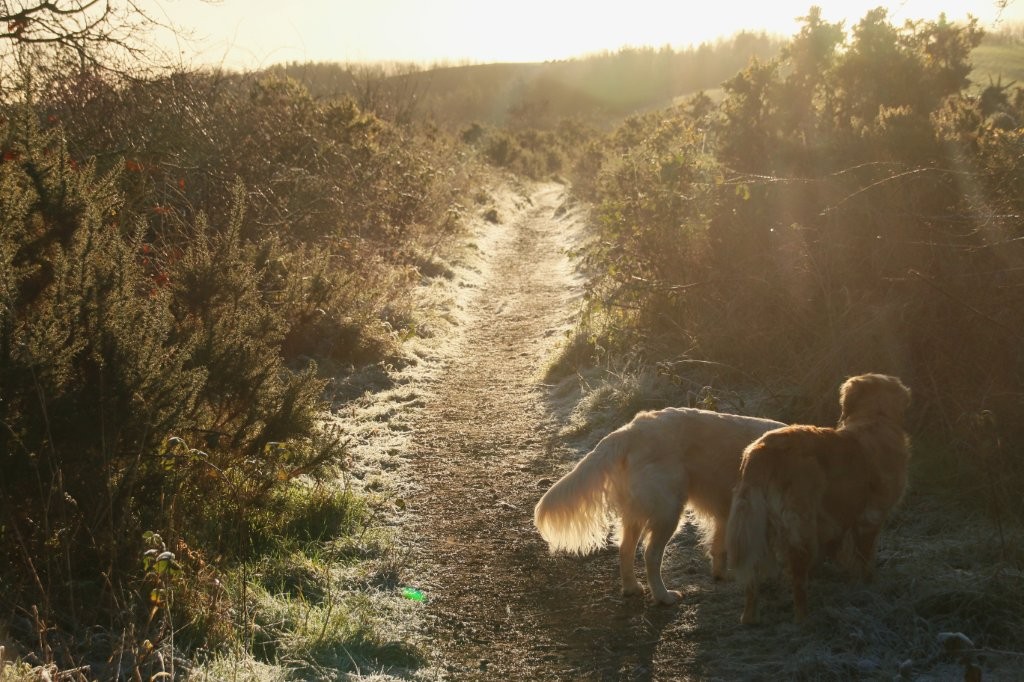
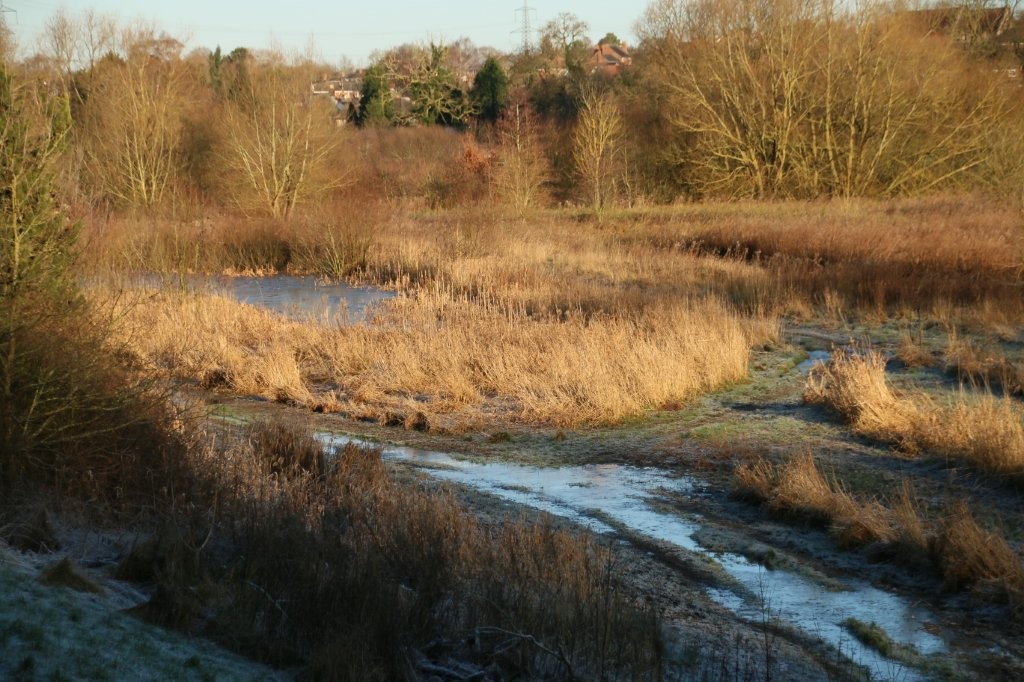
At the top of the hill the wind was bitterly cold. I decided to walk down to the path below that circuits the wildlife pond, descending a steep open grassy slope, where the dogs ran around in enthusiastic circles, before joining a woodland path for a gentle walk down to the pond. As usual Sam ran ahead and had to be told to wait at the bottom – I could see a couple with a dog approaching, and sam was on what appeared to be, from my vantage point, a wet and muddy path. Even dog owners would not necessarily appreciate muddy paws from Sam, who has a tendency to hug everyone. I arrived at Sam at the same time as the couple and their dog, pooch-greetings were friendly, without over-enthusiasm, and the puddles on the path were frozen.
We continued around the pond, and as expected, as puddles became deeper, we all broke through then ice as we walked across it – I was glad I was wearing wellies, and resigned myself to cleaning muddy dogs when I got home.
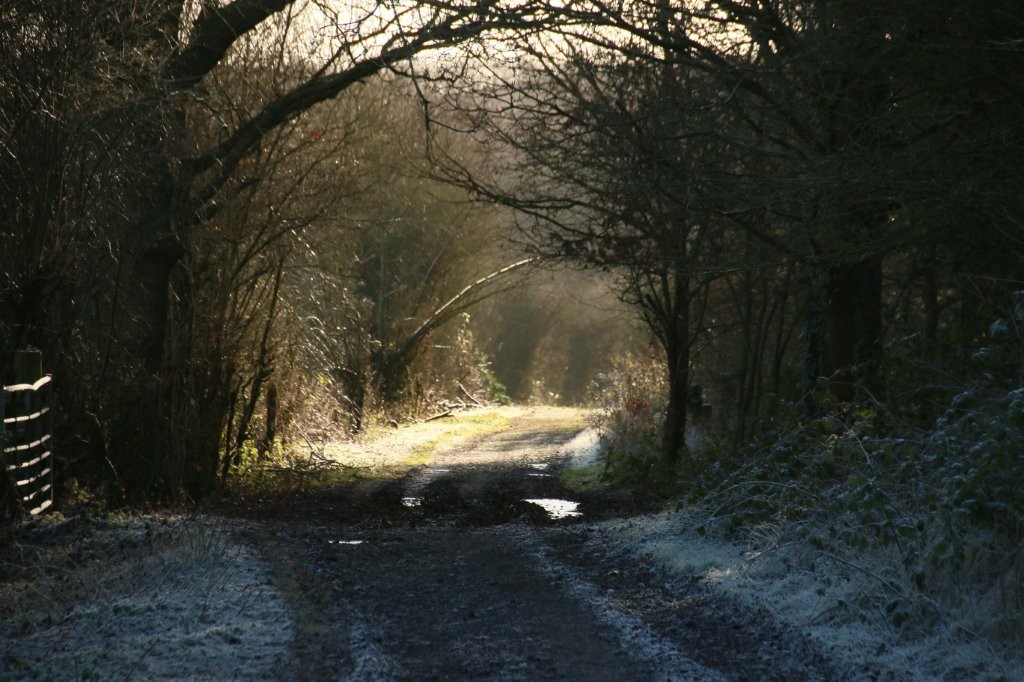
The track back to the Lane was generally drier. As I approached the gate onto the Lane, I saw sheep in the adjacent field running towards the adjacent gate into their field on the far side of the hedge. They had mistaken the Council van which pulled up to empty the waste bin for the farmer’s van, and the flock gathered around the gate in the hope of breakfast. They were disappointed, but remained around the gate even after the van had driven away.
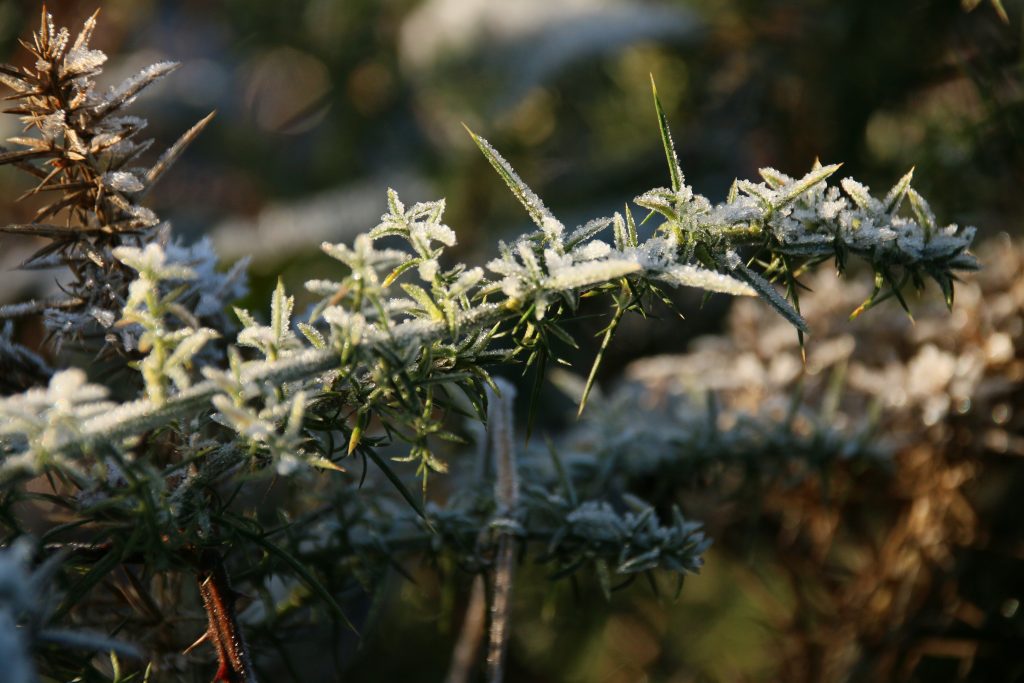
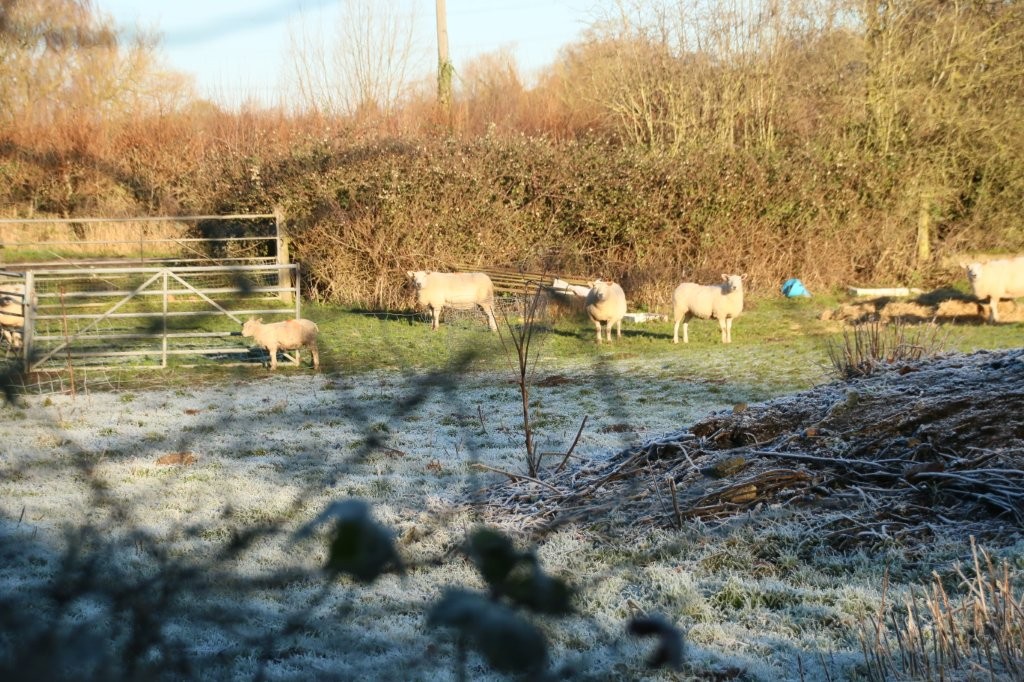
29th December 2024 – fog
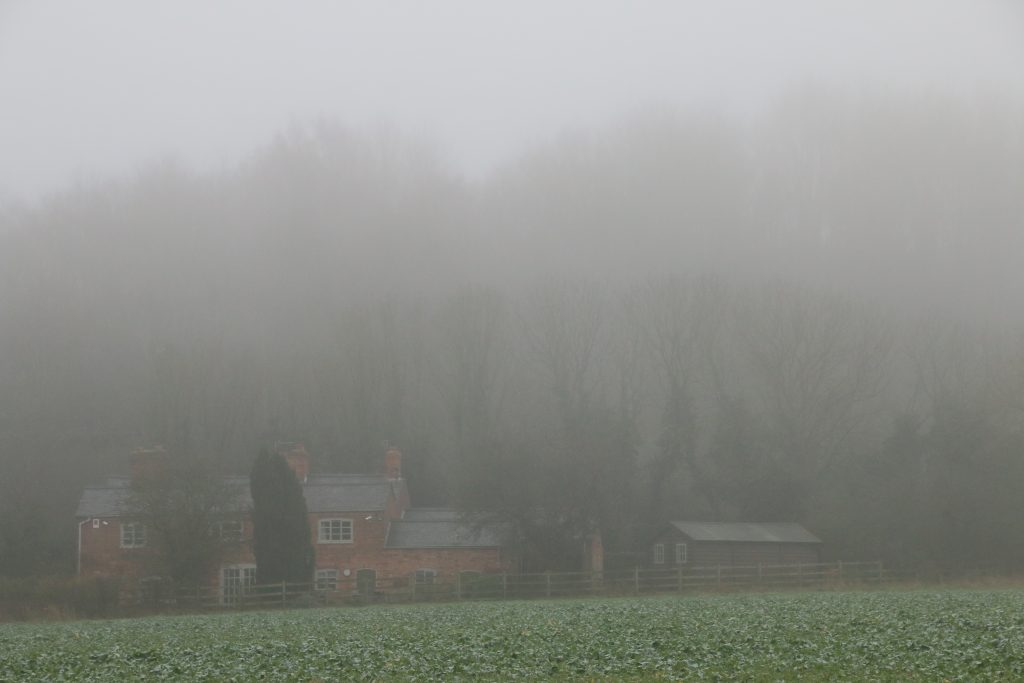
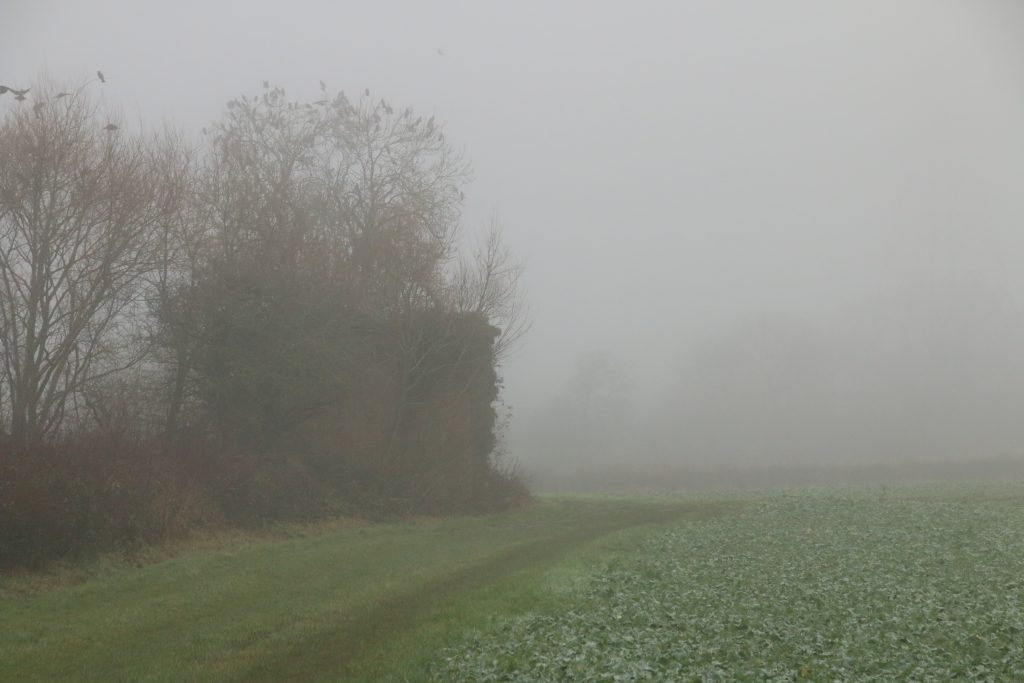
A blanket of white fog greeted this morning, nothing visible beyond the trees at the bottom of the garden. Walking the path along the field edge familiar landmarks only became visible as we got close
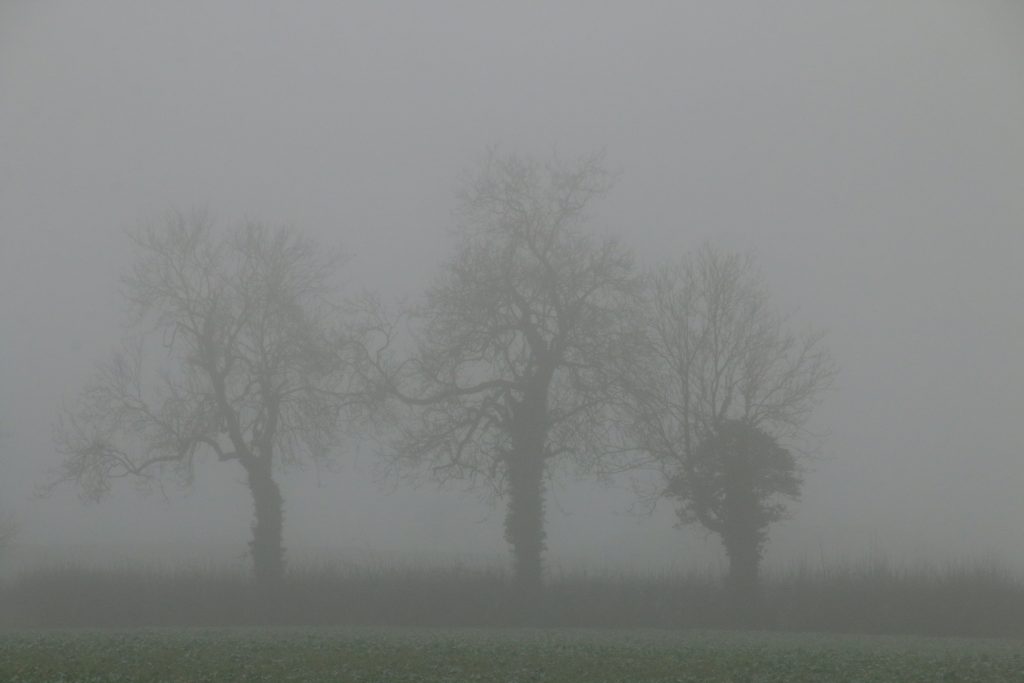
As we reached the stile between Croft Hill and the quarry path, a family emerged from the mist, and since they were accompanied by two young children, I put Sam and Ellie on leads – at times they can be a bit too friendly. I needn’t have worried – both children were happy to say hello to the dogs. As we all chatted others emerged from the gloom – Freddie the cockapoo and his owner, Barney, another cockapoo, his owner chatting on his phone, and a spaniel, the owner happily texting. When I’m out with the dogs I just enjoy the peace of the countryside, and I was glad to leave the bustle of the Hill and follow the path to the quarry.
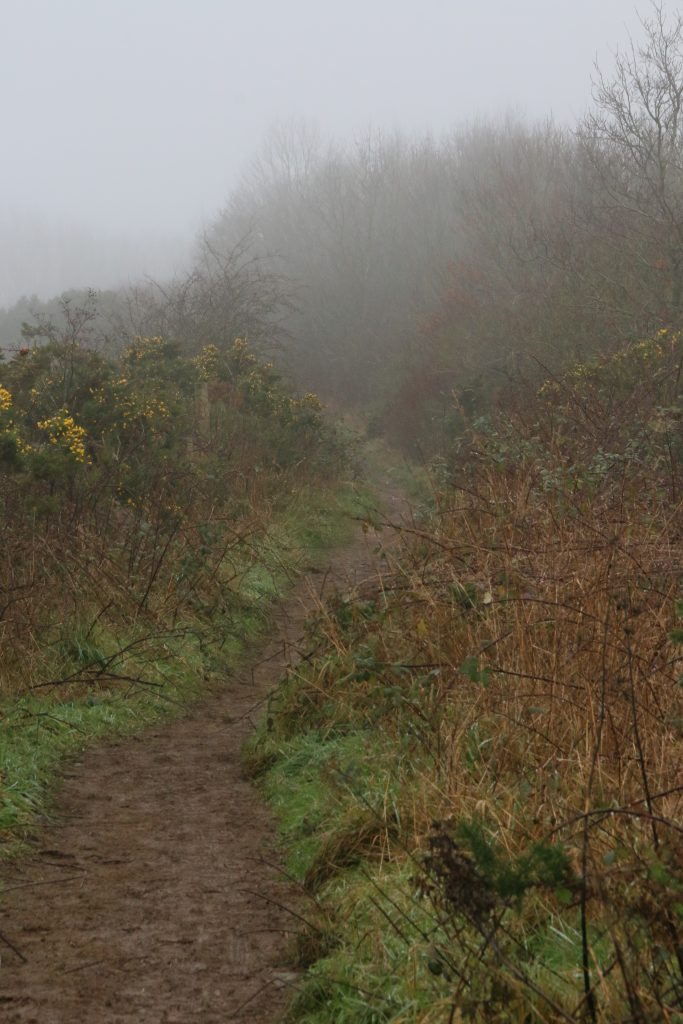
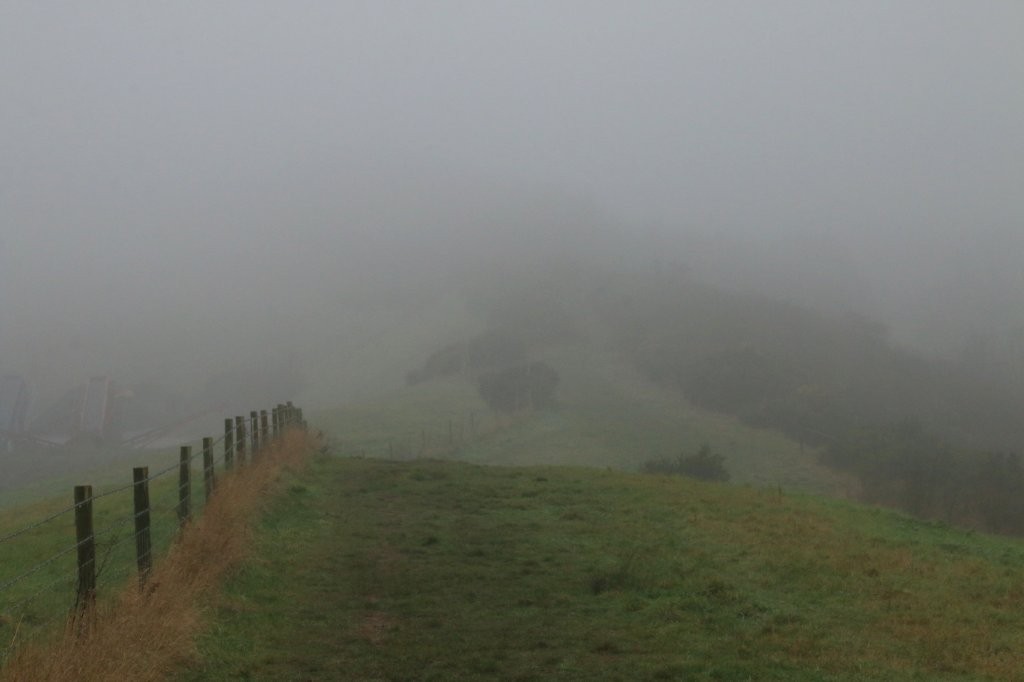
Barney and the family were heading the same way as us, although we soon left the family behind. Barney’s owner was still chatting on the phone, a bit awkward as we were following the same route at the same walking pace, but by the time I’d stopped for “poo picking, and taken a few photos, they had gone ahead and disappeared into the mist, leaving just me and the dogs enveloped by fog. The eery sound of bells drifted across the quarry, Croft Church chiming the hour. As we turned back towards home the fog began to lift, revealing the fields below in soft focus. Back on Croft Hill, although the top was still invisible, the trees and paths around the stile onto the Hill had emerged from the mist.
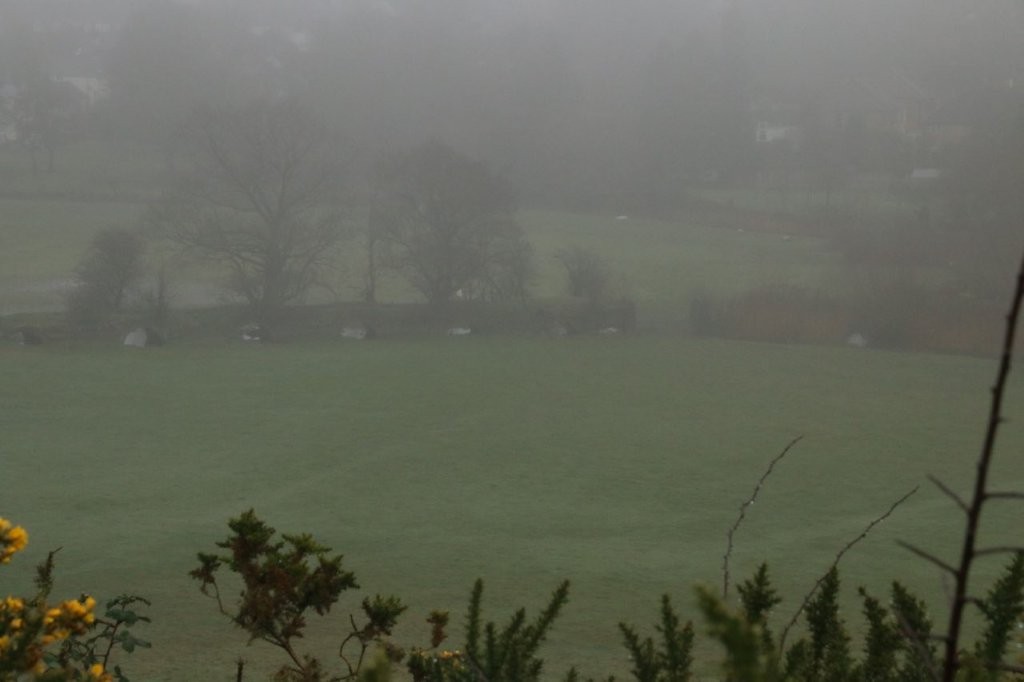
19th December – floods
Browsing Facebook last night, with rain beating against the window, I came across flood warnings for all the villages surrounding us. Rivers around here are more streams, and such warnings are more about closed roads and inconvenience than danger to life and limb, although increasingly houses and a couple of local pubs become victims of floods – a flooded pub kitchen can close the premises for weeks
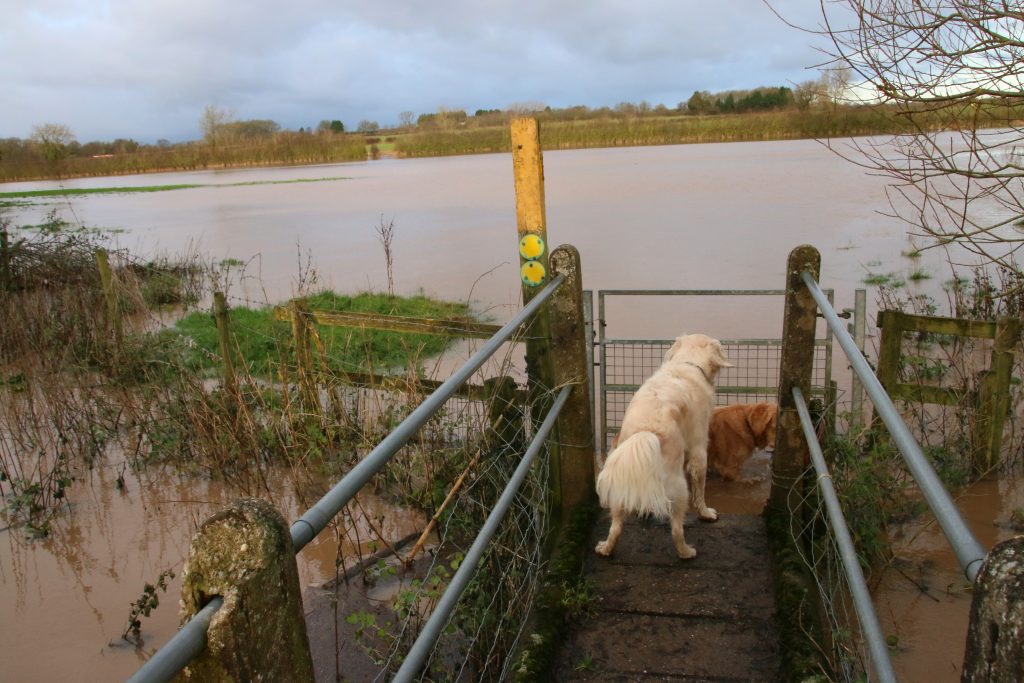
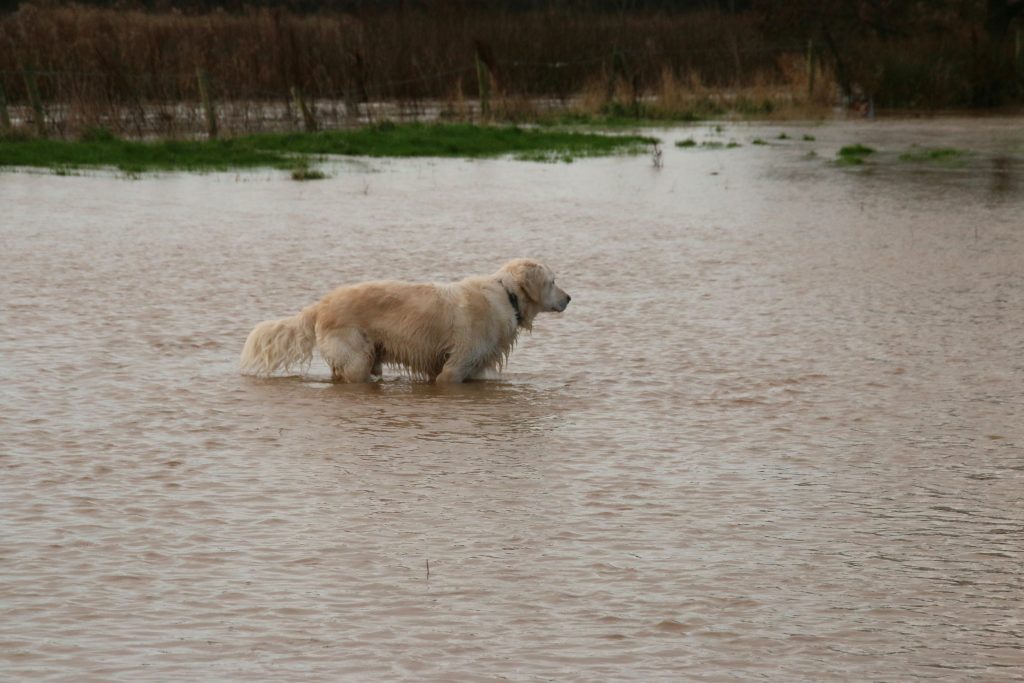
Opening the curtains this morning, and looking out across the fields, I could see that the “sheep field” was a lake for the second or third time this winter. I decided that the dogs would appreciate a splash in the water. We crossed the bridge into the Sheep Field, and immediately stepped into deep water. The dogs waded out confidently, but I had to take care that water didn’t flow over the top of my wellies. The water was as deep, of not deeper, than I have experienced before, and I quickly discovered that it was best to keep close to where I could see the tips of long grass breaking the surface of the water, a sure sign that I would be walking along one of the ridges in the field, rather than the deeper furrows.
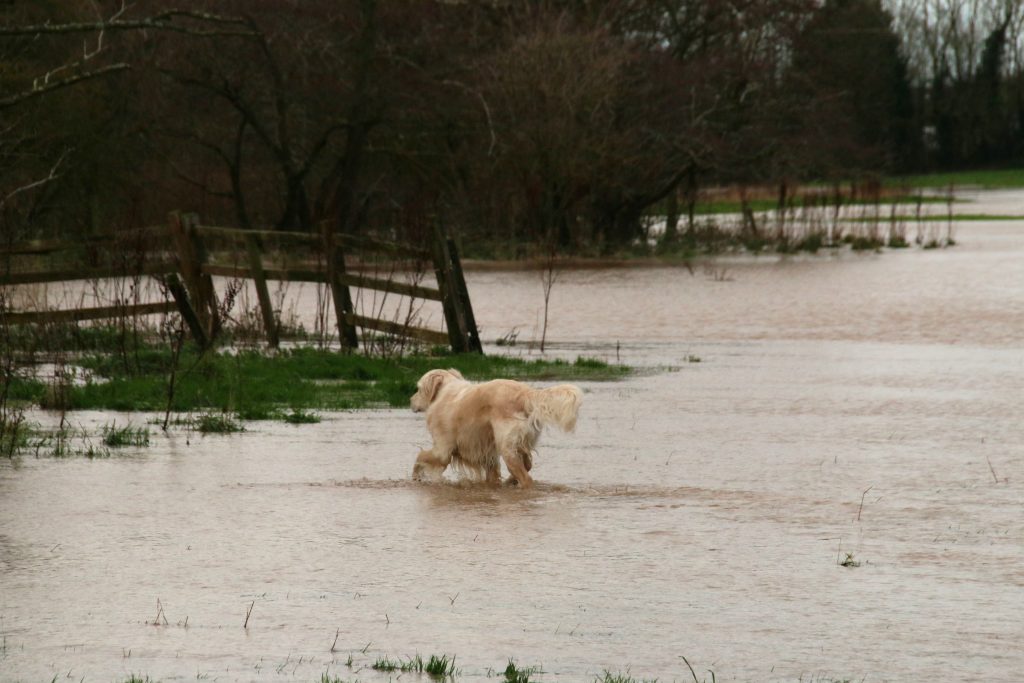
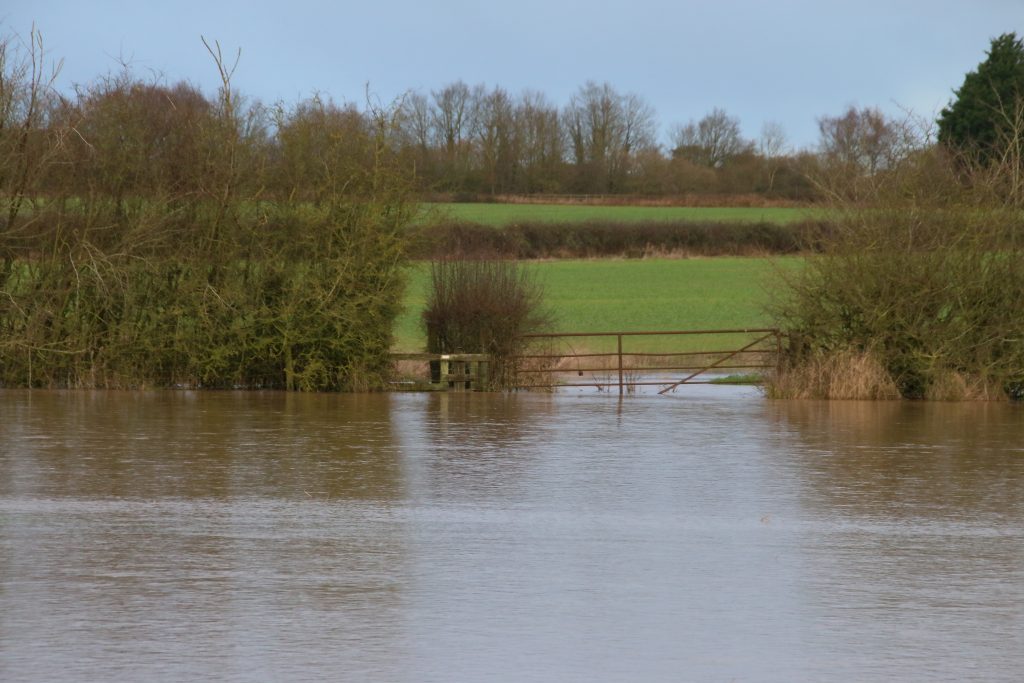
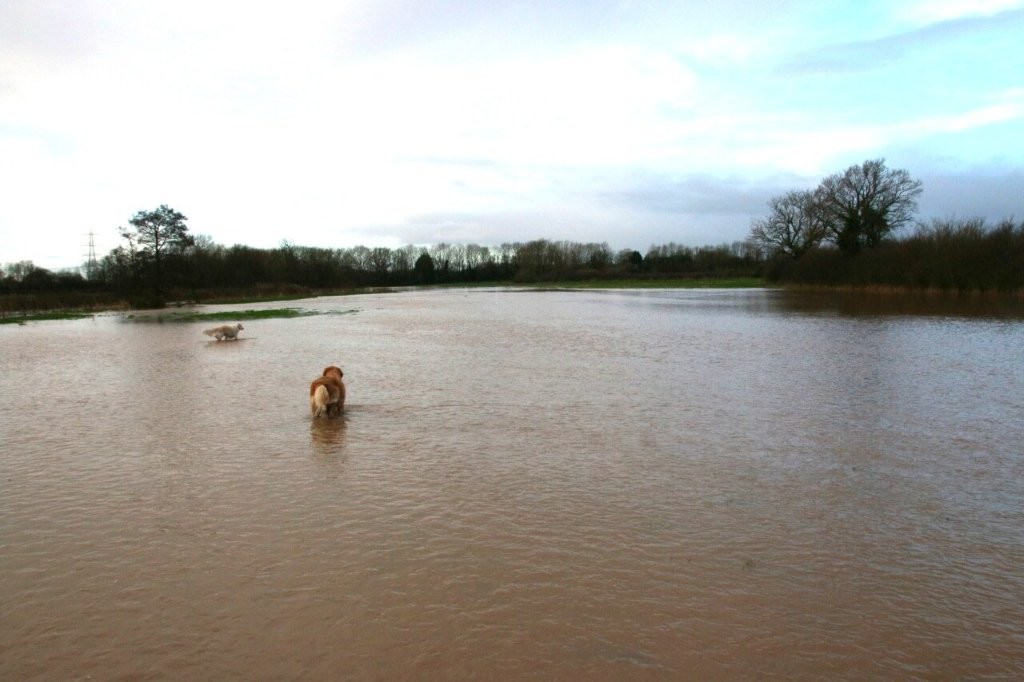
A bitterly cold wind rippled the water, and since I was carefully watching the surface to prevent a cascade of cold flood water into my wellies, the constant movement of the windblown water filling my vision despite my feet remaining stationary resulted ins slight dizziness. The water extended to almost all field boundaries, covering more of the field than usual during flooding. Wading in wellies was hard work, the cold wind unpleasant, and I turned back before reaching the furthest edge of the field, calling the dogs to follow me back to the bridge. As we crossed, we met a couple of less intrepid dog walkers from Huncote, the village on the far side of the flooded fields. They had opted for a route that does not flood and couldn’t believe it when they saw me heading towards them from the “wet” side of the footbridge. They reported that the lane between Croft and Huncote was flooded at the river bridge, not uncommon, but the flood extended further along the lane than on previous occasions.
Back at home the dogs had to experience a further watery experience – after an extensive dip in muddy brown flood water, it was time for a bath.
28th November – a soft frost
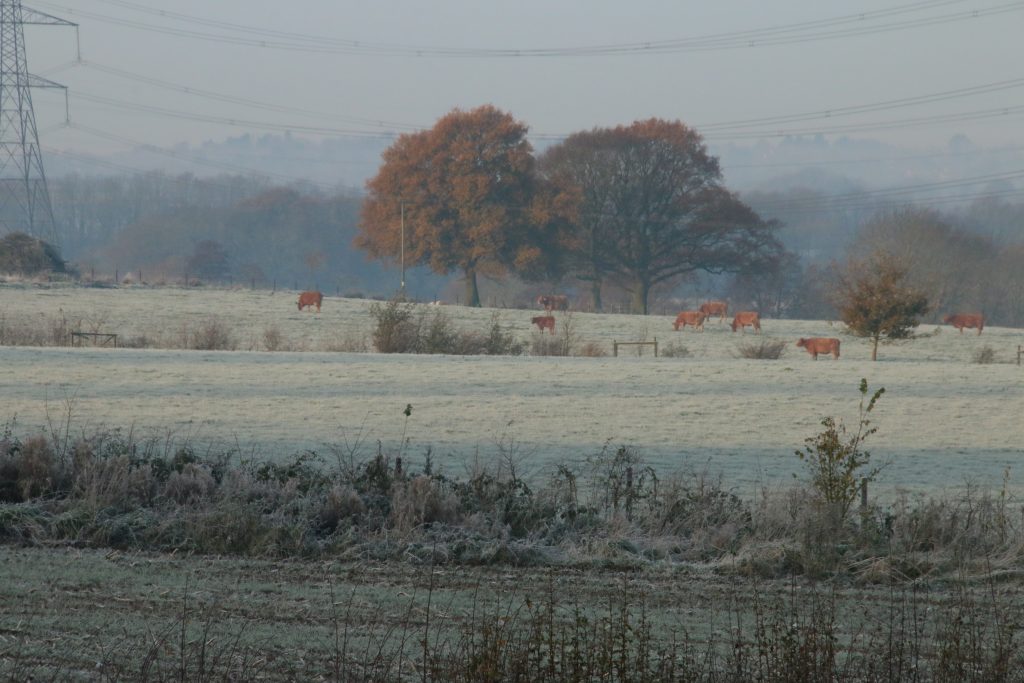
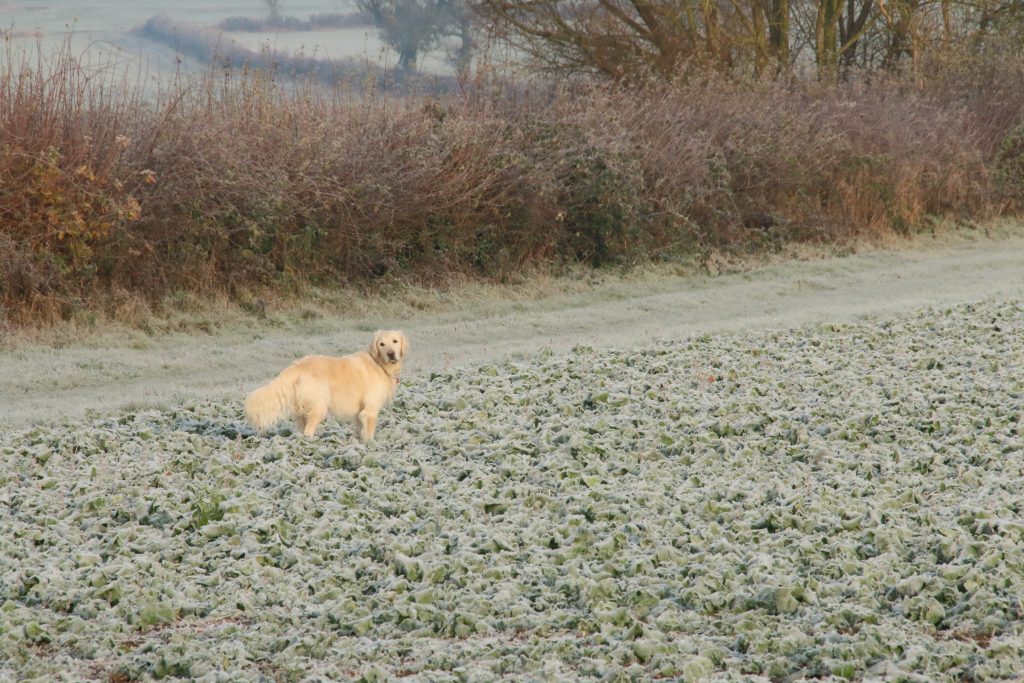
A glorious frosty morning, with cows in the fields opposite our home grazing frozen pasture in the morning sunshine. For once the mud was firm under foot and paw as we walked down the field track. Instead of crossing the footbridge over the river, I decided to turn onto the path that followed the riverbank along the bottom of the shallow valley – on a frosty day the cold air descends to the bottom of the valley, keeping the ground frozen for a little longer than elsewhere, and I had hopes of returning home with dogs free of mud. The dogs walked alongside me, occasionally going “off-piste” to rustle through the frozen leaves of the young rape crop.
It wasn’t quite as cold as I had hoped, and the ice on a muddy puddle proved to be just a thin skin, and the dogs’ paws quickly broke the ice and into the muddy water beneath. The dogs were not going to be as mud-free as planned – hopefully when we got home the garden tap and hose would not be frozen. There would be paws to wash.
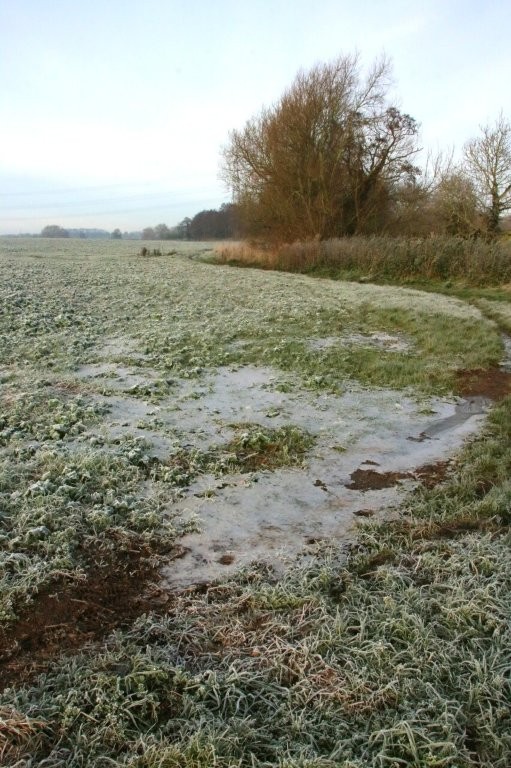
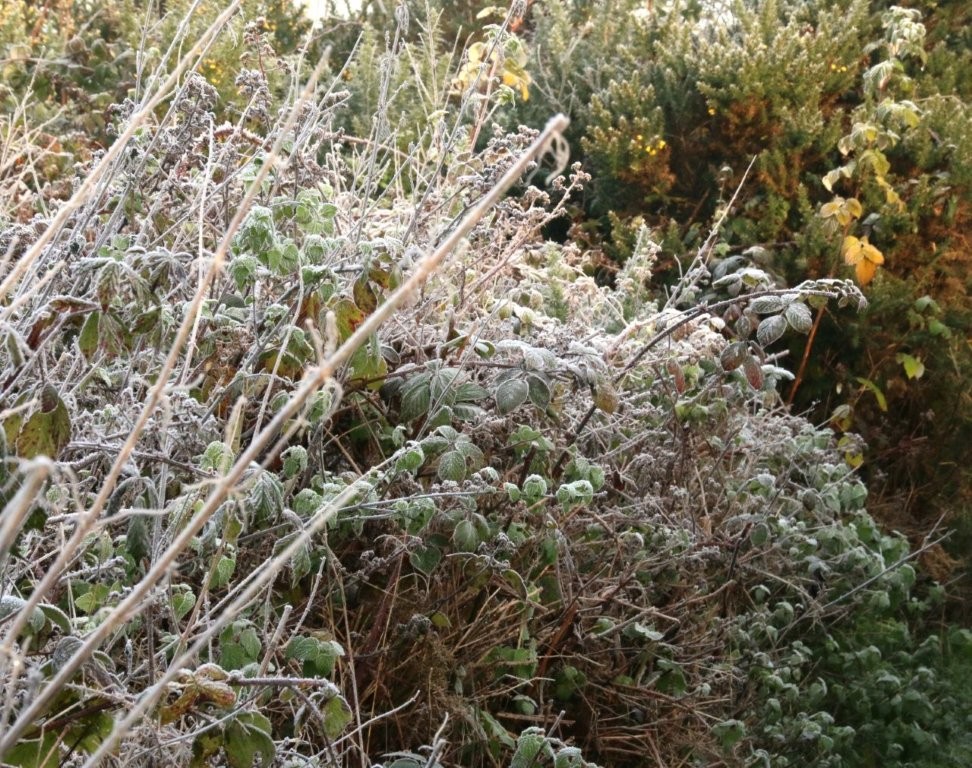
We crossed the lane and followed the path up towards Croft Hill, the ground becoming increasingly muddy, despite frozen bramble foliage bordering the path. In contrast the paths on the Hill, with short rabbit-cropped turf, remained dry and frosty, and the dogs ran and played in the longer part-frozen grass on either side of the paths, which was effective in removing the worst of the mud from legs and belly. We met a couple of regular – a local walker commented how muddy some of the paths below the quarry were, probably best avoided, and the owner of Bryn the Collie was planning his route home to avoid muddy tracks, which, like me, he had hoped would be frozen.
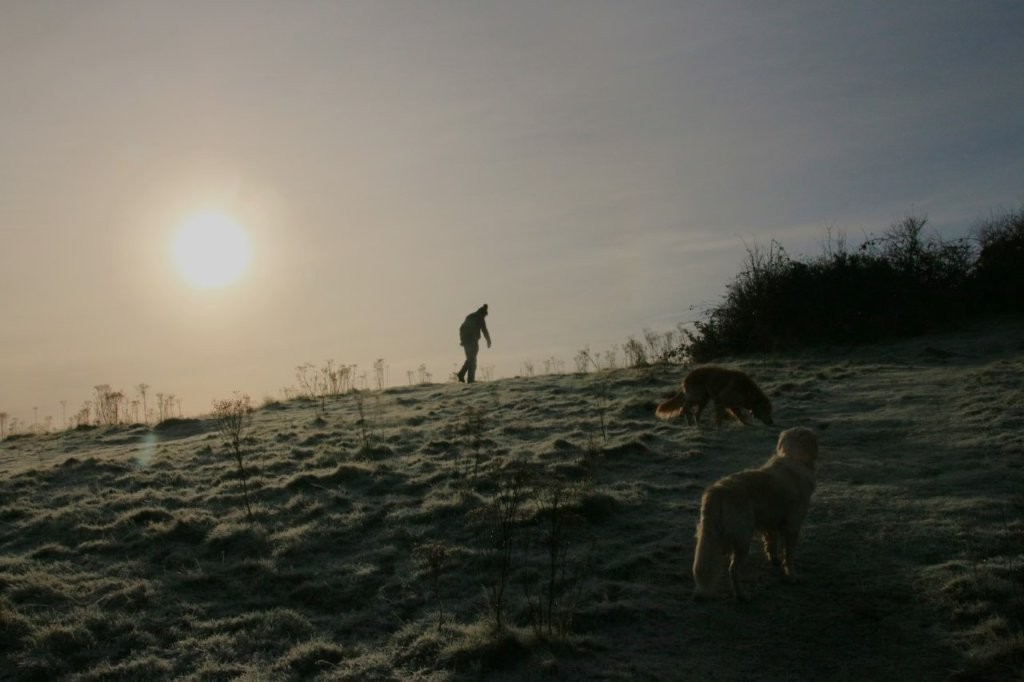
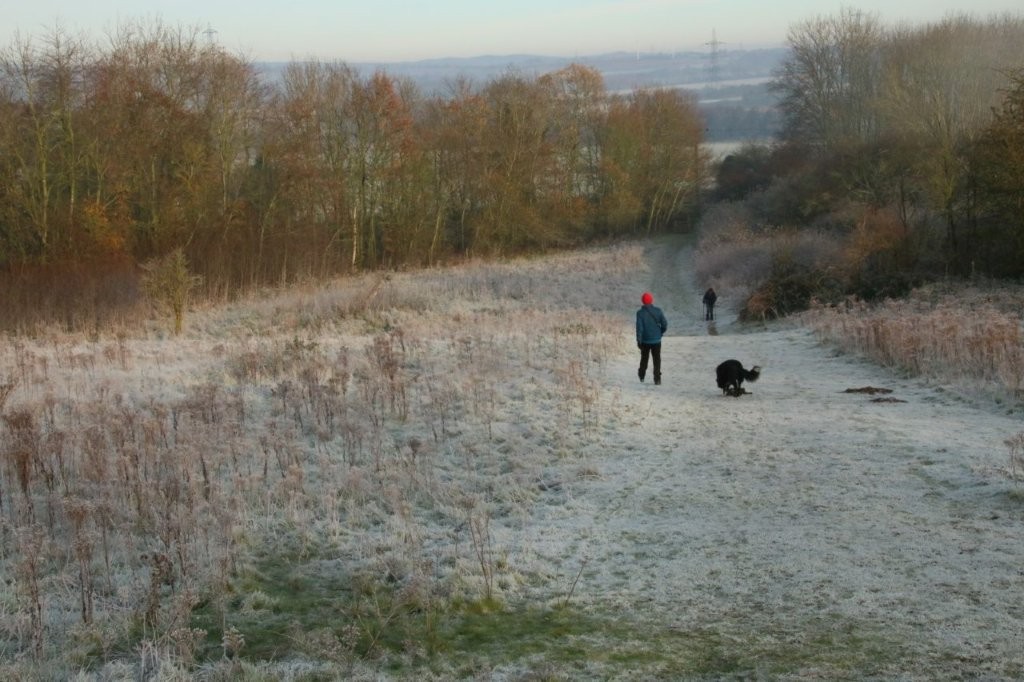
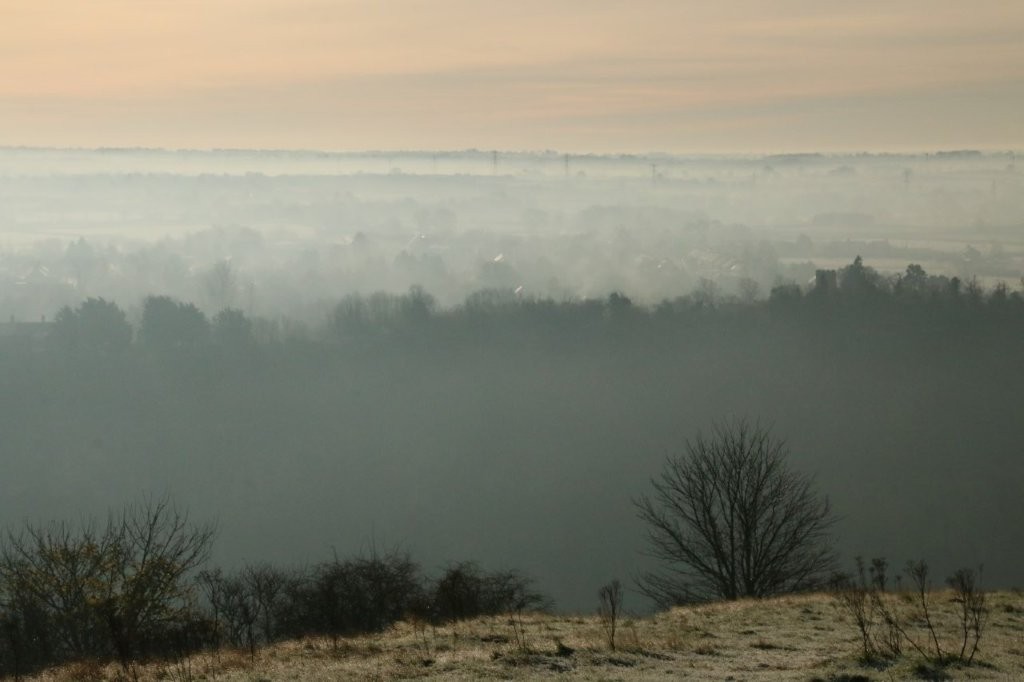
Other walkers began to appear, some individual, some couples, all ascending the Hill, out for a Winter-morning stroll. None had dogs, and I knew that in the absence of canine acquaintances my two pooches would enthusiastically greet people. Since “dog-less” people may not be “dog-friendly” I put them on leads, but in fact those that continued to join us at the top of the Hill happily greeted the dogs, despite their muddy raised paws. The views from the top of Croft Hill were of South Leicestershire shrouded in mist, the warm steam plume from the quarry coating plant punching through the cold inversion layer to rise into the clear sky above.
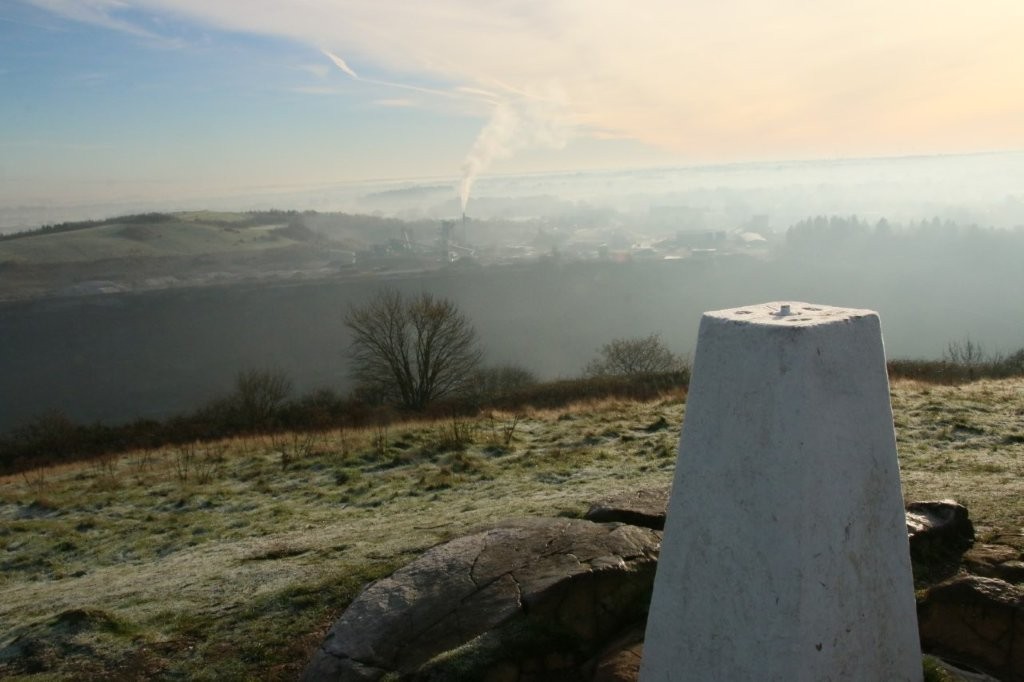
25th November – Calm and storm
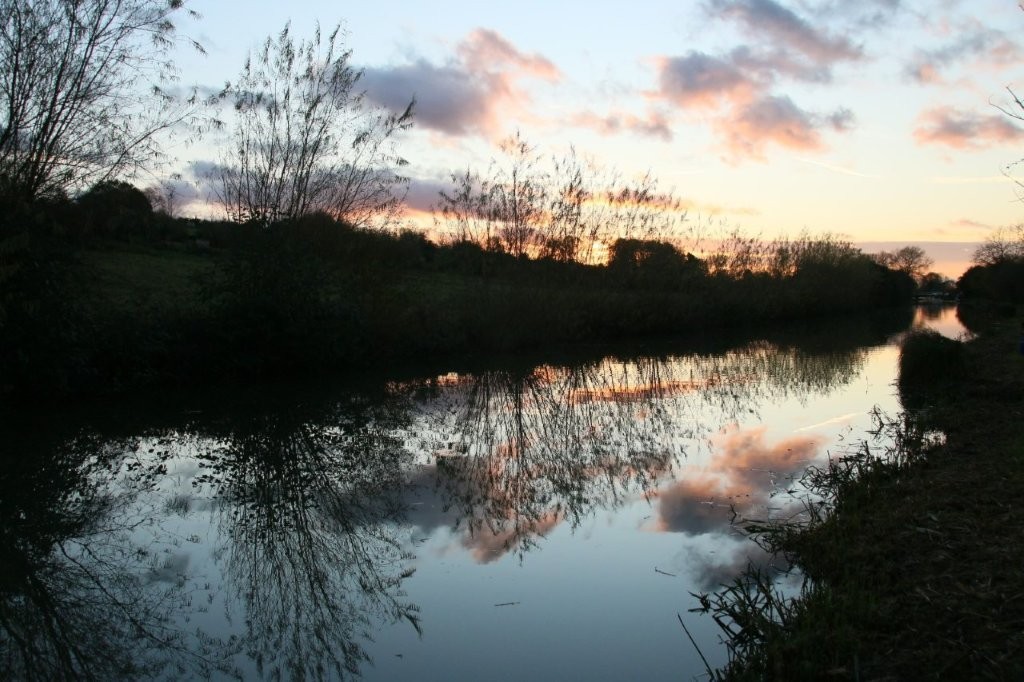
A week away in Wiltshire, staying by (but on) the Avon and Kennet Canal. As we travelled down the M5 distant hills were snowcapped after the previous days snowfall, and the first couple of days of out holiday were cold and still, with morning frost, perfect for walks along the canal towpath.
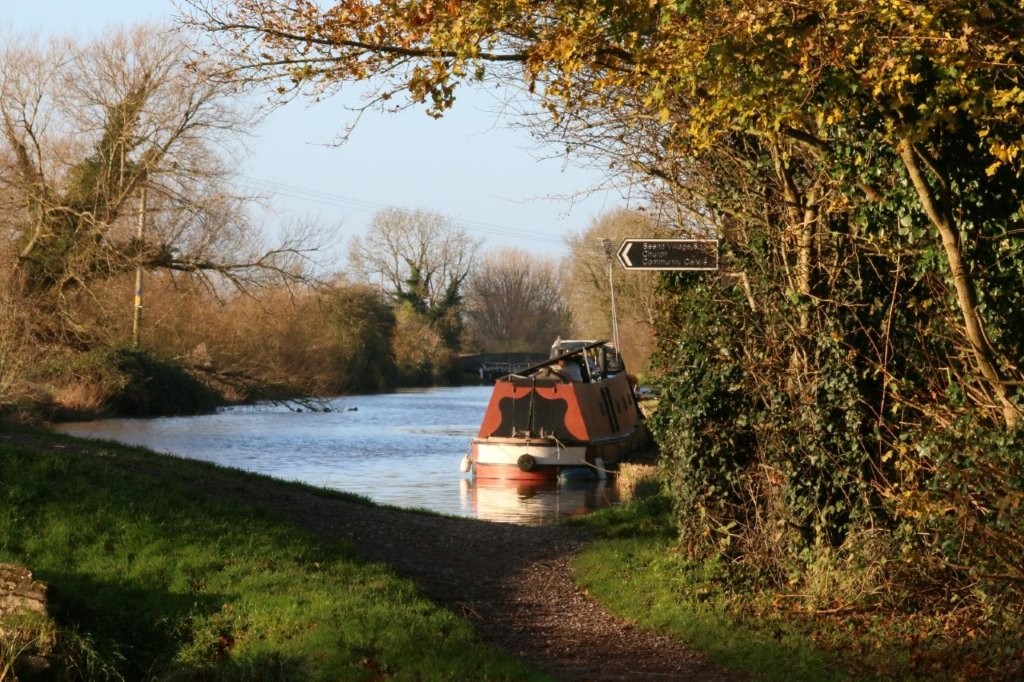
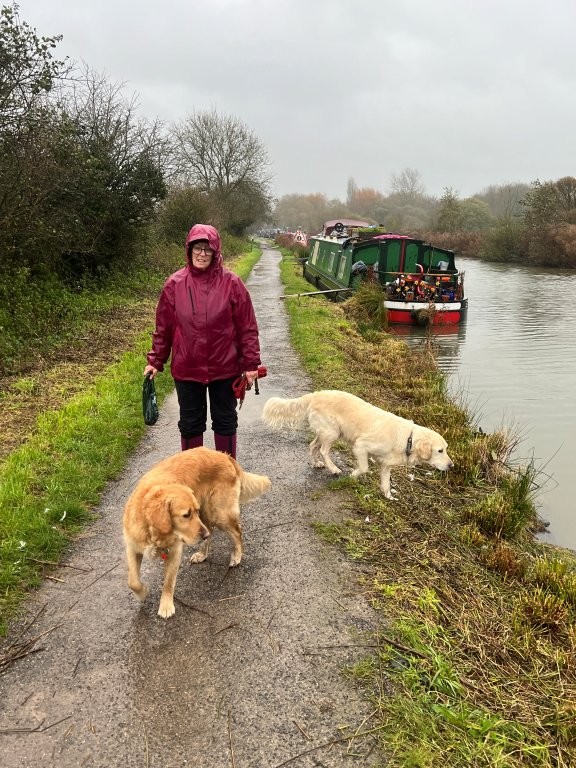
Calm days were followed by Storm Bert, with wind rocking our motorhome, and heavy rain lashing against the side of the “van”. It may have been warm and cosy inside, but we still had dogs to walk. We followed the towpath for two miles, battling against wind and rain, until we reached the busy “Barge Inn”, and sat dripping by the bar until staff found us a corner table overlooking the rain-swept canal, no doubt relieved that the puddle of water around us was at least out of the way.
After the storm, calm mild weather, but the storm had left its mark, with roads closed by floods, and fields morphed into lakes. The dogs enjoyed splashing through the floodwater, which at least washed off most of the mud before we retired to the pub for tea.
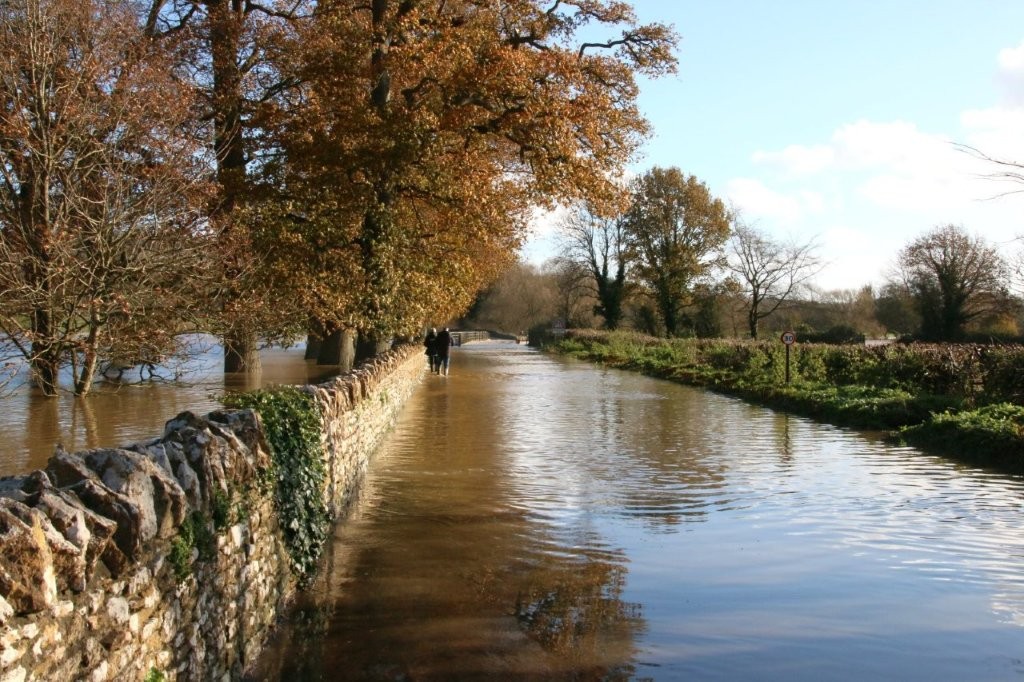
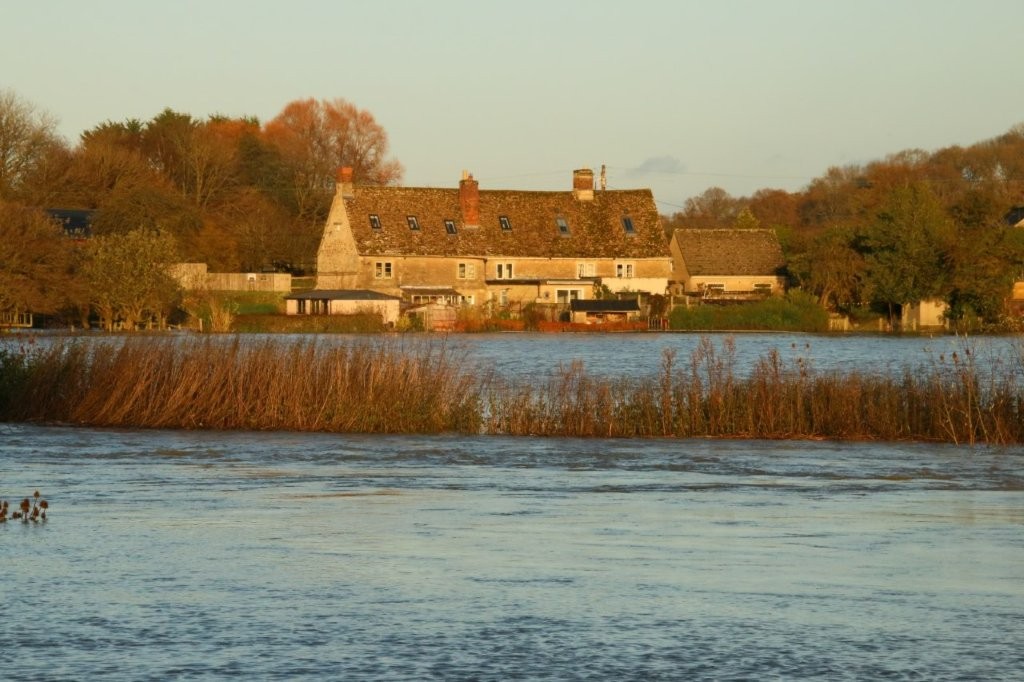
19th November – First snow
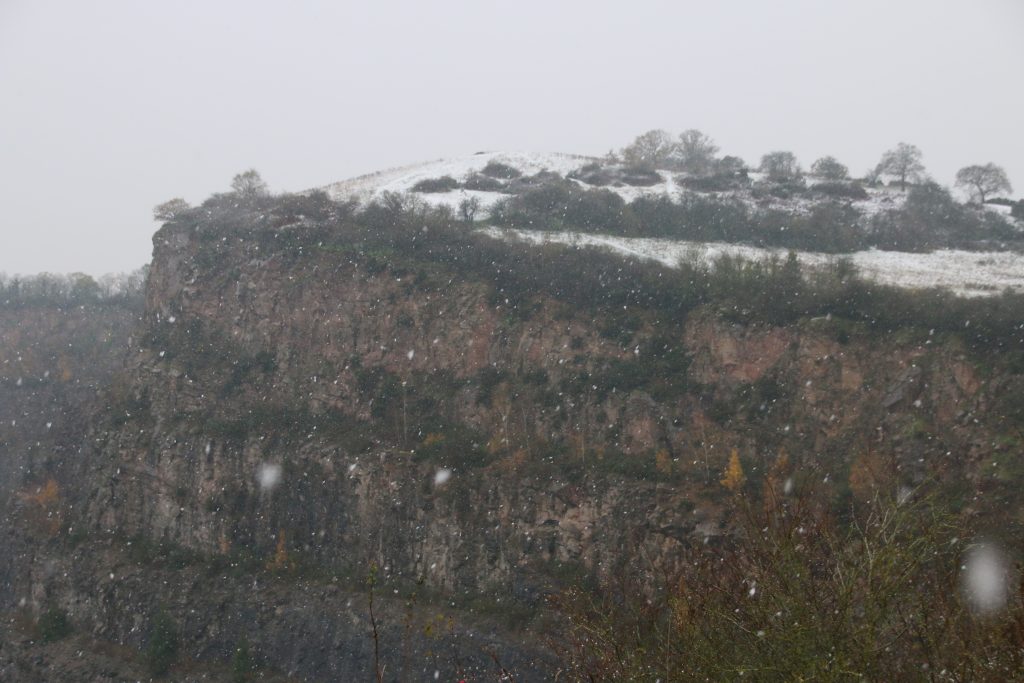
First snow of the season, quite early. I almost said “earlier than usual”, but there isn’t really a “usual” these days. For many years we would have a couple of periods of snow each winter, sufficient to allow sledging on Croft Hill, but last year we only had a sprinkling of snow. This early snow does not necessarily suggest that we need to prepare for a hard winter.
I usually enjoy walking in snow, but today was unpleasant, wet snow blowing into my face, stinging my cheeks. It only settled on the highest ground, on Croft Hill and around the quarry, and even then, just a covering, maybe a centimetre of soggy stuff. Only fellow dog walkers were out and about on this meteorologically challenging morning
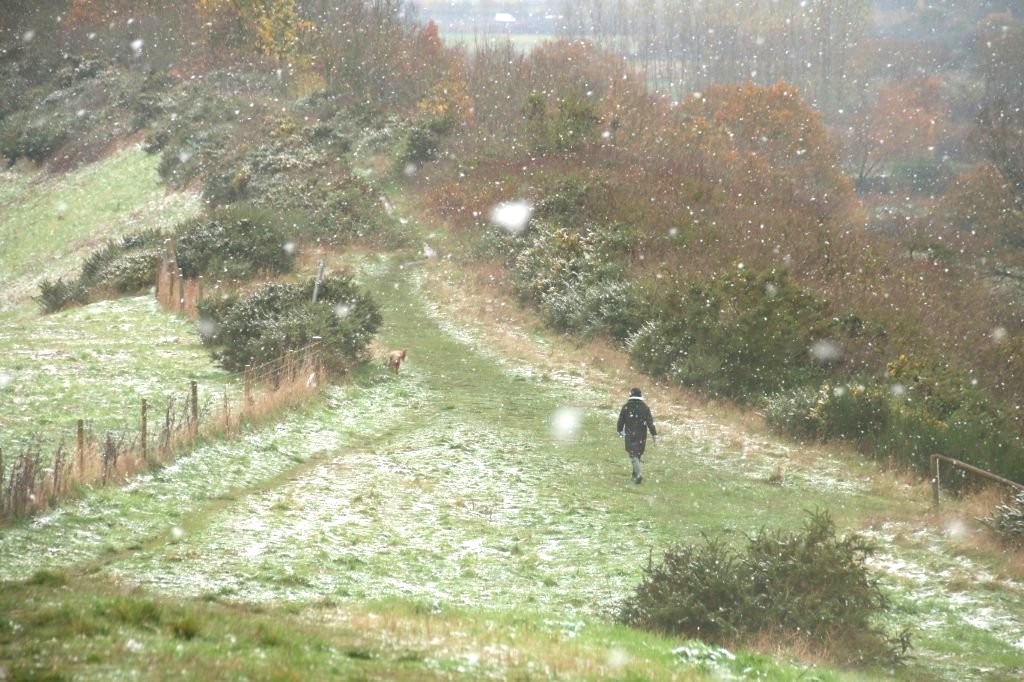
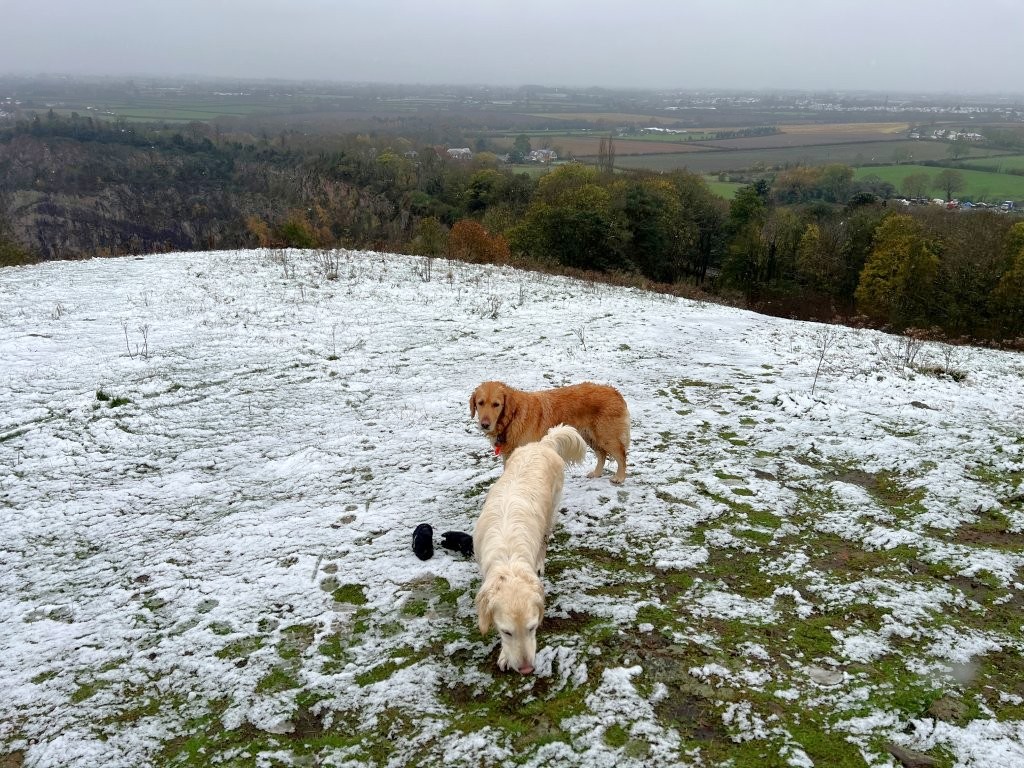
We walked around the quarry and then to the top of Croft Hill, where just those additional few meters of height meant that the snow was less sleet, and more flakes. Through the falling snow the fields below remained green, the snow melting as soon as it fell onto the tops of the grass and young crops. It was a slippery descent of the Hill, part snow, part mud, and we were all cold wet by the time that we got home.
16th November – Changing plans
I generally plan my dog walks to give the dogs a variety of routes, but quite often I meet another dog walker, and one of us changes our route so that we can chat, and the dogs’ play. Today the plan was a relatively short walk around the fields behind our home, but as we went through a kissing gate intending to turn right towards Croft Hill, we met friends with their Staffie. They had changed their route to avoid gunshot noise from a clay-pigeon shoot from a range in a village across the fields, particularly noticeable today because of the wind direction. Their Staffie is nervous of bangs. I changed our planned route to walk with them along the track, under arches of tree boughs, until we went our separate ways to return to our respective villages.
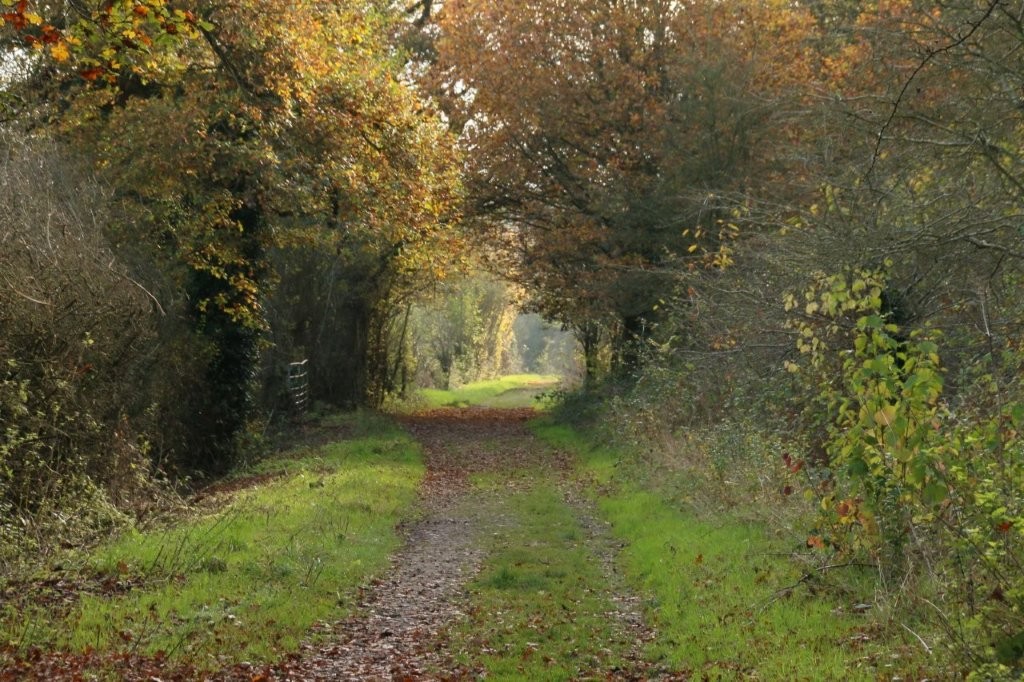
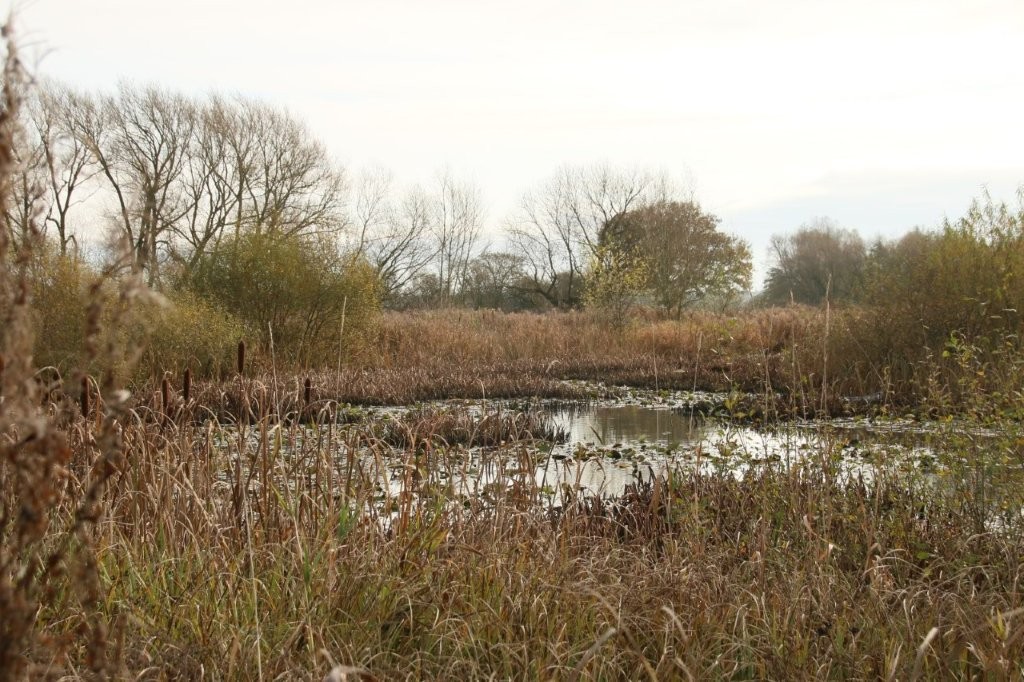
The most direct route for me would have been to ascend the steep and uneven steps to the quarry edge, but instead I decided to circle around the wildlife pond and walk up a grassy slope beyond. The pond is increasingly overgrown with reeds, and, if left, the roots will expand across the pond, which, in time, will become a reed bed, more of a bog – just as favourable for wildlife, but less diverse to that of the mix of reed and open water. Every few years the pond edges are dredged, the reeds scooped out to decompose on the banks, while bugs, newts, frogs etc escape back into the water.
Beyond the pond I abandoned my ascent of the open grass to the quarry edge, instead opting for the narrow path up through woodland, more interesting for the dogs, with the scents of deer and other wildlife that inhabit the woods, although rarely seen. The path results from mountain bikers finding a challenging route down the hill, until a well-worn route was created. The path is still occasionally used by mountain bikers, but I rarely see them, nor, in fact, do I ever see other dog walkers, who seemingly prefer the more formal paths at the top or bottom of the hill, and the steps connecting the two.
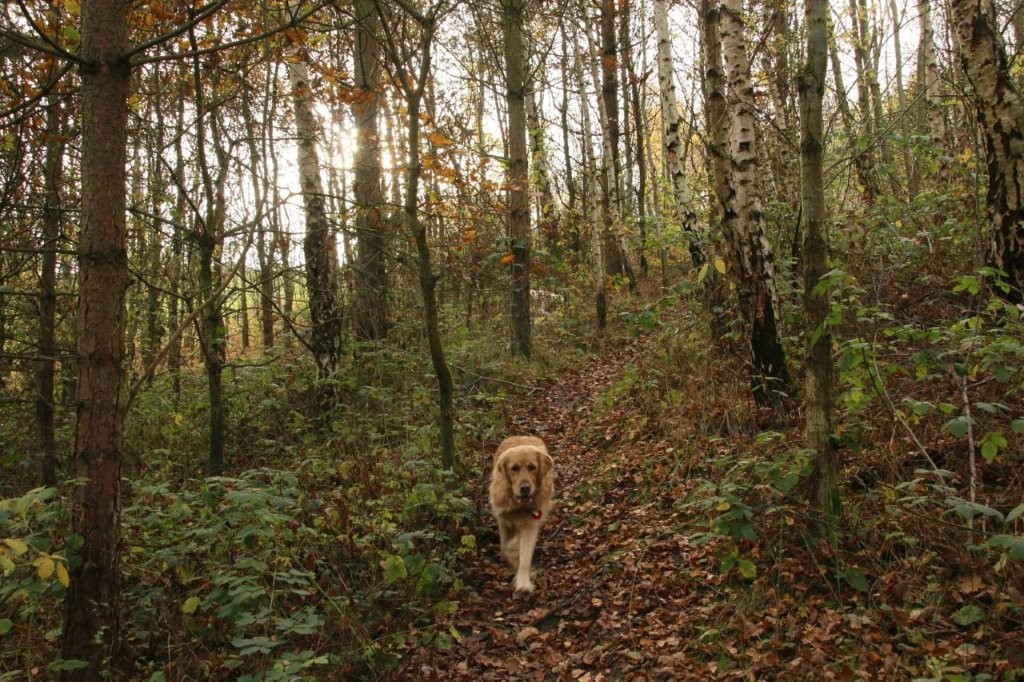
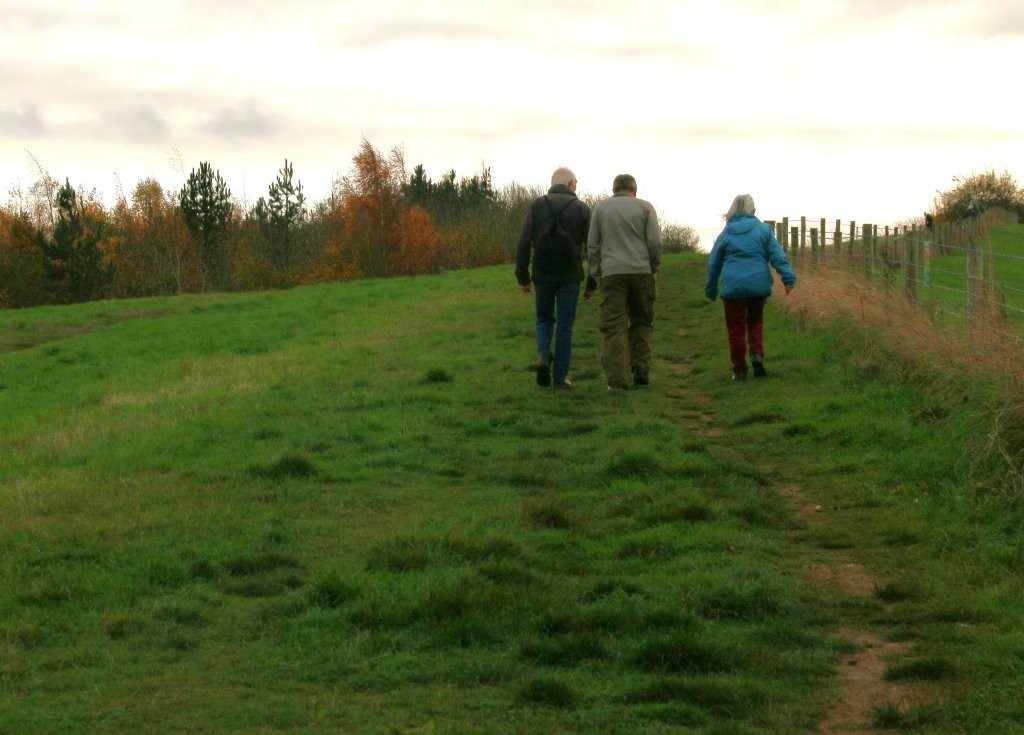
I emerged into sunlight at the top and started the gentle walk down the ridge towards home, meeting many groups out for a stroll, maybe making the most of fine weather before the forecast deterioration. Sam and Ellie are liable to run up to greet everyone, whether or not they have a dog, and make then sit still while folk pass by. The compliments on how well the dogs are behaved, and my assurance that this isn’t always the case, leads to conversations, and it was a very sociable walk back onto Croft Hill, before crossing to our Lane to come home.
13th November – Sunshine and mistiness
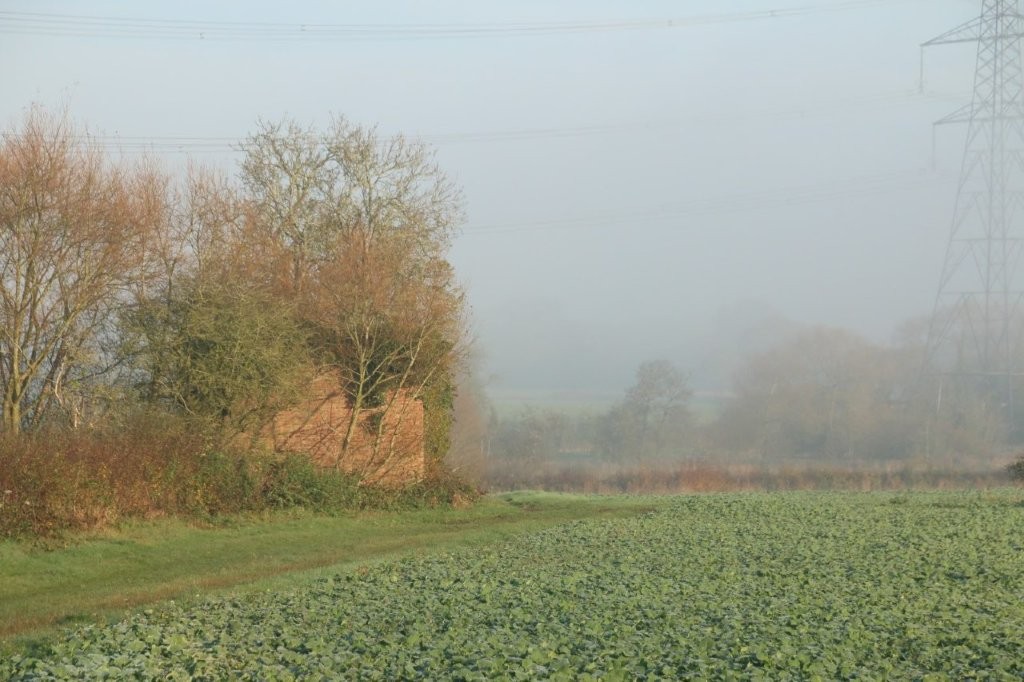
At last, a sunny morning, blue sky and Autum mist, replacing the grey gloom that has enveloped us for weeks. Usually on a morning such as this, I would be out early with the dogs, but we had overnight guests who had to be fed and watered before the dogs and I could venture out into the countryside. The mist was already clearing when we made our way along the field path past the old barn.
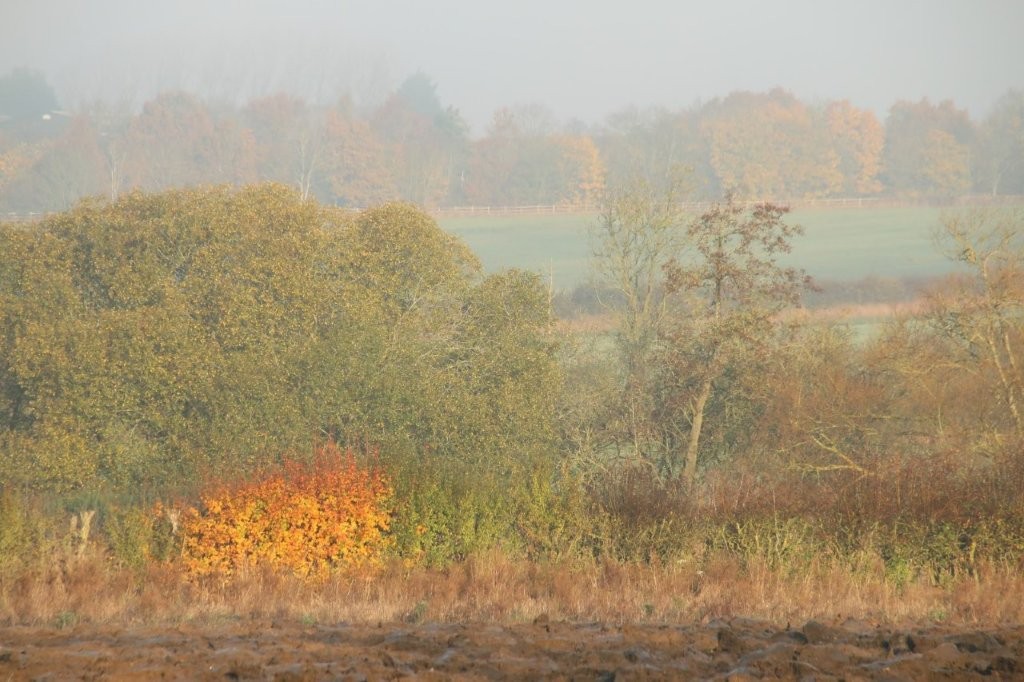
Trees and hedges are mostly bare, but the sunshine highlighted splashes of red and yellow of leaves still hanging on in short stretches of hedgerows, and on trees, mostly oaks and beech trees.
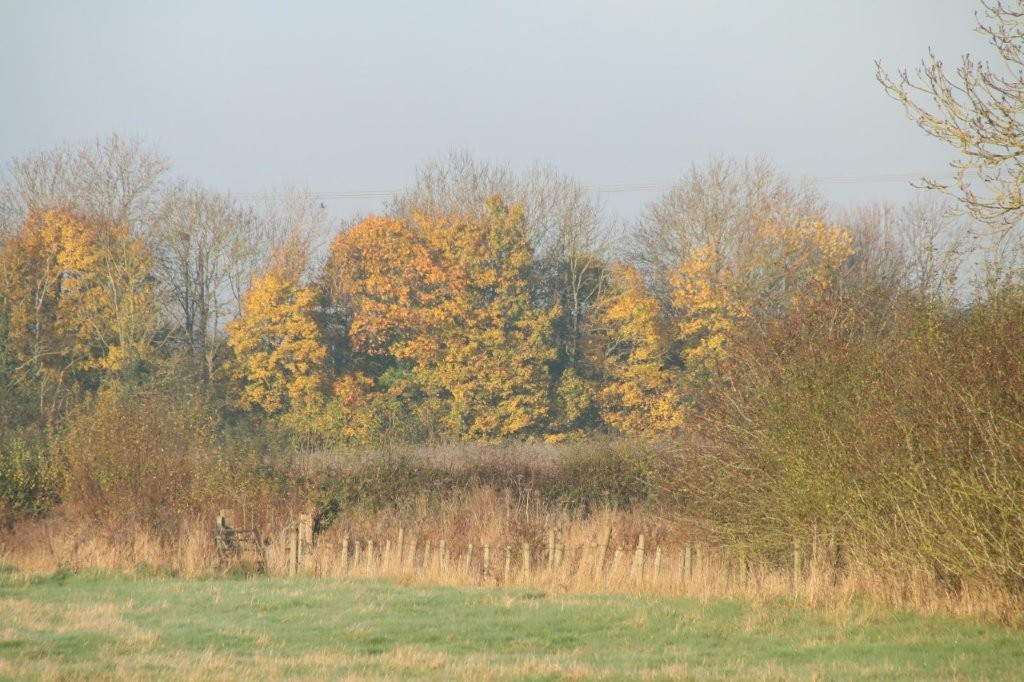
As expected on such a morning, the grass in the Sheep Field was soaking with a heavy dew. Walking through it we left trails where my heavy boots and more delicate dogs paws had shaken the dewdrops off the grass as we walked through it, and as we headed back to the bridge back across the river we re-joined the tracks left after we came through the gate into the field.
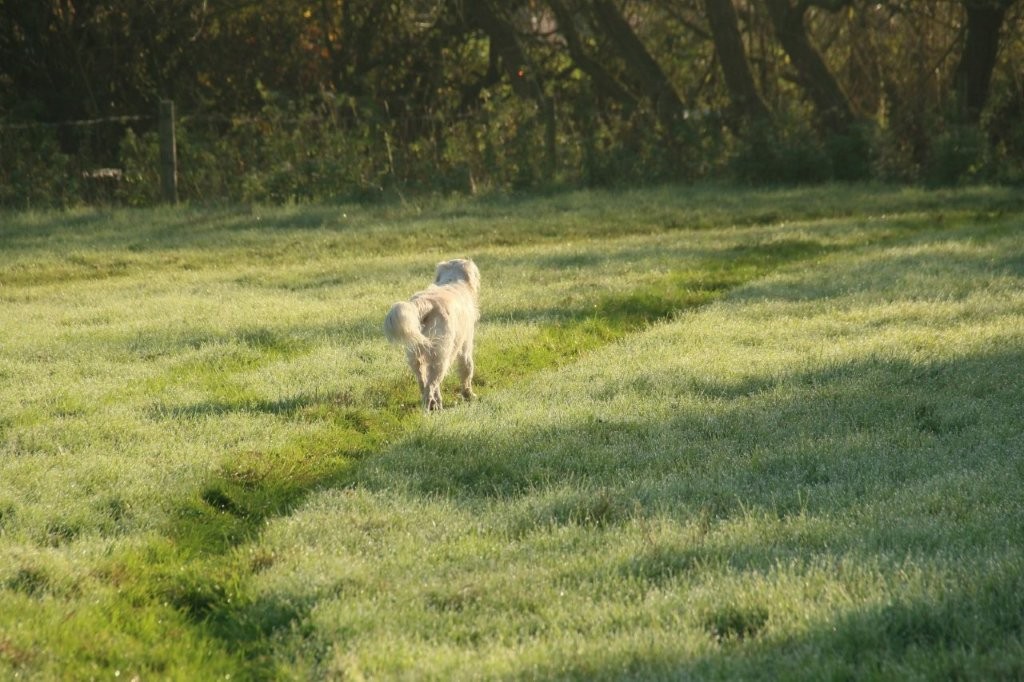
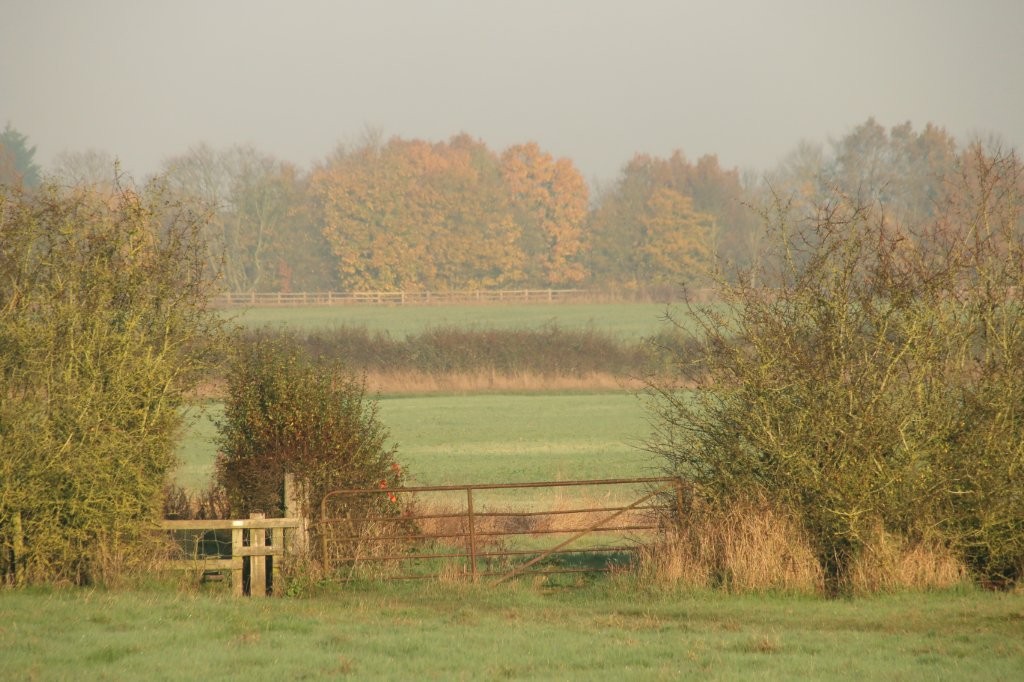
12th November – Muntjac
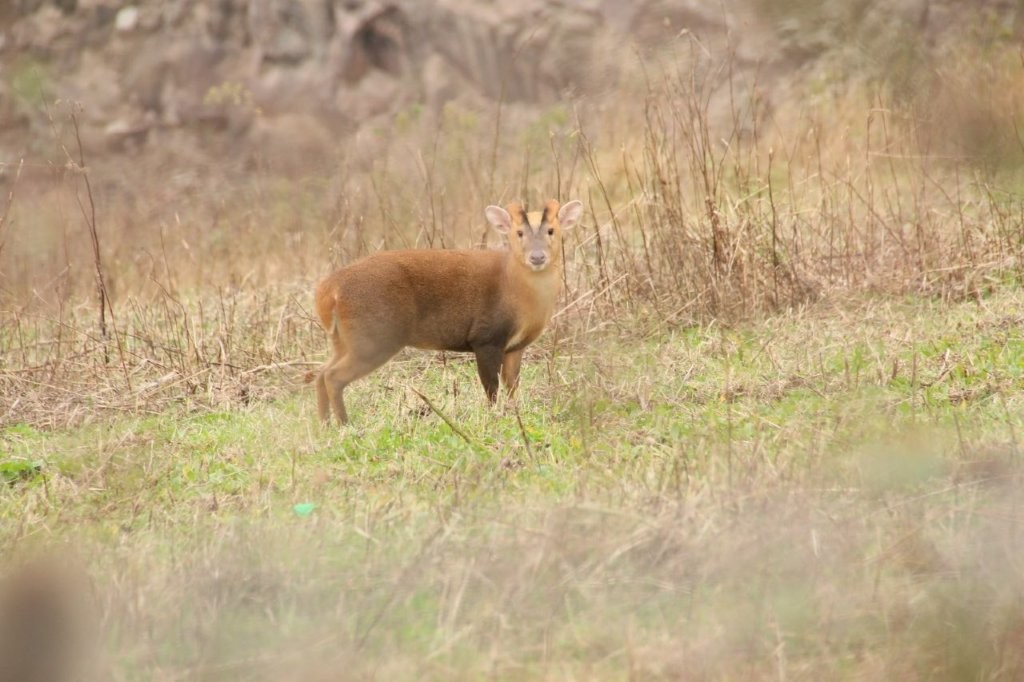
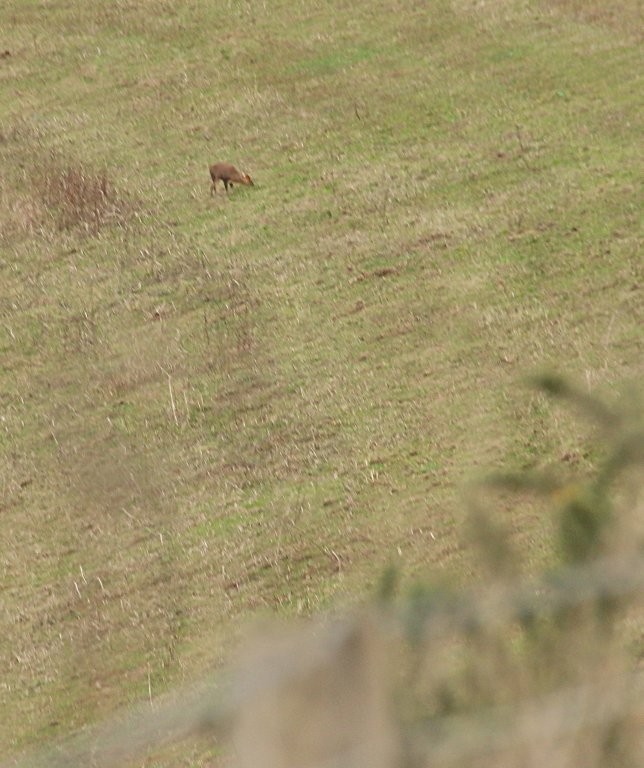
Walking across the Sheep Field this morning we met a couple of friends and their dog, and so we changed our route so that we could walk together as the dogs played and owners chatted. We walked along a tree lined track, which we all agreed was brighter, more open, and generally more pleasant thanks to a trimmed hedge between us an the adjacent field, and bare late-Autumn branches overhead.
At the end of the track our friends turned left through a kissing-gate to continue their walk across a field to the footbridge over the river and back to the village where they live, while Sam and Ellie and me turned right up steep steps to the quarry edge to a path that led to Croft Hill. In the distance a muntjac deer was grazing on a grassy slope below the path. I kept the dogs walking quietly behind me, and we were able to get quite close to the deer before it scented us and fled into a thicket of shrubs.
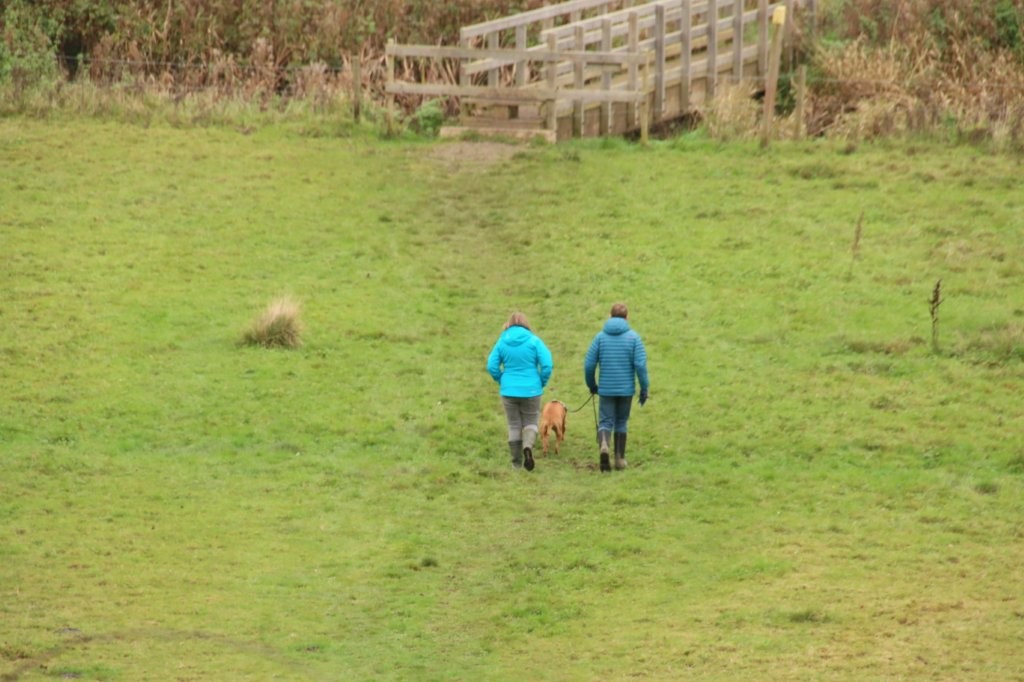
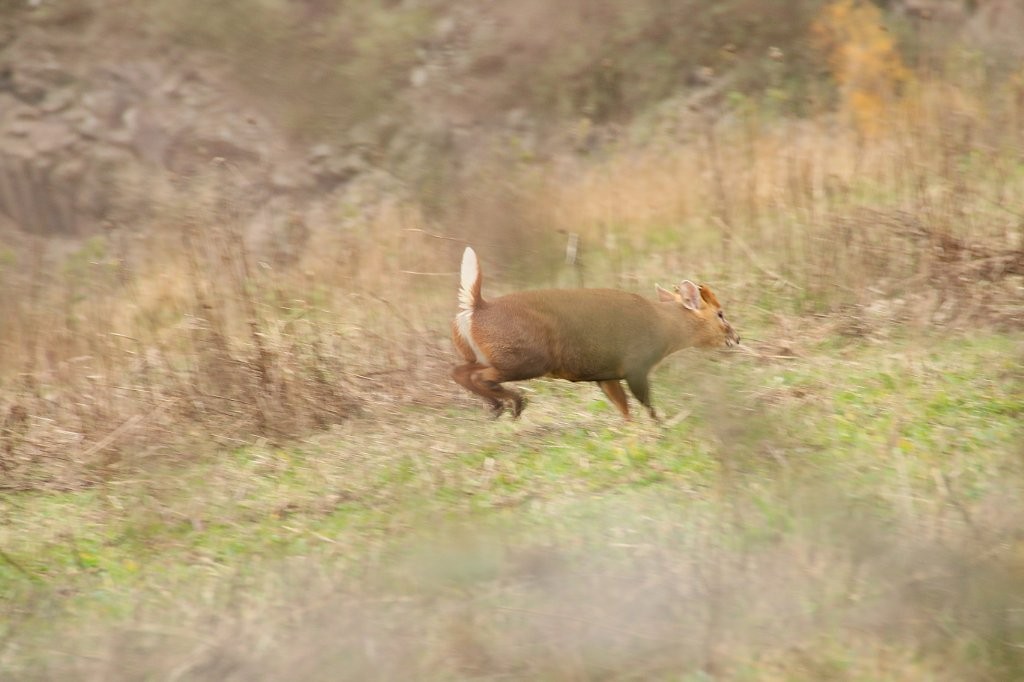
10th November – Rural Remembrance
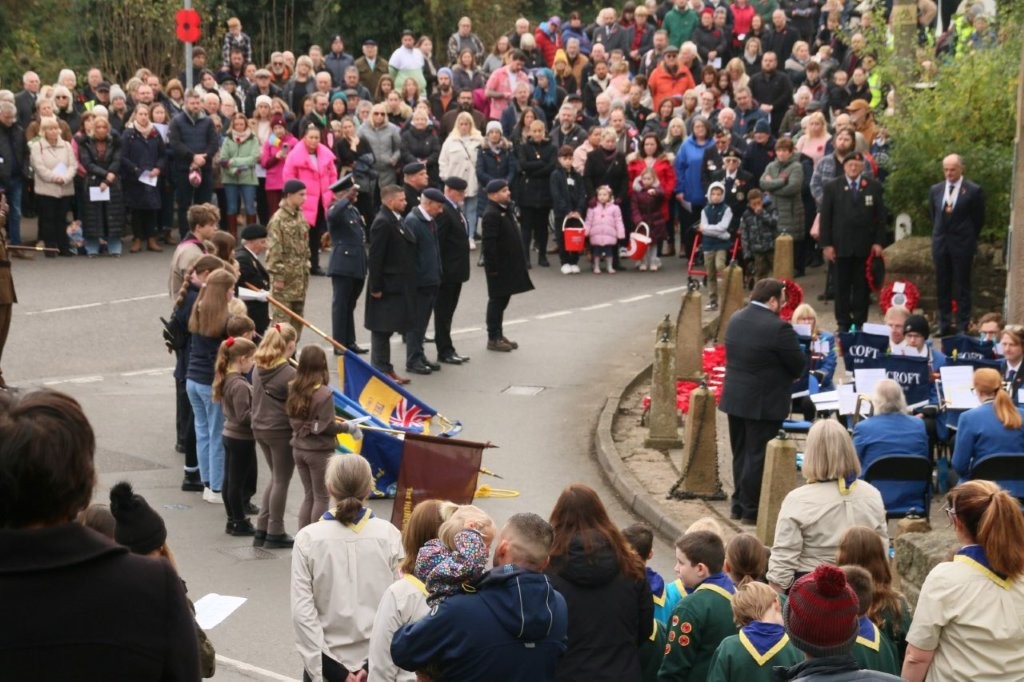
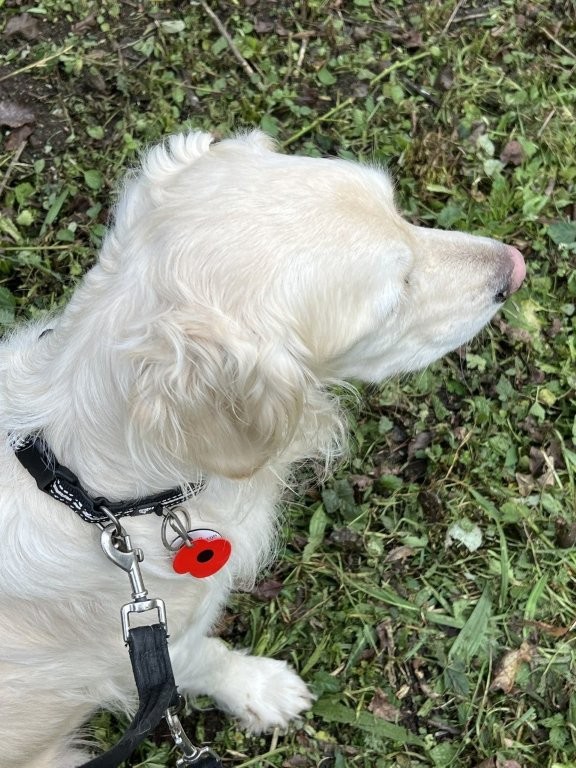
Sam and I walked down to Croft for the Remembrance Service. The Service is for the villages of Croft, Huncote and Thurlaston, and we joined a stream of people (and dogs) of all ages walking along the footpath from Huncote down into Croft. As usual the Service, entirely outdoors, was well attended, including by many youngsters, not just uniformed organisations, but also young children with their parents. Occasional bleating of nearby sheep during the two minute silence seemed to emphasise the quiet pause in life’s busyness, as everyone, young and old, remembered The Fallen.
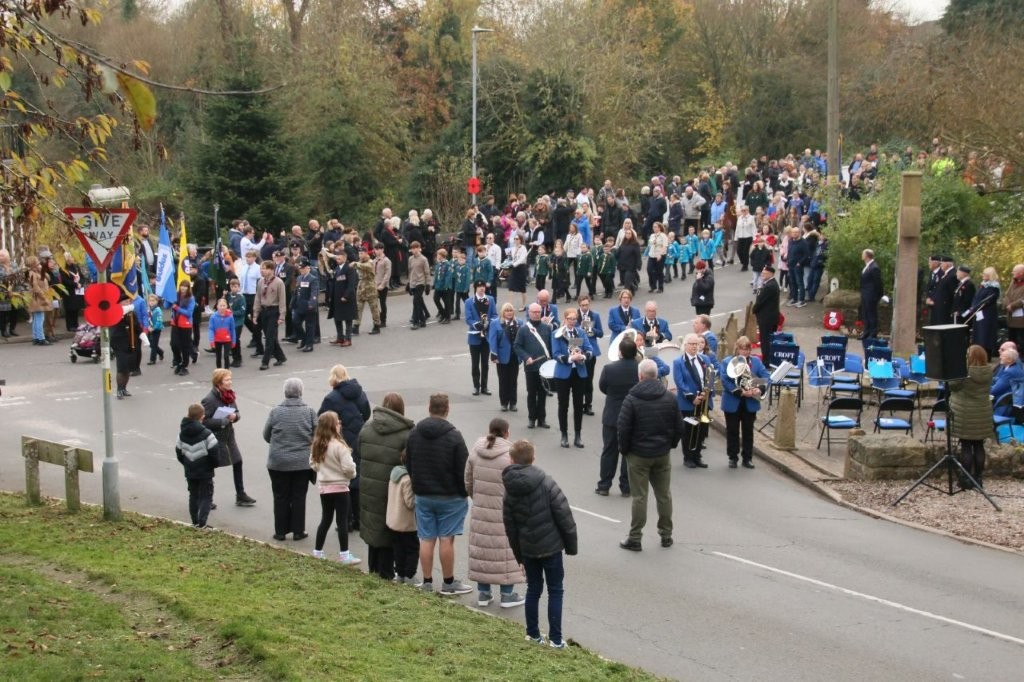
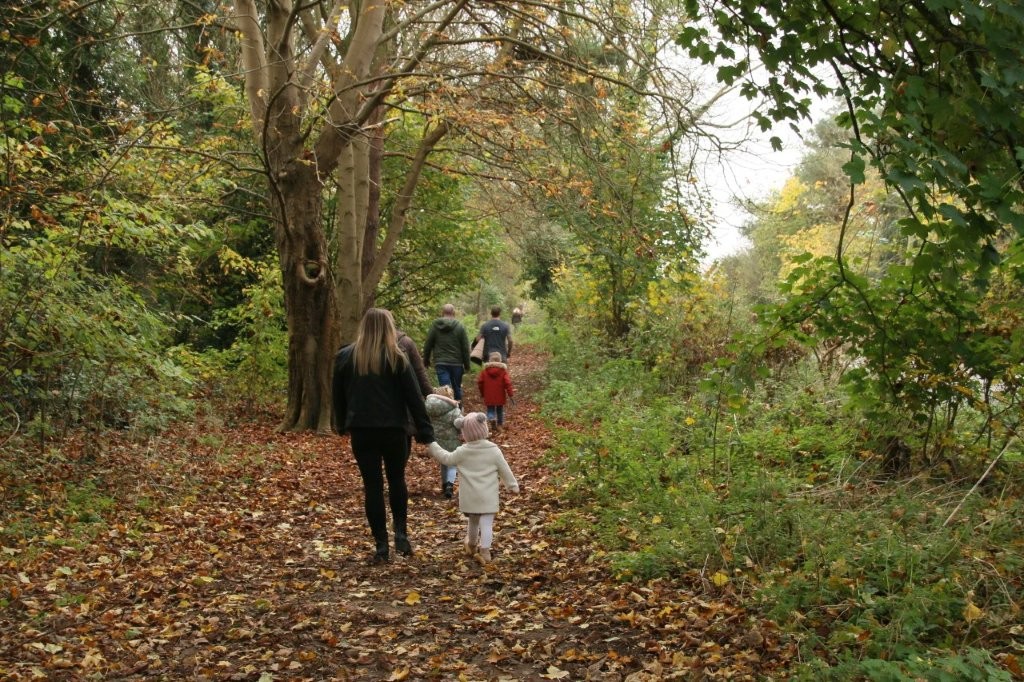
8th November – Overlapping seasons
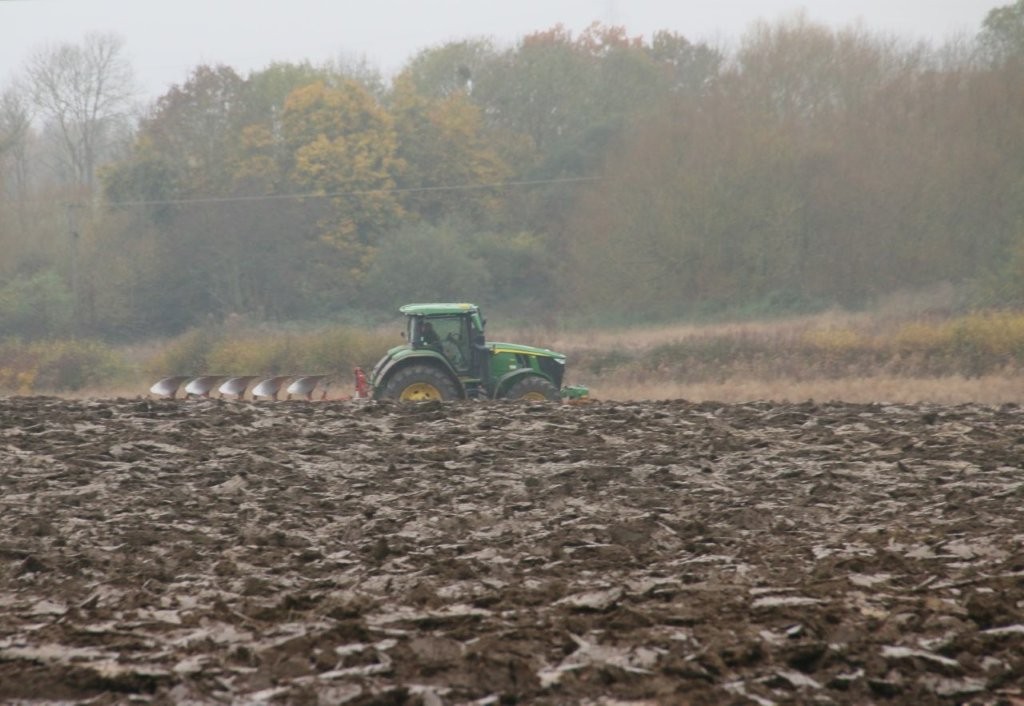
The relentless gloom under leaden skies continues, weeks without sunshine, but on the last two mornings there has been the slightest of breezes which may have added a slight chill but gave the air an invigorating freshness after recent damp mistiness.
After much spreading a week or so ago, the field behind the old barn has been ploughed, the soil turned to a greater depth than adjacent fields to “dig in” the manure – he tractor could be heard labouring as it ascended the slight incline of the field. The plough was reversible, with one set of tines (plough “blades”) in the air until the tractor turned, at which point the plough turns over to swap tines. Because the tines are curved to turn over the soil, reversing a plough prevents soil being turned over on top of the ridge of soil left by the previous traverse of the field, the soil always being turned towards the same field edge.
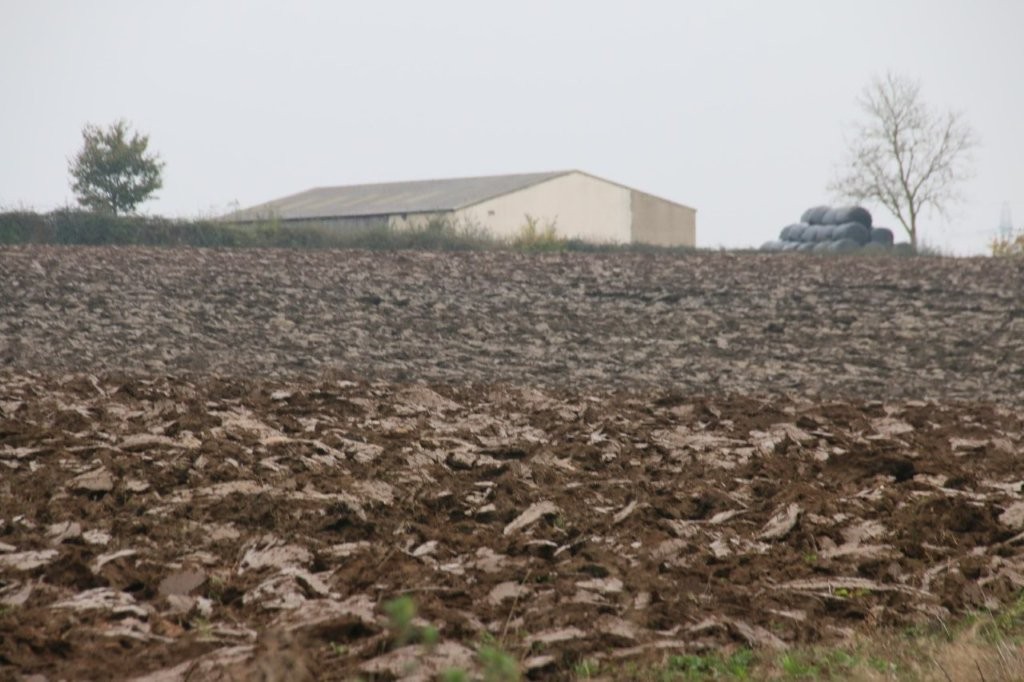
While walking over Croft Hill Sam showed a particular interest in something in the grass, and was reluctant to be called away. He had found a young rabbit, which only escaped under bushes after I called Sam away. Usually, rabbits escape into cover well before being discovered by dogs – this one was clearly not in full health. We crossed the road to the Lane leading around the Glebe and found an adult dog fox dead in the verge, presumably hit by a car – a sad sight. In contrast to rabbit and fox, as the Lane opened onto the field at the end a hare sprinted away from us, luckily before I had let the dogs off lead, or they would have followed, ignoring all calls to return to me. They would have had no chance of catching the hare but would have continued to run for some distance.
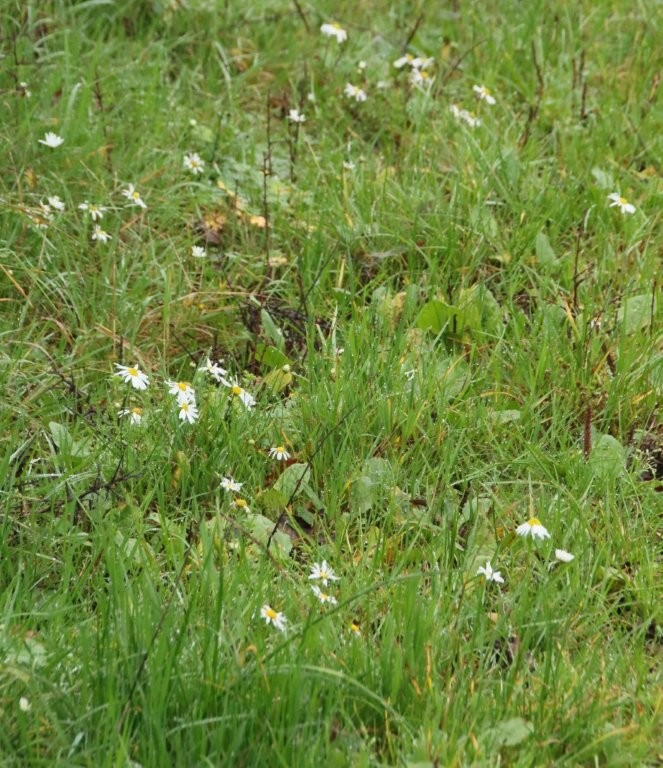
Field daisies continue to flower in field edges thanks to the mild weather, and Buttercap Mushrooms spread across the sides of Croft Hill, one a sign of late Summer, the other of Autumn – seasons are overlapping.
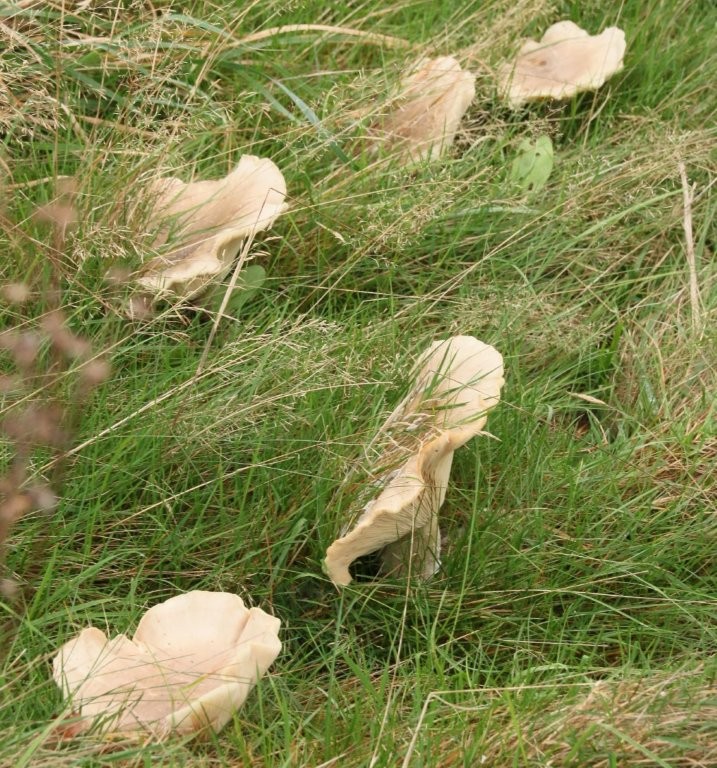
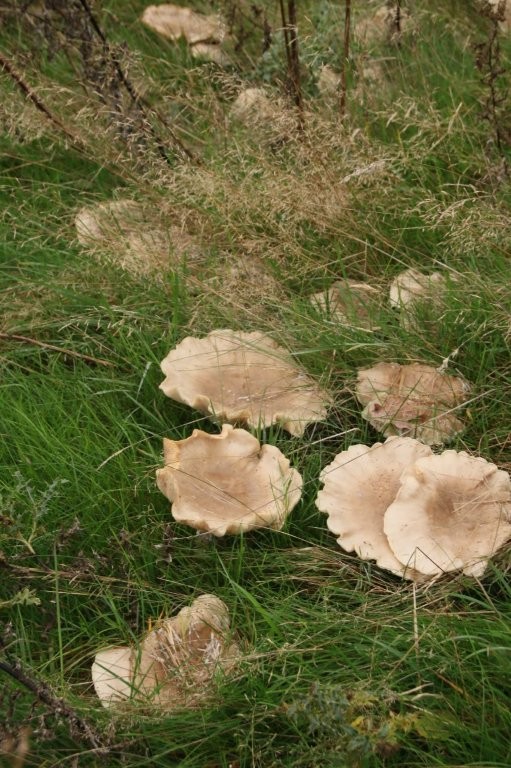
6th November – A texture of trees
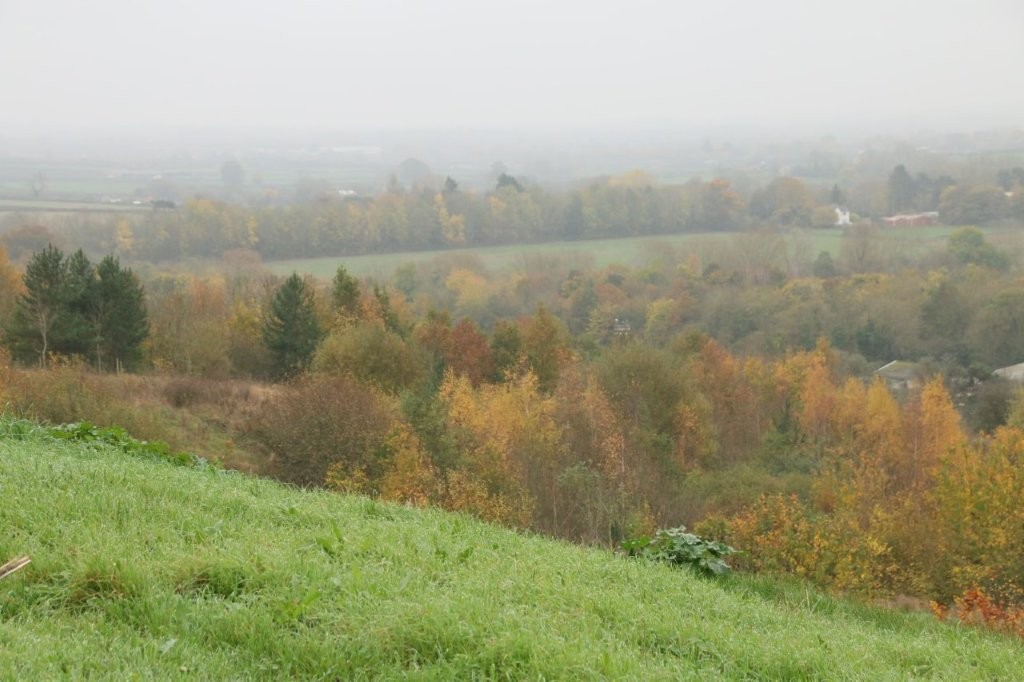
Our part of the country, Leicestershire, is not renowned for tree cover, although the establishment of The National Forest in the north of County has both protected existing woodland and established new woods. Around us we have few mature trees, mostly along field hedgerows, with many fine, if not ancient, oaks, and a variety of mature trees on Croft Hill.
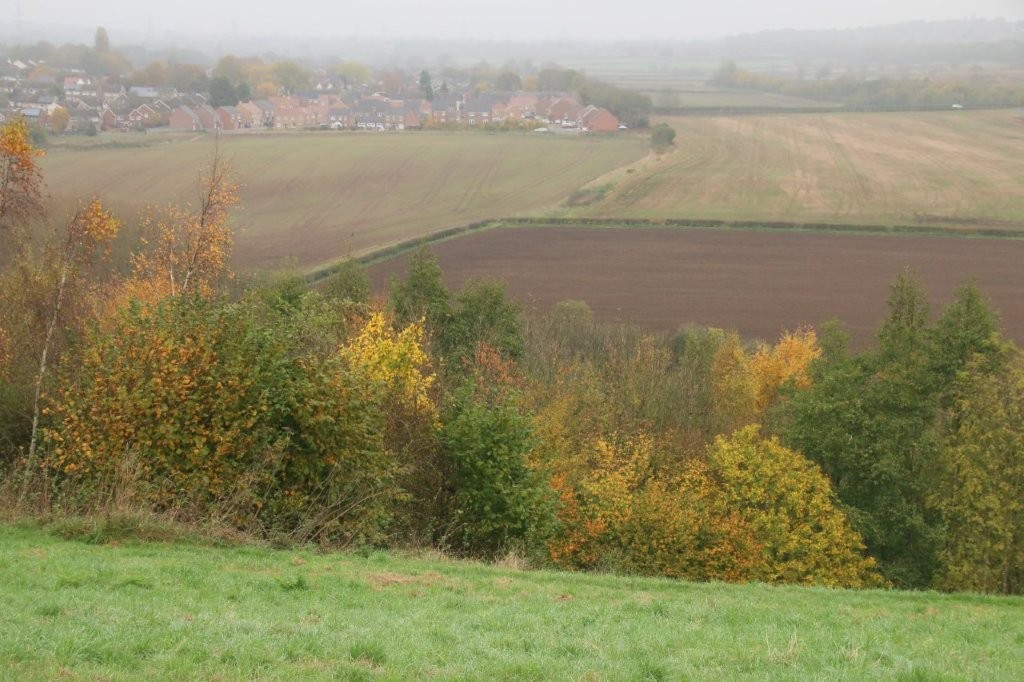
Thanks to tree planting around the Quarry about 20 years ago we are surrounded by young trees. It would be exaggerating to say that we are able to walk through woodlands, but nevertheless most of our walks will include stretches of either walking through trees, or with trees dominating the near landscape. We particularly appreciate this at this time of the year, when some trees are already bare, some in Autumn colours and some, mostly oaks, still green. Thanks to this variation individual trees stand out, and instead of a blanket of green, hillsides are covered with a texture of trees of all sizes, shapes and colour, a glorious part of the local landscape.
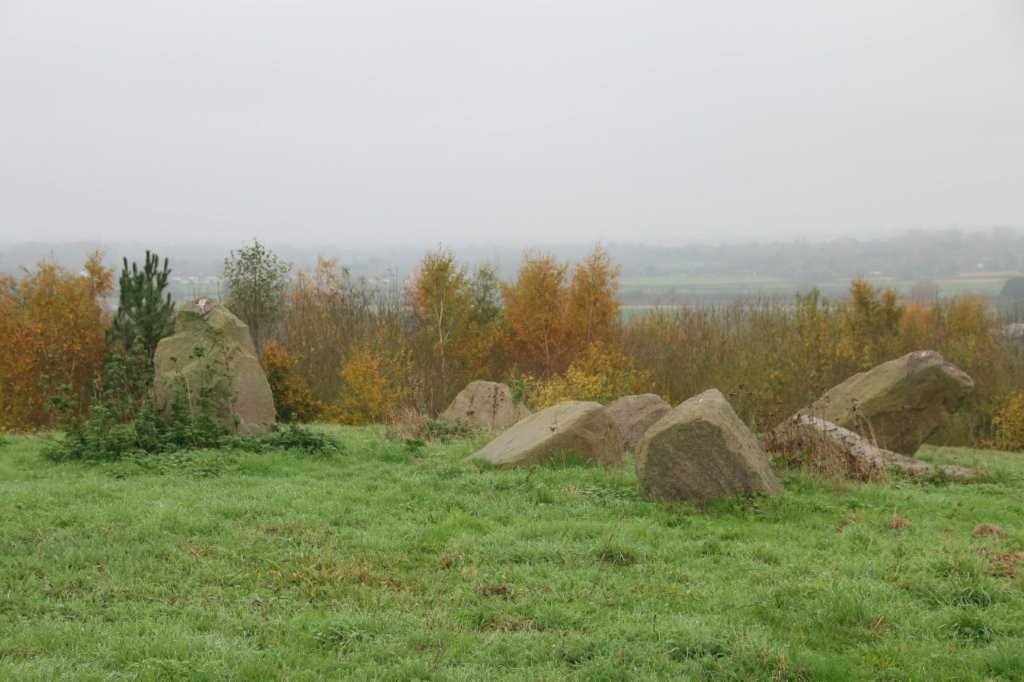
Birch appears to dominate, with its bright yellow leaves contrasting with the less vibrant colours of other trees, or the bare branches of those that have already dropped all of their leaves. Naturally birches are also shedding leaves, and when walking through a plantation of silver birches there is a constant pattering, like a gentle rain, as leaves drop gently around us, falling on foliage that is still hanging onto branches, and then descending onto the carpet of leaves on the ground around us.
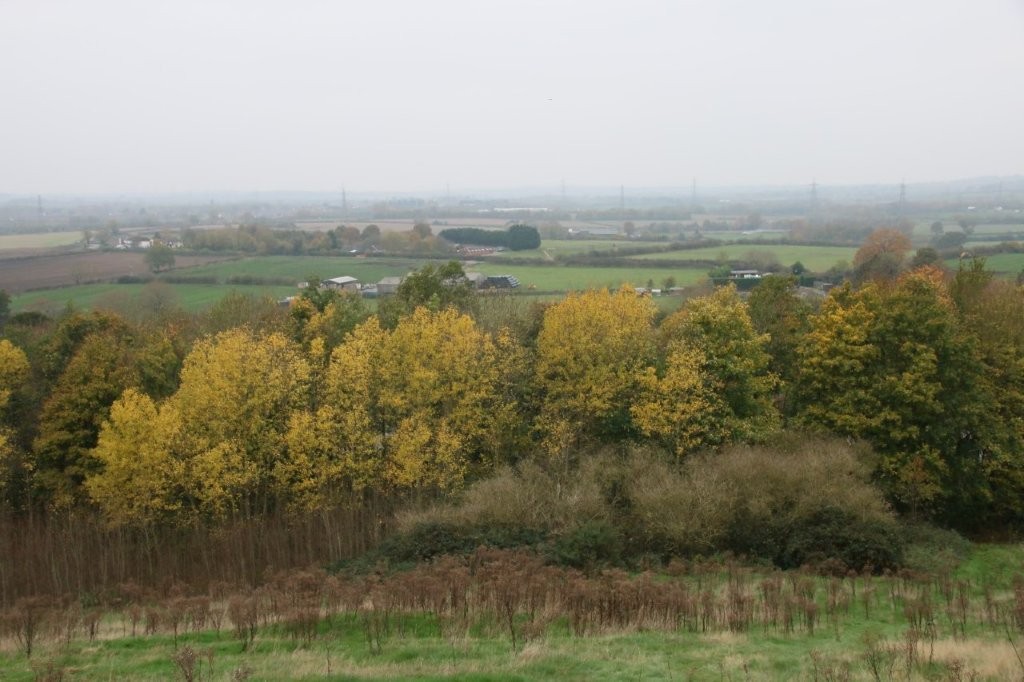
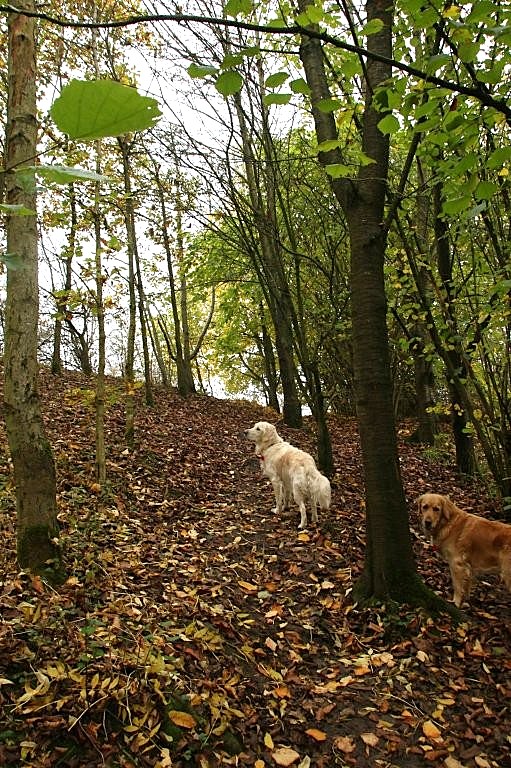
4th November – 50 Shades of grey
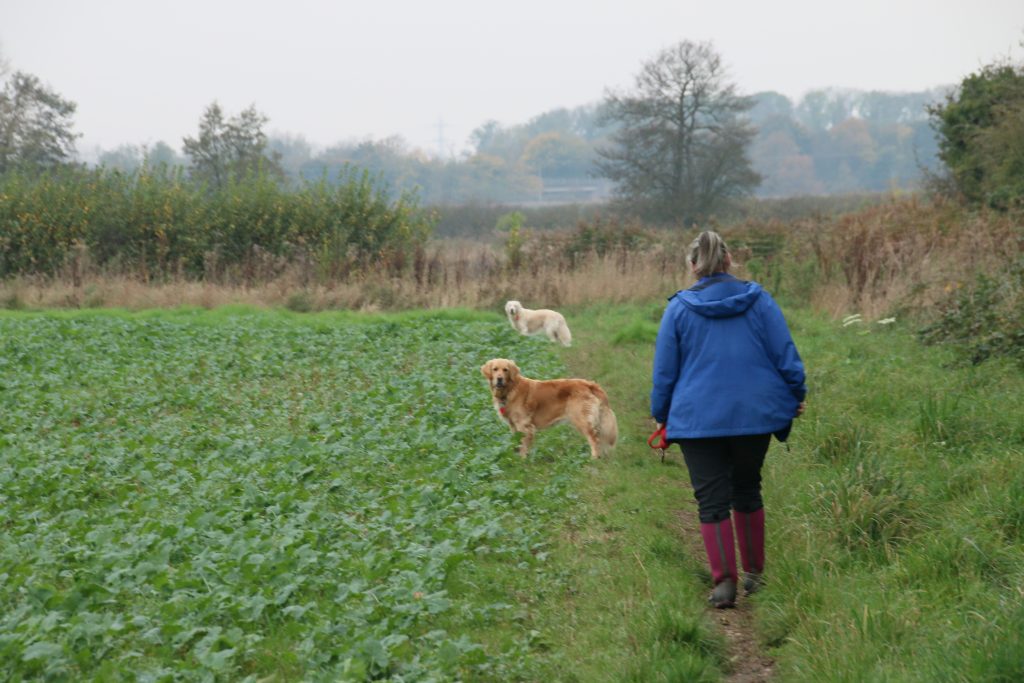
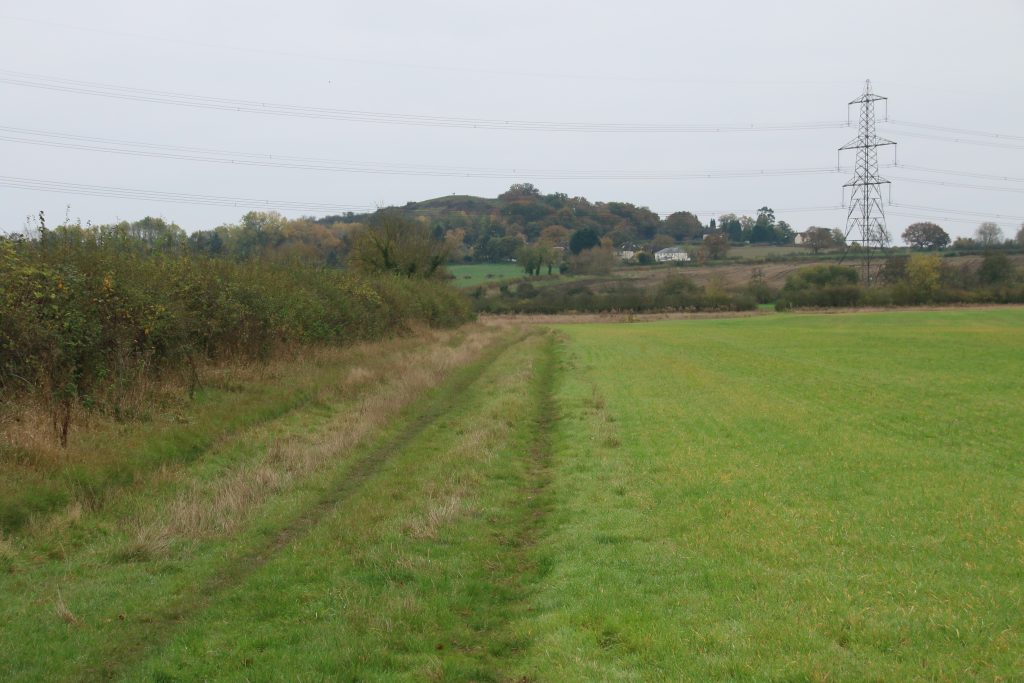
The weatherman described recent weather as “50 shades of grey”, which sums it up perfectly. Grey sky and misty-grey landscape sitting in gloomy windless conditions. The countryside is misty, more so just after daybreak, but we have had no seasonal fog. Out and about, it is not cold, but as you walk out of the door the damp air feels chilly. A fleece keeps me warm, but within minutes of brisk walking I wish I’d opted for a lighter coat.
On some mornings the sun makes a brave effort to break through, although the view from the top of Croft Hill is still softened by the mist. In the mornings the sun is behind the quarry buildings below me and behind the quarry, illuminating the steam from the coating plant, which coats granite chippings with bitumen for road surfacing, and reflecting off the roofs of the processing buildings.
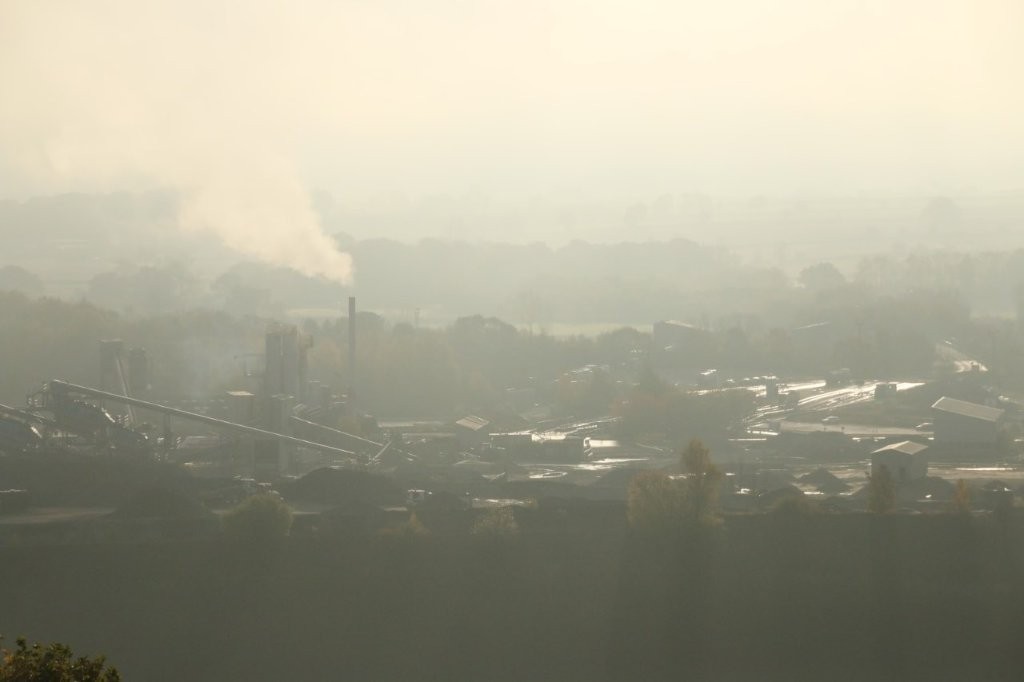
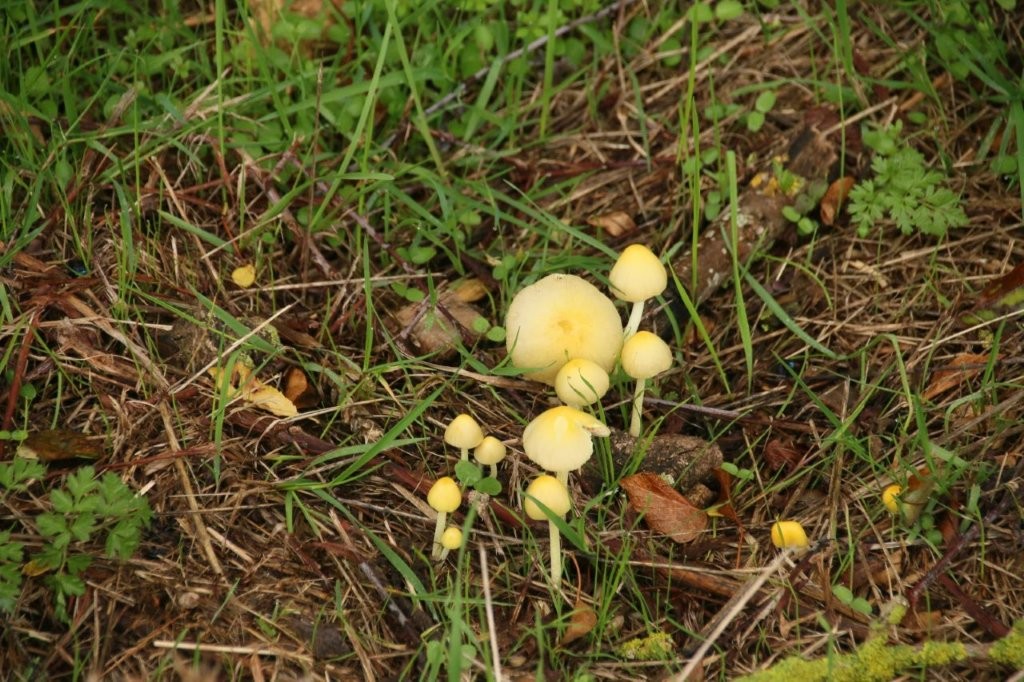
It is wet underfoot, from dew rather than rain, and at last the muddy well-trodden paths are drying up. In the long grasses around the field edges the dew settles on numerous small webs, possibly webs of money spiders, and Yellow Sulphur Tuft mushrooms and Meadow Mushrooms grow in the shorter grass beneath hedgerows.
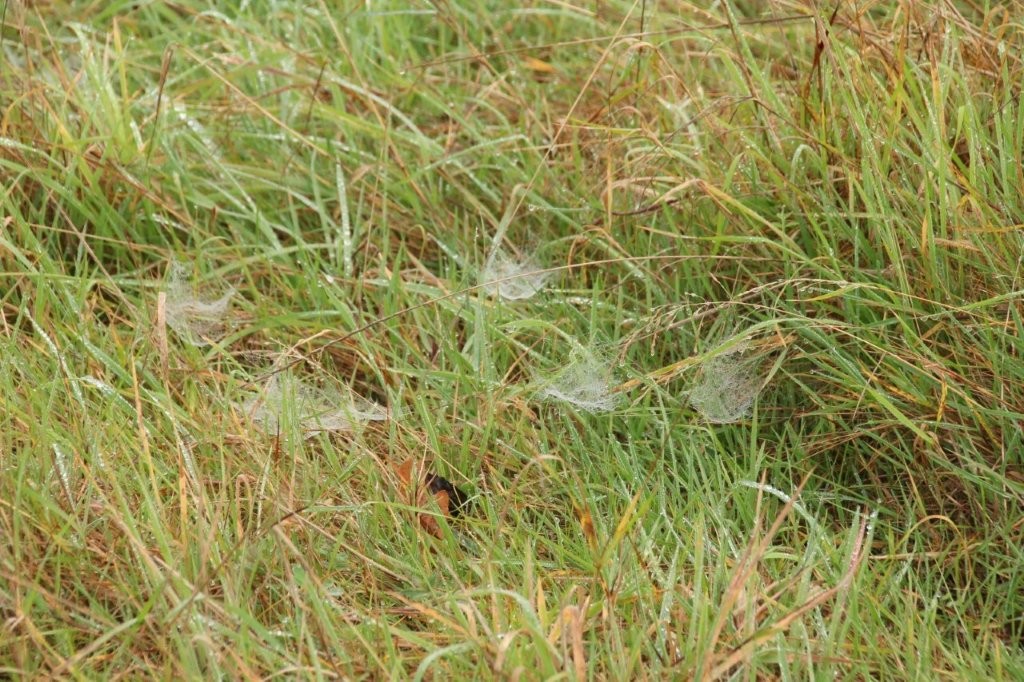
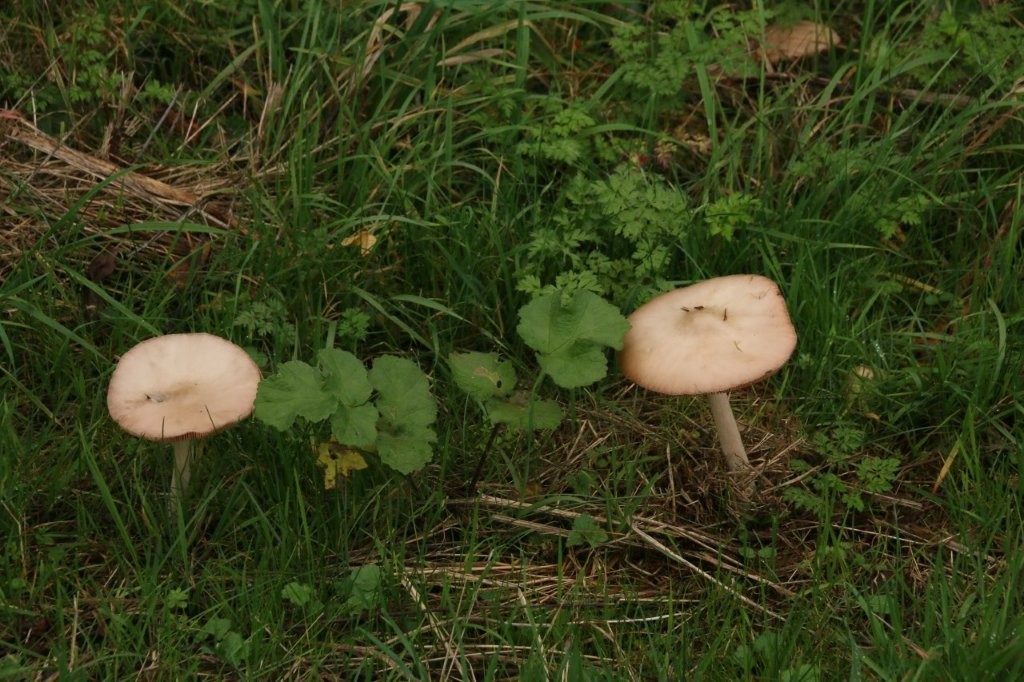
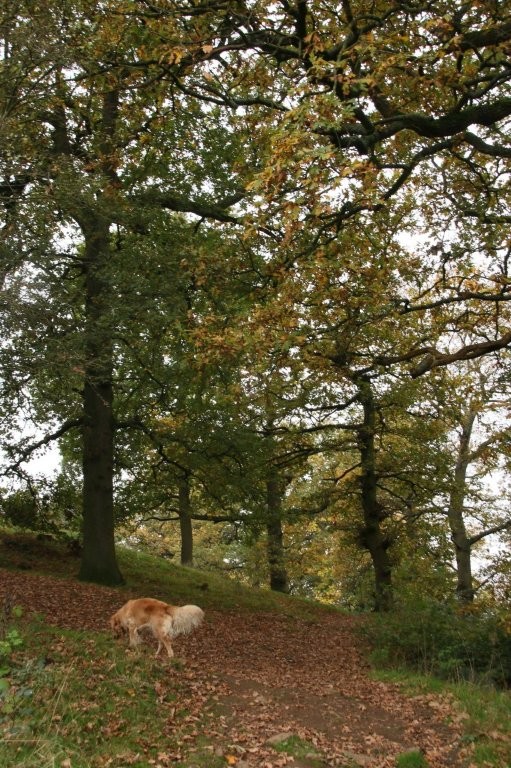
Trees are losing their leaves, the paths covered by a carpet of multicoloured foliage. The damp weather means that that there are no deep drifts of crispy dry leaves, just soggy piles to be kicked around, much less fun than kicking a mass of dry leaves into the air to settle around you in an ankle deep covering, to be kicked skyward again. The leaves are still falling, and there is still time for dry weather for the traditional Autumn shuffle through dead leaves.
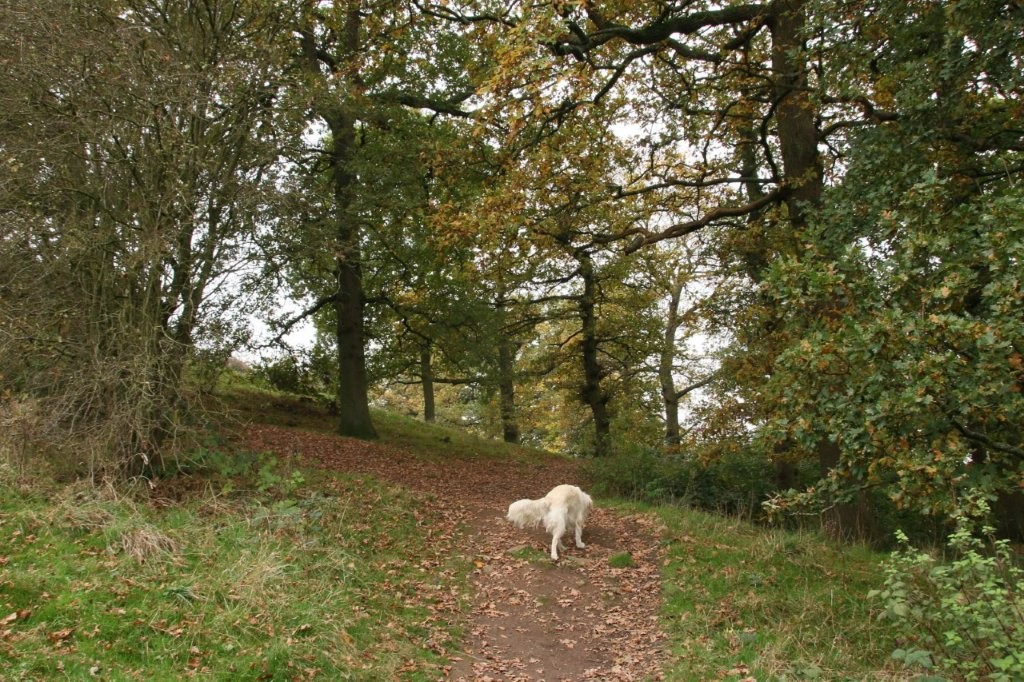
23rd October – Autumn Shades
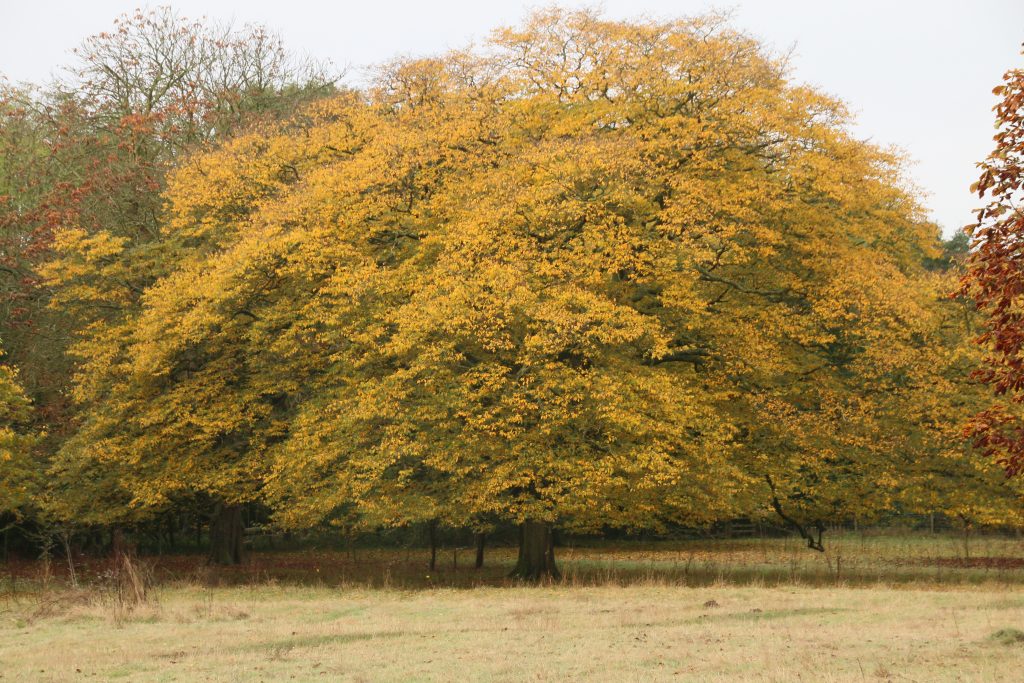

At last Autumn colours are displaying around the countryside, although not as vivid as in previous years. In particular, shades of red seem to be in short supply, with yellows dominating. Cold Autumnal nights seem to encourage a vivid and colourful display, and this year nights (and days) have been mild.
Croft Glebe, managed by the Woodland Trust, has the most variety of colours, on trees that have a flat and level base to the foliage thanks to sheep grazing earlier in the year, but my favourite view of Autumn is the wooded slopes of the quarry, with Chandler Cottage seeming to nestle among the trees, despite being separated from them by a country lane.
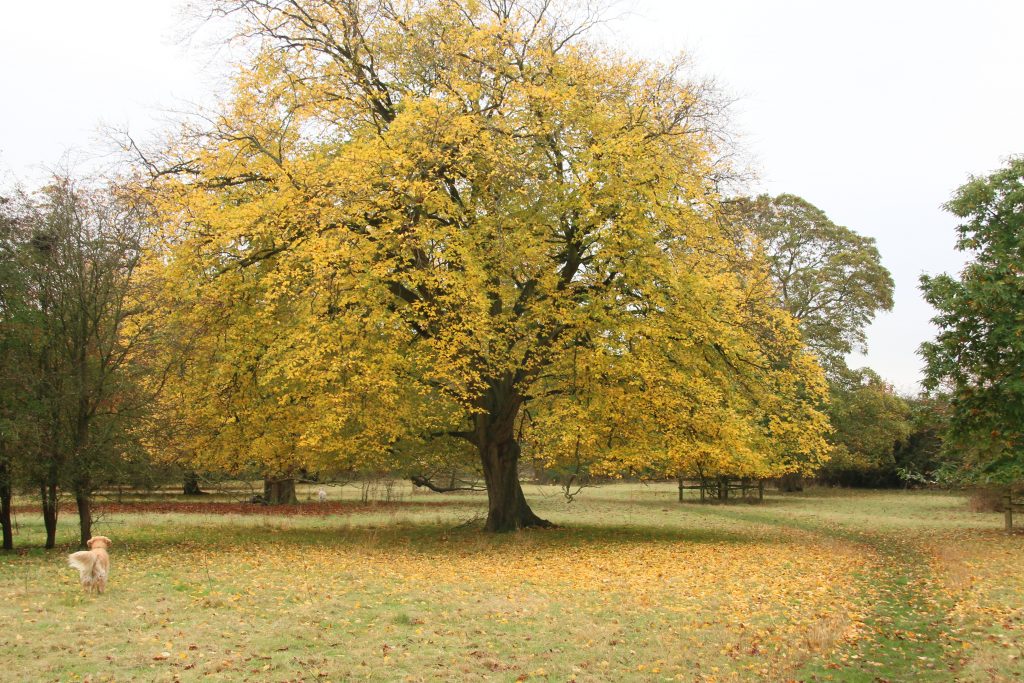
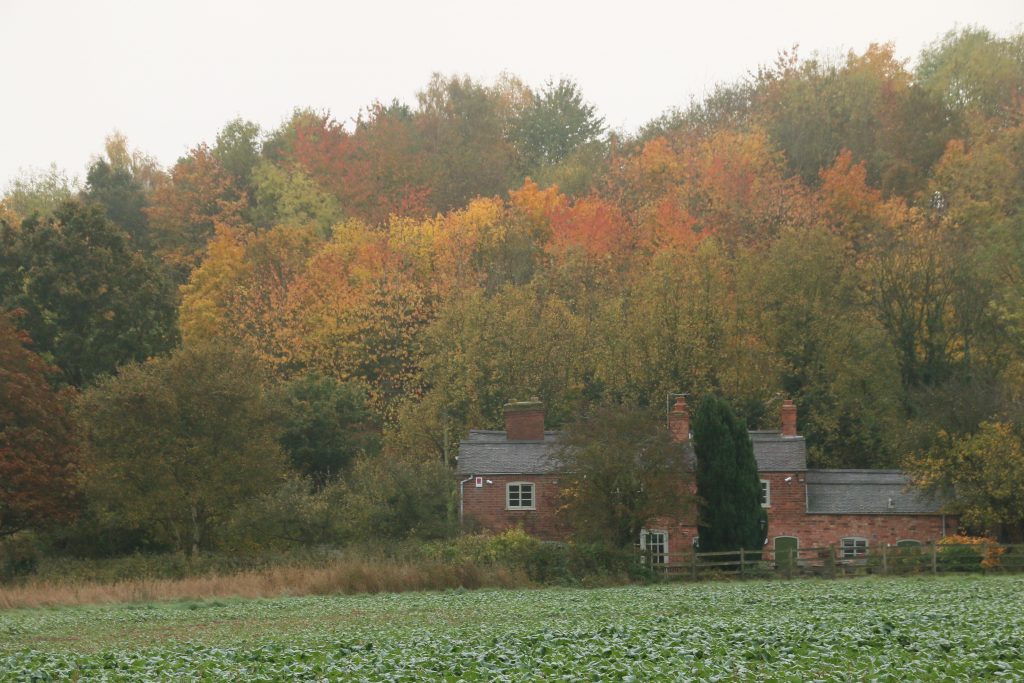
21st October – The New Hill
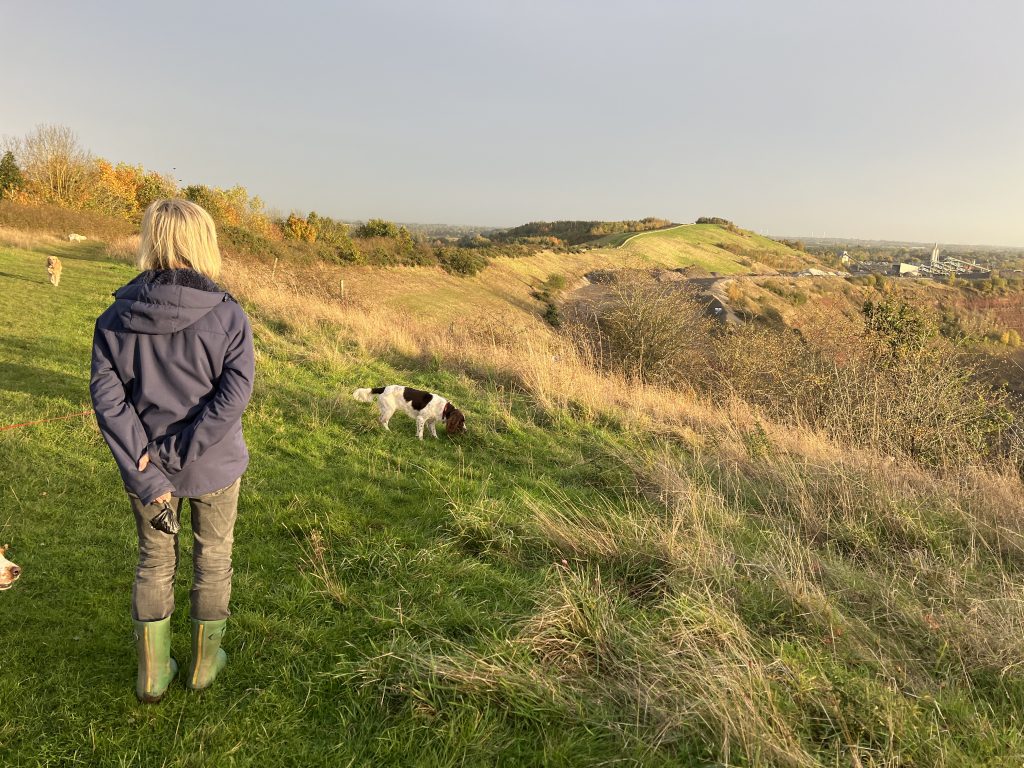
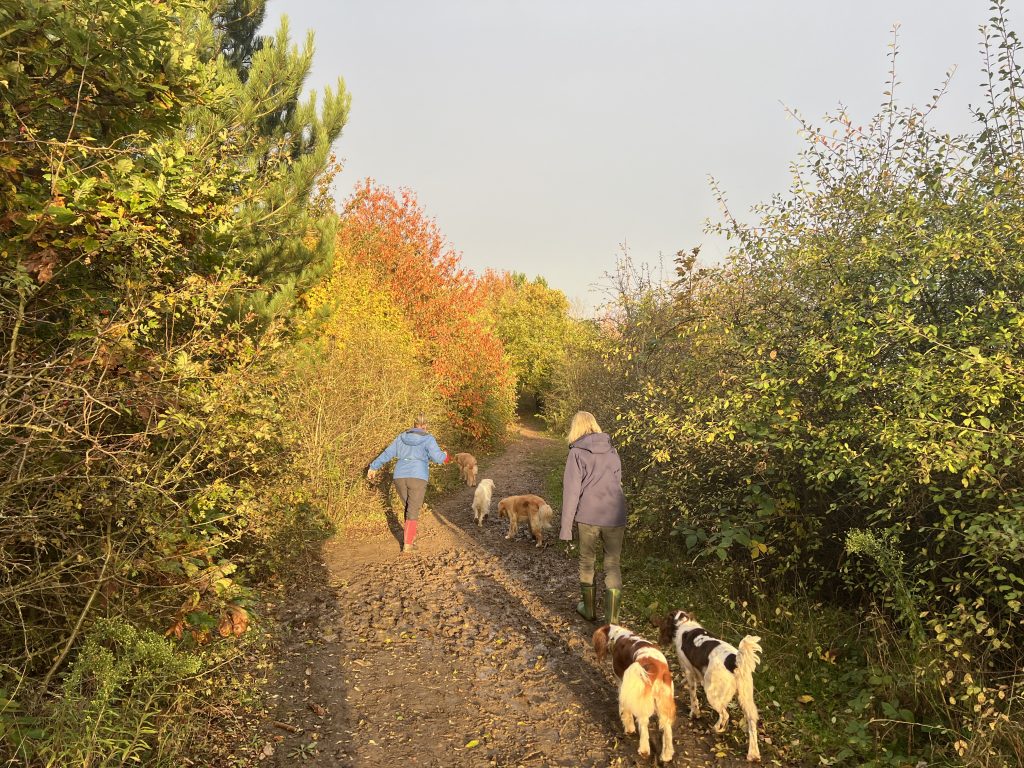
After a grey and gloomy day, the sun emerged just as we set off on our afternoon dog walk. We opted for the rather muddy walk up to the “New Hill”, the artificial hill that follows the quarry edge. The Hill was under construction when we moved to this area over 20 years ago, serving two purposes – to protect the nearby village from dust and noise, part of the planning consent for the quarry, and somewhere for the quarry to dispose of the “overburden”, the soil that needed to be removed to expose granite beneath. The company that operated the quarry at the time named the resulting mound “The New Hill”, creating a suspicion among local that the intention was for this to replace the natural Croft Hill, which would be quarried. This never happened, another company took over the quarry and encouraged locals to use both the “Old” and “New” Hills, suggesting that Croft Hill will remain. This is fortunate since it is the natural Croft Hill that protects our home from any noise from the quarry.
The New Hill has naturalised, partly by planting of trees, and partly by nature on the Hill maturing. Boulders were placed on the New Hill with the hope that they would look like natural outcrops. They don’t, although at least have begun to blend in with the grasses that cover the Hill. The highest boulders were placed in a circle, a rather modern stone circle, but a pleasant place to stop and look at the view.
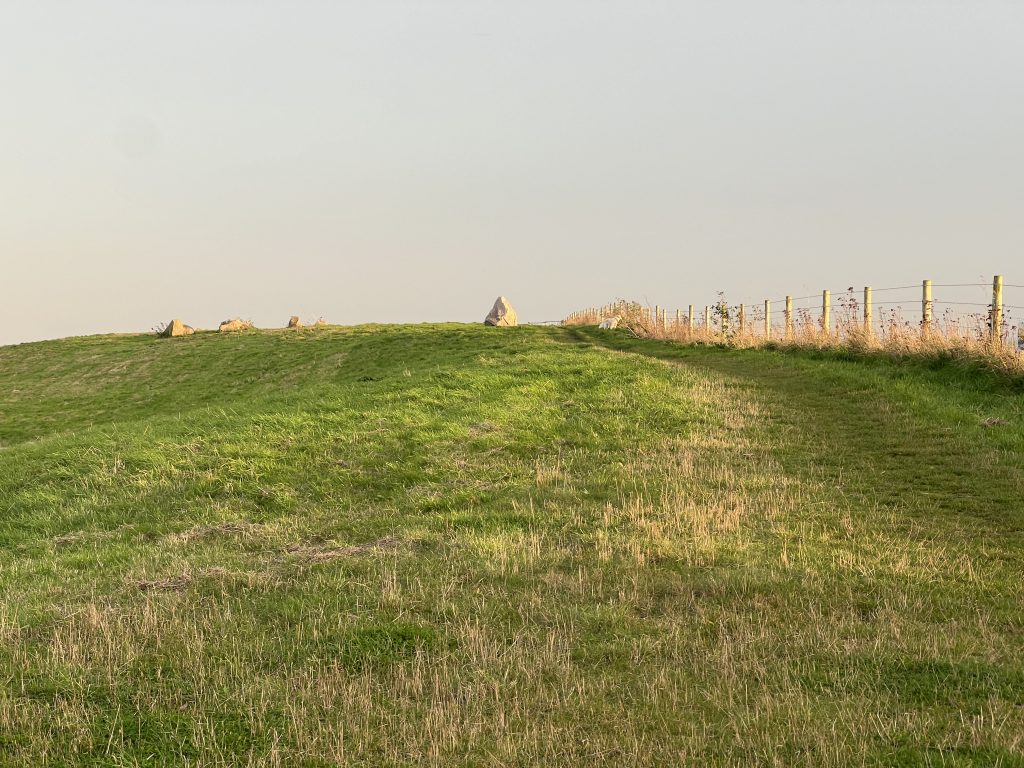
19th October – Maize and chestnuts
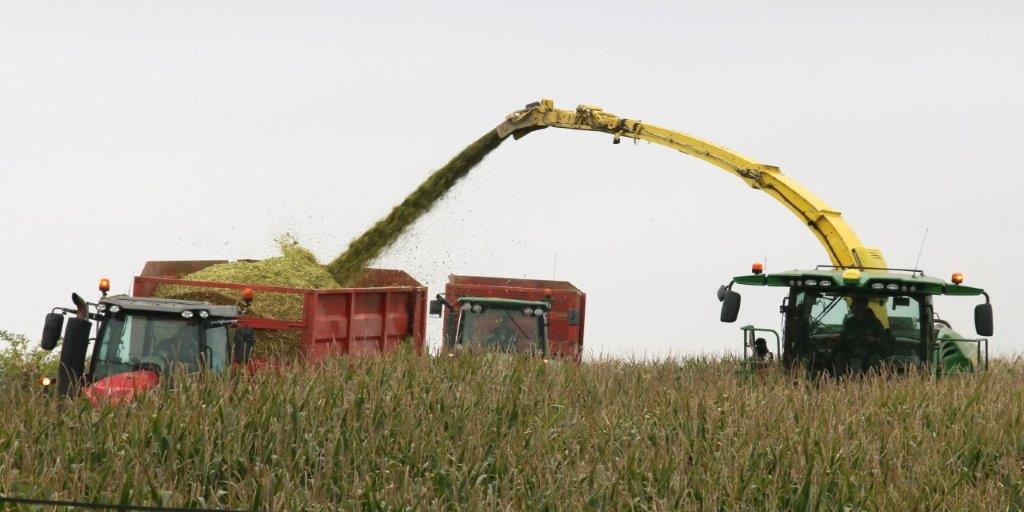
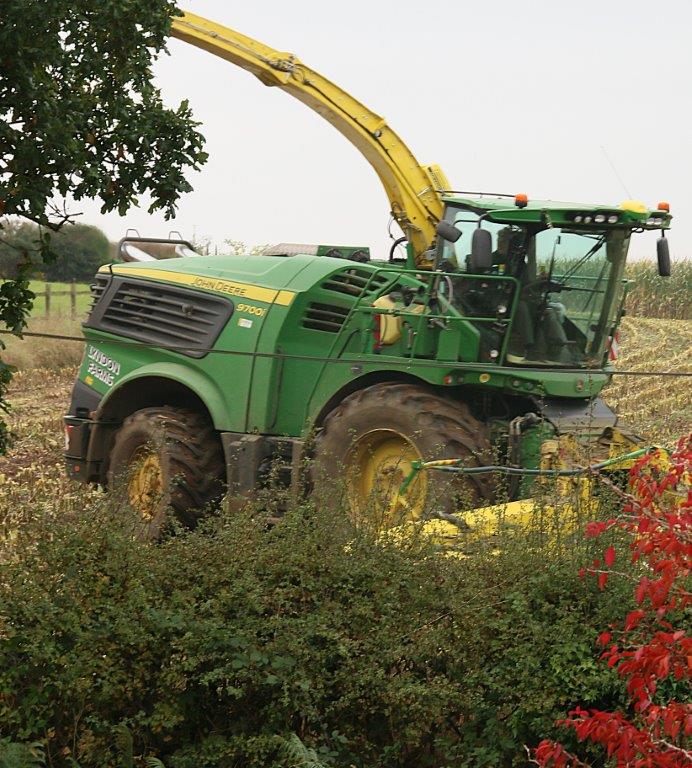
The final harvest has taken place – the maize plants in the field opposite our home were harvested a week or so ago, all bit less frantic than the busyness of the wheat harvest in August. The combine harvester for cereal fills with grain and stops to empty into a trailer, with trailers queuing at the field edge to ensure that combining ceases for as short a time a possible, and in the meantime a baler travels over the stubble baling the straw, while a separate vehicle collects and stacks the bales for collection. The maize on the far side of the Lane was completely shredded for sileage, preserved animal feed. The harvester cuts and shreds the maize, immediately feeding it to a tractor-drawn trailer alongside. No straw, no bales, to queuing trailers. And within a day the field has been ploughed.
The weather remains mild, and on a sunny morning it almost feels like early summer. However the shorter daylength means that grass isn’t growing quickly, unable to support as much grazing. The sheep in the riverside meadow behind us have long gone, before even their relatively lightweight bodies cut up the soft ground. Now the sheep in “The Glebe”, a Woodland Trust managed field with scattered mature trees, have finally gone, to the relief of local dogwalkers. This enclosed field is a popular meeting spot for canine friends and their owners, walking circuits and catching up on local gossip. Sam and Ellie revelled in being able to run around the field, without being called back or kept close, as tends to happen on footpaths with blind bends or gaps in hedges. Many of the trees are oaks and horse chestnuts, but amongst them are a couple of sweet chestnut trees. Sweet chestnuts are the traditional roast-chestnuts favoured at Christmas. I have tried roasting them over an open fire, but was not impressed – a bit dry for my taste.
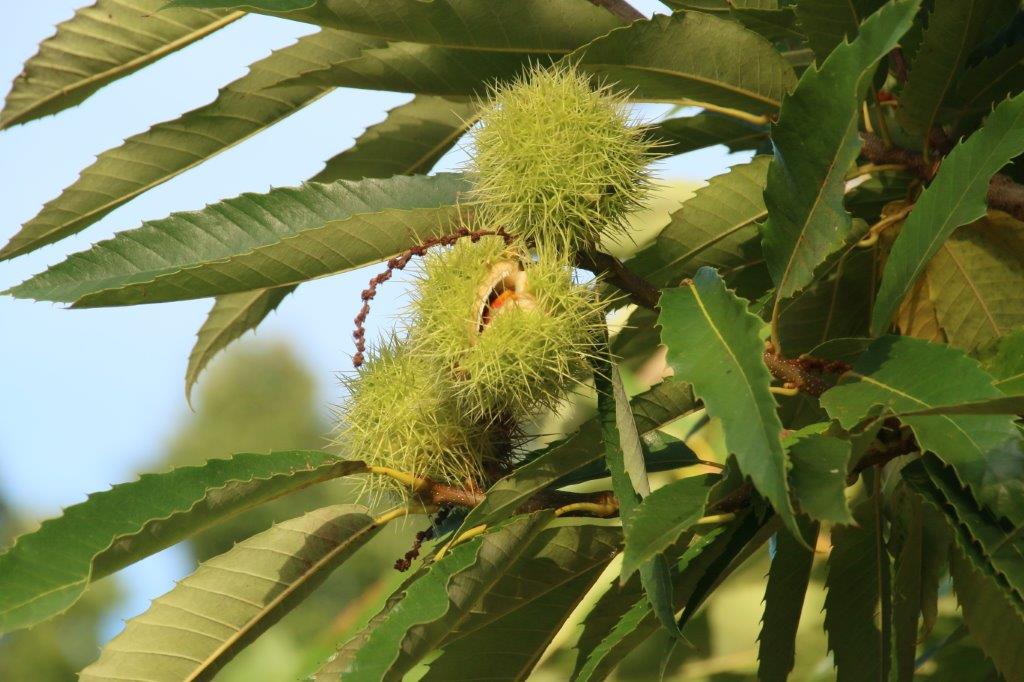
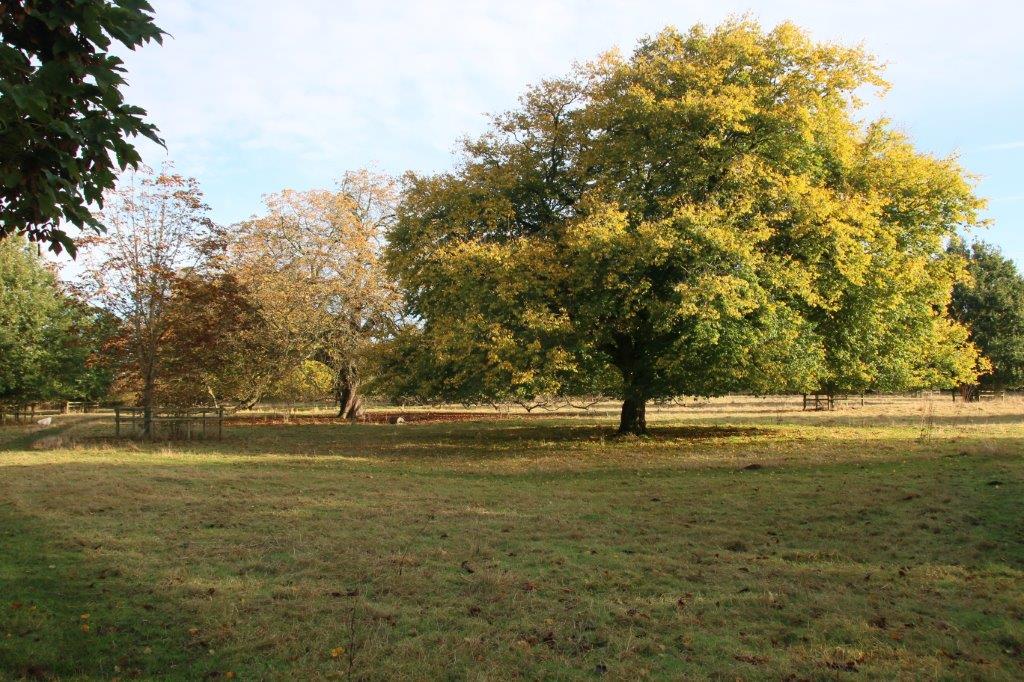
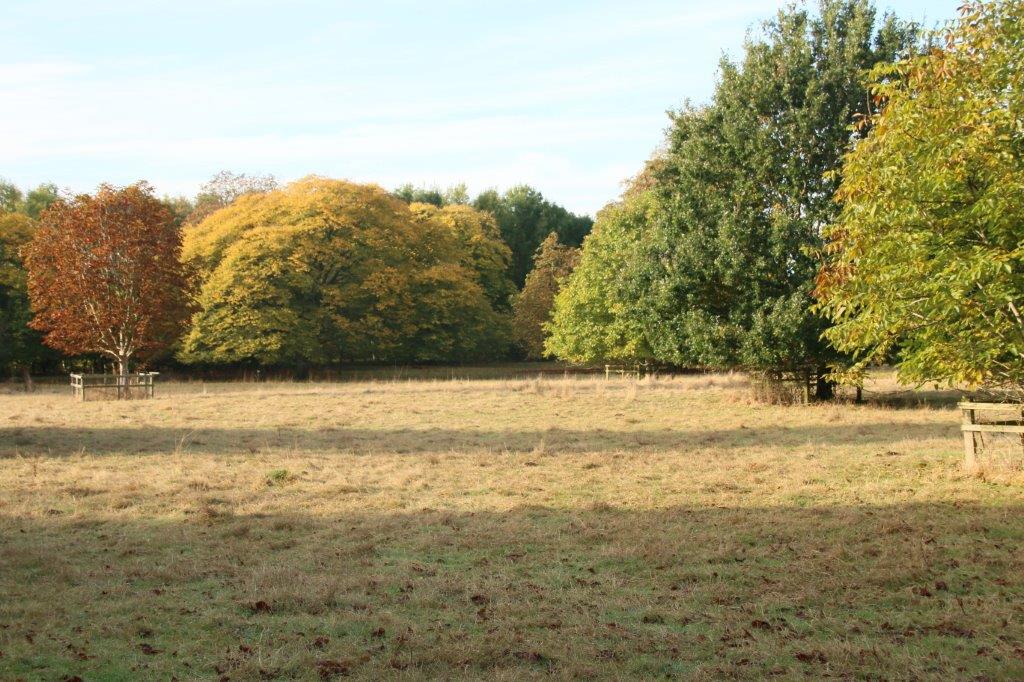
We climbed Croft Hill and met up with a friend and her elderly Springer Spaniel, who I haven’t seen for a while. We chatted for ages, the dogs pottering around, or just lying at our feet, the sun warm in a blue sky, and a clear view across the countryside in directions. Money cannot buy such a social occasion
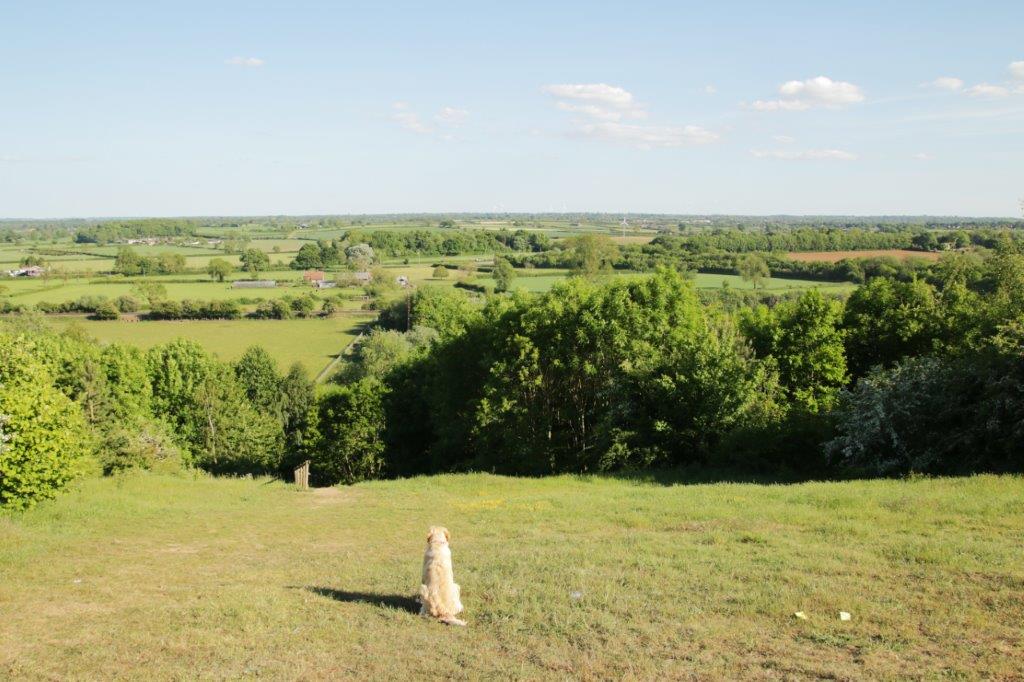
16th October – Misty Morn
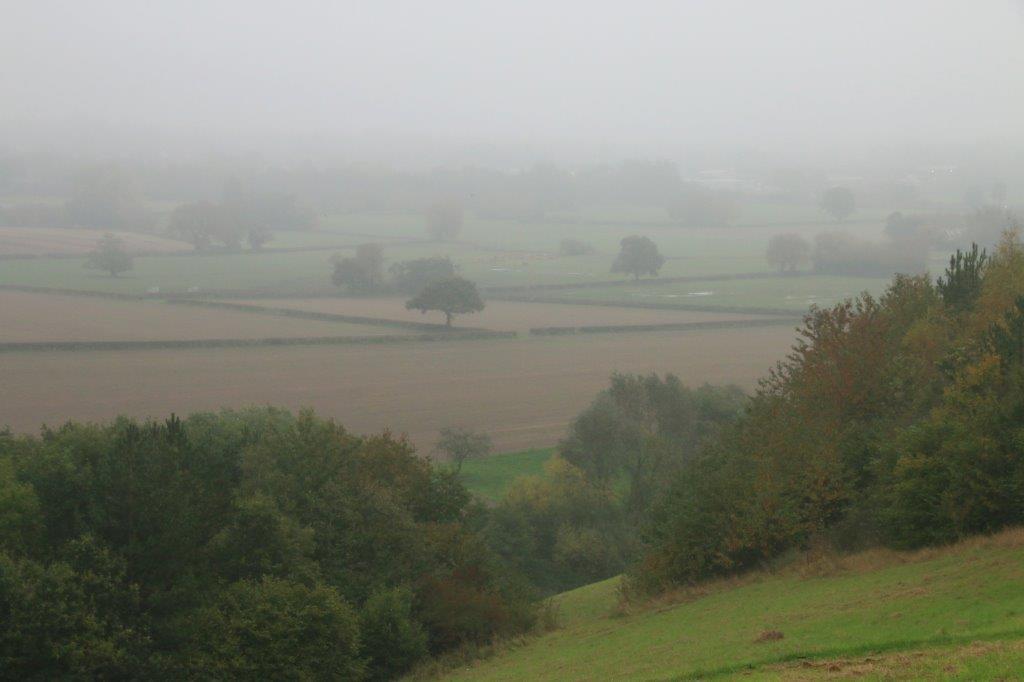
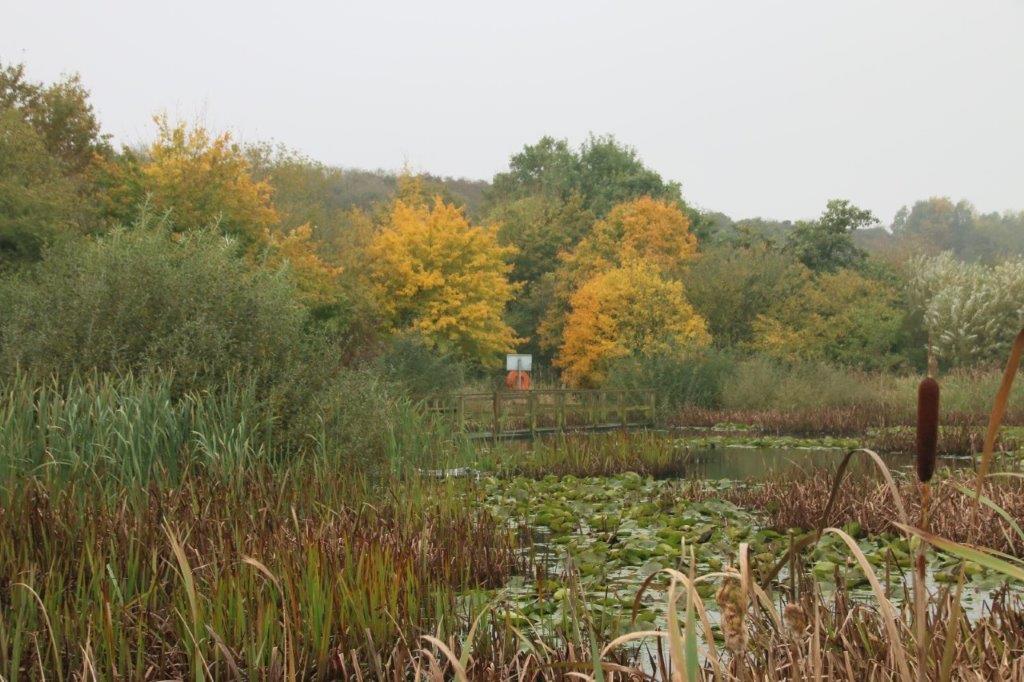
A truly Autumnal morning, misty and damp, but unseasonably warm, one of those days when outdoors seemed to be warmer than indoors. From the quarry edge the outline of Croft Hill was softened by mist, and on the other side of the path the fields below gradually merged with the sky as they stretched into the distance. Within the last couple of days trees have started to change from green to red, yellow and gold, although still with a backdrop of greenery from trees yet to change.
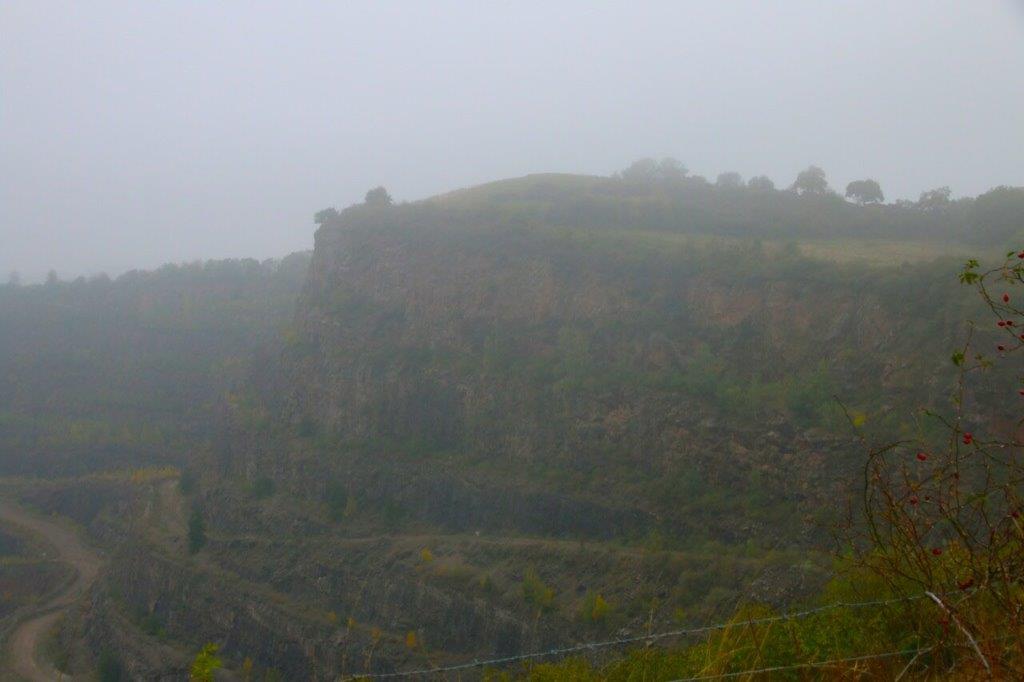
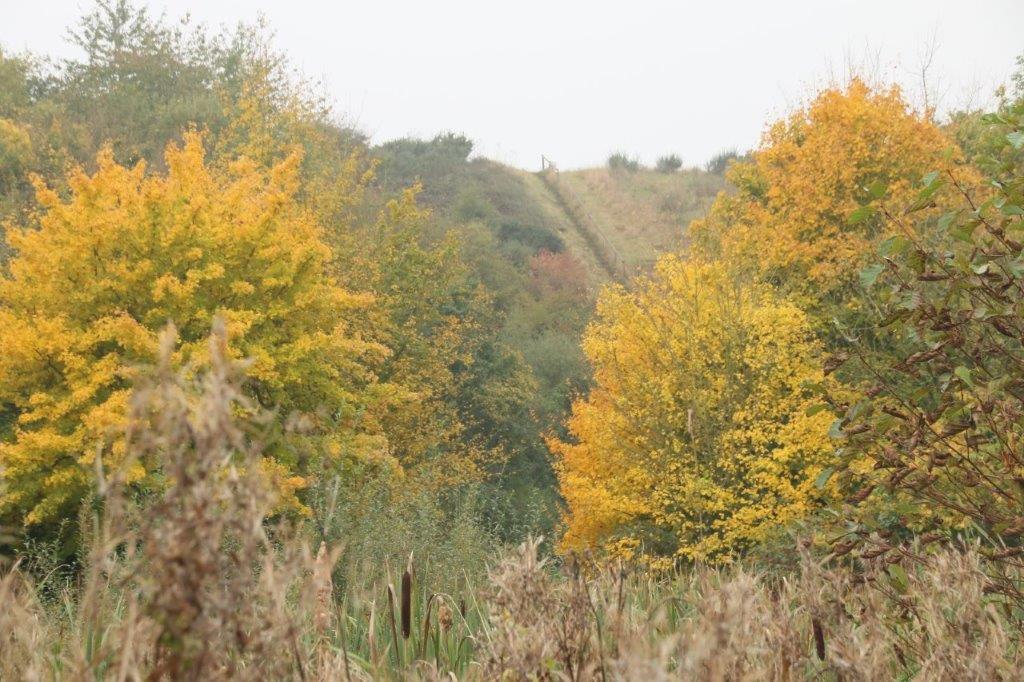
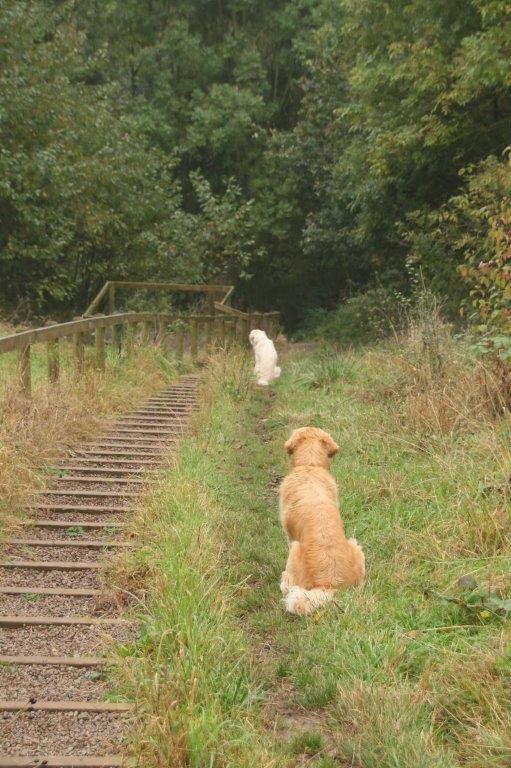
From the edge of the quarry the path descends steps to the river down steps installed some years ago by contractors working for the quarry company. They did not make a very good job, since the steps seem to be precisely one and a half paces apart, too spaced to descend one step at a time, and judging by the adjacent track in the grass many people prefer to walk down alongside the steps. The dogs were happy to bound down the steps for a paddle in the river at the bottom.
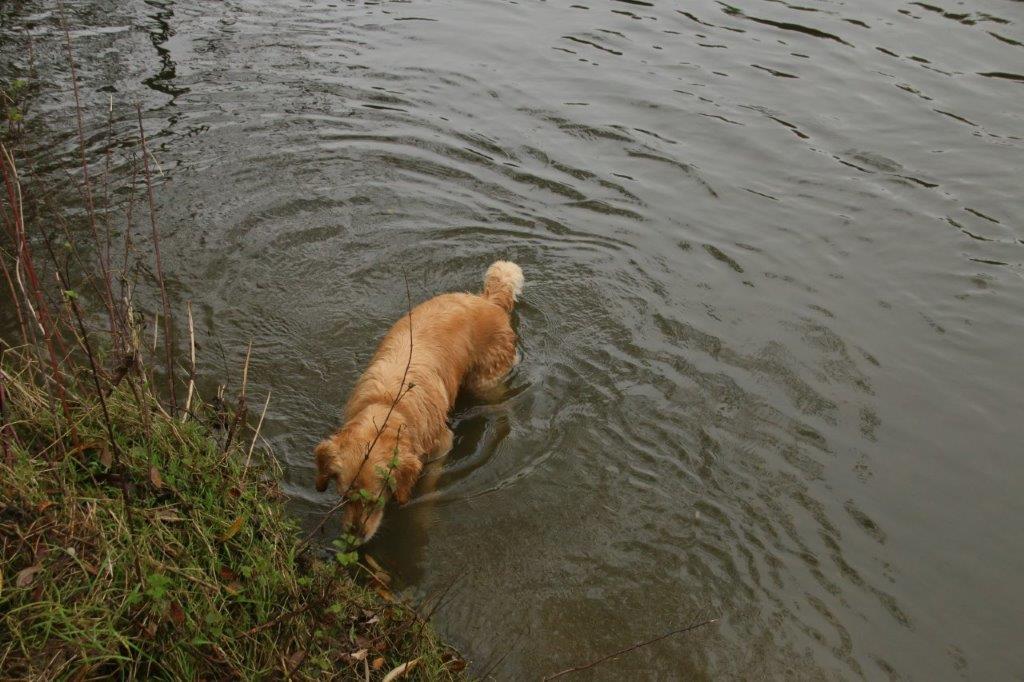
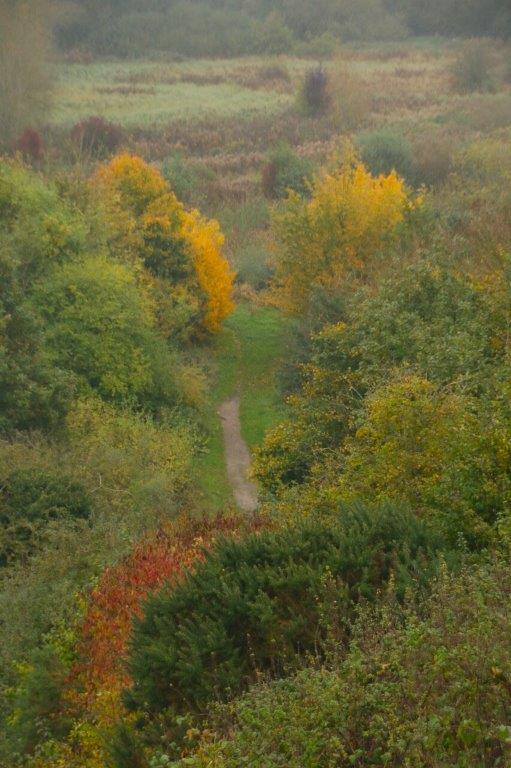
11th October – First Frost
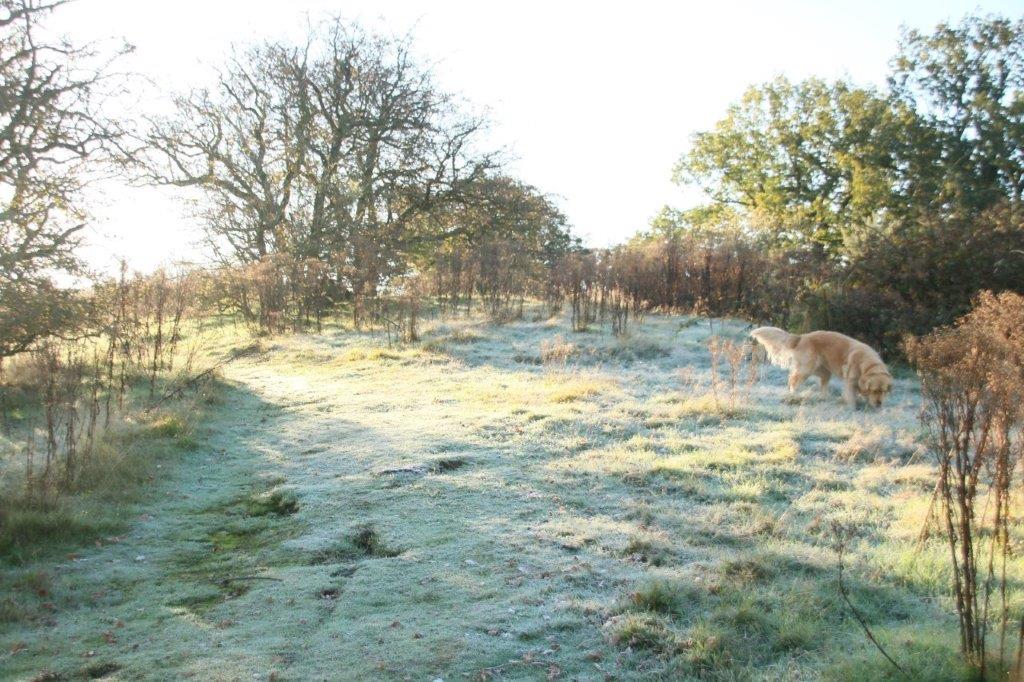
First ground frost this morning, although according to the weather sensor in my garden the air temperature was a degree or so above zero. For the first time I wished I’d worn gloves on my morning dog walk, especially on the top of The Hill, where there was a chilly breeze.
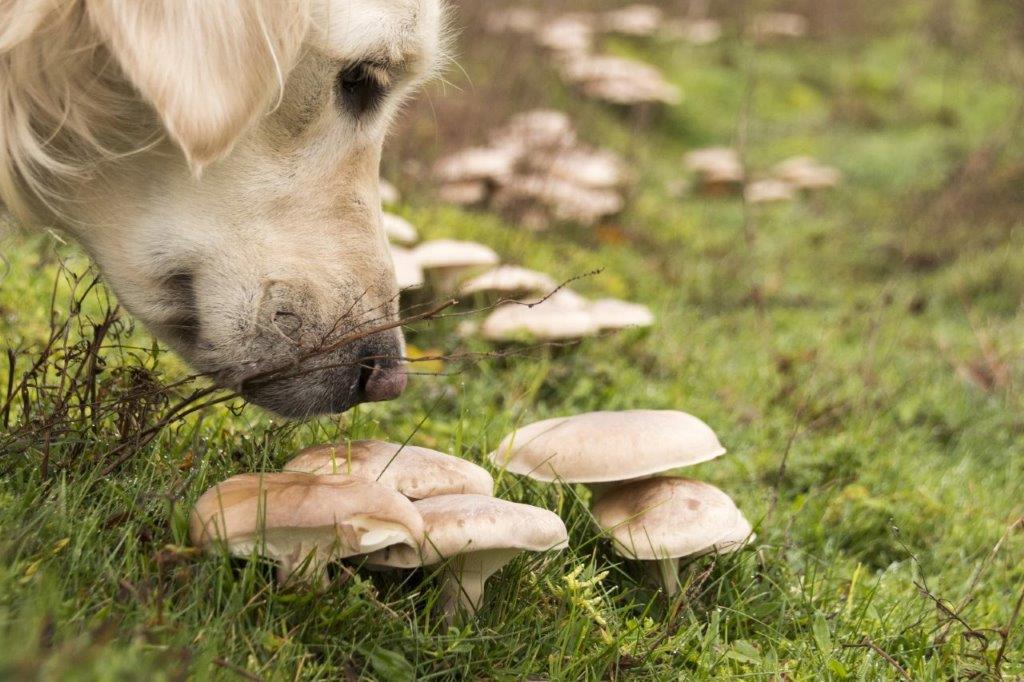
A few mushrooms are growing on the slopes of The Hill, although not as many as on previous years. Sam showed an interest in a line of fungi ascending the hillside, no doubt part of a large ring of mycelium, with this area being the only fruiting bodies that have emerged above ground. Usually at this time of the year there are several varieties of mushrooms and toadstools visible on the hillside – recent warm wet weather may have delayed the season this year. There is no sign of Autumn colours in the trees or hedgerows, with morning sunshine dappling the ground through a green canopy that has changed little since summer
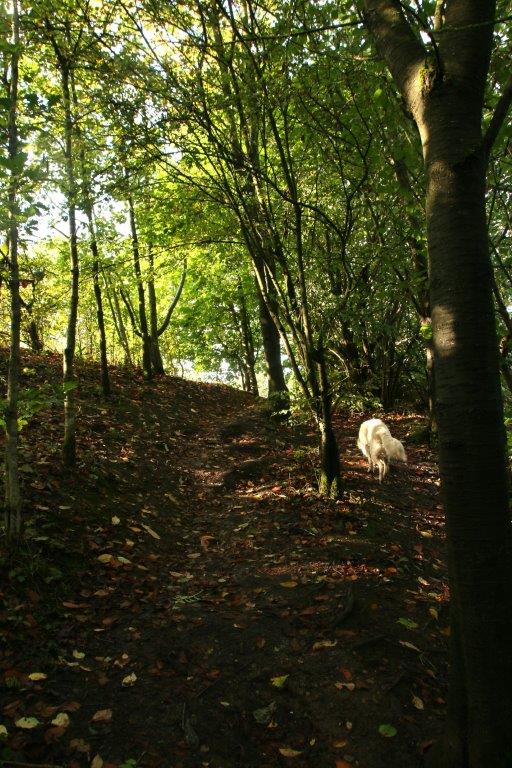
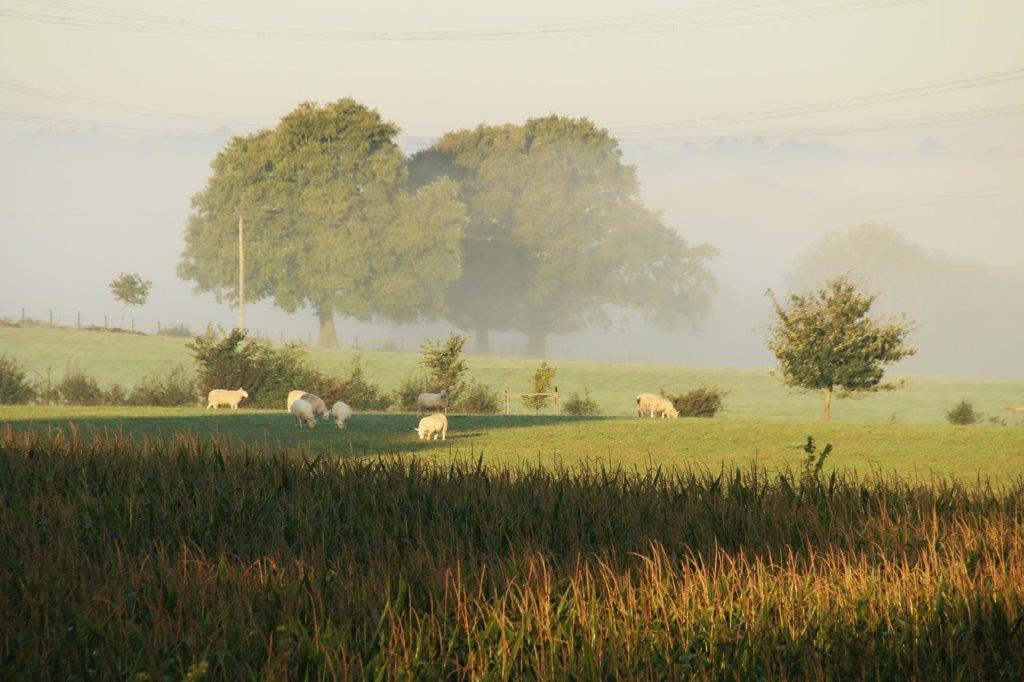
The countryside may not yet look seasonal, but sunrise is noticeably later, and with, at last, rain and grey cloud giving way to clear skies, mornings are cooler, with a hint of early mist over the field opposite our home, where the maize crop has yet to be harvested. The sunshine is still strong, and pleasantly warm away from shadows by the time that we set off on our walk, with the mist long gone.
28th September – Changing of the season
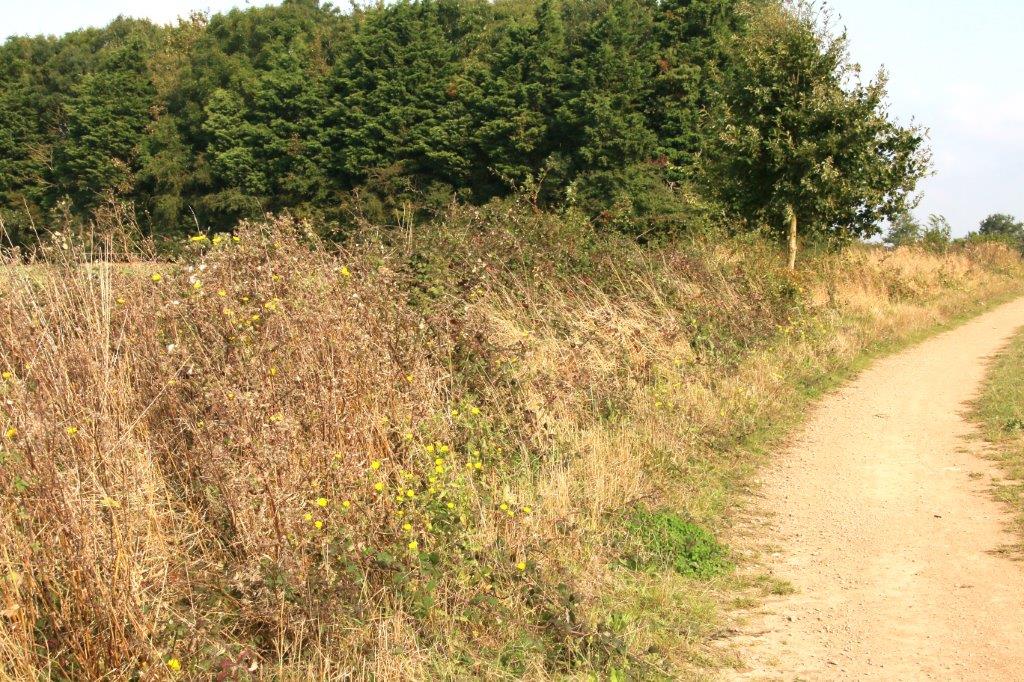
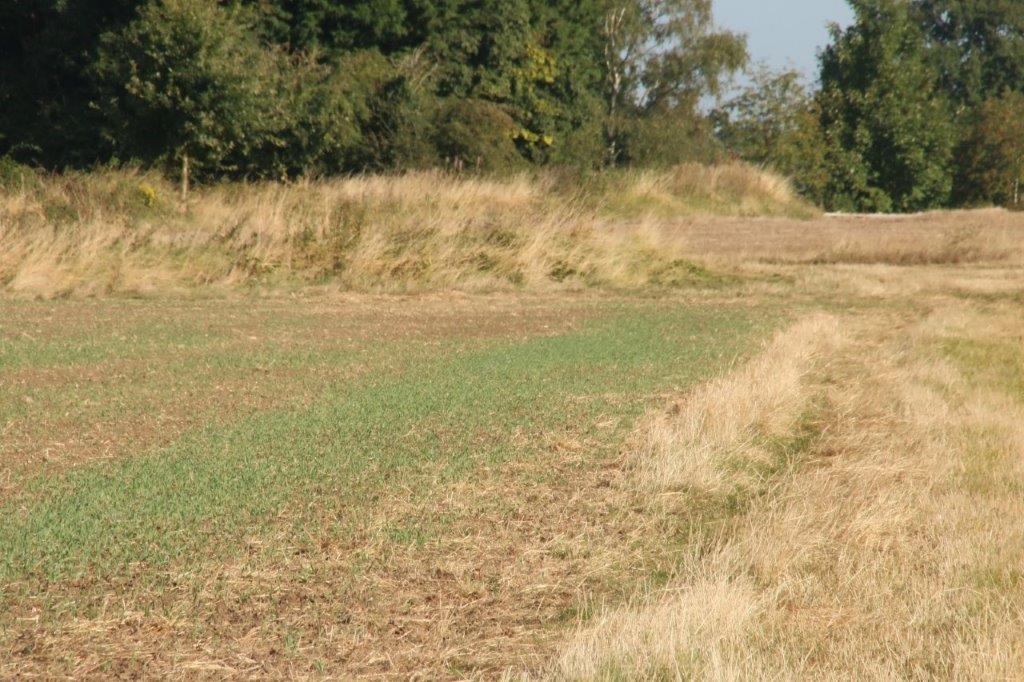
By whatever definition is used, Autumn is now definitely with us, and the change of season came with a change of weather. Until a week ago the ground was dry, despite occasional rain. Hedgerows looked tired, more like late summer than early Autumn. Despite the dry weather, green shoots of crops sown a few weeks ago have sprouted, cereal seedlings giving a green sheen to the dry soil. The field behind our home has been sown with rape, individual plants, naturally looking like small cabbages, since rape is part of the Brassica family.
In contrast to these young plants drilled, or sown, after the traditional harvest, we have maize, sweetcorn, in the field on the other side of our lane, which will be harvested in October. The cobs will be used for animal feed.
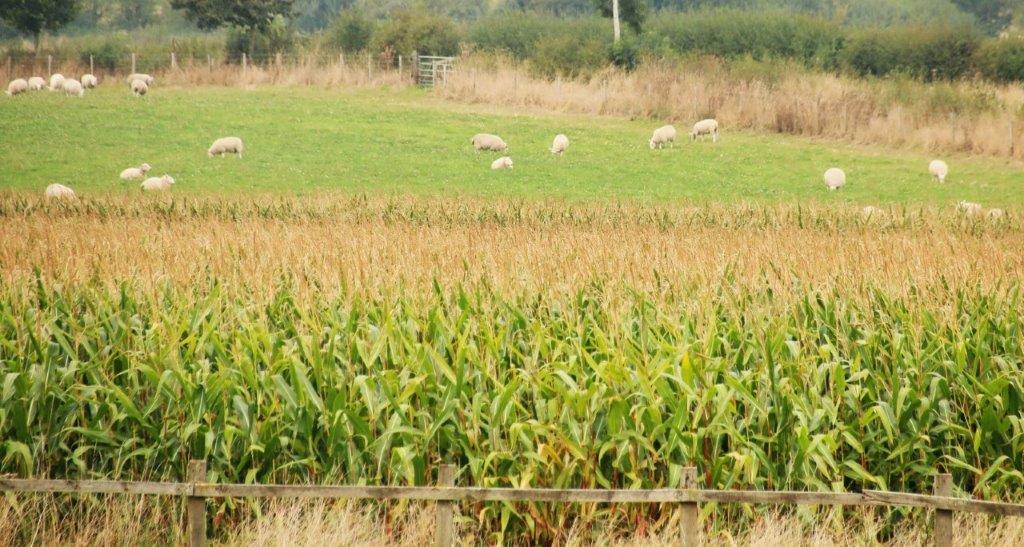
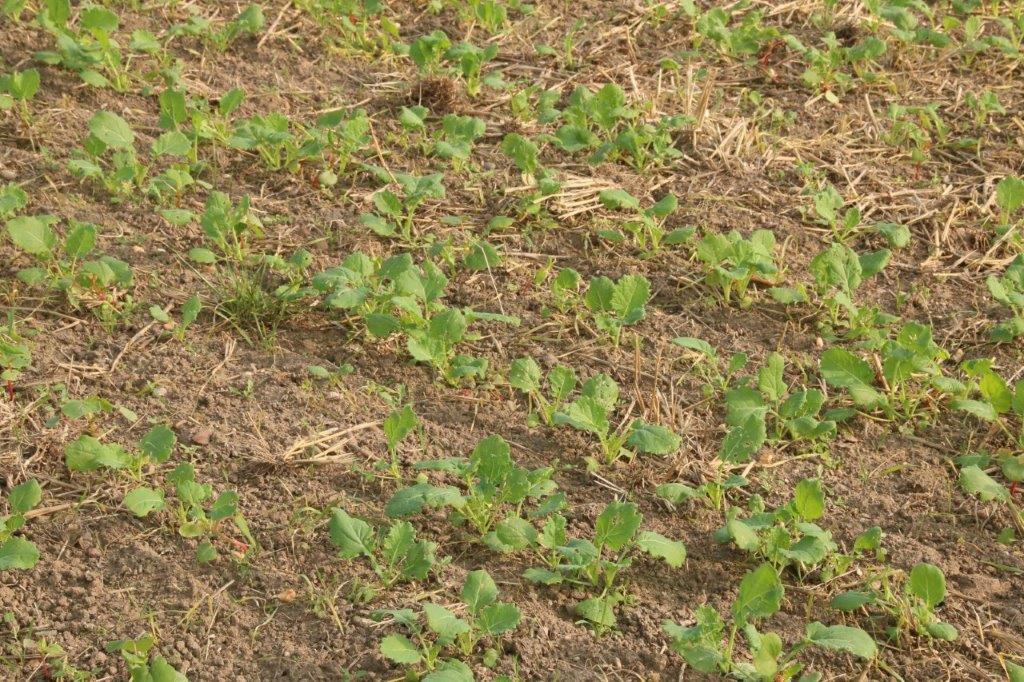
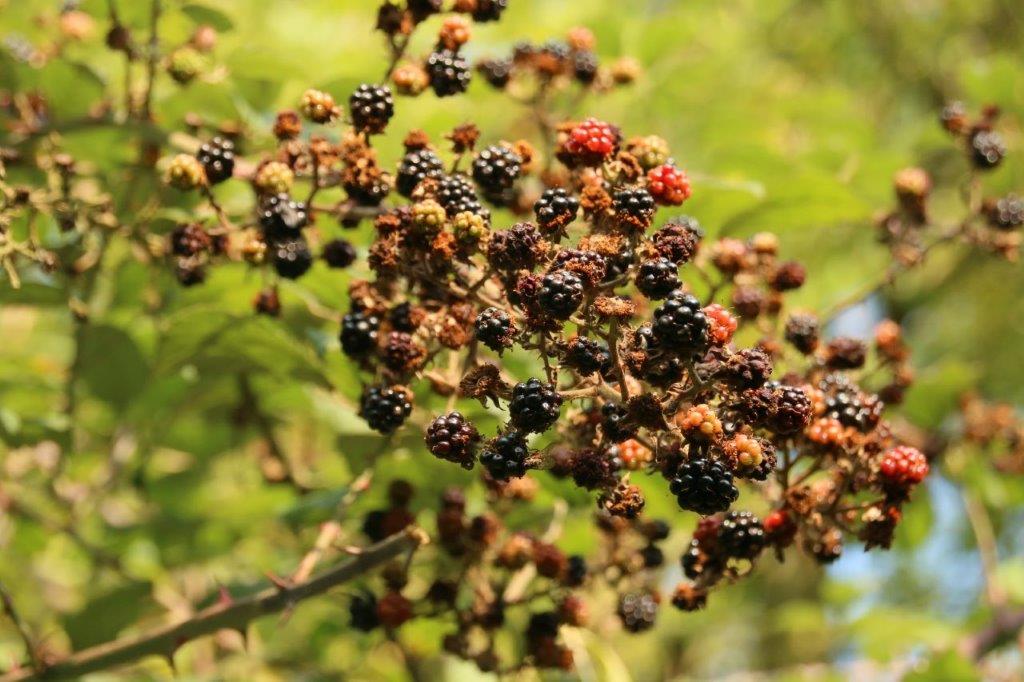
Hedgerow plants are also going to seed, with the wispy seeds of willowherb dominating what is left of the flowers, and blackberries, the fruit now dry, dropping to the floor. Sloes are still ripe and moist and will stay plump, with just a grey sheen, until harvested by passers by or birds. Traditionally sloes, to flavour Sloe Gin, are picked after the first frost, but in these days of climate change it may be after December before the first frost, by which most accessible fruit will have been eaten be birds.
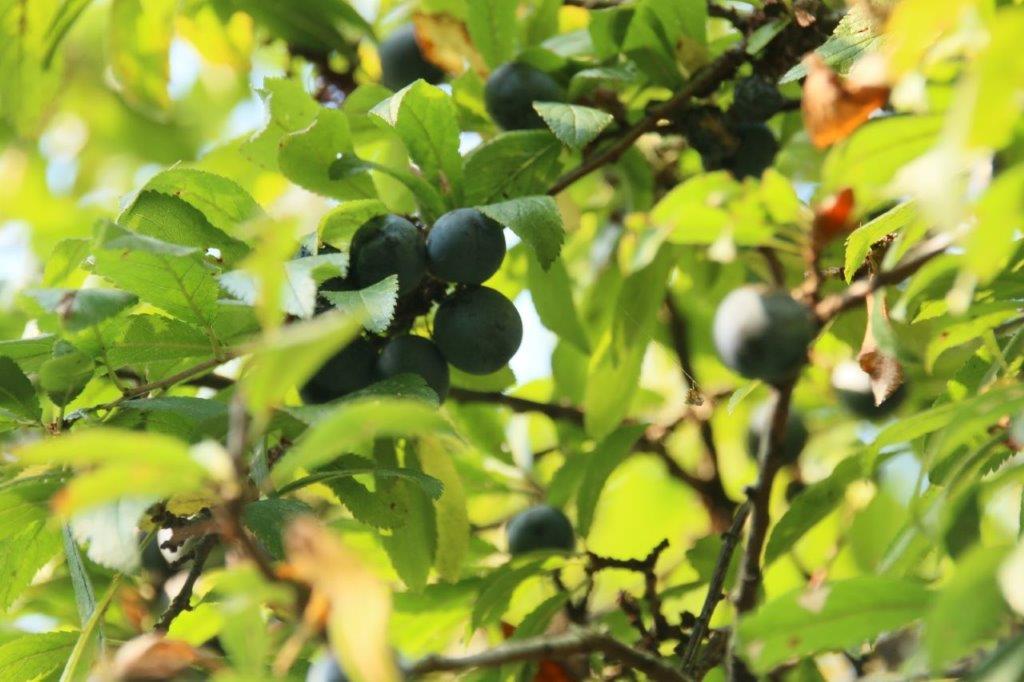
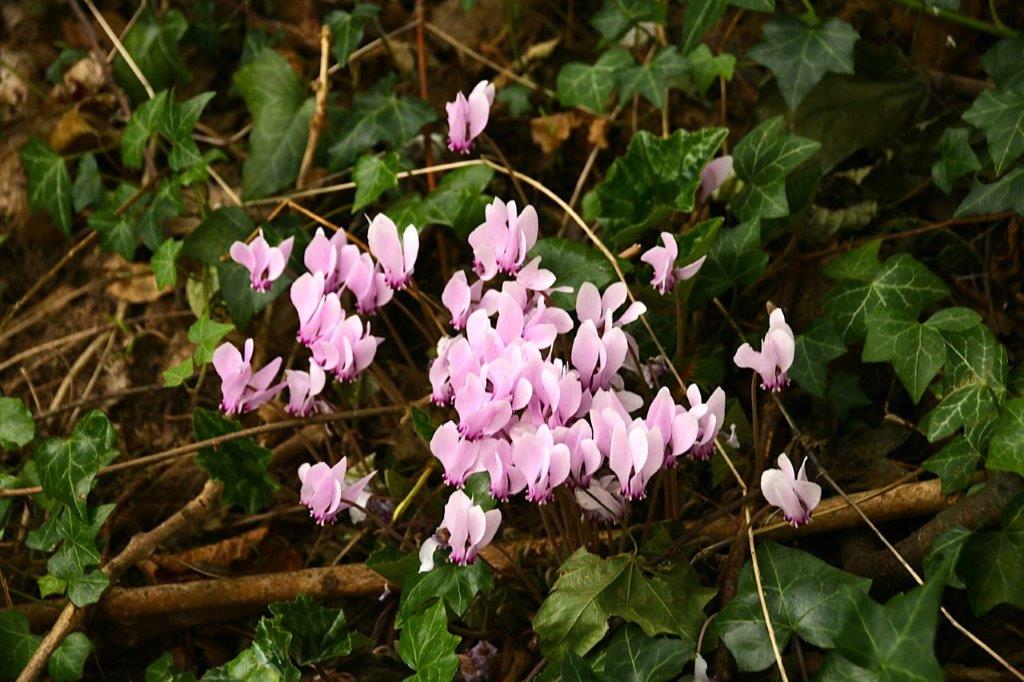
Despite these signs of a season ending, there is cheerful colour alongside the tree-lined path down to the village, where Autumn Cyclamen, a garden plant that has successfully established along this path, possibly planted by hand some years ago. It has now spread into the adjacent woodland.
For many years a sand quarry was excavated at the far side of the shallow valley behind our home. This is now exhausted, back filled with the original soil “overburden”. One resulting field is now in its second season of growing cereal crops, and the remaining land has been sown with various crops, mostly grasses. This large area of cereal and grassland has now been subdivided by new fencing, a significant length of quality poles and sheep-fencing, installed by a single contractor over a week or so. The land is owned by a local developer, as a “land bank” rather than for building, and the quality of the fencing is better than usually seen on farmland.
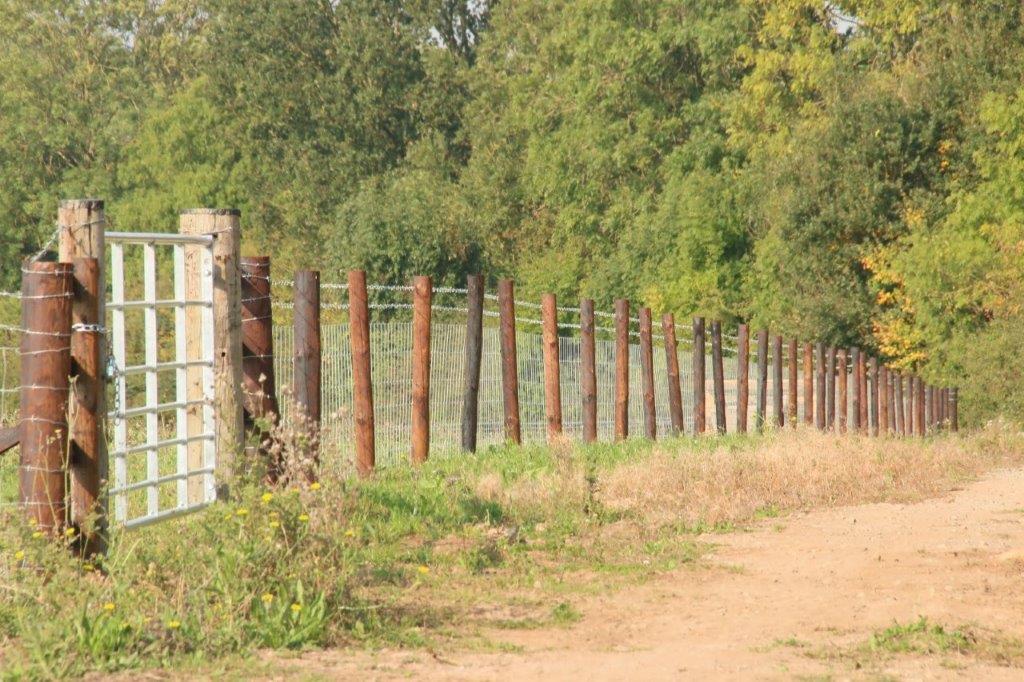
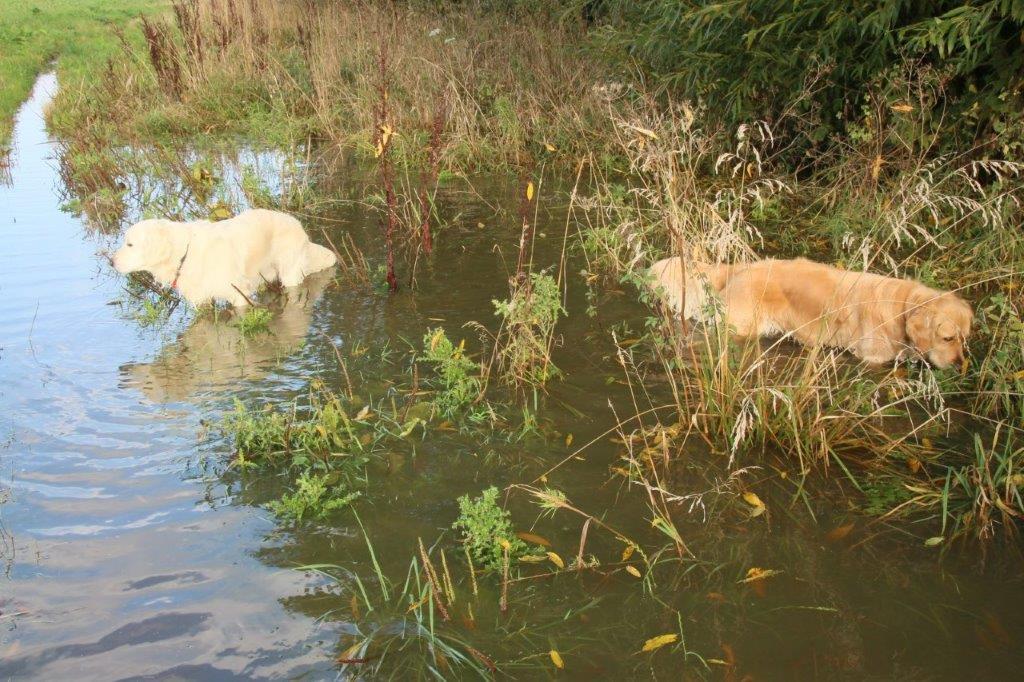
We had rain last week, heavy and thundery, lasting for hours, falling onto parched earth. Flash flooding of roads was inevitable, but fields, although soggy and with standing water, were nowhere near as flooded as would be expected after prolonged rain over winter. The dogs enjoyed splashing through the water in the “sheep field”. The sheep have been evacuated in the last day or so, maybe as already planned, or maybe because of the potential for worse flooding in the riverside meadow. Markers have appeared for as local running race, the route including this field and surrounding footpaths, which may become churned up with mud. We may have some muddy dog walking routes over the next few days
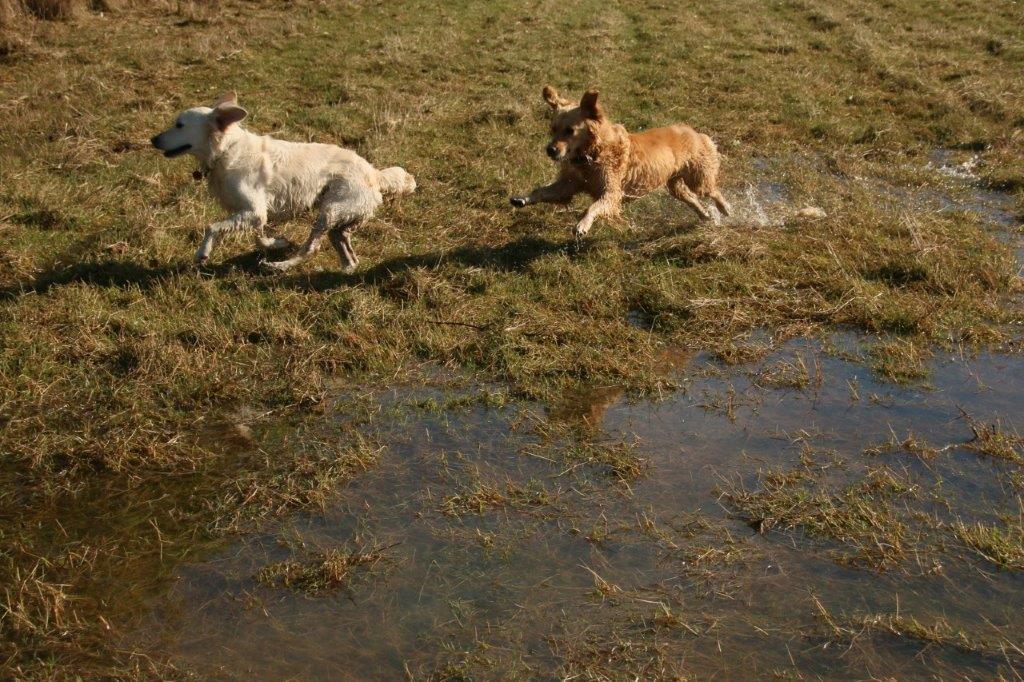
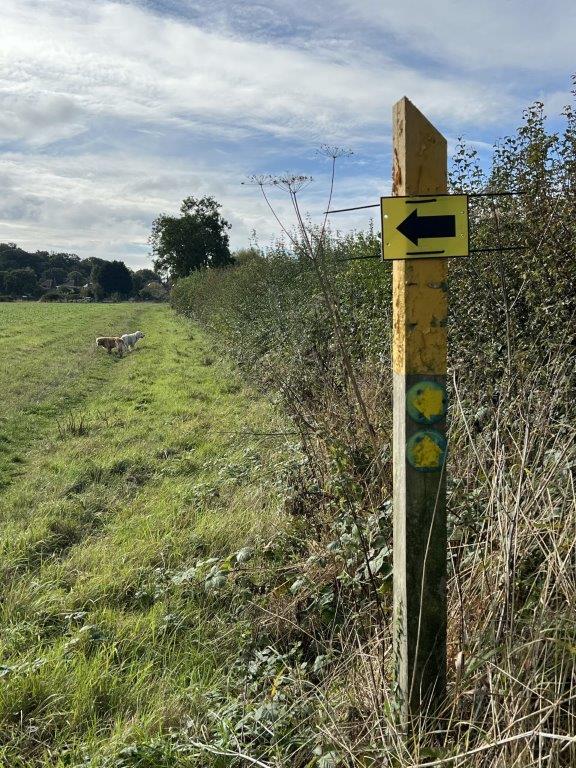
1st September – Looking sheepish
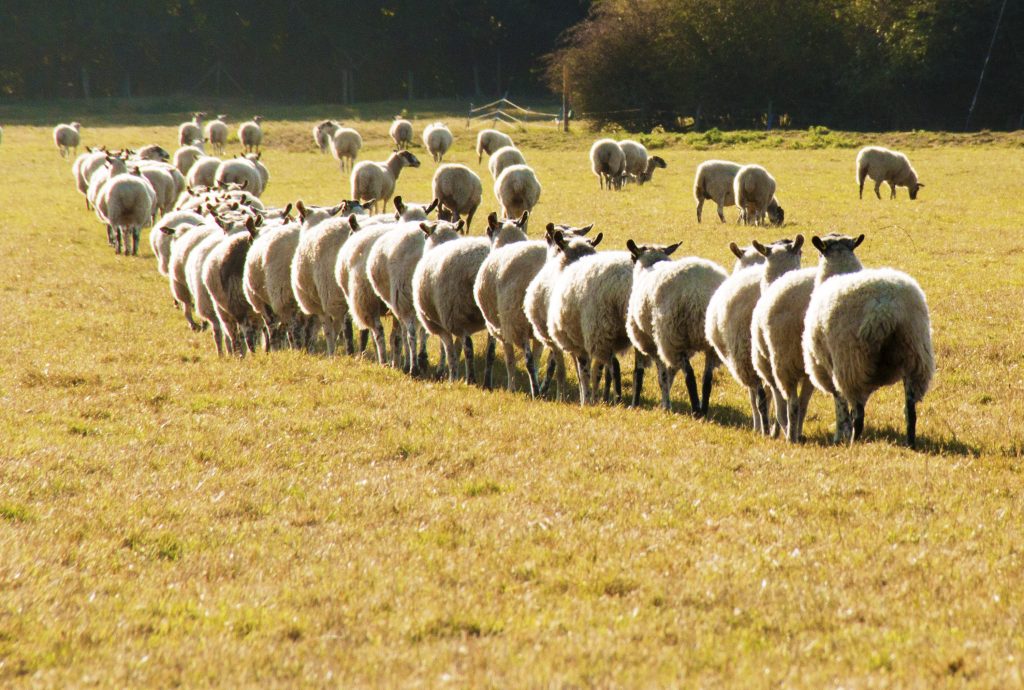
Dog walkers call the riverside pasture at the bottom of the shallow valley behind our home “The Sheep Field”, although in practice the field is only occupied by sheep for two or three months of the year. In Summer a hay crop is grown, and in winter the field floods and so cannot be used for livestock. After the hay crop was taken a month or so ago we knew that the presence of sheep was imminent when we saw fresh tyre tracks compacting the grass around the field edge – the farmer who rents the field for his sheep had been driving around checking the fences. Sure enough a day later we crossed the bridge over the river and saw sheep, fortunately before letting the dogs into the field. This is one of two enclosed fields around us where dogs can run and be safely fenced in, and now both have sheep in them. Fortunately, both of our dogs have a good recall, and can be off lead anywhere away from a road.
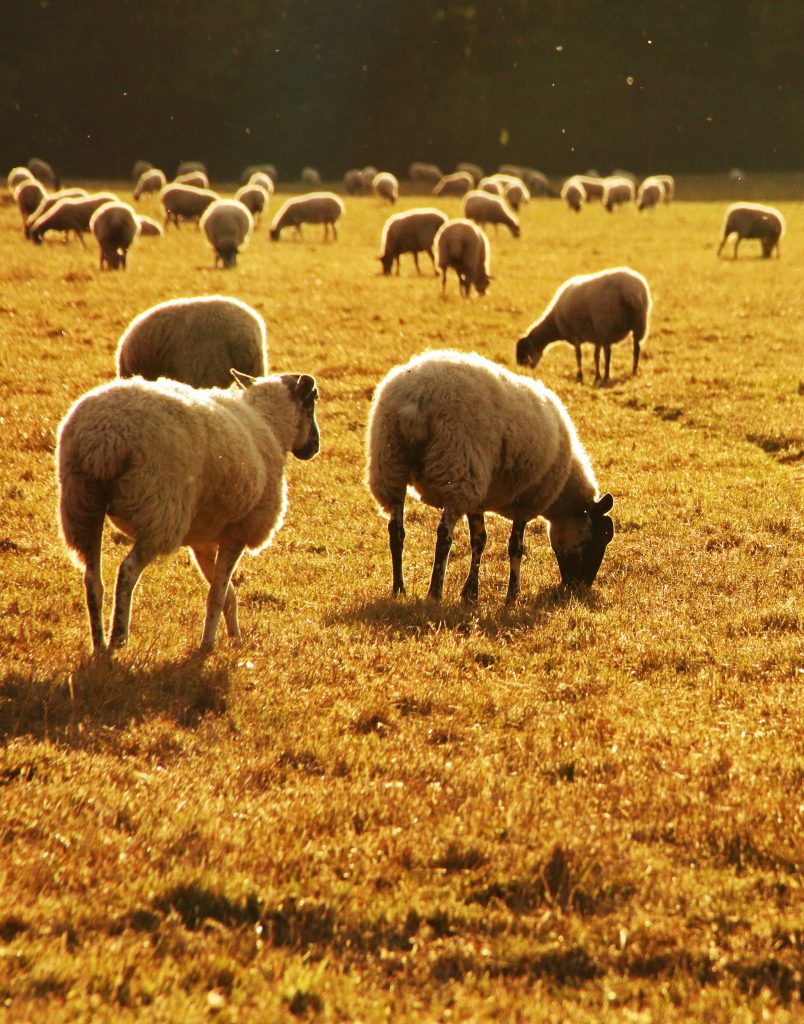
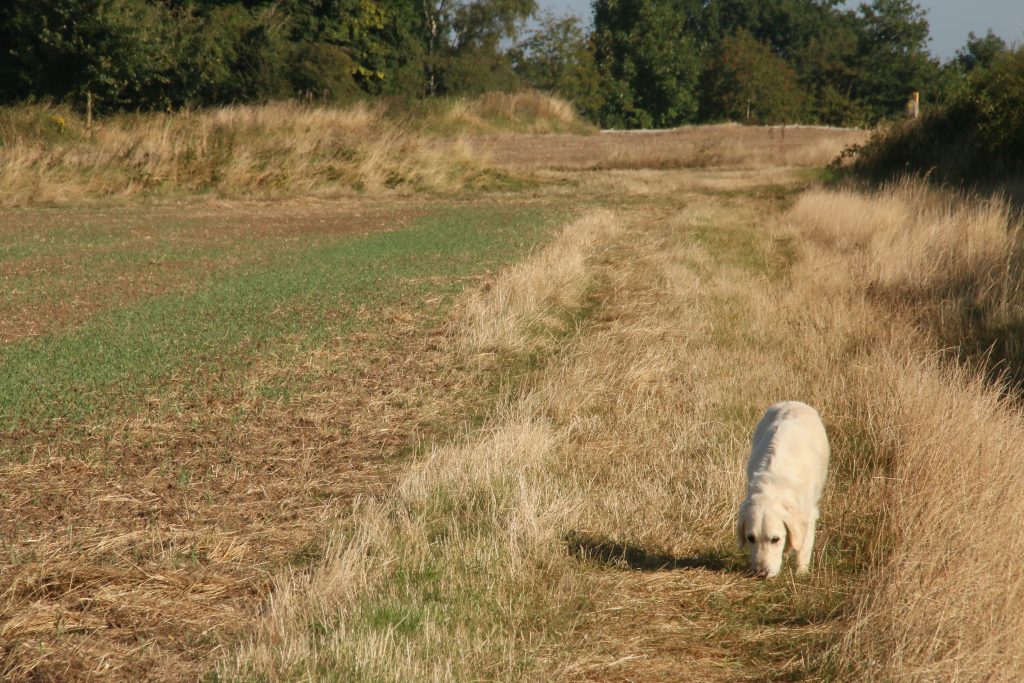
We crossed the sheep field, carefully putting dogs on leads as we did so (although I don’t think that either would chase sheep), and crossed the stile, with adjacent dog gate, beyond, and into the next field, an arable field. Although it has been only a few weeks since it was harvested, disked (shallow ploughed) and drilled (sown with seed) the field is already patchy green with emerging seedlings. Too early, with my experience, to identify next years crop, although I certain that it is a cereal rather than oil seed rape or beans.
Away from the fields we can walk along the path that hugs the edge of the quarry, following the top of an artificial ridge, with trees growing down the sides, and long grasses higher up allowing views over the surrounding countryside. Recently a memorial has appeared at the highest point, an large granite boulder placed there by the quarry, with a plaque commemorating a local gentleman who clearly had links with both the quarry and village. Descending steps we returned along a lower path, branching off around the far side of a wildlife pond, where we passed another memorial – this time a seat placed in memory of a lady from the next village, who I believe had links with the local school and so was known by many. The seat overlooks the pond, a peaceful spot for remembering a loved one.
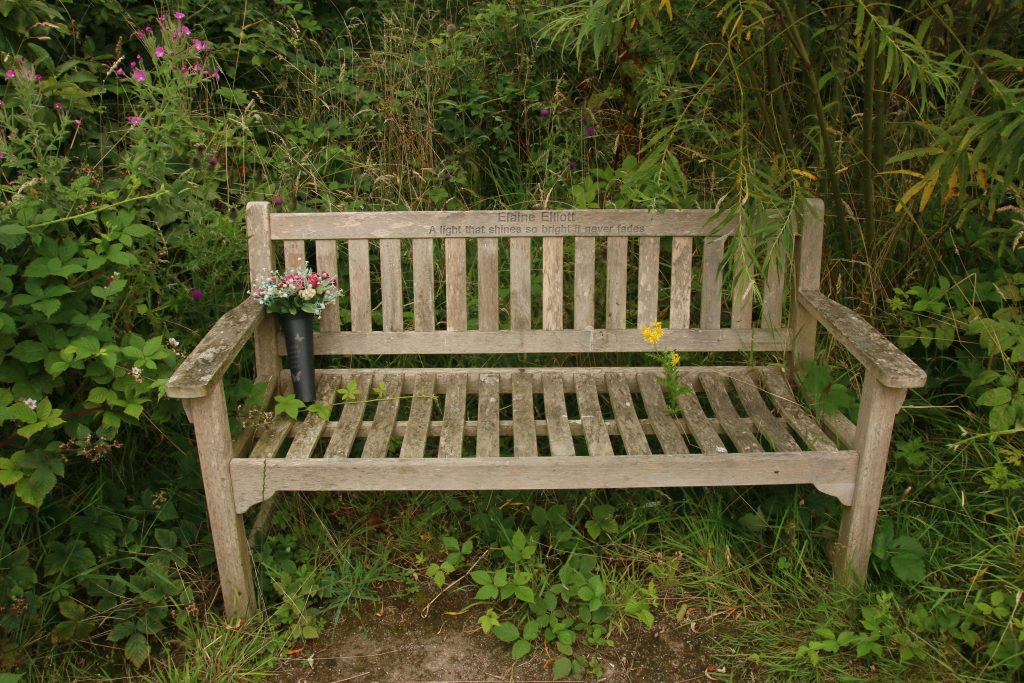
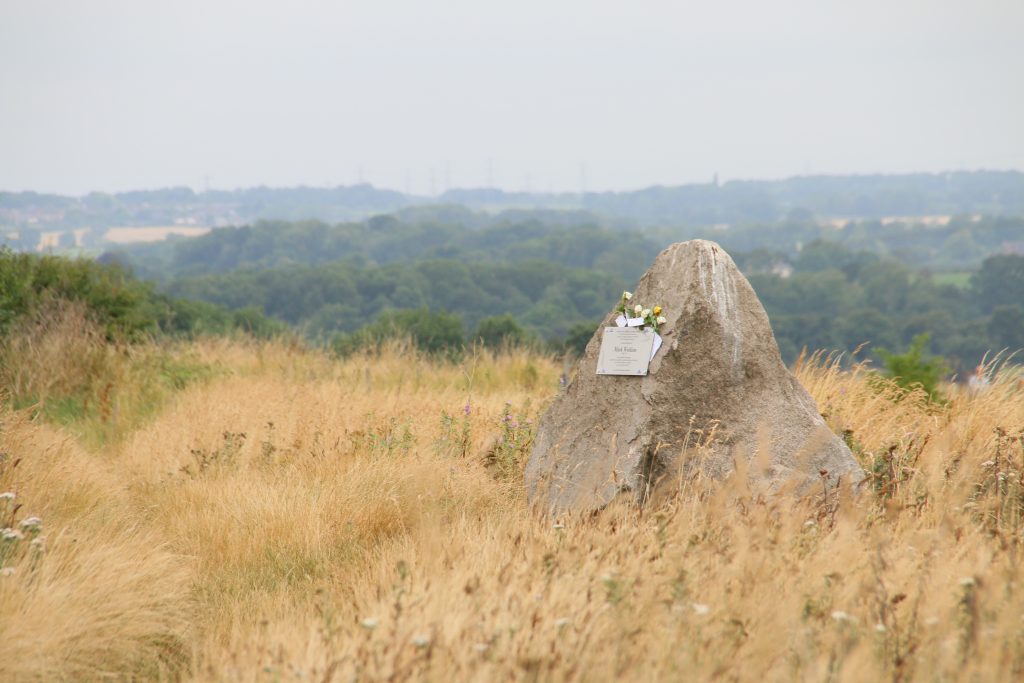
20th August 2020 – Country smells
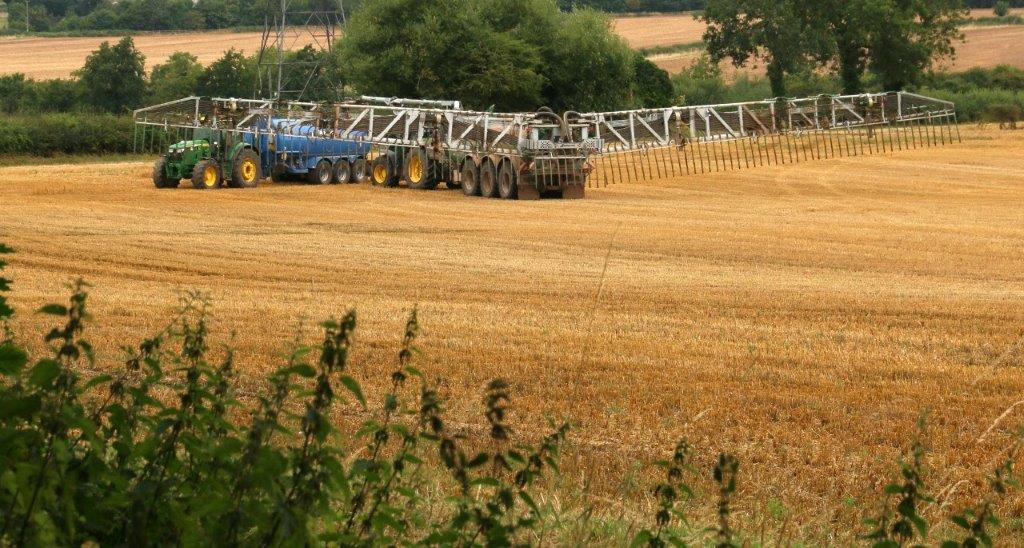
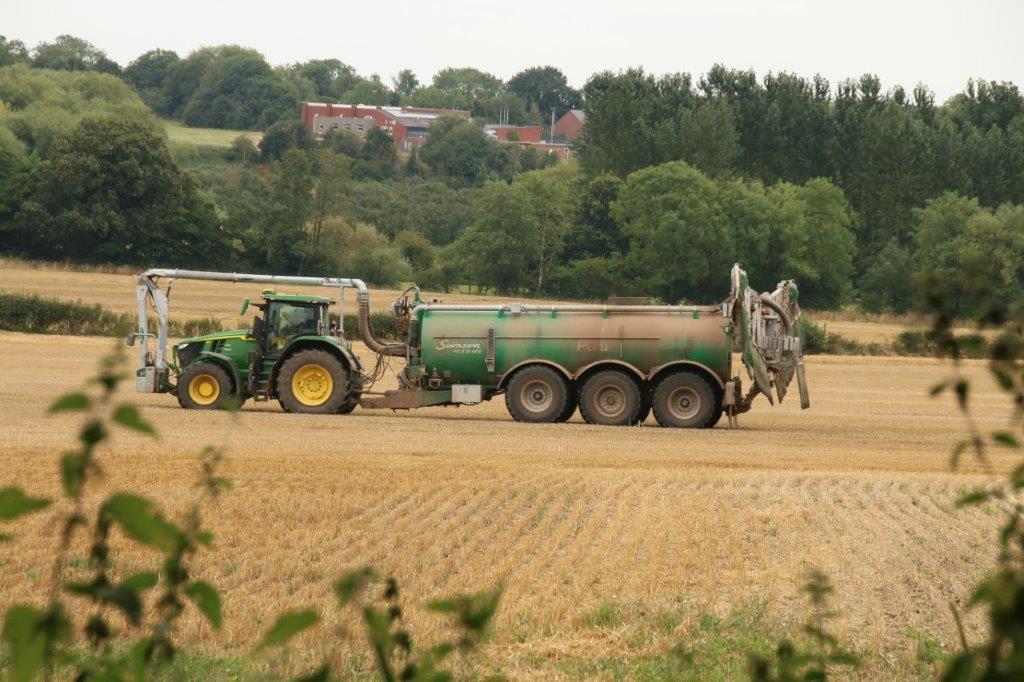
After the harvest the ground is prepared for drilling (sewing) the seeds of next years crop, either sown in Autumn (“Winter” cereal) or in Spring (the more logically named “Spring” cereal). This year, for the first time in a few years, the ground was sprayed with slurry, waste from indoor intensively reared livestock, the slurry sprayed from a tractor-towed tank, refilled from smaller tanks constantly arriving at the field to top up the larger tank. Transferring the slurry seemed to take longer than the actual spraying. In the past the slurry has been injected just under the soil, but this year it was sprayed onto the soil surface, puddling around the hard ground at the field edges.
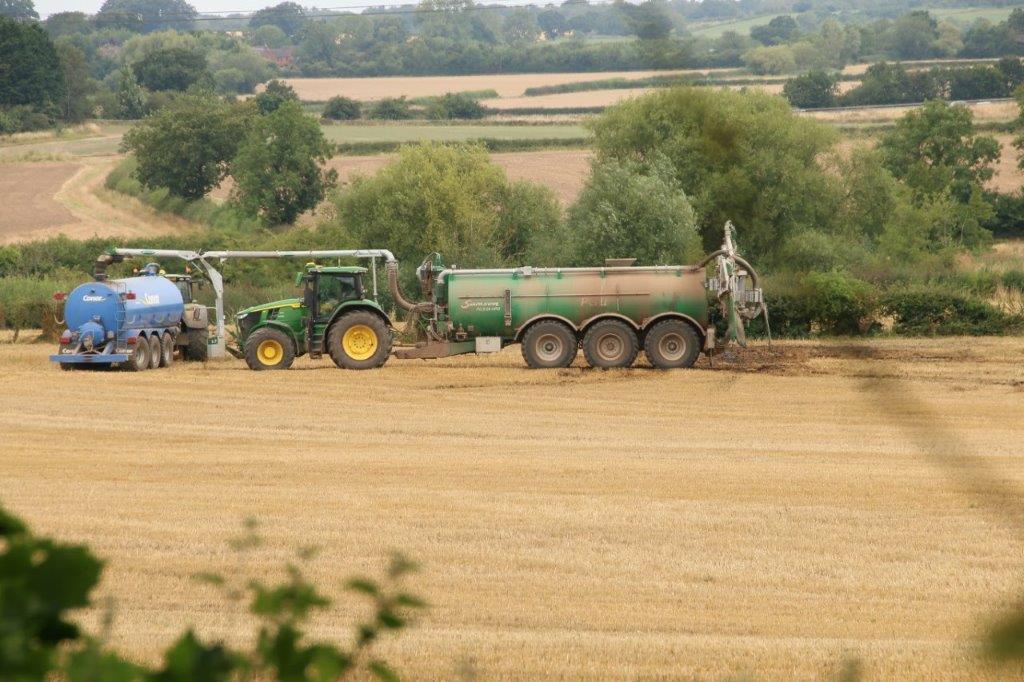
Unfortunately, the wind blew from the field to our home – the odour was not strong, but not pleasant, and we were glad that we were going away the following day. The slurry is disked, shallow-ploughed, in, the discs just turning over the stubble, but this didn’t happen until the day we returned from our holiday. I always think that the first time that fields are ploughed is a sign that the end of Summer is nigh.
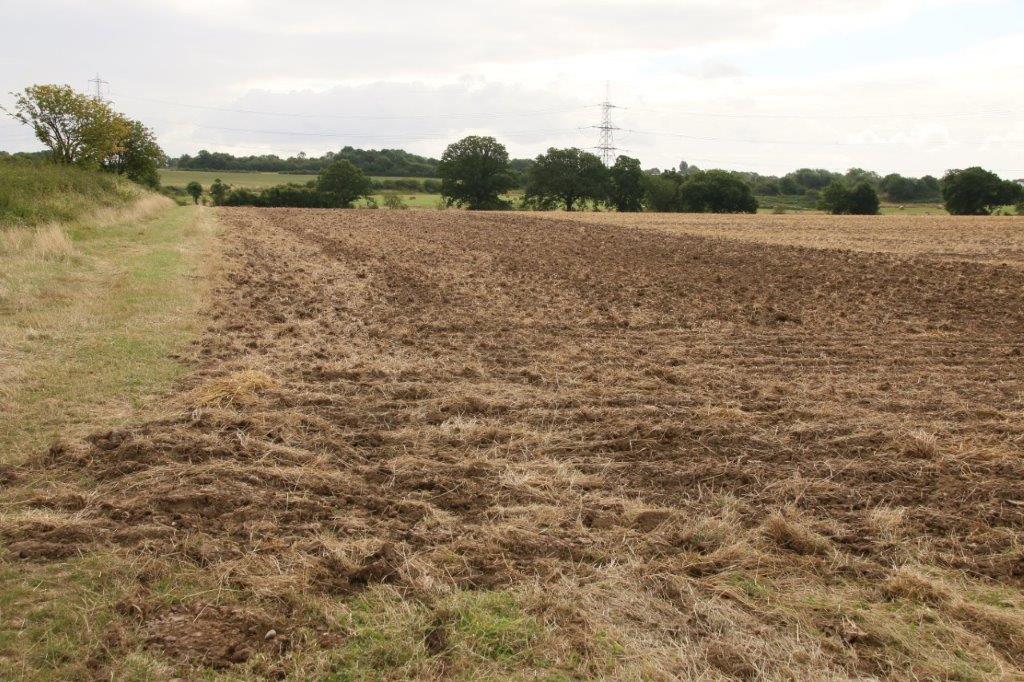
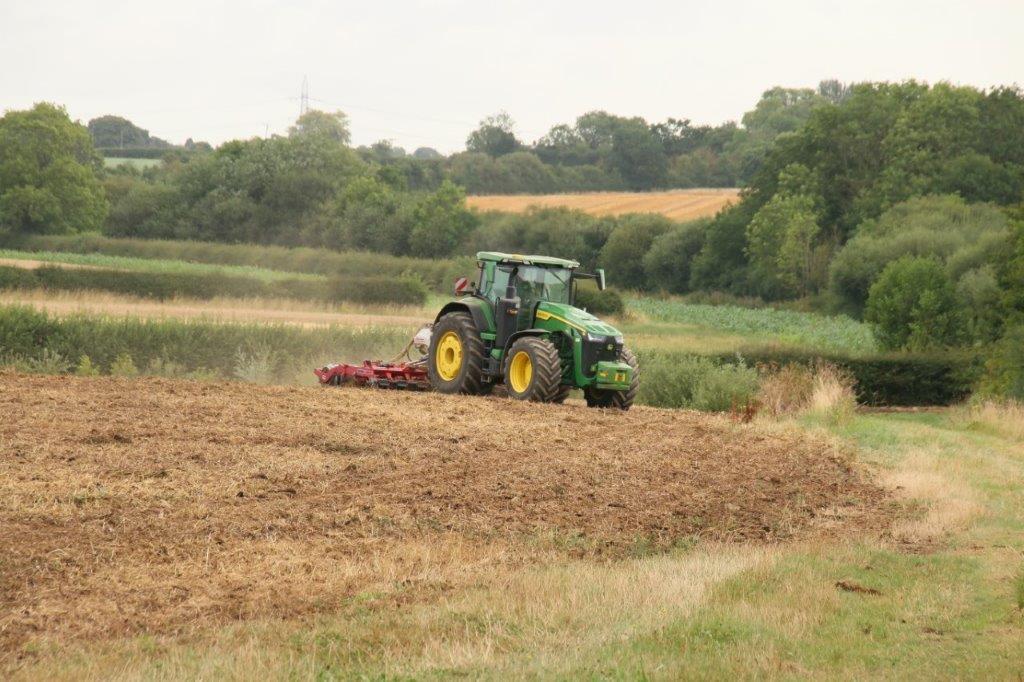
Whether it is slurry spraying or disking, there are times when it is best to avoid field footpaths. Our dogs are well trained, but I have no doubt that they would happily roll in the “perfume” that has been generously sprayed up to the edge of the path, and in any case dogs off lead would be an additional hazard for the tractor driver to be aware of. Instead we walked up onto Croft Hill, as a kestrel swooped over us to land on a nearby branch, eying up the grassland for small rodents
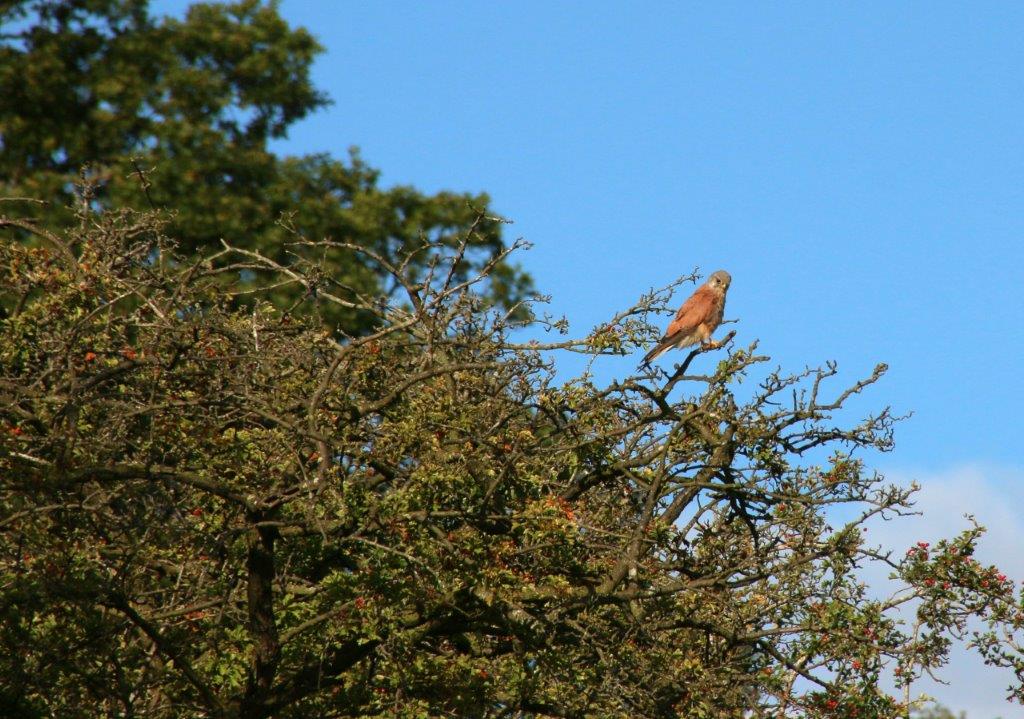
8th August – Harvesting
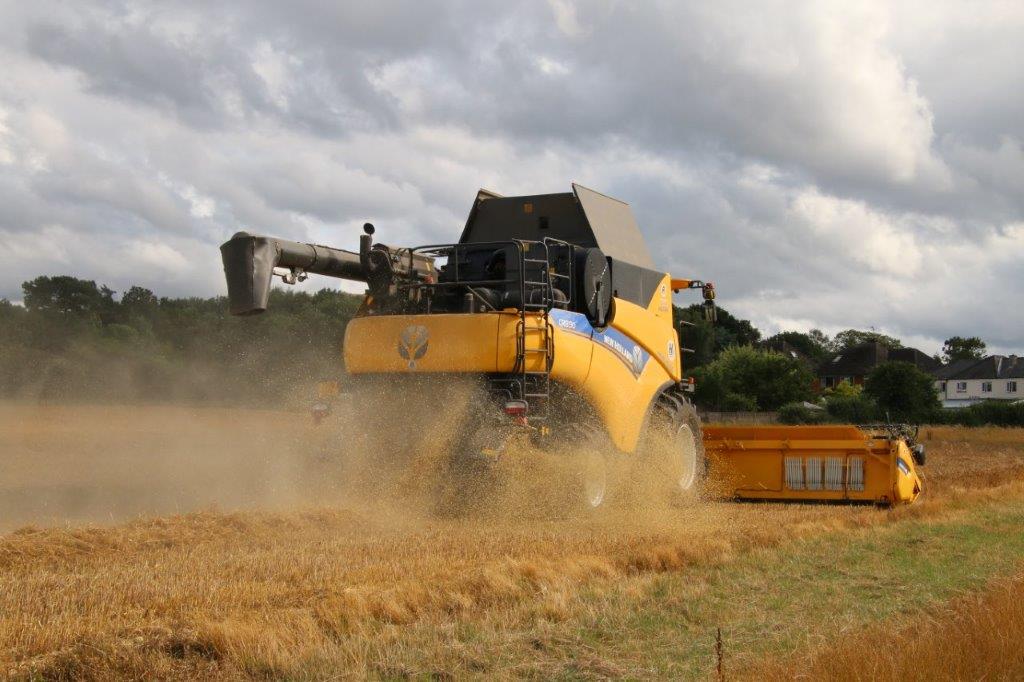
The two fields behind our home has been harvested, or combined, today, 5 hectares, approximately a third of a mile in each direction, turned from standing wheat to stubble in a working day. Apart from occasional days of cultivation, crop care, generally just involving just one tractor, the field is peaceful for 364 days a year, and then for one day it is a hive of activity, almost industrial in scale.
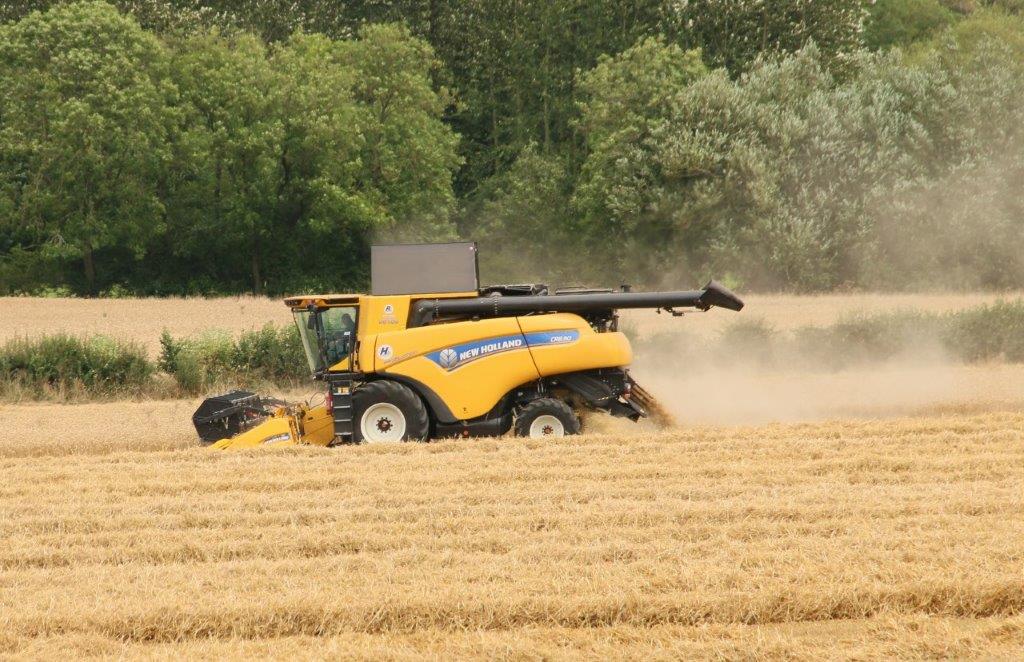
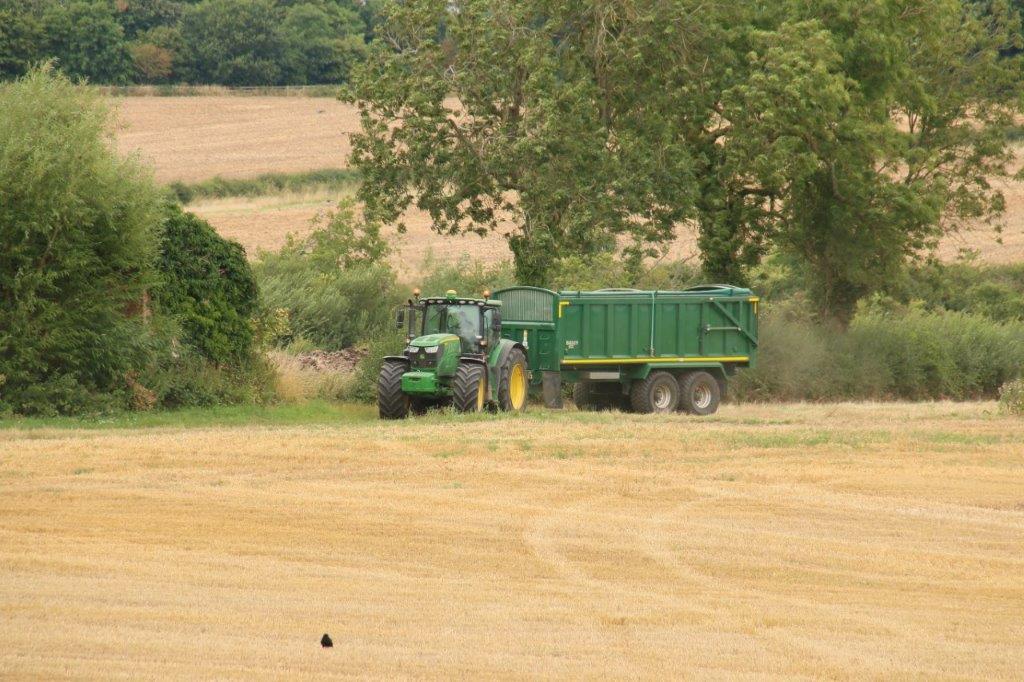
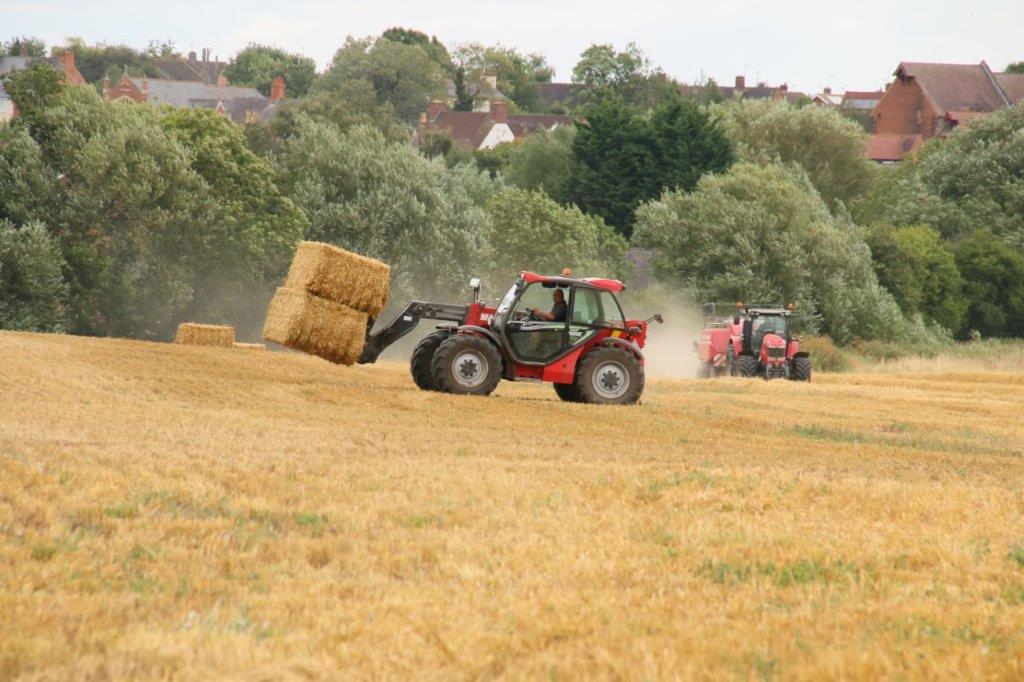
The vast combine harvester, noisy from numerous fans and belts, cuts the wheat, separates and stores the grain, and spews the straw, wheat stalks, in a line out of the back, together with a lot of dust into the air. When the tank is full of grain it is ejected to a trailer, drawn alongside by a tractor and taken to the farm for storage and possible drying. To keep the combine working there is a steady stream of tractors and trailers arriving empty, drawing alongside the combine, and leaving full, in practice two or three trailers depending on the distance to the farm.
Meanwhile a tractor pulls a baler along the lines of straw, collecting the straw, compacting and tying the straw into bales, round, or in our case this year, cubes, which are ejected at the back. The bales are collected and stacked by a lift truck, that also lifts the stacks onto a trailer to be removed for sale or storage. Bales are sometimes left on the field to be collected by a purchaser, perhaps for livestock bedding, but until they have gone, the field cannot be cultivated. This year the bales behind us were removed on the same day.
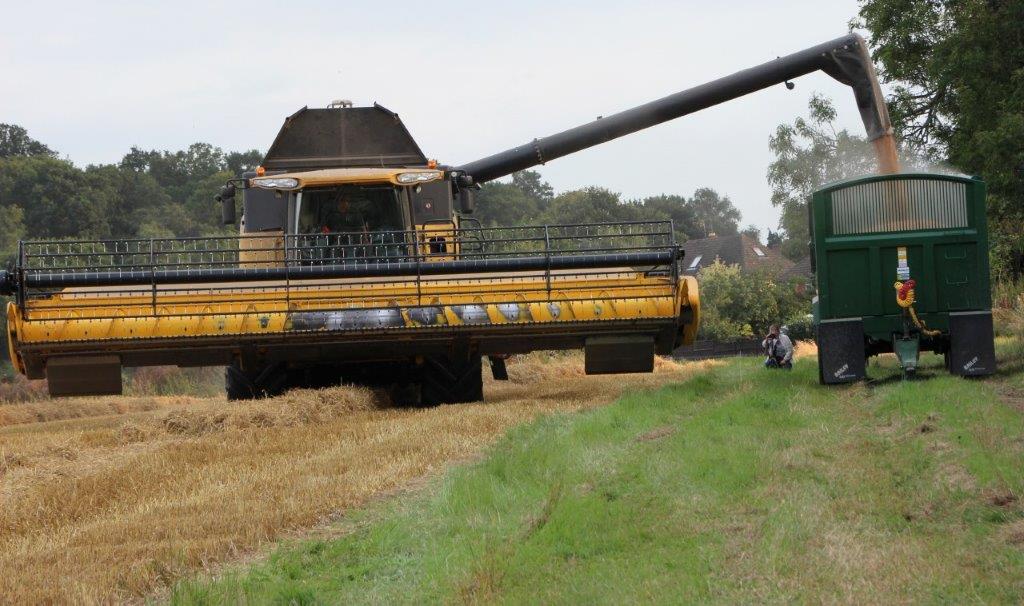
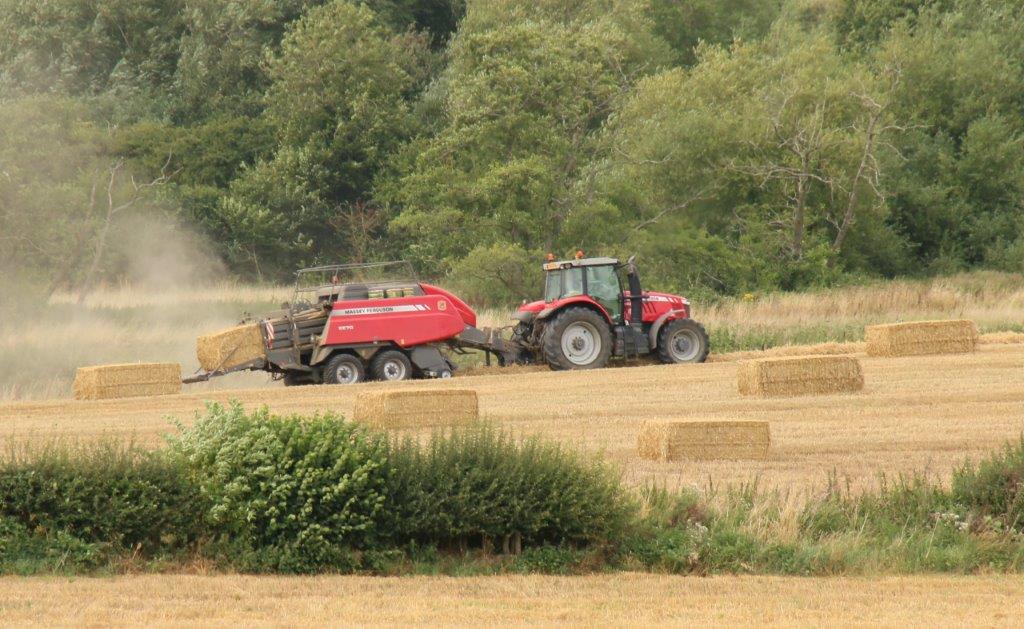
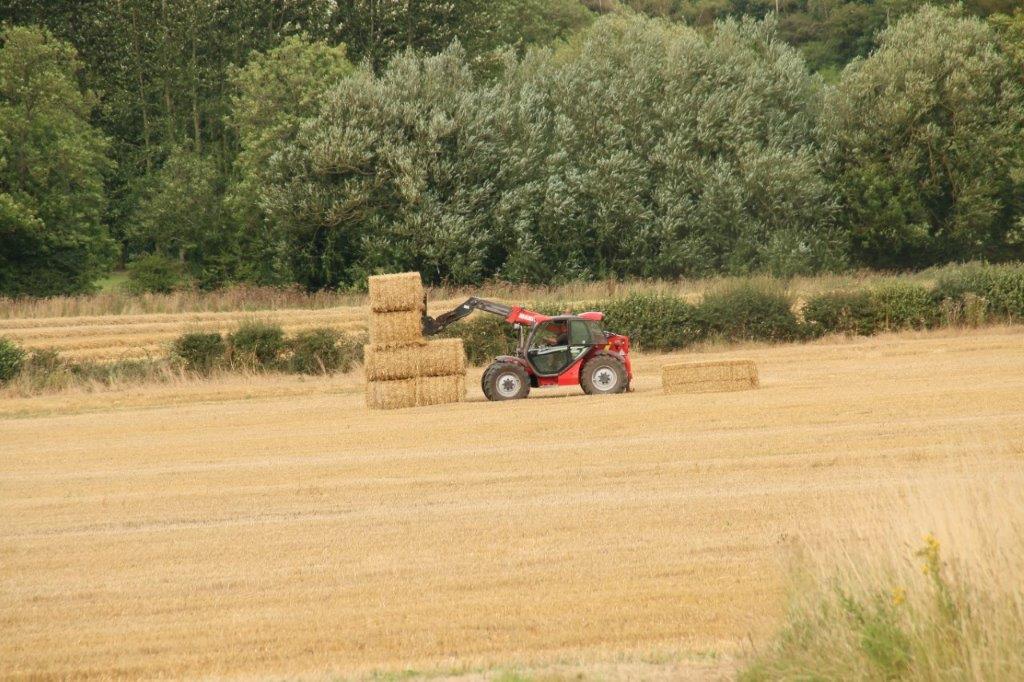
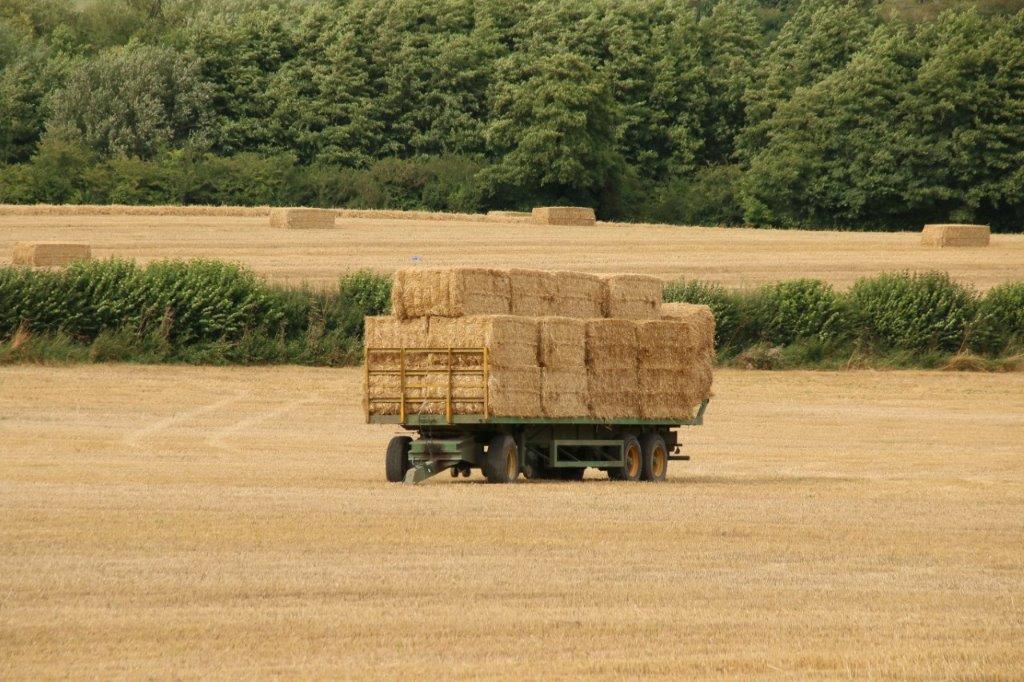
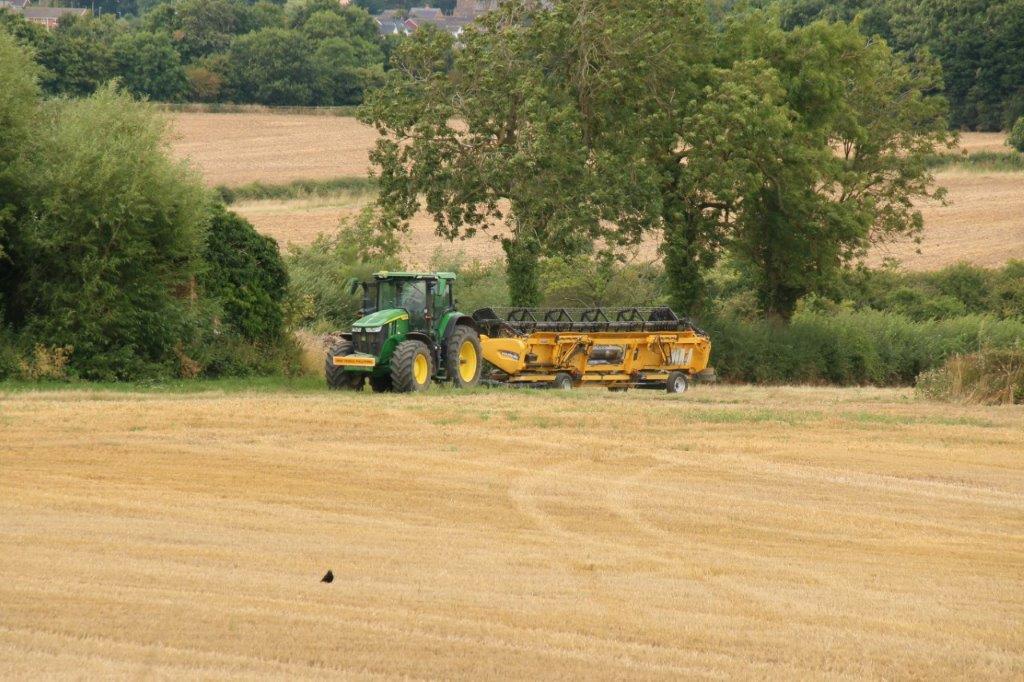
We watched from the bottom of our garden, as the combine circled the field in ever decreasing circles, occasionally stopping to empty grain into the attentive trailers which then headed for the gate. The baler followed, while the small lift-truck buzzed around collecting, stacking and loading bales onto a trailer, to be taken away before returning for a refill. By evening all was done, and the combine cutter bar, too wide to remain on the combine itself when on a road, was detached and towed away, followed by the combine harvester. The field, now stubble was left to pheasants and crows feeding on spilled grain, and a lone hare running across the open ground.
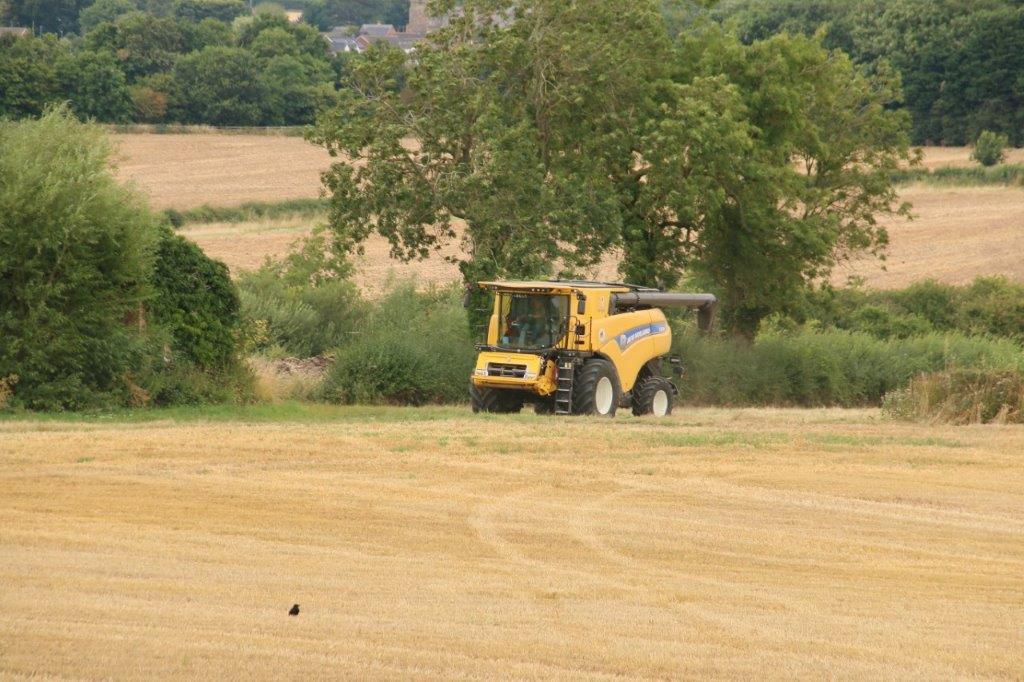
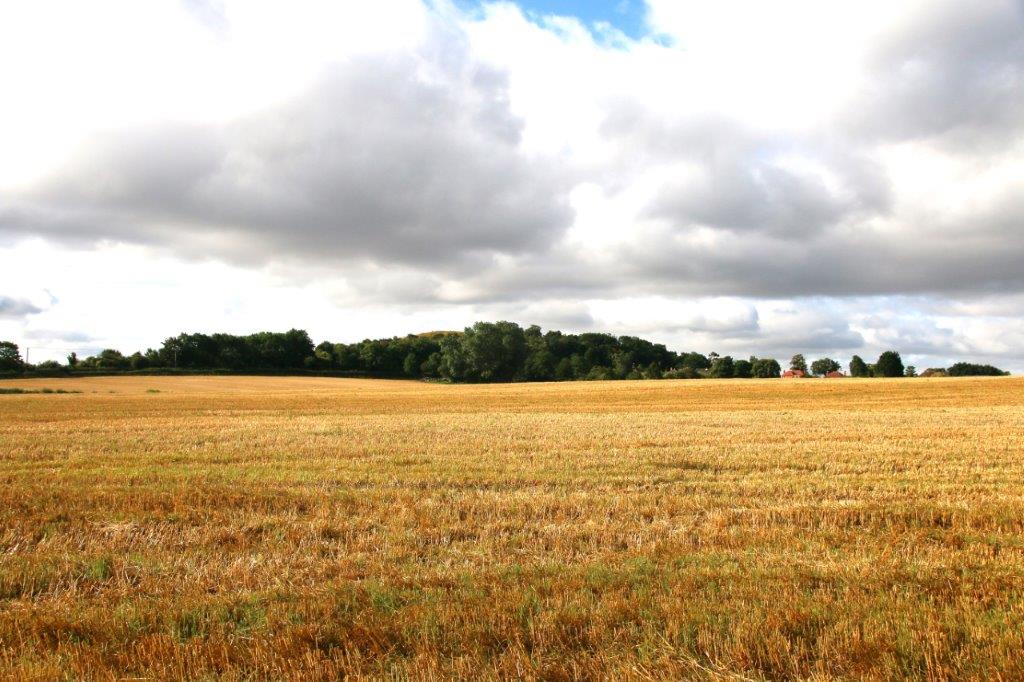
5th August – Blackberry season
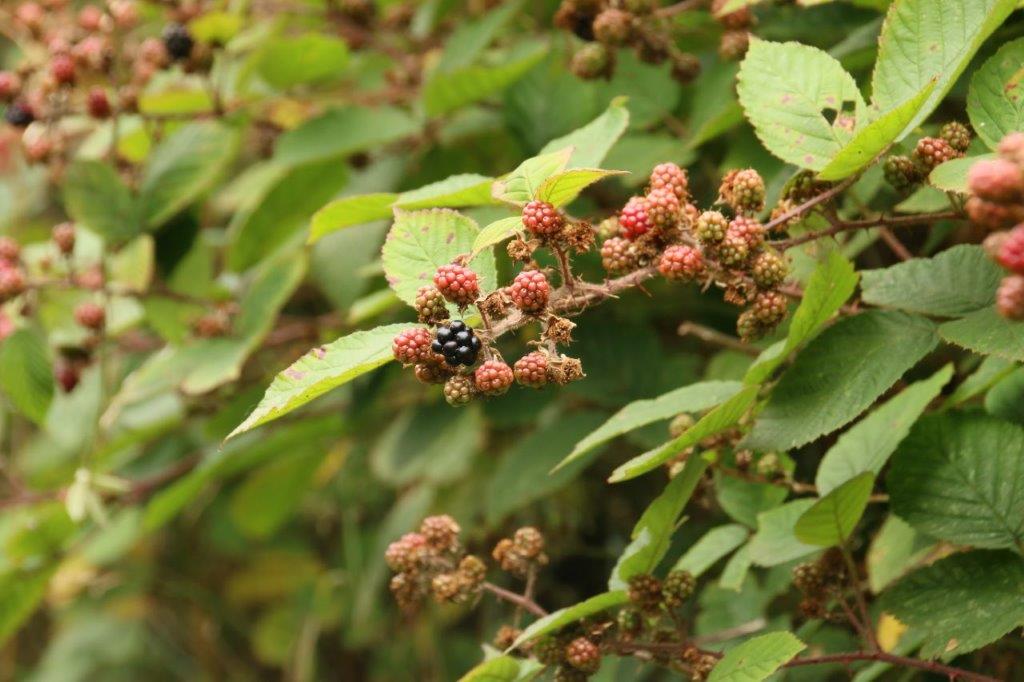
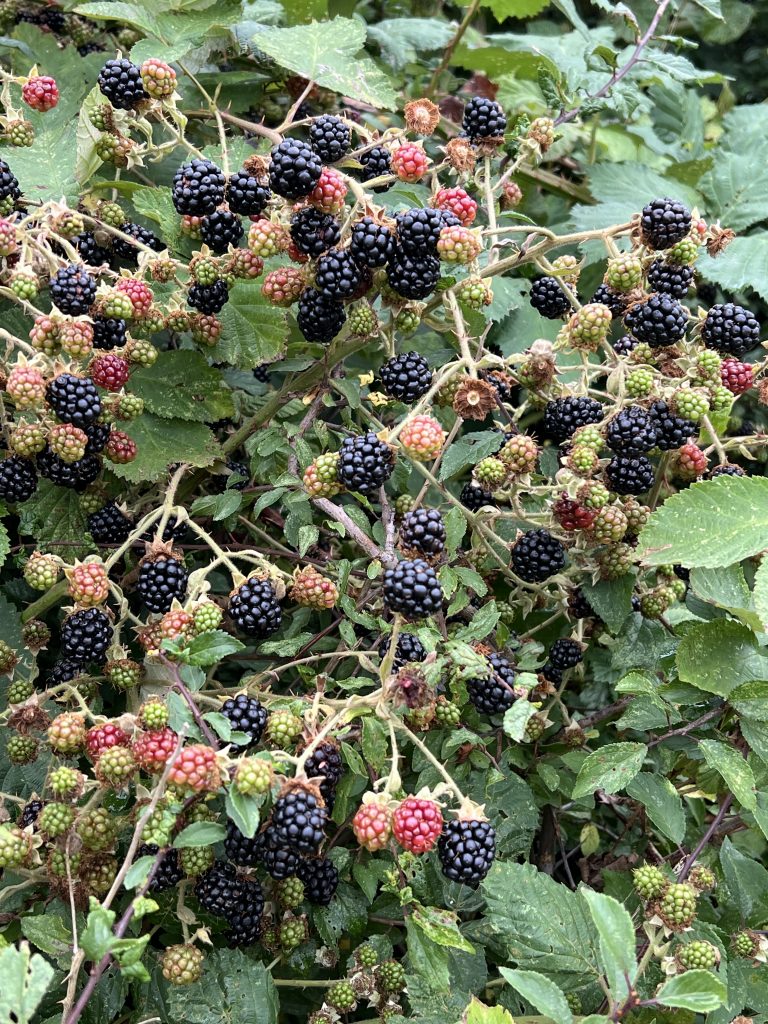
The blackberrying season is well underway, this year’s fruit large, abundant and, after a more days of warm sunshine, sweet. The brambles along the path between Croft Hill and the path around the quarry have been thoroughly harvested over the weekend, and only isolated ripe fruits remain among many unripe berries, which will be ready to pick in a day or so. You have to leave the well-trodden paths to be guaranteed ripe blackberries. The hedgerows by a route only used by local dog walkers still has a bountiful crop, and my wife spotted fruitful brambles along a gravel track off of a local lane and cycled there to pick over 3kg. I have already benefitted from a crumble, and jars of jam, the blackberries supplemented by fallen apples from our garden, are lined up in the kitchen.
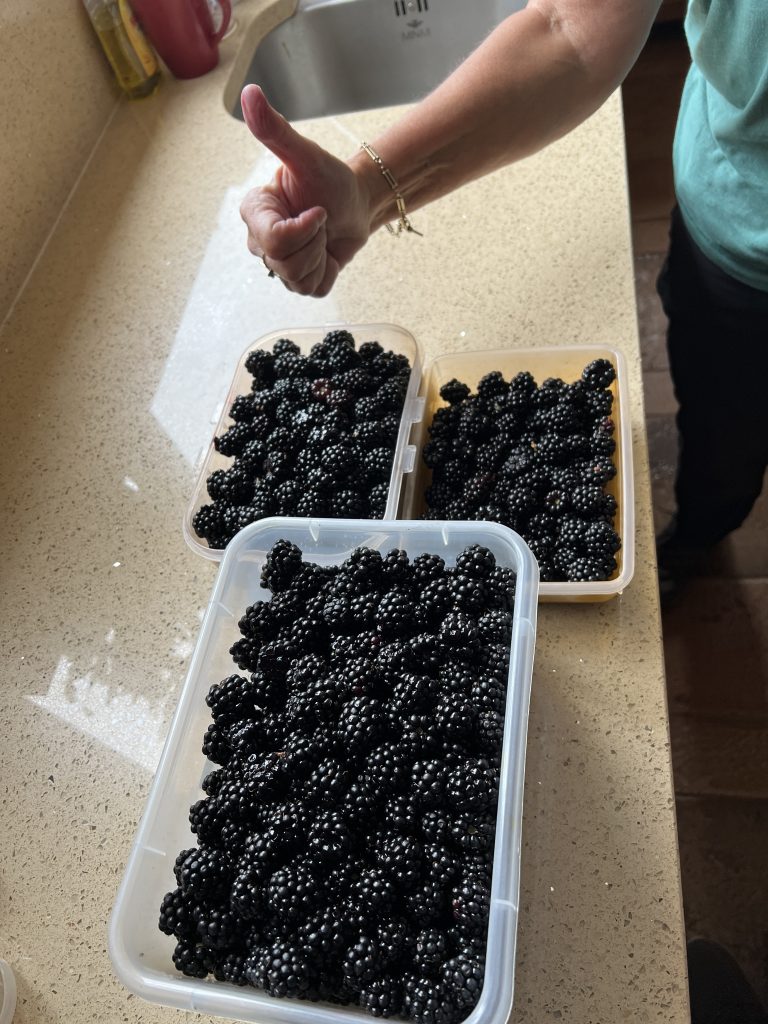
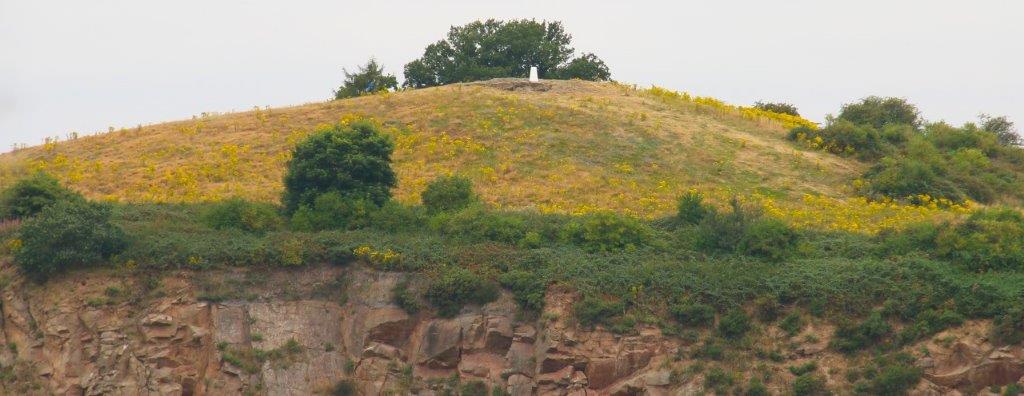
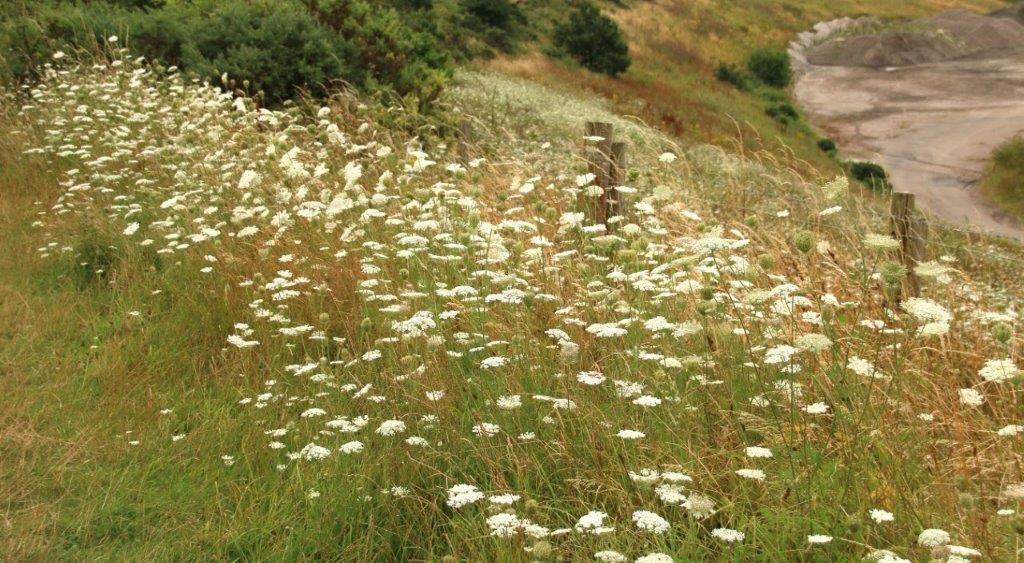
The grassy slope down to the quarry is a sea of white wild carrot flower, which also line the path above. Maybe of more concern is the ragwort also growing along the path. The Hill on the far side of the quarry is yellow with this invasive plant, and if uncontrolled it will spread around the quarry. Below me looking away from the quarry I look over Huncote. Between me and the village is a cultivated field with a group of men in Hi-Viz jackets. There is a Planning application to build houses on this field, and ground investigations have already begun. Notwithstanding recent political changes, this field was always intended for housing – the smaller housing estate beyond has cul-de-sacs that end in farm gates, a sure sign of a long term intention to extend the roads into another development.
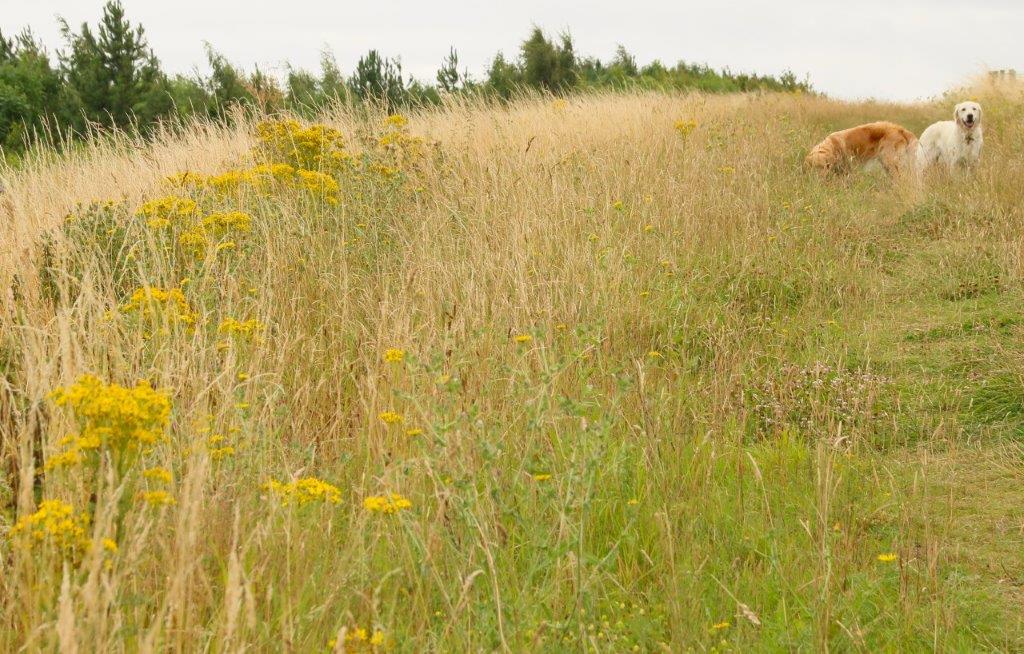
Following the quarry path I see a kestrel hovering over the quarry, taking advantage of the updraft rising up the quarry face while watching for small rodents in the grass below. Kestrels are difficult to photograph on the wing without a wildlife lens, since they tend to keep their distance, moving away at the same pace that I walk. I opt to descend the steep uneven path through trees to the track below. I notice that the woodland is surprisingly quiet, no birdsong, but as I leave the trees I hear the call of a sparrowhawk. Small birds, prey of this raptor, were keeping their heads down, although if the sparrowhawk was calling it is unlikely that it was hunting.
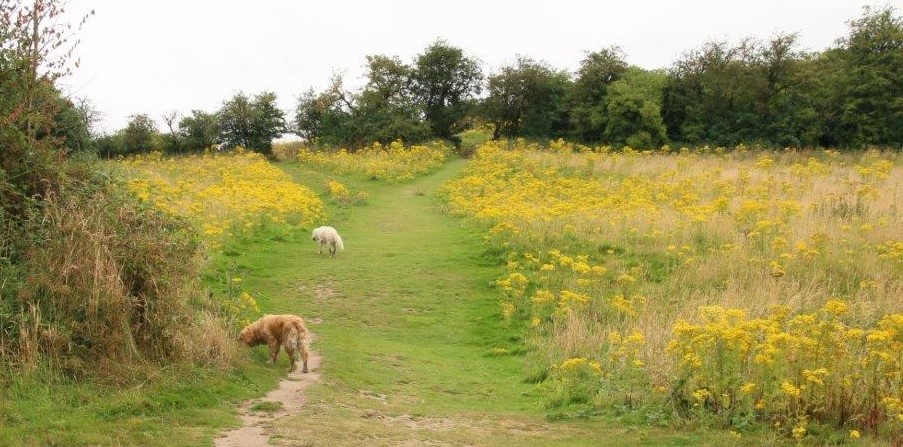
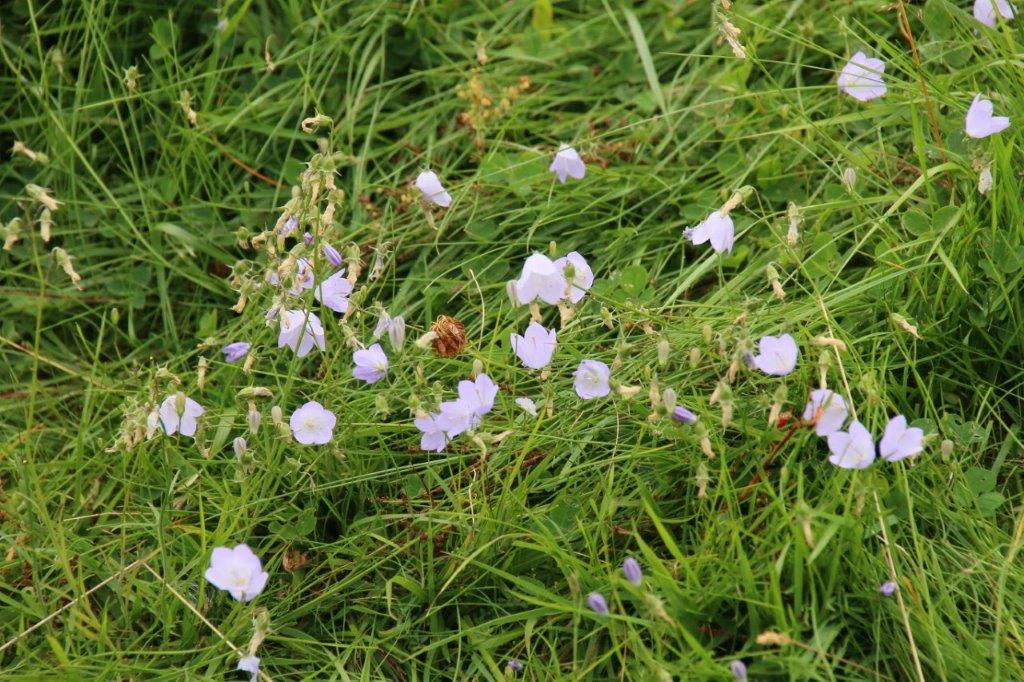
Climbing Croft Hill on our way home we walk between banks of ragwort, interspersed with musk thistle, and a carpet of bellflowers growing in the grass between breaking up the sea of yellow with deep purple and a delicate shade of blue.
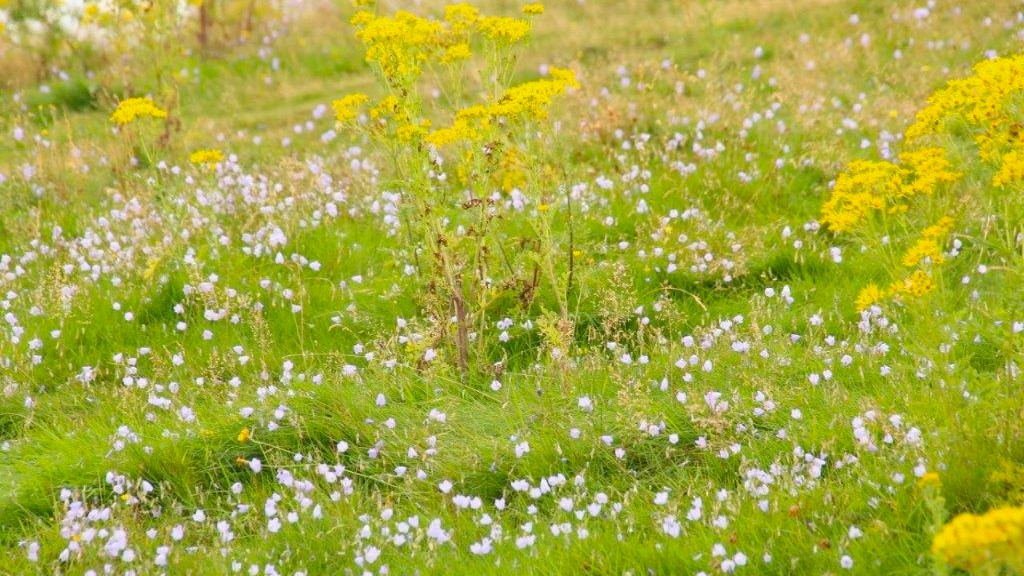
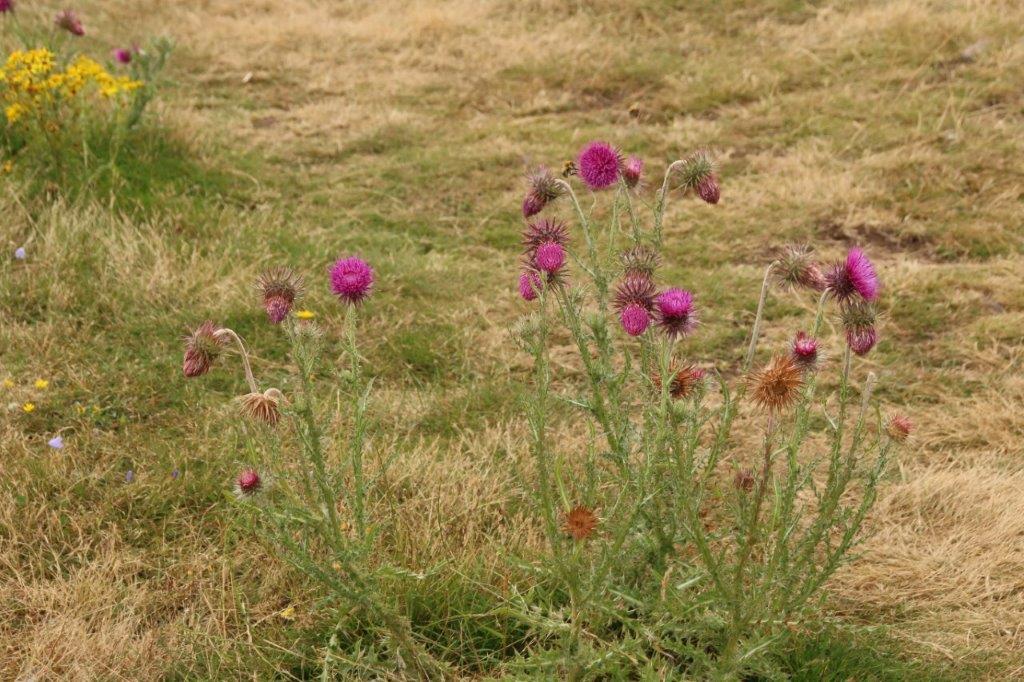
25th July – Let the harvest commence
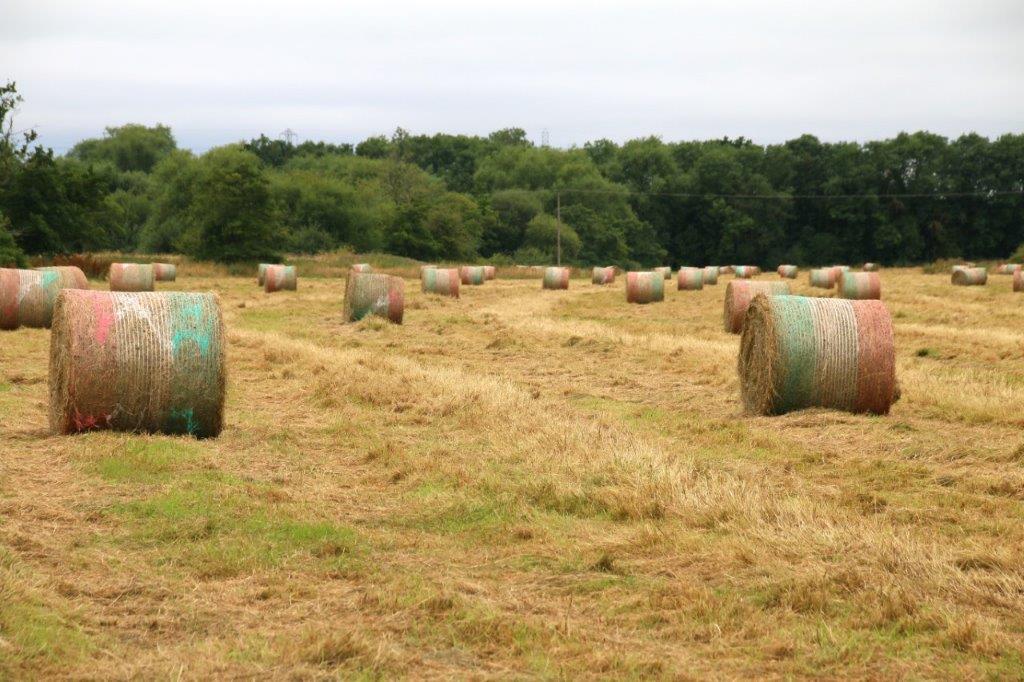
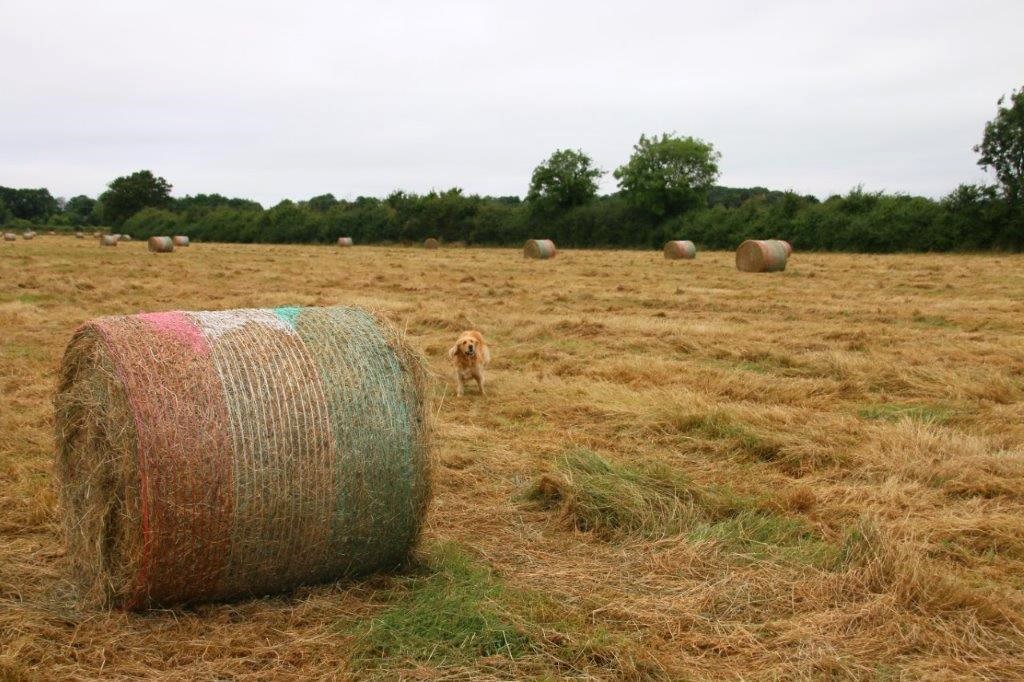
After a few days of warm sunshine, the mown hay in the “sheep field” has been baled, the large round bales scattered across the field. As usual when round bales appear for the first time in a season, the dogs enter the field and stop suddenly, barking at these intruders that were not there when they last walked in the field. They soon realise that the bales are harmless and ignore them while playing in the grass. The bales will be winter feed for livestock, or maybe horses, although stables generally prefer the tradition smaller bales. I was pleased to see that a couple of areas of the field, bordering the river bank, has been left unmown, a habitat for small wildlife.
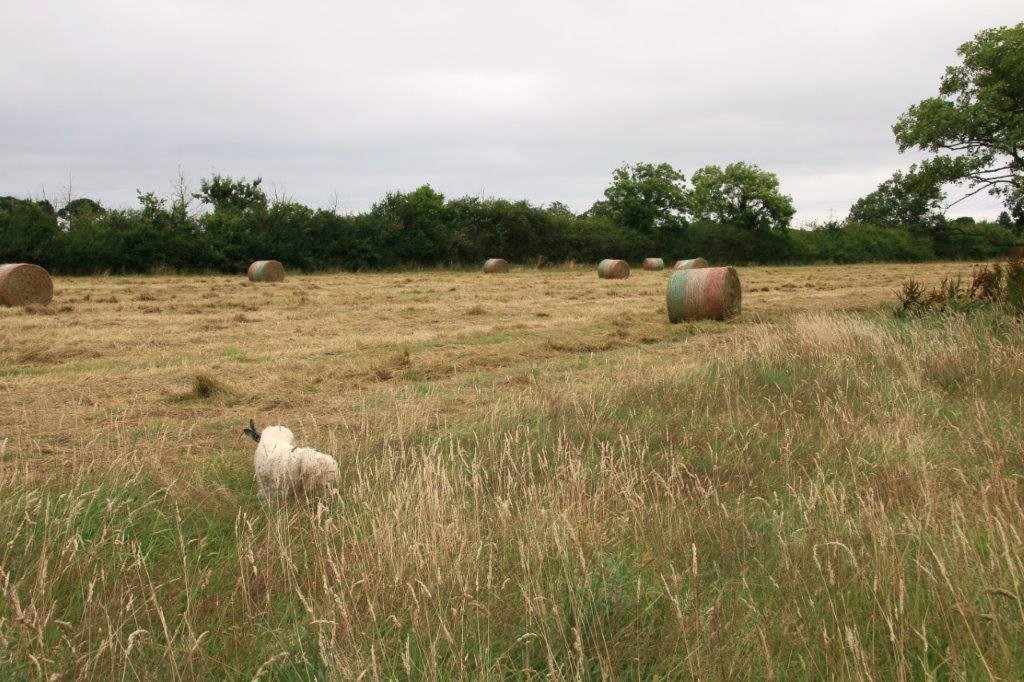
The fields beyond have had cereal crops, and two have already been harvested, or “combined”. Looking back through my photographs it seems that in most years harvesting starts a week so later – maybe not a precise record since the harvest season lasts three to four weeks. One of the fields has not been finished, the combine harvester parked up at the top of the field. Maybe unexpected rain yesterday afternoon stopped the operation – it certainly interfered with my “harvest”, the rain arriving as I was mowing my lawn. A heavy burst of rain during our dog walk sent us scurrying for shelter beneath a horse chestnut tree, but the rain only lasted an hour or so.
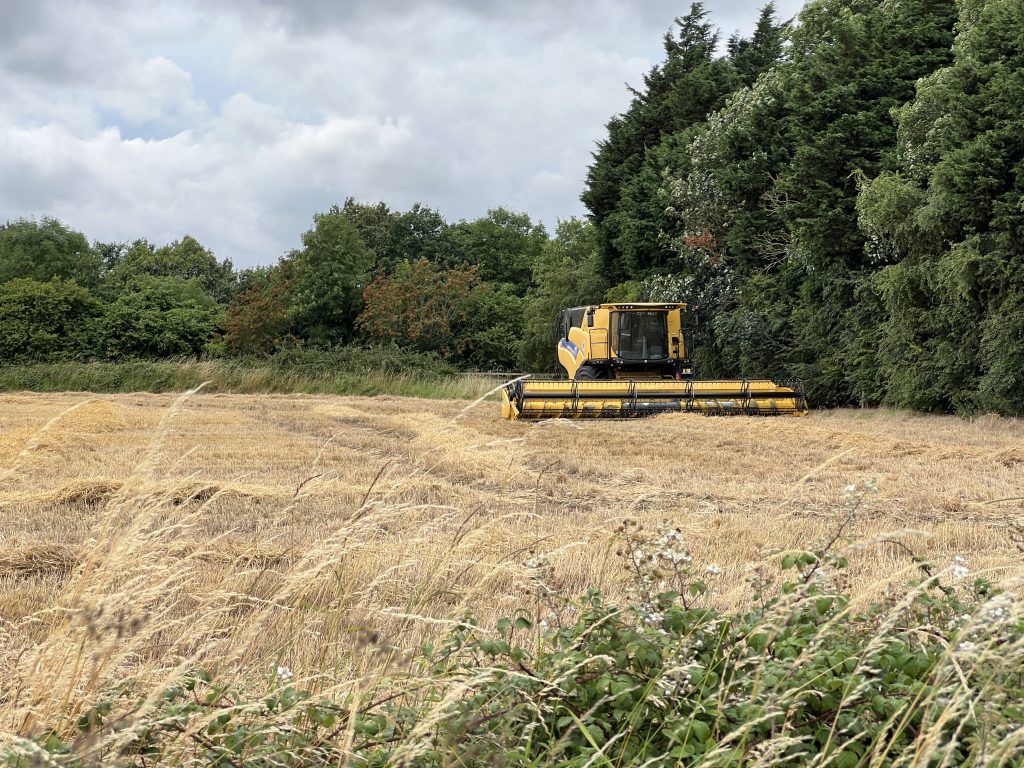
The wheat in the fields behind our home is still standing tall. The field will have been periodically sprayed with herbicides over the last few weeks, but wild flowers and grasses are still growing at the field edges, Lesser Burdock in the bottom field, and Prickly Sowthistle in the higher drier field near to the Lane.
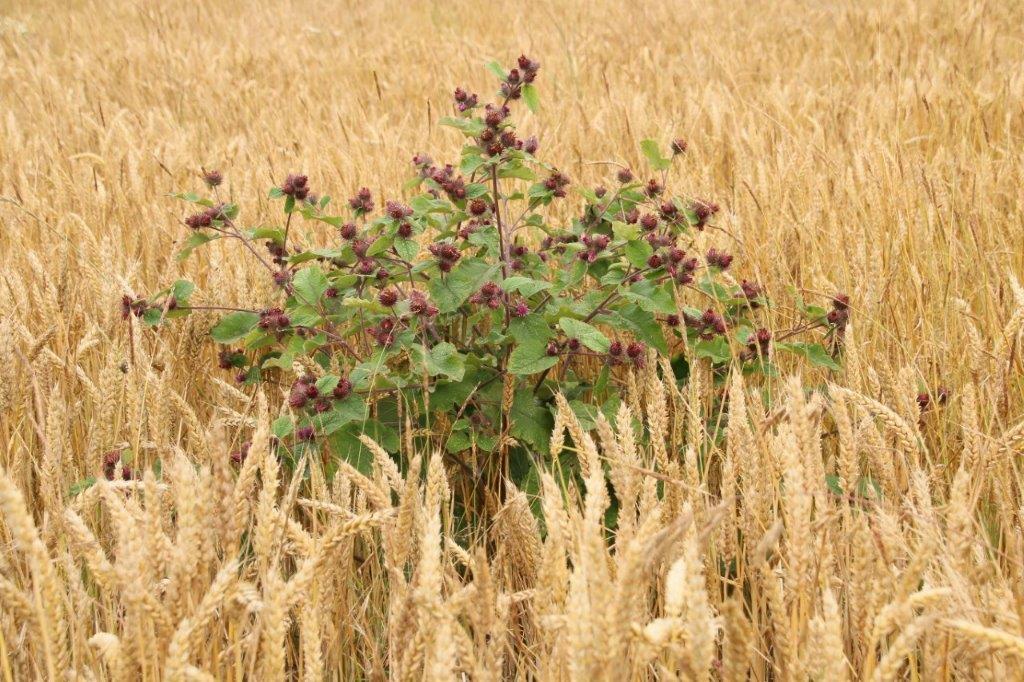
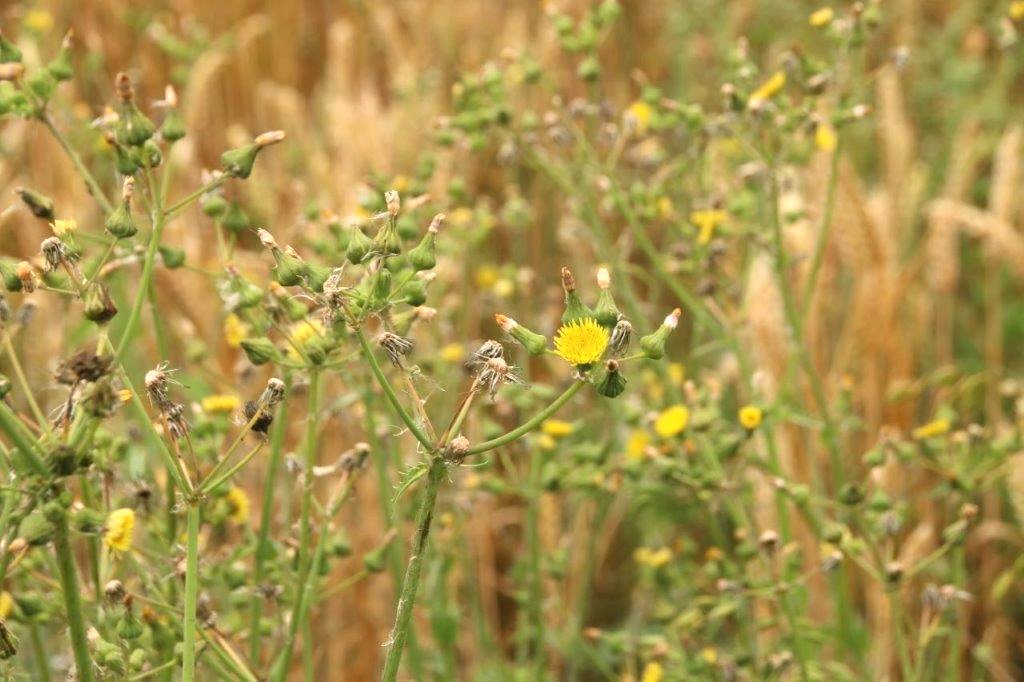
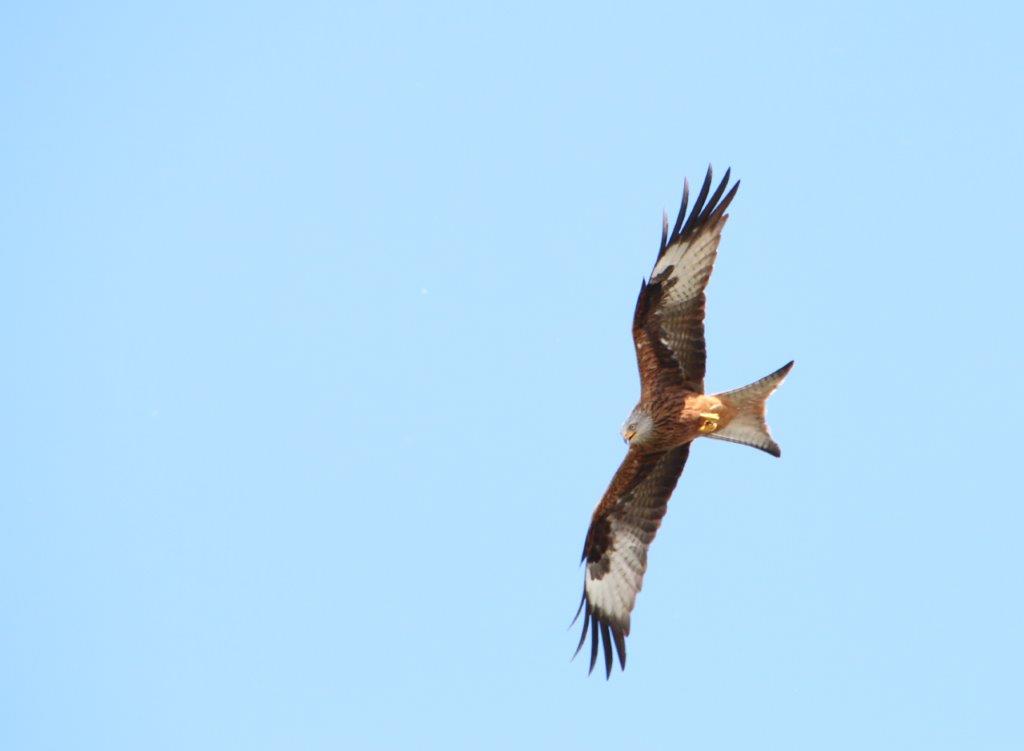
We have recently noticed a Red Kite patrolling the sky above the sheep field, identified by the forked tail, and I saw one, again today as we continued to walk between the round hay bales. At the far end of the field a Buzzard hovered. Buzzards are common around here, Red Kites less so, and not often seen. With similar prey and scavenging habits we may be on on the border of hunting territories for these two competing birds of prey.
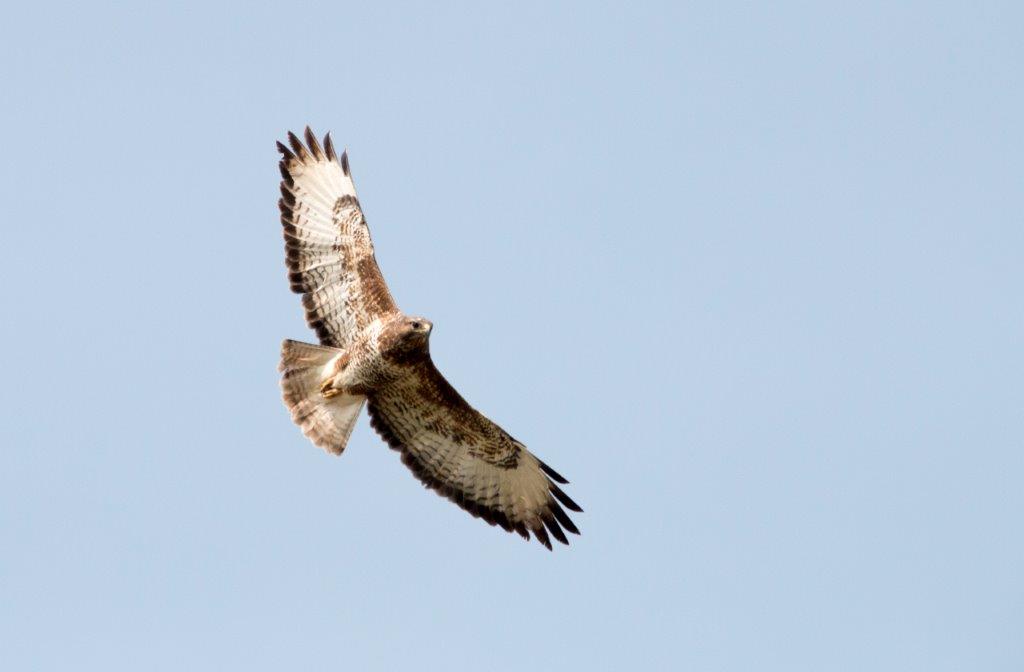
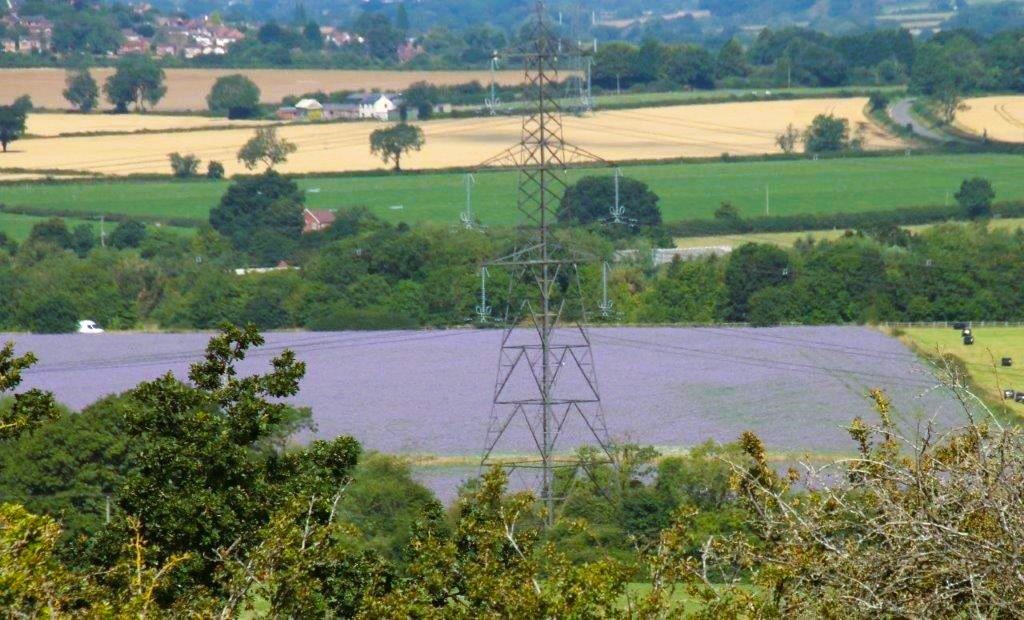
From the top of The Hill a field of flowering Linseed can be seen, the blue flowers looking like a pool of water reflecting the sky. During years several such fields can be seen around us, the effect from a distance being like a series of lakes. Linseed will be harvested after the wheat and barley crops have been “safely gathered in”.
20 July – Early fruitfulness
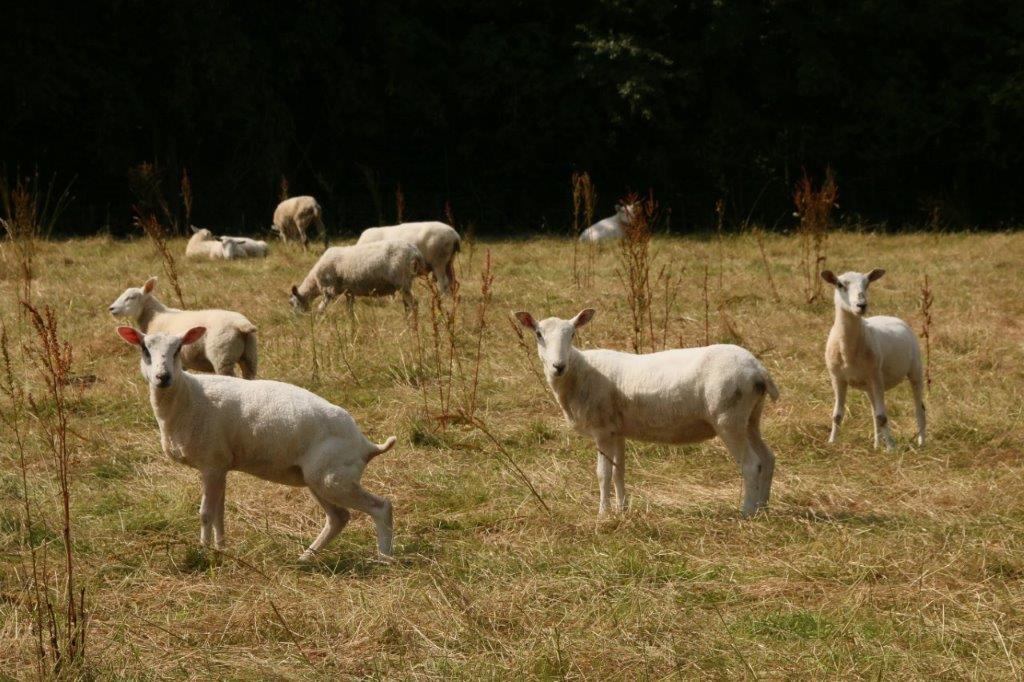
I try to vary routes with the dogs and tried a route that I have not walked for years, between Croft and Stoney Stanton. We passed recently shorn sheep in a field that was occupied by stables and horses when I last past that way. This was one of only two fields of sheep that we pass on our walks, the other just down the lane from our home. Sheep are shorn in early summer to keep them cool, and prevent parasites breeding in the wool and burrowing down to the skin. It wasn’t long before we turned back, as the path passed along a grassy field edge, fine for the dogs, but I found it hard work on an increasingly warm day.
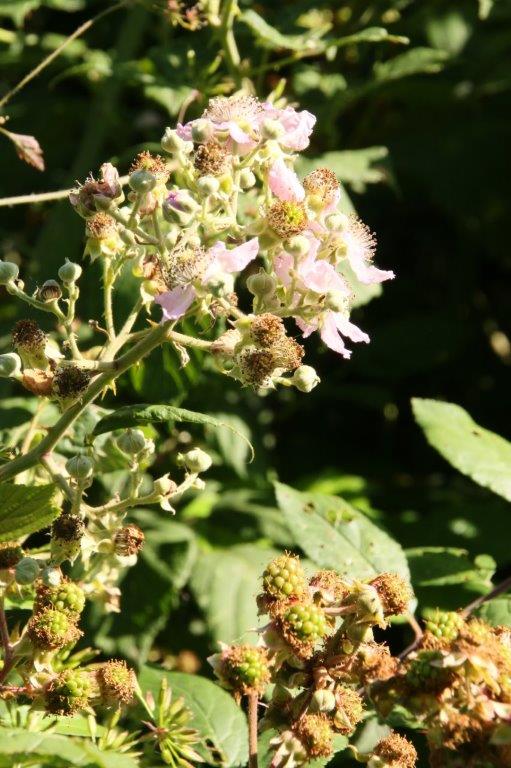
A more familiar route takes us towards the village of Thurlaston, going through a “kissing gate” through what feels like a wooded track, but the trees only line the path, with fields beyond. Despite some warm sunny days the path was damp and muddy in places. Brambles grow in the hedgerows, and this year there are already some ripe blackberries among the pink flowers and green unripe fruit. The brambles have not yet had enough sunshine to sweeten the fruit, which may look succulent, but are tart, almost bitter, to taste, and a little dry. There will more and sweeter berries in a month or so.
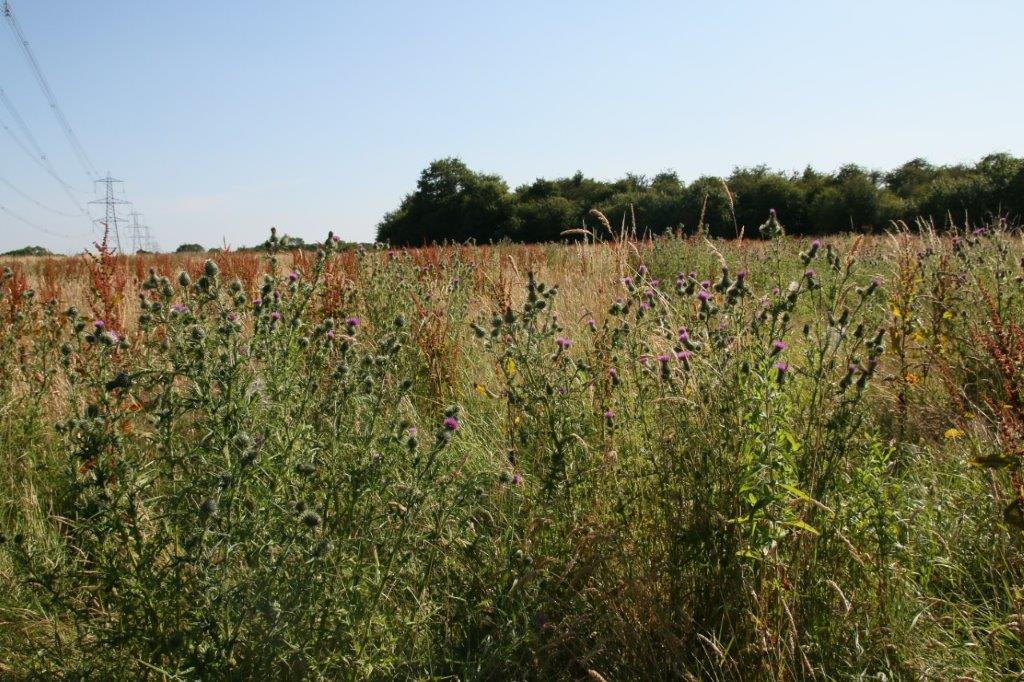
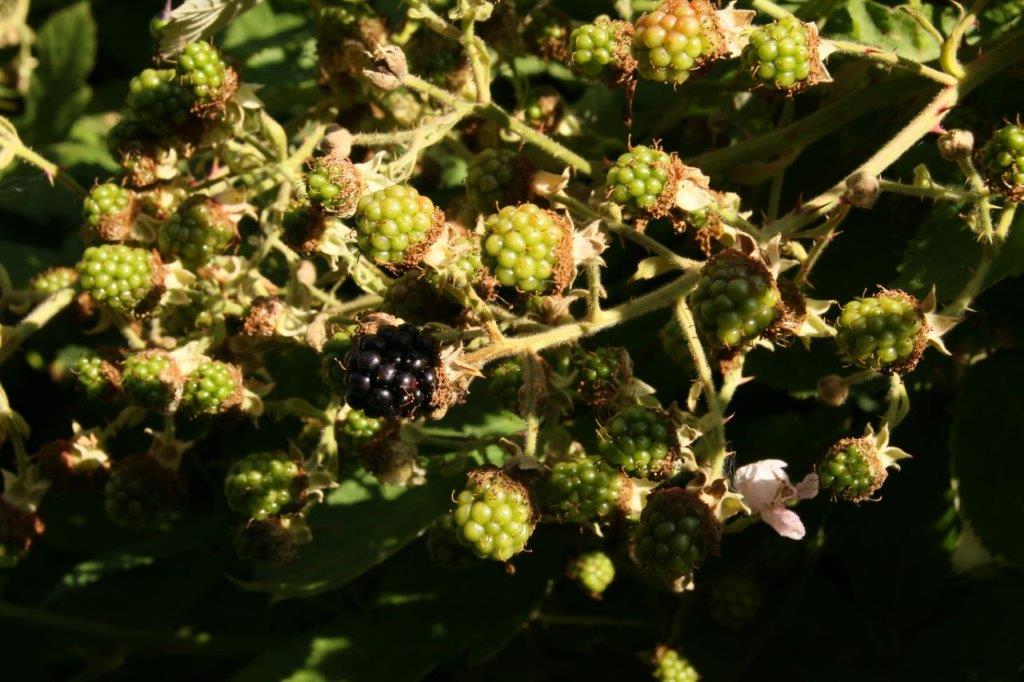
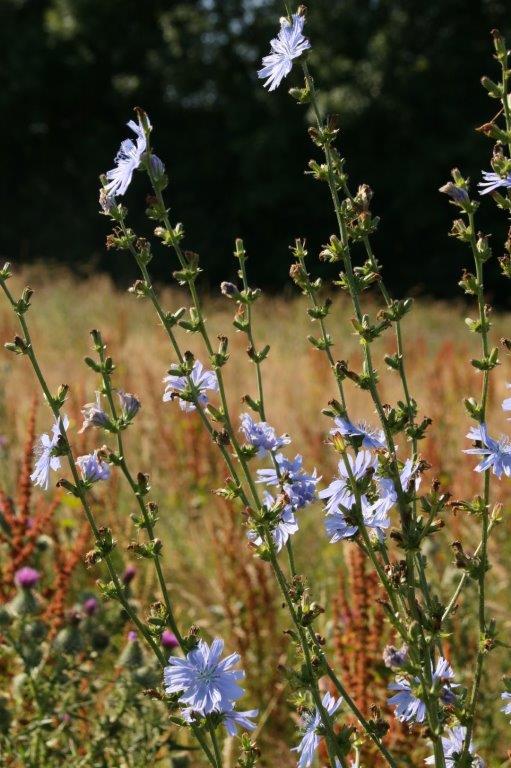
Climbing over a stile, the dogs making use of the dog-gate, we crossed a track and into a field overgrown with thistles and grasses. This may be mown in due course, but the hay will be of poor quality. The path along the hedge was sufficiently well trodden to be clear of thistles, and those on the edge of the path were interspersed with the blue flowers of wild chicory. The path continued between overgrown hedges, a gloomy tunnel with a muddy floor, before emerging onto the local sports field.
We turned away from the field along a grassy path leading to a farm track, bordered by daisies and yellow Bristly Oxtongue, the flowers resembling tall dandelions, the track leading to the footpath back to our Lane.
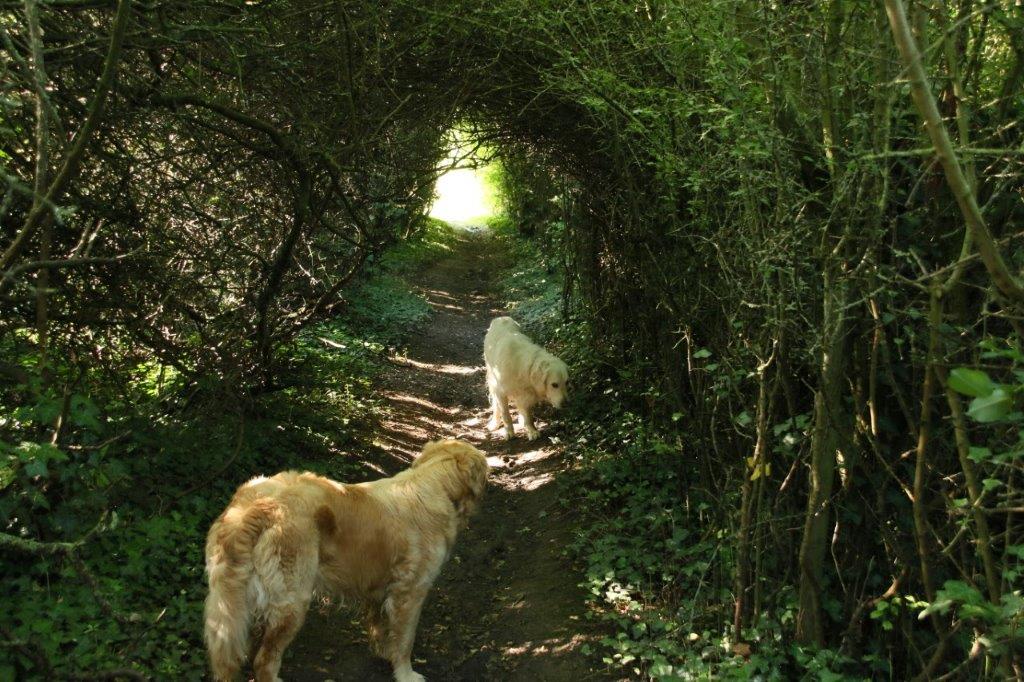
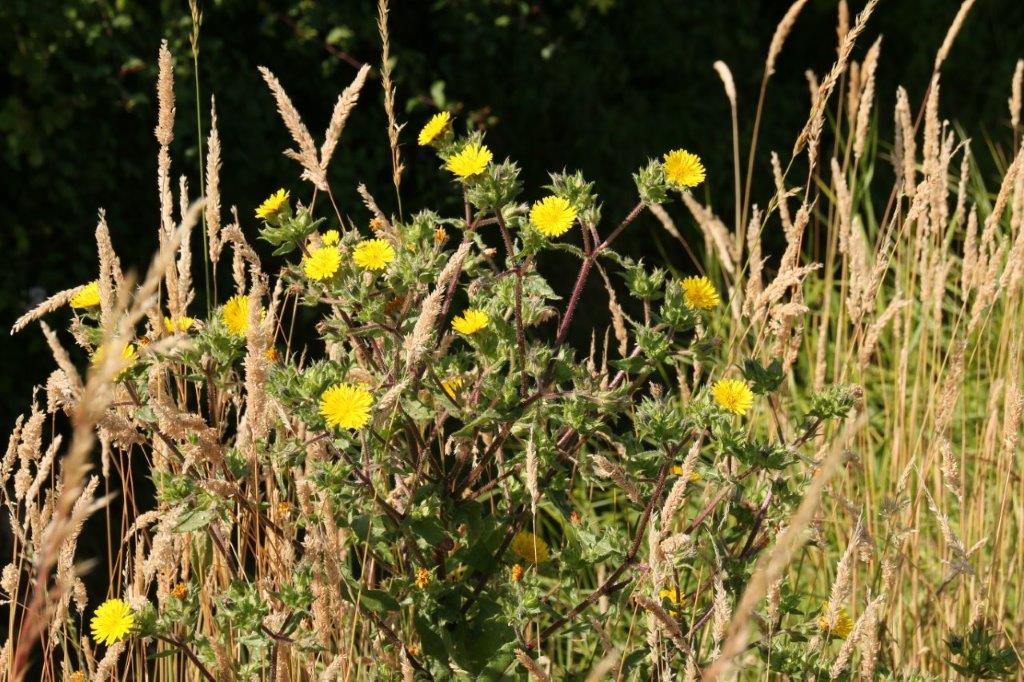
This morning I was delighted to discover that the “Sheep Field”, which has been an almost impassable tangle of meadow grasses for weeks, has now been mown, opening up other walking route. The grass lay in rows along the field and will be turned a few times to dry before being baled. Alternatively, it may be “packaged” in plastic to ferment as sileage. I’ve been told that this season there is a glut of hay, meaning that some farmers may need to store it until Winter before being able to sell it.
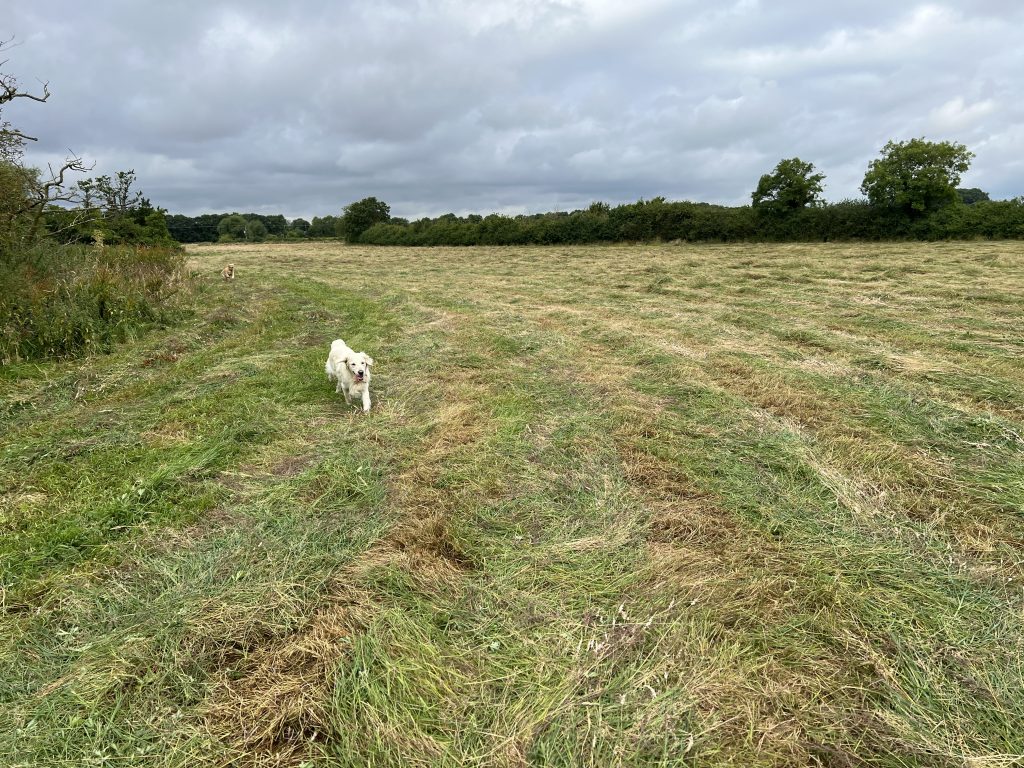
16 July – Flowers as high as an elephants eye
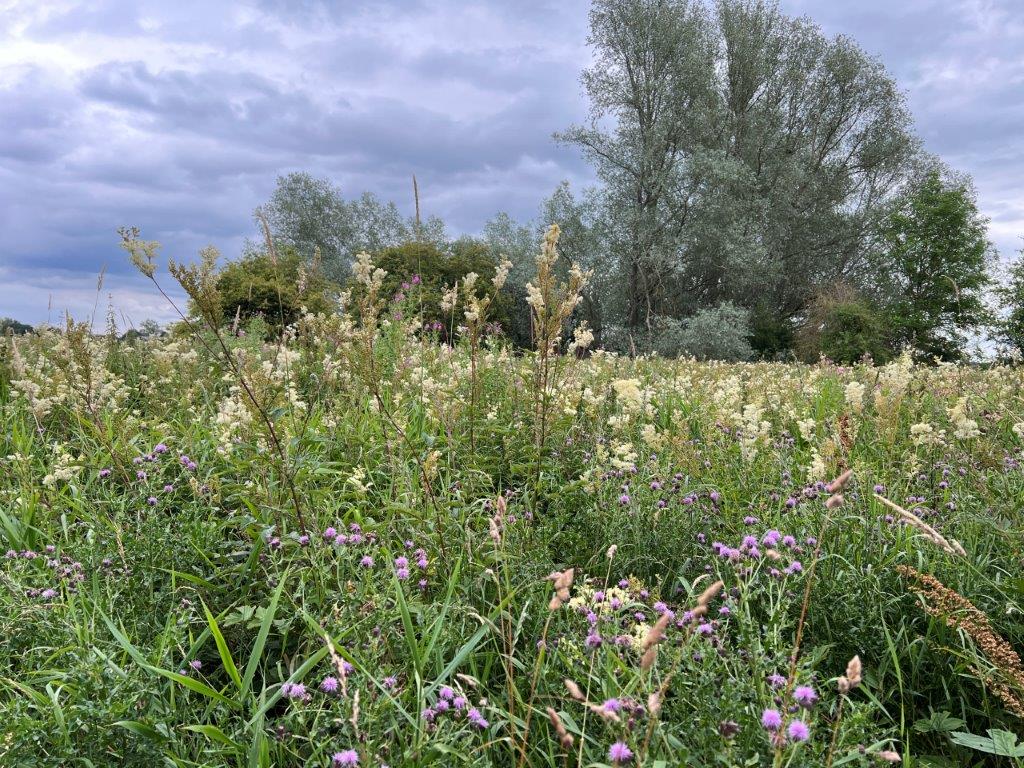
This will never be known as The Long Hot Summer Of ’24, but to be honest, we’ve has worse summers over the years. The summer of 24 is warm, and the incessant rain of Spring as been replaced by a mix of showery and dry days, with occasional days of heavy rain, perfect for plant growth in the countryside, meeting all the essentials of sufficient water, light and warmth for growth.
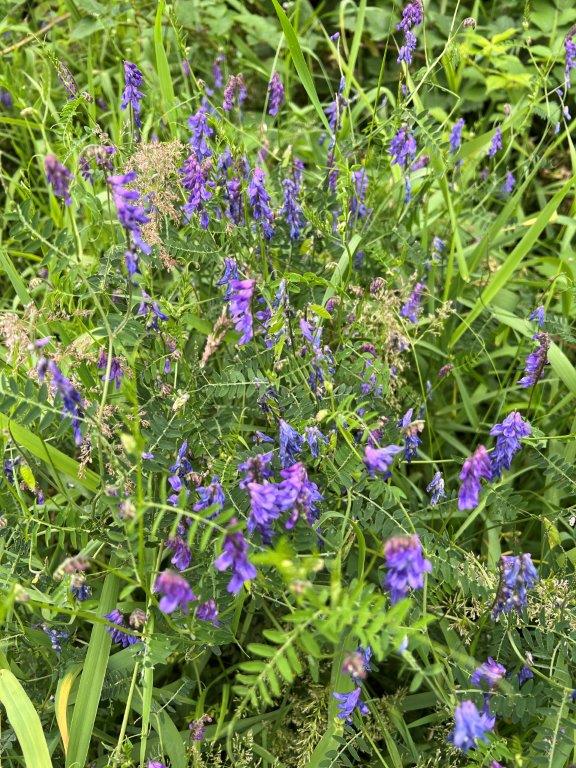
A favoured dog walking route is along the quarry edge, with views over the countryside, descending steps to the river for dogs to have a swim, and back along the valley. The valley path is almost impassable in winter, deep in mud, but dry by spring. This year it was June before the route could be walked without wellies, and even now there are muddy patches to be avoided. The grasses and wildflowers along the damp edges of the path are 2 metres or more tall, the flowers dominated by Meadowsweet, Tufted Vetch and Willowherb.
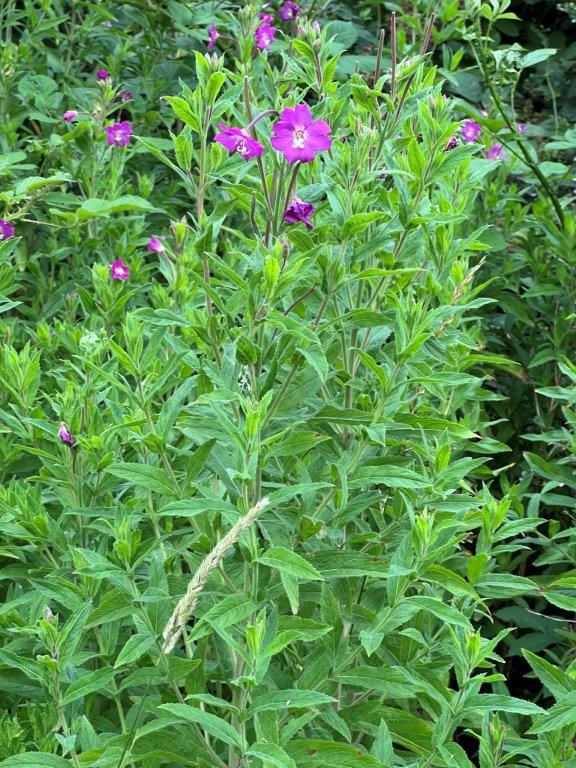
Most walking routes pass the bottom of Croft Hill, and I climb the Hill on most days to get my heart pumping – the Hill is not particularly high, but above the surrounding countryside, with views for miles. The dogs wonder off the tracks following scents, and sometimes I have to follow to “clean up” after them, and it was while undertaking the dog-owners-duty that I discovered a freshly dug burrow, too big for a rabbit, likely to be a badger sett. From www.badgertrust.org.uk “Badger setts vary from occasionally used “outliers”, which often have single entranced tunnels, to vast, ancient underground complexes with multiple entrances”. This one is clearly a newly dug outlier. There is a large sett on the north side of the Hill, but this has been abandoned for many years, the holes remaining as a trip hazard to those straying far from the path.
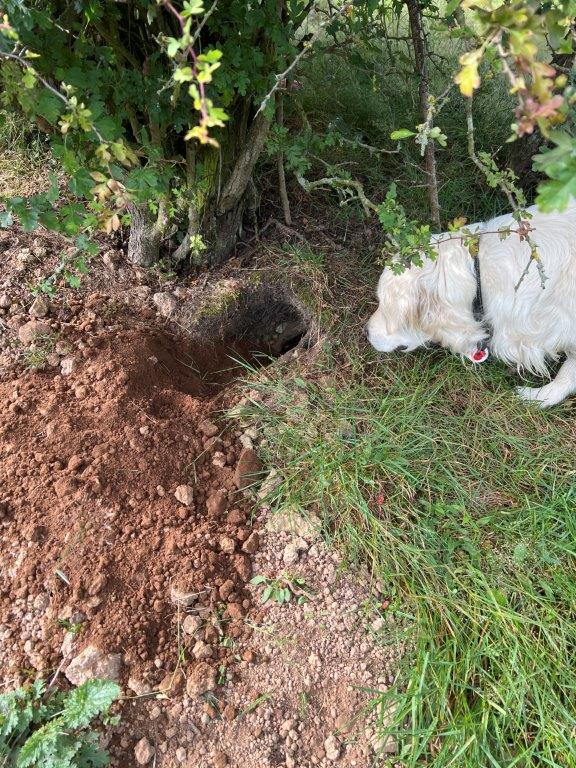
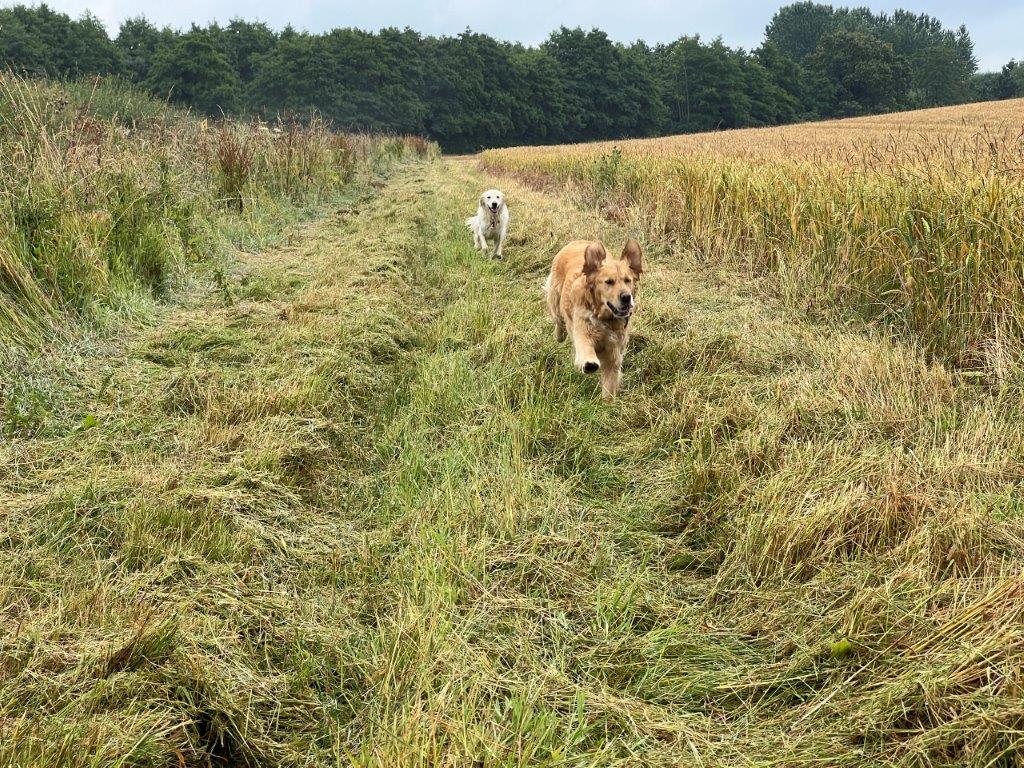
The wheat and barley in the fields continues to turn golden, and will lighten further before harvest. Yesterday the farmer mowed the field edges, to encourage next years wild flowers, which has made dog walking around the field much easier.
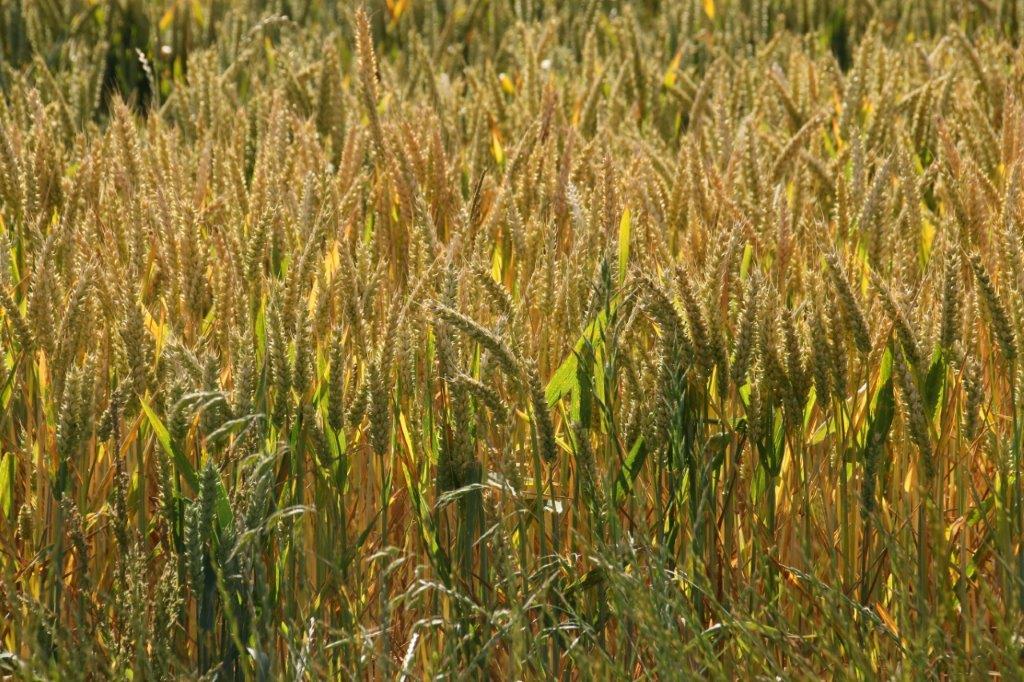
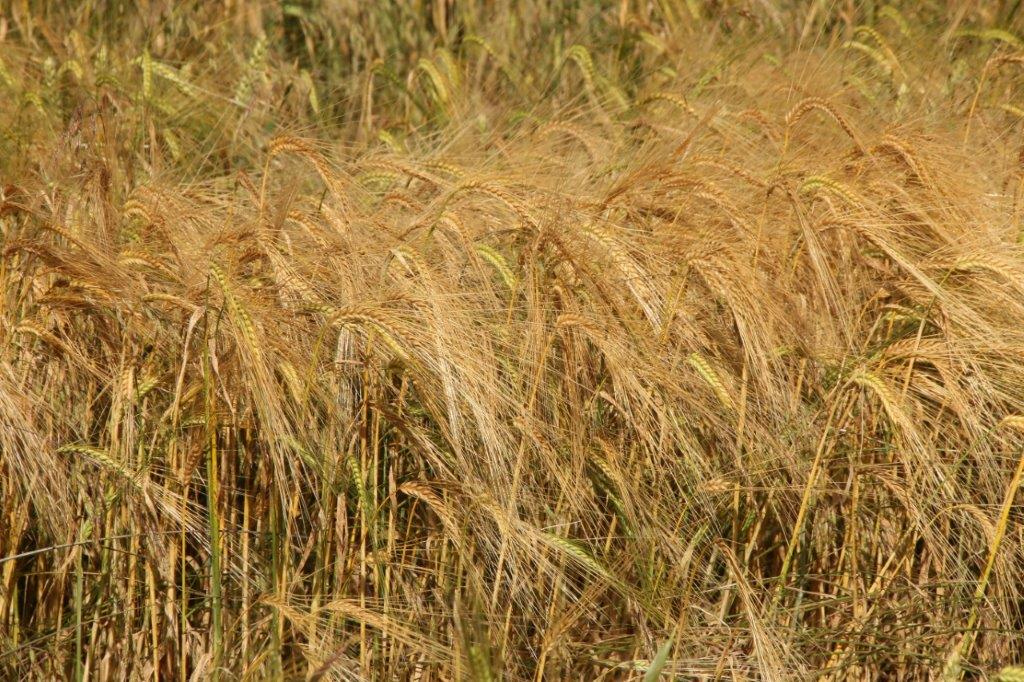
6th July – Keeping dry
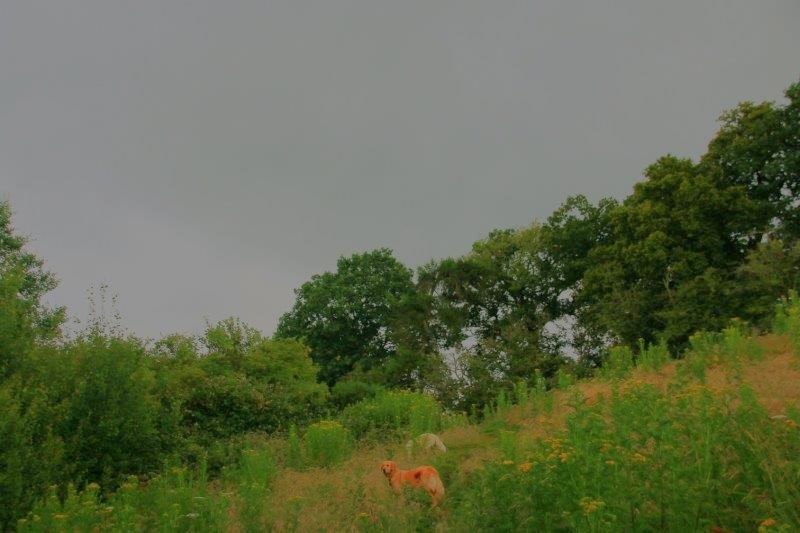
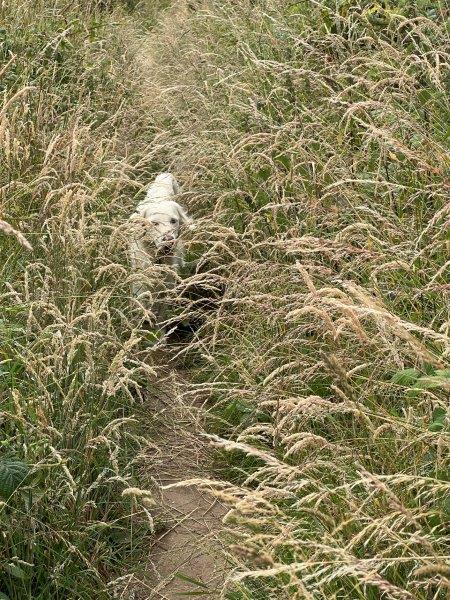
Many of our walking routes are almost overgrown with high grass and occasional nettles. The dogs have tunnel vision, the grasses above their heads, but it doesn’t bother them. Dogs “see” with their nose. The view each day may seem the same to me, but to the dogs the smells of wildlife and other dogs that have passed that way since they last pushed their way along a grassy track means that the “view” is different on each occasion, with scents sometimes leading them into the surrounding grass. Frustratingly the “Sheep Field” has yet to be mown, either for sileage or hay, and it is hard work walking through the tangled long grasses.
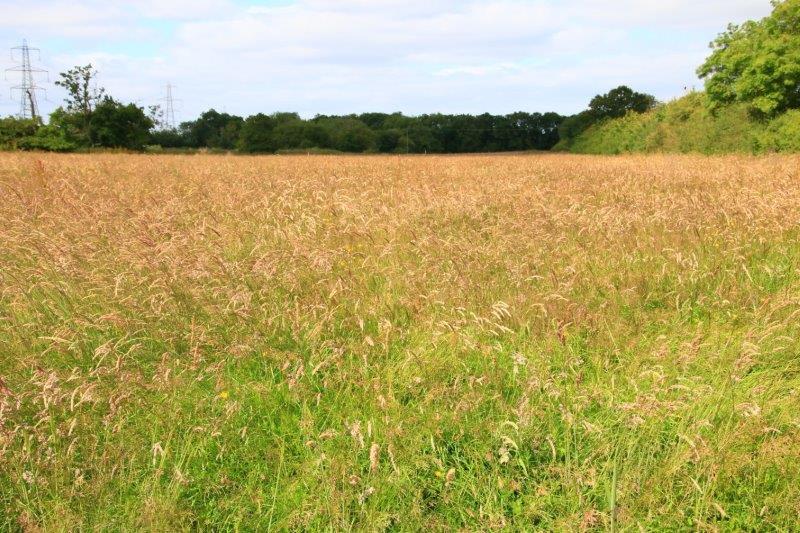
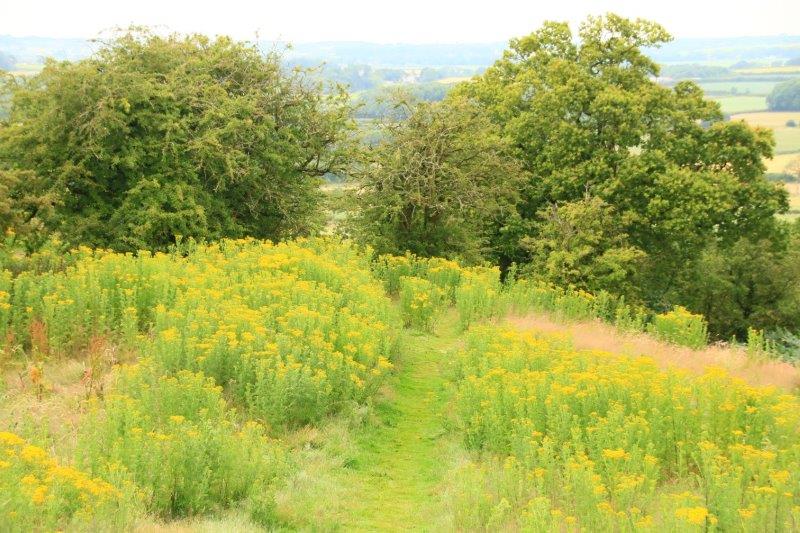
It rained heavily last night, and we avoided the grassy paths. I would need to wear wellies and waterproof trousers to avoid a soaking from water-laden grasses, although the dogs would have no objection to returning home wet. We met someone who had walked along a path bordered with high grass, and he was soaked to the waist. Instead, I donned my walking boots and walked up Croft Hill, where rabbit-grazed turf is short, but even on the Hill the path is bordered by knee-high plants, in this case yellow Ragwort, which at least keeps to the edge of the path. Ragwort is poisonous to livestock, although large quantities would need to be eaten. Until a few years ago the quarry owners, who own Croft Hill cleared the weed annually before a few cattle were grazed over the Summer and Autumn to encourage wildflowers. Sadly during the Covid epidemic large groups of young people gathered on the Hill, fences were broken, and no cattle have been grazed since. Ragwort has been allowed to flourish, which is at least is appreciated by the many insects that feed on it.
We descended the Hill to the track leading to the village, well-trodden and so grass-free. Wildflowers bloom in the hedge separating the track from the adjacent lane. Hedge Woodbine, with its white trumpet blooms, climbs up the hedge, while the more subtle frothy-white flowered Hedge Bedstraw grows in the hedgerow, without actually being part of the Hawthorn hedge.
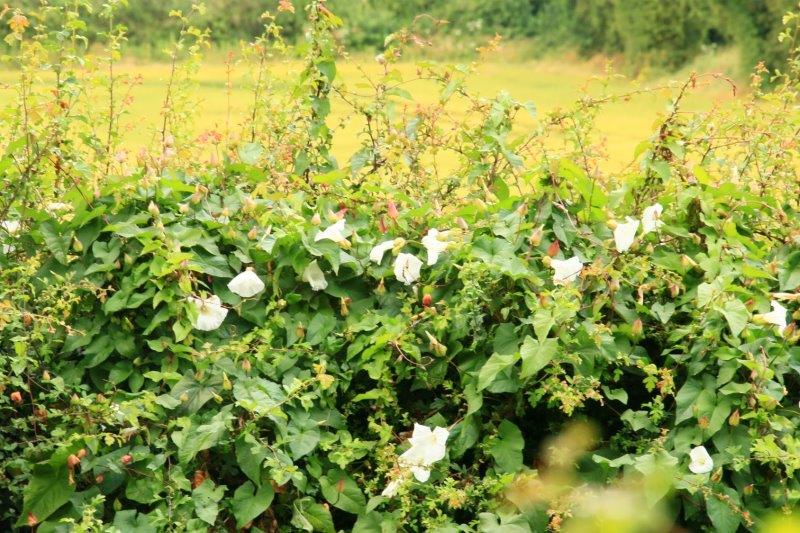
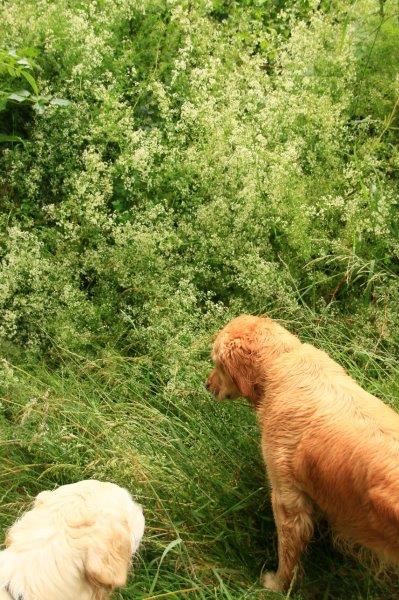
In the fields behind us the wheat and barley crops are beginning to ripen, tinged with gold, but it will be a few weeks before we will see “Fields Of Gold”, and longer before the harvest.
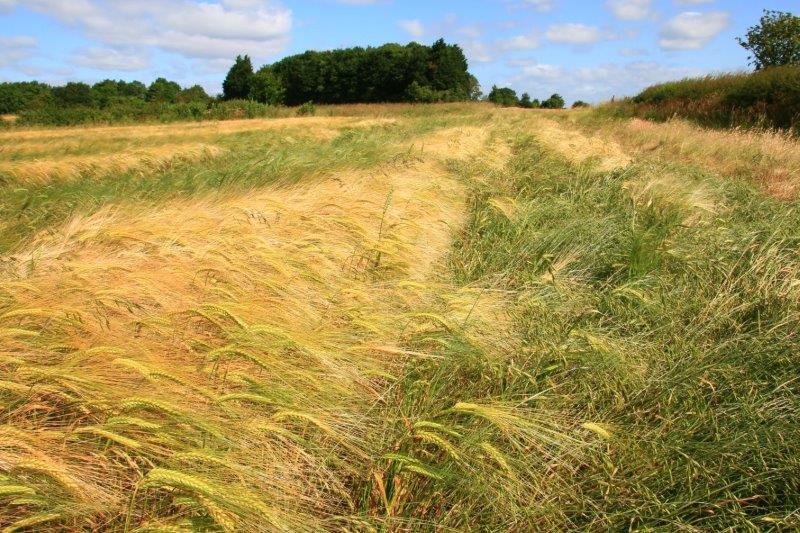
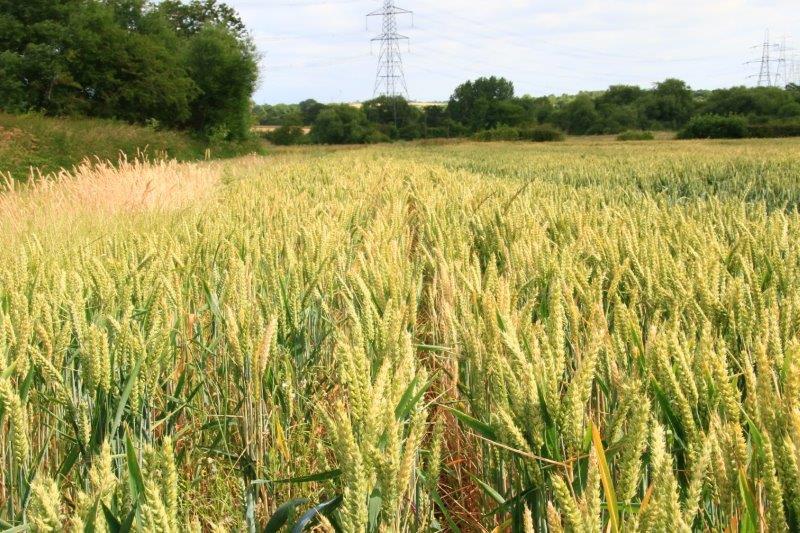
Warm sunshine soon disappeared, dark clouds gathered, and we cut short our walk to avoid a soaking. Naturally the promise of rain did not materialise, and we could have continued and stayed dry
20th May – Springing all over
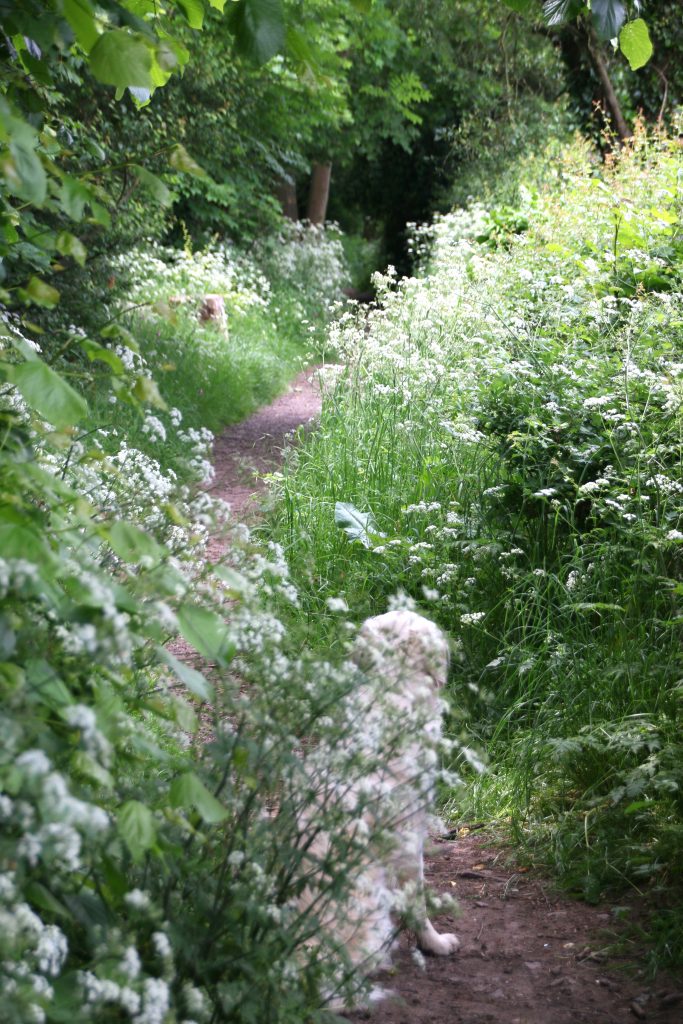
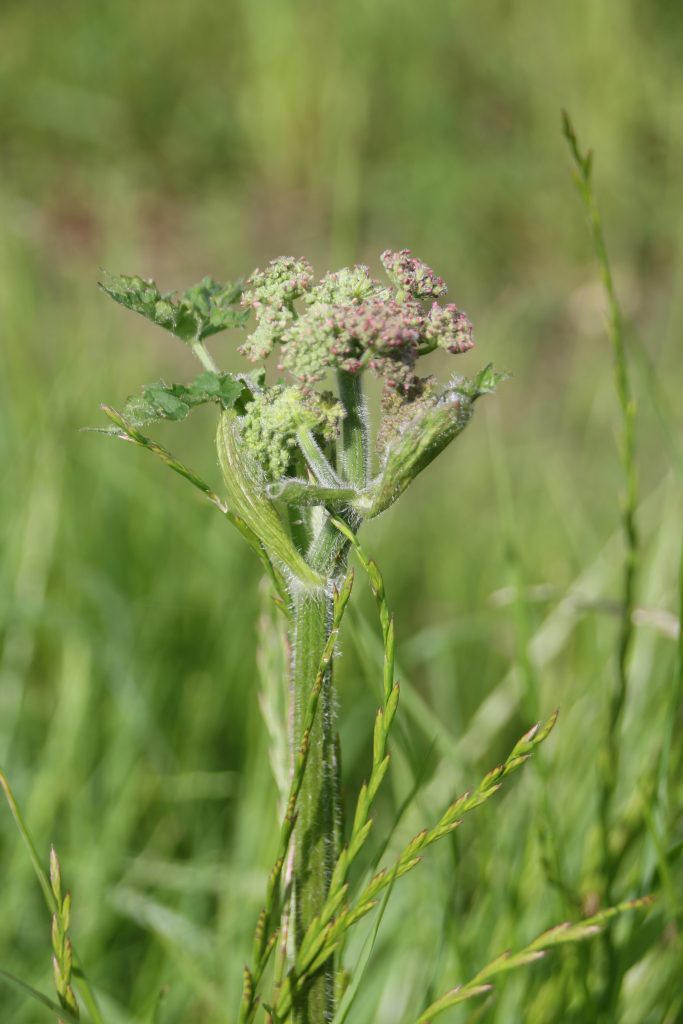
Thanks to the higher than usual rainfall over recent weeks, Spring is Springing in full vigour, with wild plants encroaching onto footpaths. Waist high white-flowered Cow Parsley, known as “Keck” in this part of the Midlands, lines each side of the path, and in shady damp woodlands Giant Hogweed is beginning to flower, and leaves of wild Gunnera are already shoulder high, and will eventually tower above my head.
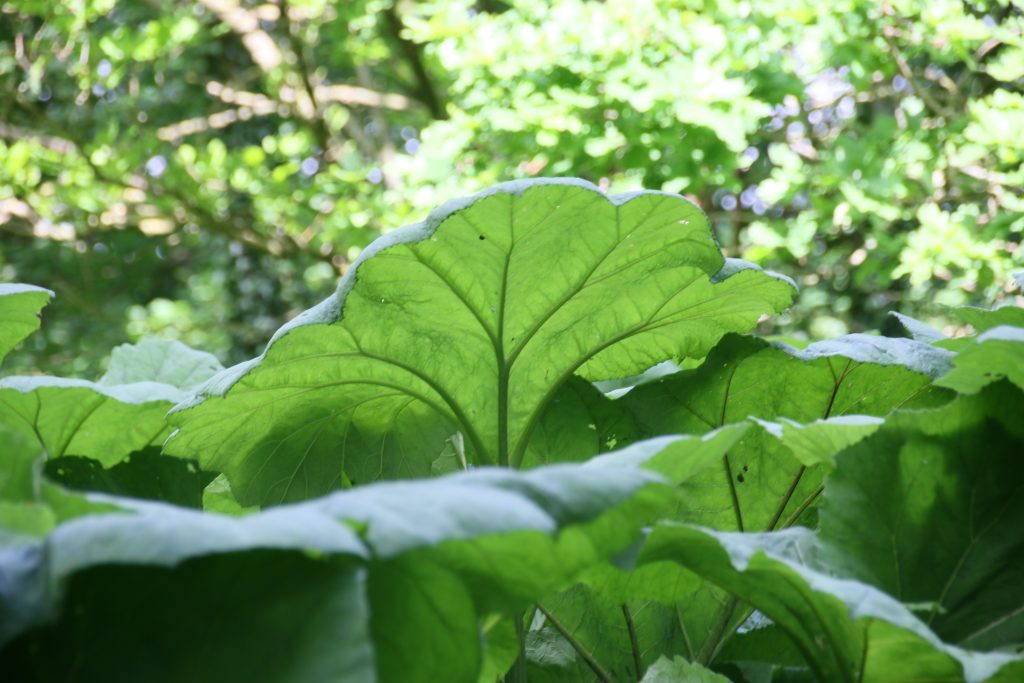
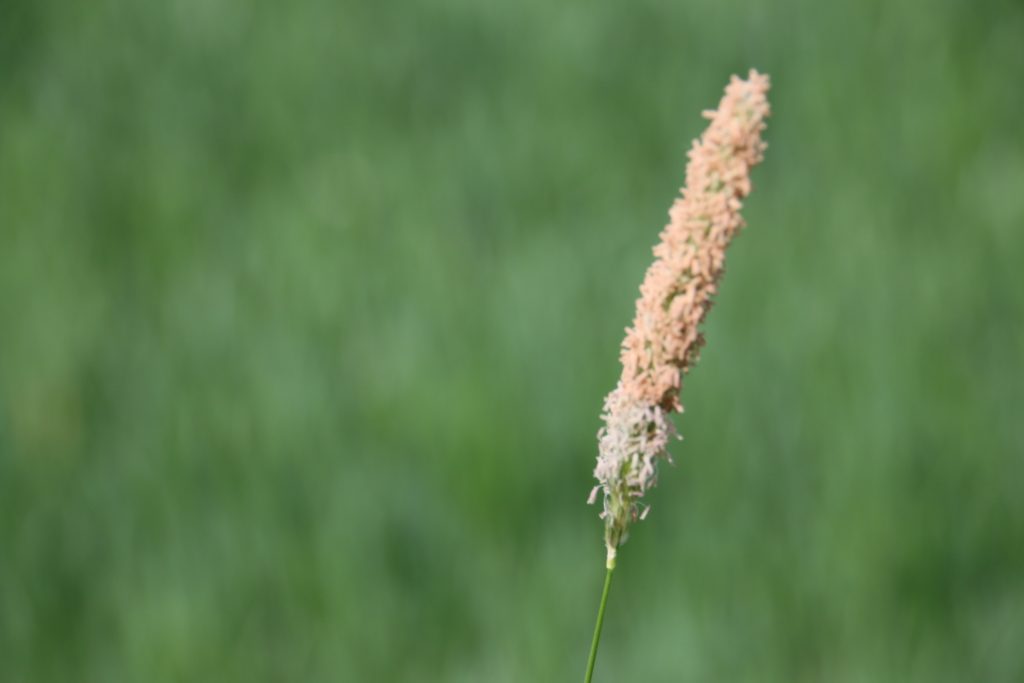
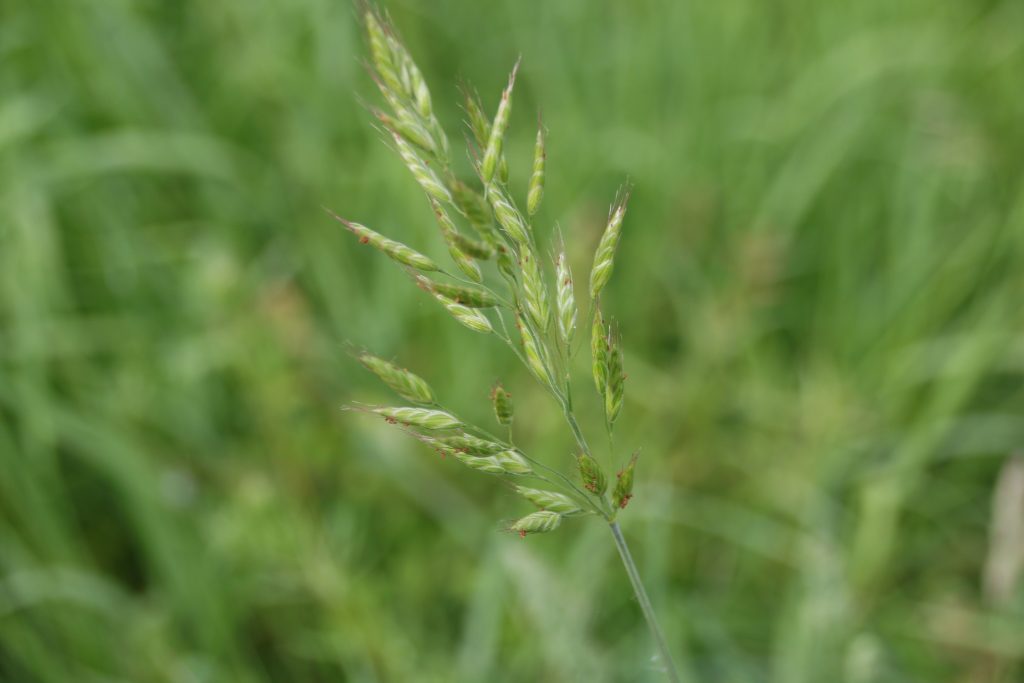
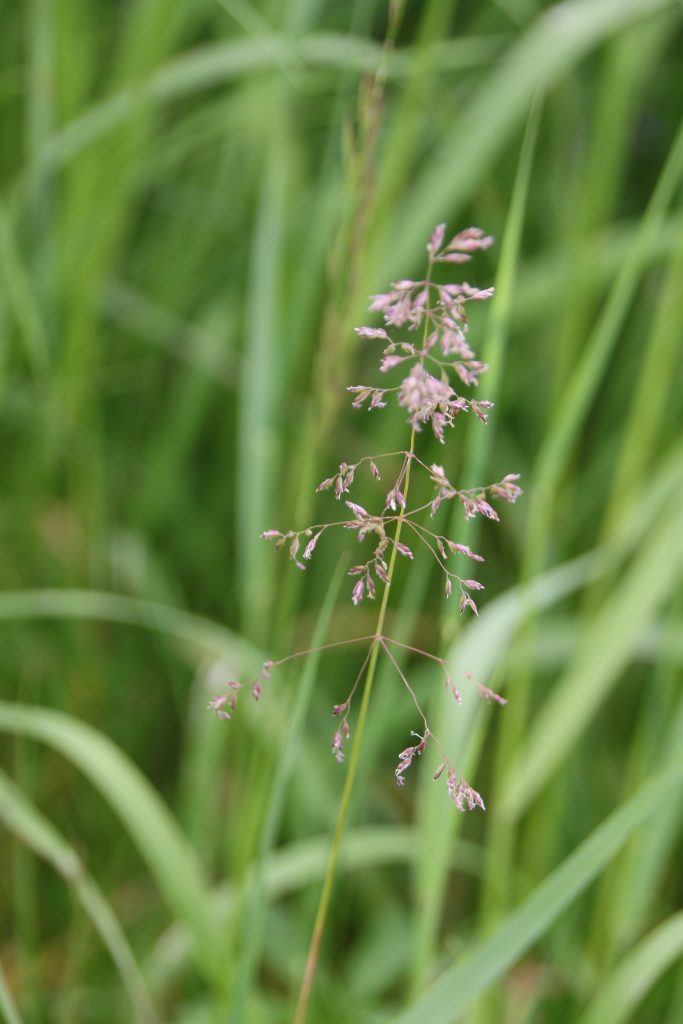
At this time of the year grasses are flowering in open sunny areas, as anyone with hay fever will be aware, as pollen levels increase. The soft cylindrical flower of Timothy emerged from the top of the stem, and wild oats are ripening, still erect, but will soon open and bend over, the seed heads tiped with hard hairy awns that will embed into clothing. Red Fescue forms a sift purple carpet that ripples in the slightest breeze. Cocksfoot is also purple tinged, but has not yet opened out into the splayed out seed heads that give it its name (with a bit of imagination)
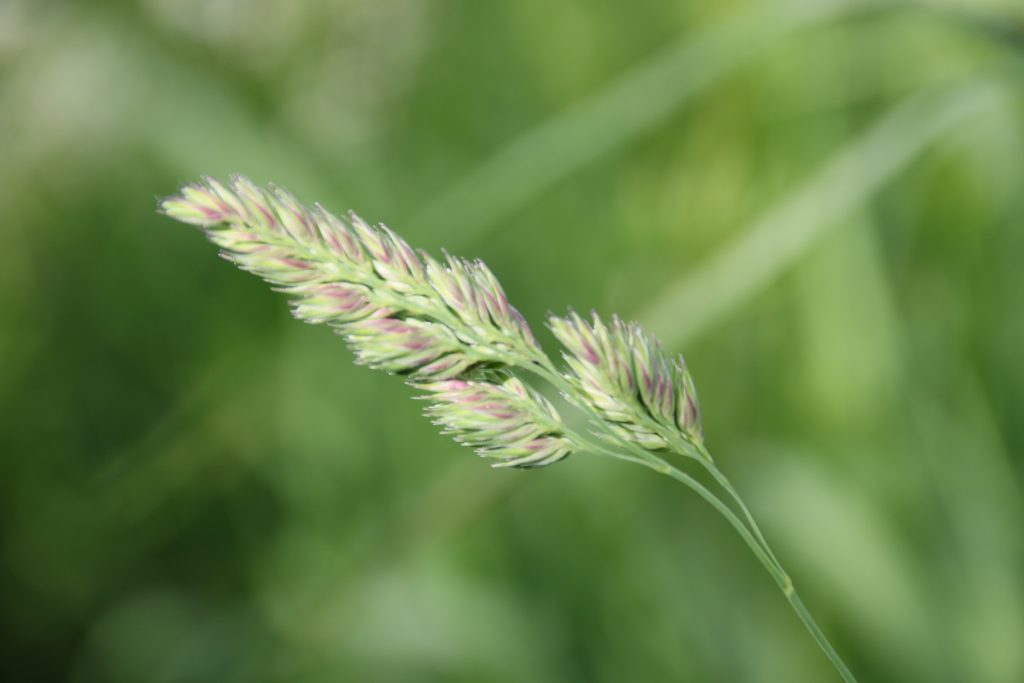
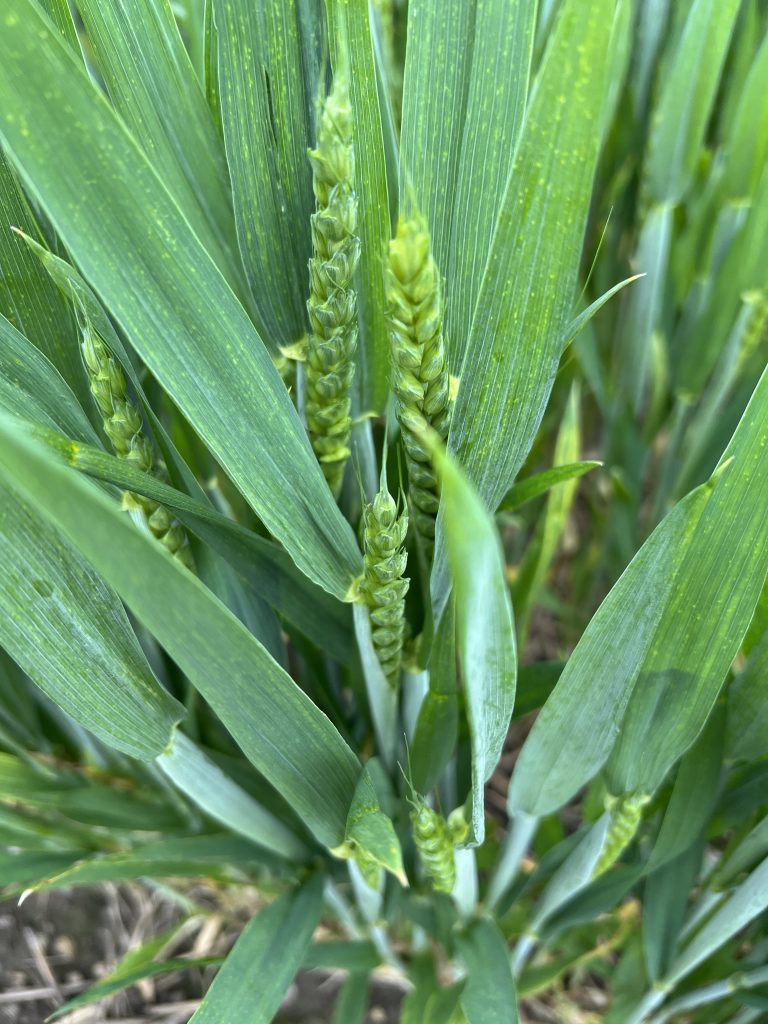
Arable “grasses”, cereals, have also produce green seed heads – hard compact grains of wheat, and softer barley, with its long awns or “beard”. It will be a couple of months before these ripen to gold, and another month before they are harvested.
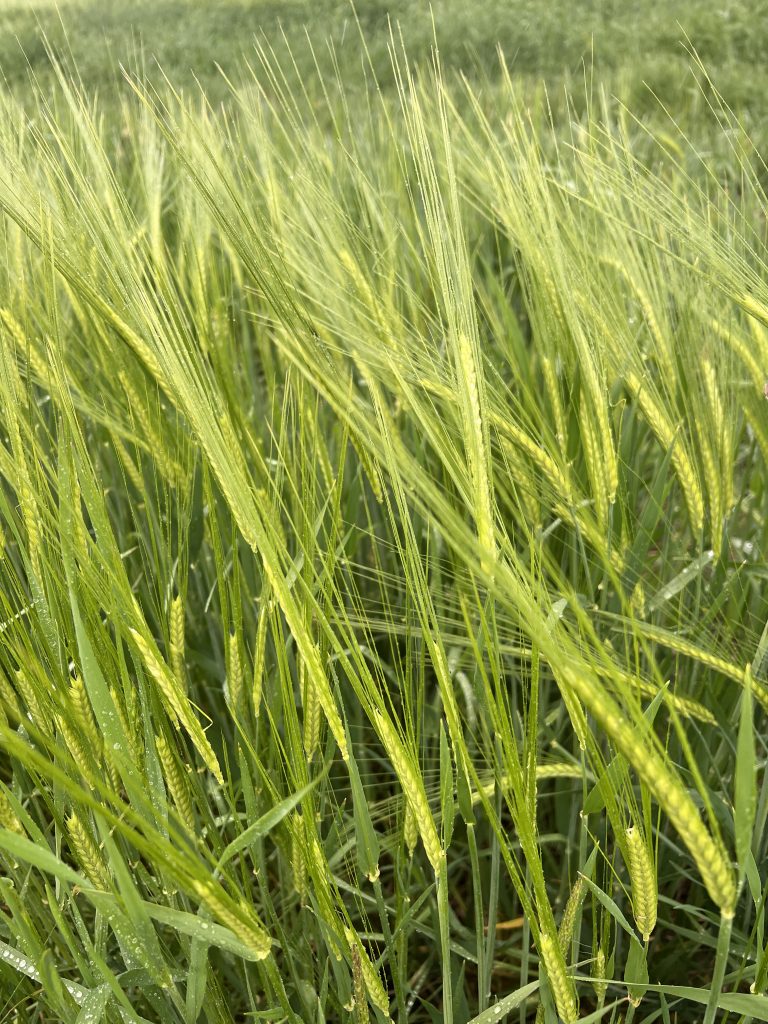
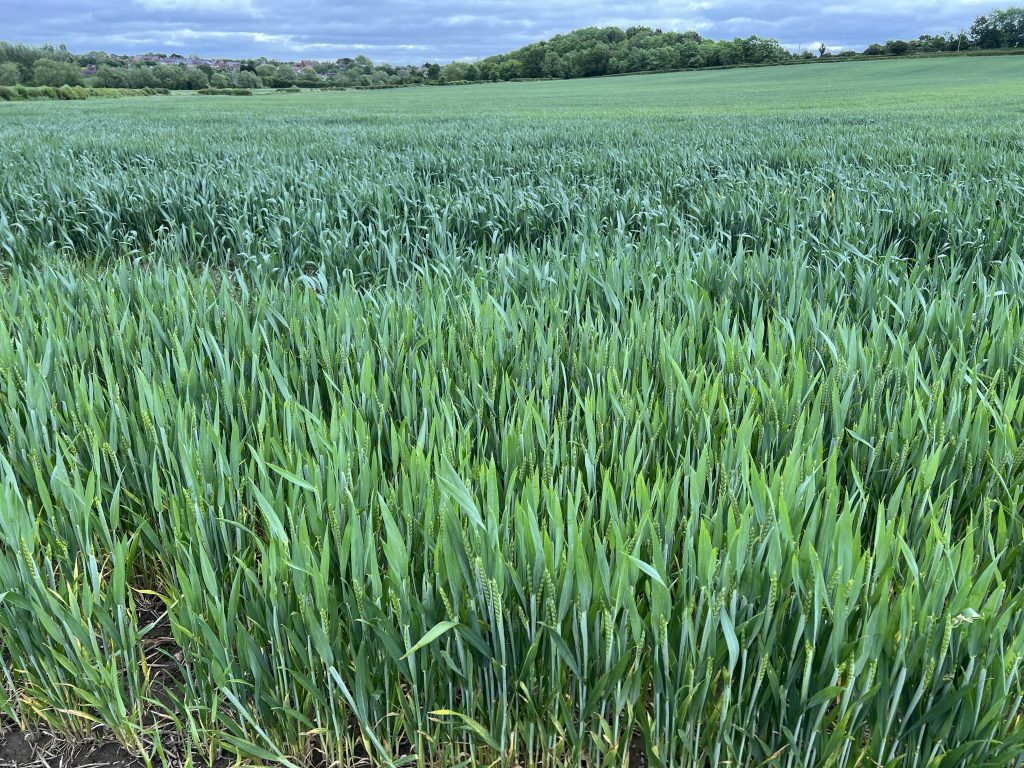
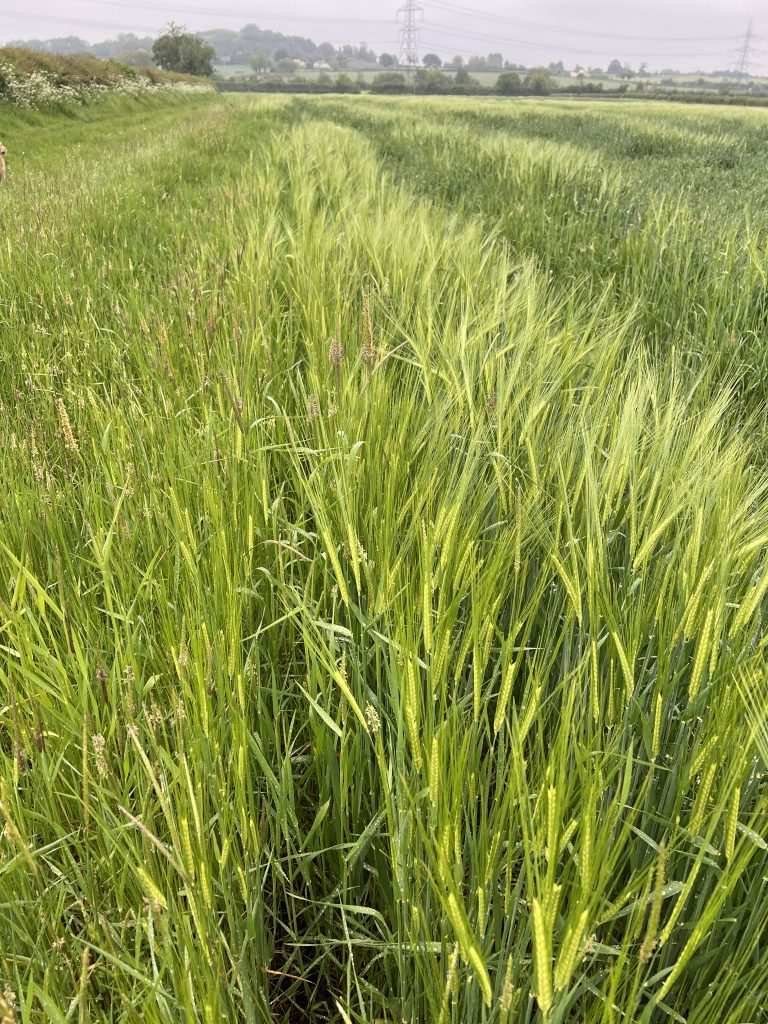
16th May – Greens and golds
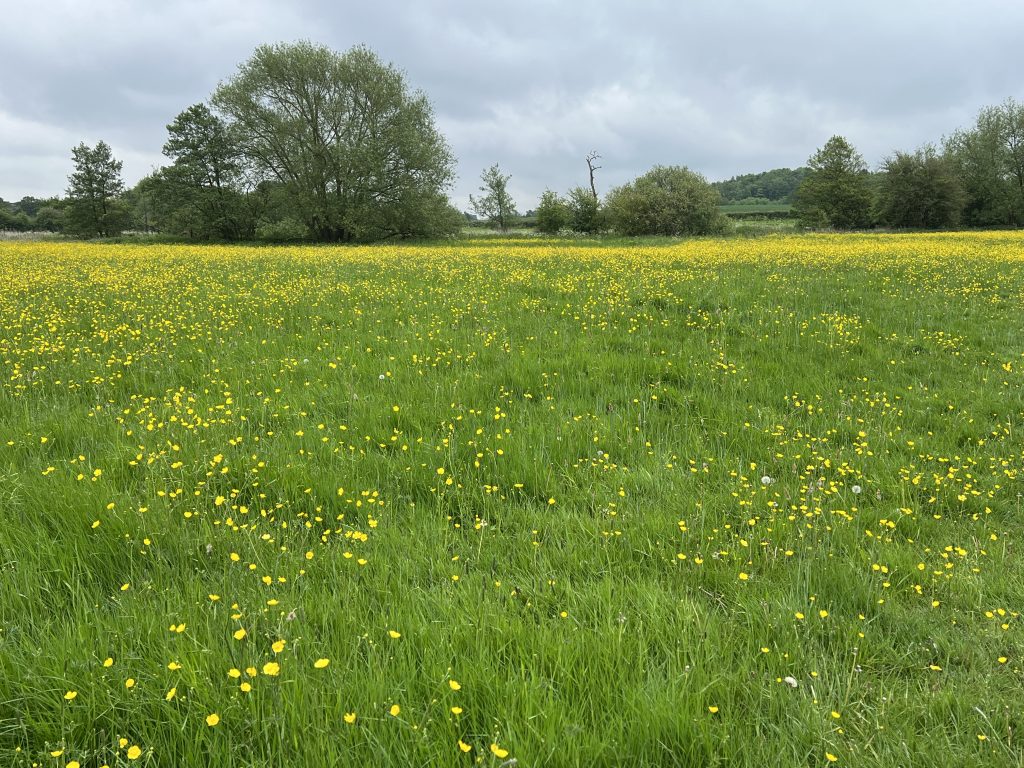
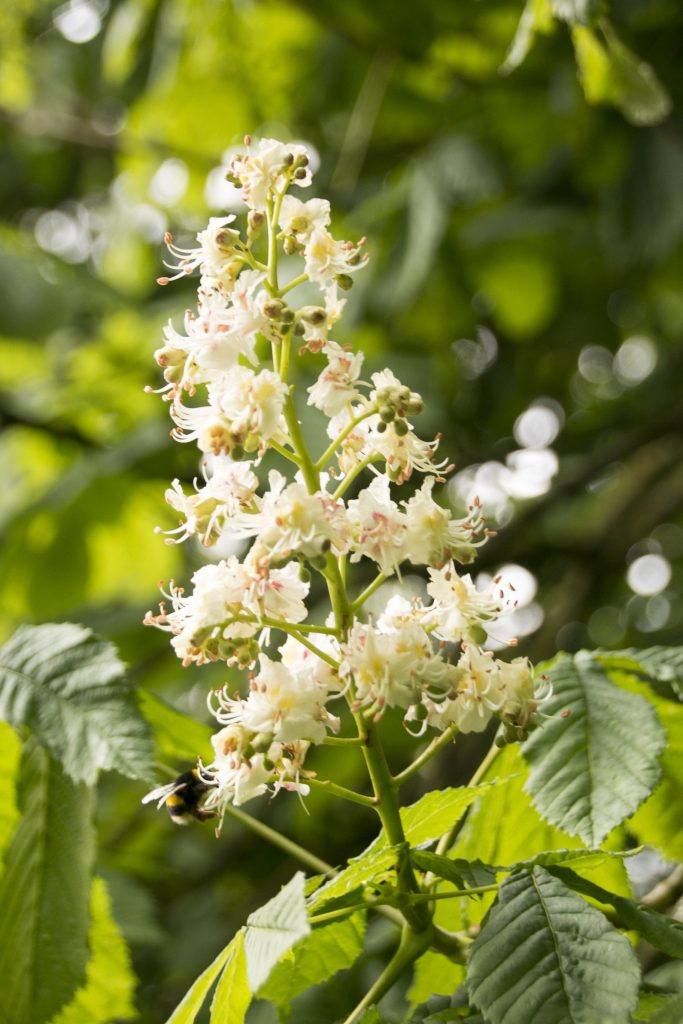
Horse Chestnut
A month ago we set off for a month touring Scotland, travelling from a landscape with hedgerows shimmering, a sheen of new leaf buds, to Western Scotland where hedges and trees were still almost bare. By the time that we left Scottish hedges were coming into leaf, and on our return to the Midlands the countryside was fully clothed in greenery, and meadows a colourful display of wildflowers. Horse chestnuts have blossomed with candle-like flowers, hawthorn blossom is almost over but still provides a display, and pink dog roses on thorny branches contrast with the yellow gorse blossom on the daisy-strewn path around the quarry edge. Red Campion borders the path that leads down to the village.
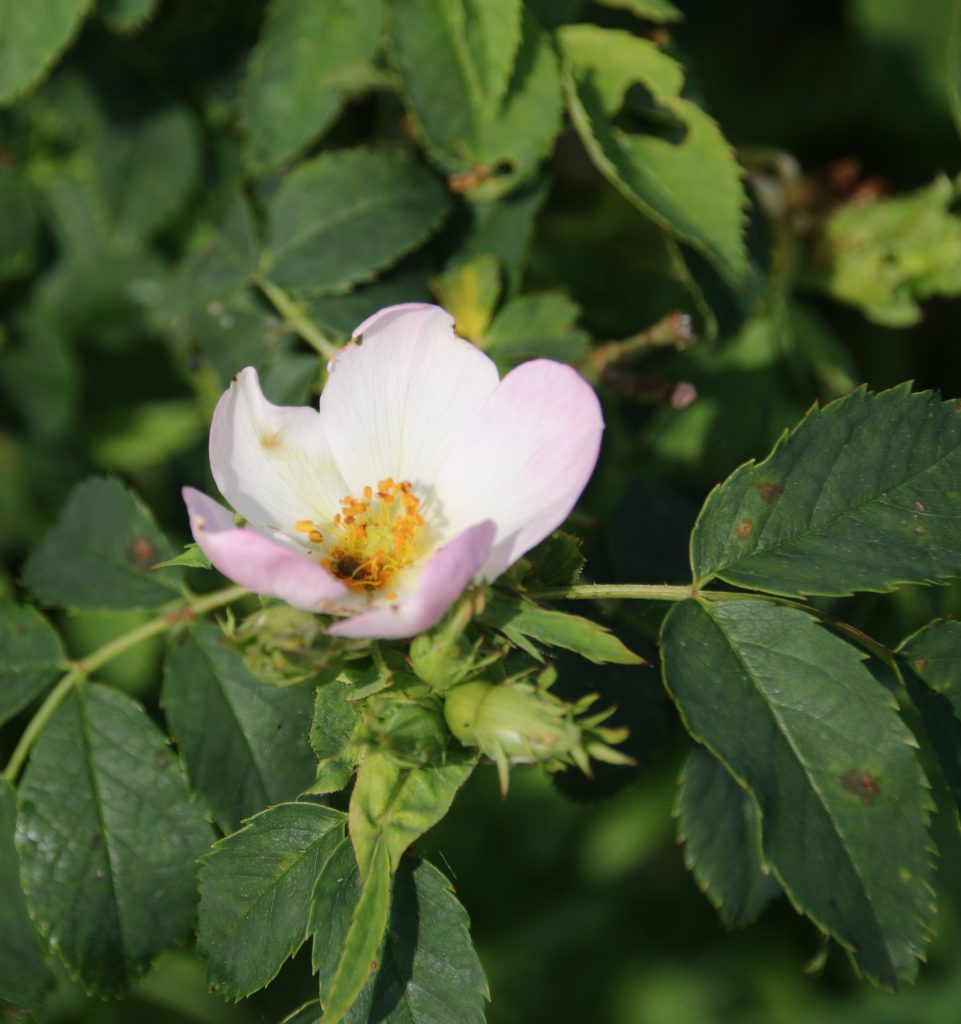
Dog Rose
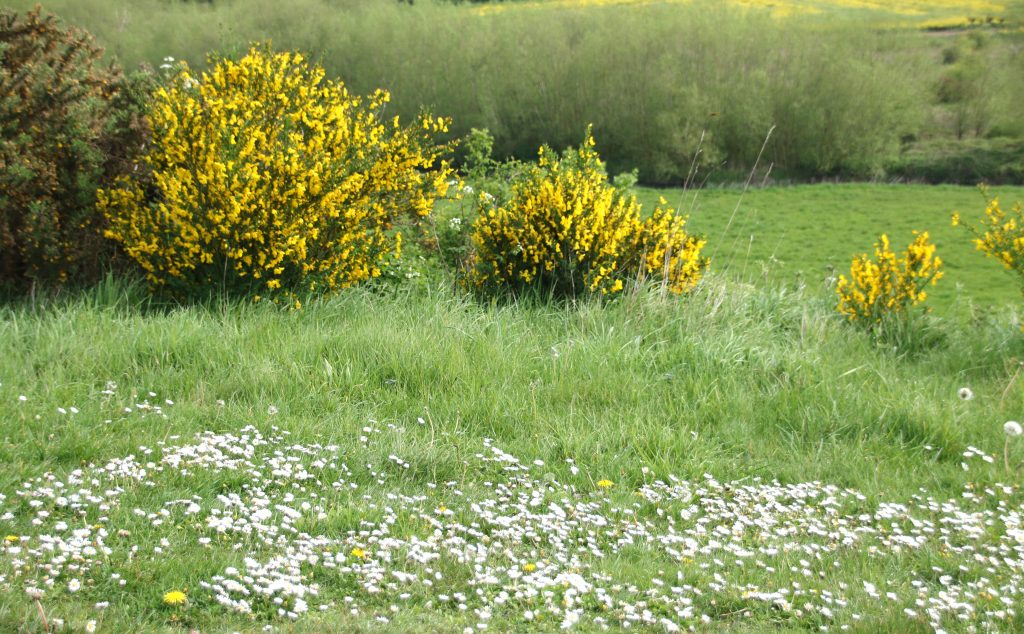
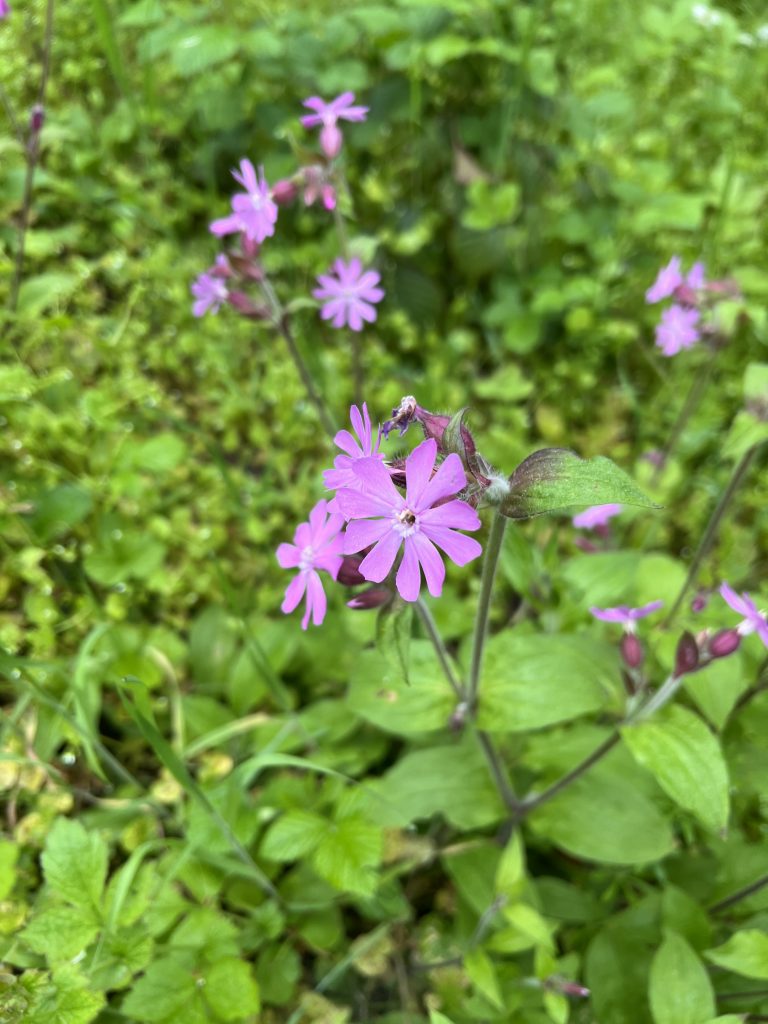
Red Campion
The “sheep field”, a water meadow bordering the river, has been wet for months, soft at the higher end, and squelchy where it dips down to meet the lane that descends from the front of our home before bending around to cross the river before heading into the next village. Now it is firm underfoot, with waist high grass, a sea of yellow meadow buttercups and pockets of cuckoo flowers. During our morning walk the grass is wet with dew, and even with wellies my trousers are soon soaked, as are the dogs as they bound through the grass. The ground is still damp in places, and slugs feed on dandelion seeds in the dips that still remain from the centuries-old ridge and furrow farming system. On the drier ridges it is bumblebees taking advantage of dandelions, in their case collecting pollen from the flowers.
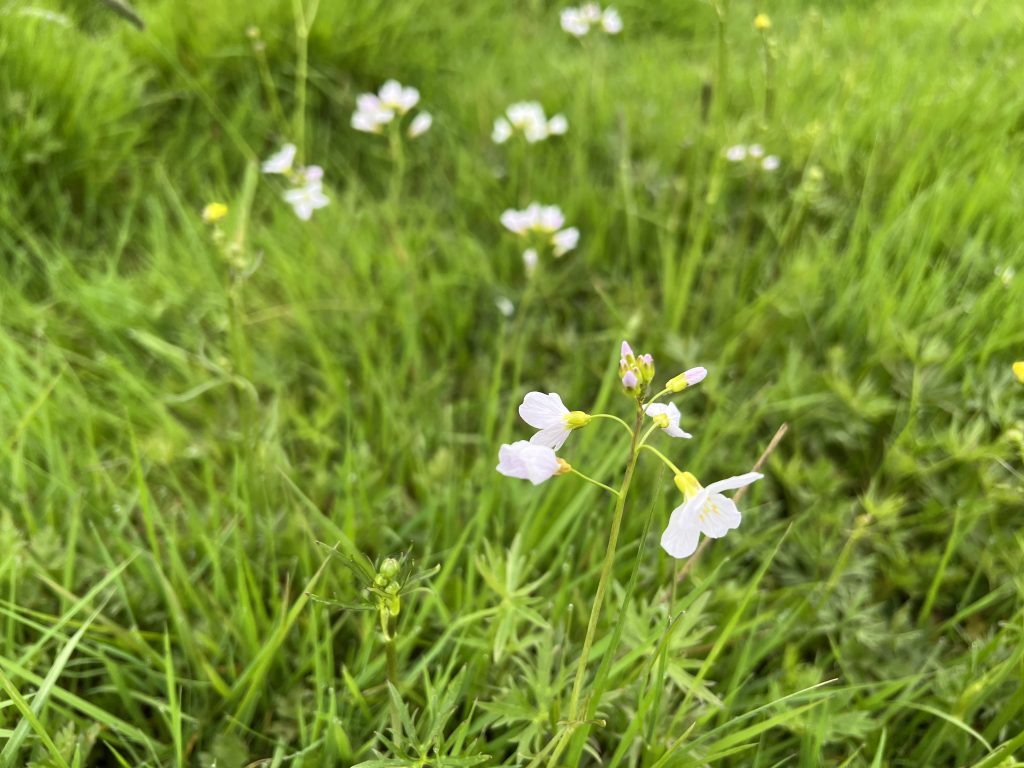
Cuckoo Flower
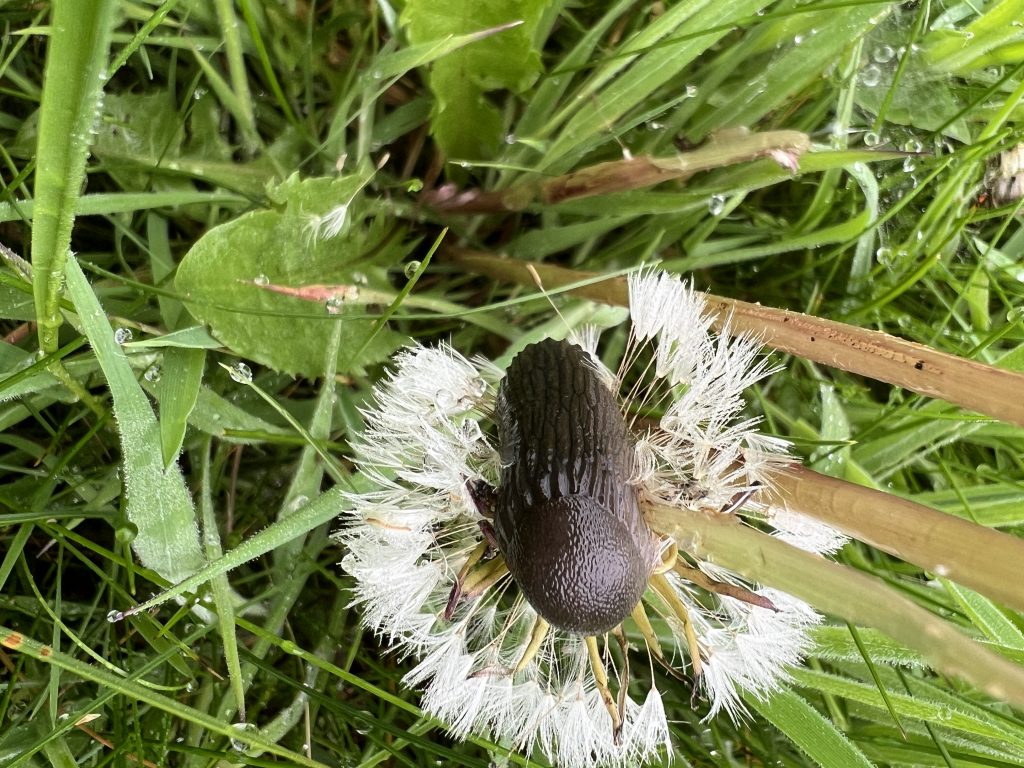
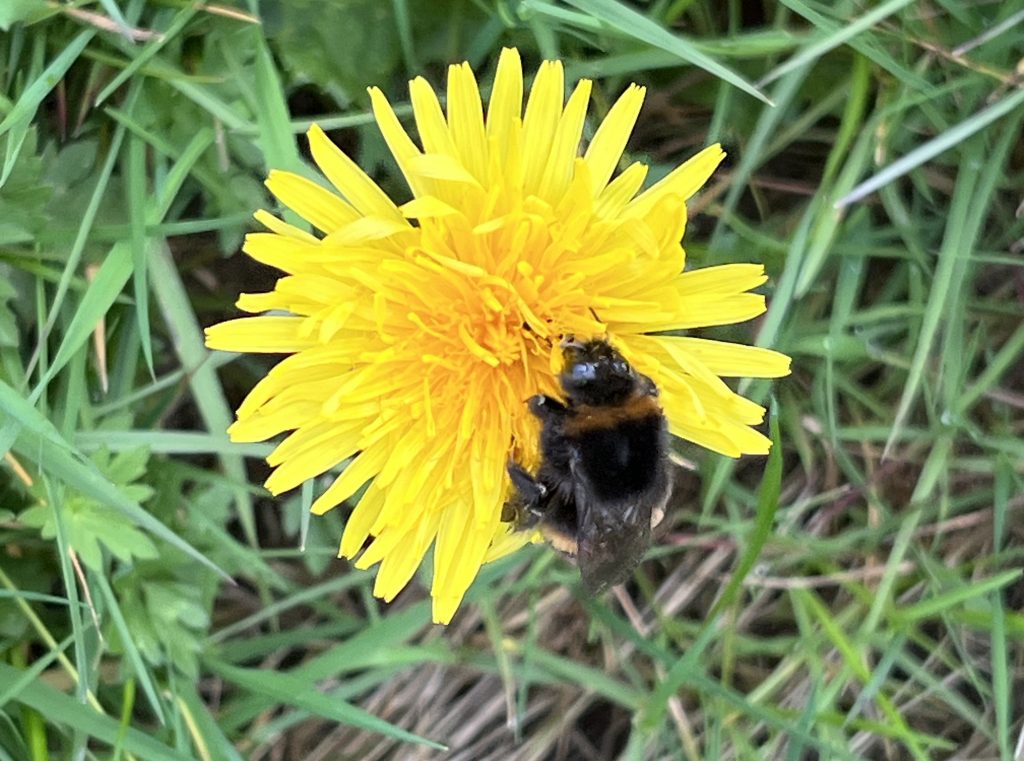
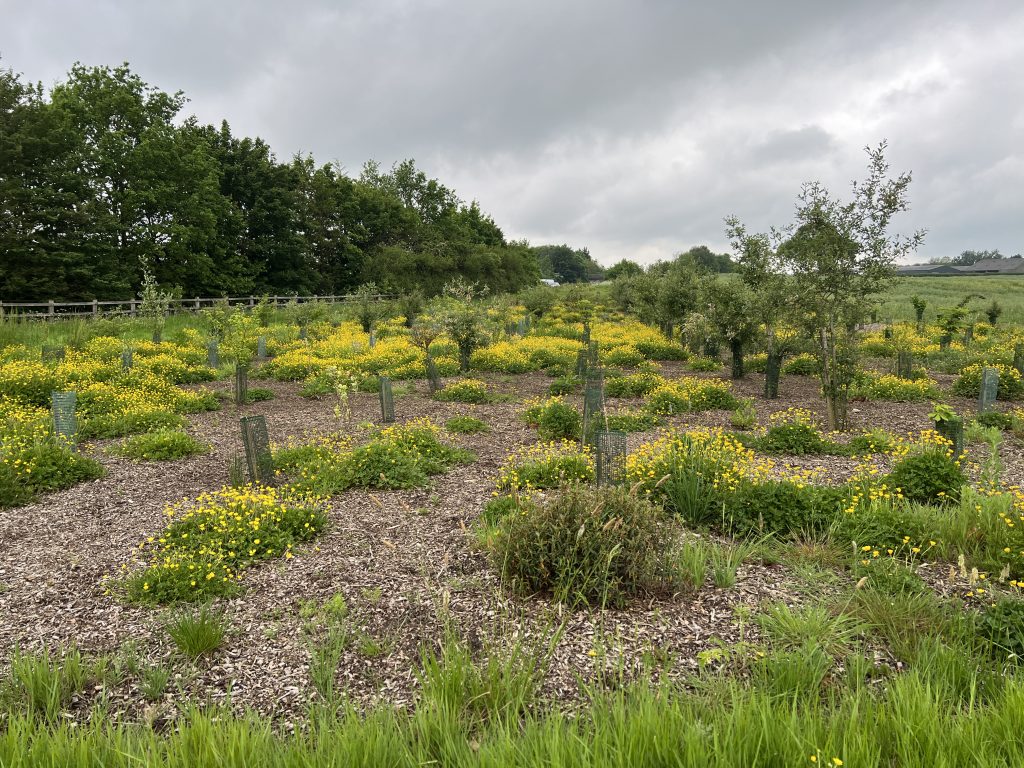
One of our routes passes a young patch of “woodland”, just a small plot of trees, planted only a couple of years ago by the Parish Council of a neighbouring village. The village school had a competition to name the wood, and voted to name it after a compatriot, a young lad who sadly died aged only 13. The wood has begun to mature, but it will be a year or two before the plants can be properly described as “trees”.
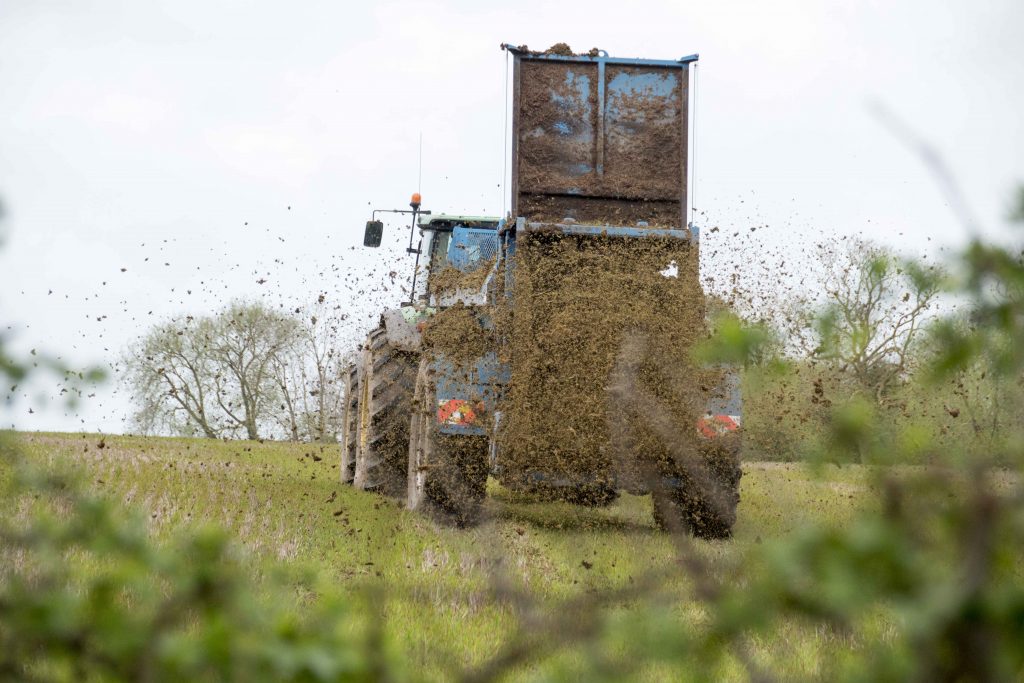
Agriculture has progressed through season during our Scottish break. On the day that we left manure was being spread on the field opposite our home, and we drove away leaving the distinctive odour behind us. The manure has now been ploughed in, the soil raked, and seeds drilled, likely to be Spring cereals.
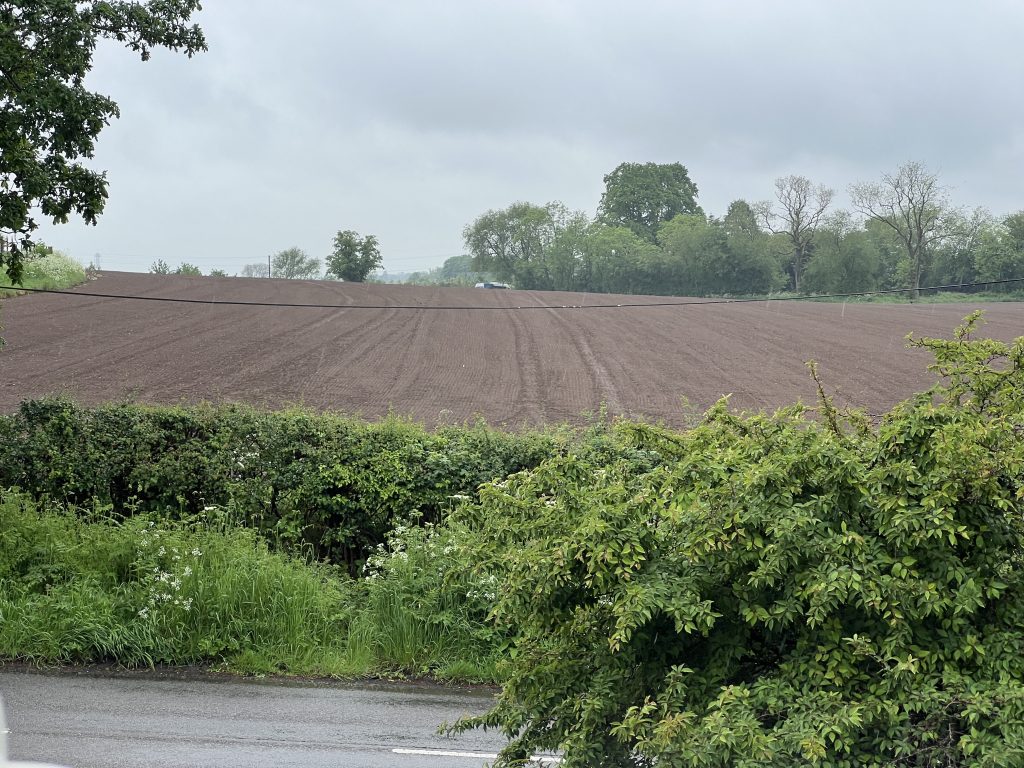
5th April – Spring flowers, and the mud continues
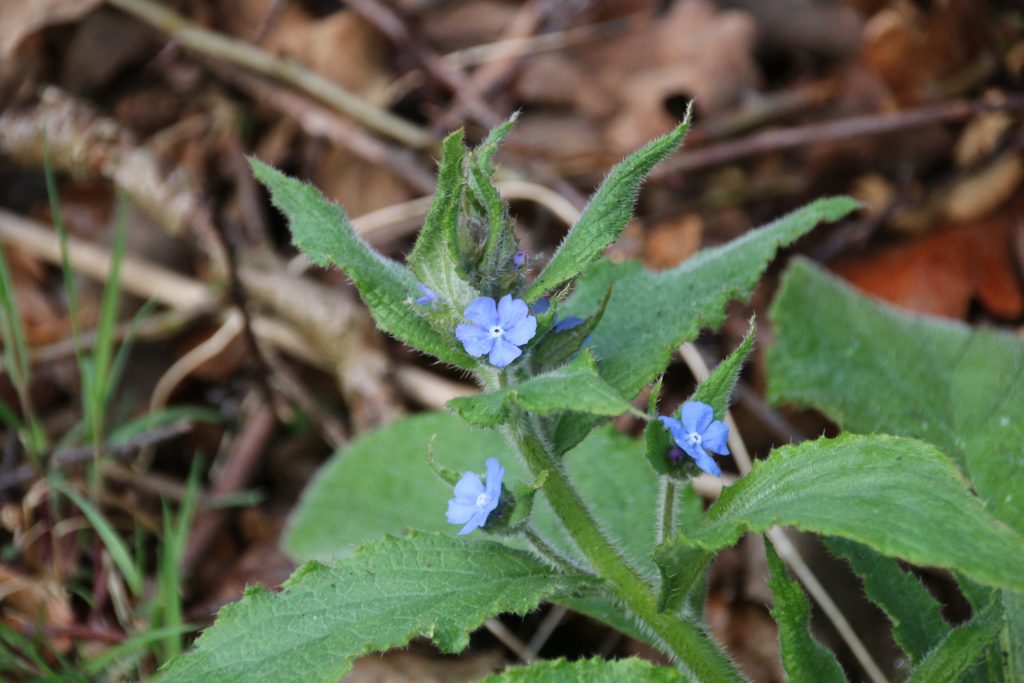
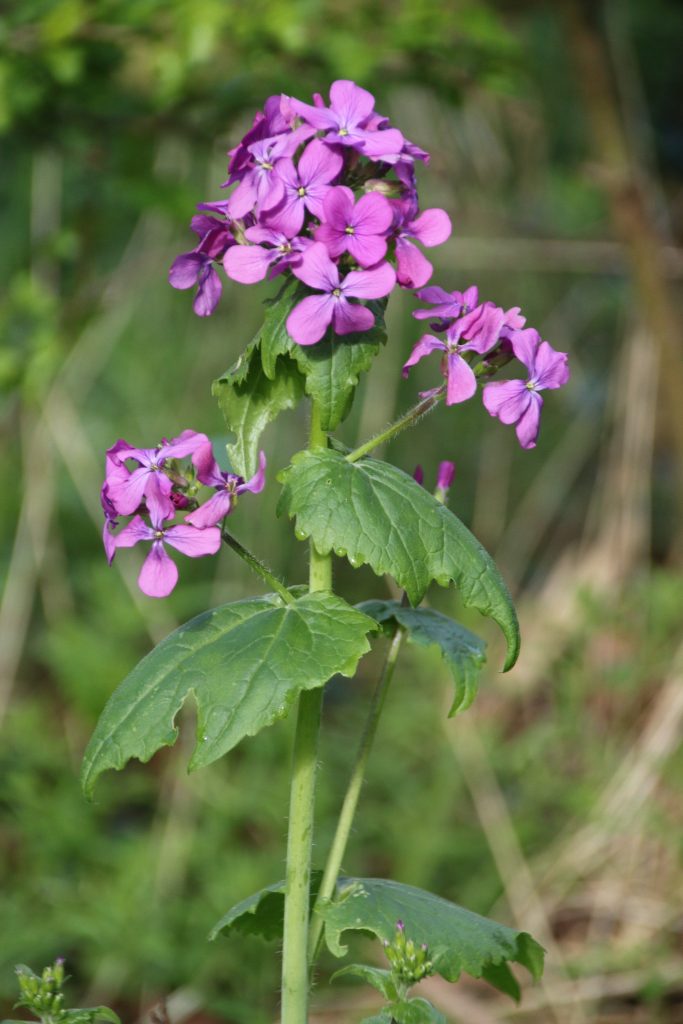
The rain may be continuing, albeit more showers than persistent, but the daily temperatures are increasing, and the days are lengthening. Wild plants are approaching the season when the rate of growth is at a maximum, a time of year when none of the requirements for vigorous growth, water, warmth, and light, are limiting. Woodland plants make the most of the light beneath trees that are not yet in full leaf, or in some cases, such as oak, still barely budding, to flower.
The path down to the village does not actually wind through woodland, but with mature trees bordering the track it is woodland plants that predominate along the grassy borders. The first bluebells are flowering, a little earlier than usual, although at the moment just isolated plants. Above our heads the sticky buds of horse chestnut have sprouted young leaves, at this stage hanging from the bud like a flannel left out to dry.
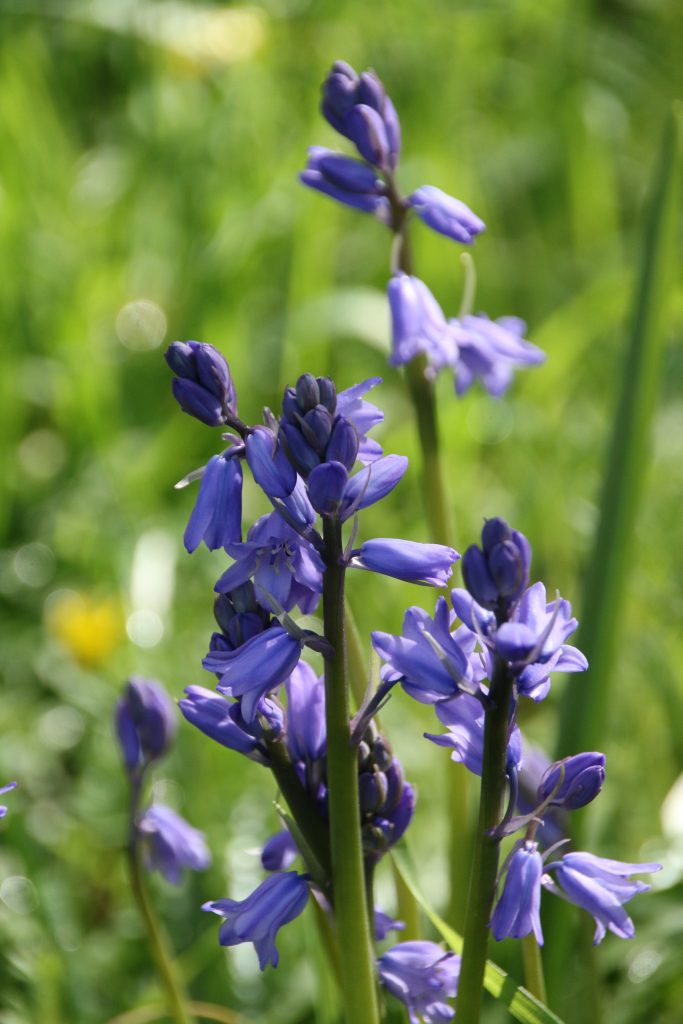
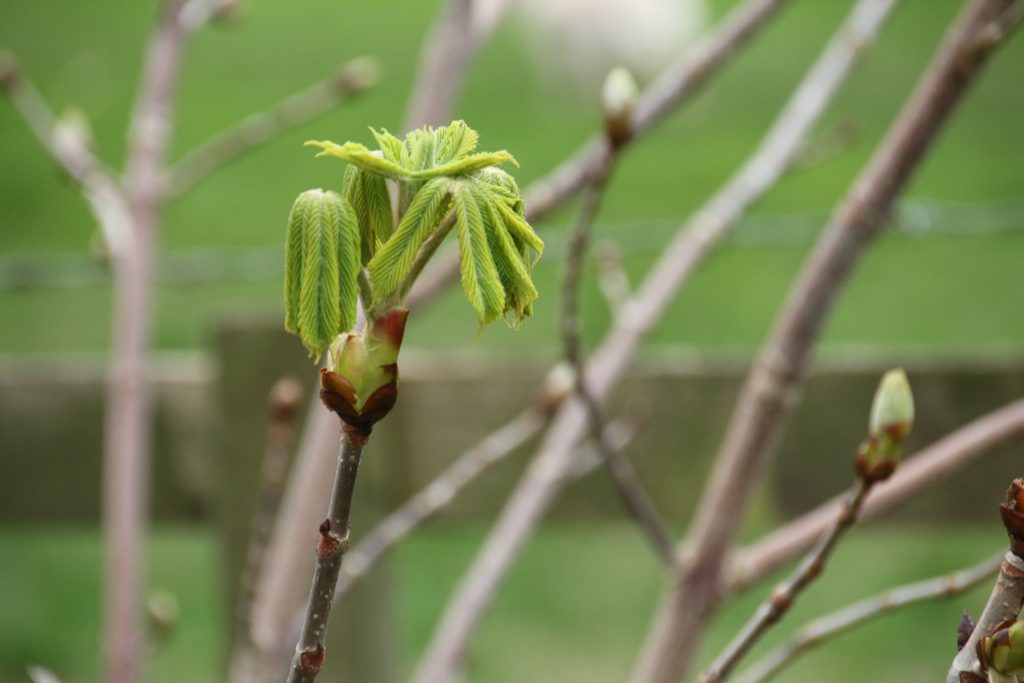
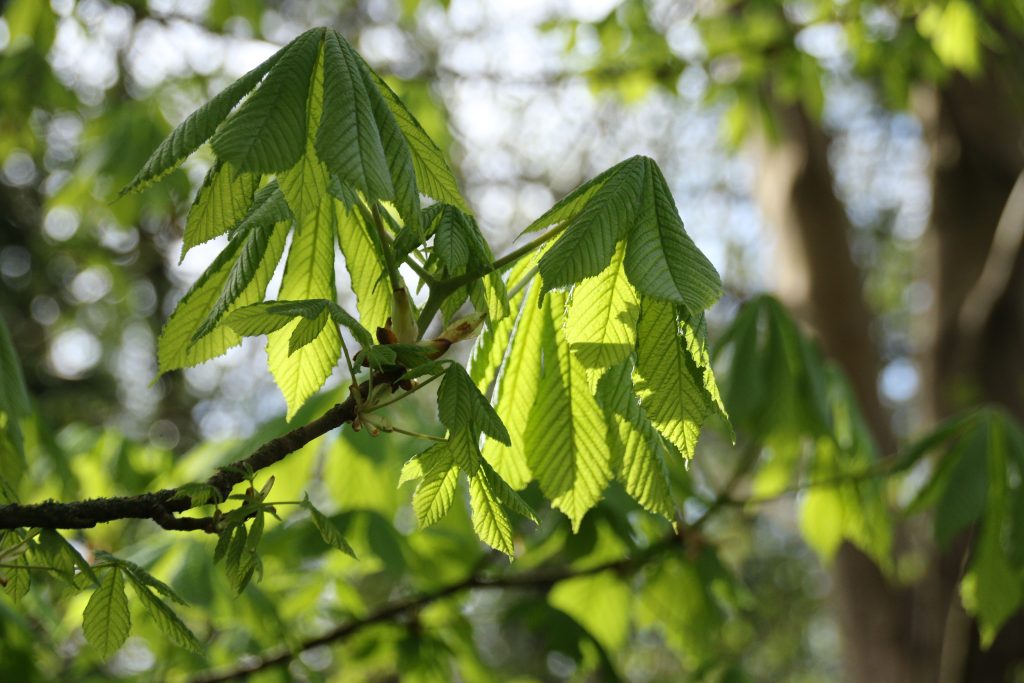
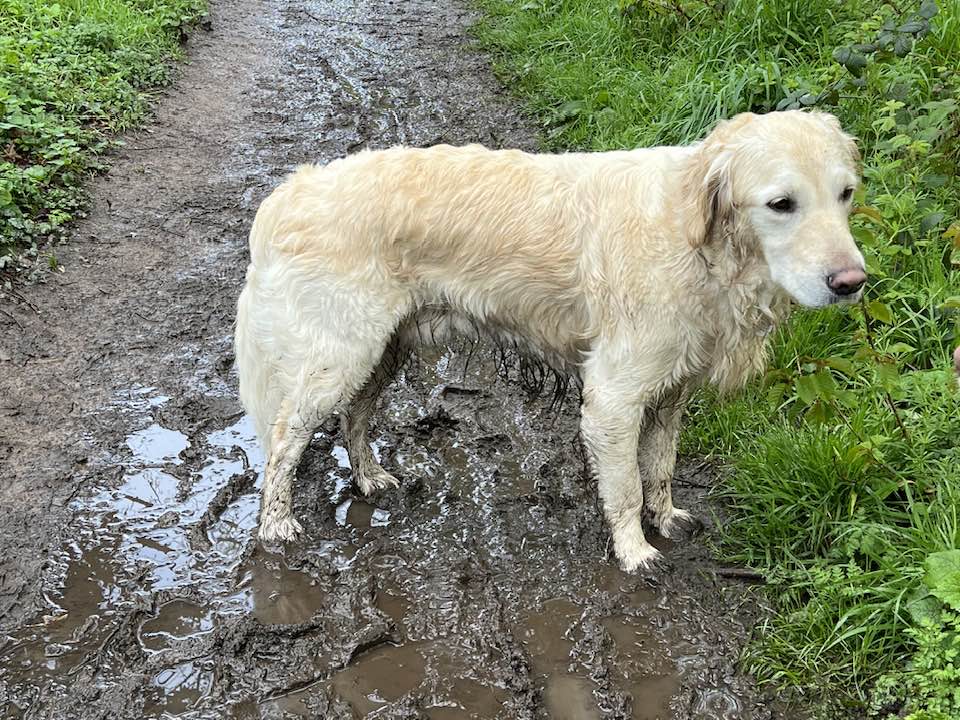
Many of these plants enjoys damp ground, and so should thrive during this wet season. We now have no mud free walks, with even the track to the village needing wellies. In the field behind us a combination of rain and tracks left by tractor and trailer delivering fresh manure to a neighbouring field, heaped up to rot for a season, has meant that the usual grassy track is as muddy, if not more so, than elsewhere.
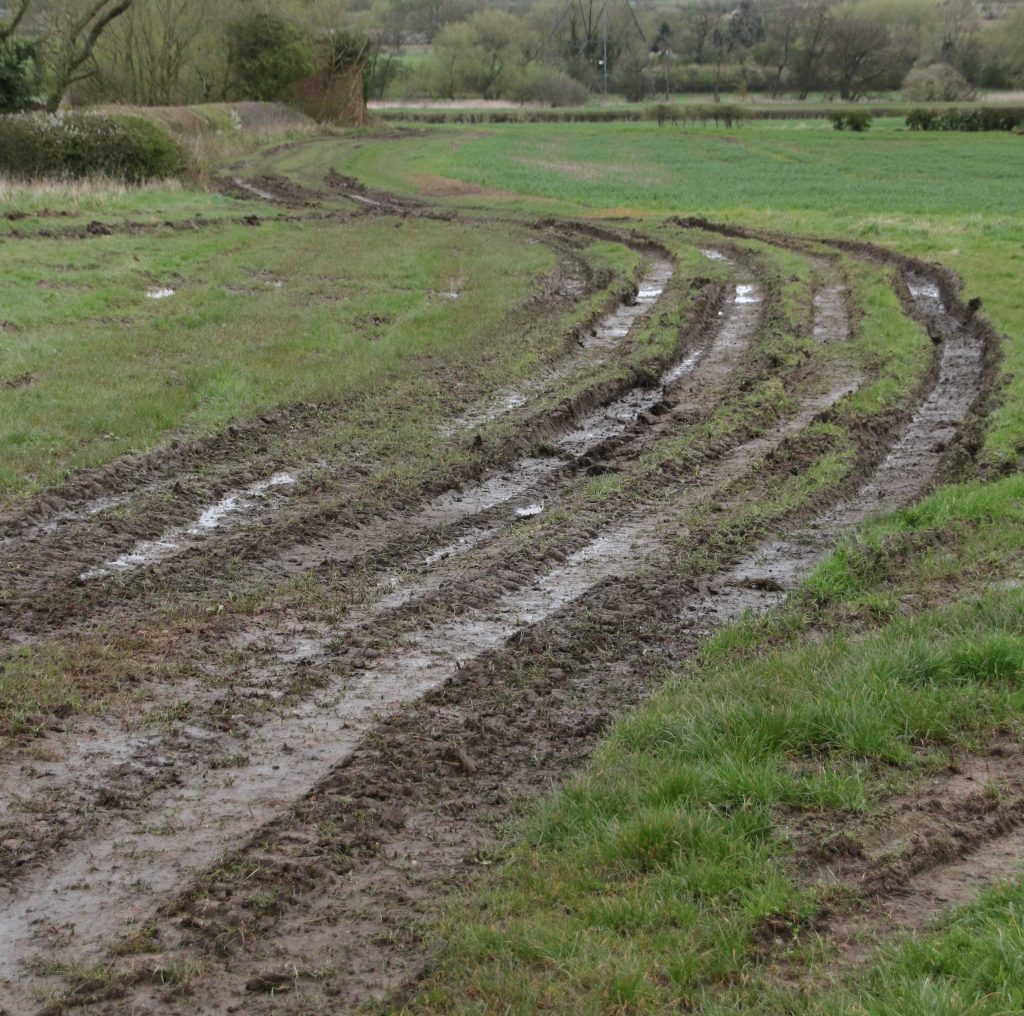
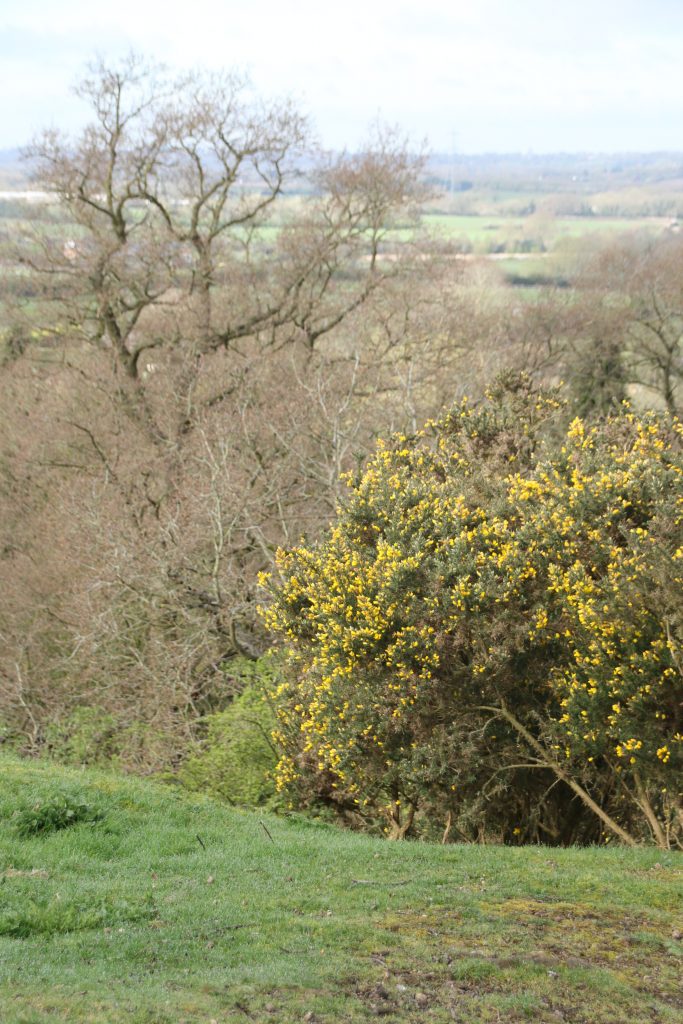
When our walks pass Croft Hill, as they do on most days, I make the effort to climb to the top without stopping, exercising heart and lungs. It is not particularly high, only 128 metres, but is significantly higher than the local countryside, and so is a popular viewpoint. Patches of gorse grow on the Hill, flowering all year round, but more so from Spring onwards than the depths of winter. Today more rain could be seen approaching from the south, and so the dogs and I beat a hasty retreat back home.
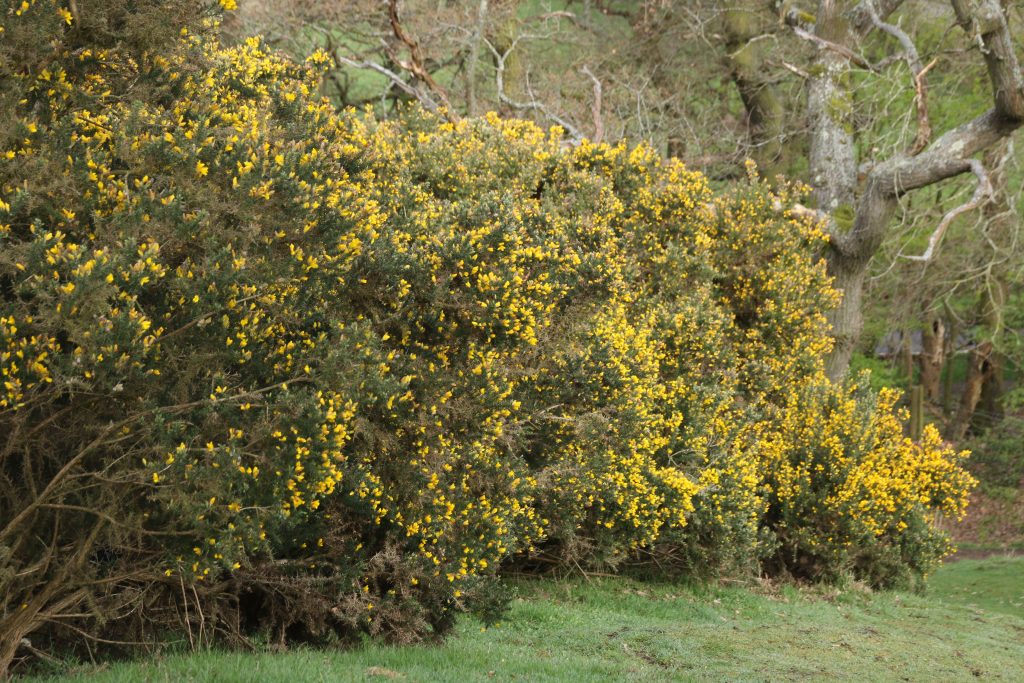
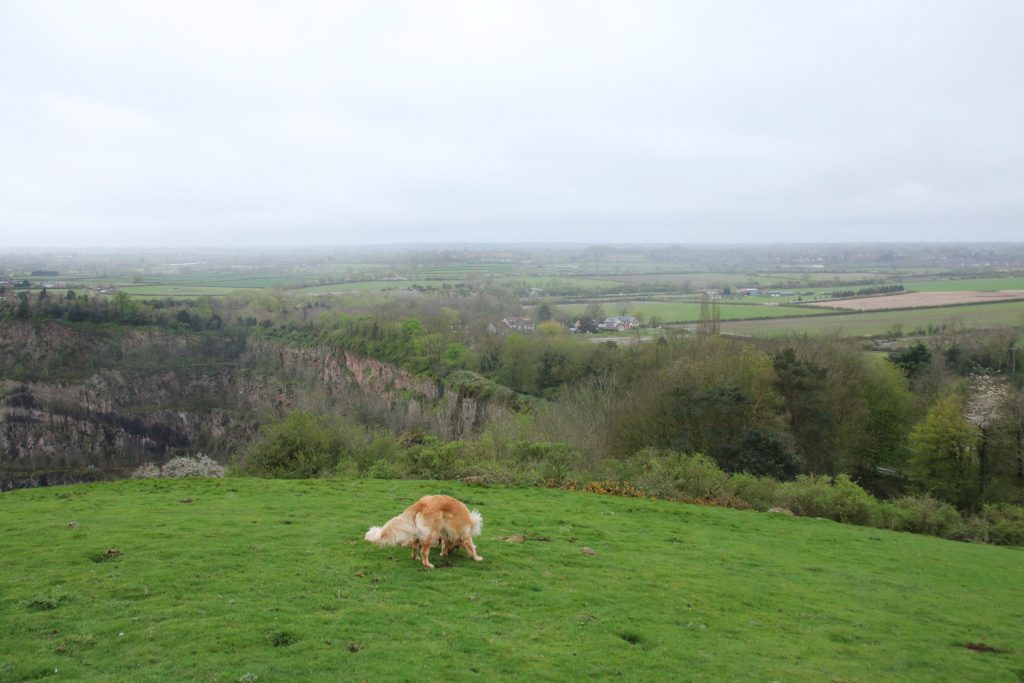
23rd March – Blossoming
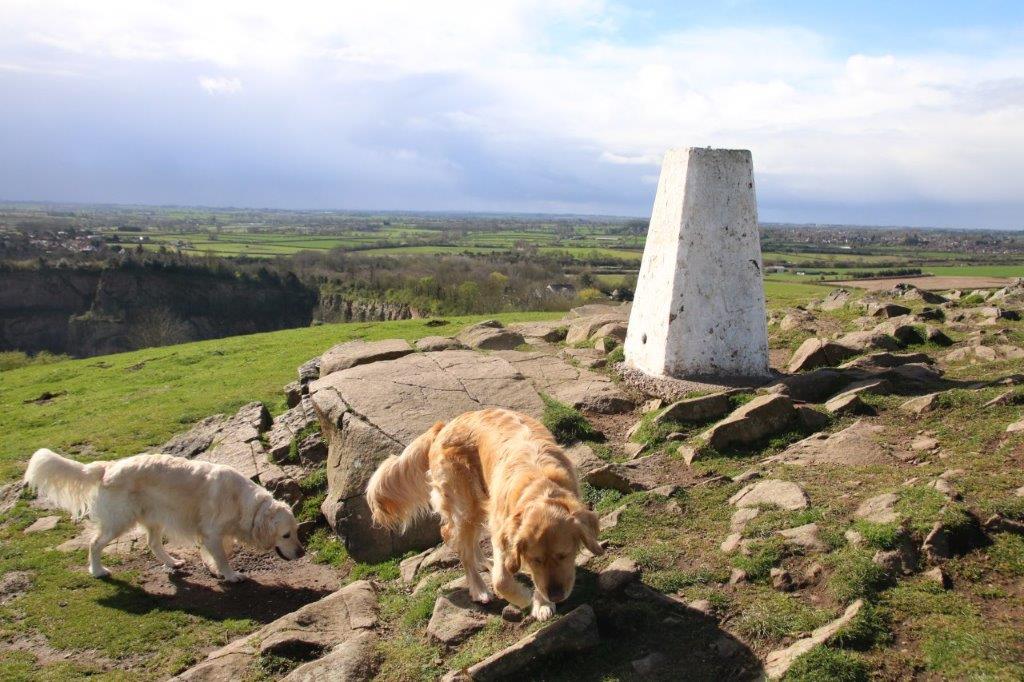
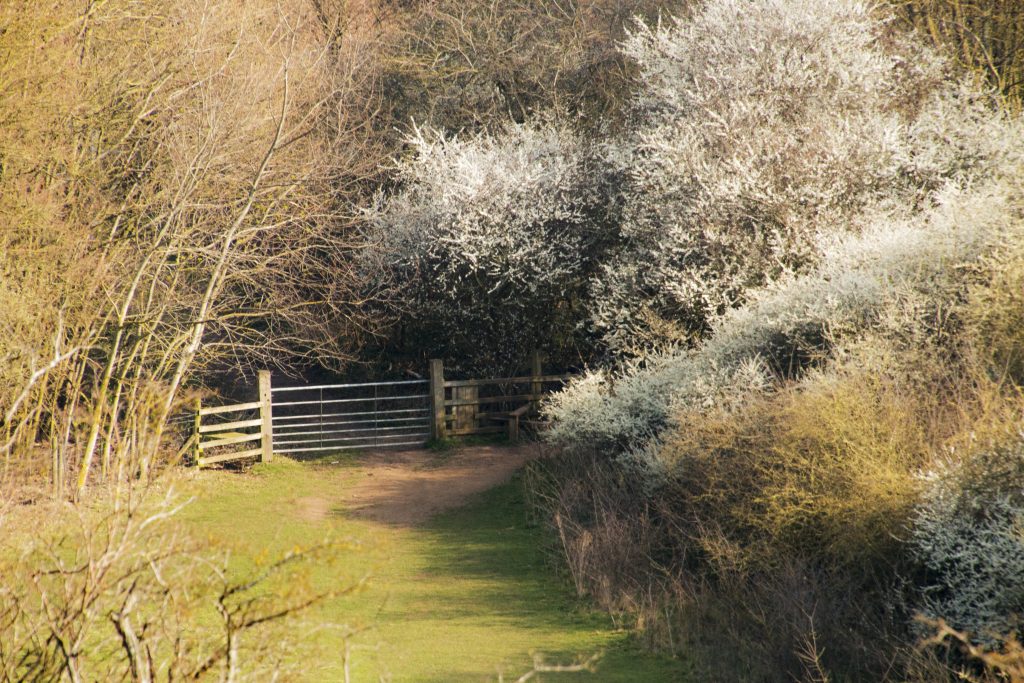
Bright sunshine but a brisk cold wind blowing at the top of Croft Hill. Dark clouds lined up along the horizon, threatening showers rather than rain. It was a morning go blow the cobwebs away, and I stood for a while being buffeted by the wind and looking at the familiar view as the dogs chased each other on the slope below. Wind always makes the dogs more lively. The hedgerow leading down to the gate at the bottom of the Hill is frothy with a mass of blackthorn blossom. Sheep grazing in a field gather together in the lee of a hedge, sheltering from the wind.
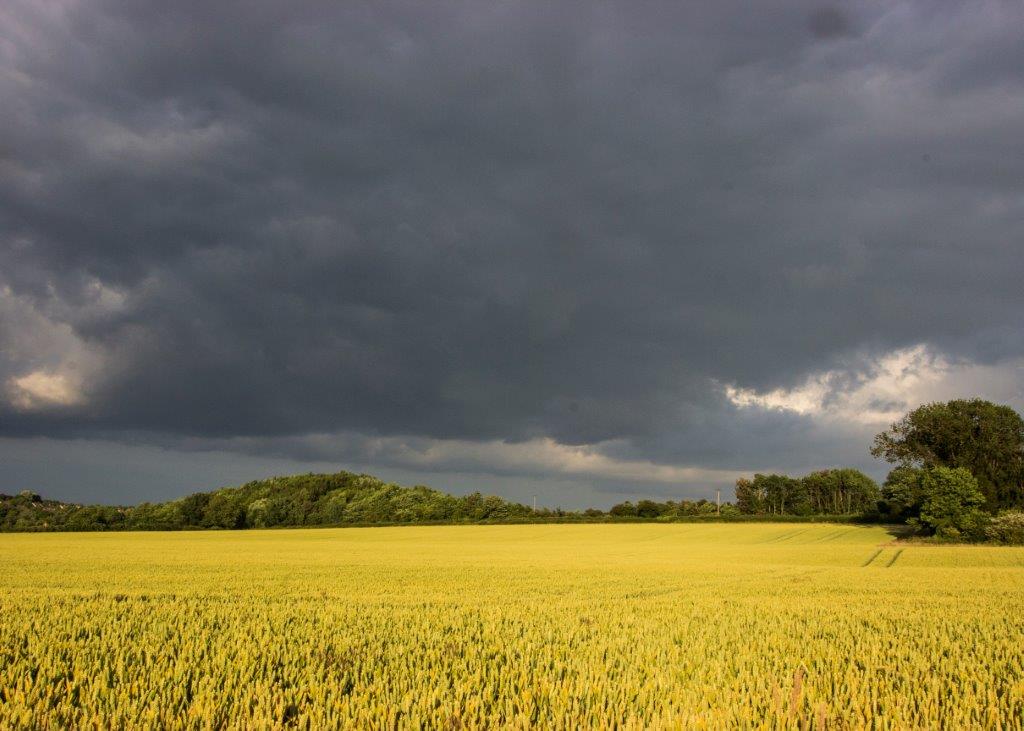
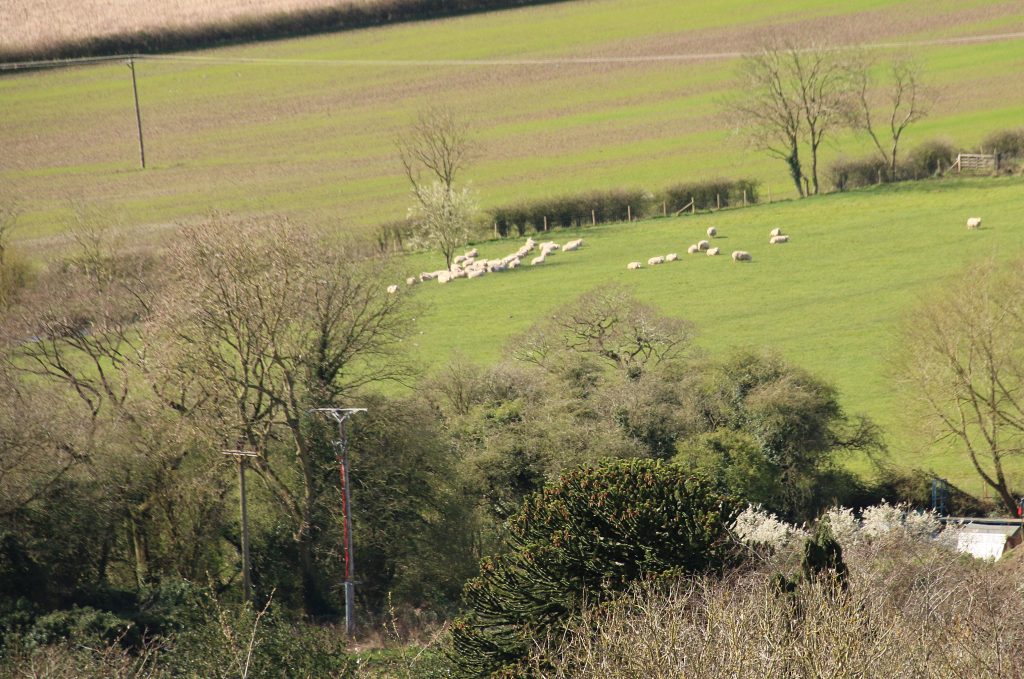
The fields around us have transformed from brown earth speckled with green to a vibrant green carpet thanks to a burst of growth by the cereal crop. Rape has begun to flower, with some fields already fully yellow and others with increasingly yellow patches.
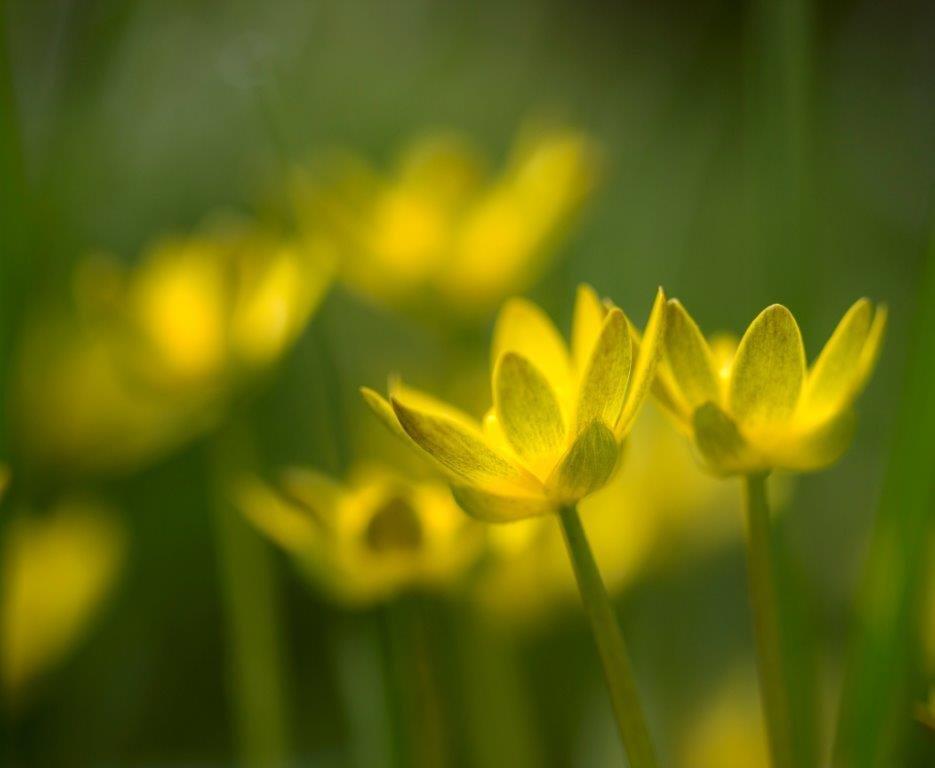
Descending the Hill we follow the track towards the village with a plan to cross visit Croft Glebe, originally the village cricket pitch, now an enclosed field with scattered trees, managed by the Woodland Trust. Beside the track hazel leaves are emerging, and yellow celandine flowers are abundant in the grassy edges of the path. I am pleased that the wind is drying the muddy patches, and with a bit of care I might get the dogs home clean.
We cross the road to enter the Glebe. We often meet fellow dog walkers from the village here, and the dogs play together, but today we have the field to ourselves. The more mature trees are horse chestnuts, conker trees, with “sticky buds” – the buds are sticky to touch, which helps to prevent damage by small insects which get trapped on the gluey surface of the buds.
After a circuit of the field, we retrace our steps as the dark clouds deliver a brief shower, barley a nuisance, and we are dry by the time we get home
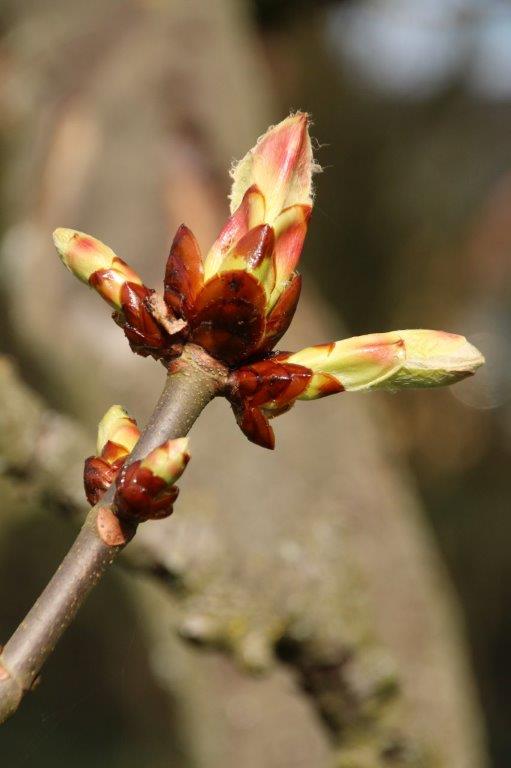
14th March – Hedgerow Life
A second consecutive dry morning, although more rain is forecast. We are now resigned to having to hose mud off of dogs and wellies at the end of each walk, whatever the route. Nevertheless walking on a pleasantly mild morning is a pleasure, listening to birds calling from hedgerows. No doubt some will have started to nest-build. Farmers are banned from cutting hedges, usually flailing the hedge tops to limit height and keep growth dense, after 1st March to protect nesting birds, although a delay including these previously EU rules into UK legislation means that technically hedges are not protected for the time being this year. Fortunately, farmers around us completed hedge cutting over Winter, as is traditional.
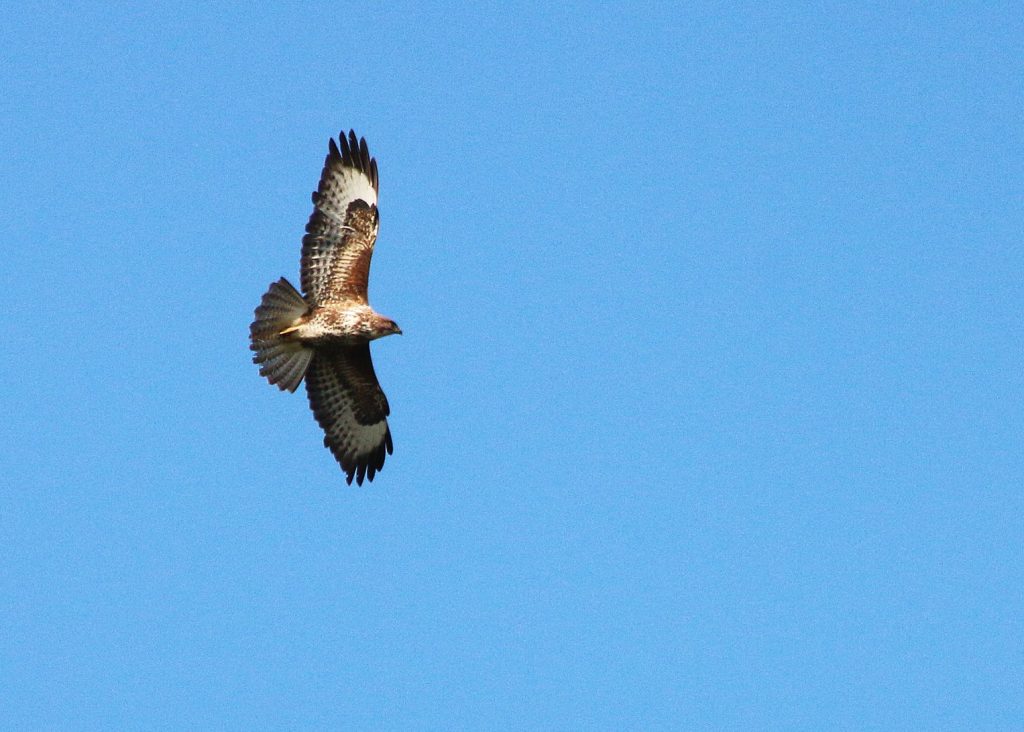
I’m not very good at recognising birds just from their song, other than the most common species. Fortunately I have discovered the “Merlin” app, excellent at identifying bird song, even on a breezy day which creats more background noise. Standing in the first field by the gate from the Lane the app quickly identifies a Robin, Dunnock and Greenfinch in the adjacent hedge, as well as the always-present skylark singing overhead. An easily observed and identified bird, wheeling and gliding above me, was not calling – a buzzard circling over the hedgerows and fields looking for its prey, small mammals and carrion. Its call is a familiar ethereal “mewing”, almost eery when first heard, especially if the buzzards are out of sight.
9th March – Water and Waste Removal
Despite an improvement in the weather, the paths remain muddy, a sign that the fields are sodden. In consequence the ditches in the fields have been dredged, a tractor-mounted bucket scooping out the silt and weed growth that gradually fill the ditches over time. Field drains, flexible perforated pipes buried below plough-depth, allow excess water from the soil to run into these ditched, and this won’t happen if the diches are full of silt, and any water that does make its way into a ditch wont flow away. The ditch dredging will be beneficial in future wet seasons, but at the moment the result is muddy paths, thanks to tractor tyres, and piles of material pulled out of the ditches.
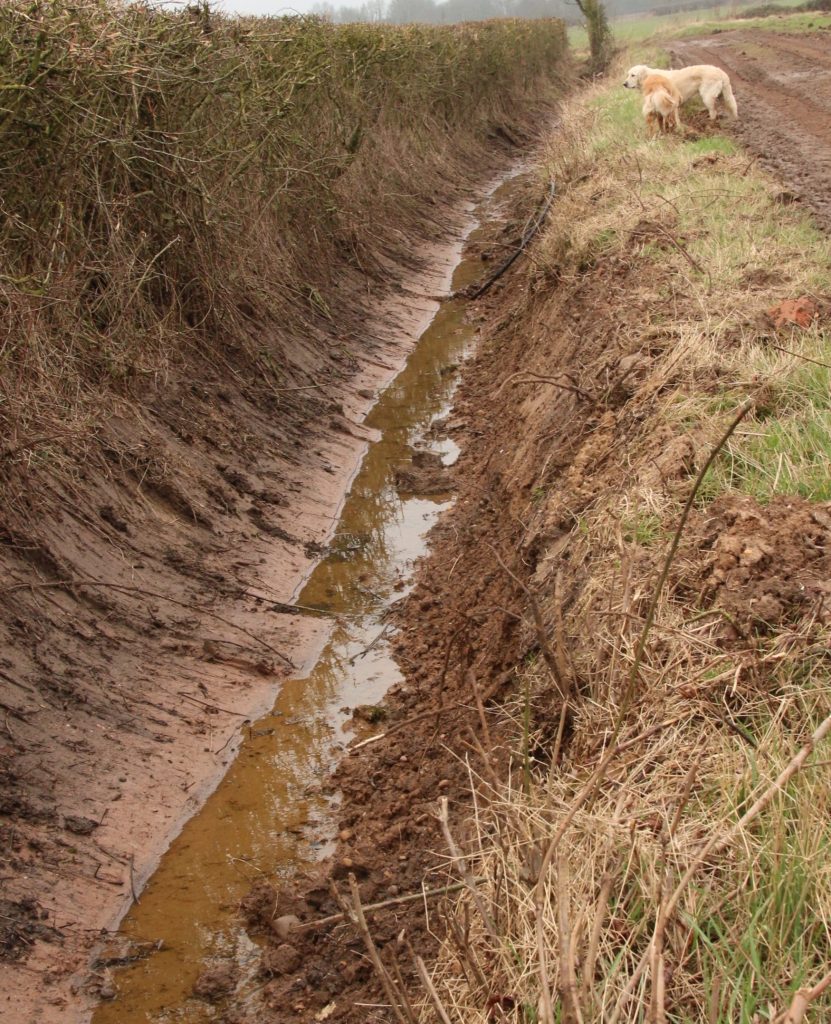
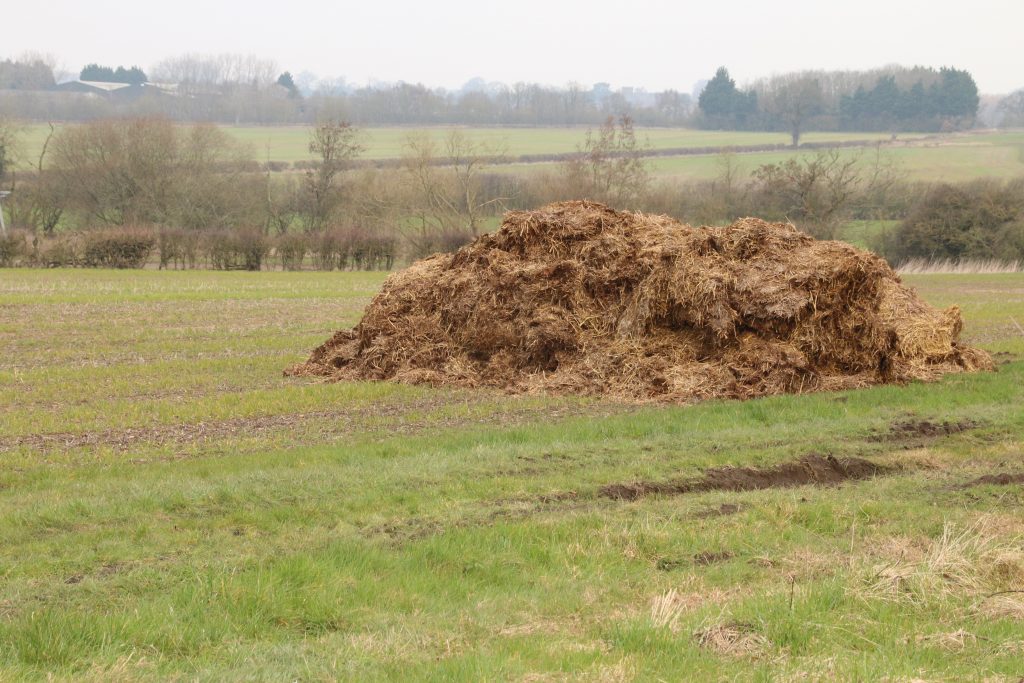
Most fields around us are arable, growing crops, although sheep graze a field further down the Lane, and from late spring, when the ground is drier and less likely to flood, sheep are introduced onto the riverside field in the shallow valley behind our home. Nevertheless, local cattle have made their mark in the fields. Many beef cattle are kept indoors over winter, but continue to produce quantities waste. During summer grazing the “cow pats” break down into the pasture, feeding the grassland, but for cattle in barns the waste must be removed, and supply exceeds demand for fertilising fields (which in any case rely mostly on chemical fertilisers). Piles of Cow-Poo, dung heaps, are dumped in suitable locations, theoretically where water running off the piles will not enter rivers, to rot down over summer before being spread on fields at the end of the season. Two such piles have appeared close to local footpaths, for the time being quite small heaps. Despite steaming gently on a cold day, the piles do not give out much of an odour, the biggest problem being discouraging the dogs from eating the stuff.
Nature is active in the midst of this agro-industry. A skylark sings enthusiastically and continuously high above the fields. I spot 2 large male hares chasing across a field just a second before Sam does, and I am able to stop him from running after them. But he bides his time, and when we get closer to the gateway into the field he sprints off, despite the hares having long gone. He doesn’t run far before returning back to me. Back at the gate onto the Lane the ground has been churned up by the tractor and trailer delivering the cow dung, and a crow takes advantage of the disturbed mud to seek out worms and other grubs.
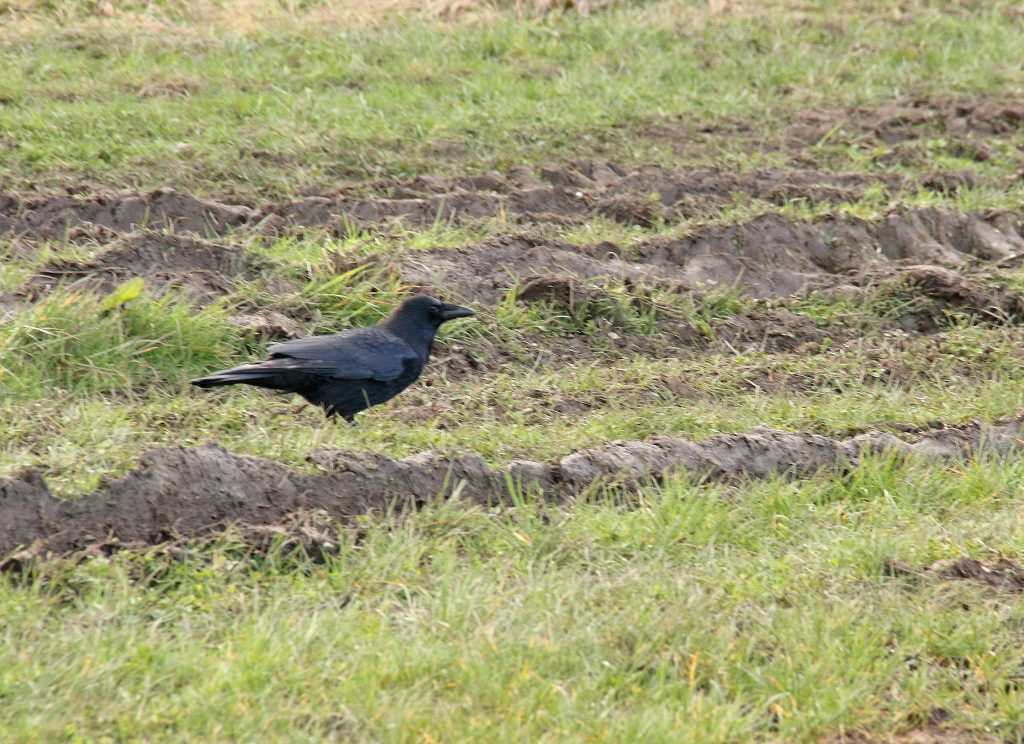
5th March – weed control
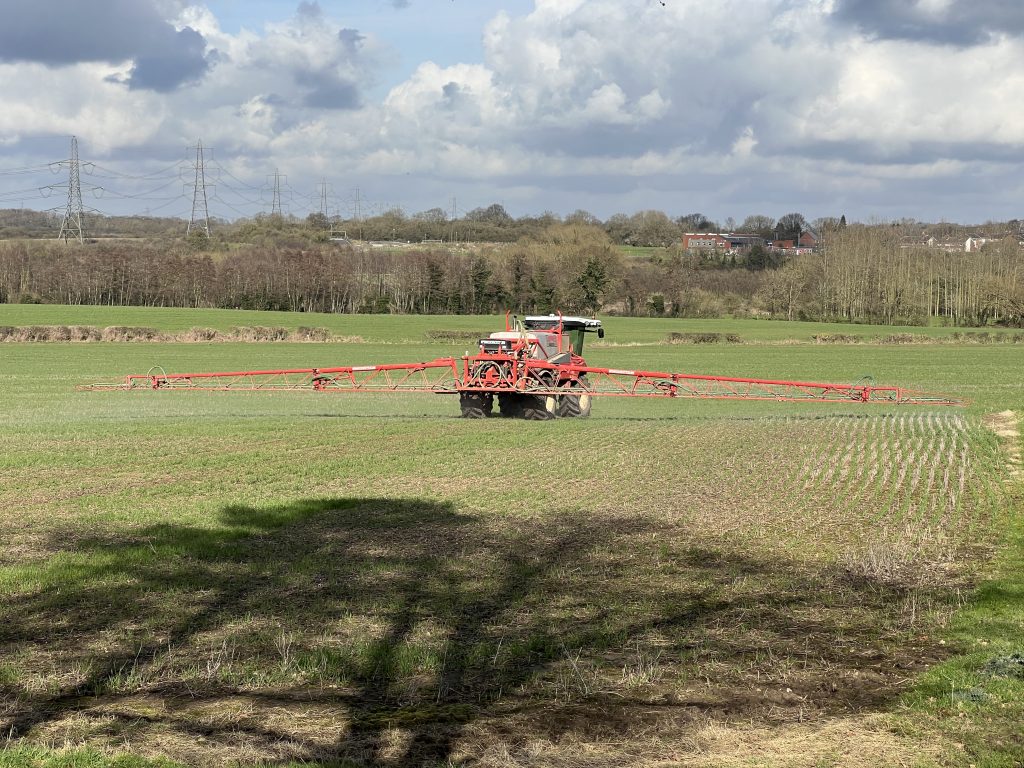
I was contentedly pottering in the garden (well actually a little more than pottering – labour-intensive pond clearing), enjoying the sound of a robin and tits of various varieties, when the peace was briefly interrupted by the more industrial than rural noise of agricultural machinery. A sprayer appeared beyond the garden fence, spreading a low mist of chemical behind it. This was almost certainly a selective contact herbicide, sprayed on the cereal crop to kill young weeds, recently emerged as the weather has warmed. The herbicide targets the broad leaved weeds, the cereal, effectively a grass, is unaffected. Crops are sprayed in low wind conditions to prevent the chemical from blowing where it shouldn’t. From our point of view this includes our back garden and the field edges, 5 metre wide grassy strips where wild flowers are allowed to grow (a condition of farm subsidies I think, but maybe just responsible farming?), and where, on two sides, public footpaths follow the hedgerows. From the farmers point of view, the applied dose is important; if even a light breeze blows the spray away from the arms of the sprayer, some weeds get a double dose, while others get none, ineffective and costly.
The land behind us is owned by a large building company, a “land-bank” investment rather than potential building land, and managed by a farm manager, who seems to farm responsibly. The herbicides will meet all regulations. Nevertheless I wouldn’t like the dogs to walk over recently sprayed grass. There is the potential for some windblown spray to travel onto grass bordering the cultivated soil, and in any case the dogs don’t know the difference between the field-edge grassland and cultivated crops, at this time of the year the same height as grass. The dogs may occasionally wander onto the crop briefly before being recalled. After consultation with our dog walking friends, we decide to avoid the footpath along the field edge, and instead follow the path down to the village, crossing the road to ” Croft Glebe”, enclosed and environmentally managed by the Woodland Trust, and where the dogs can all play and run free.
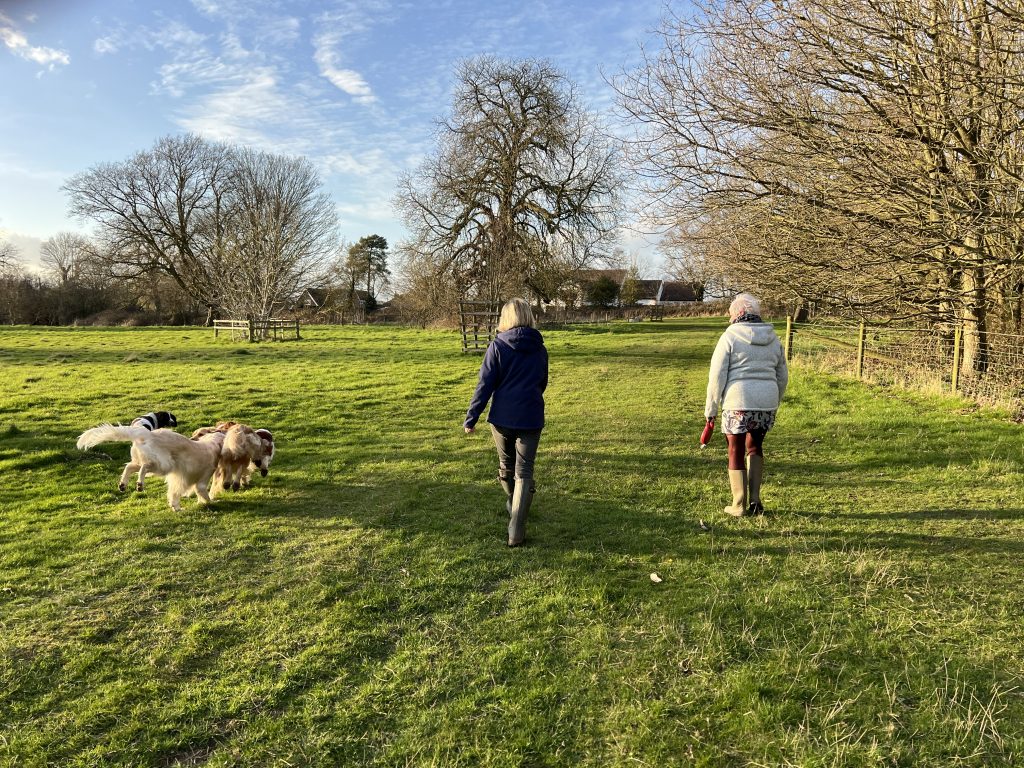
3rd March – Sunshine At Last
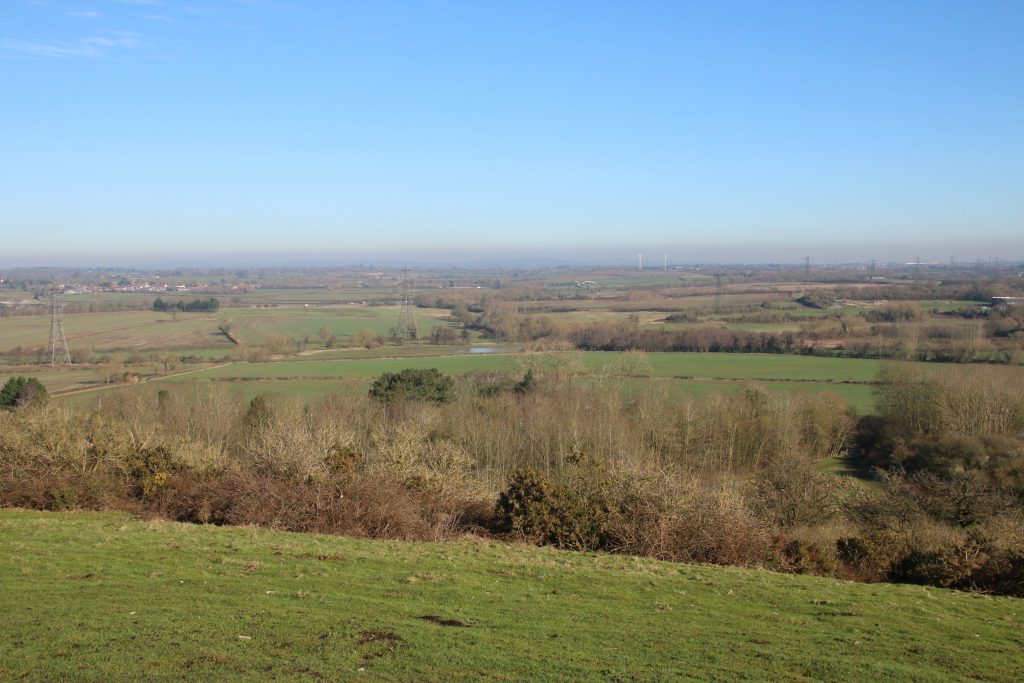
At last, an improvement in the weather this morning – sunshine, light frost and a hint of mist, and, despite the frost, more than just a feeling of Spring.
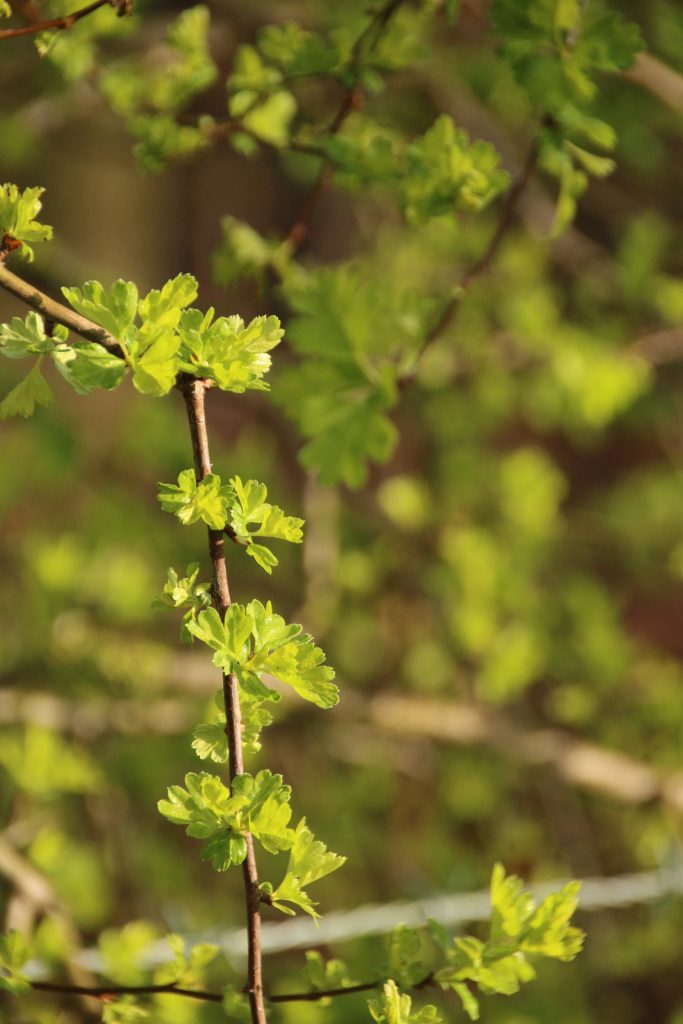
Hawthorn and elder are now in leaf, welcome splashes of bright green among the bare branches of surrounding trees and shrubs. As we climbed Croft Hill a Great Tit called constantly and loudly from an overhead branch, a bird that it present all year round, but seeming to sing with more enthusiasm on this early spring day, maybe trying to attract a mate. After weeks of grey and rain, it was glorious to be out and about in the sunshine, dog walking once again a pleasure rather than a chore.
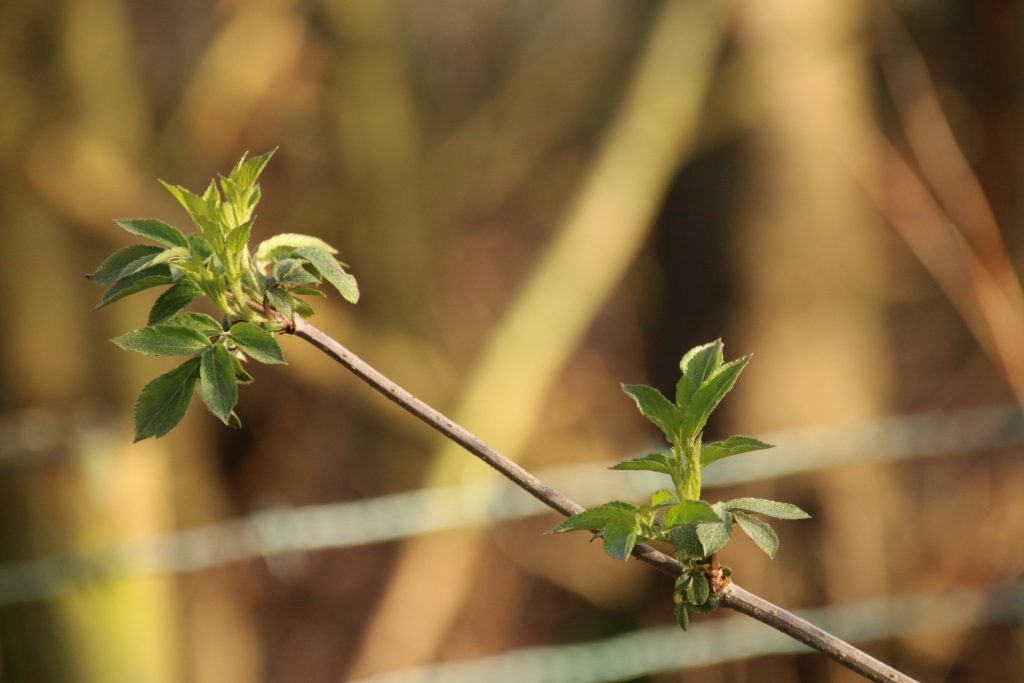
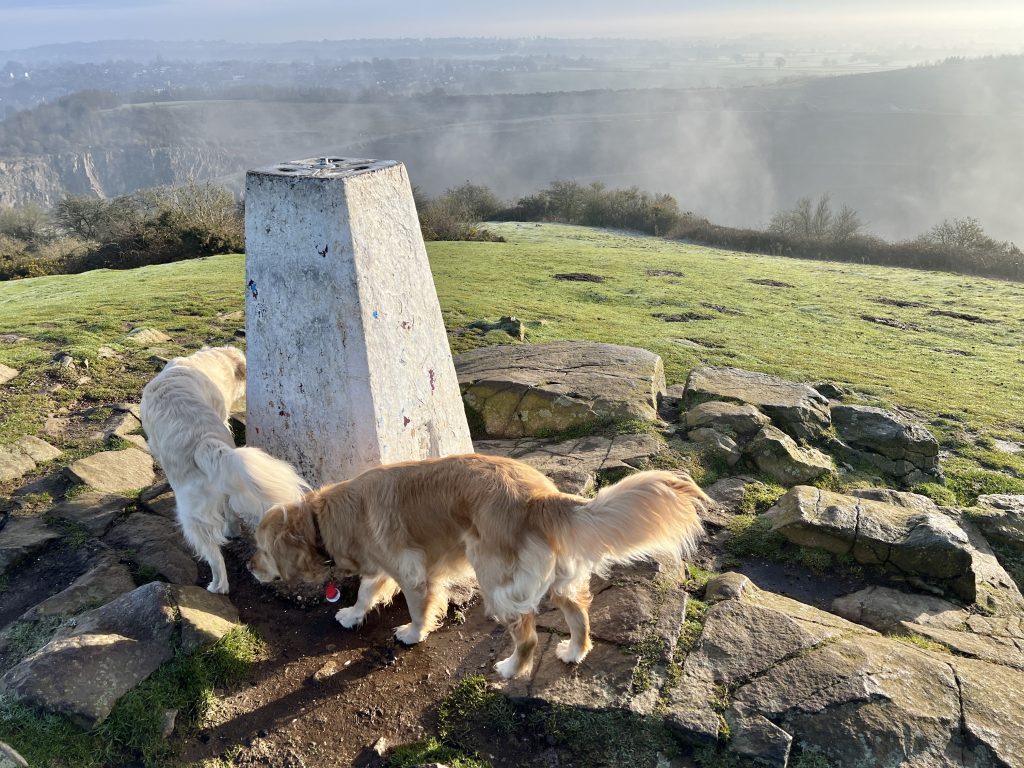
From the top of the Hill mist could be seen rising from the cool depths of the quarry and dissipating as it emerged into relatively warm sunshine. Blackthorn bushes at the quarry edge are almost in full bloom. Hawthorn leaves emerge before blossom, whereas Blackthorn blossoms before coming into leaf.
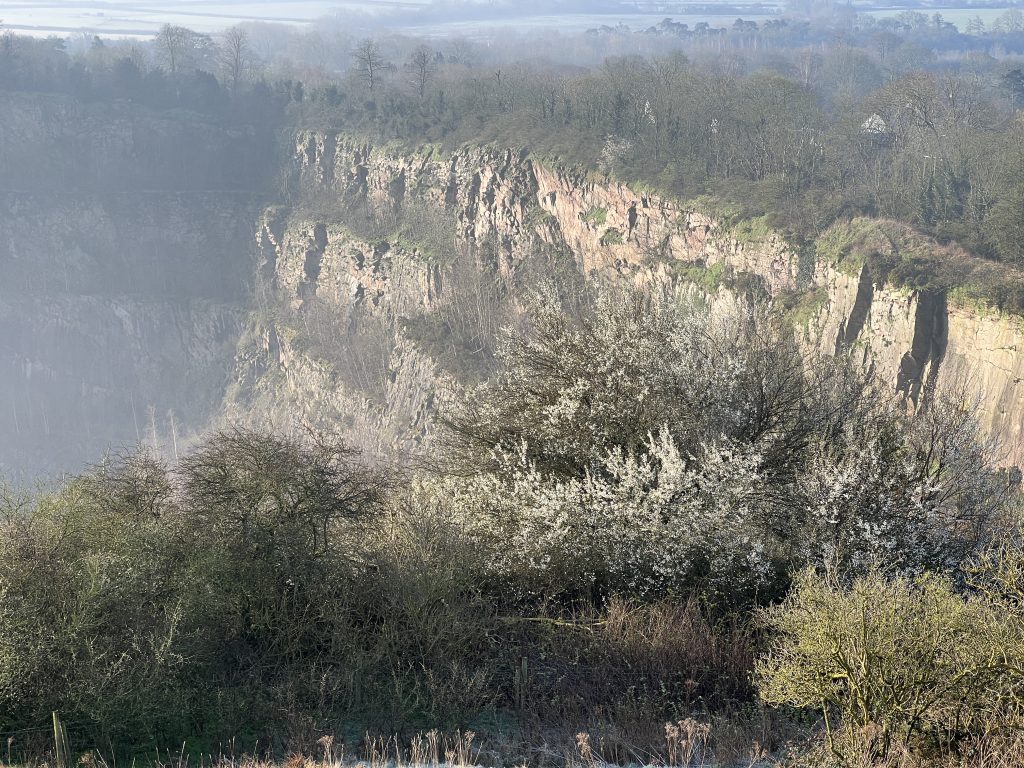
1st March – Mud, Mud, Glorious Mud
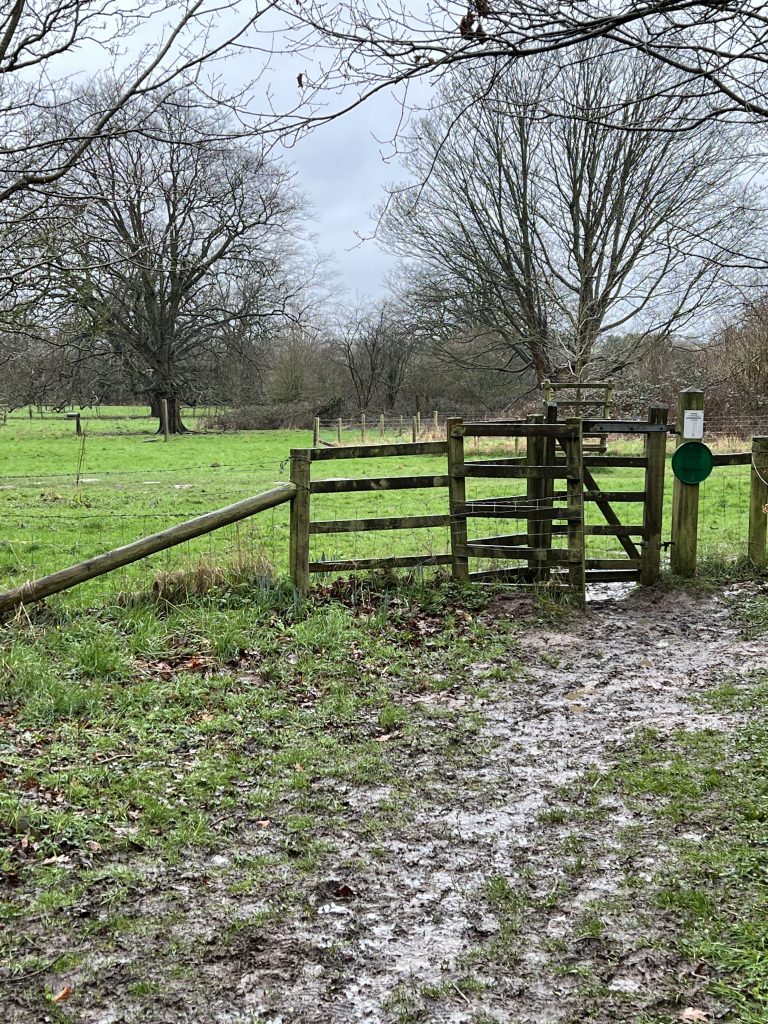
First day of meteorological Spring, and the rain keeps falling. Those of us with dogs do not need the news headlines to tell us that it has been the wettest February for 150 years, and the warmest on records. I can dress for the rain, but the mud has been relentless, with few frosts over the winter to allow us to walk over the mud and return home with clean dogs. We have been avoiding the worst routes, but we live on a country lane, with pavement walking not an option, and now all routes involve wellies and 10 minutes of cleaning the dogs when we get home. This morning was particularly miserable, with wind driving cold rain and occasional sleet into our faces as we walked down the path to the Glebe. The path itself was running with water, but it was the entrances on to the Glebe that finished the task of turning “Golden” Retrievers to black, as they splashed through a quagmire.
Its not all bad news though. Along the verge on the other side of the Lane the snowdrops have been a particularly spectacular display this year and have now been followed by an early display of daffodils. In the countryside blackthorn hedgerows are already starting to blossom, the flowers that by late Summer will be producing sloes, the dark bitter berries that we will pick to flavour gin, which will be the matured Sloe Gin ready to accompany Christmas dinner. The experts and Kew tell us that some fruit trees need a few frosts to encourage blossom and fruit, and that the mild weather may mean fewer apples this year. Hopefully it wont have the same effect on blackthorn, and there will be enough sloes to be shared between those making slow gin, and the birds fattening up for winter.
